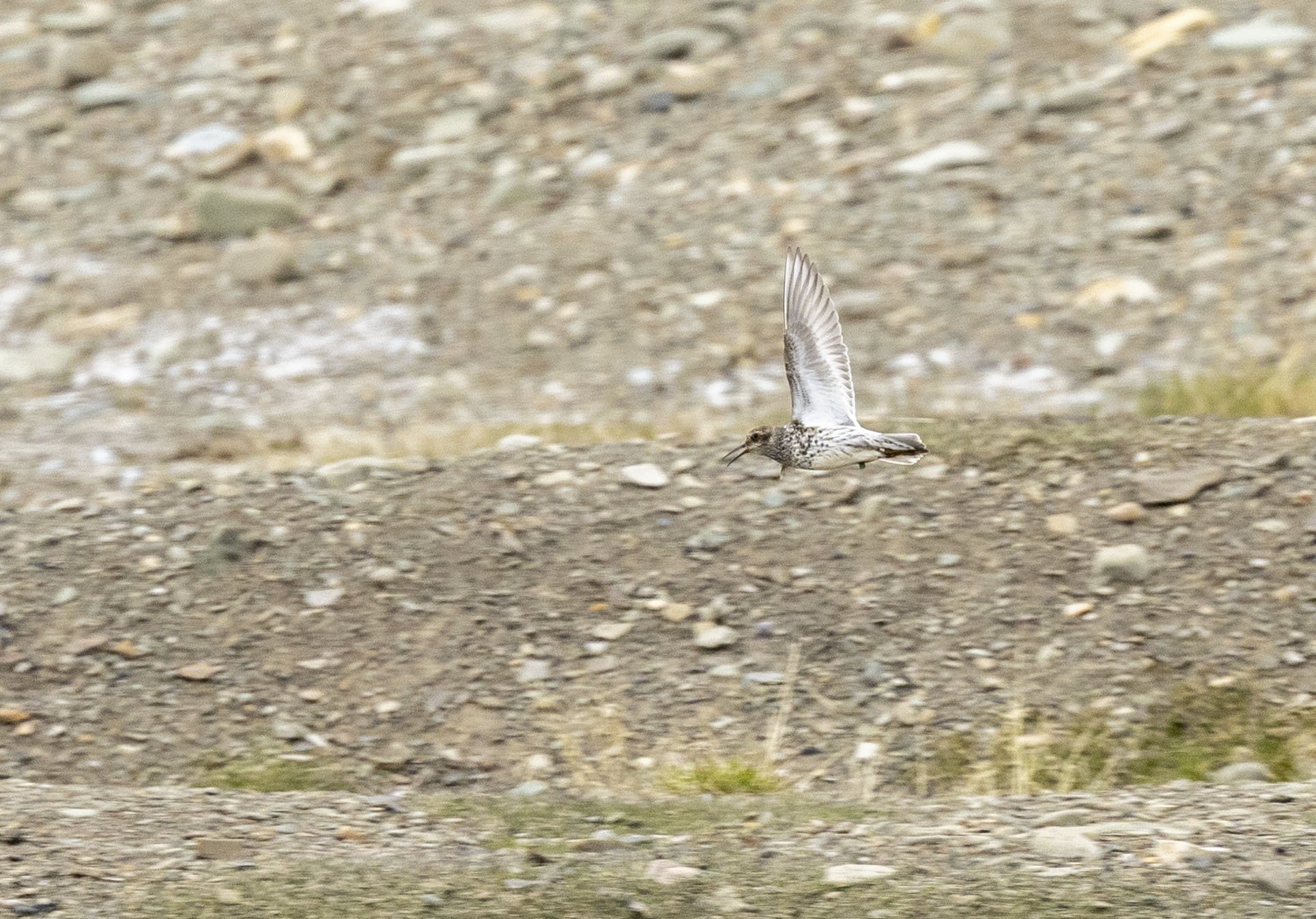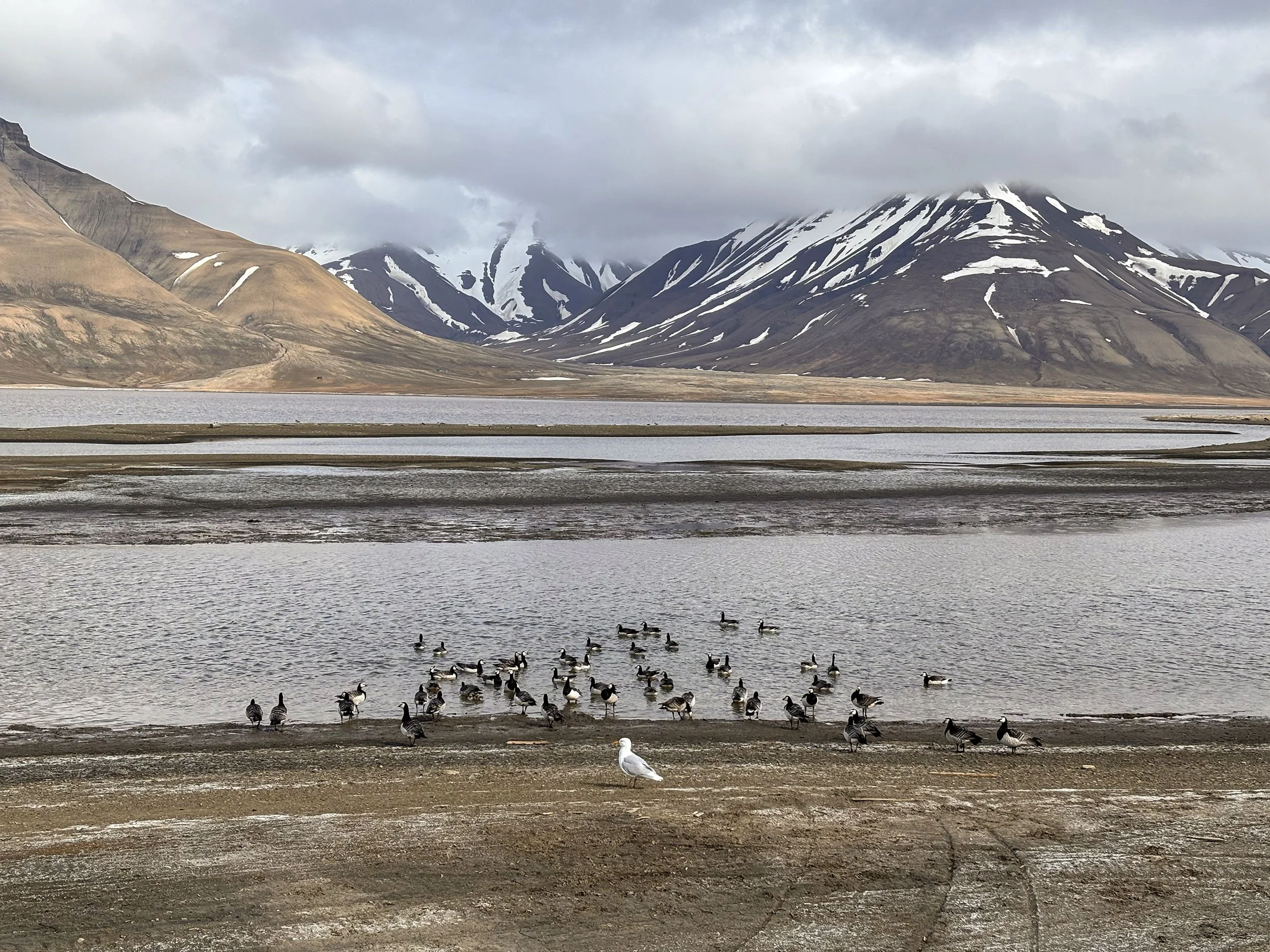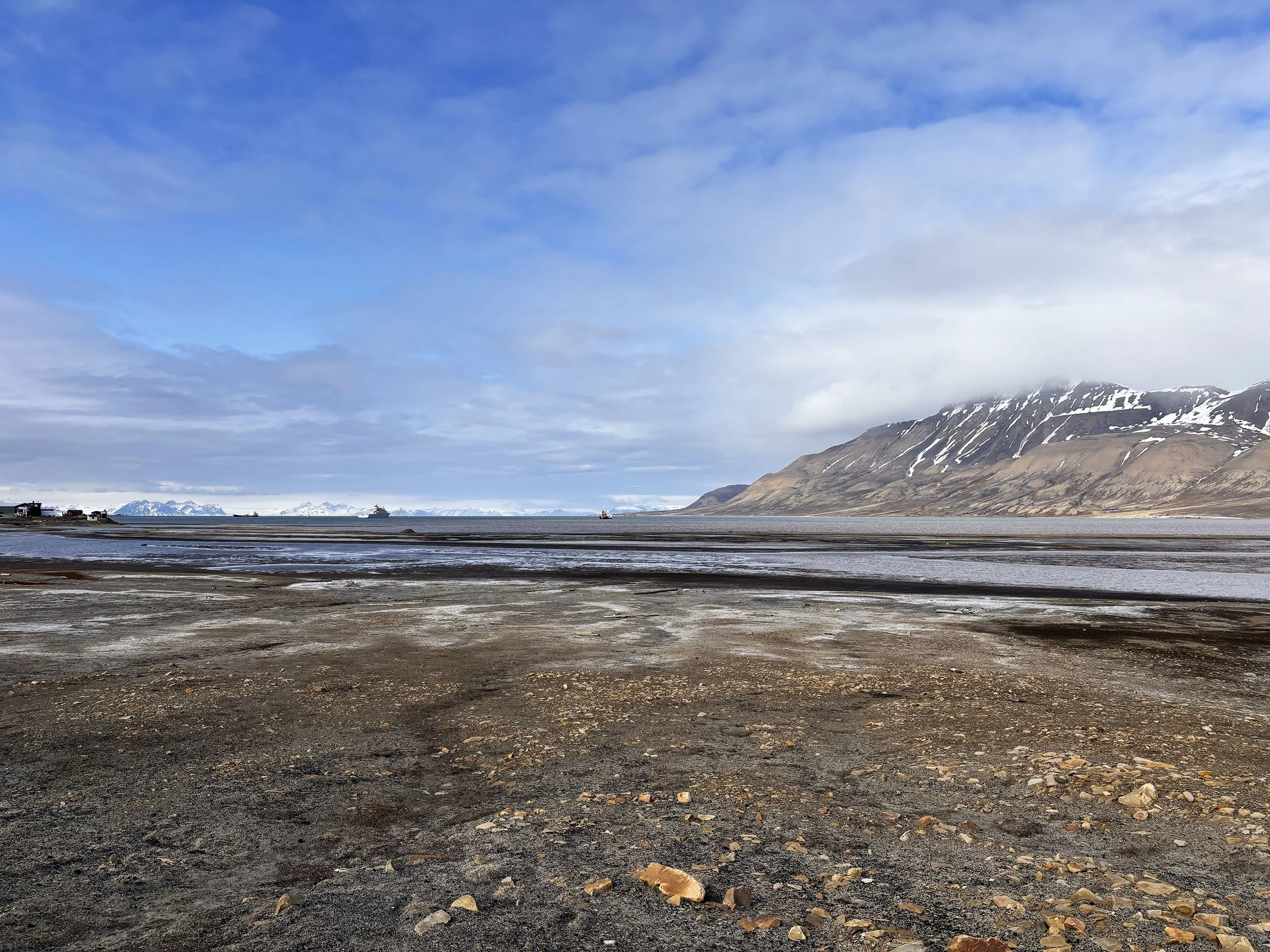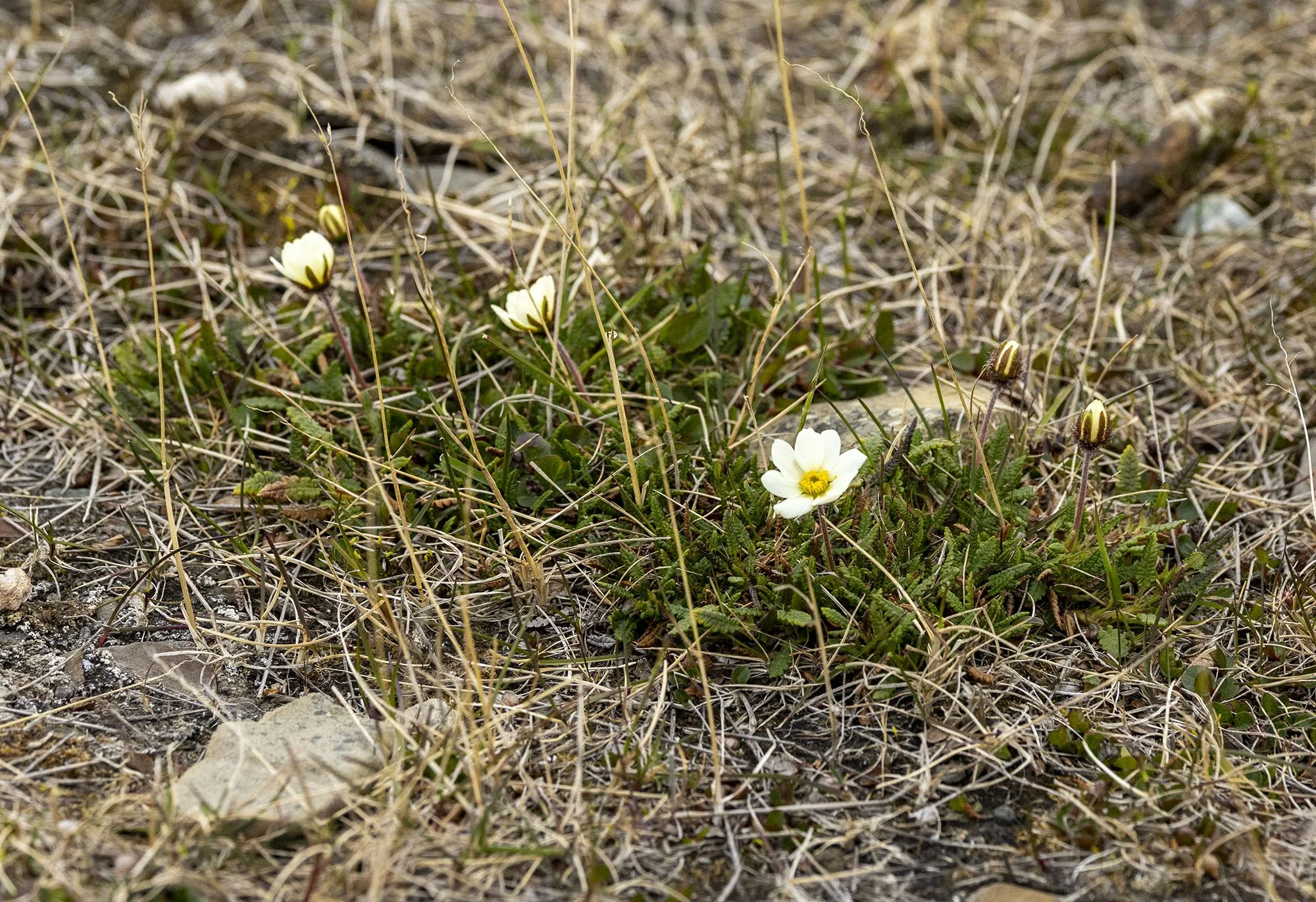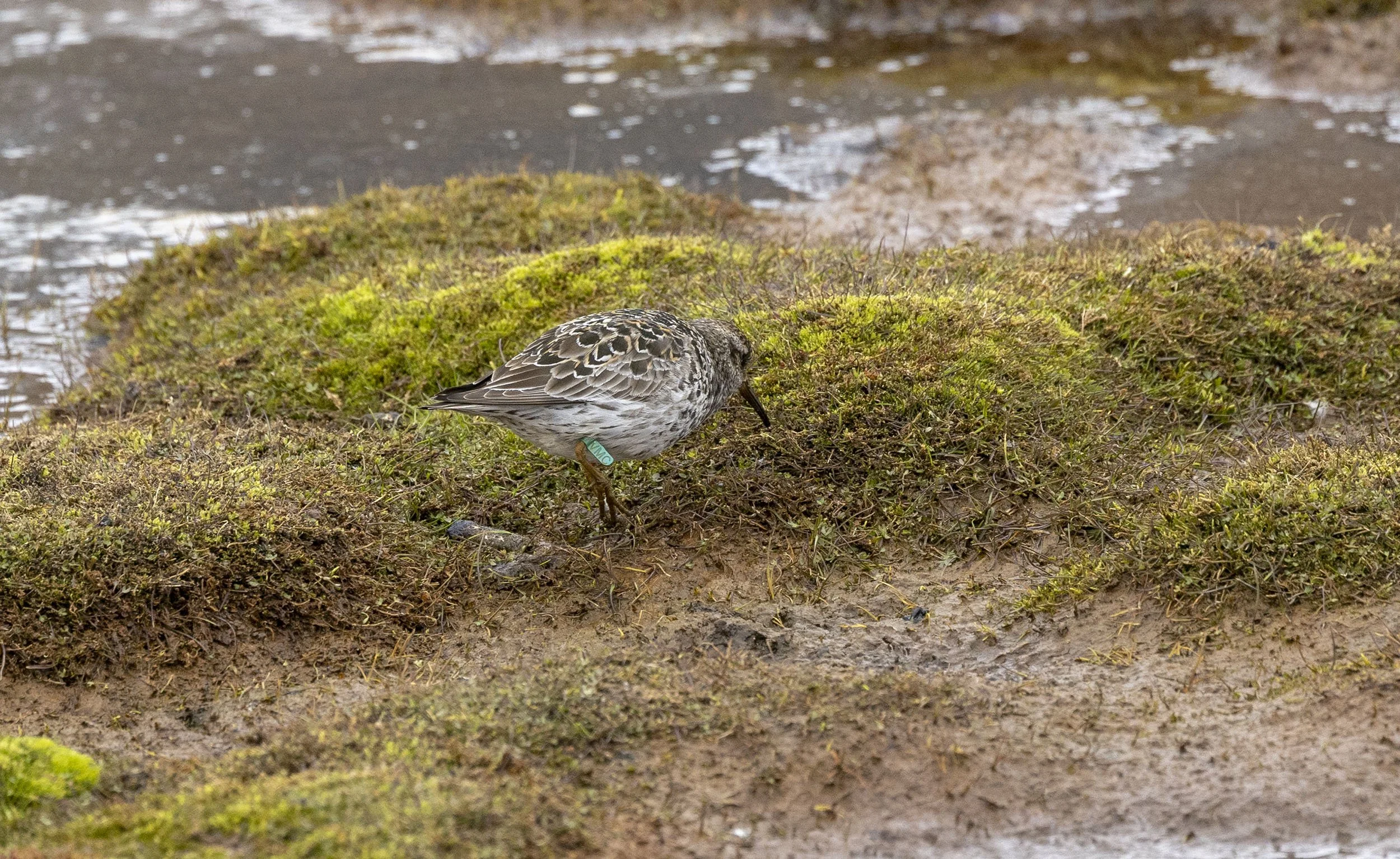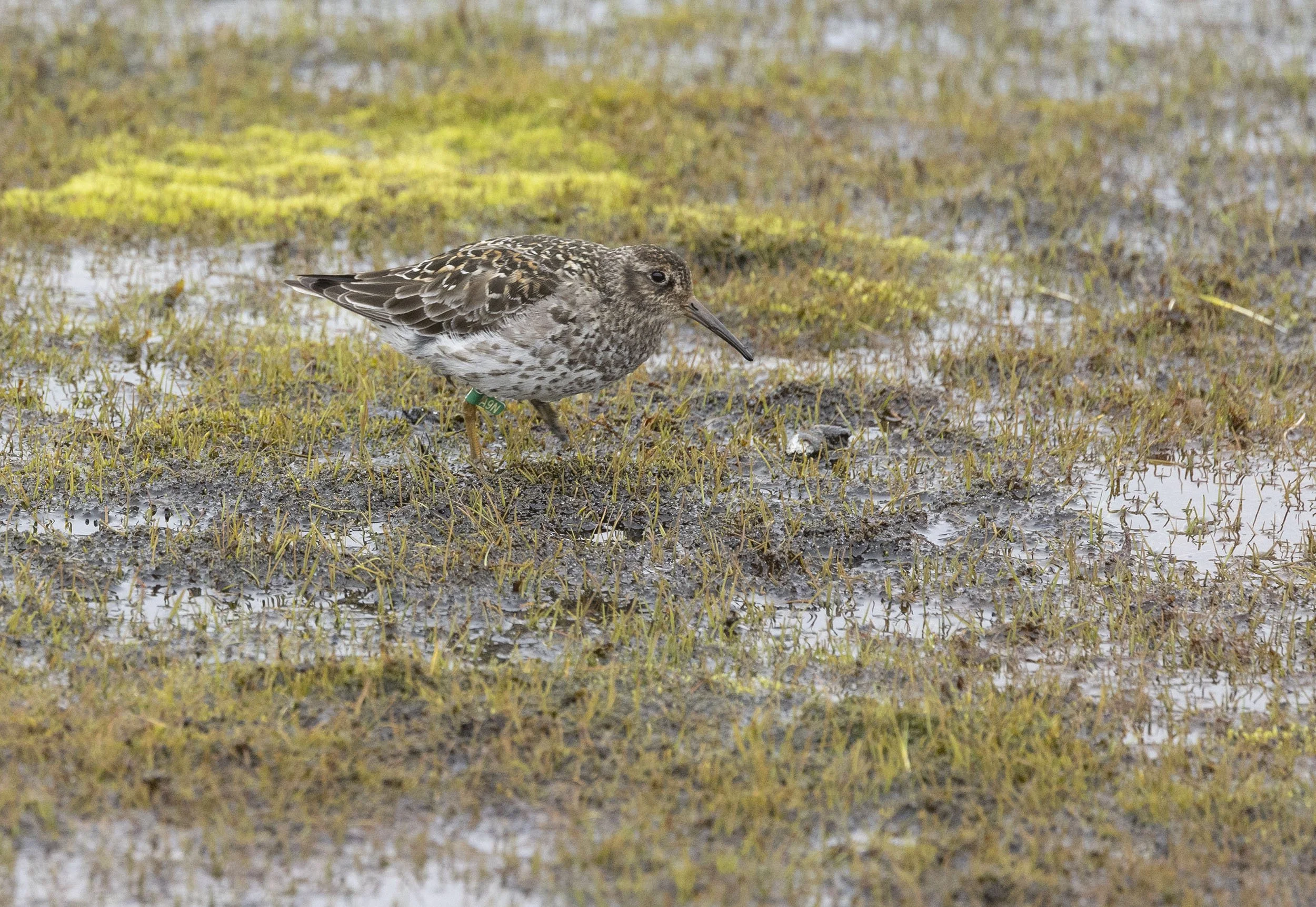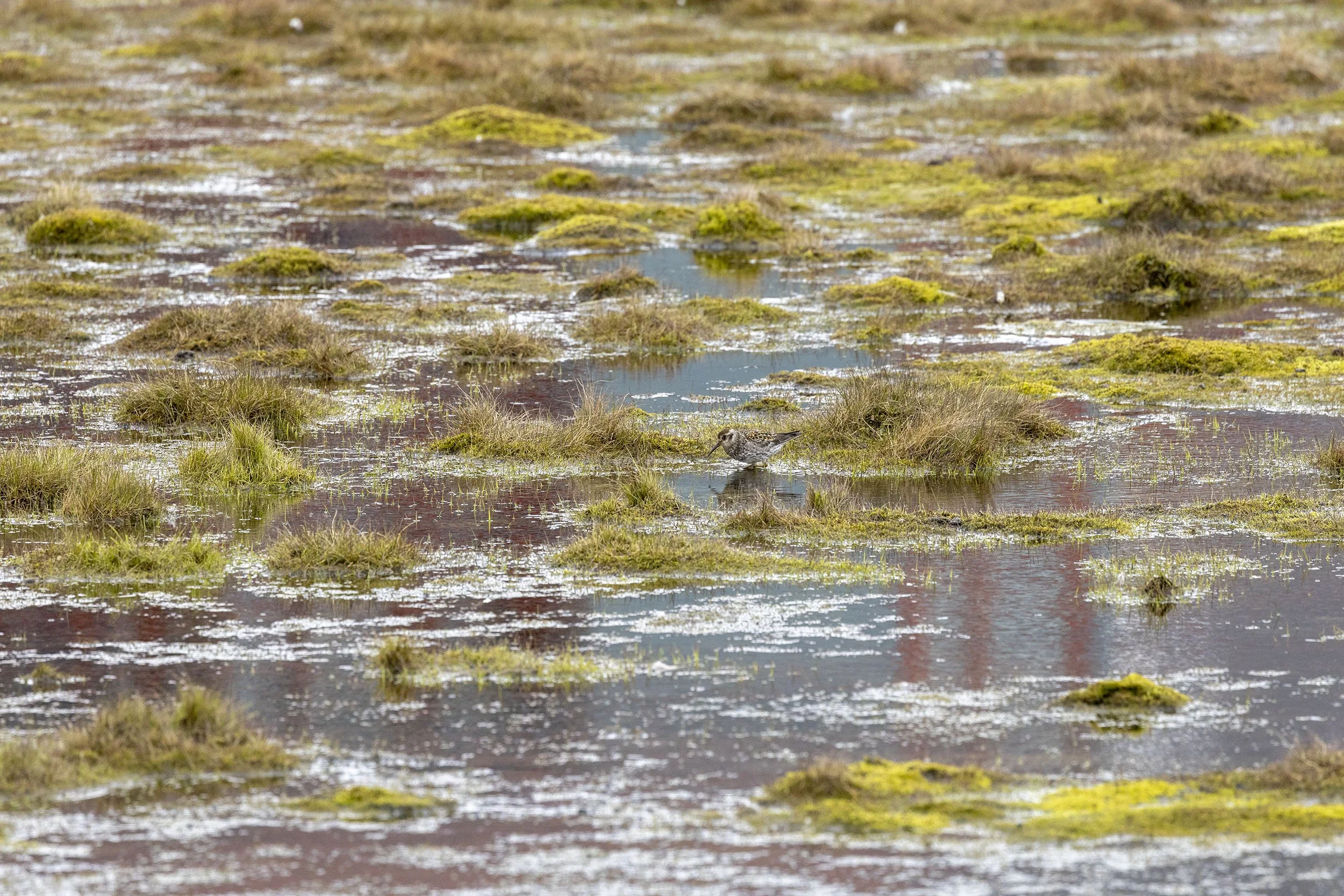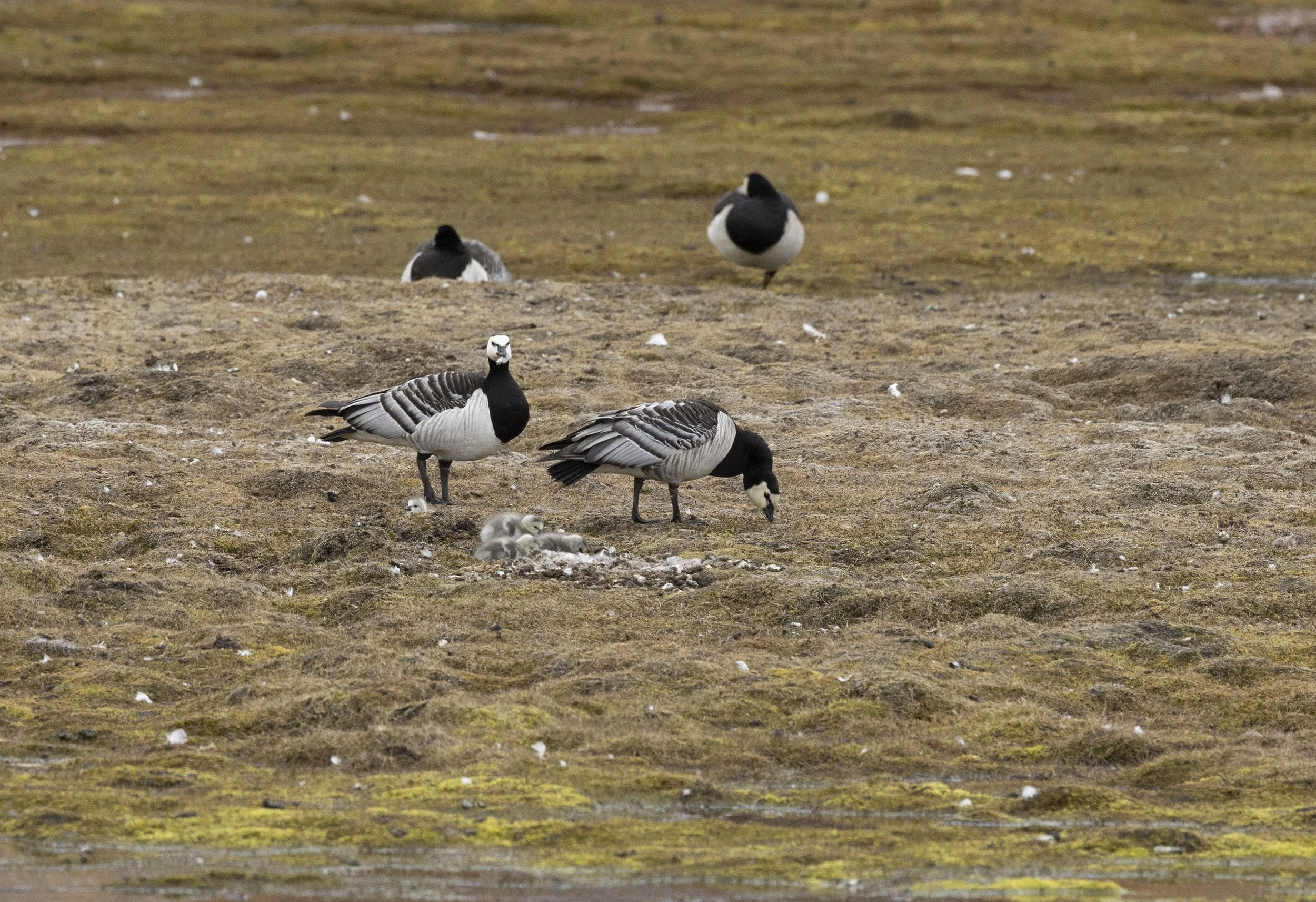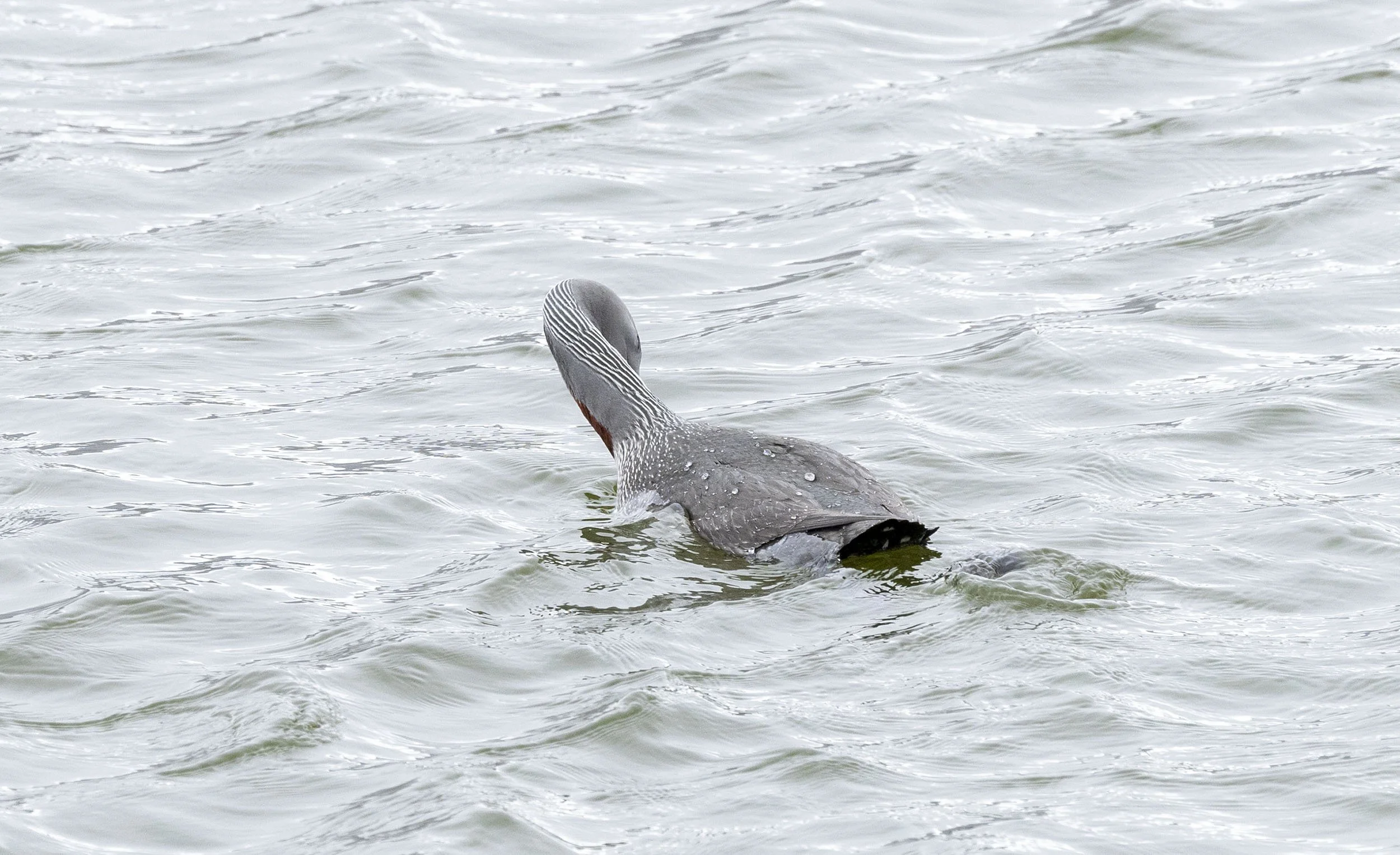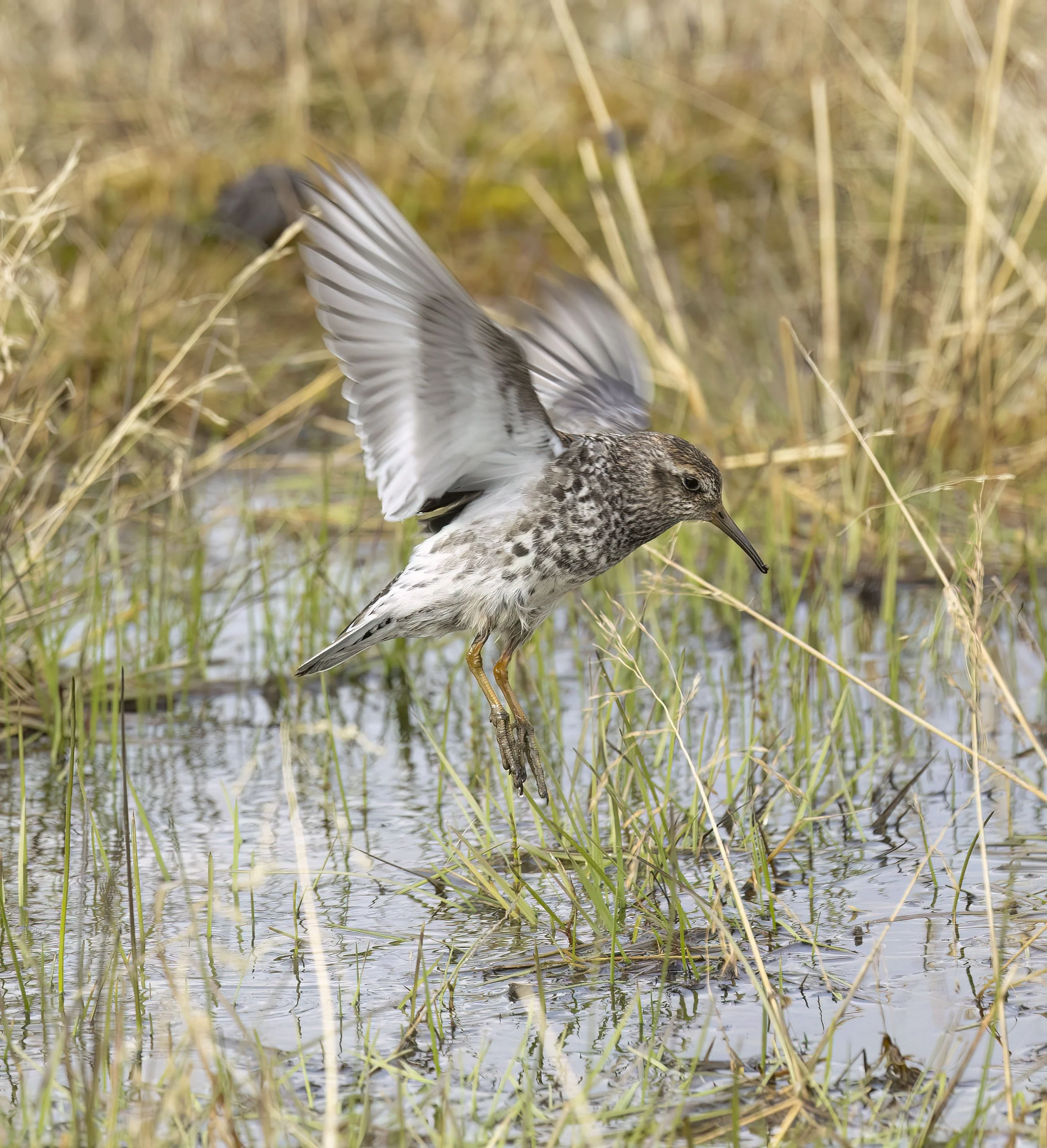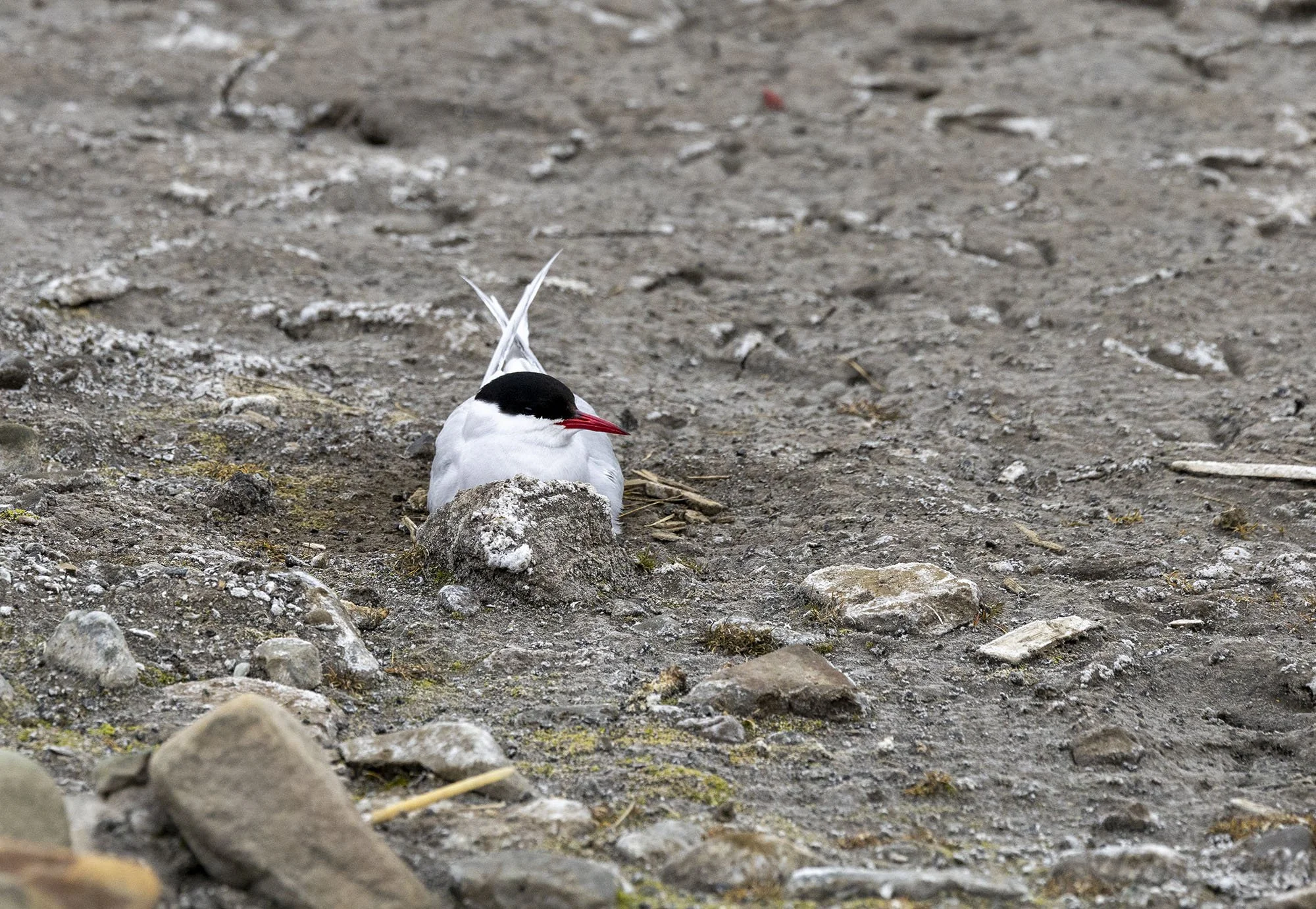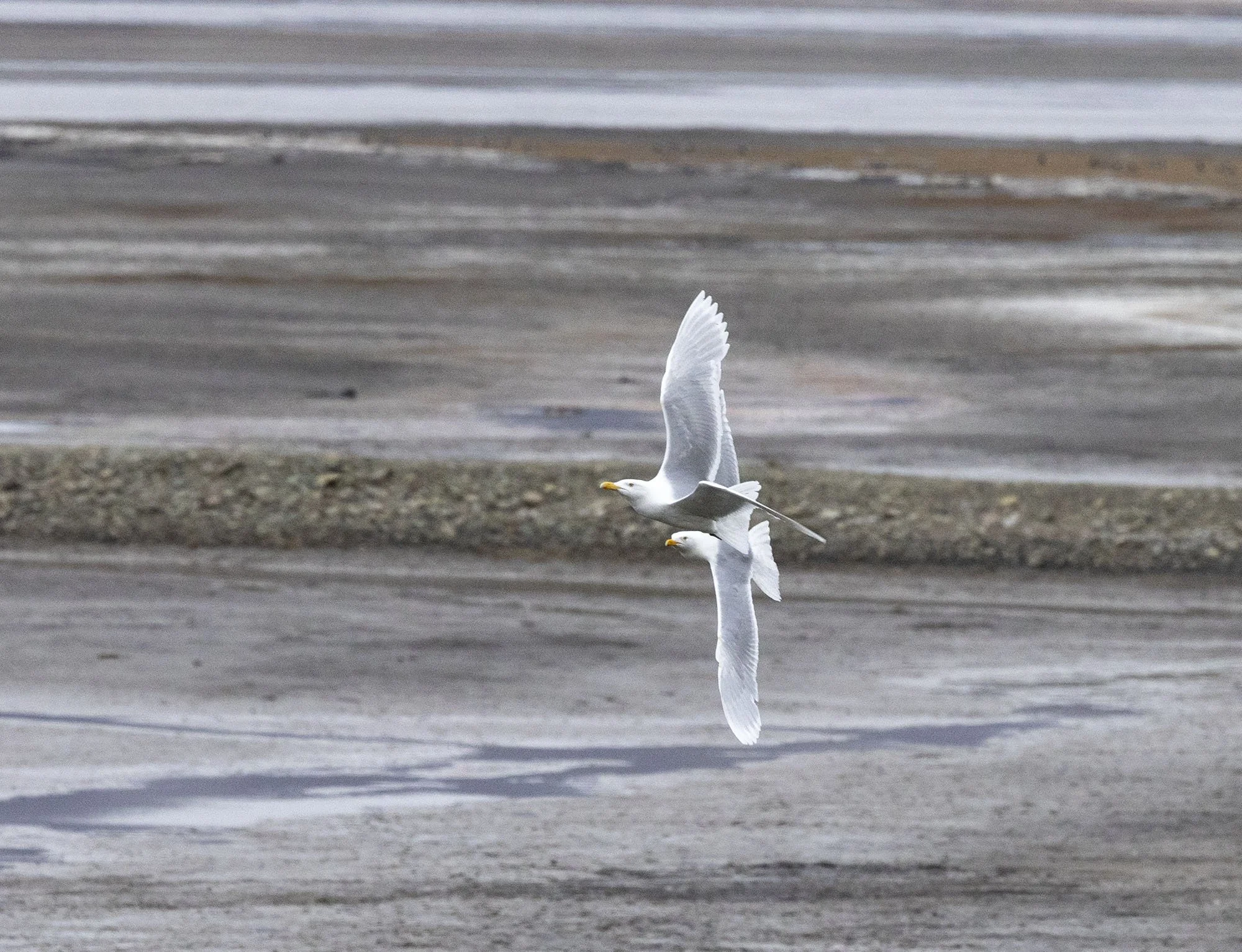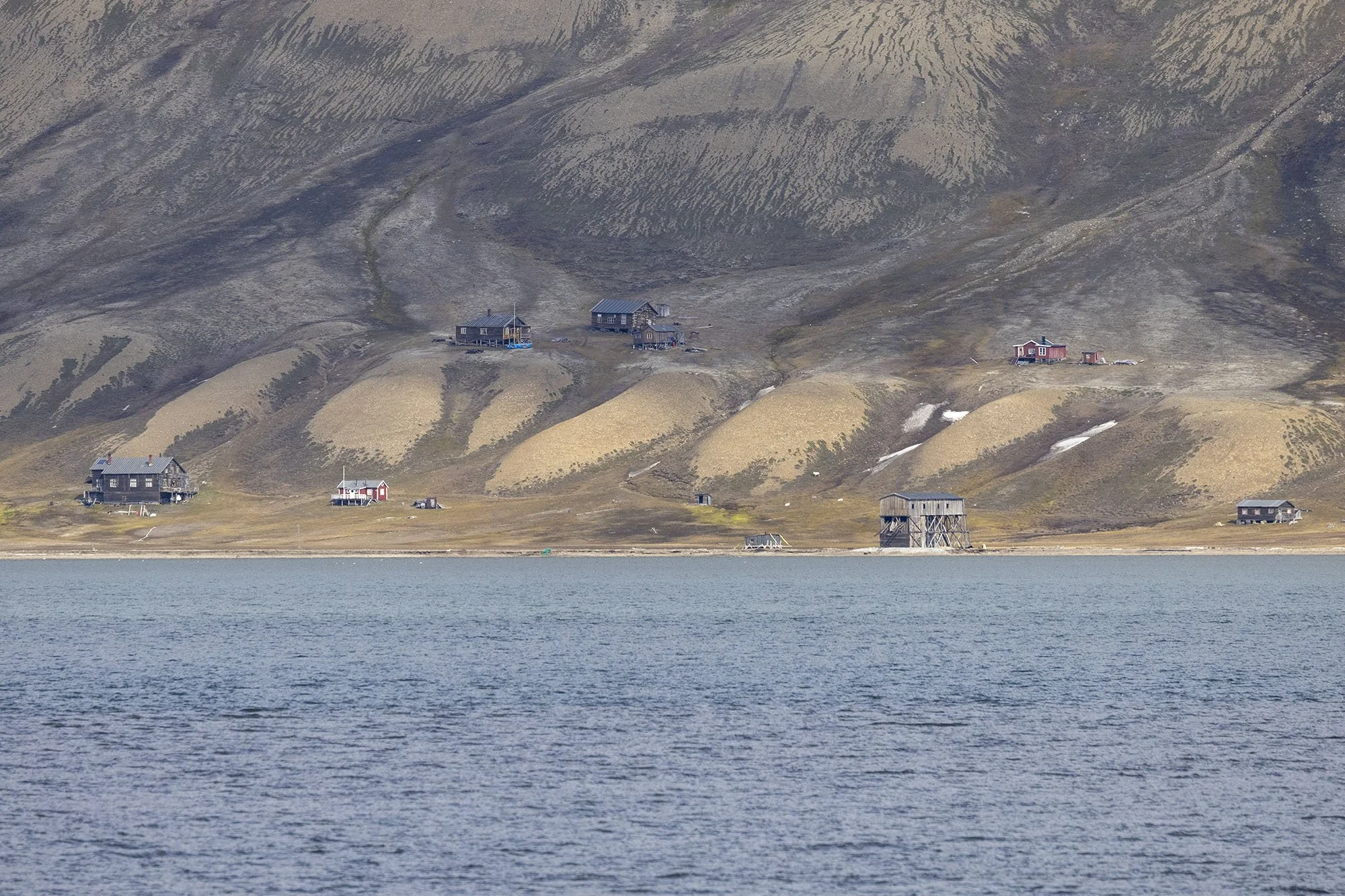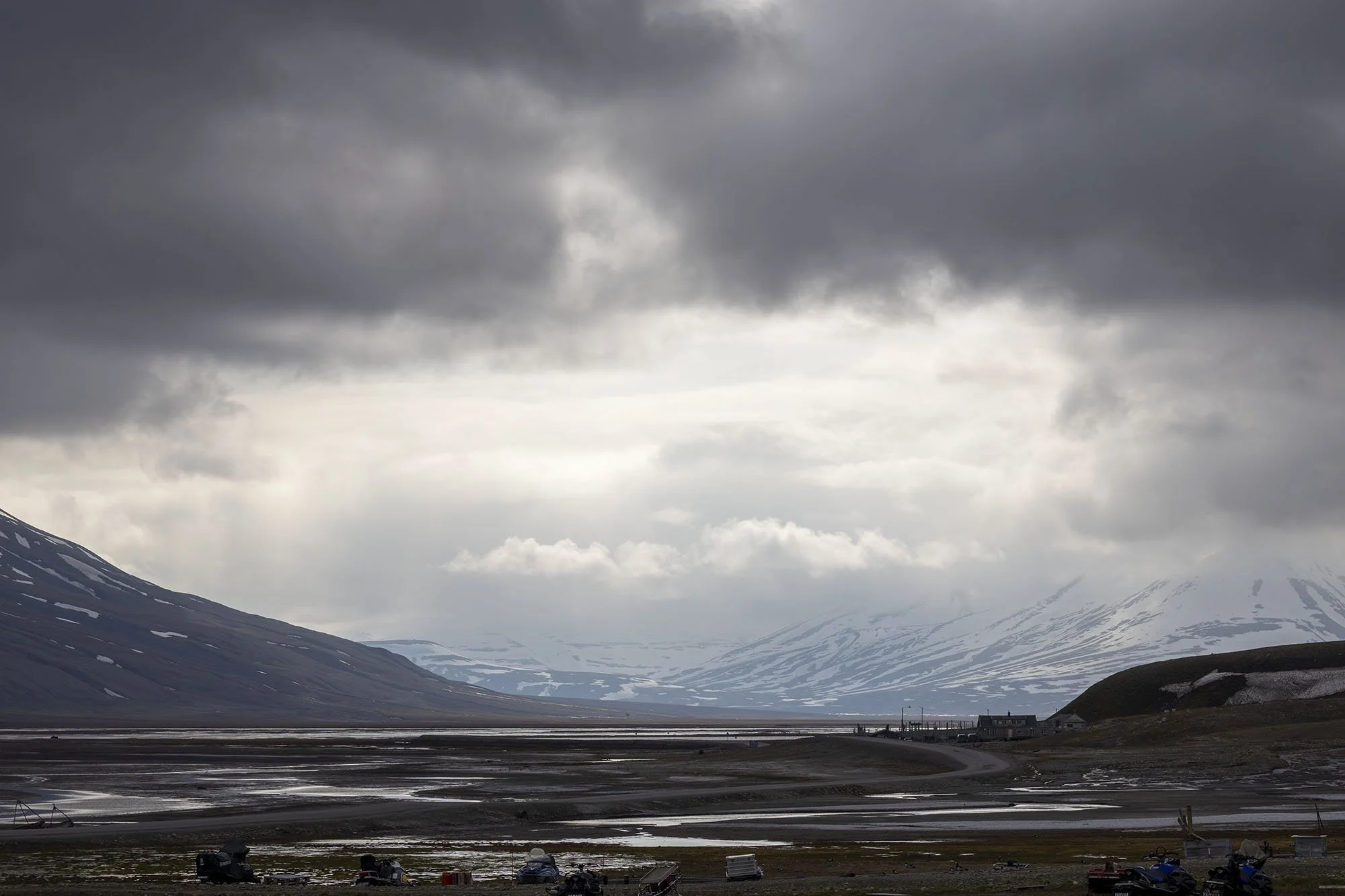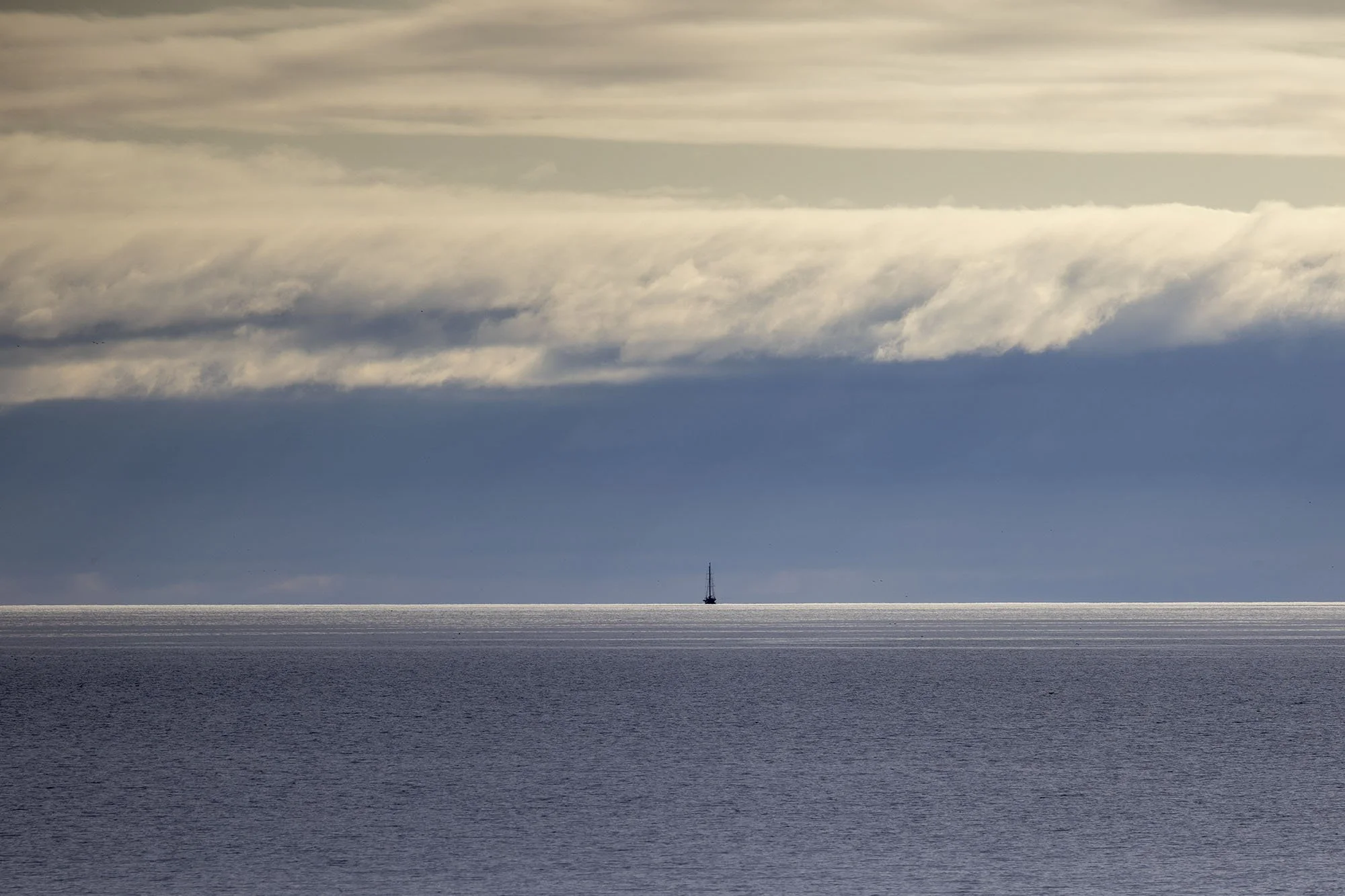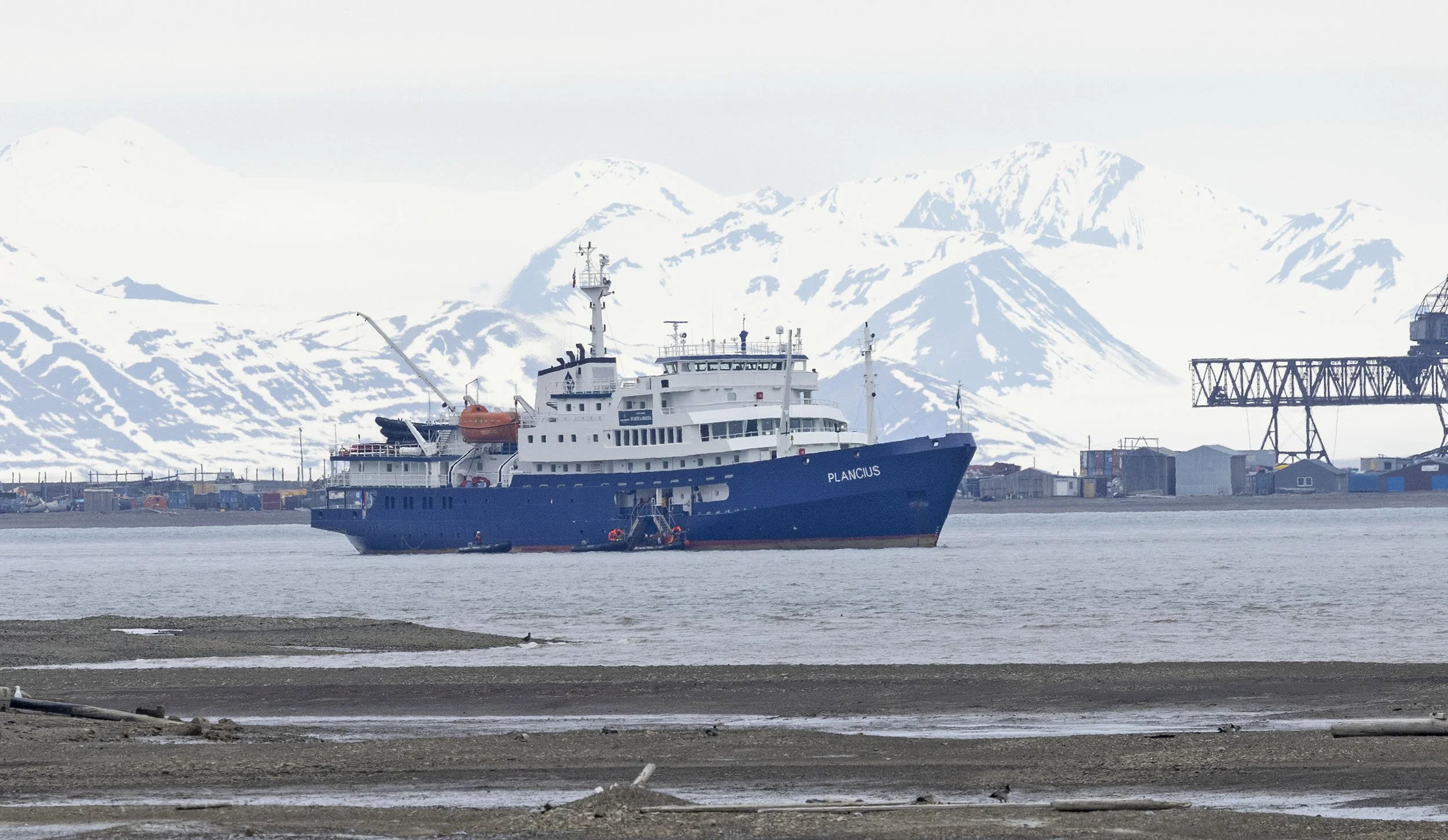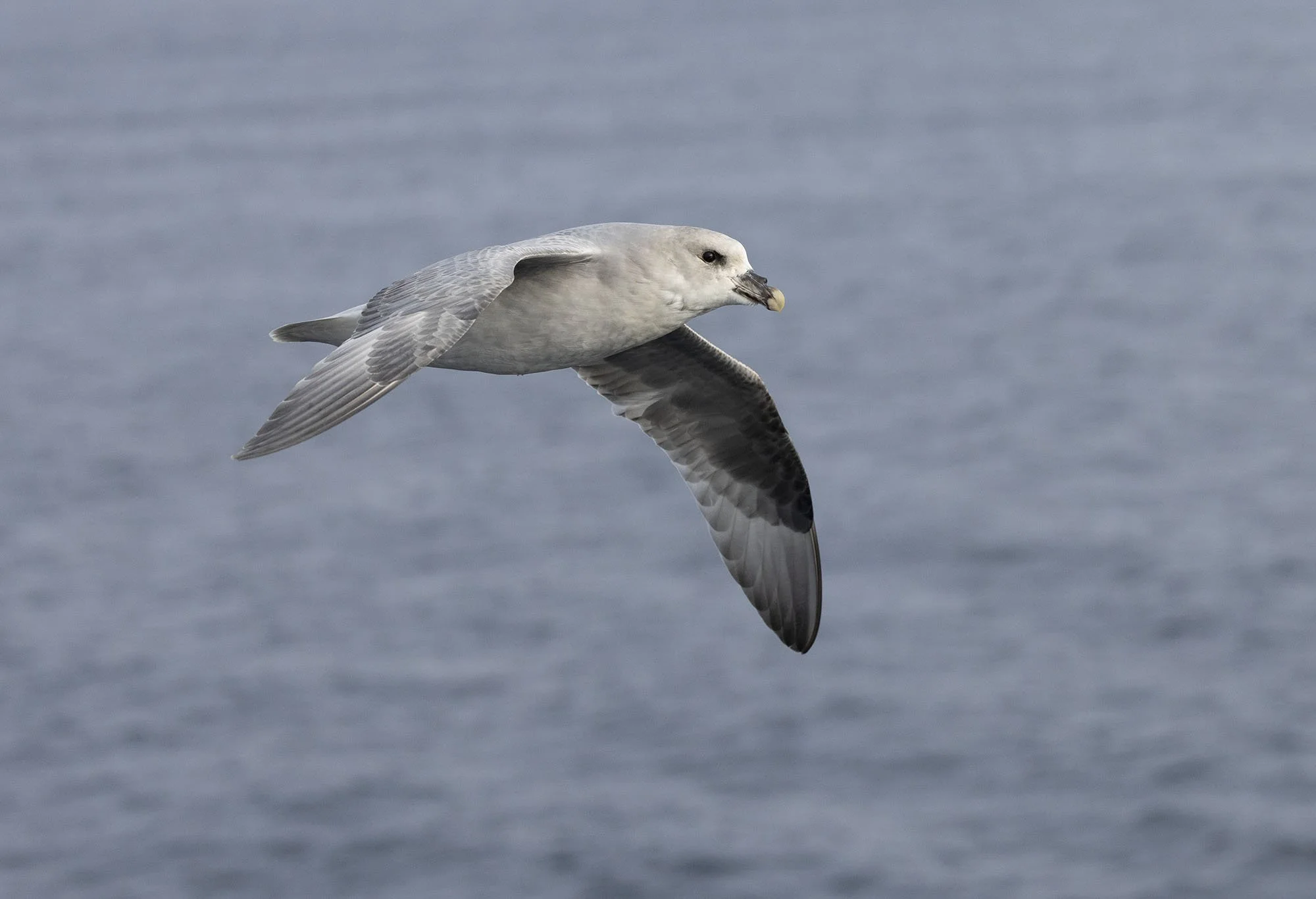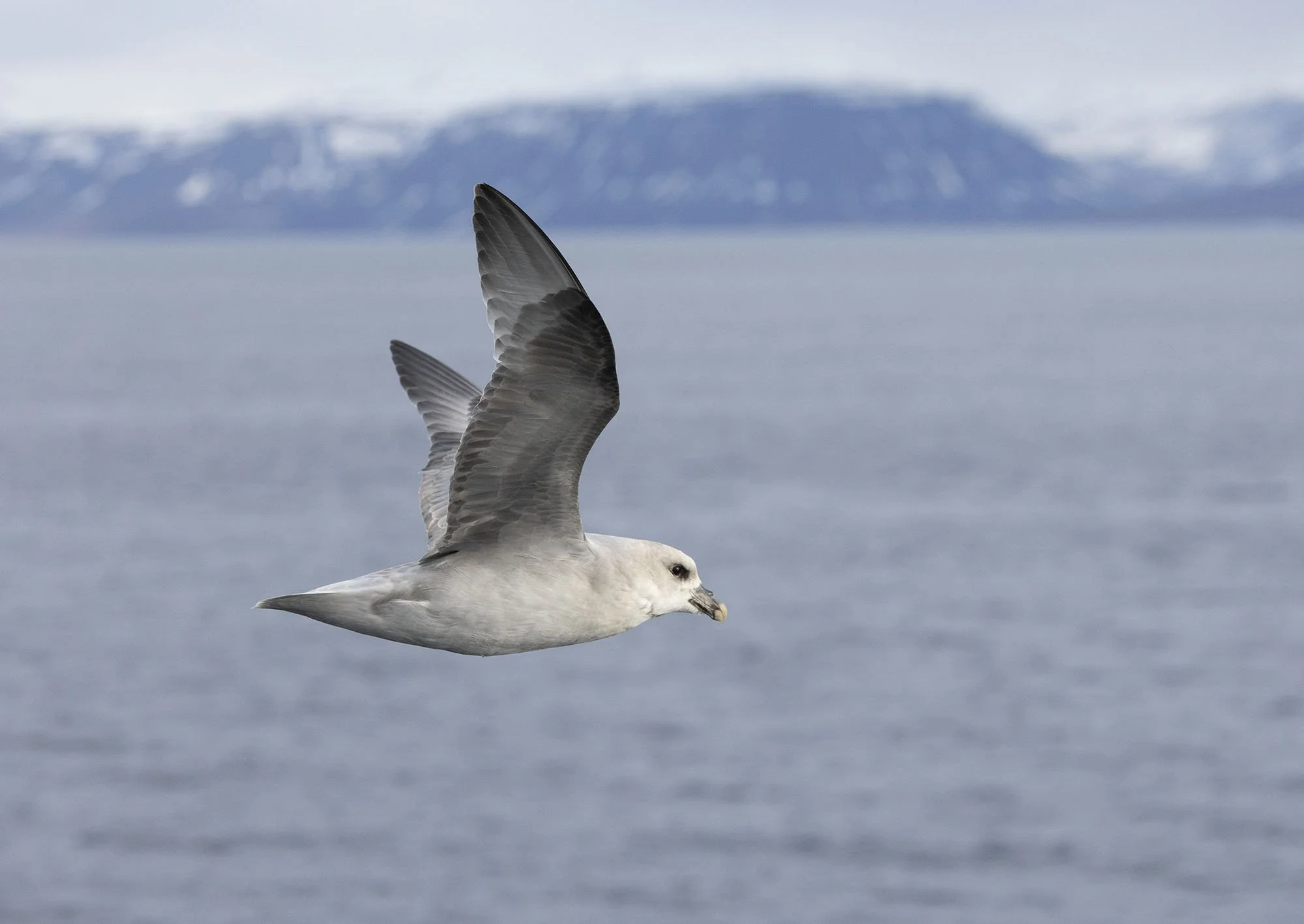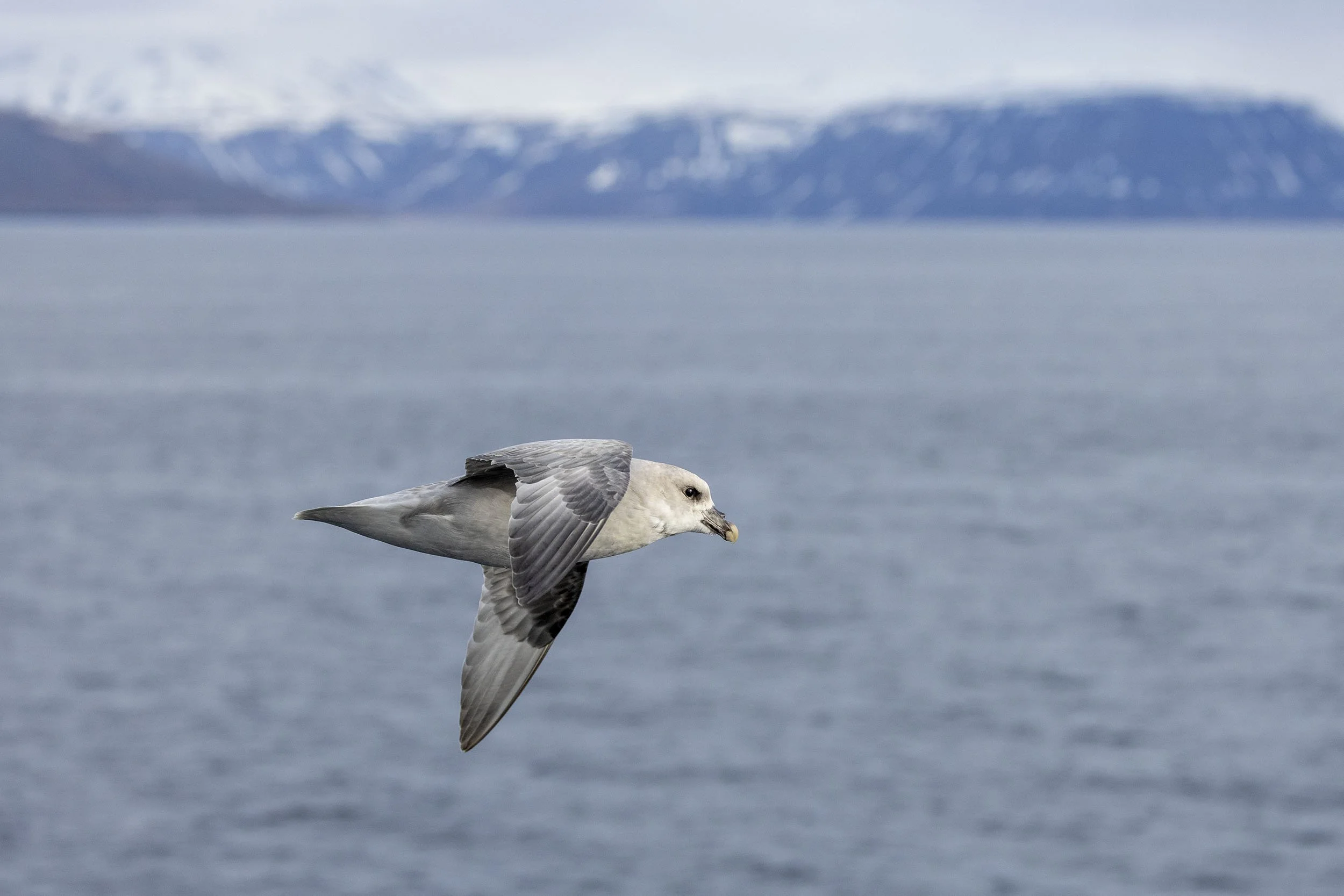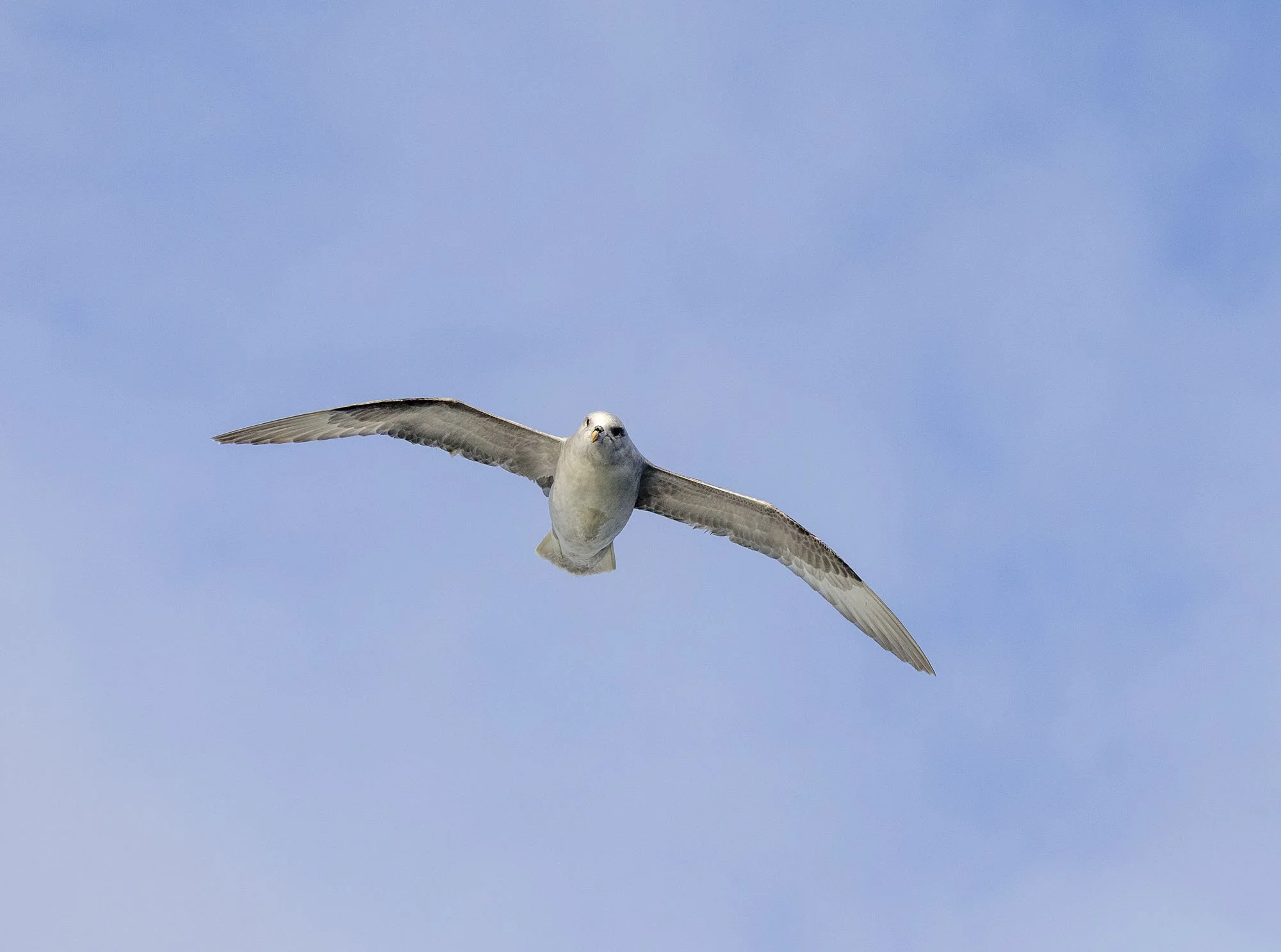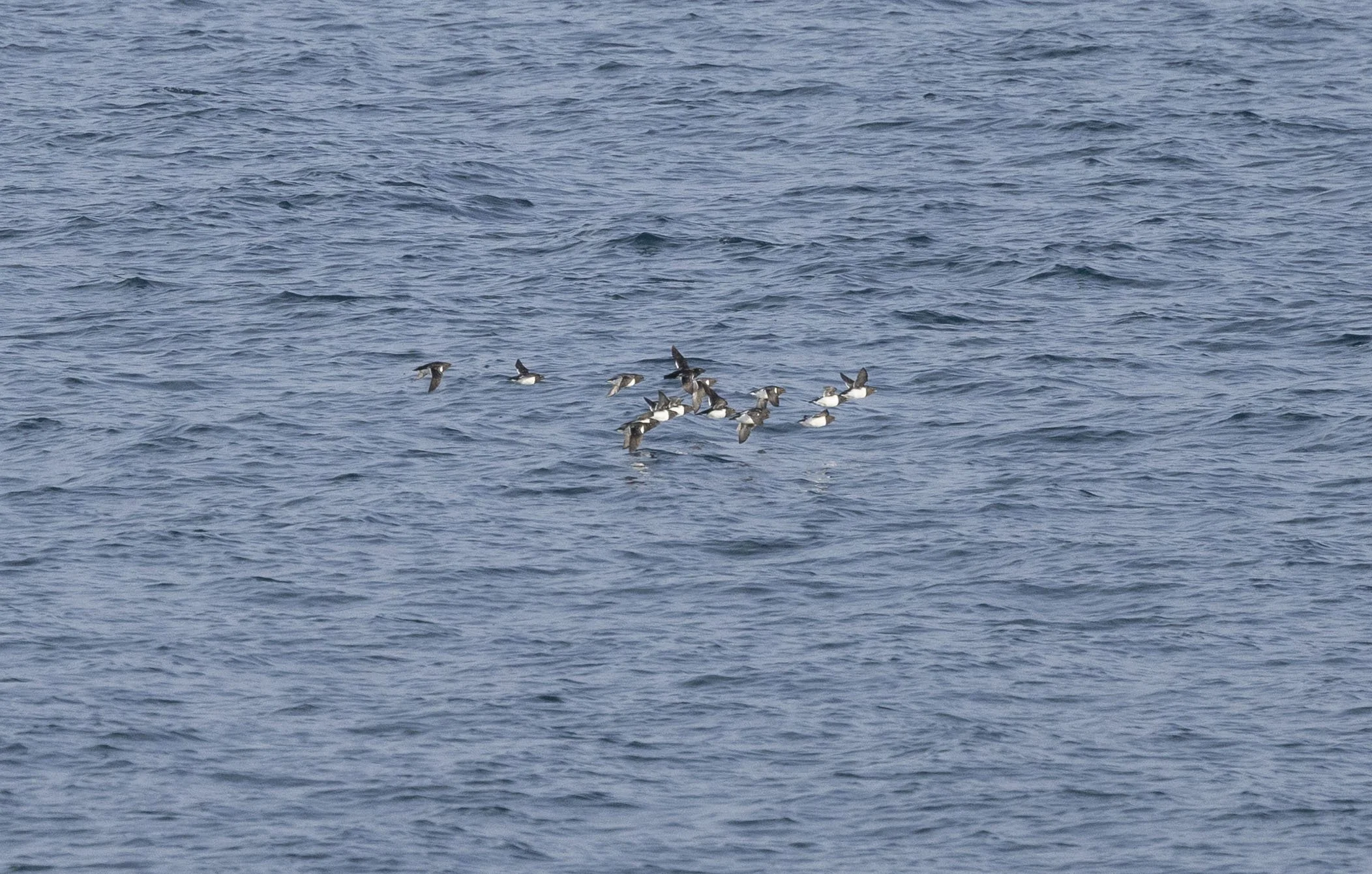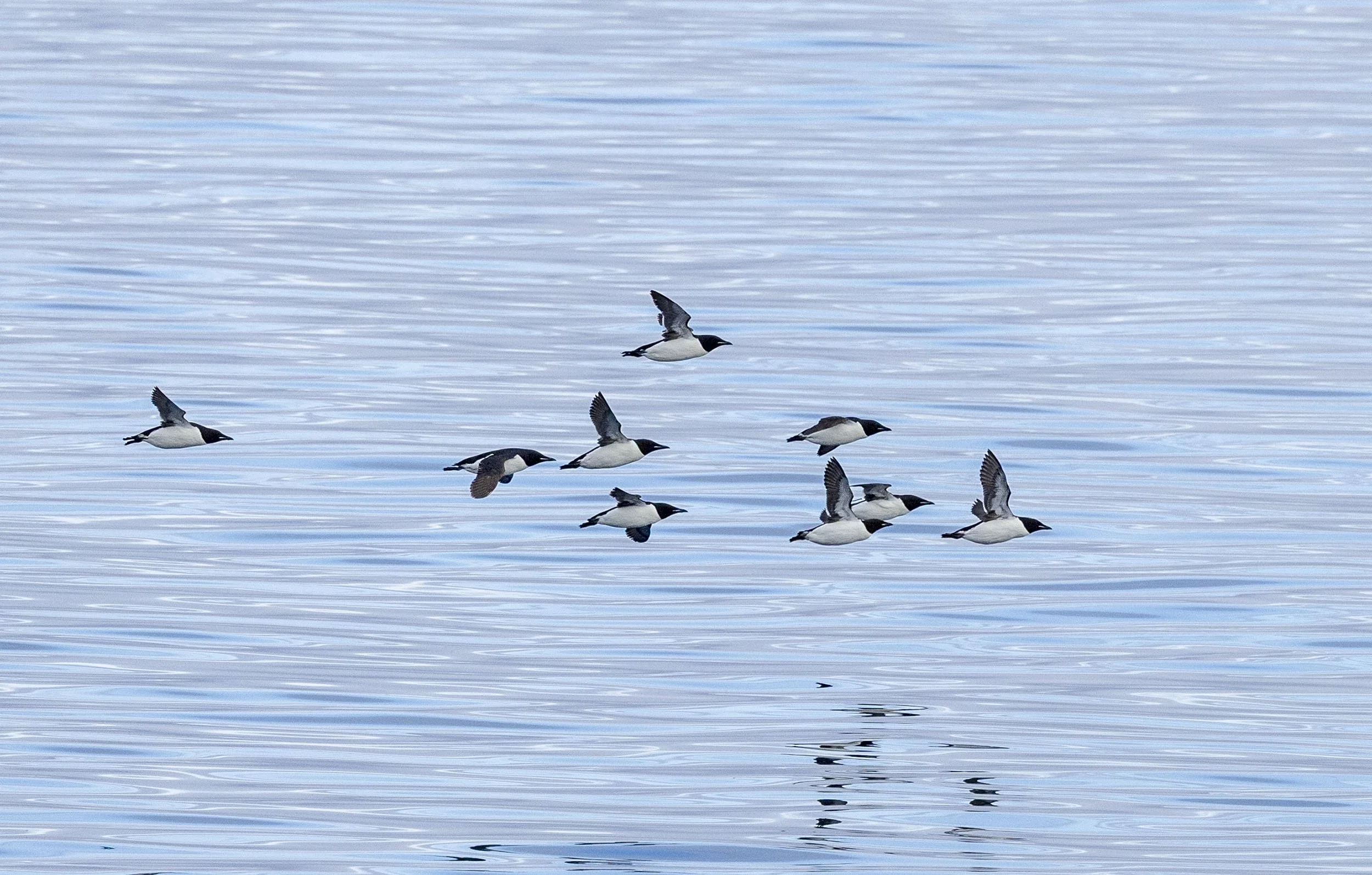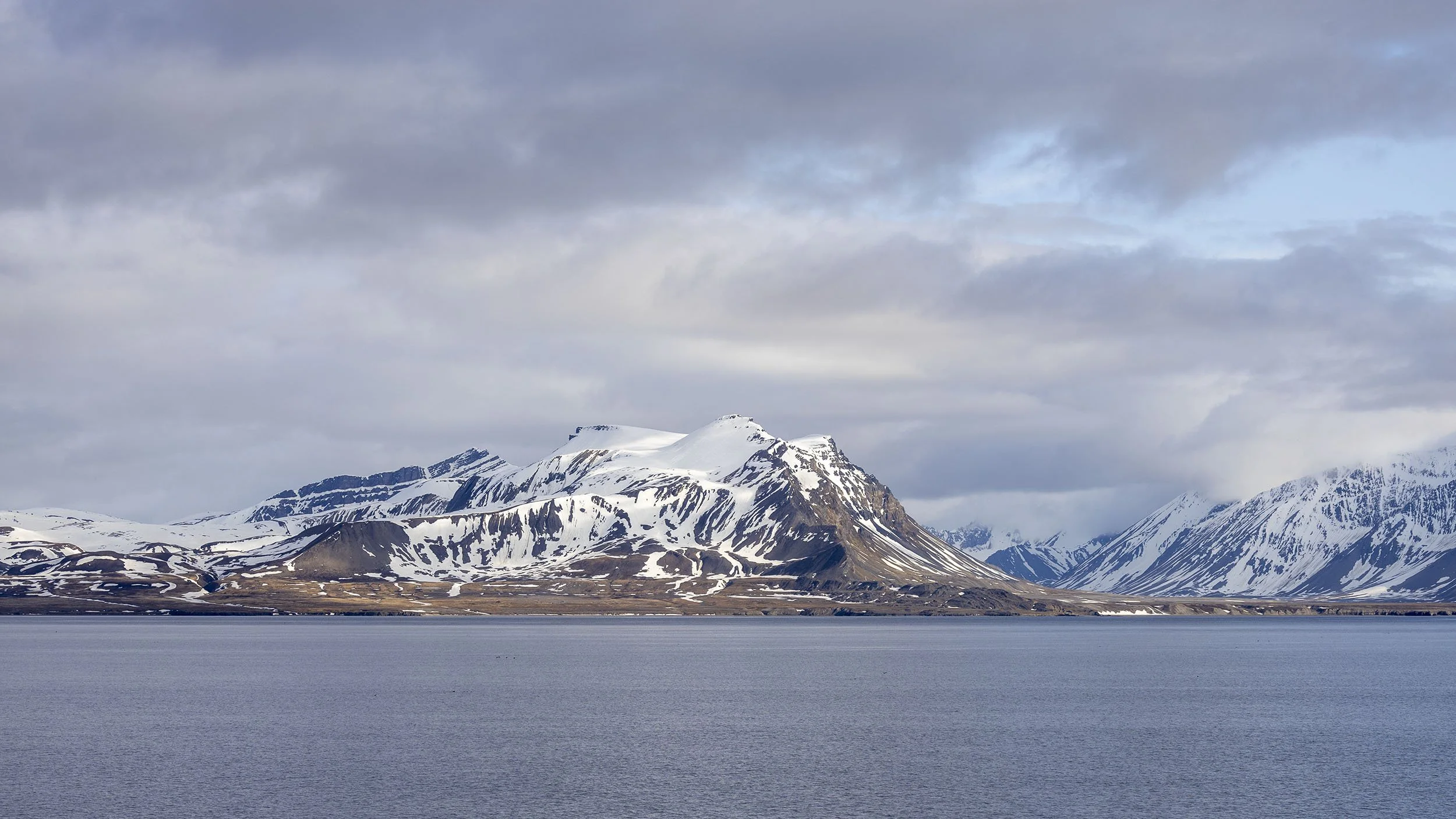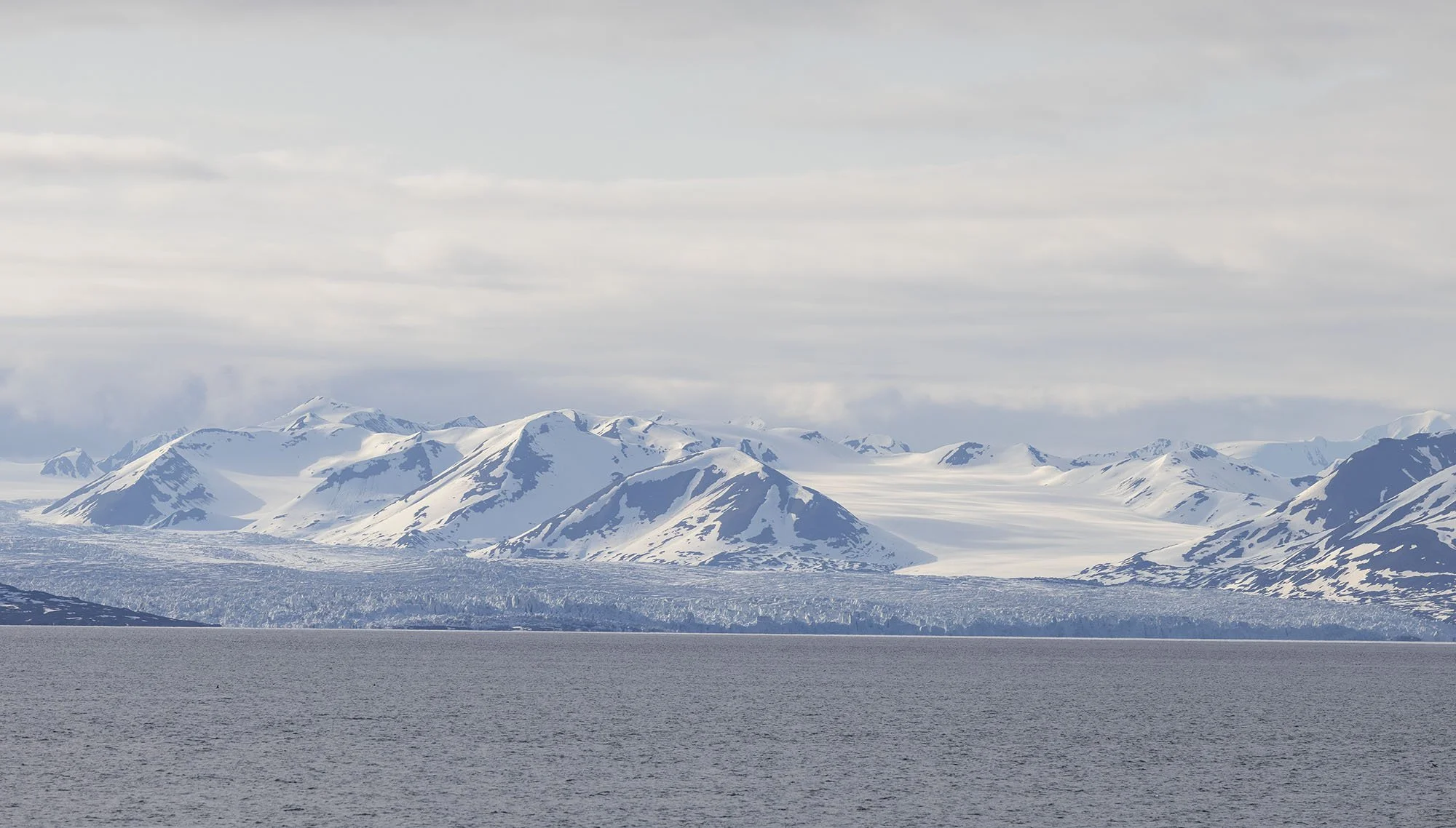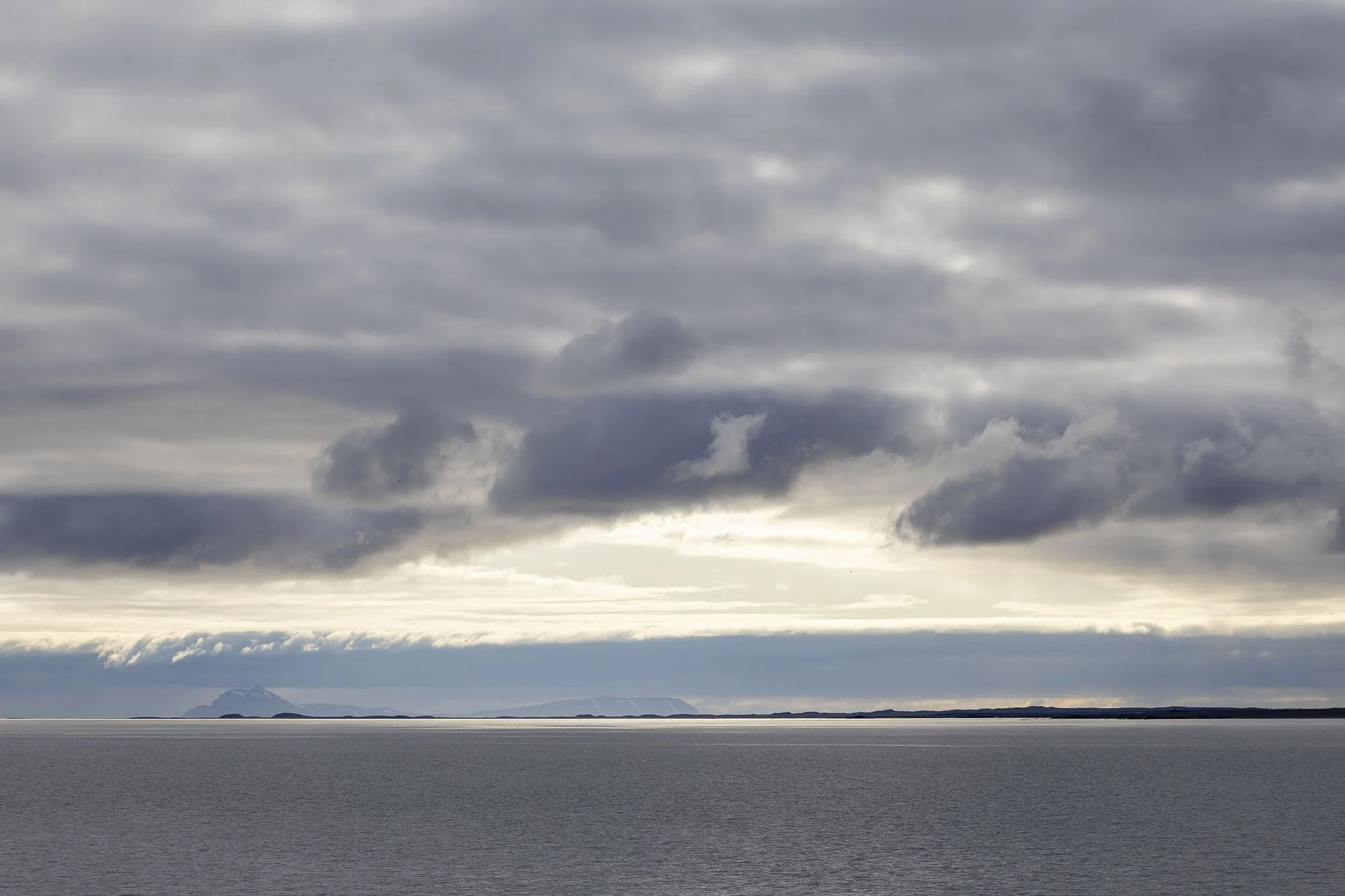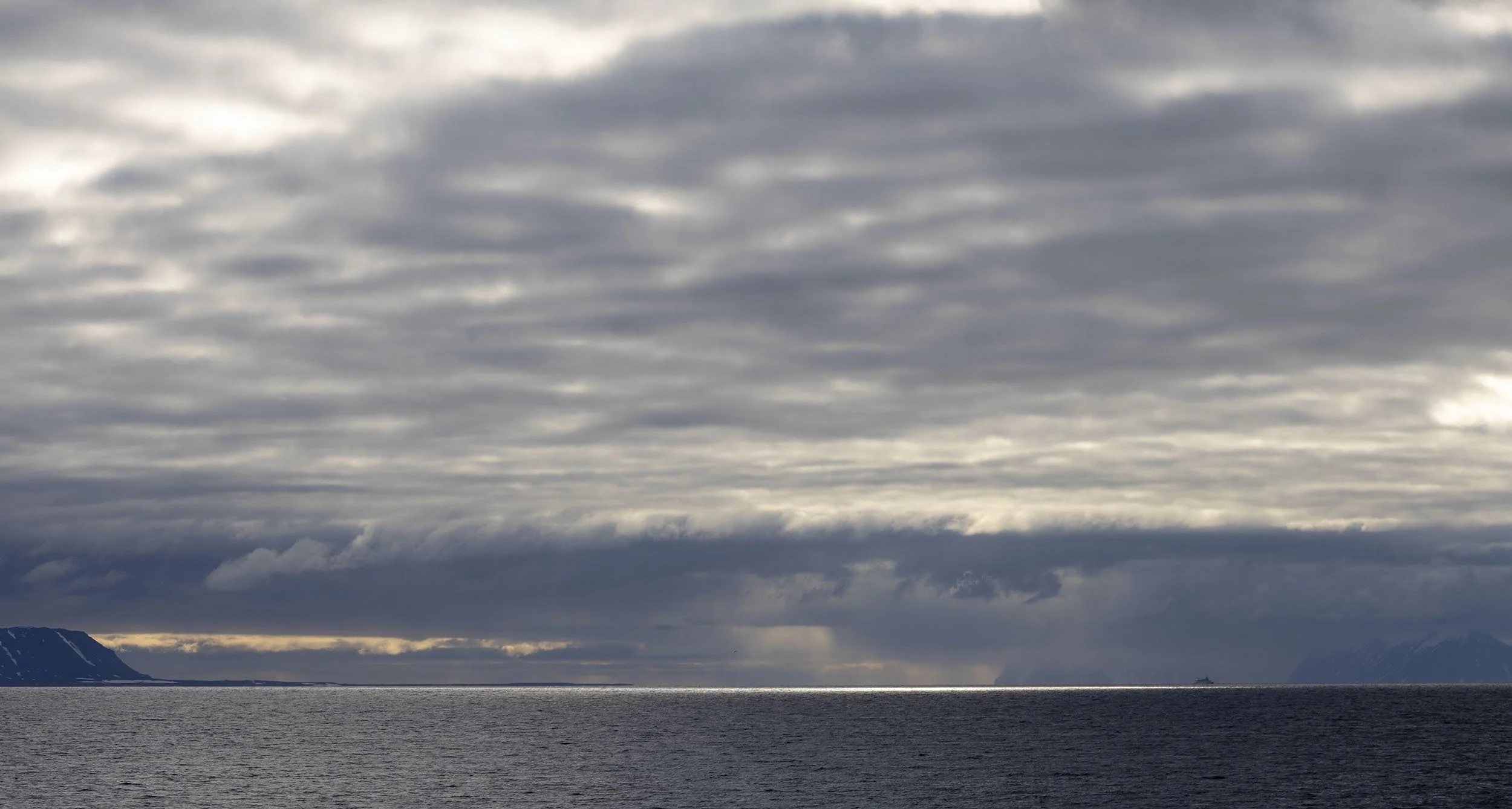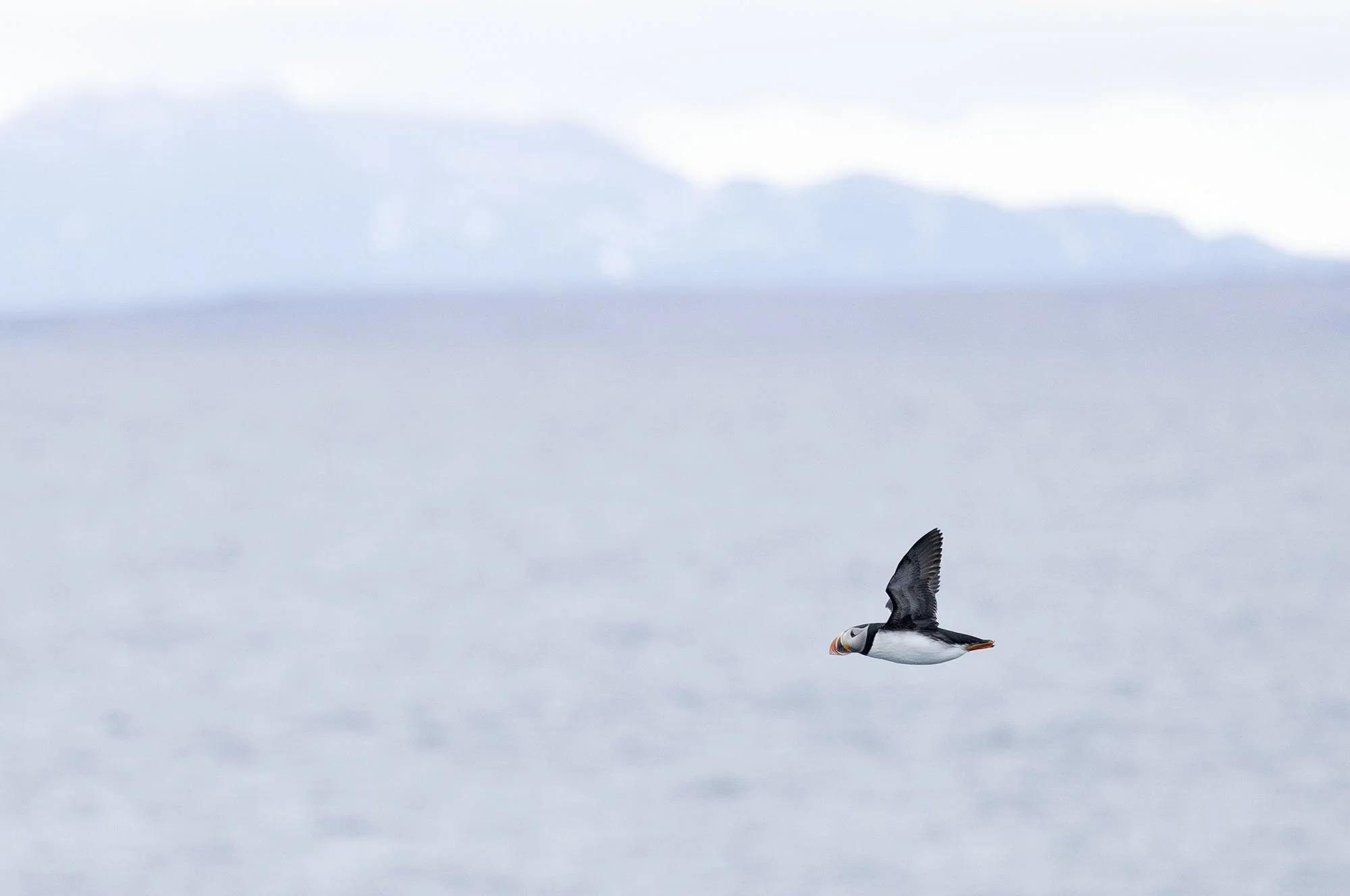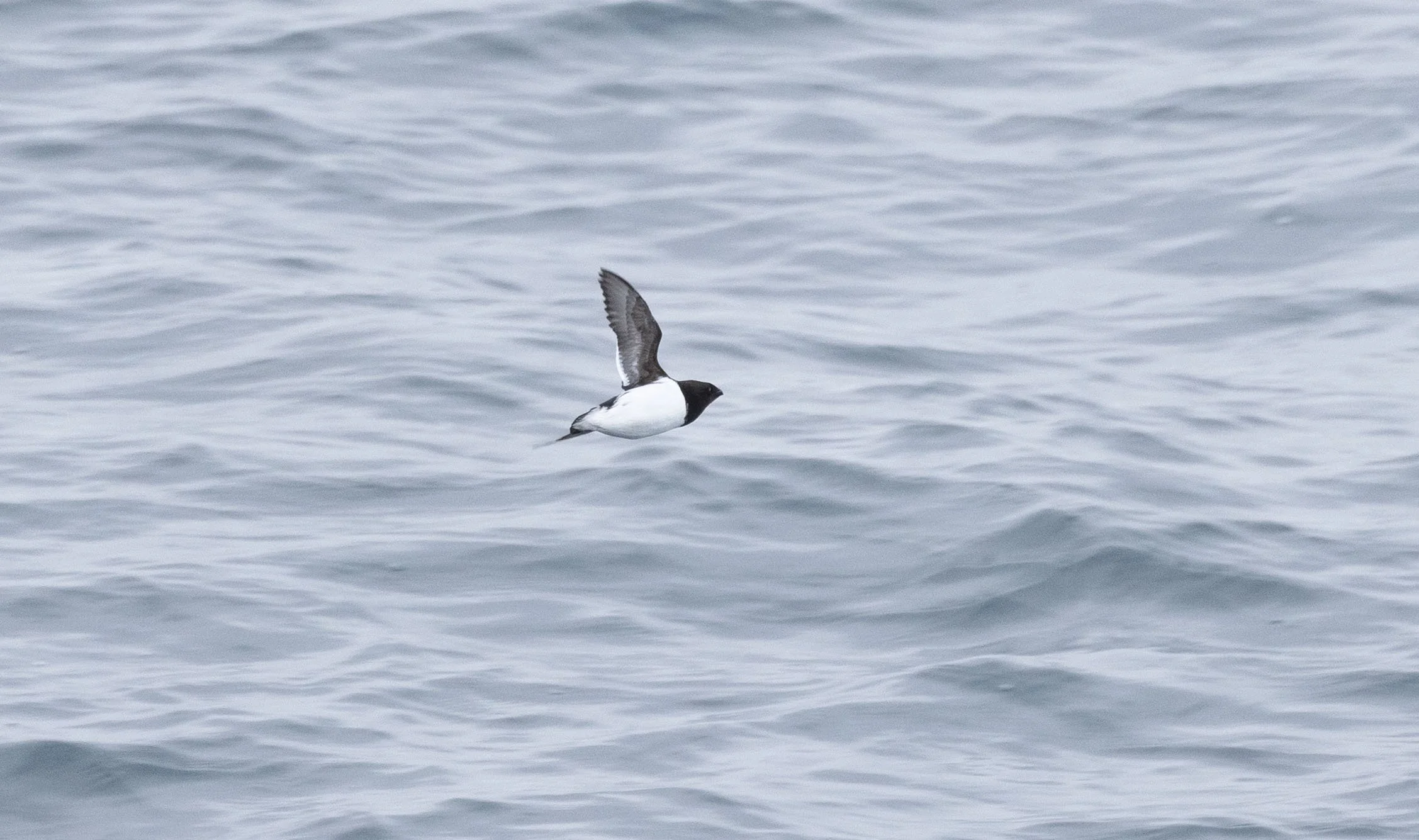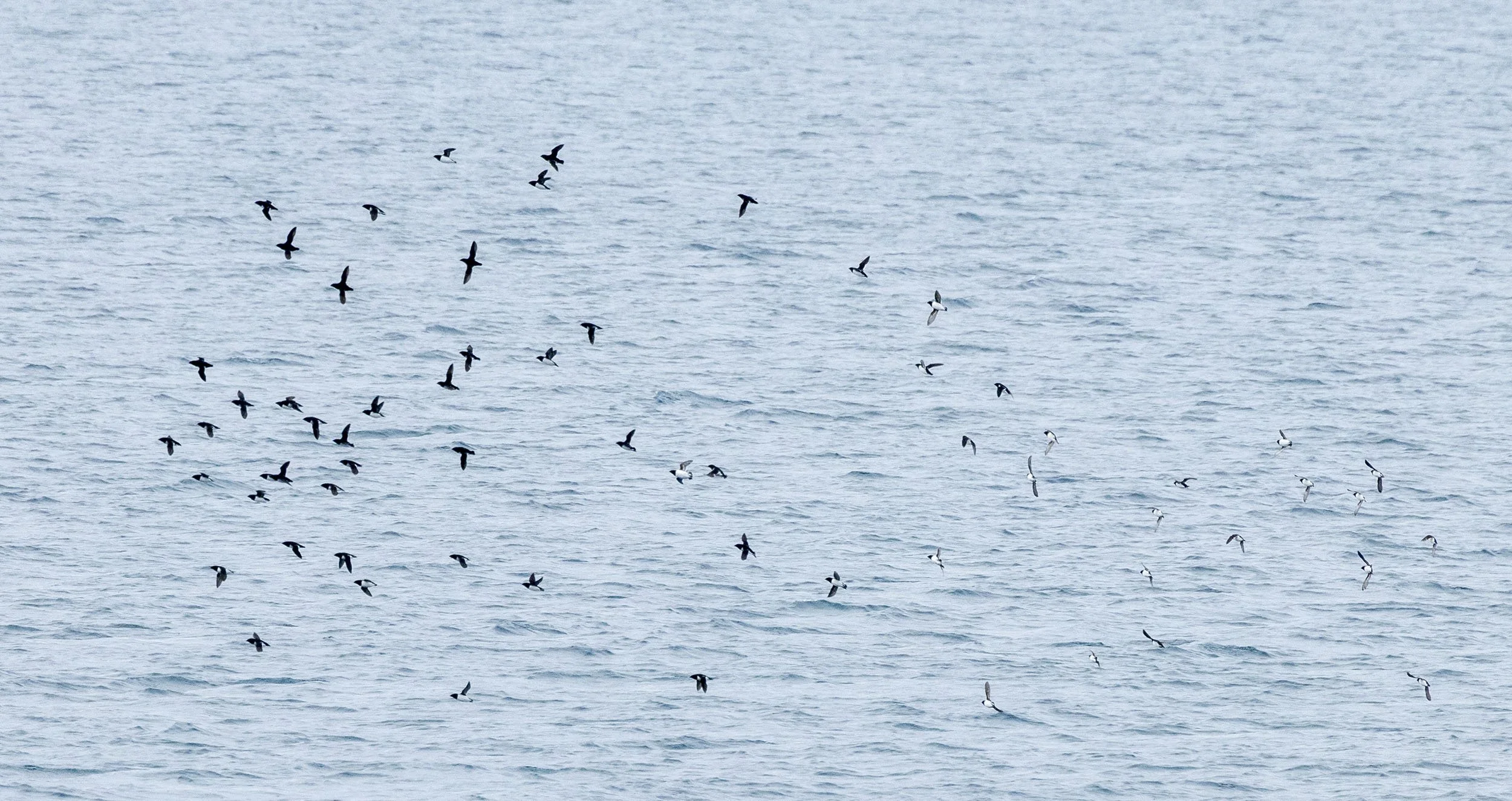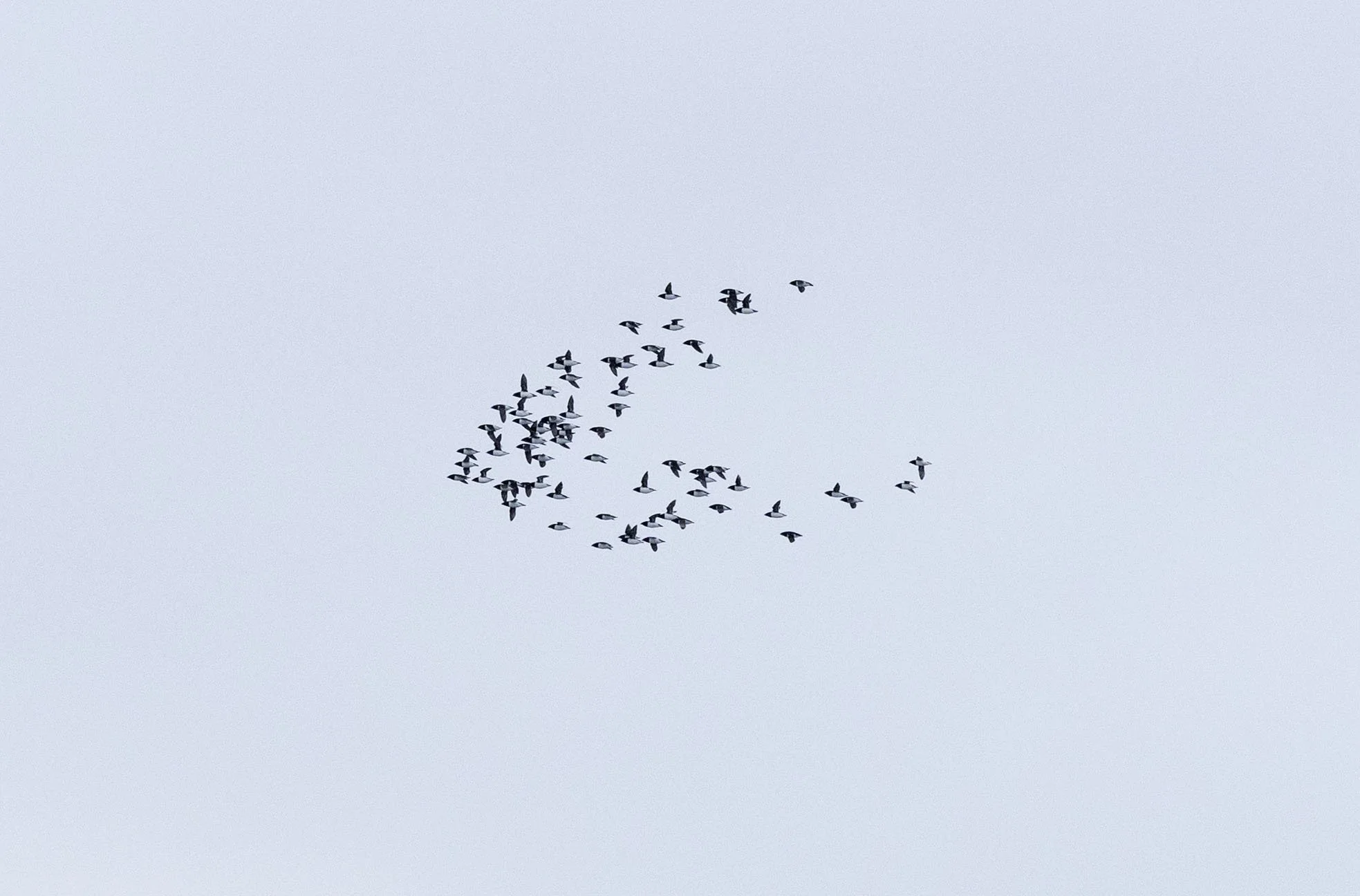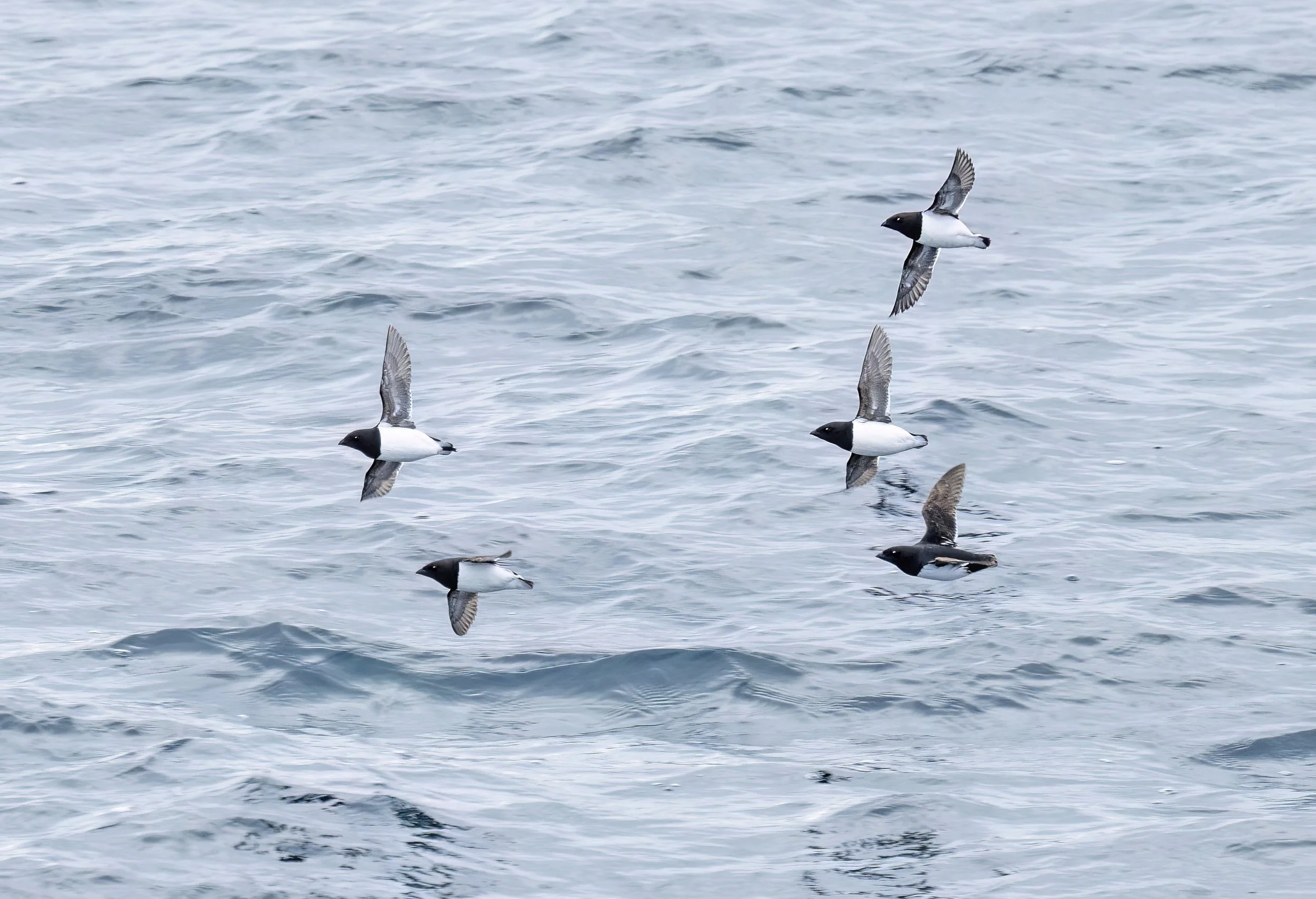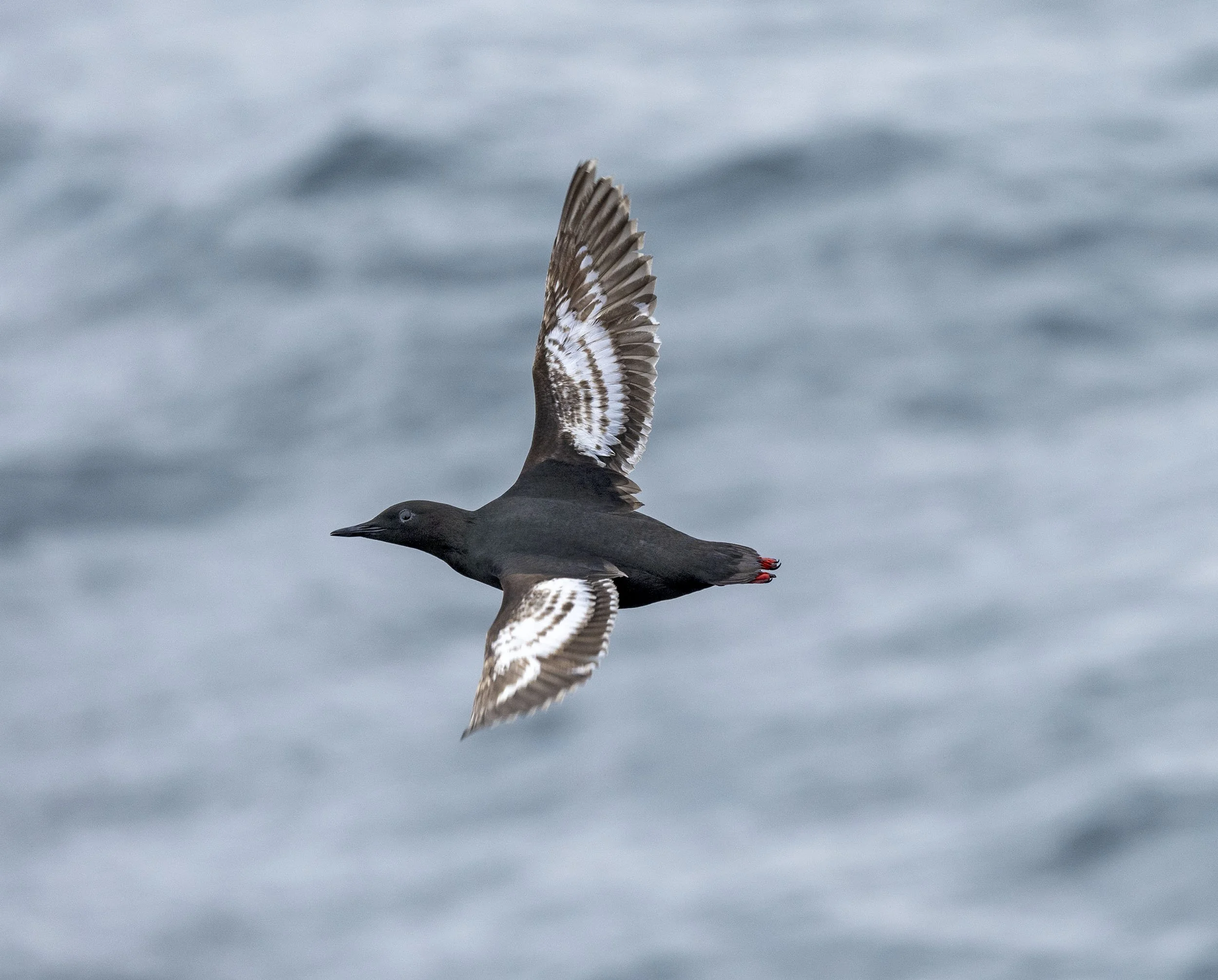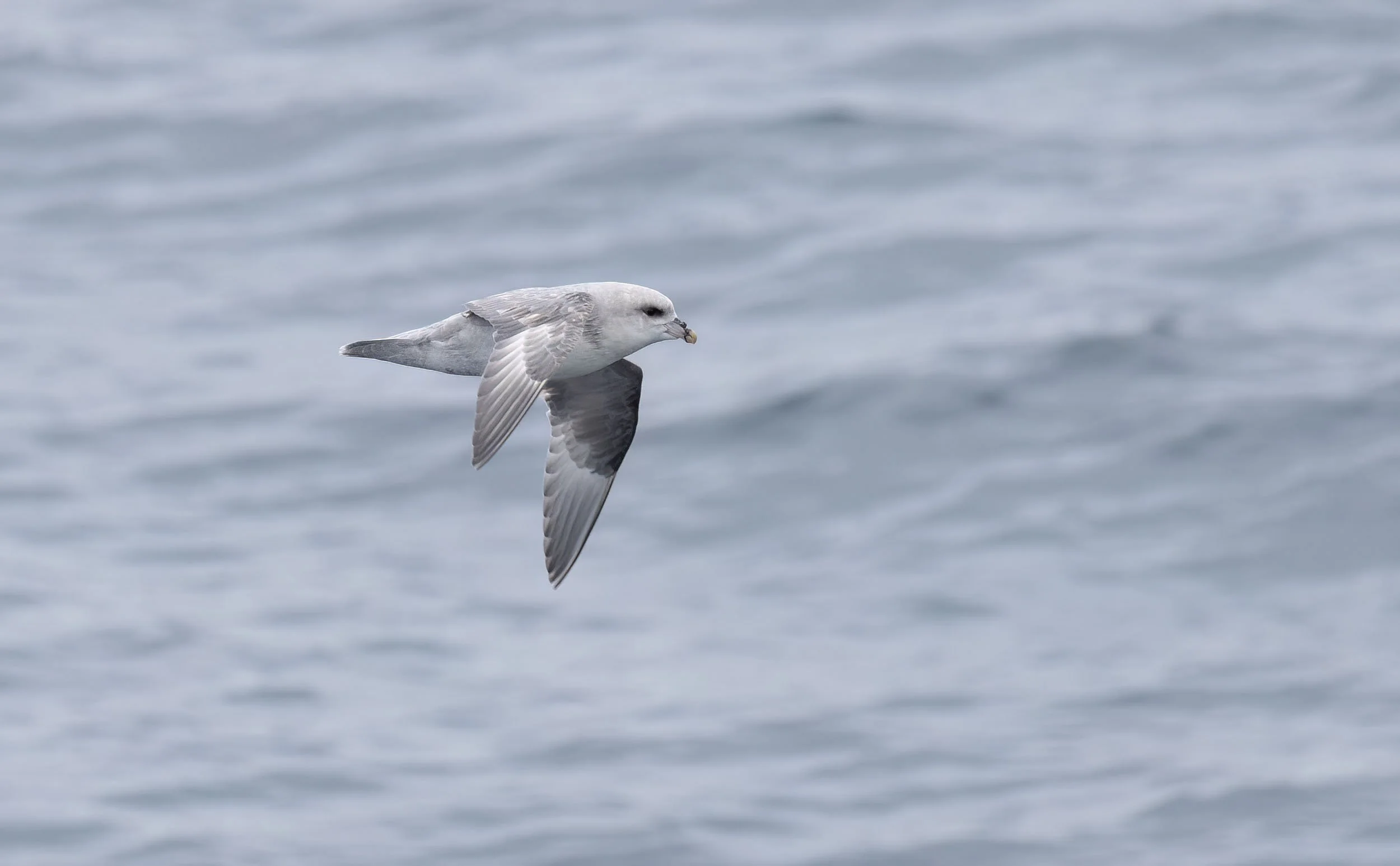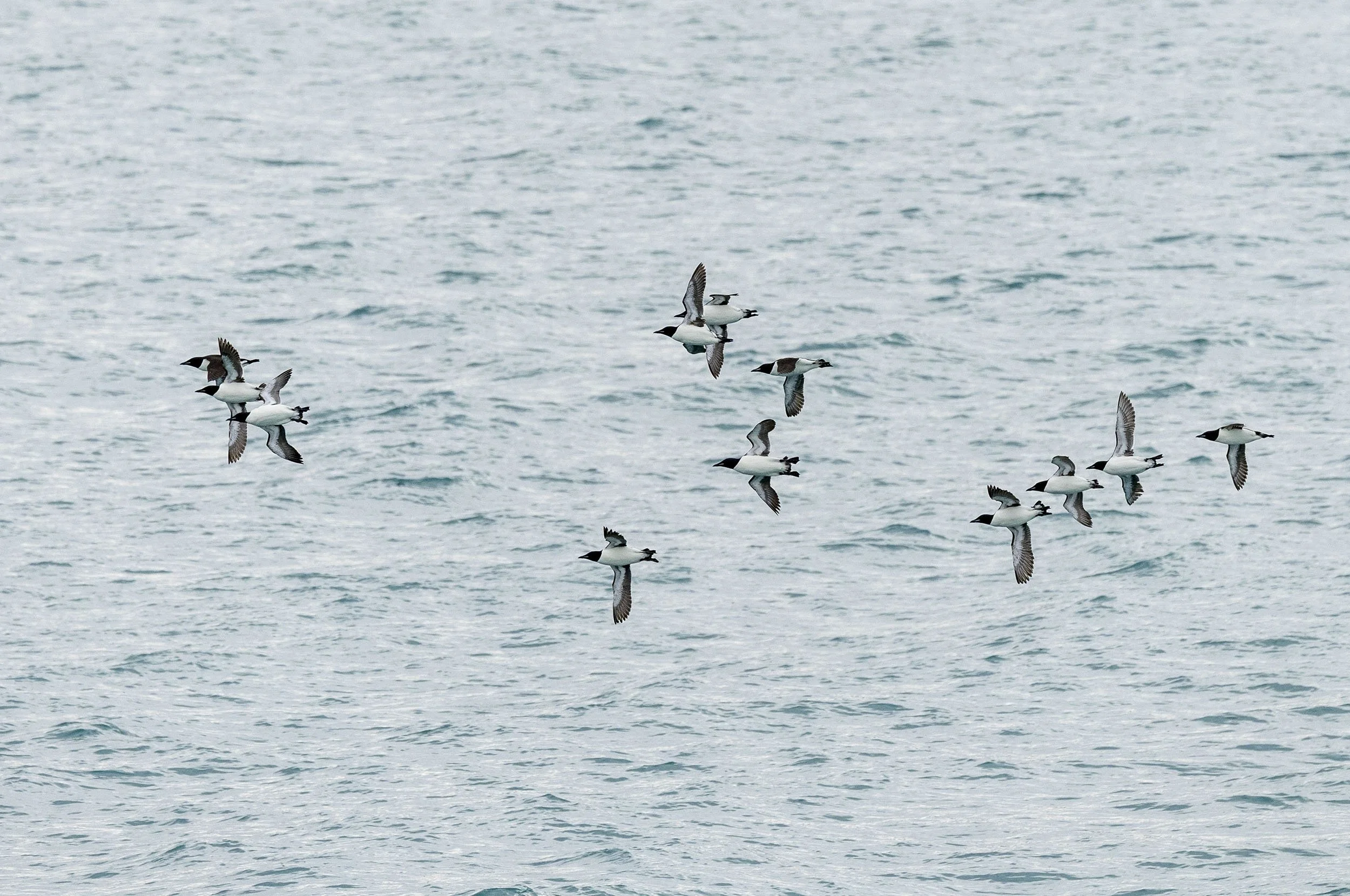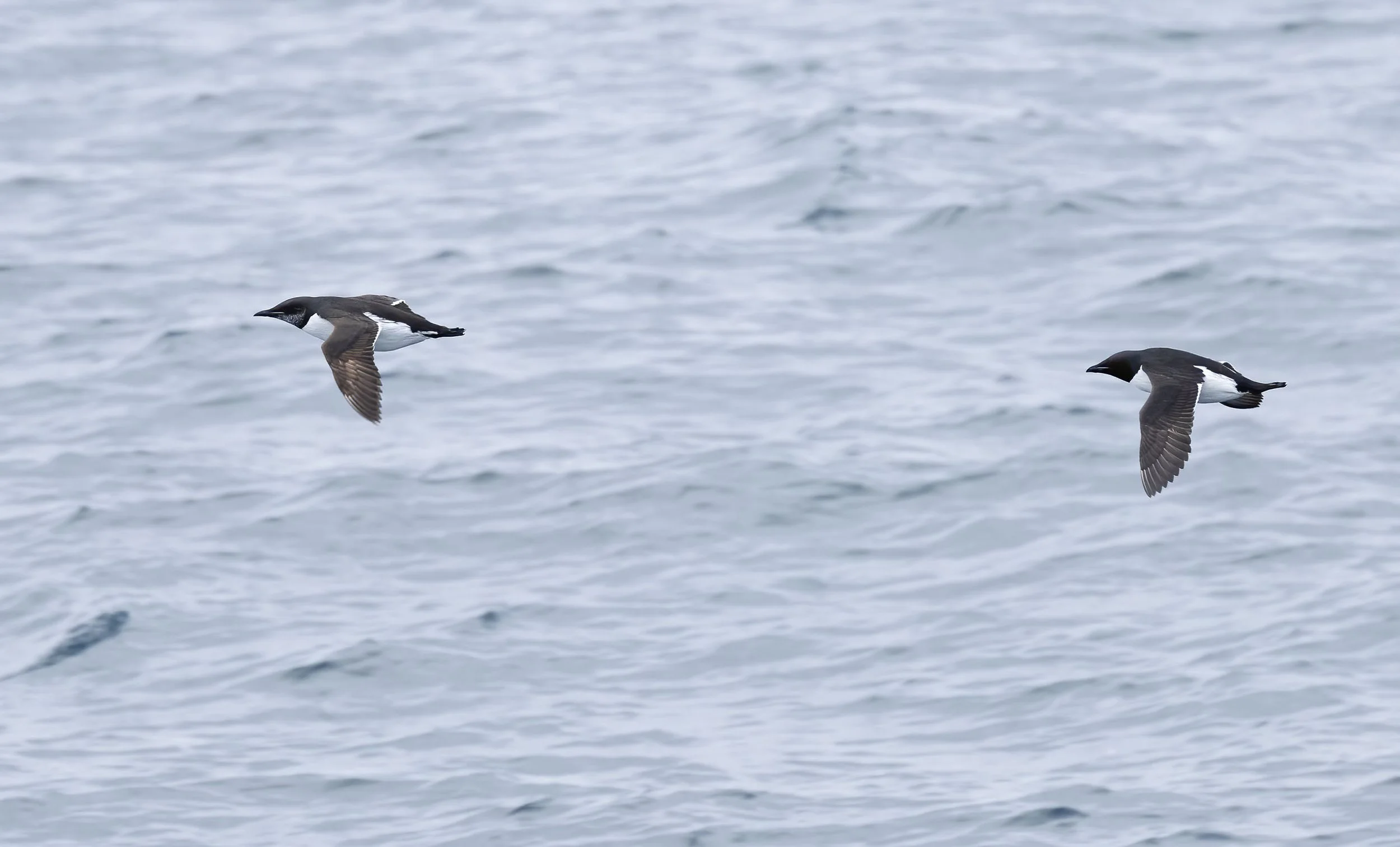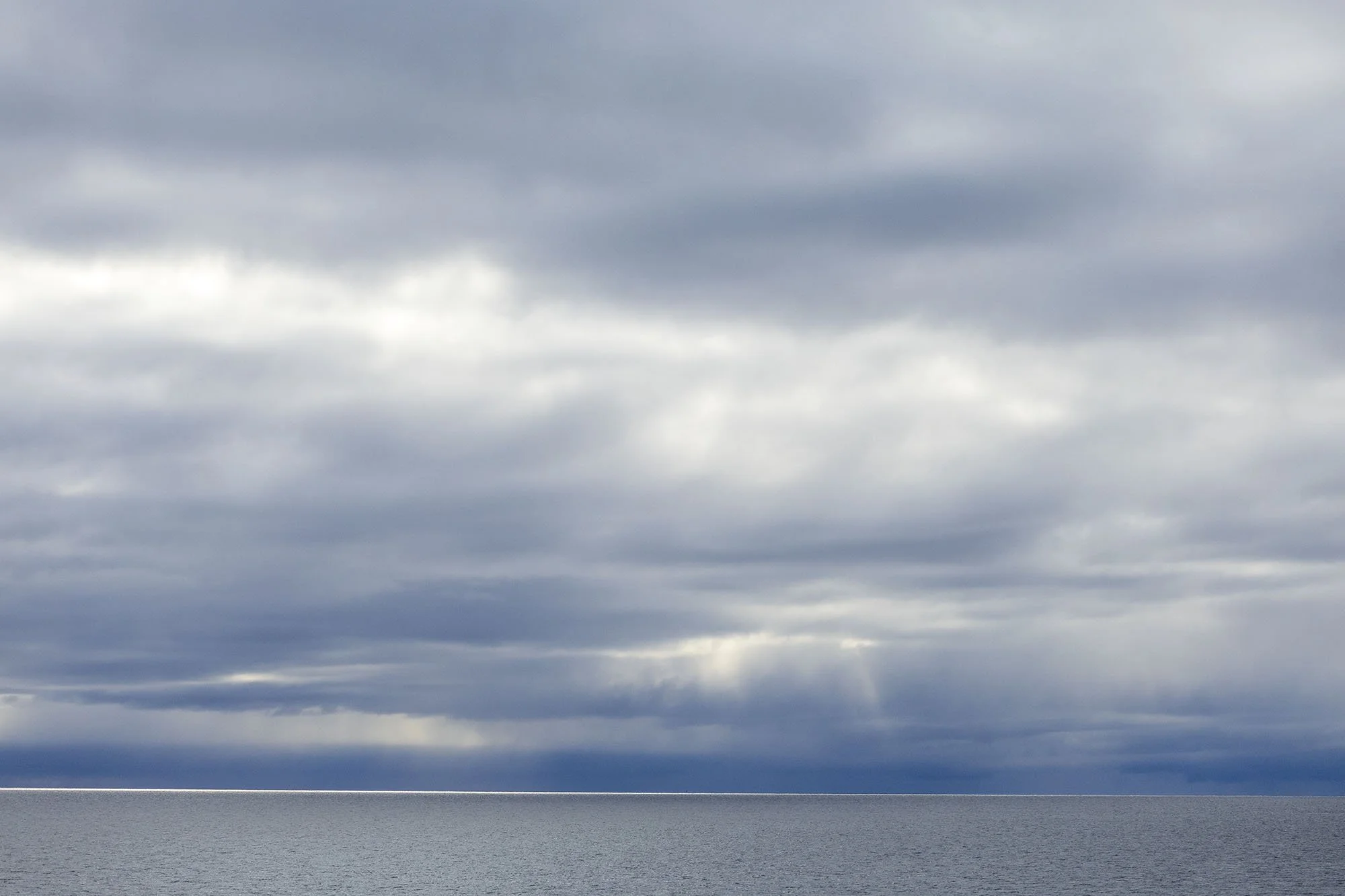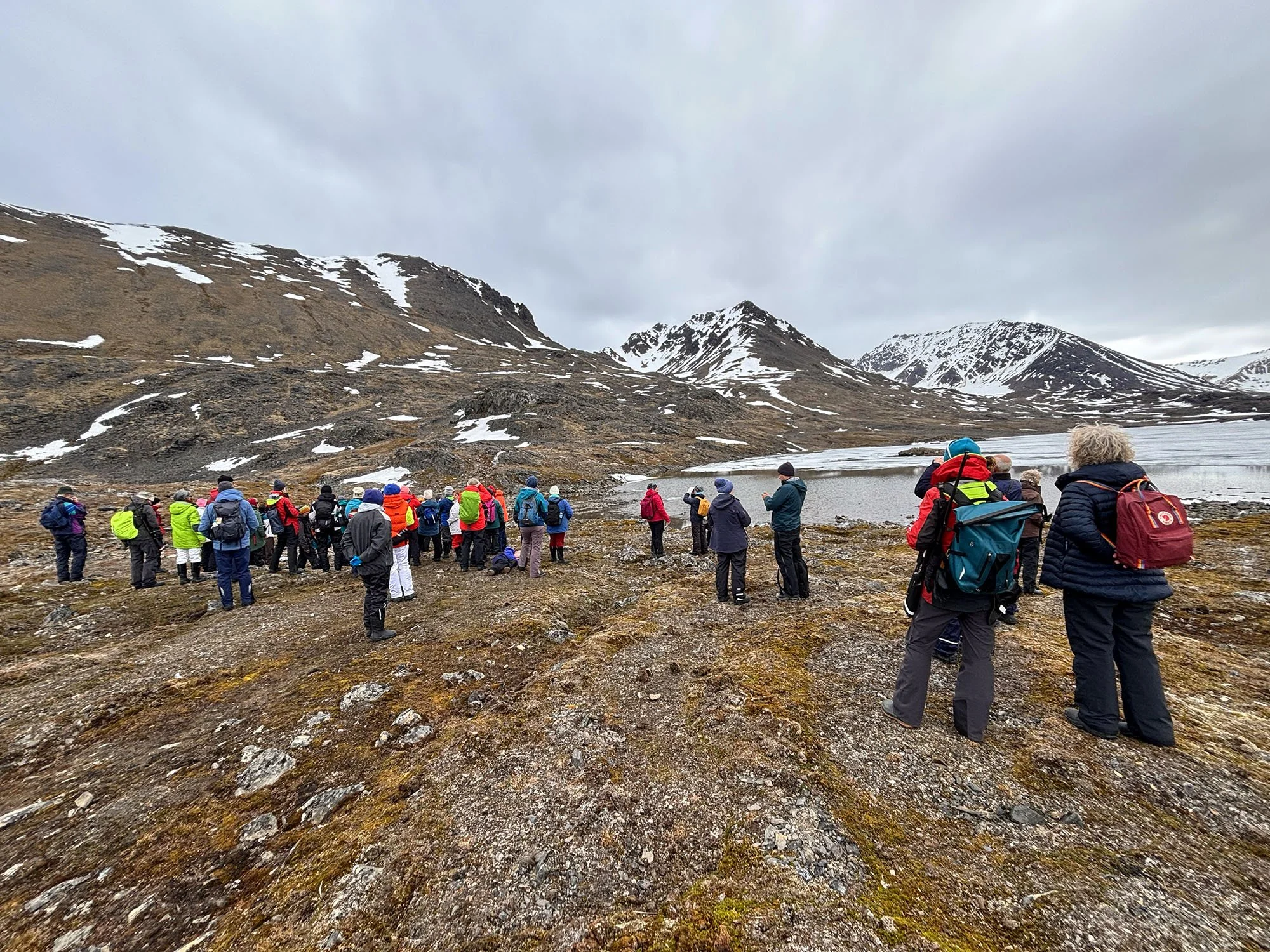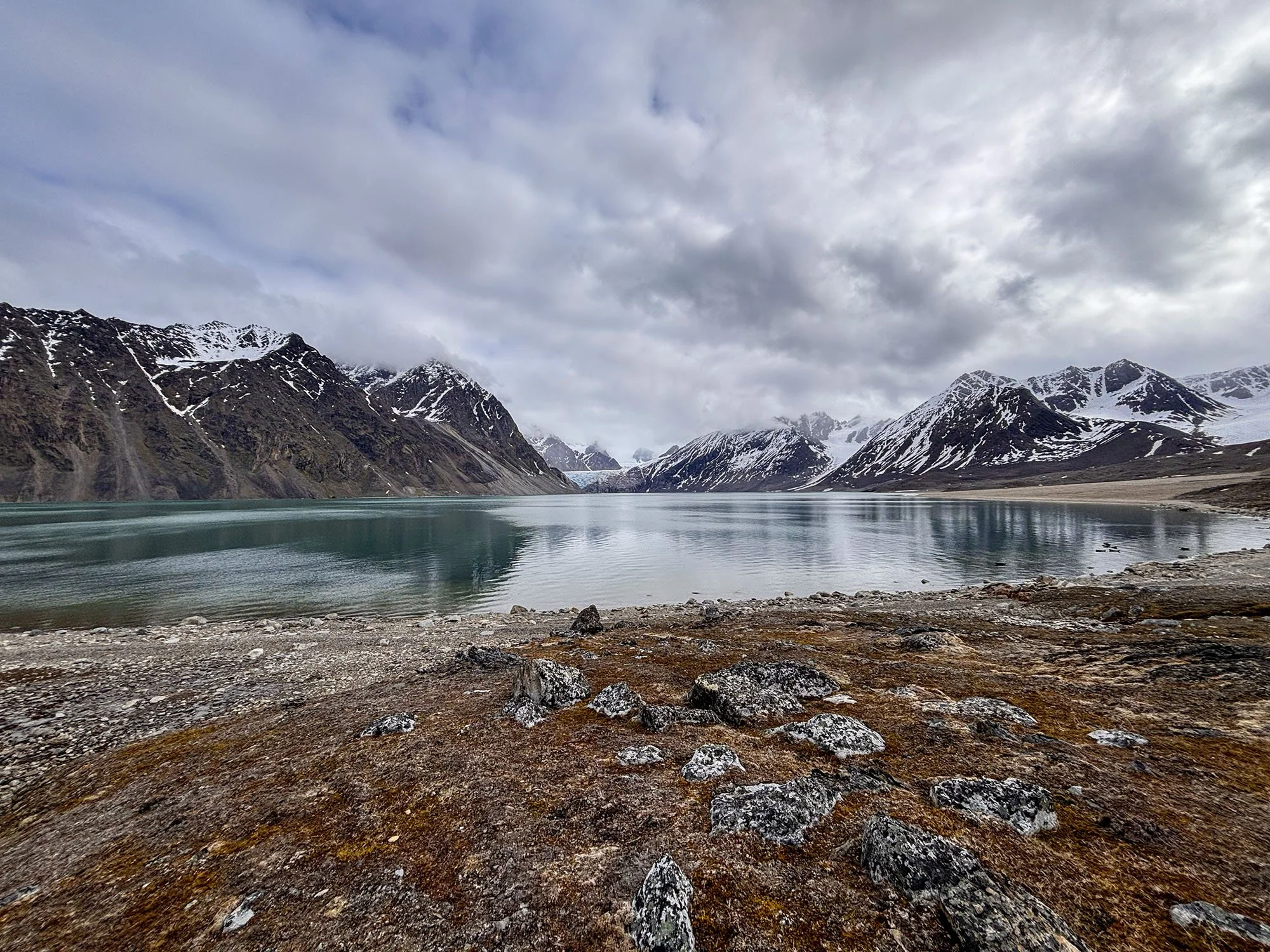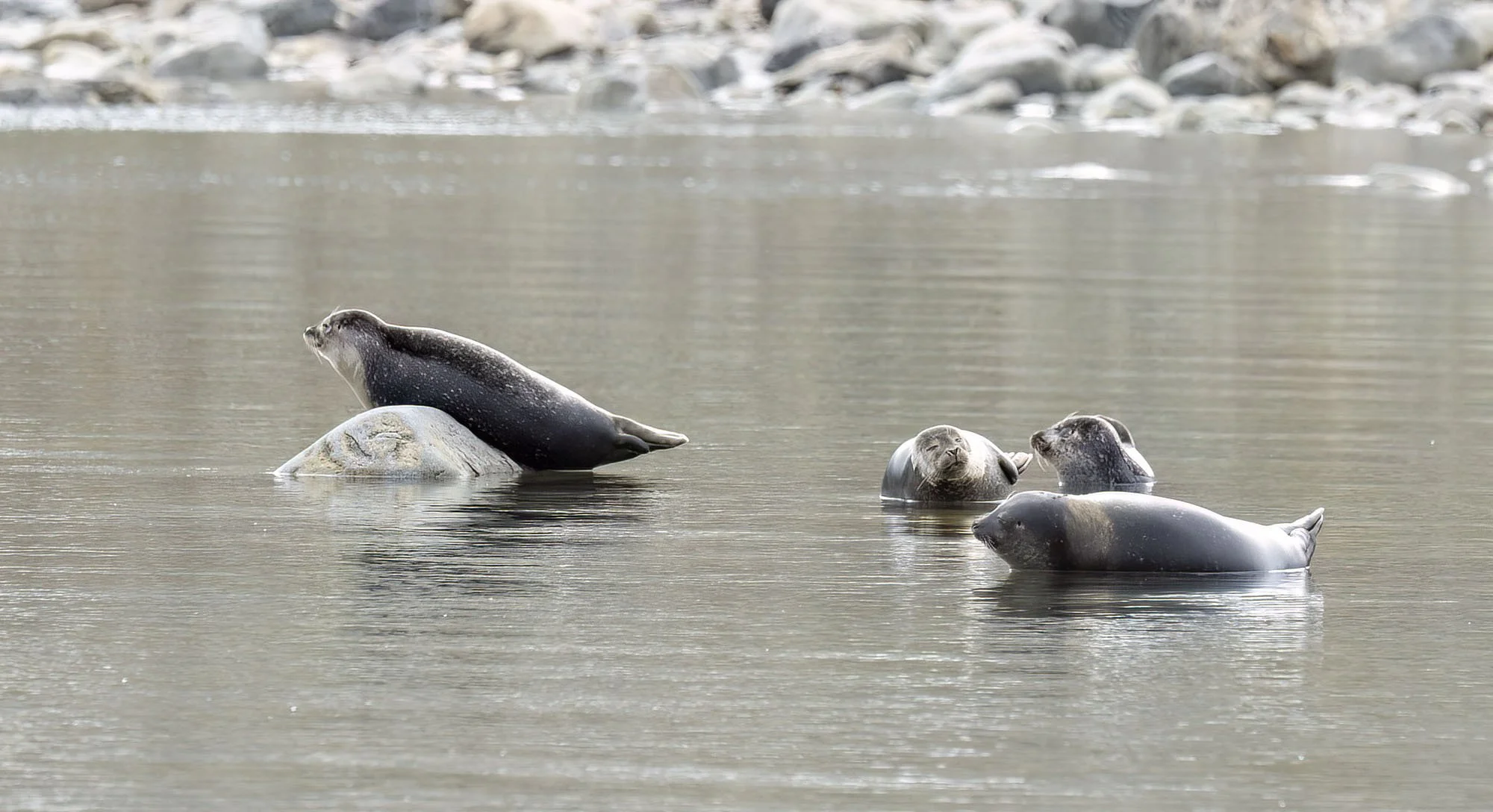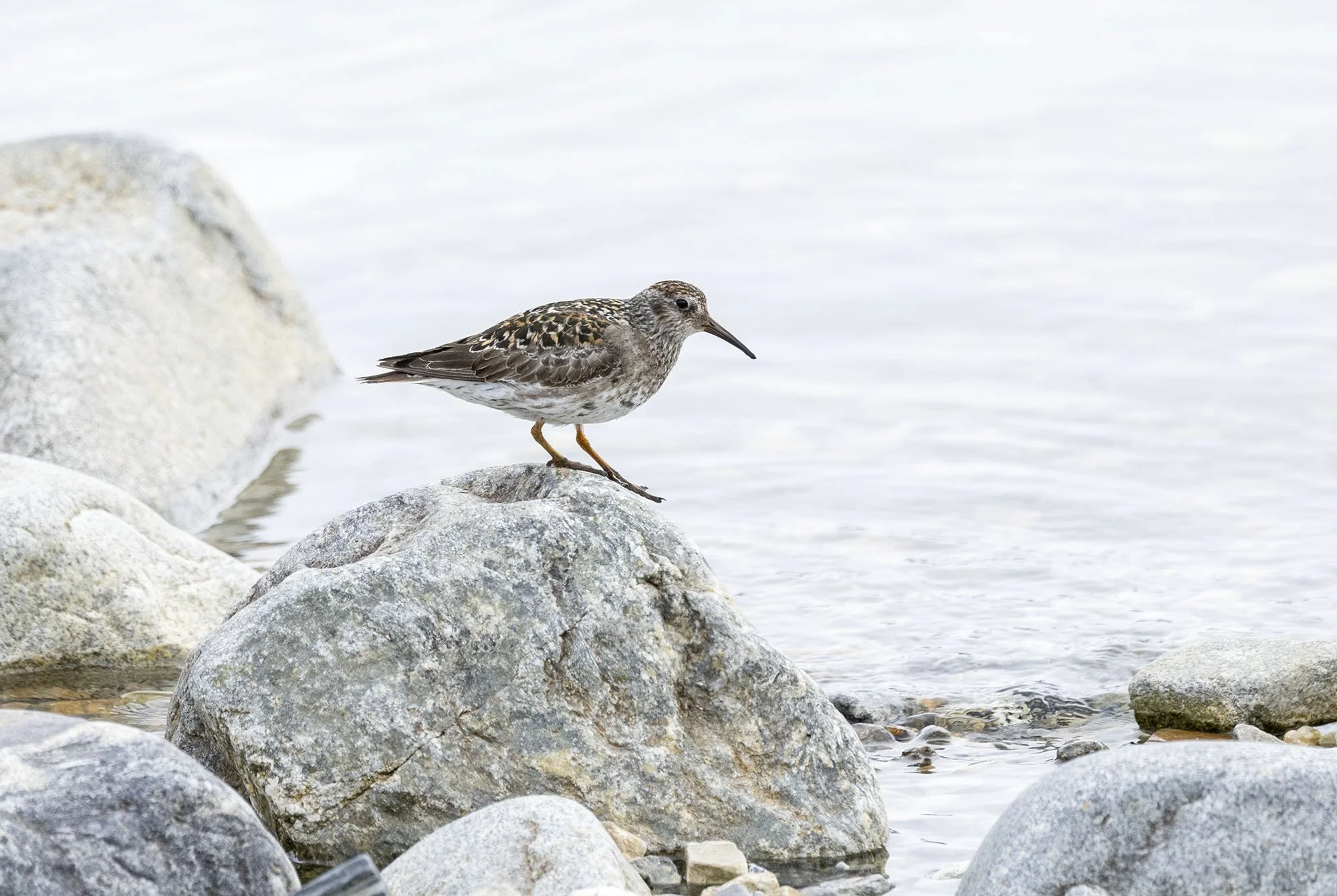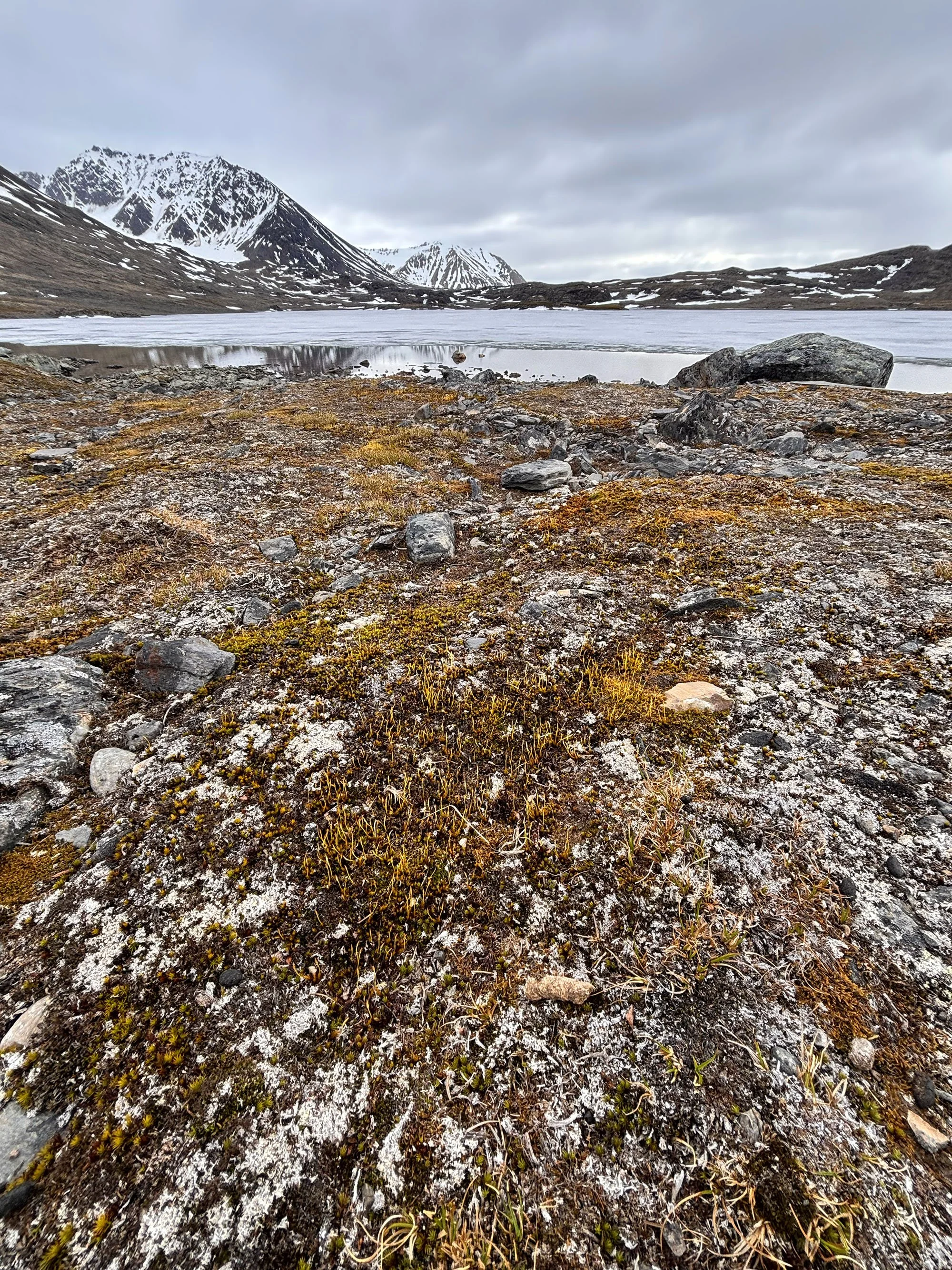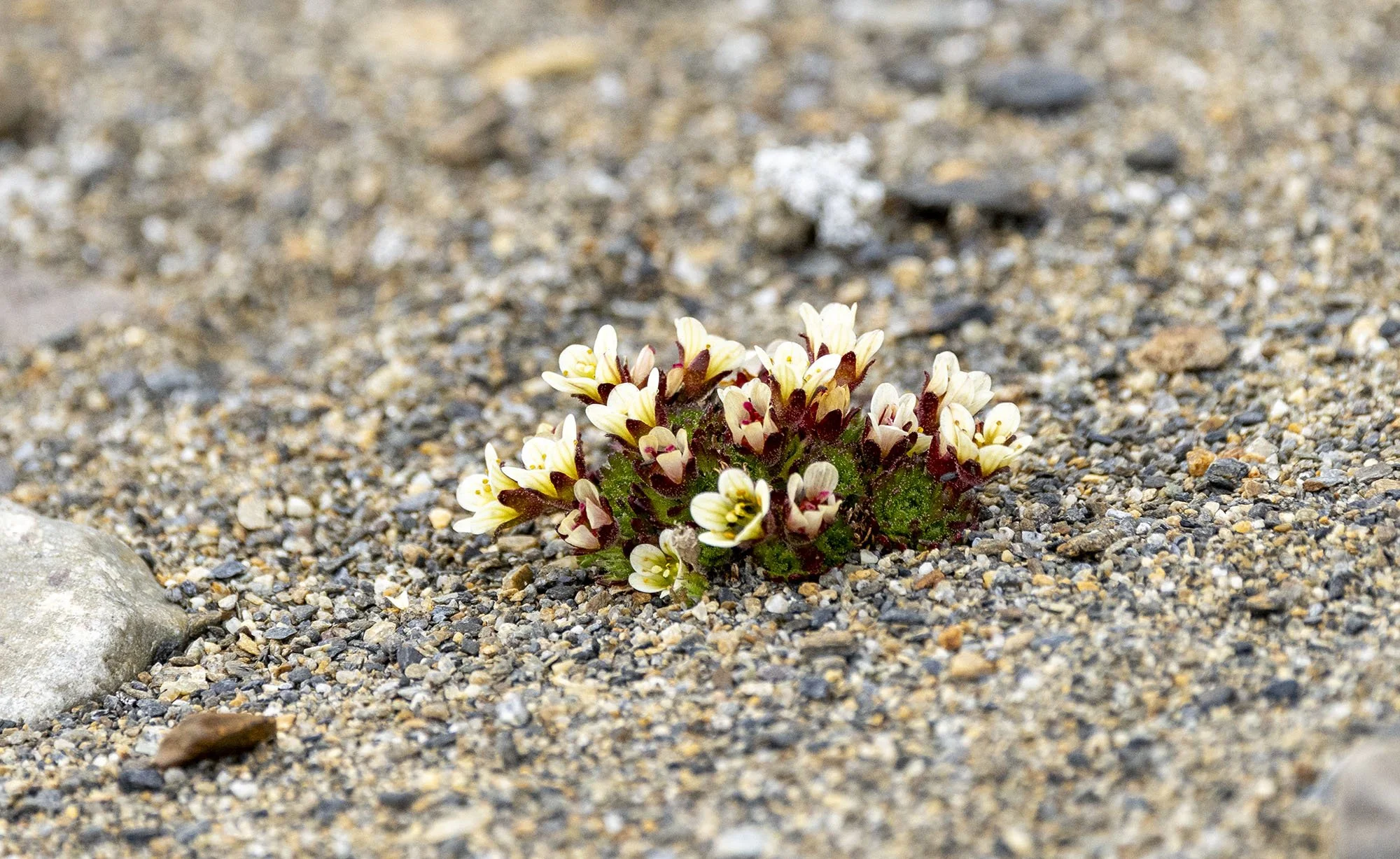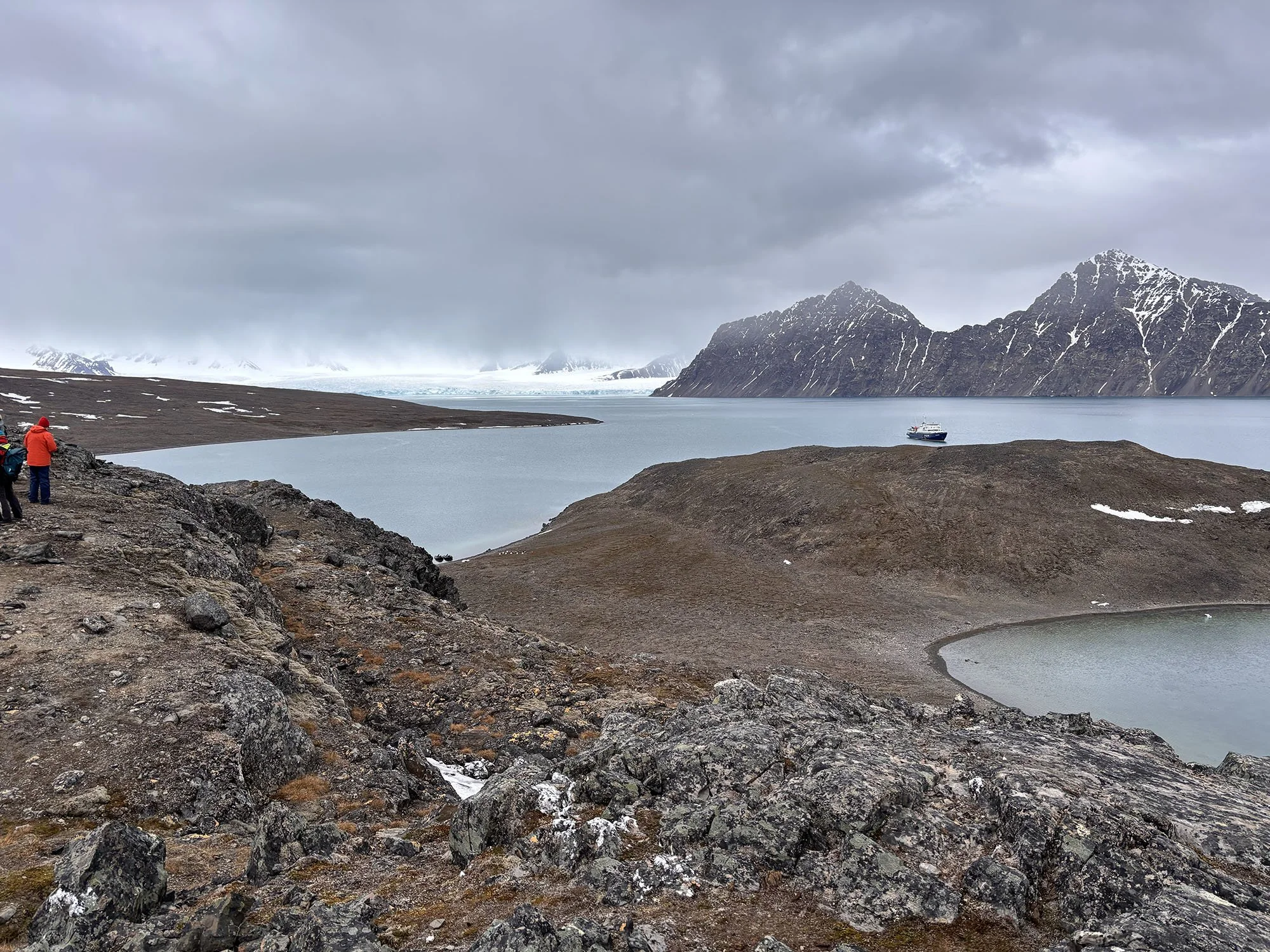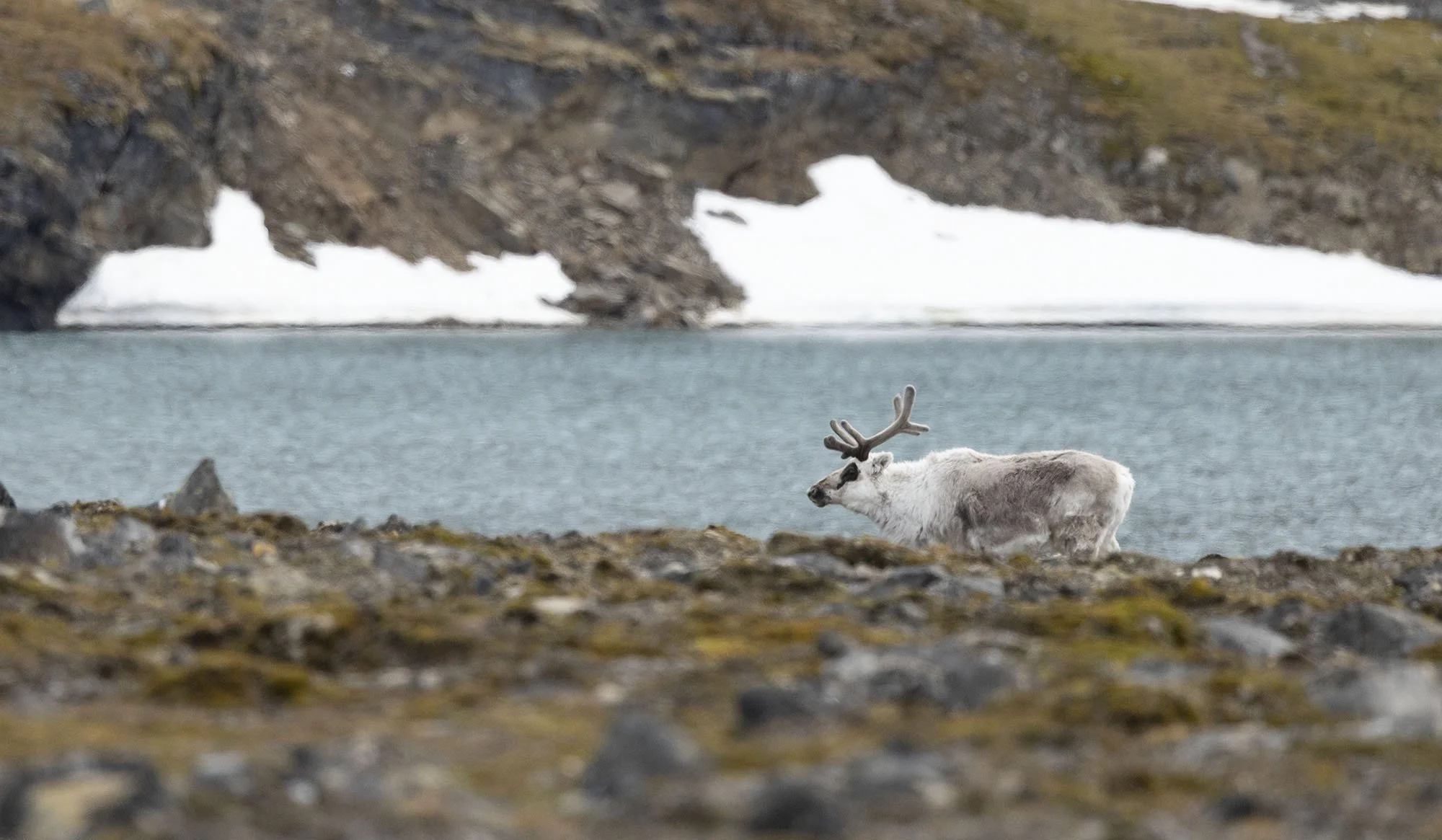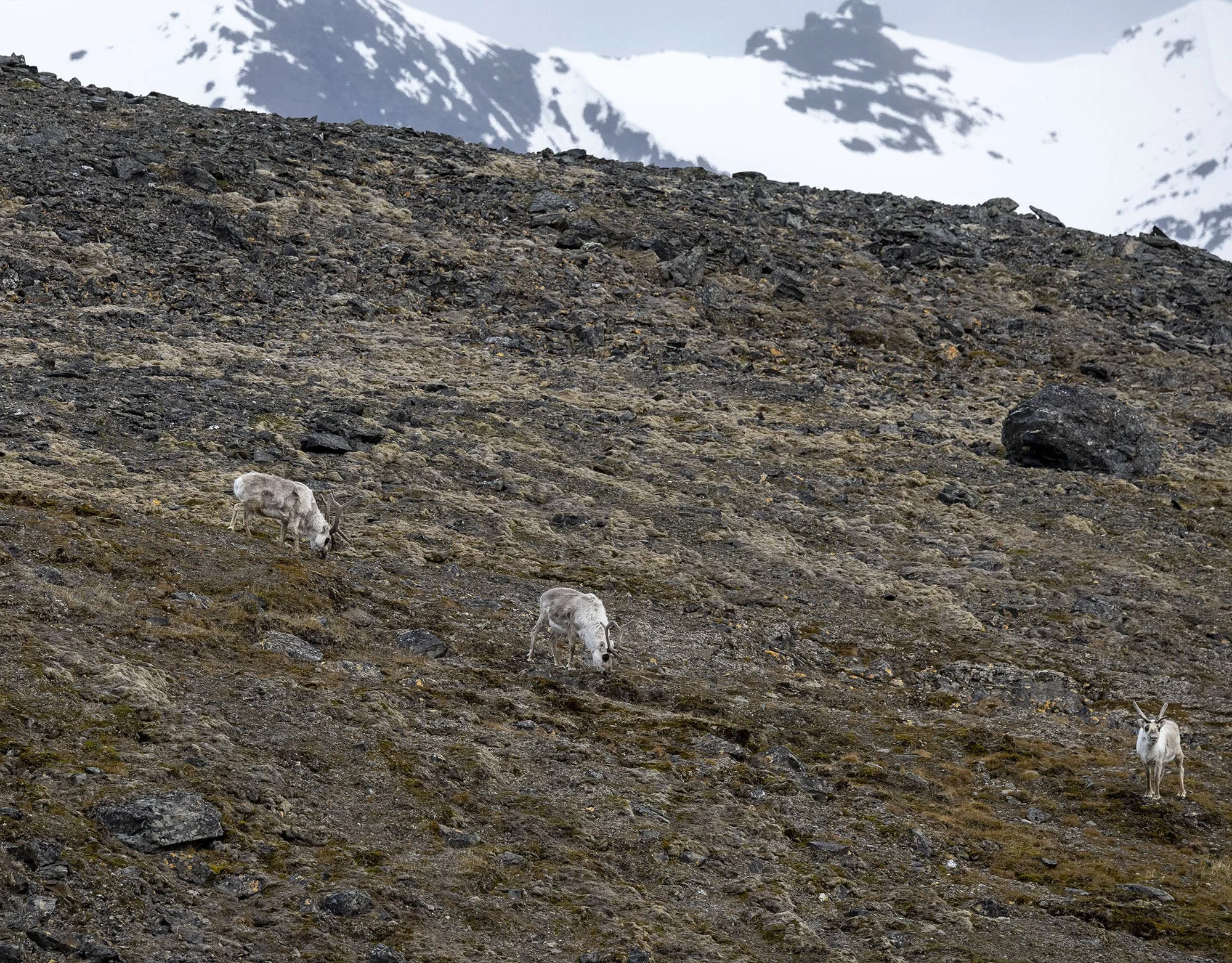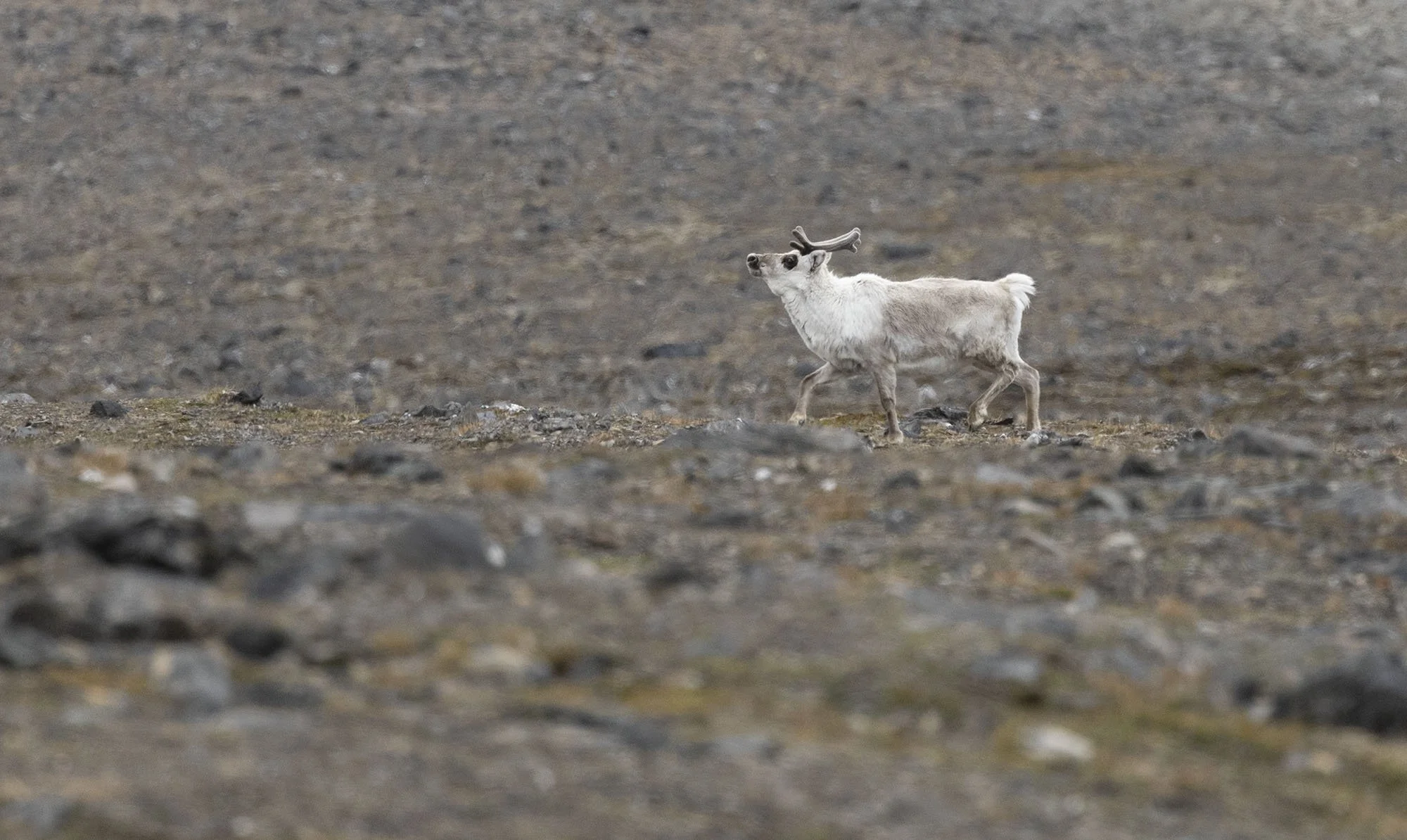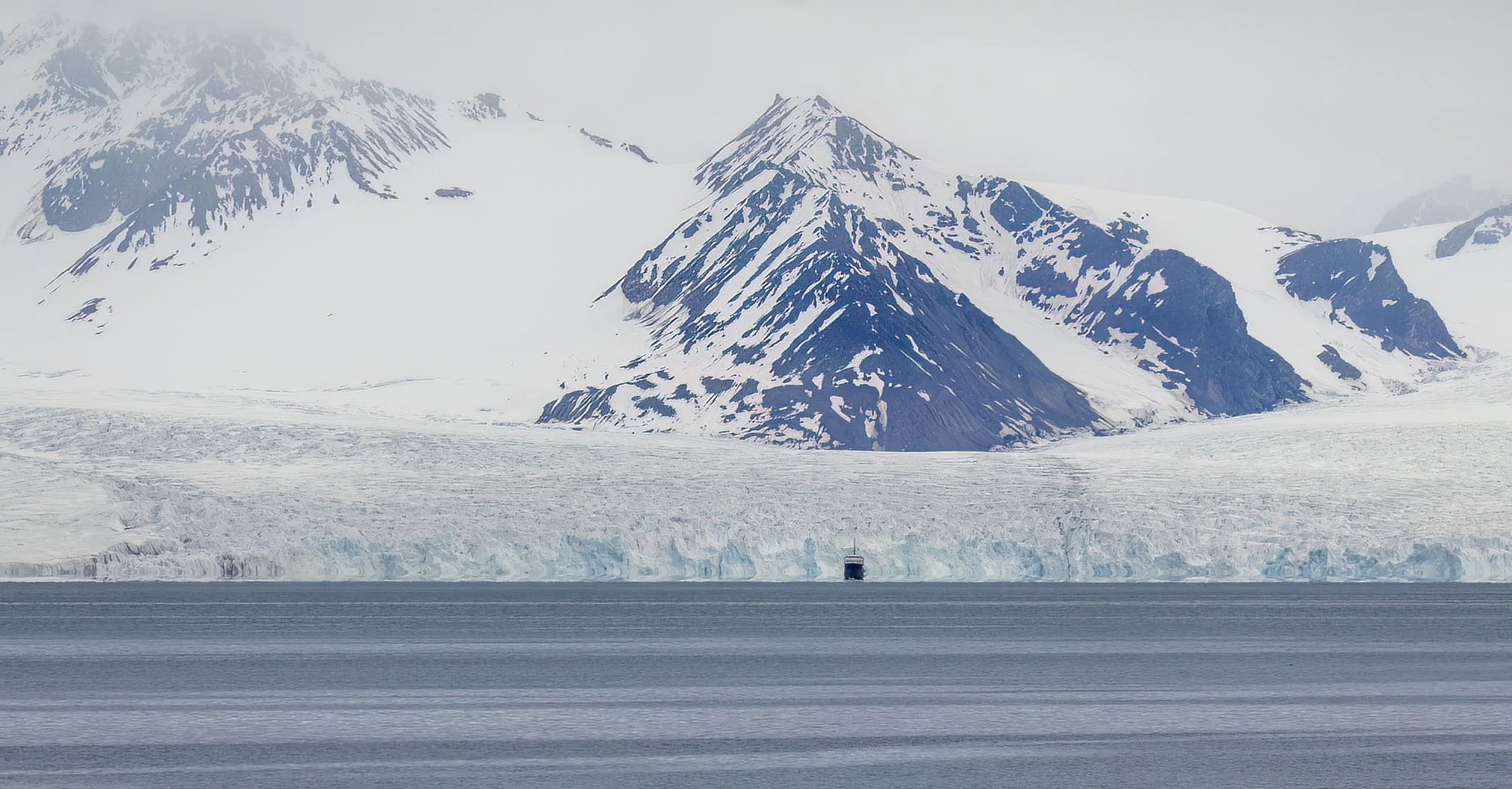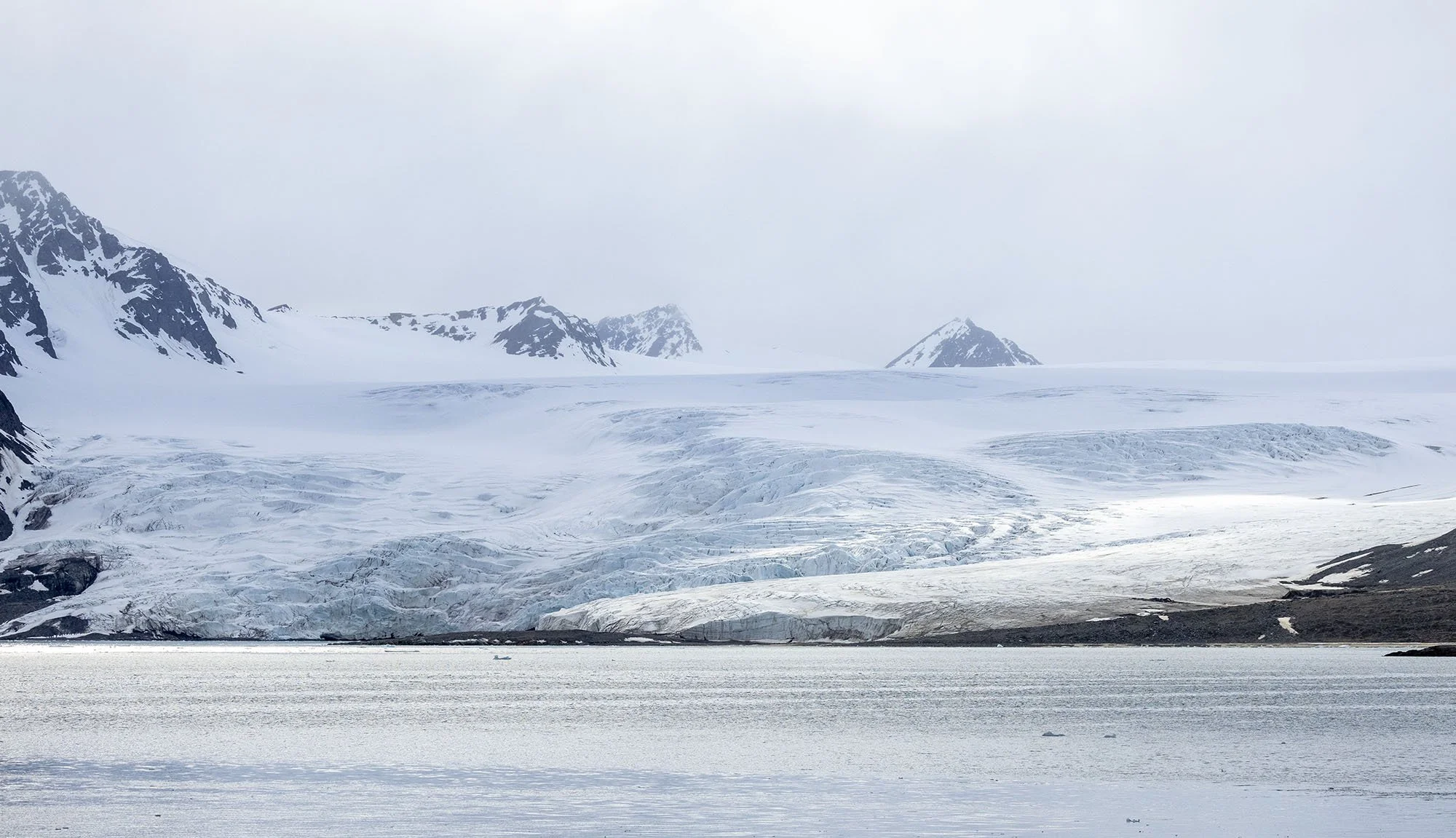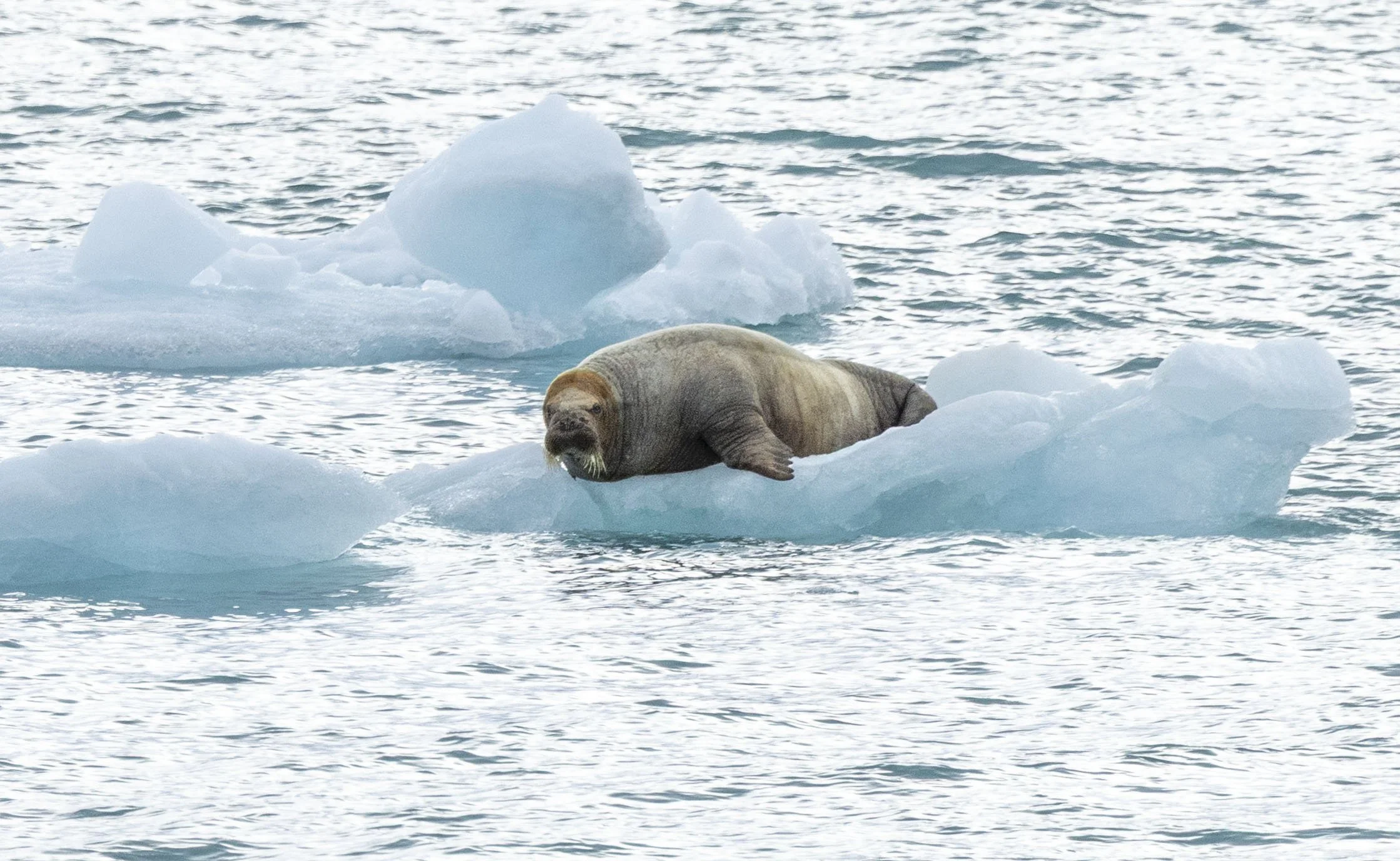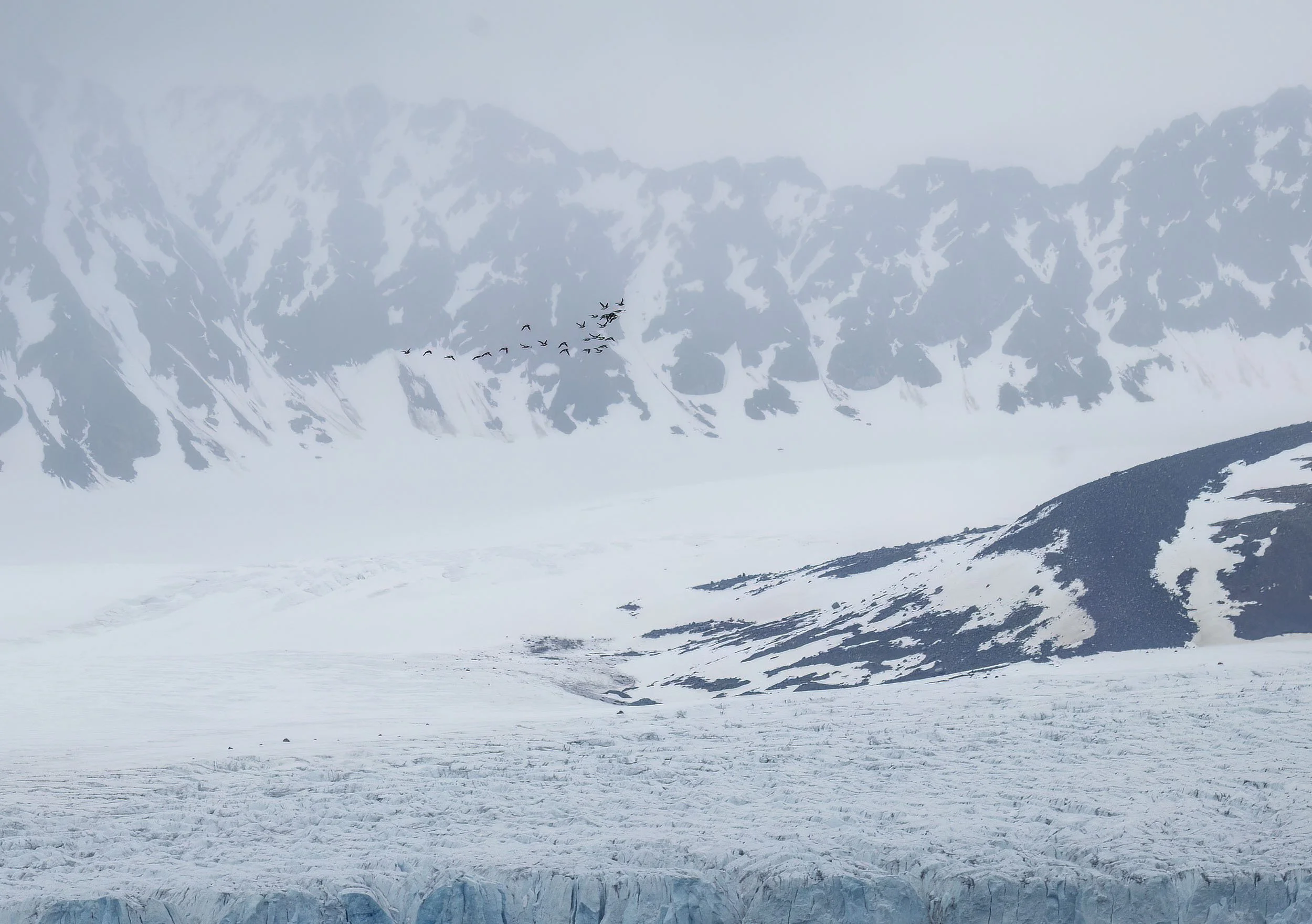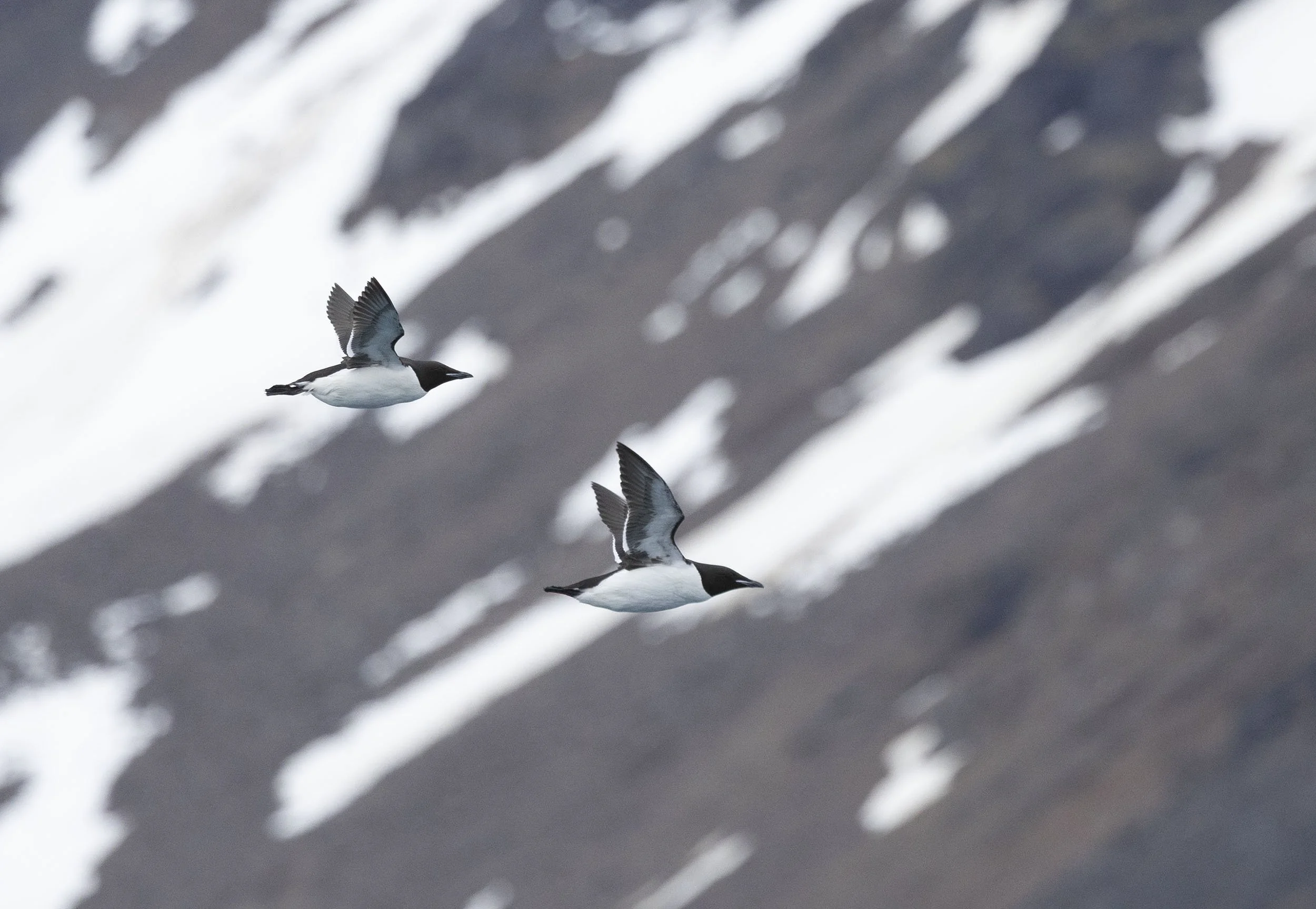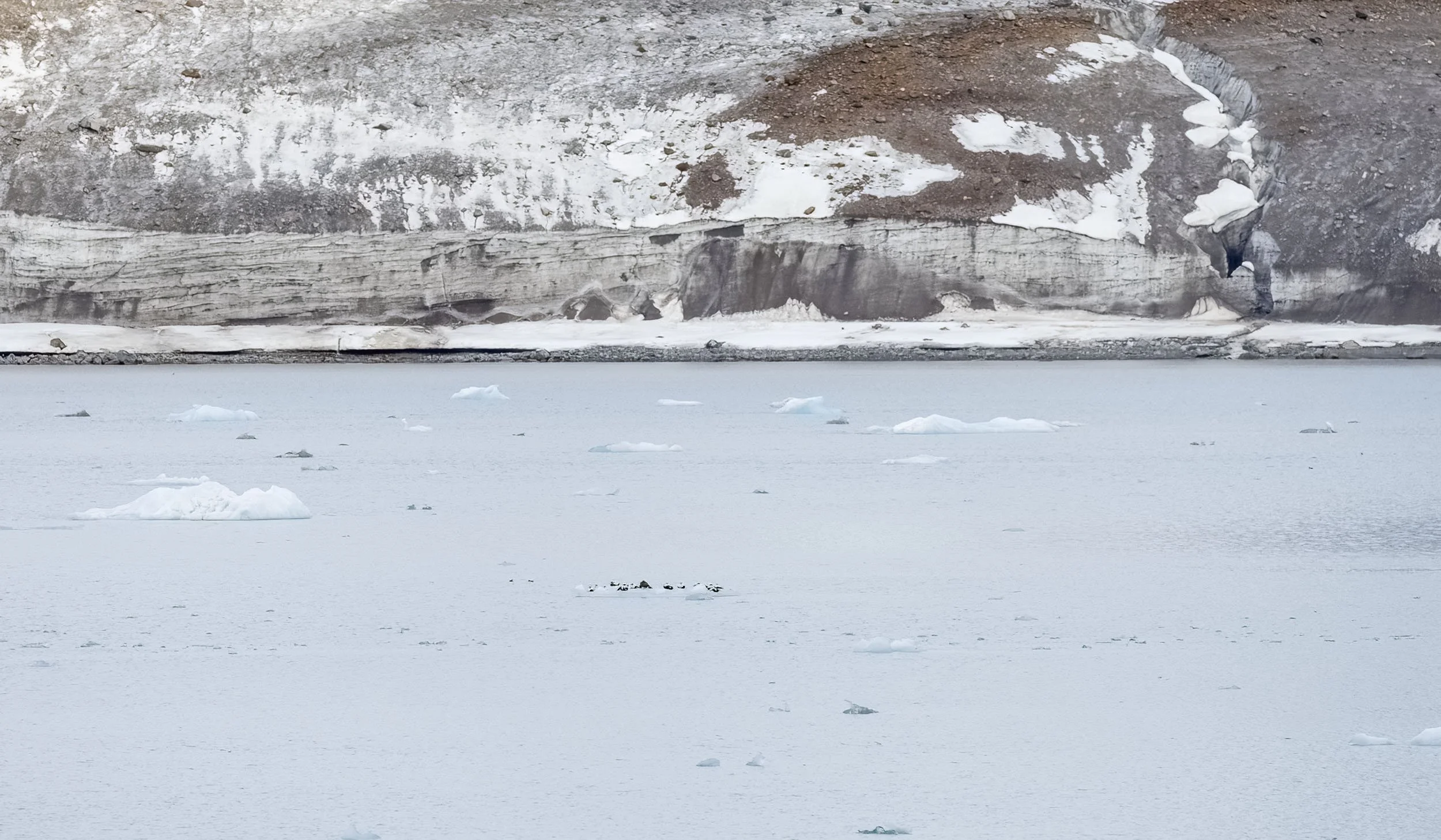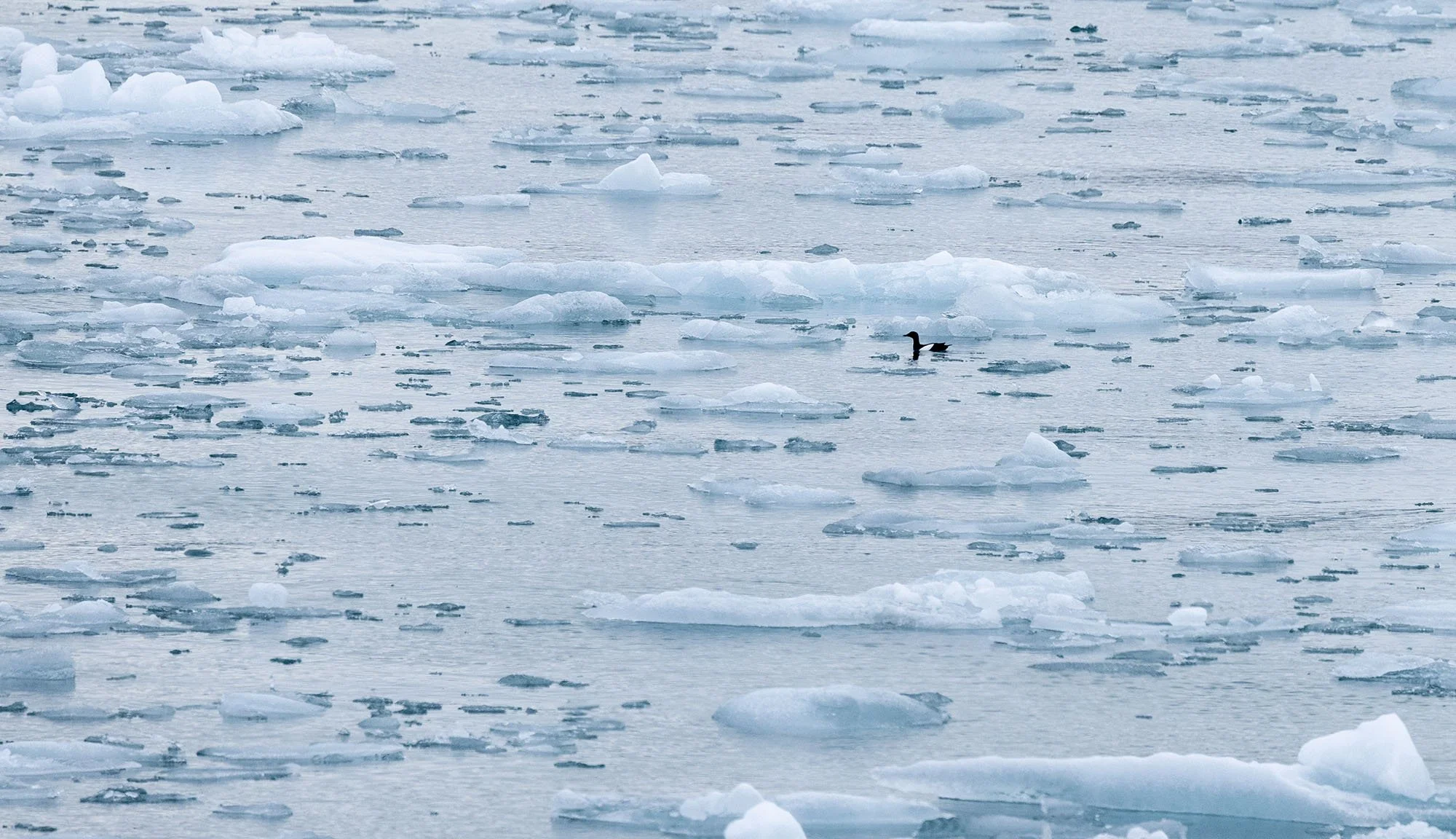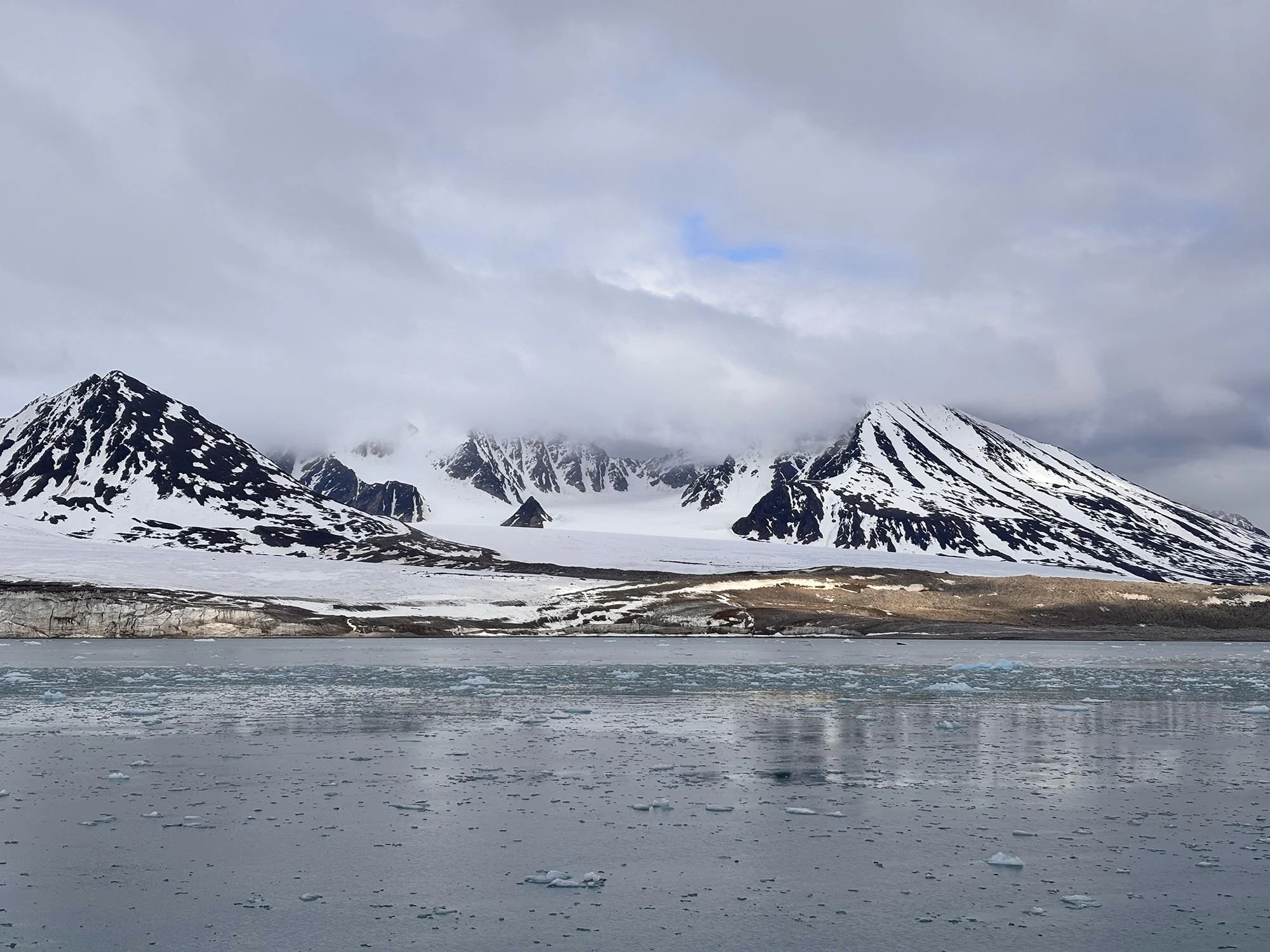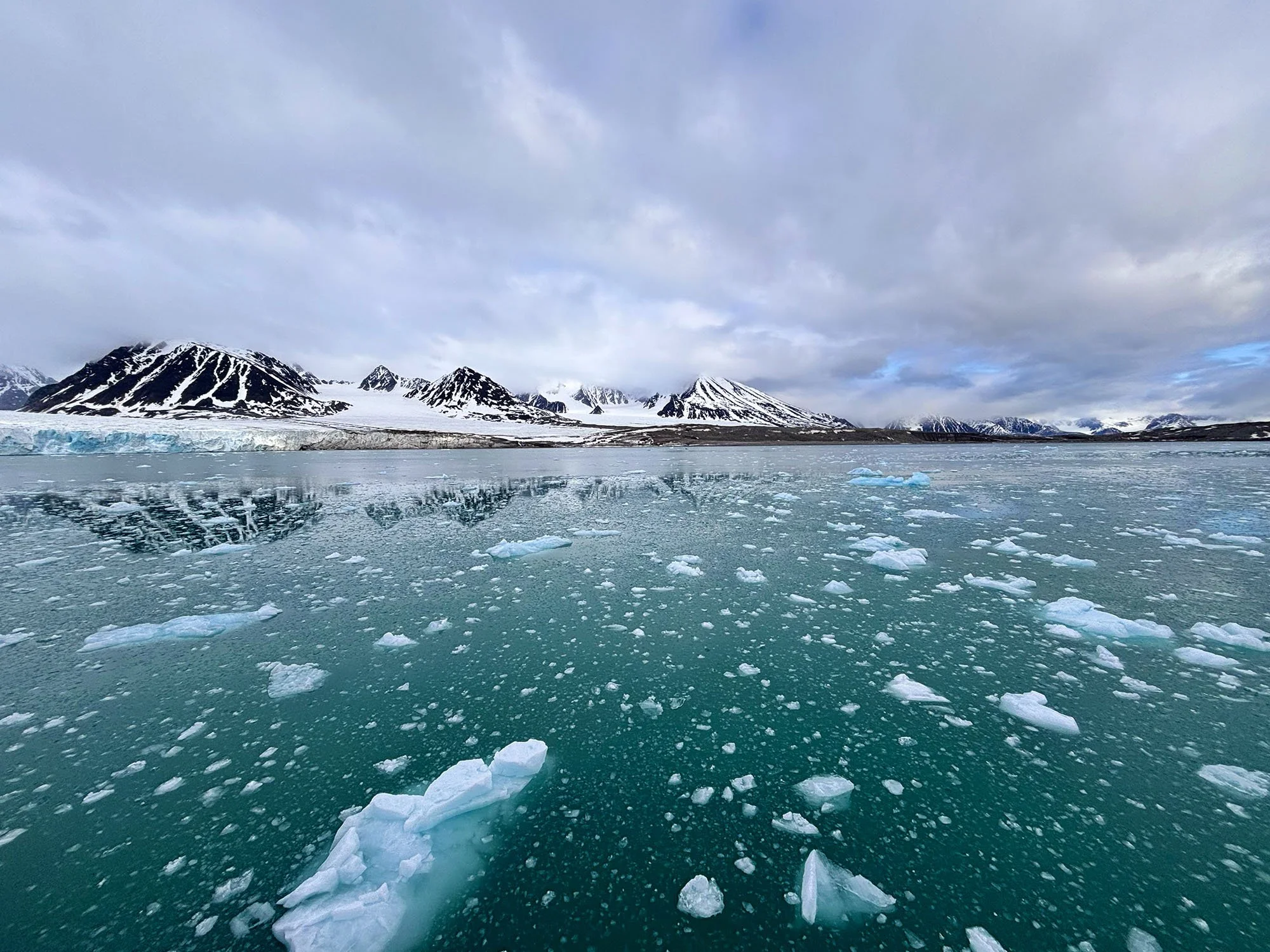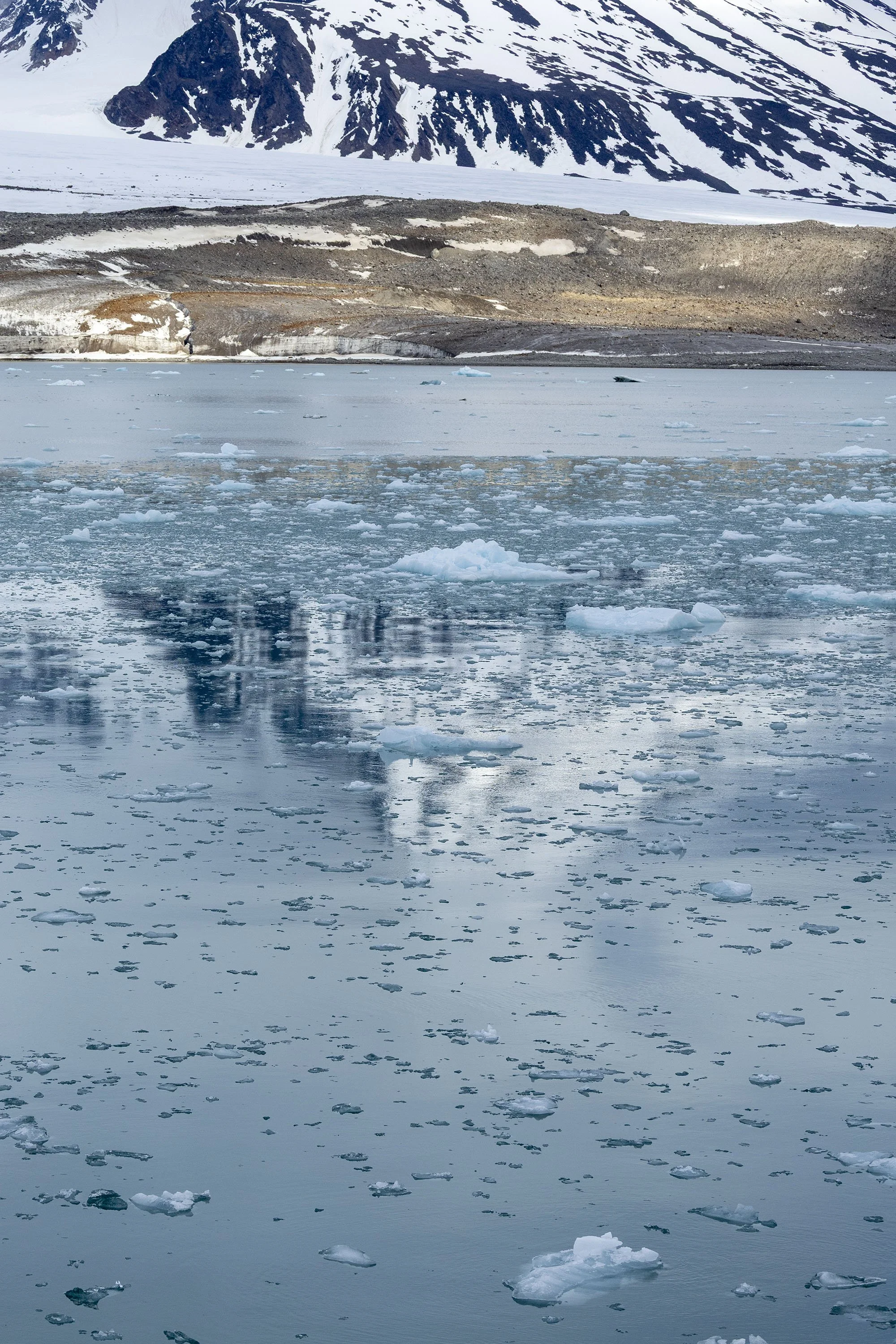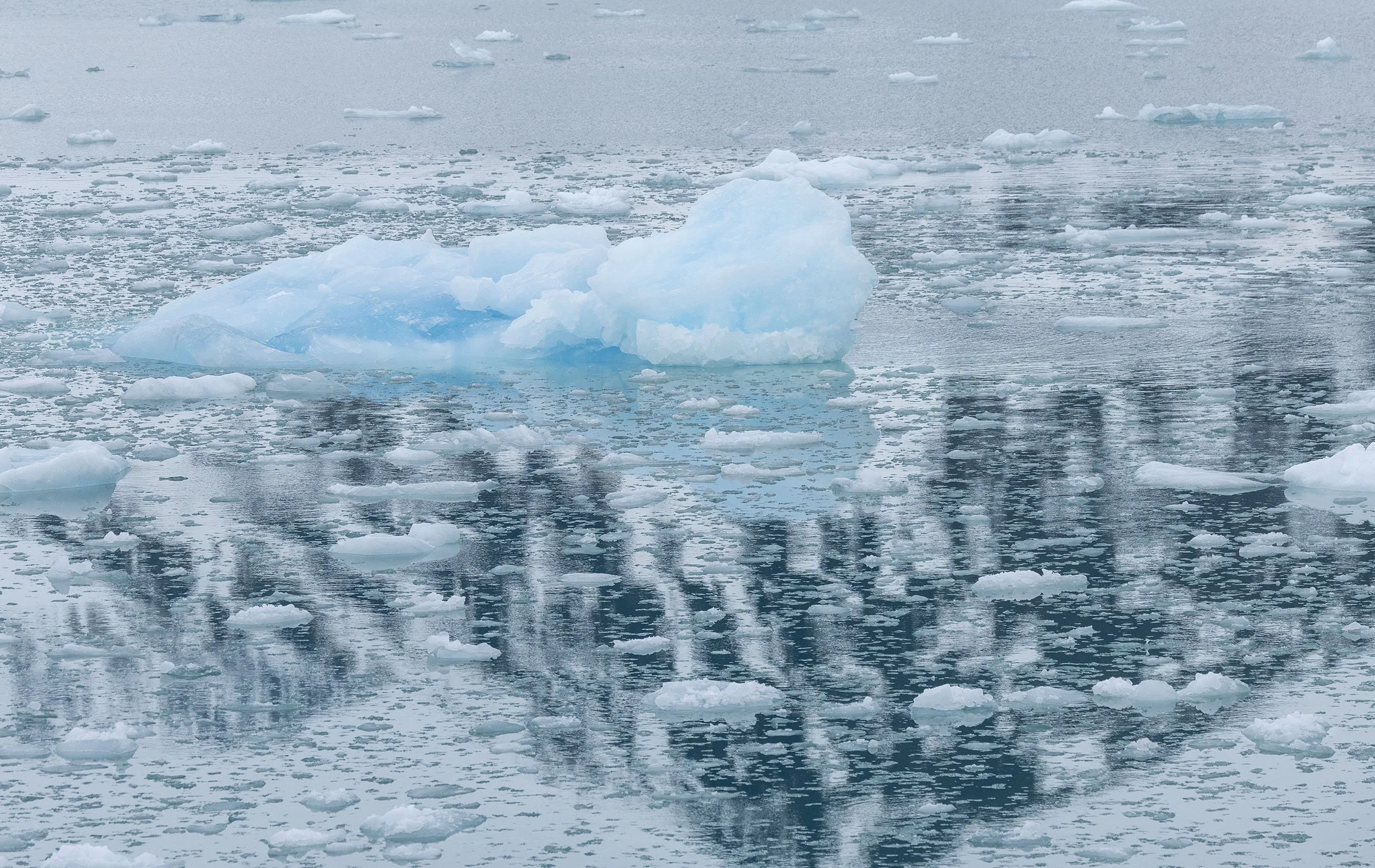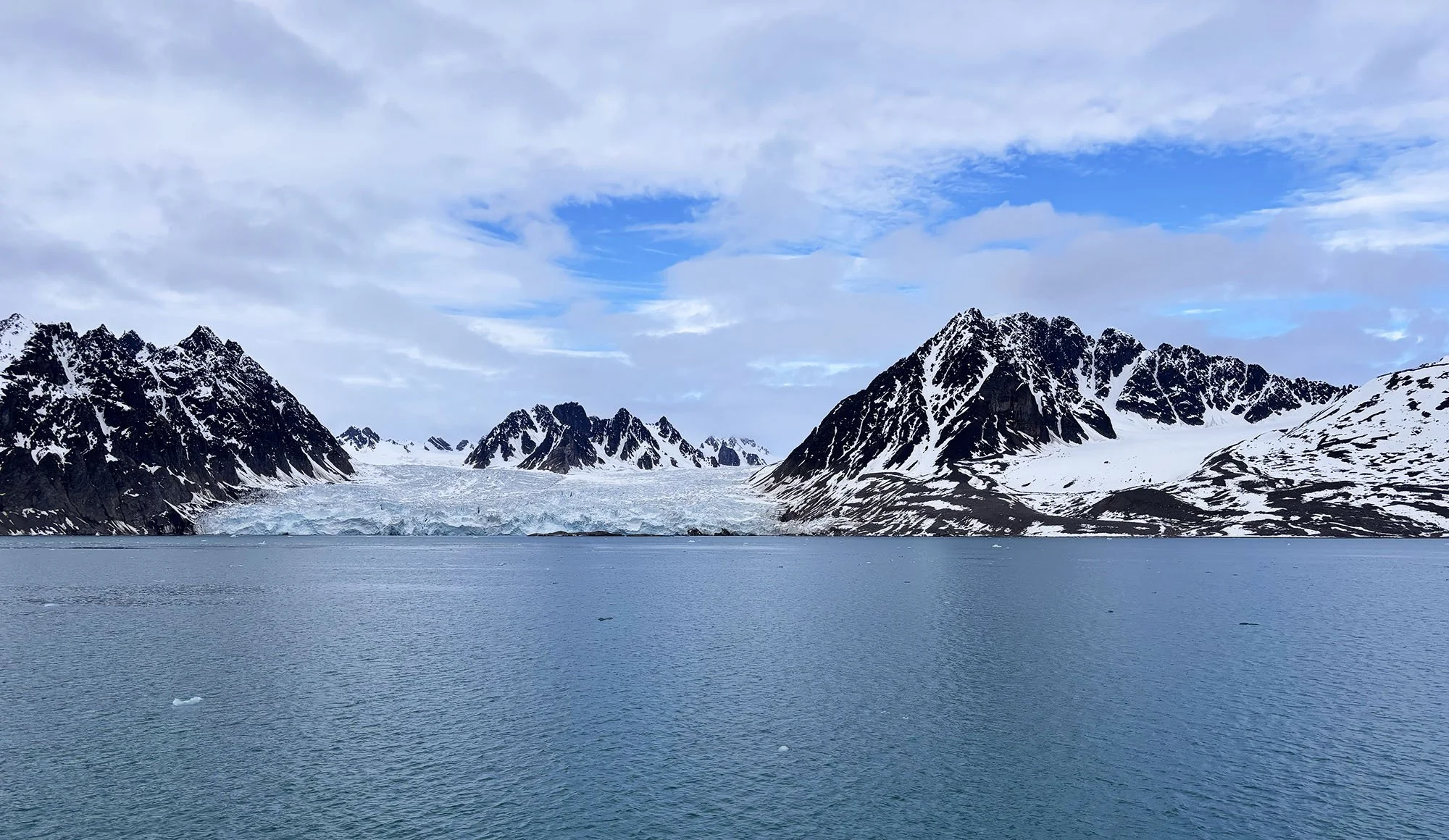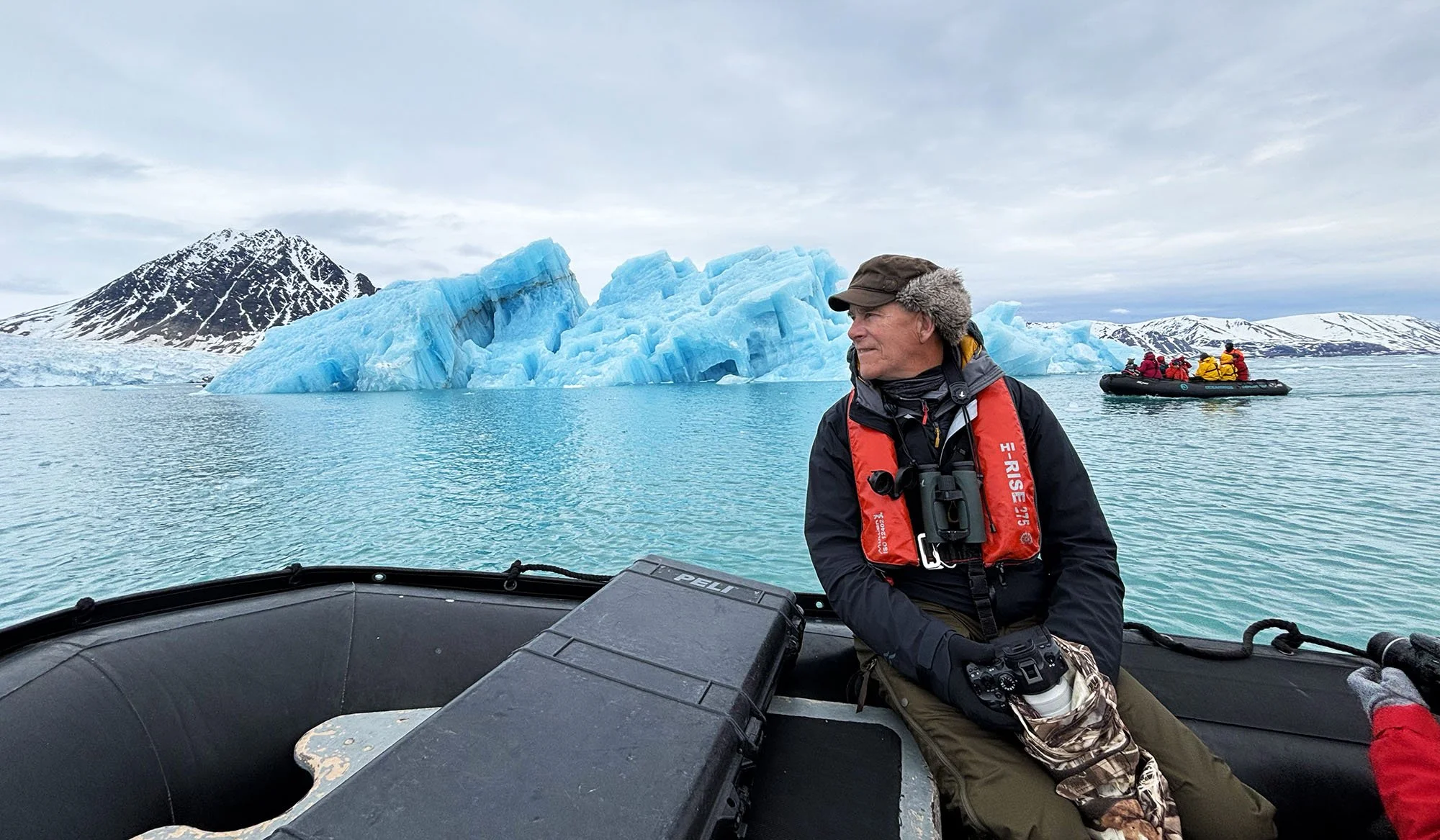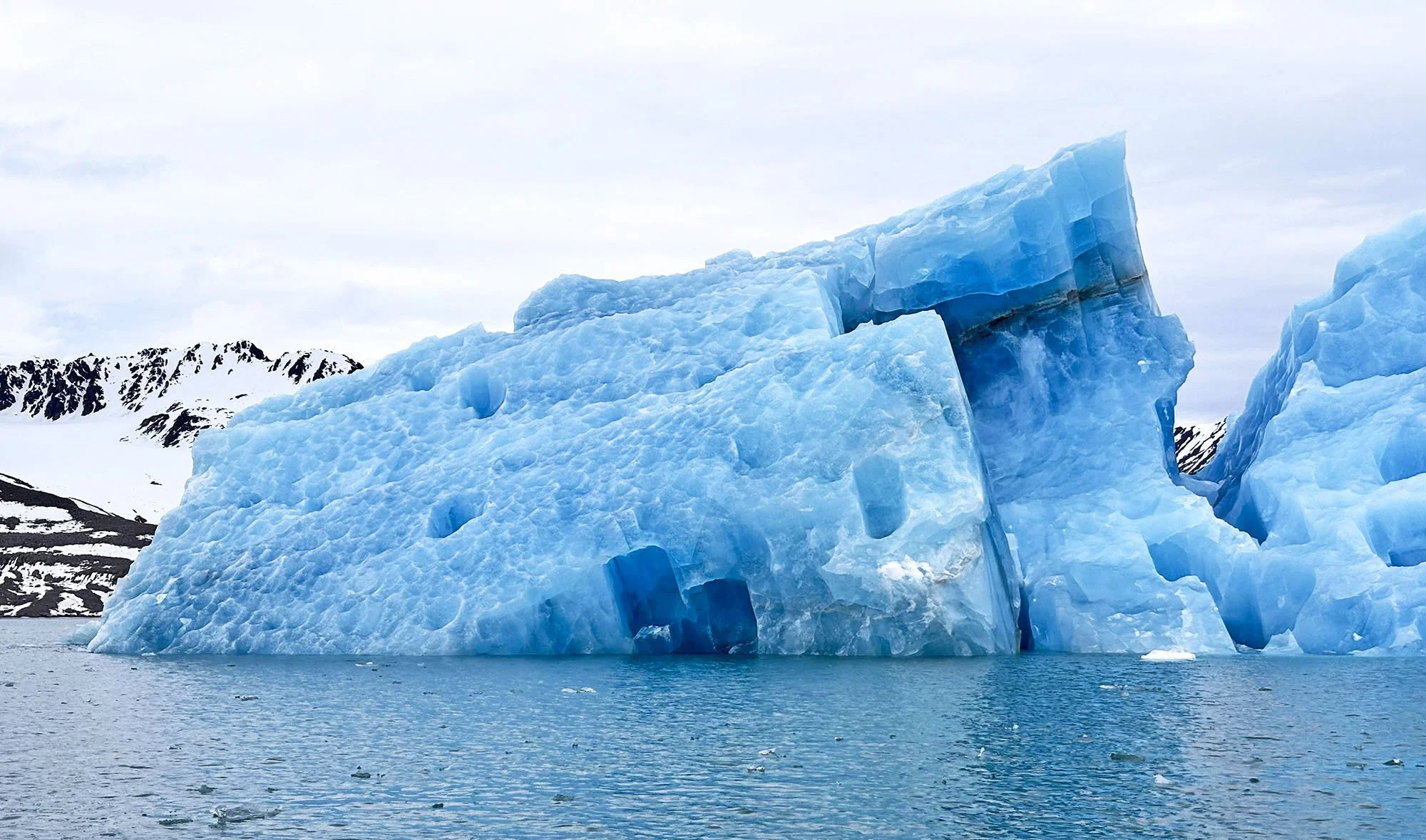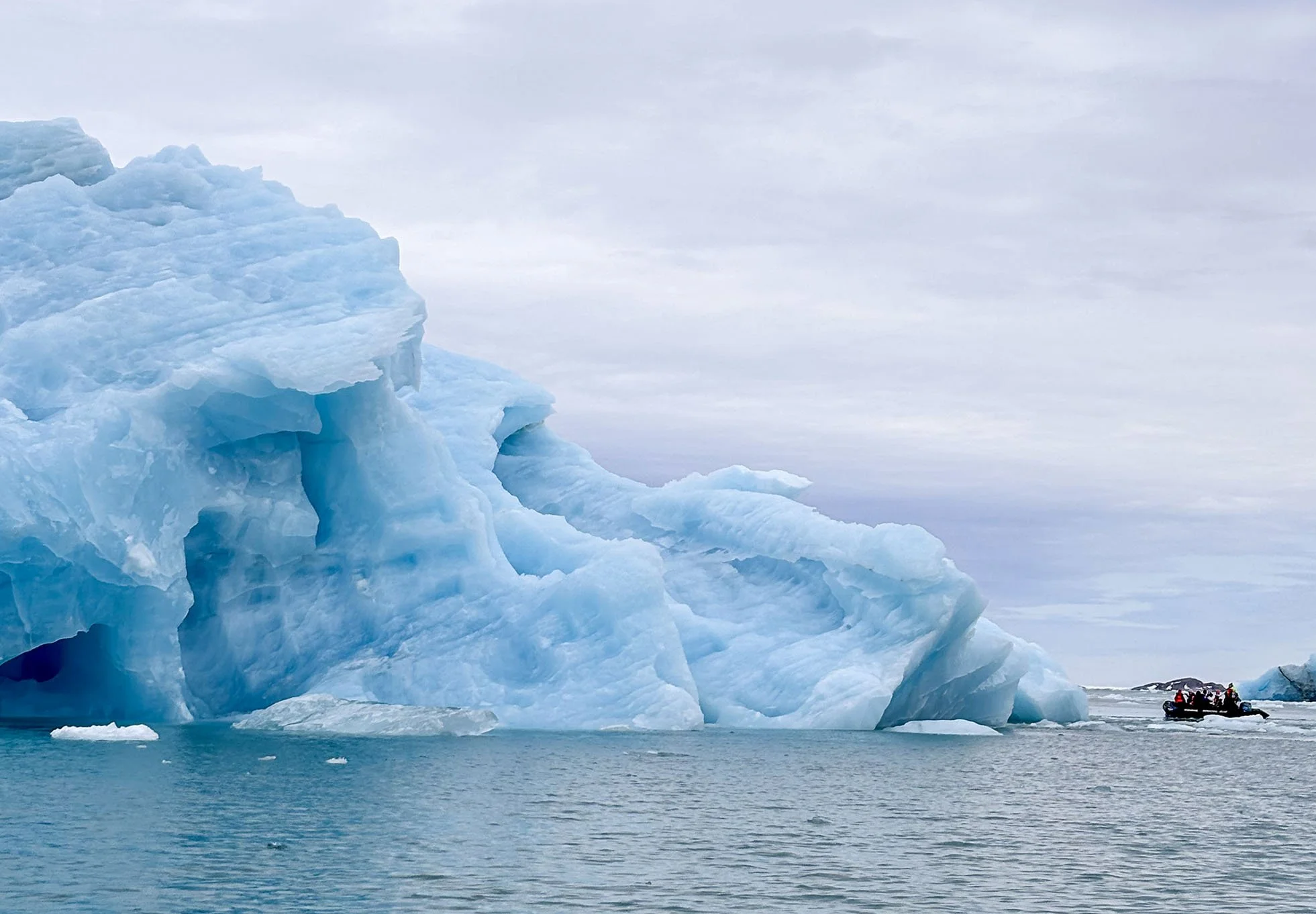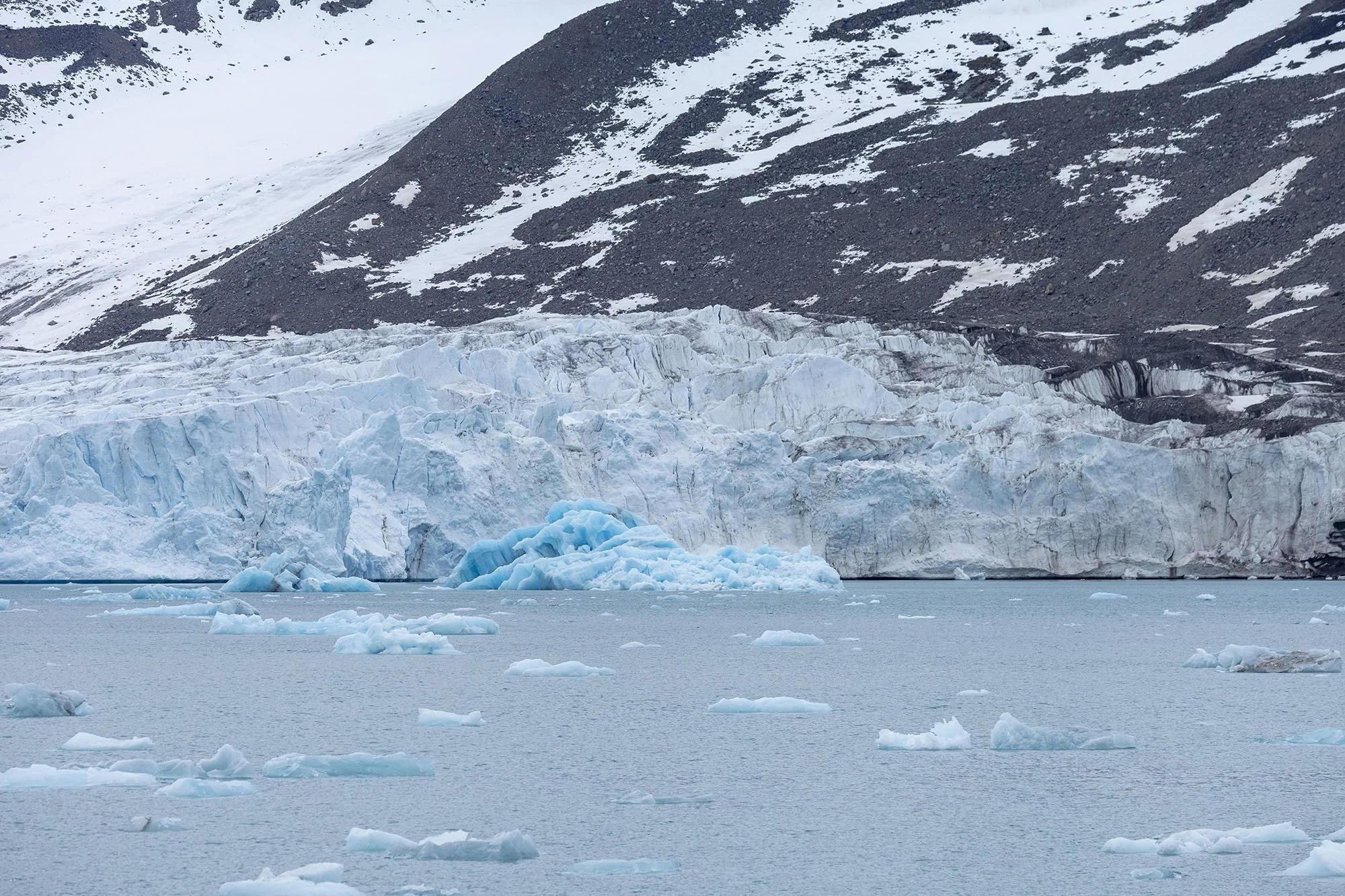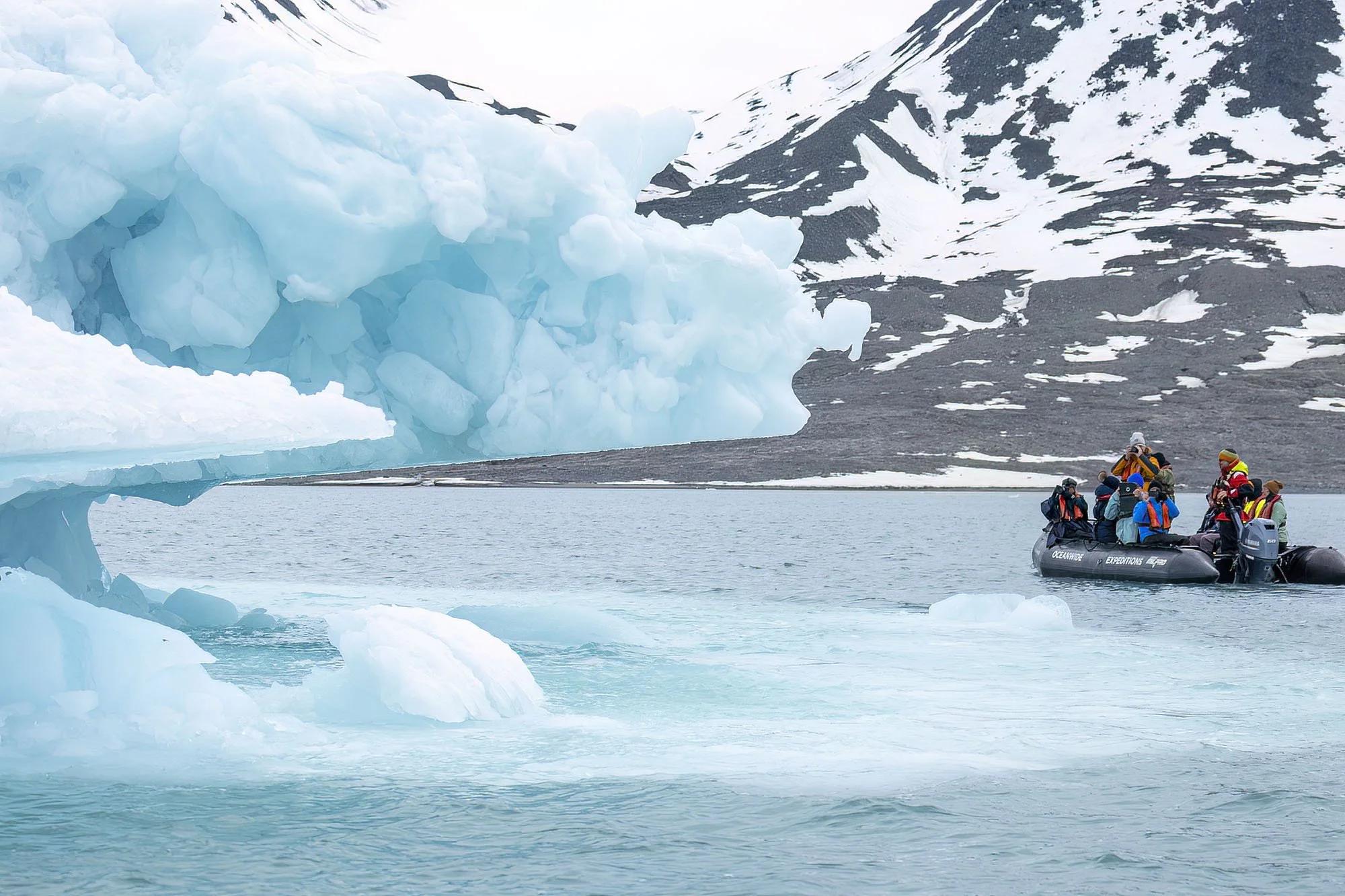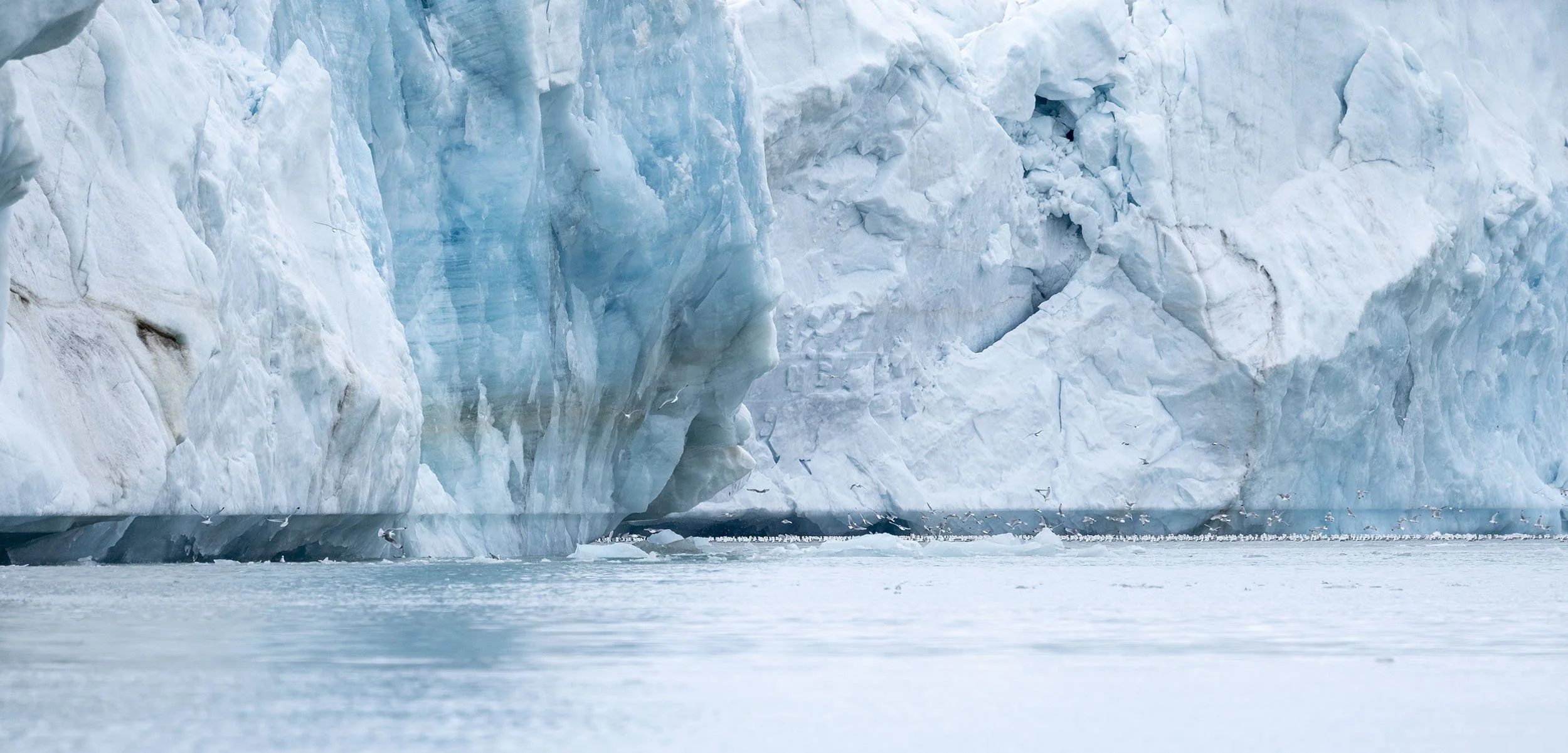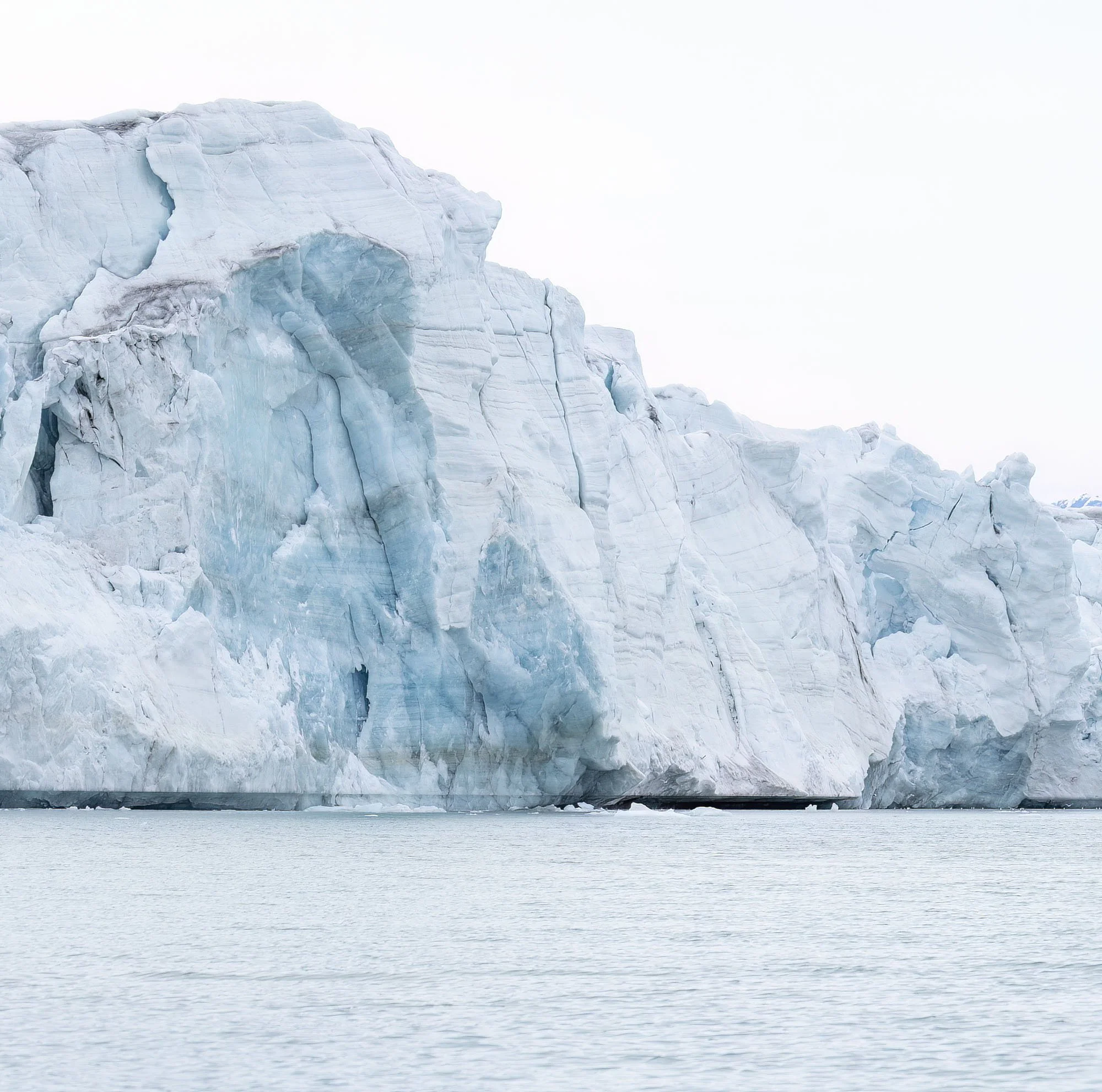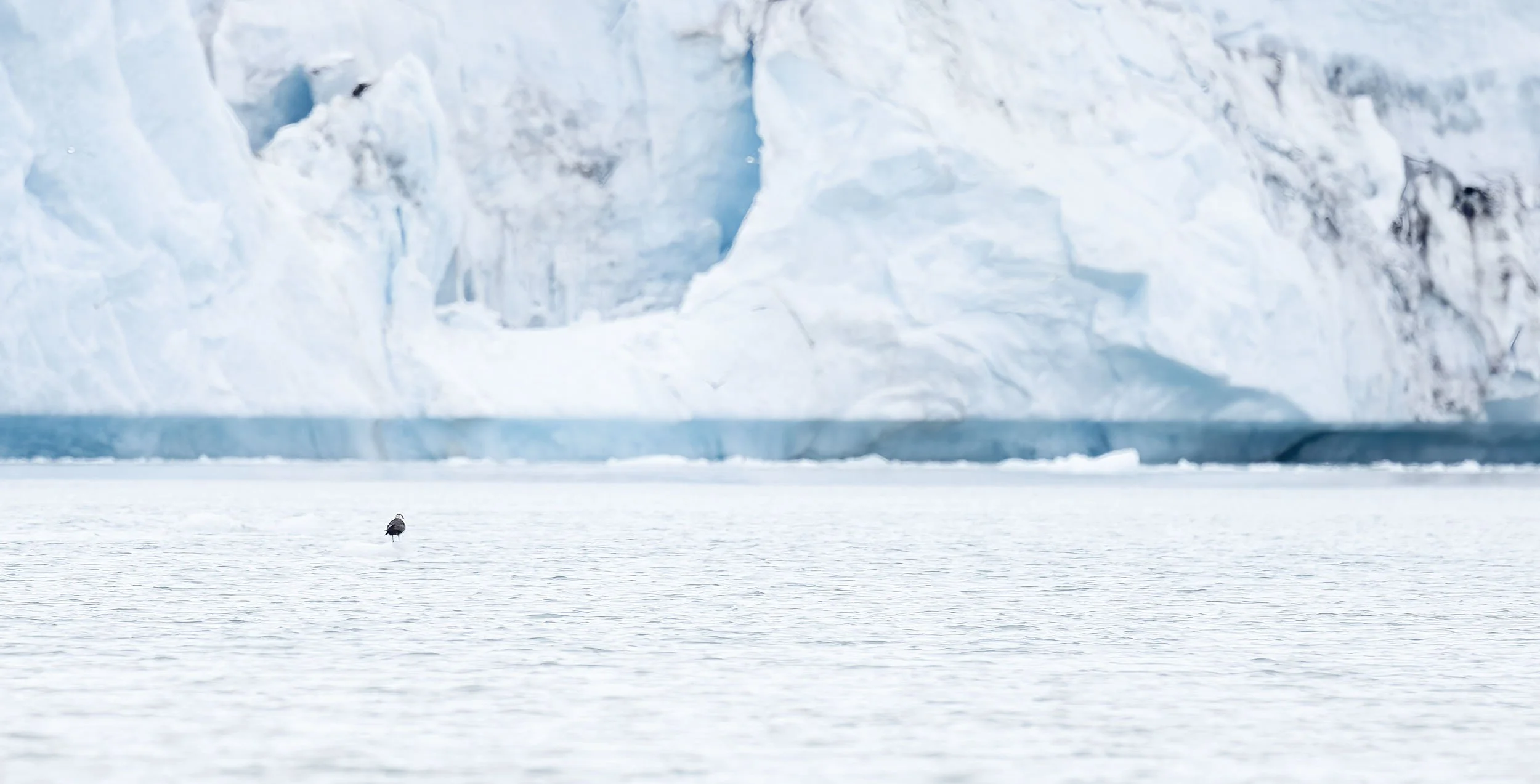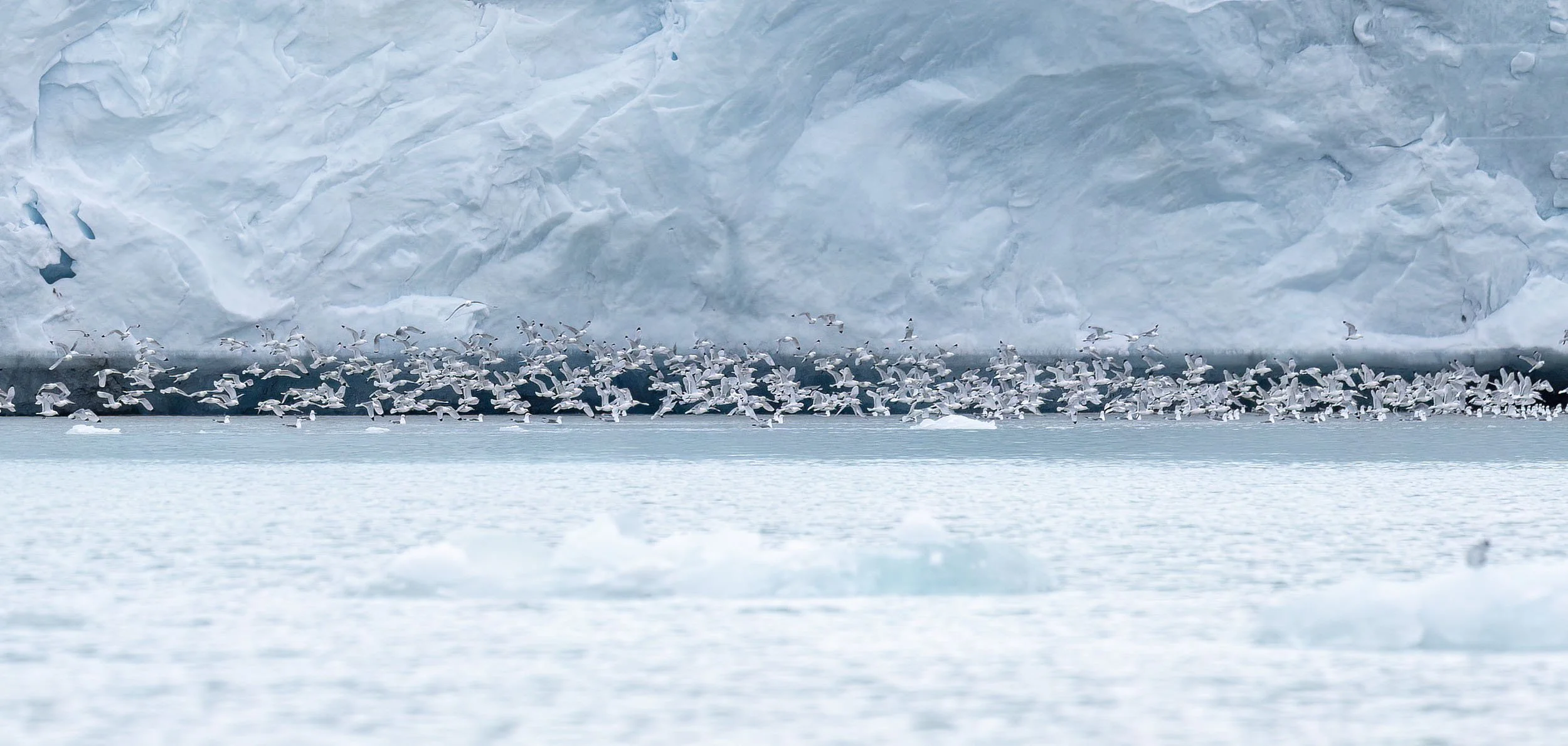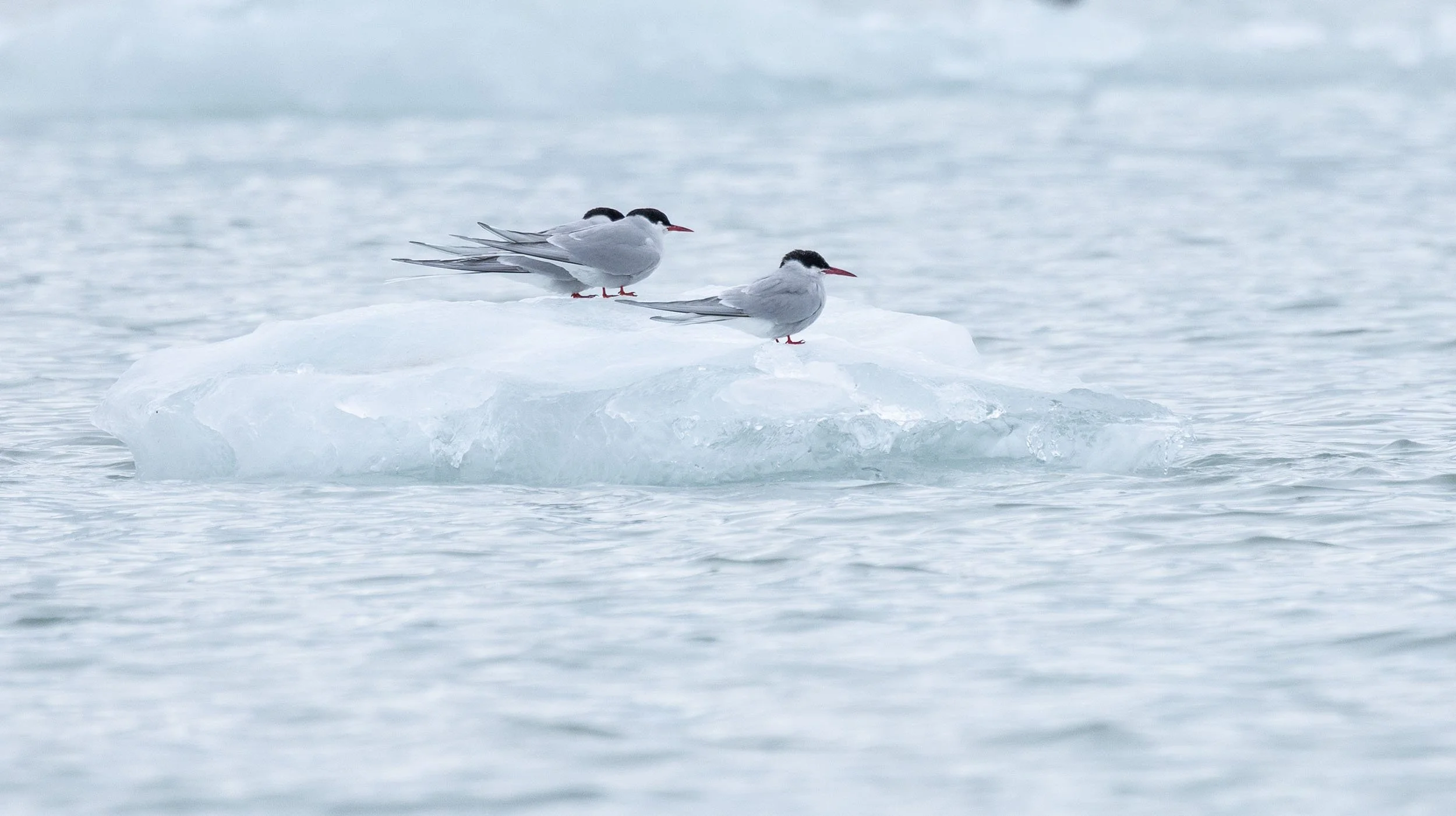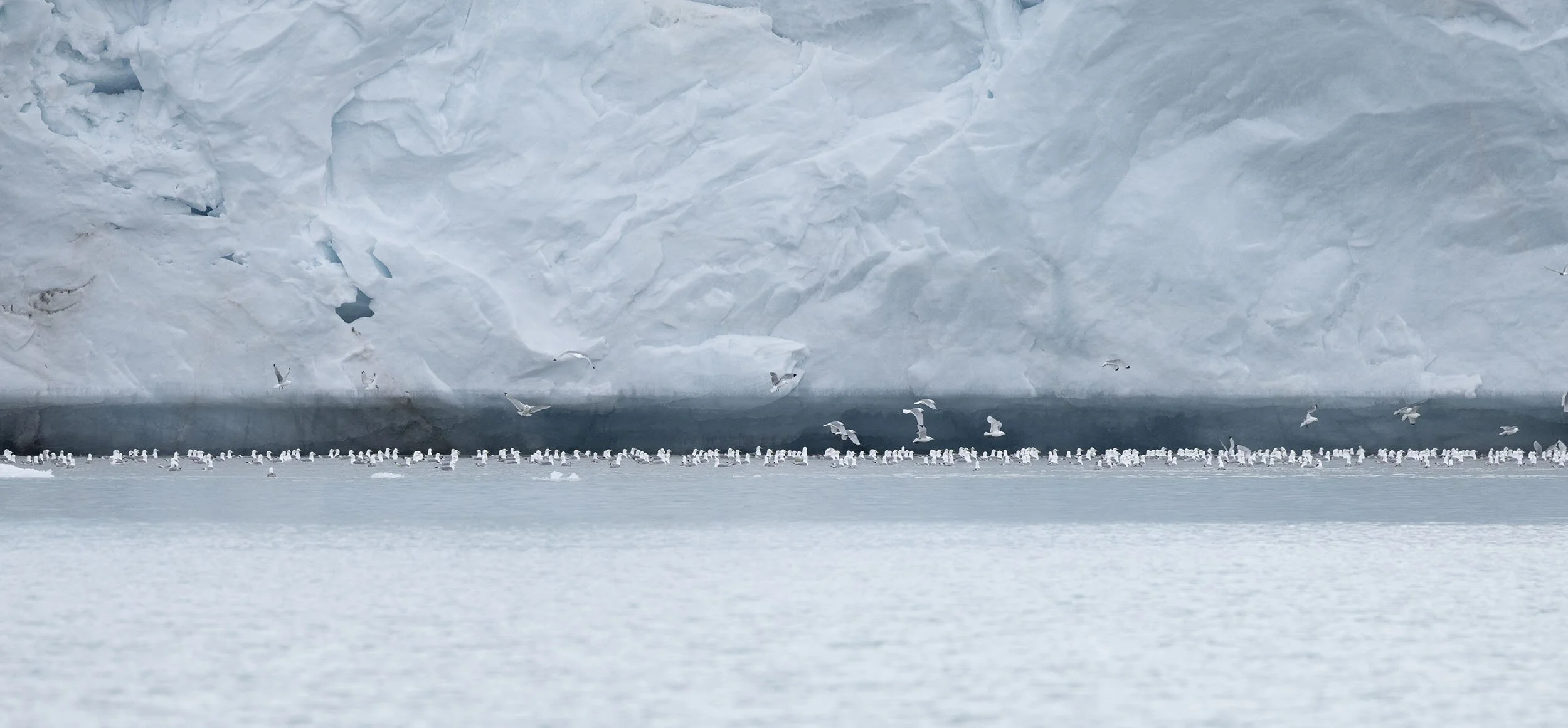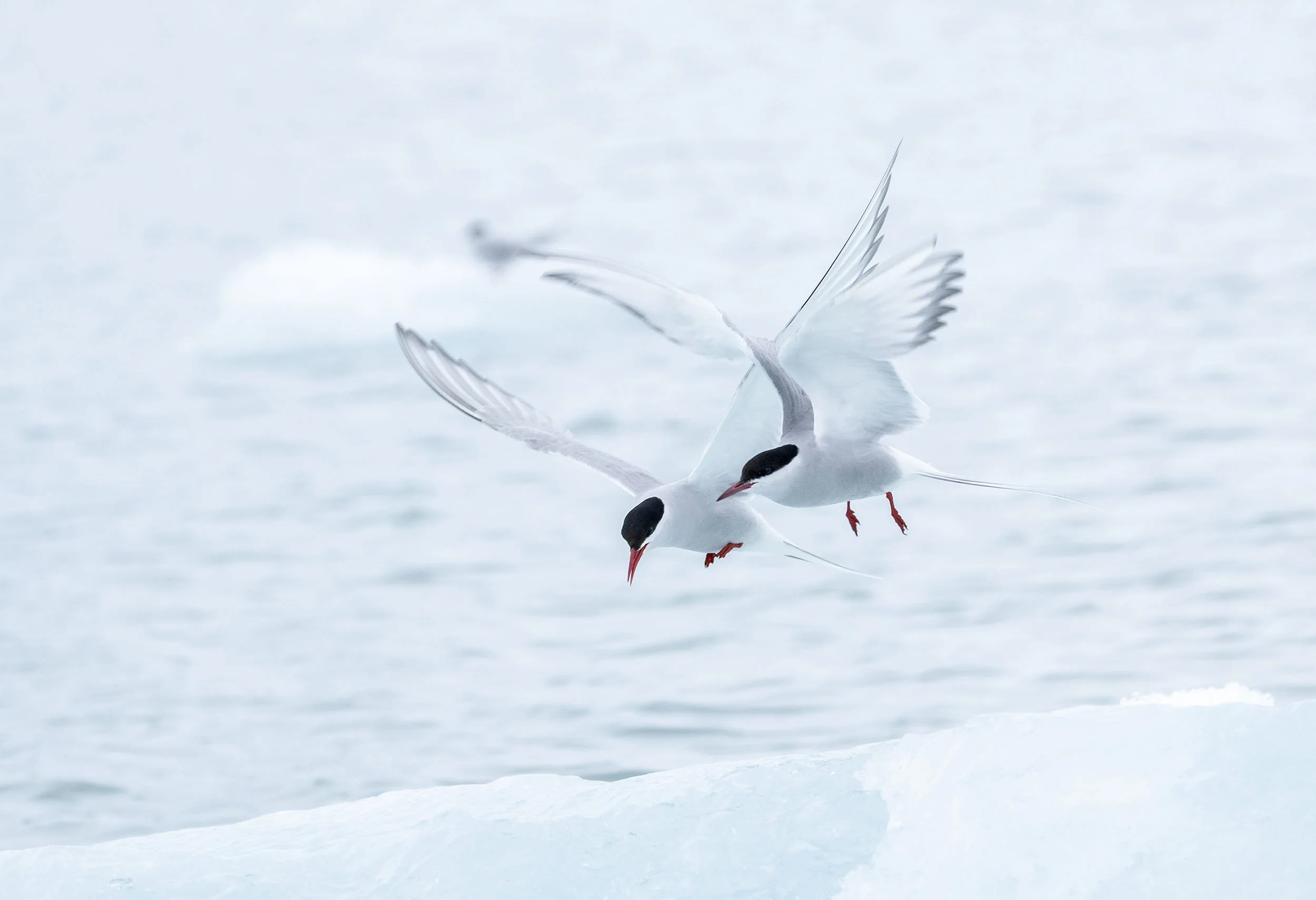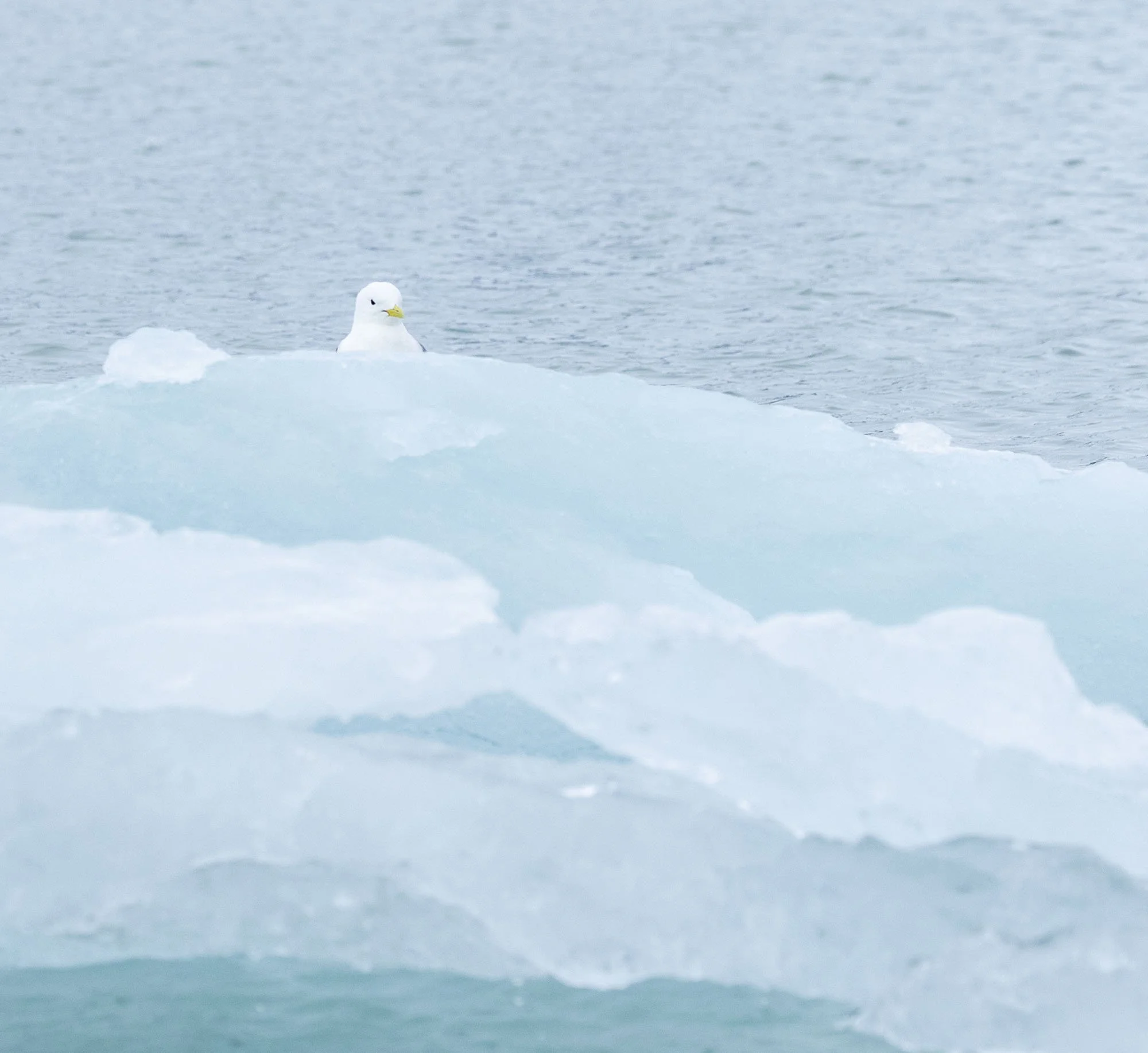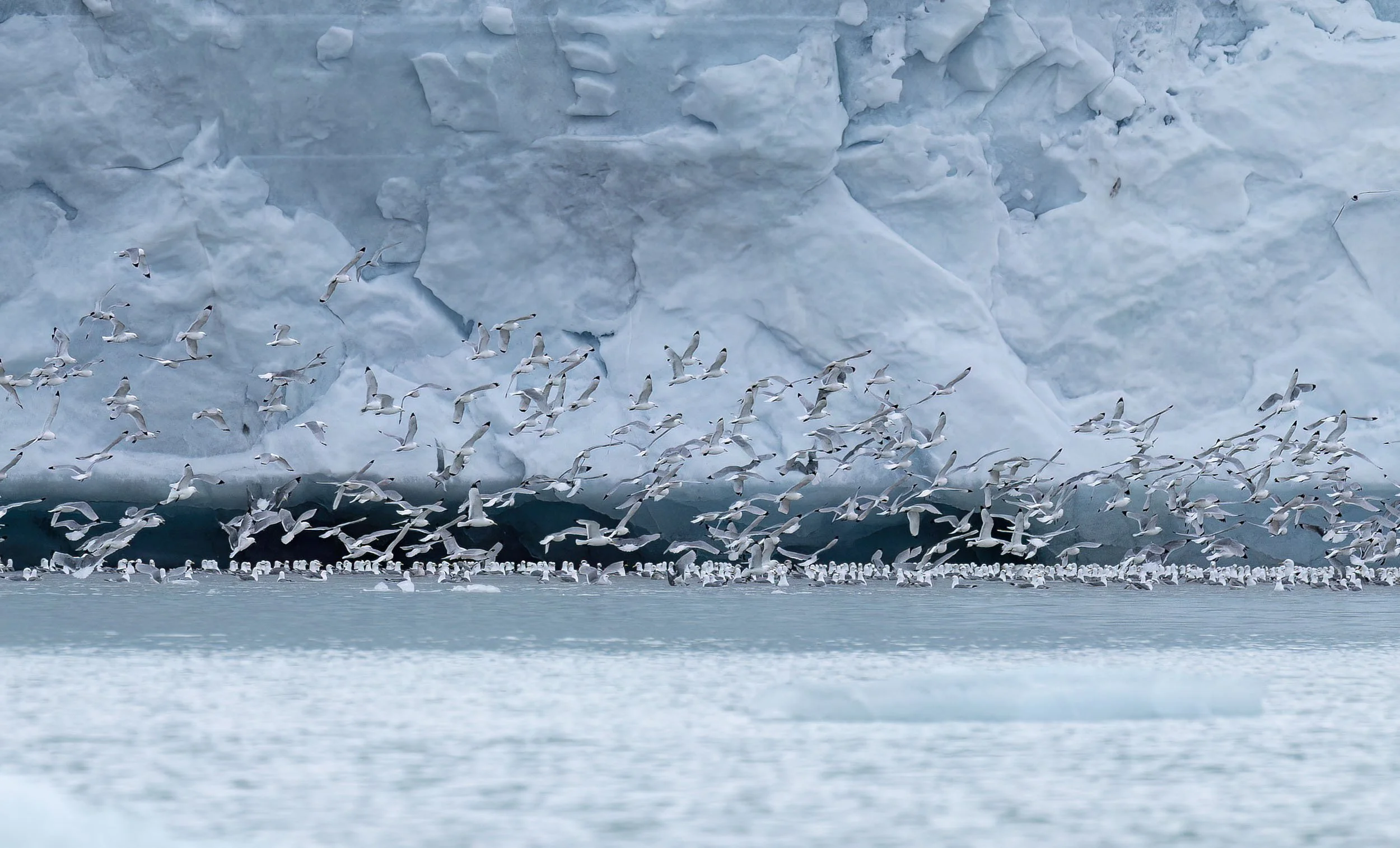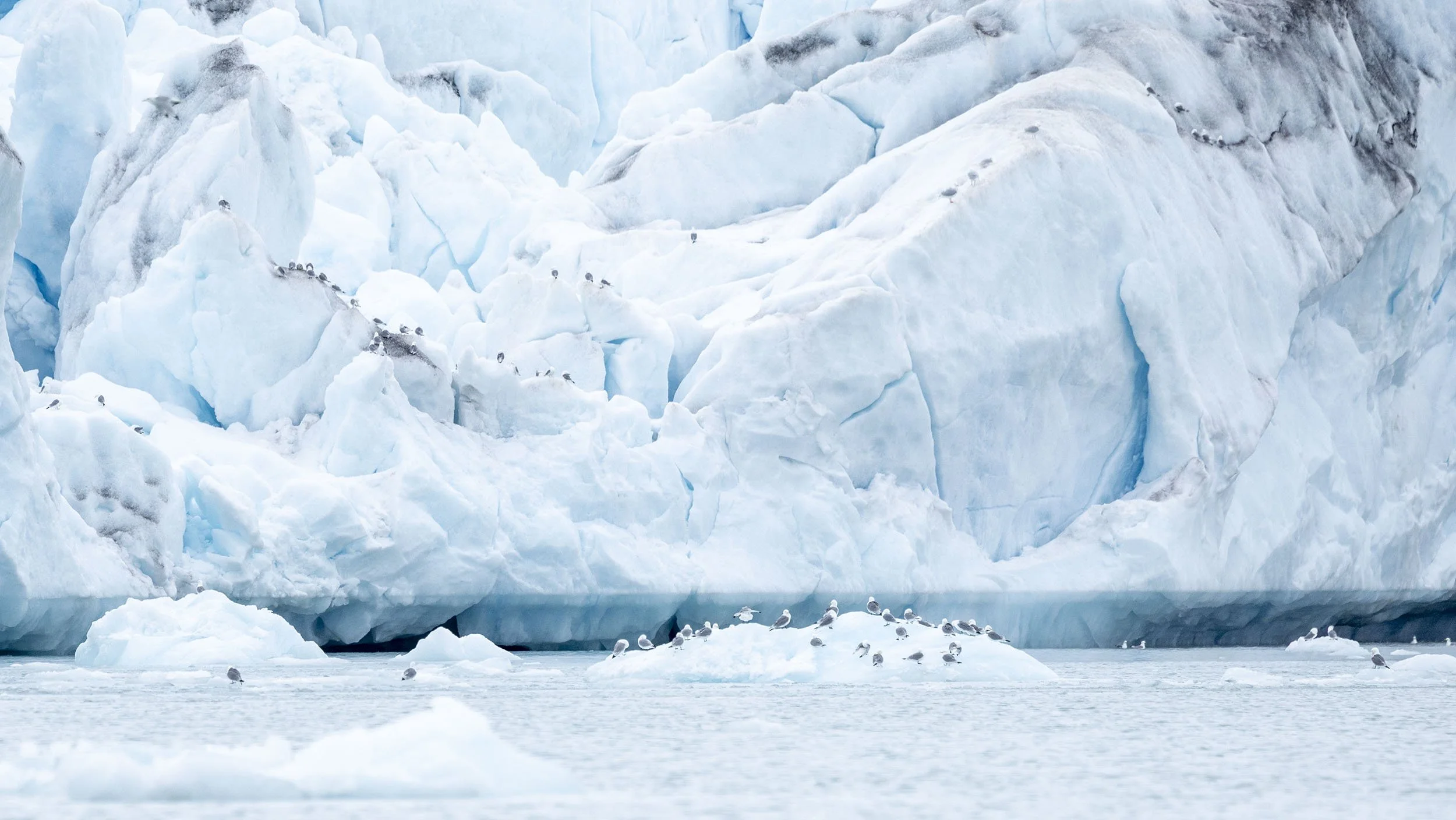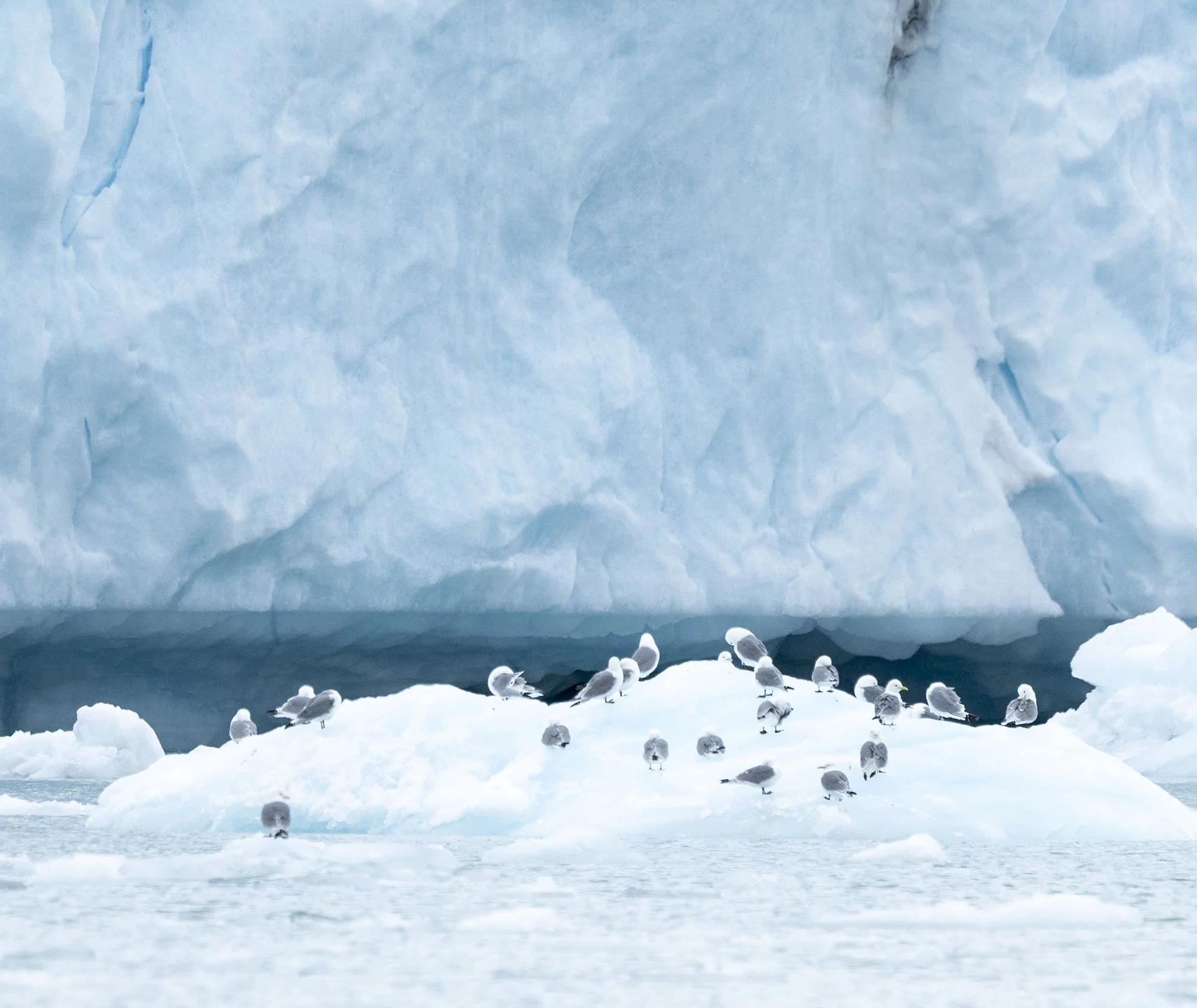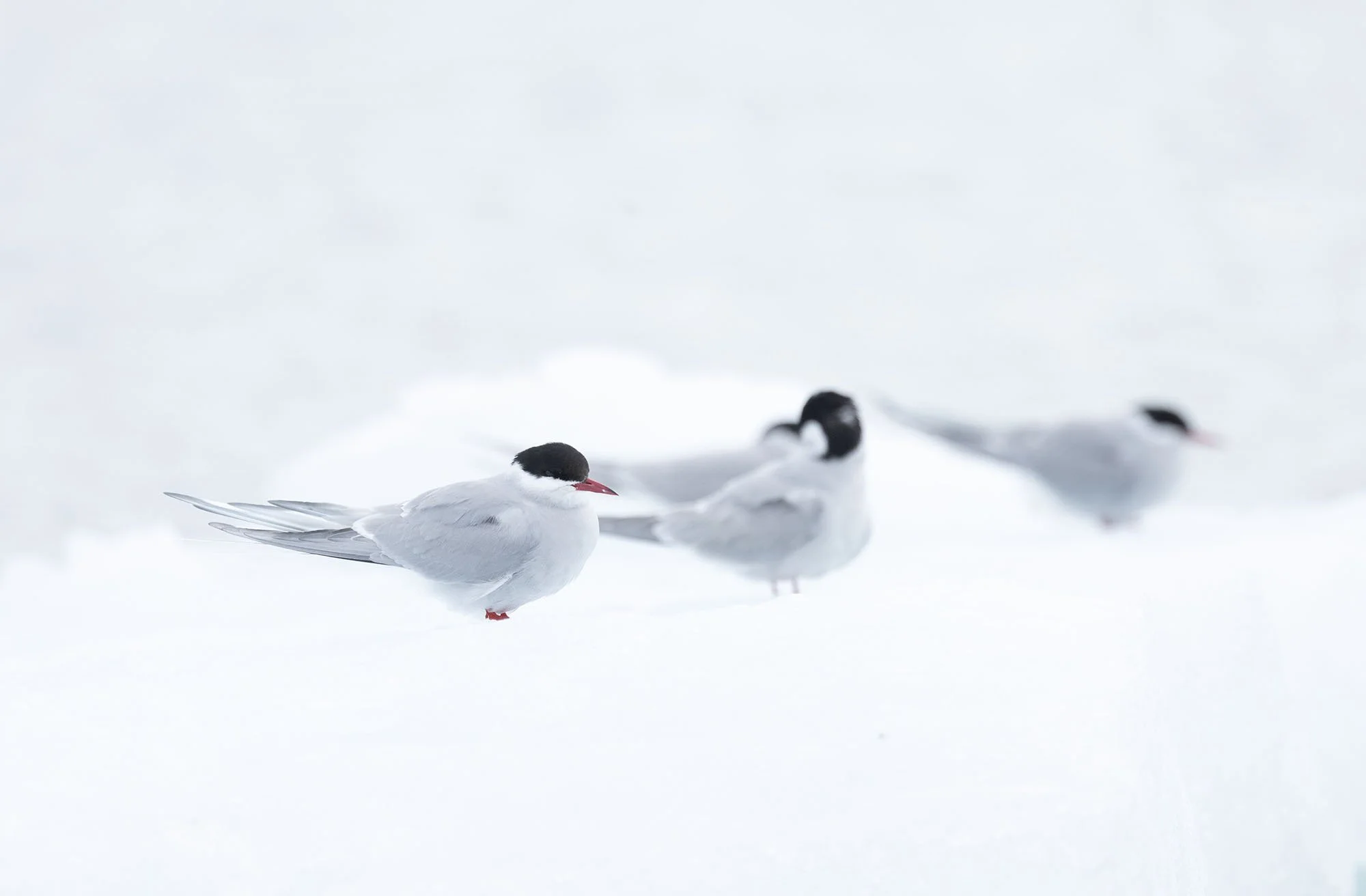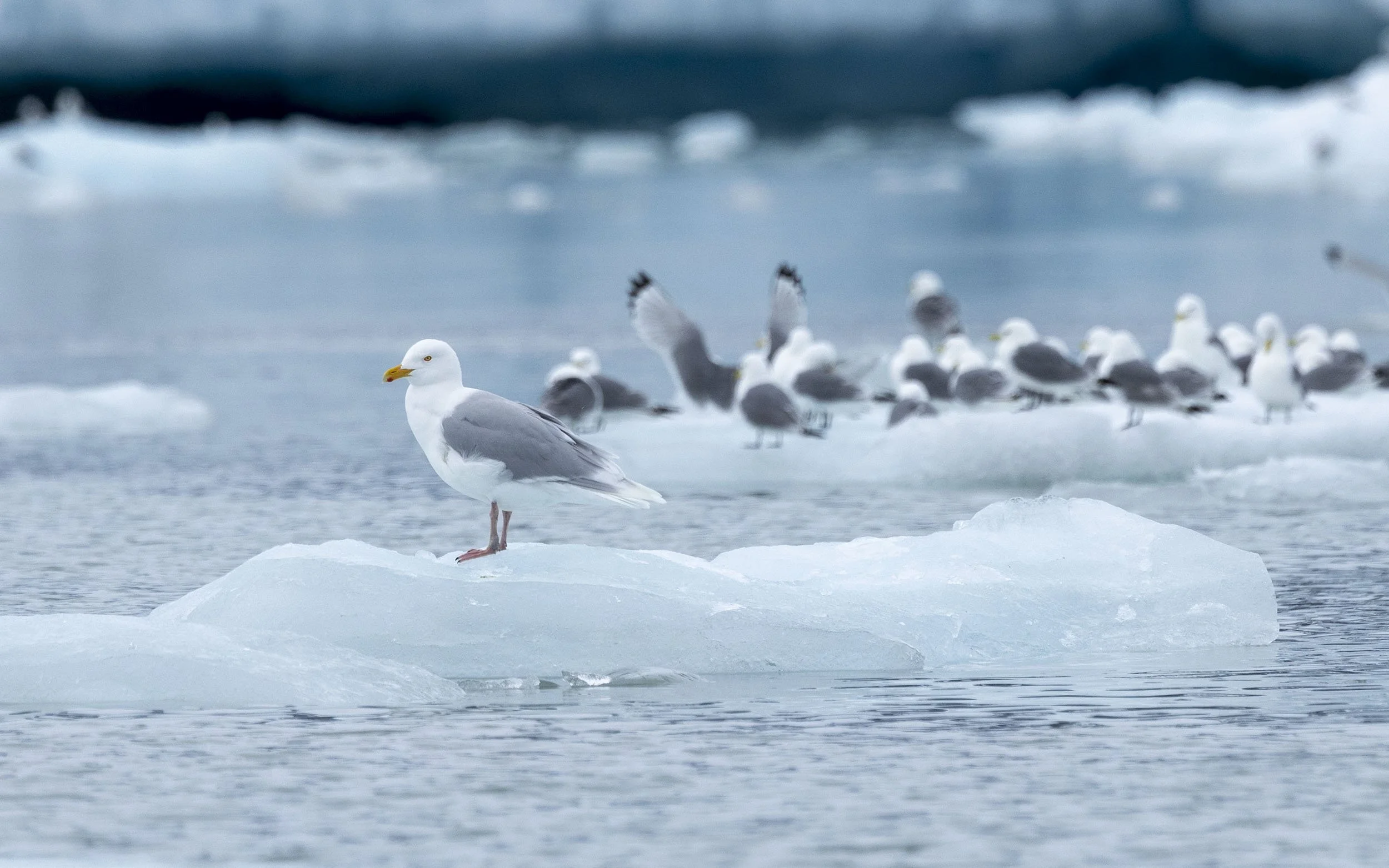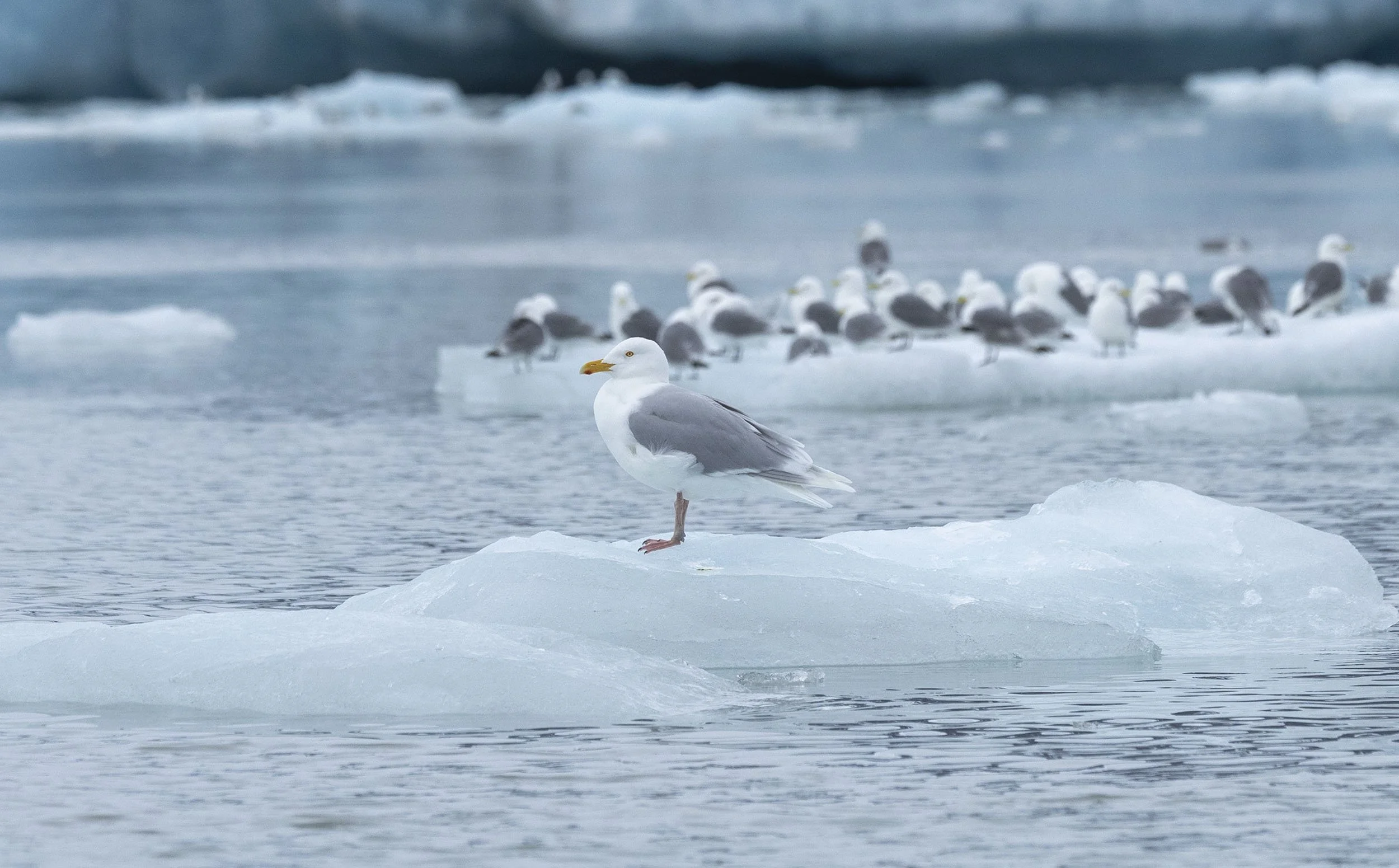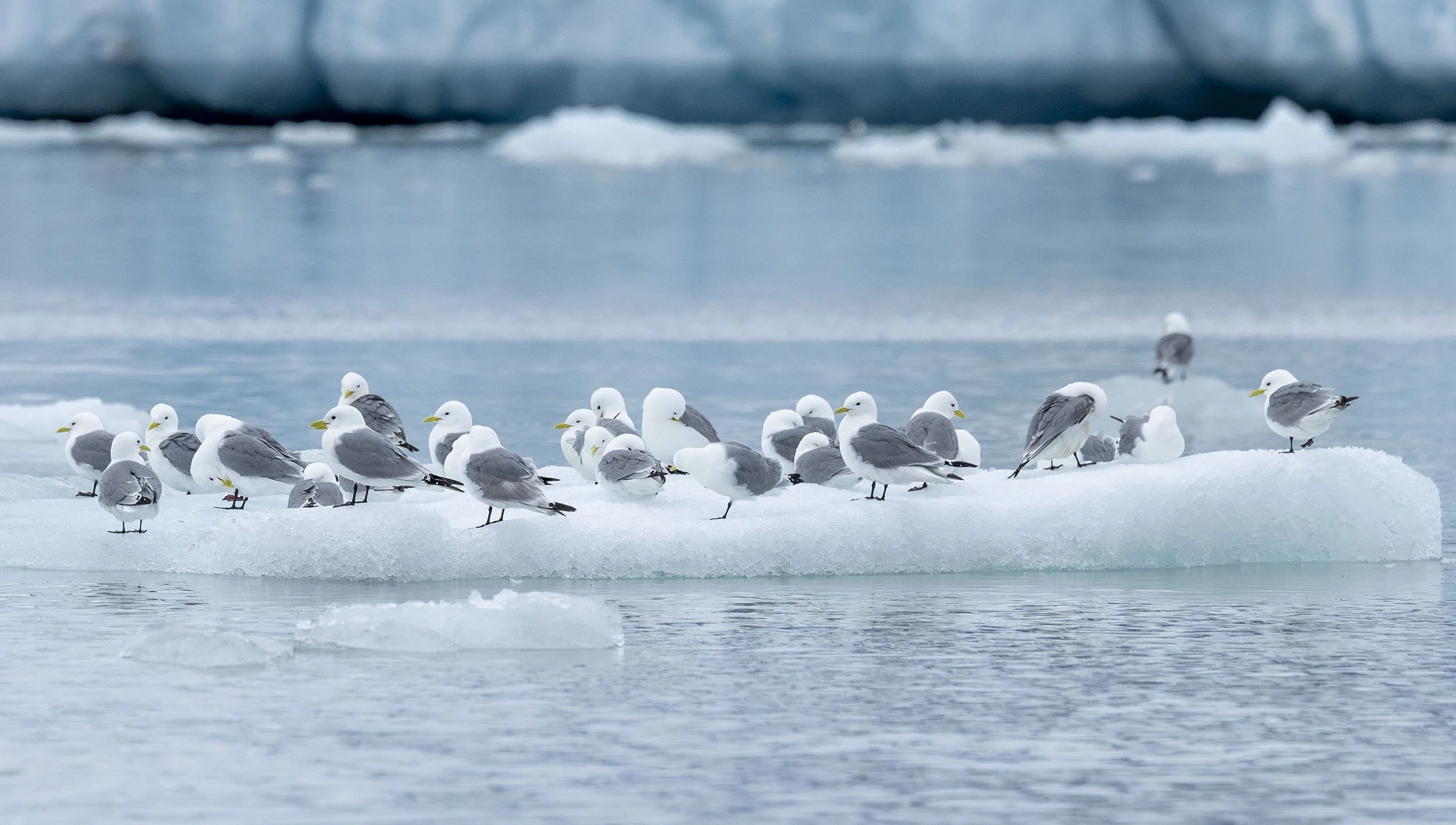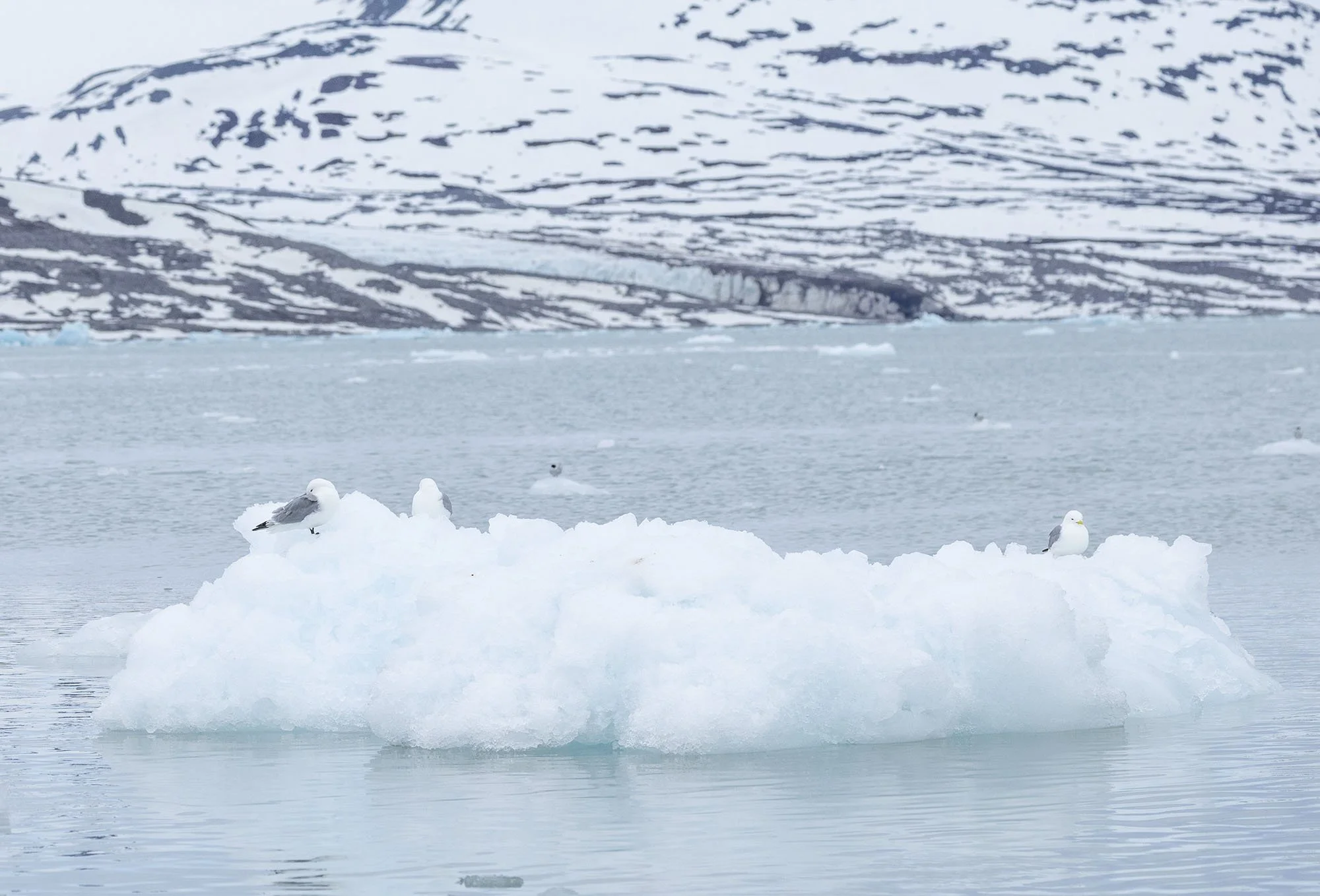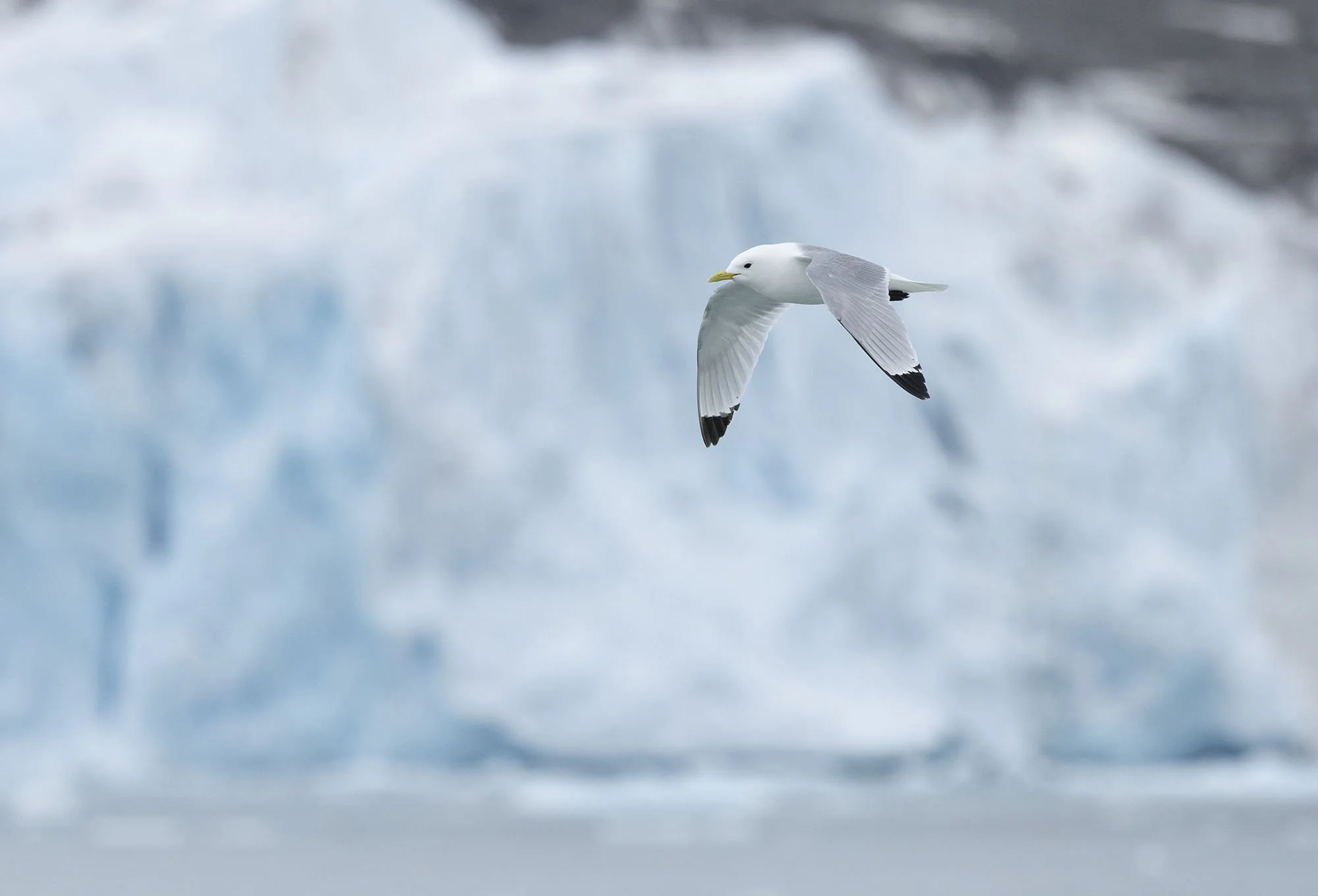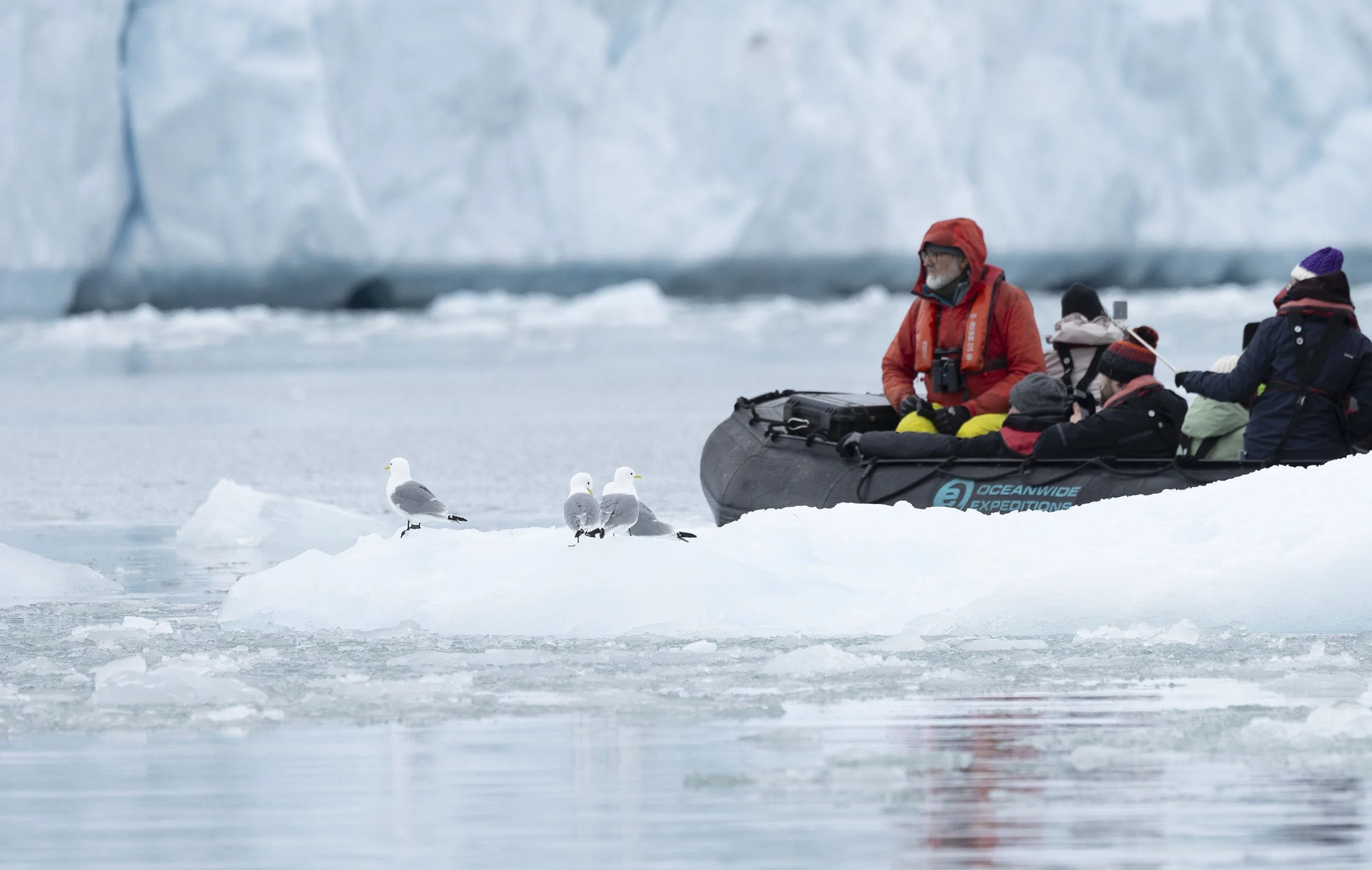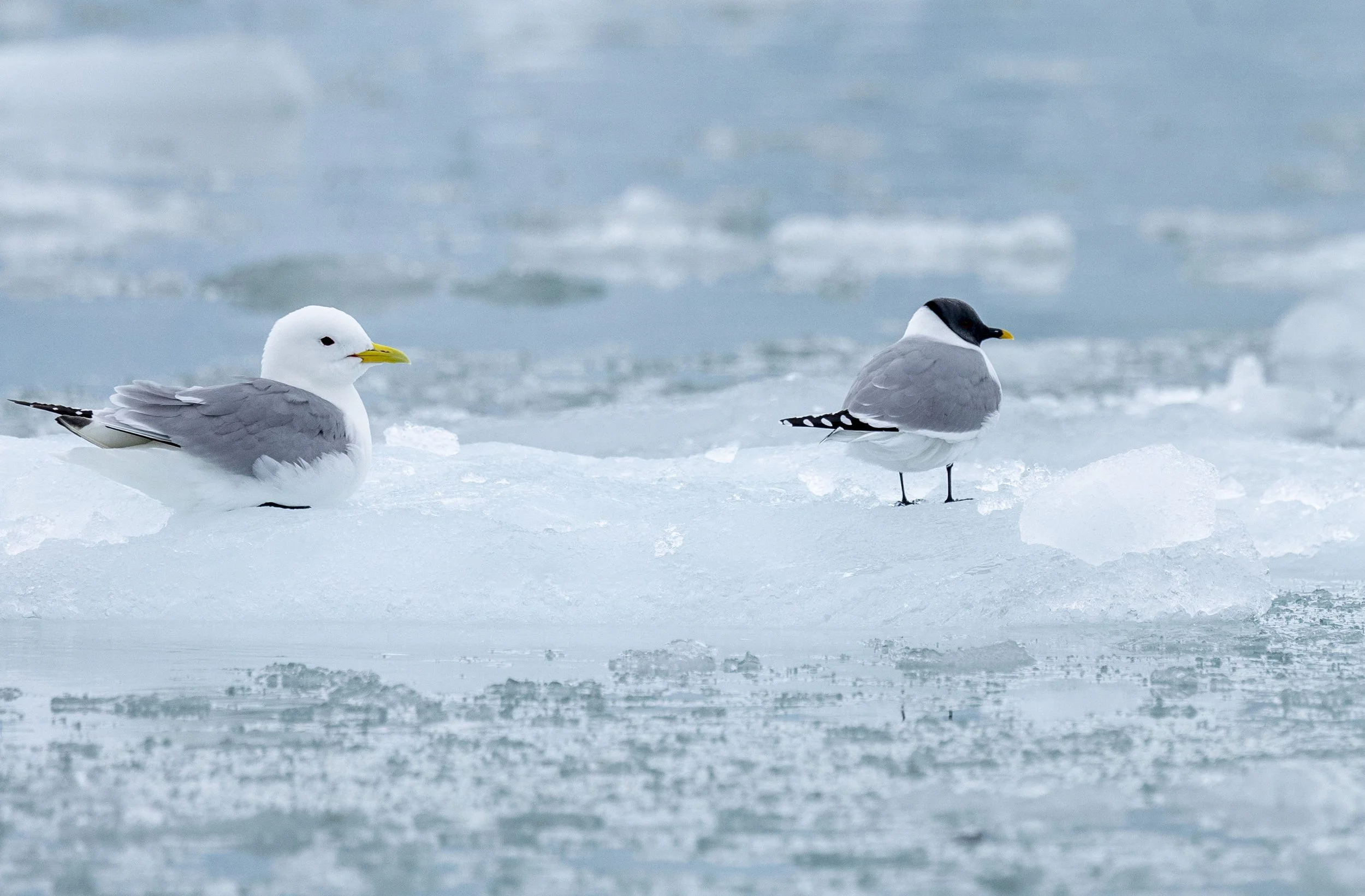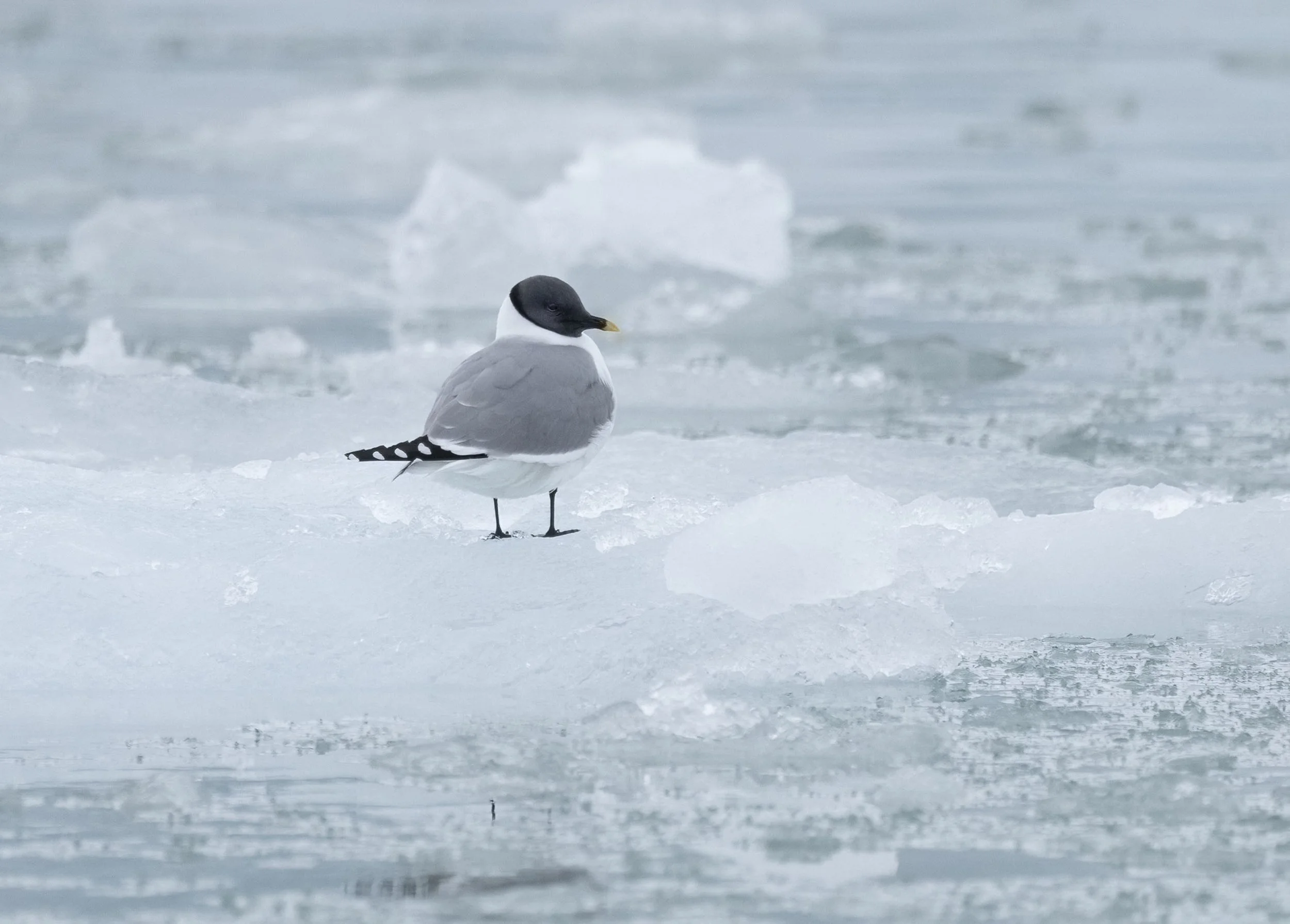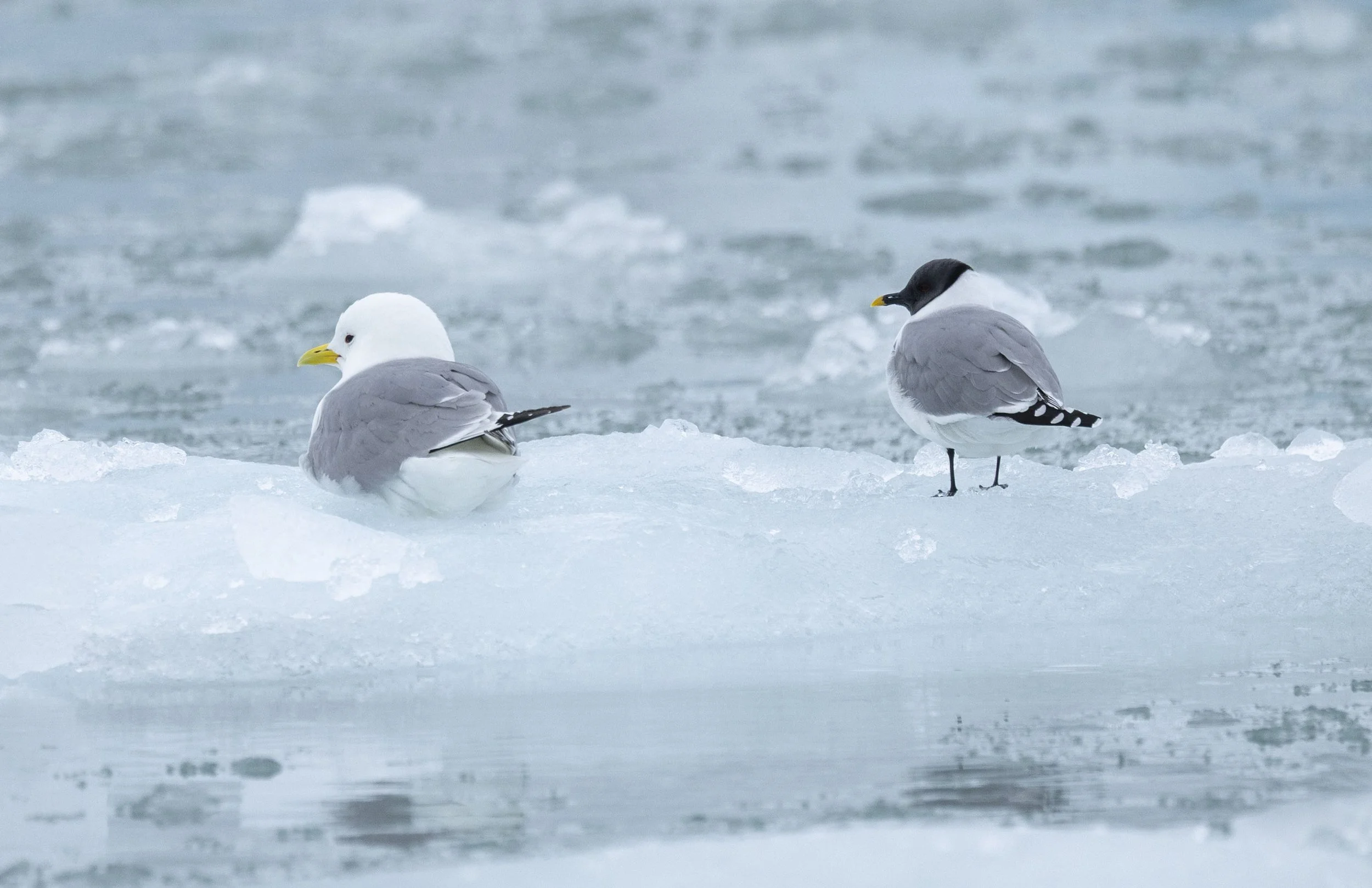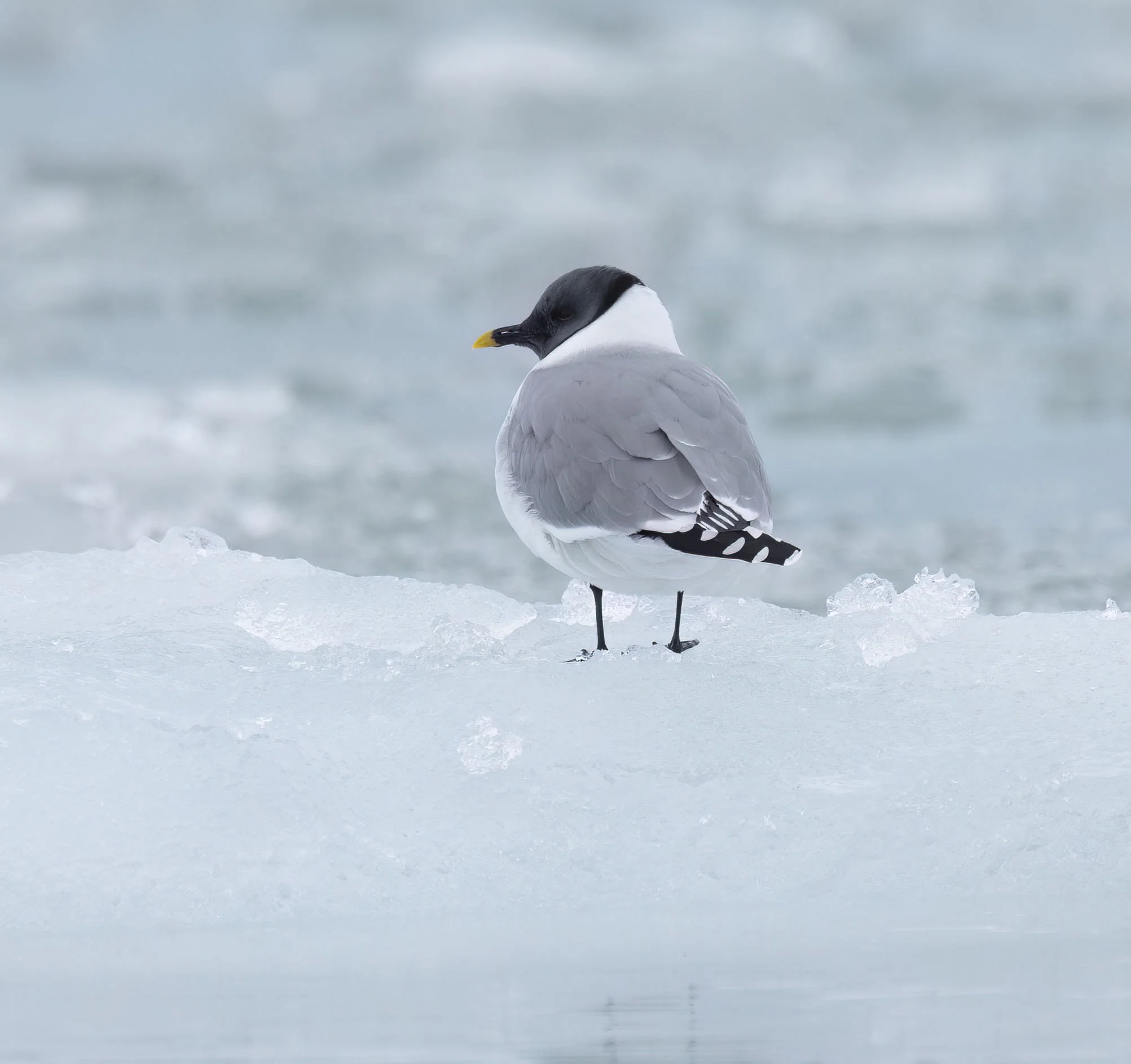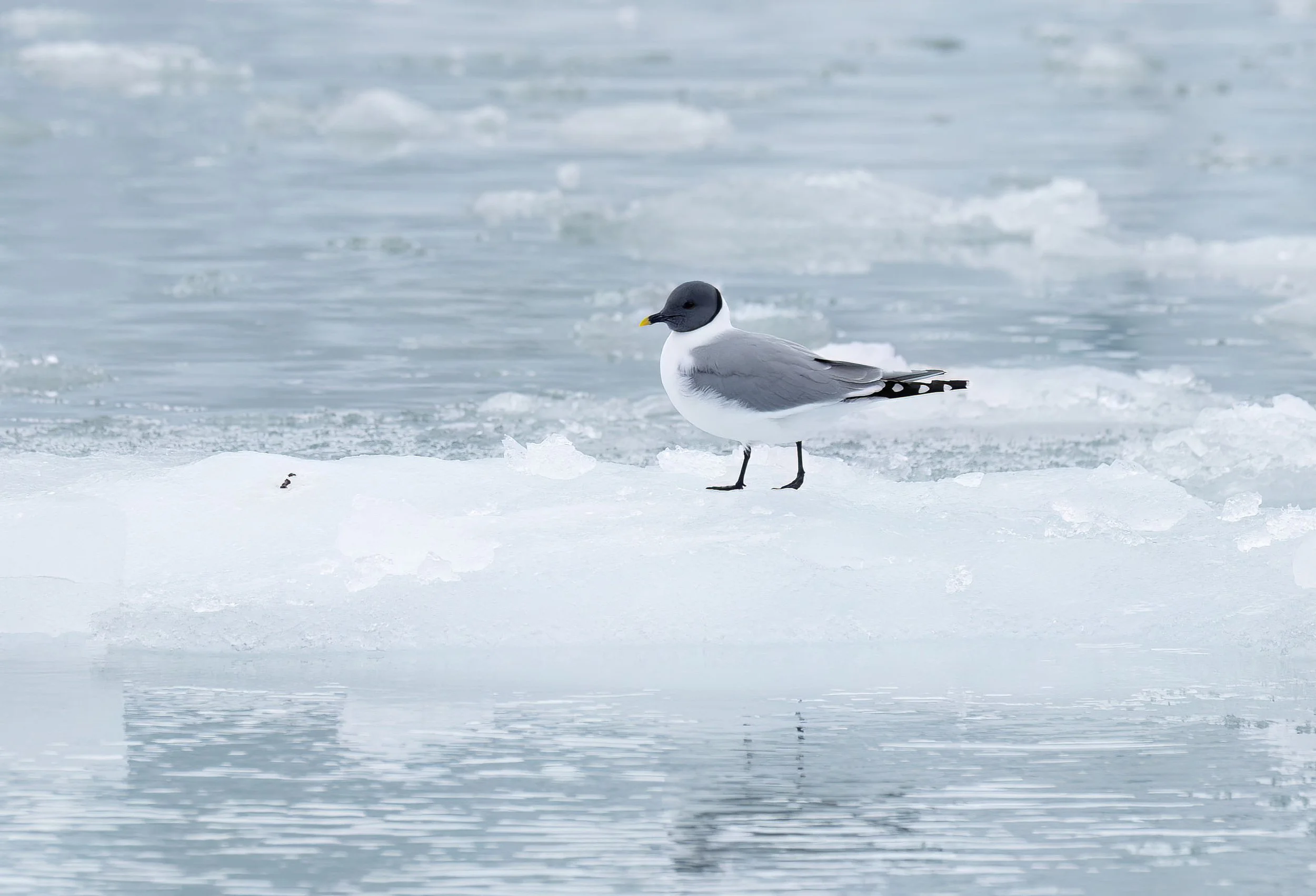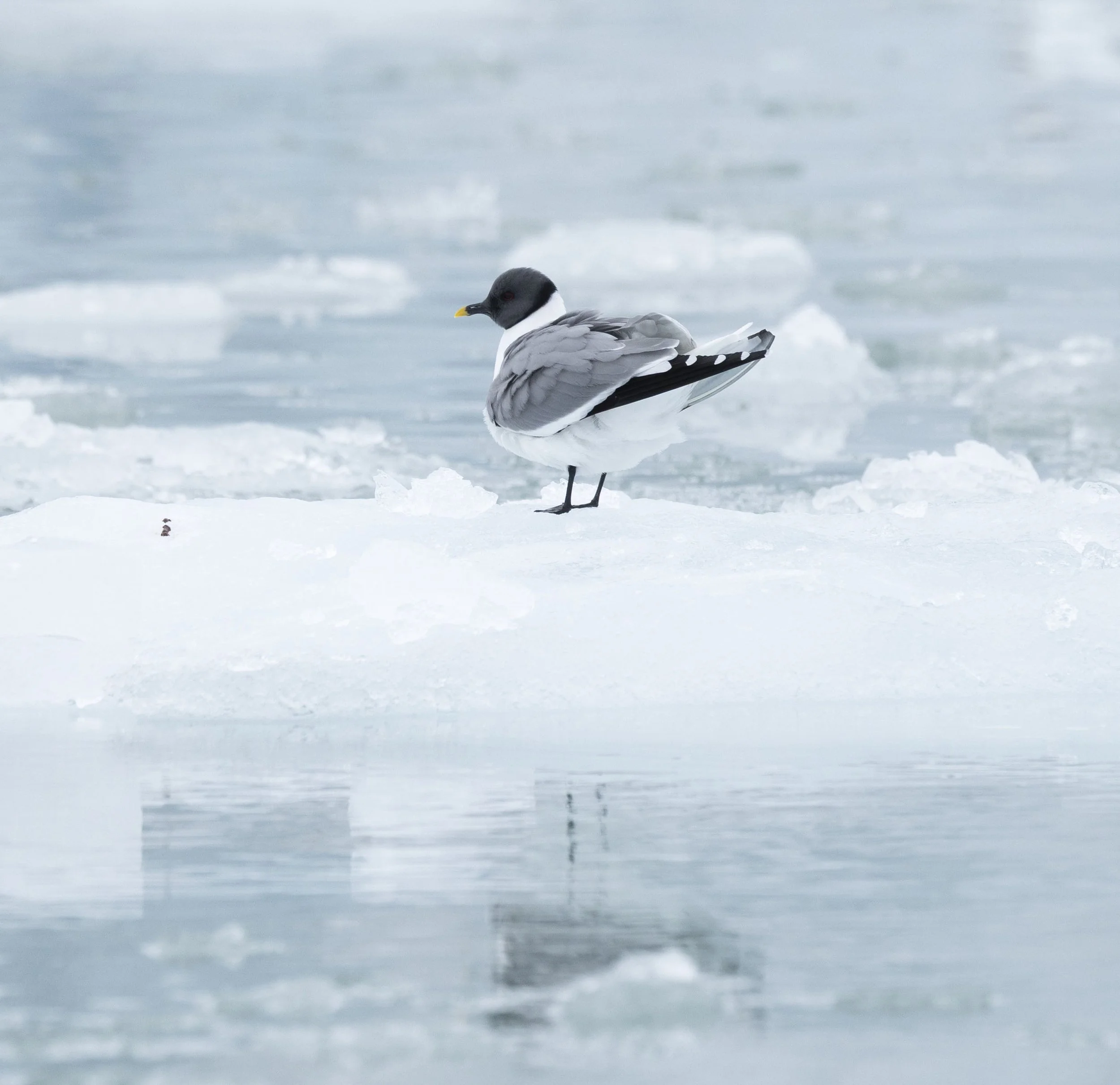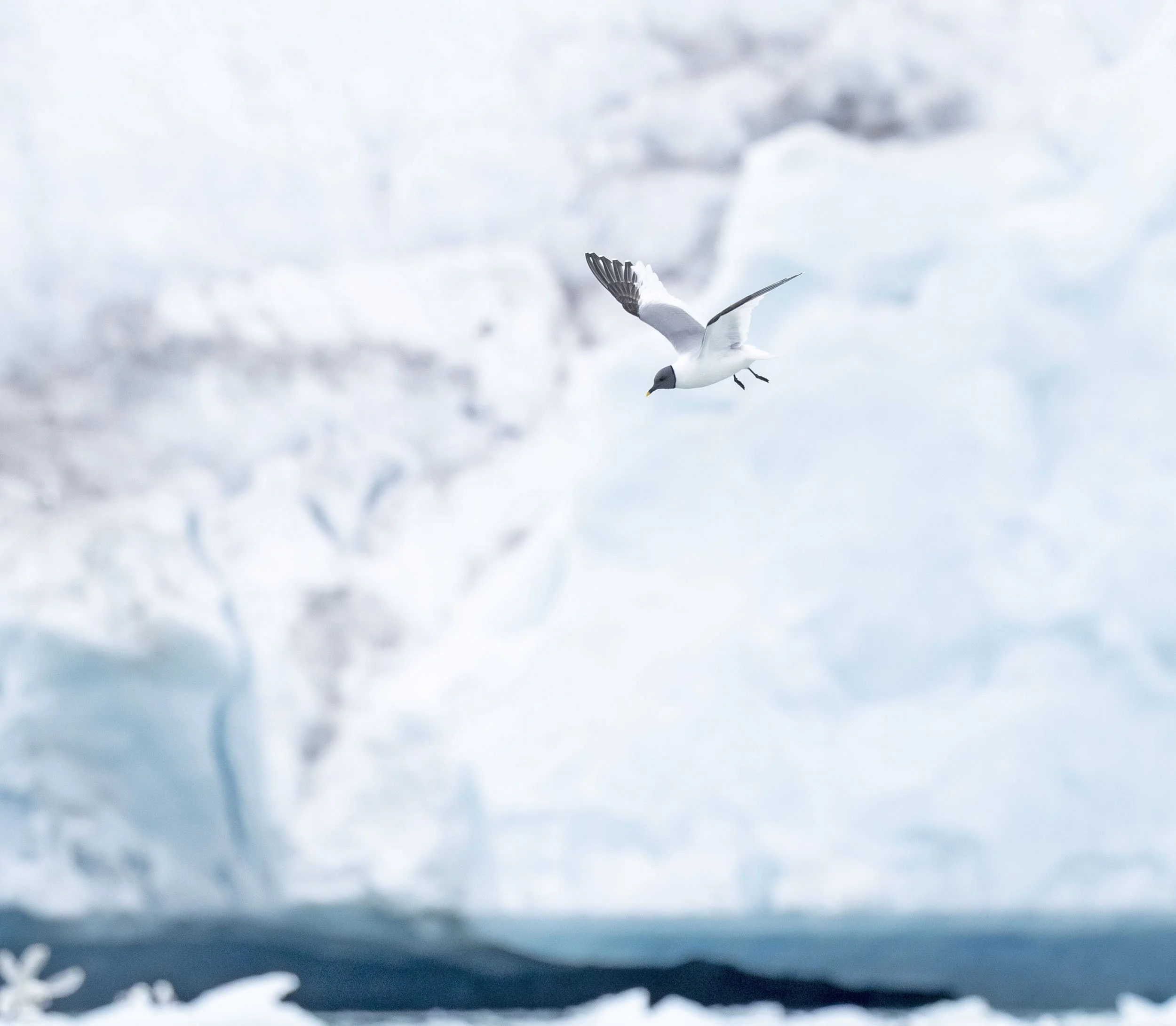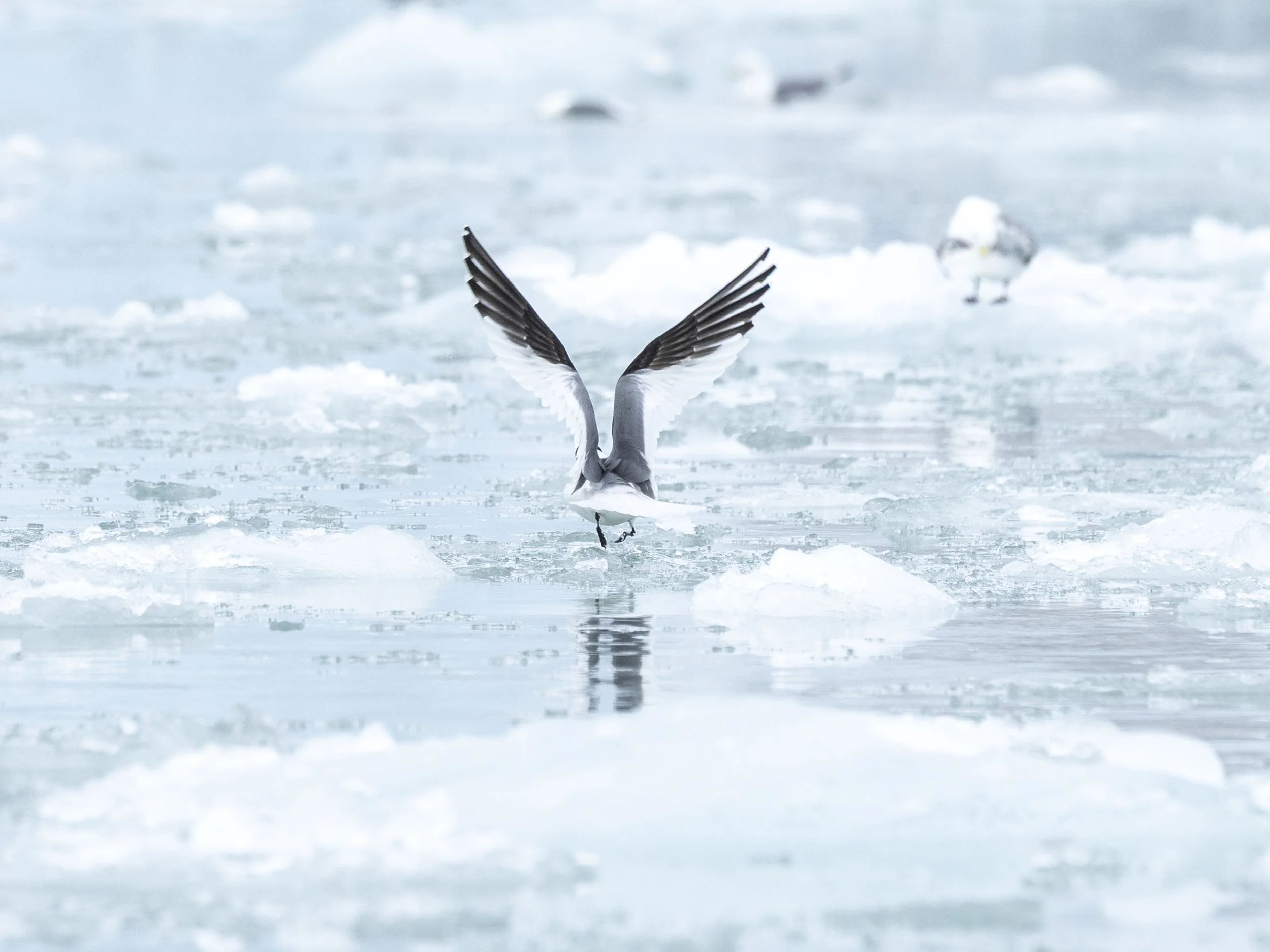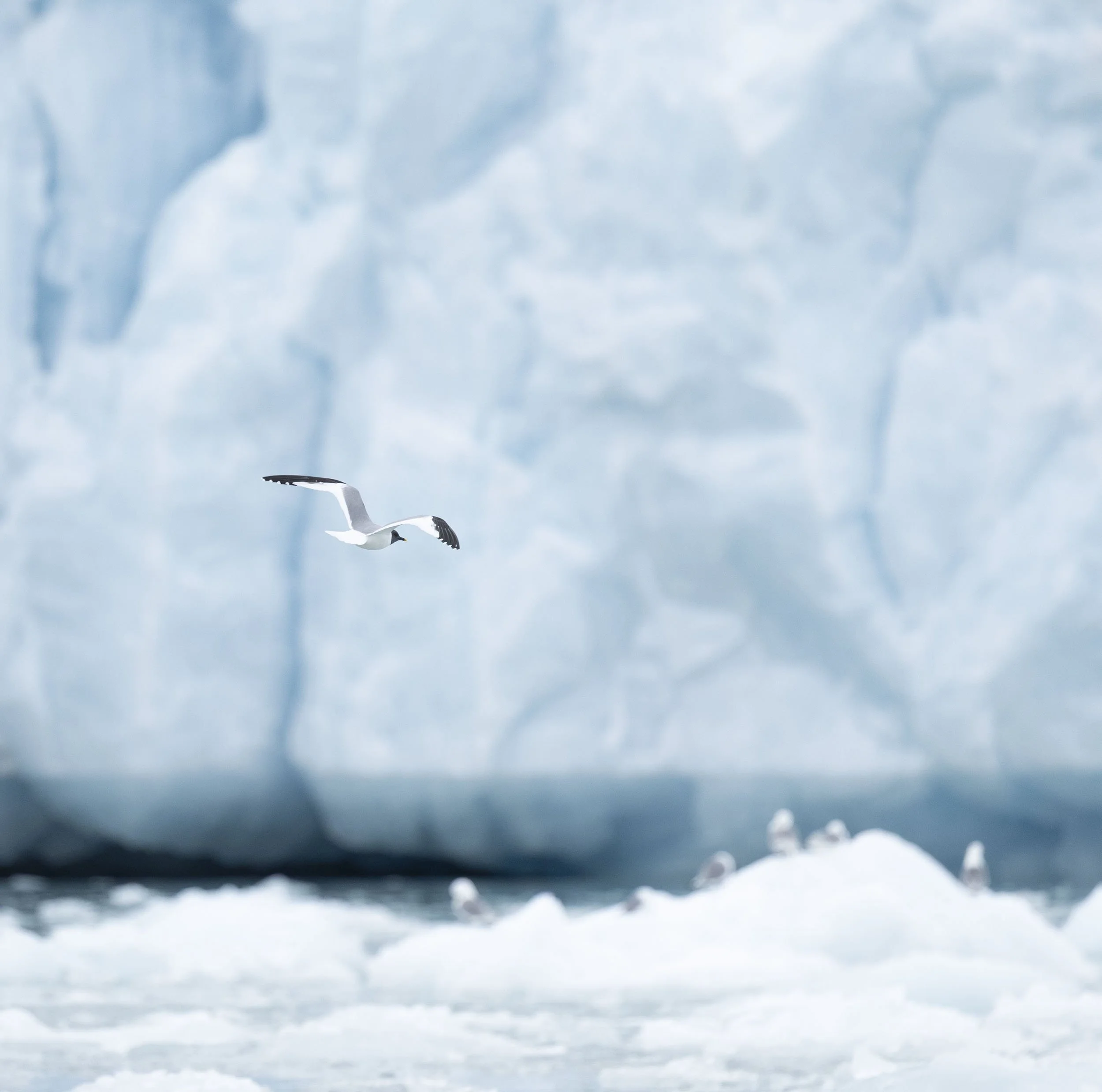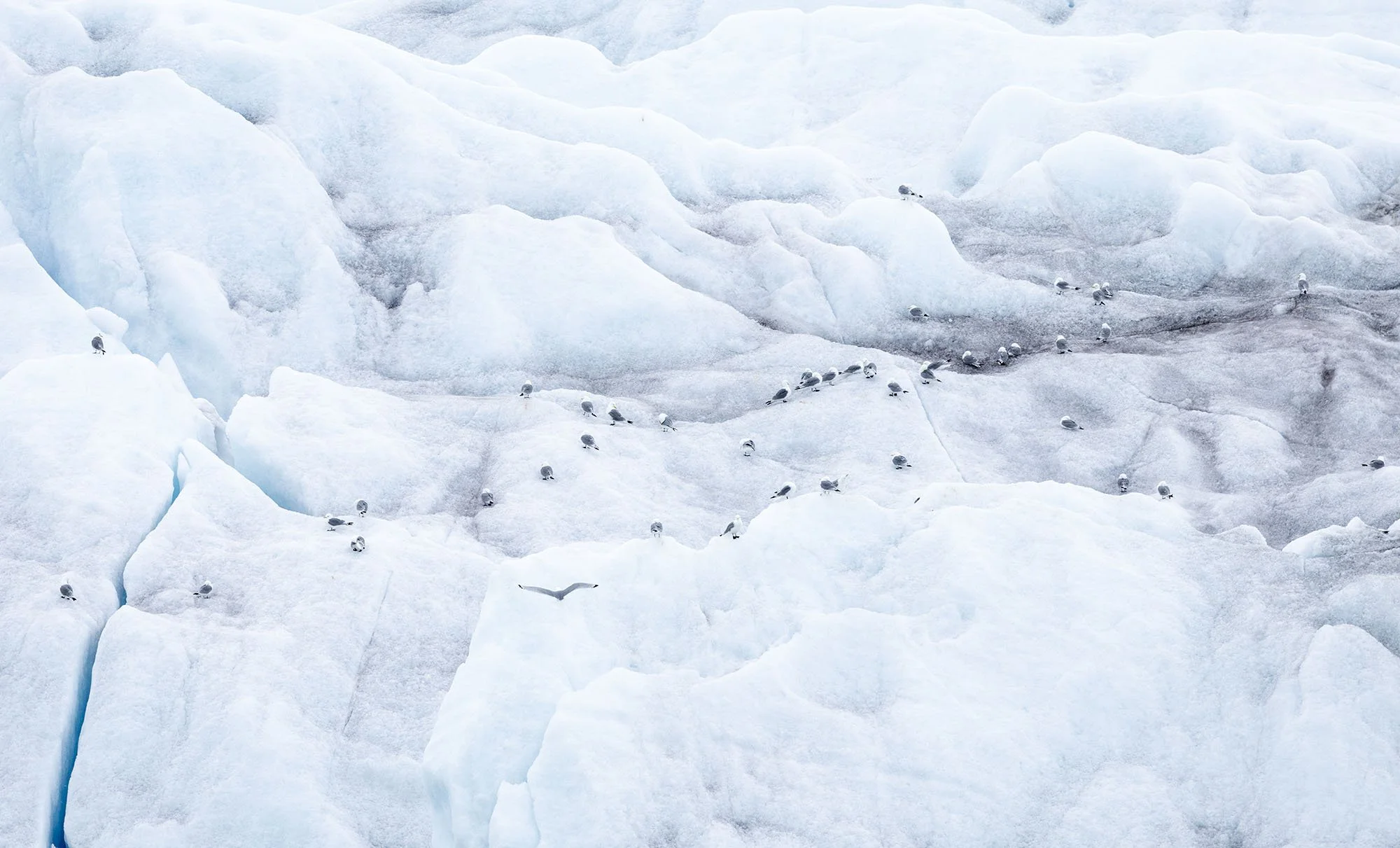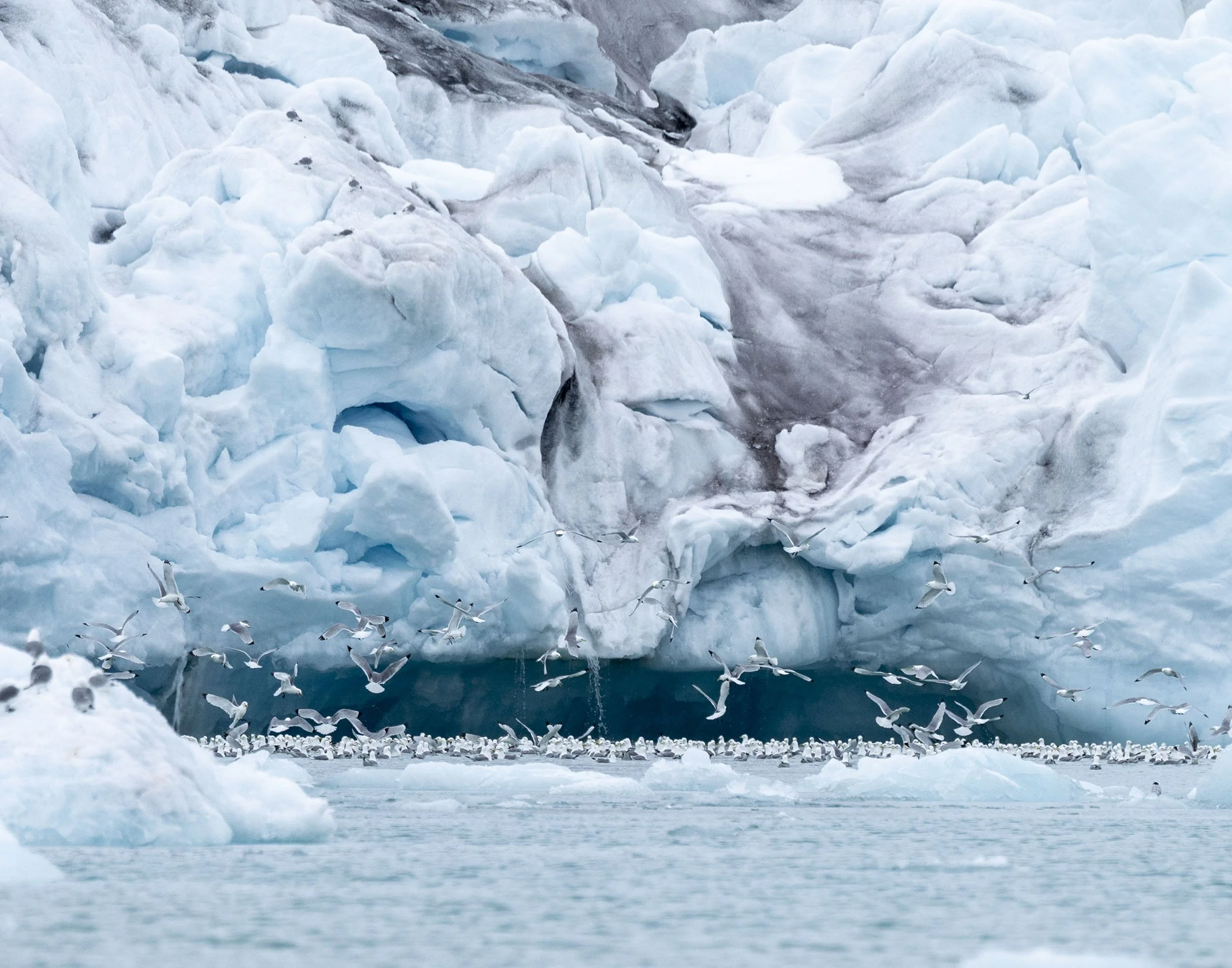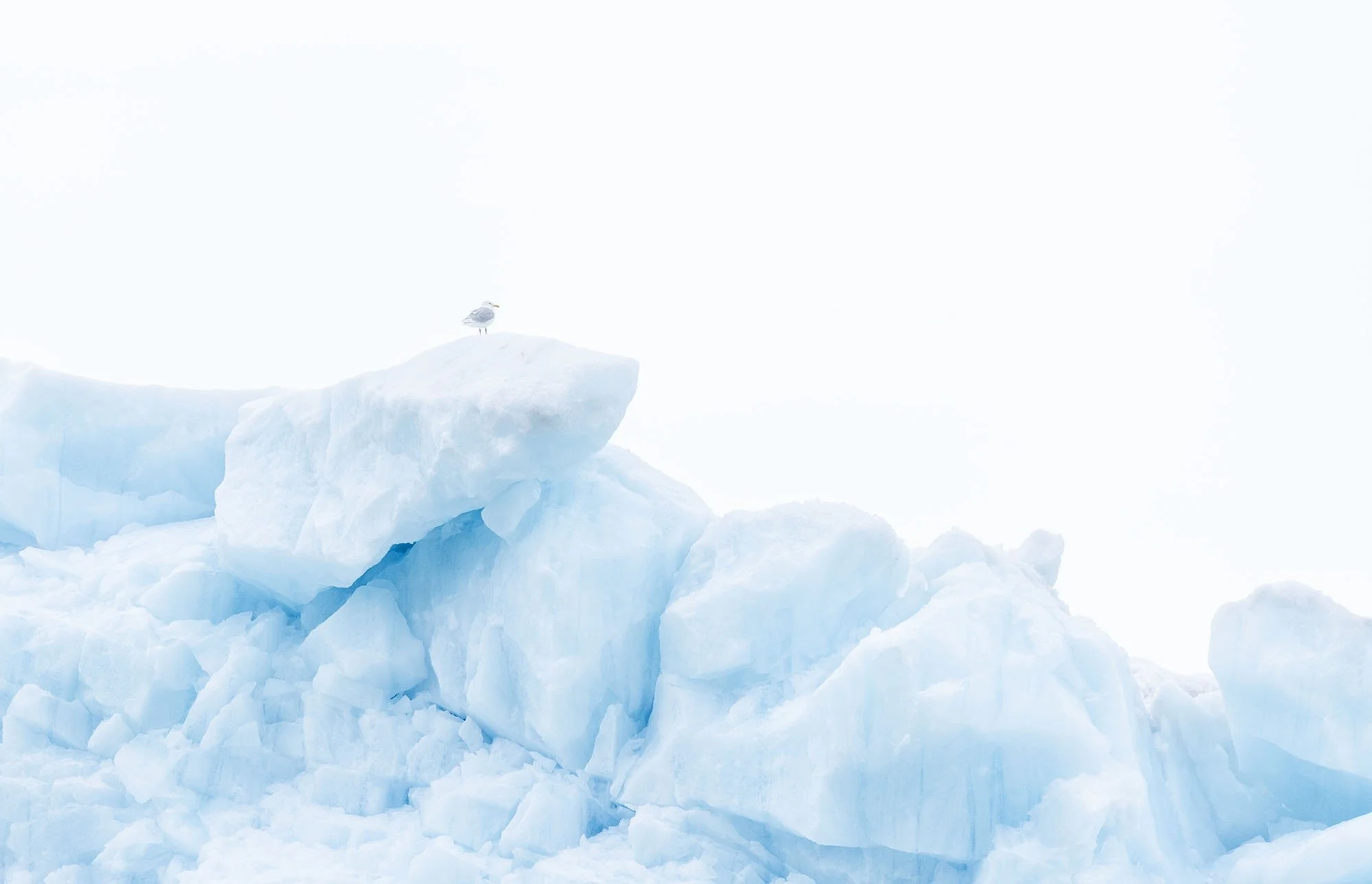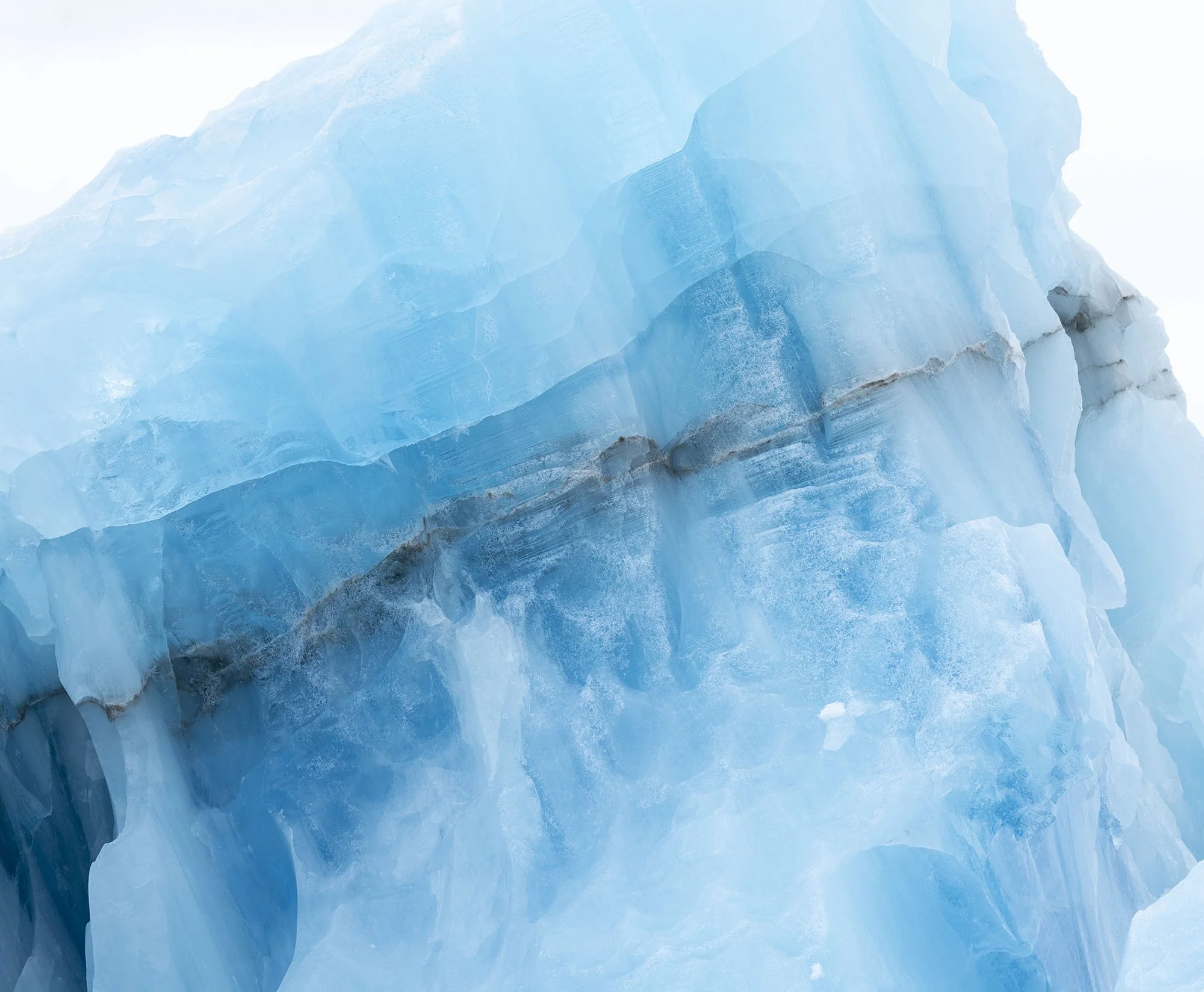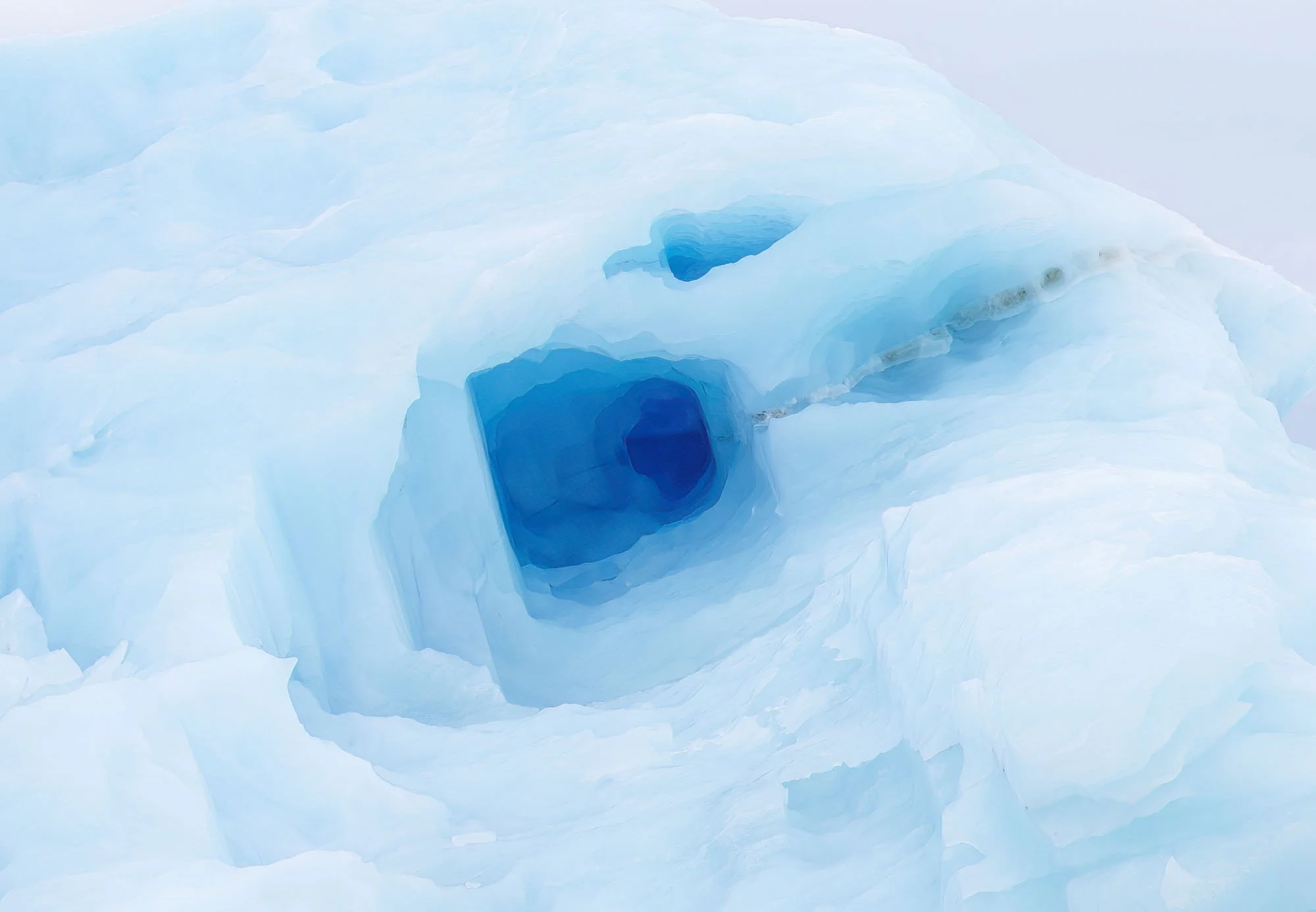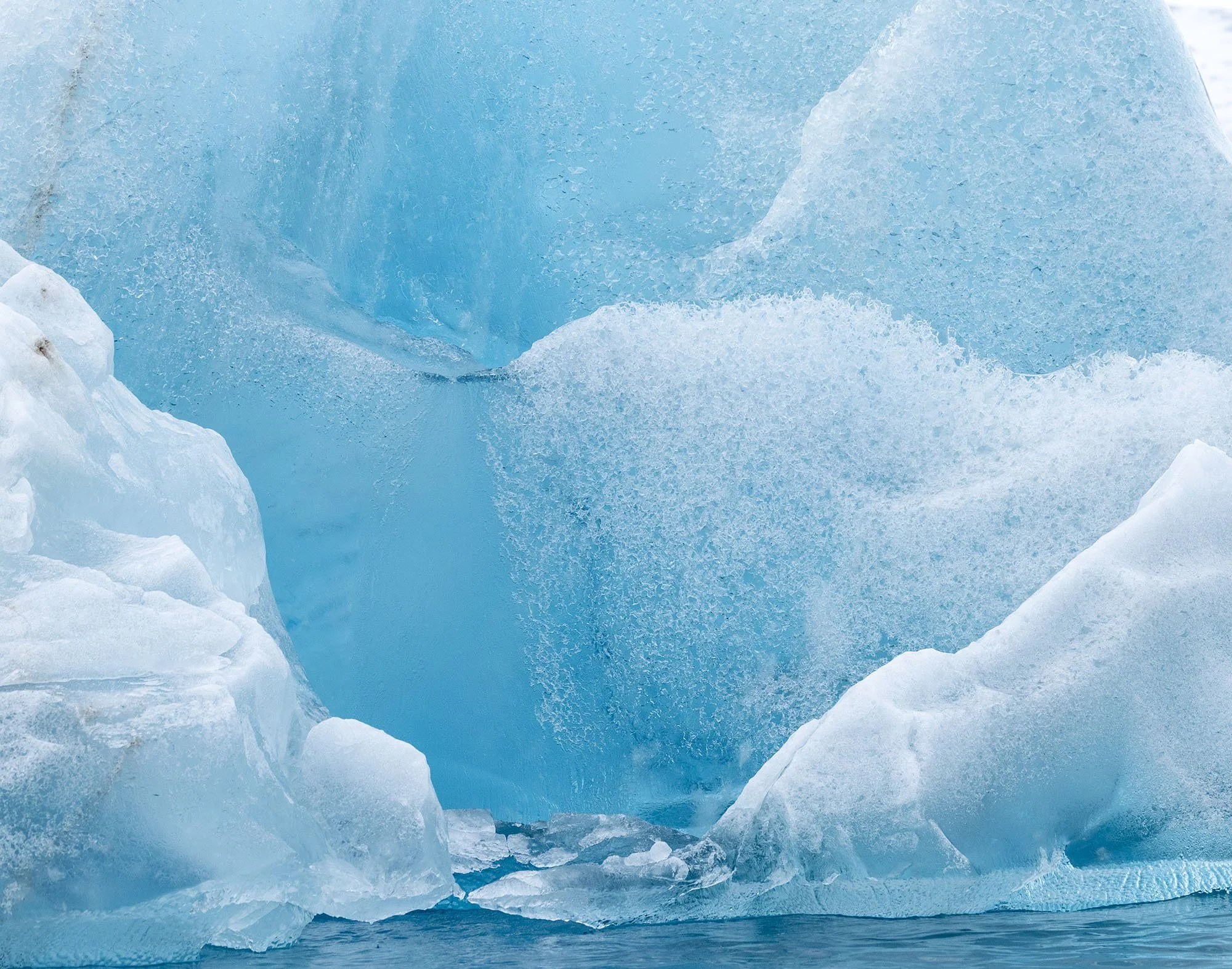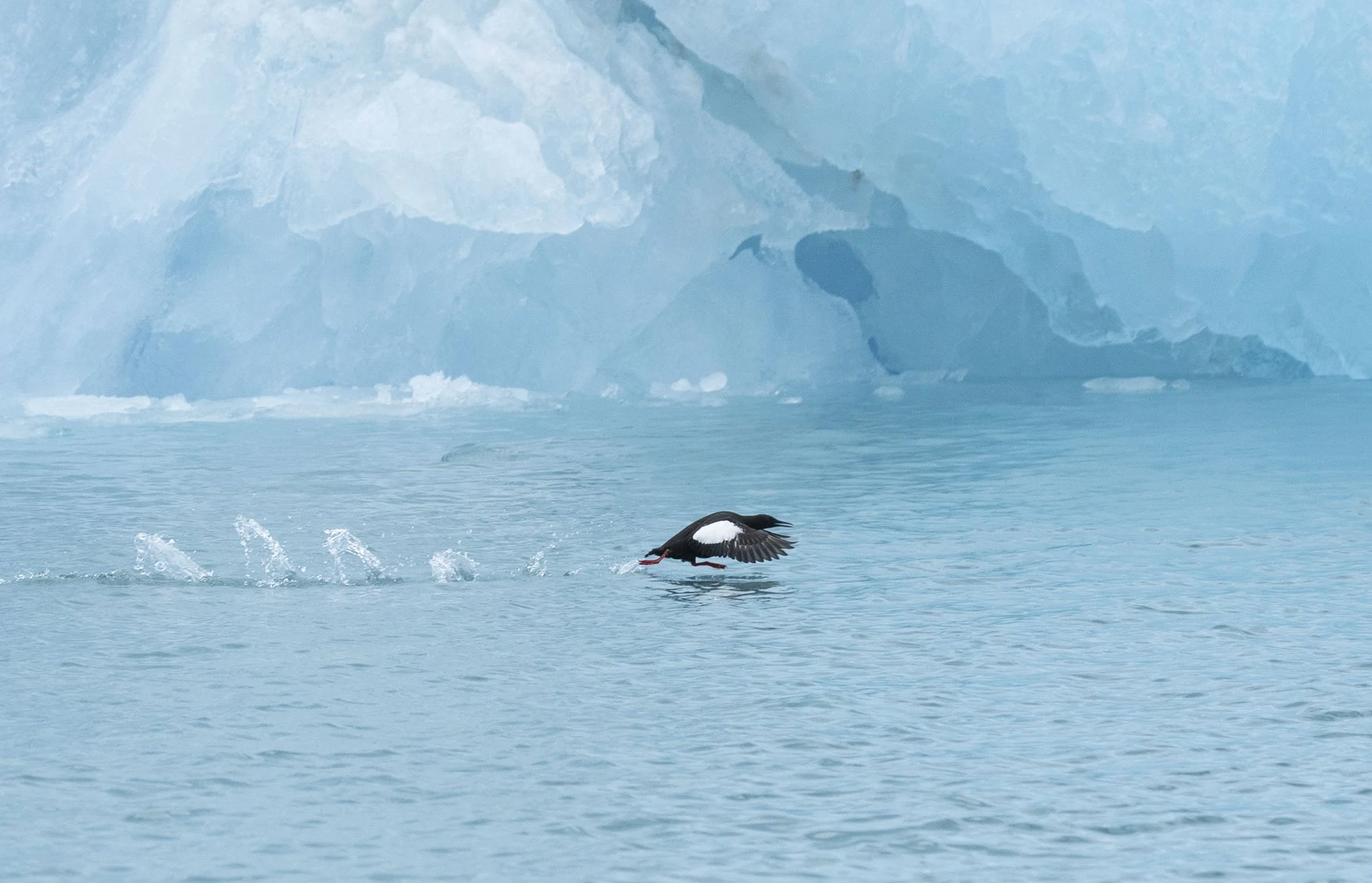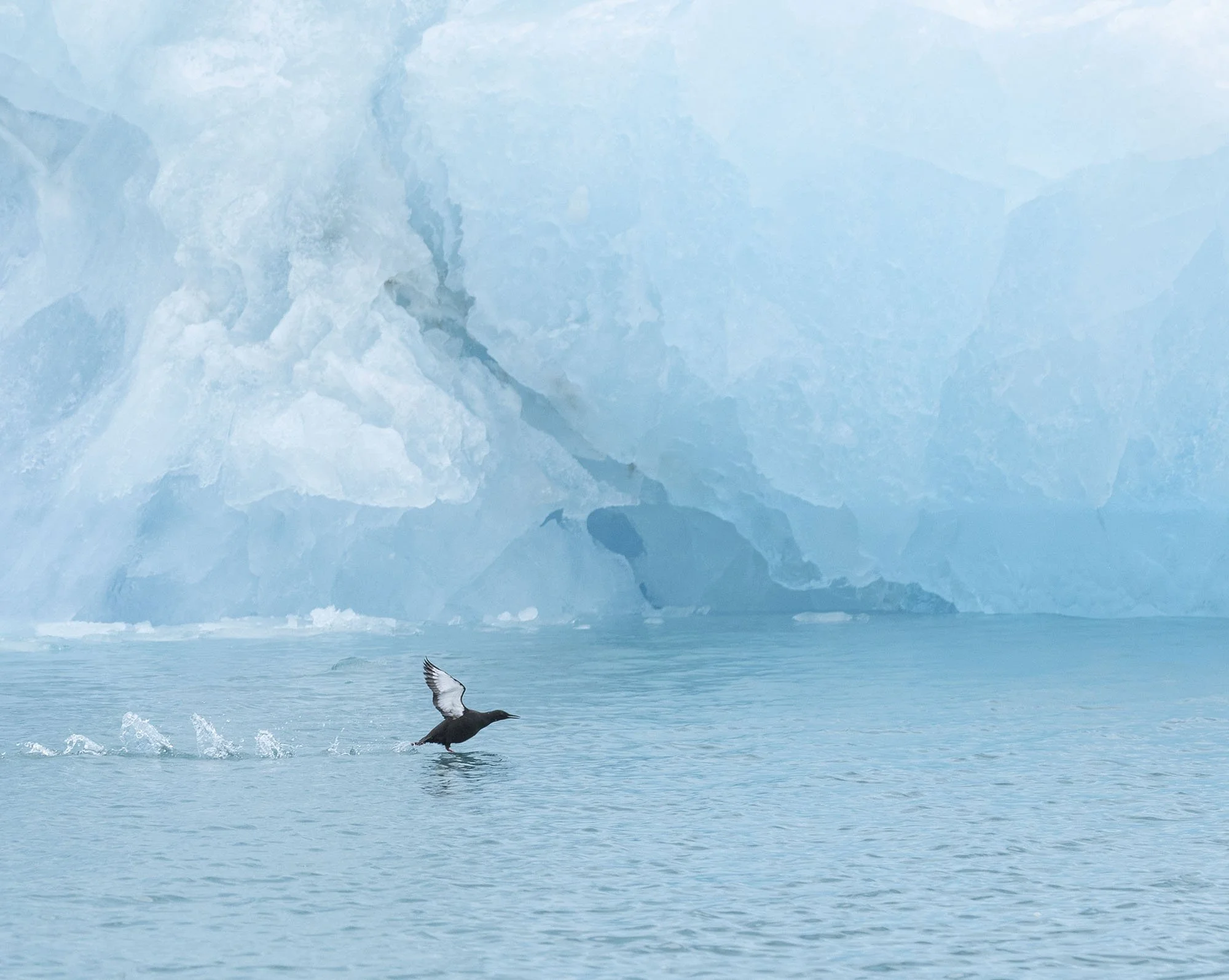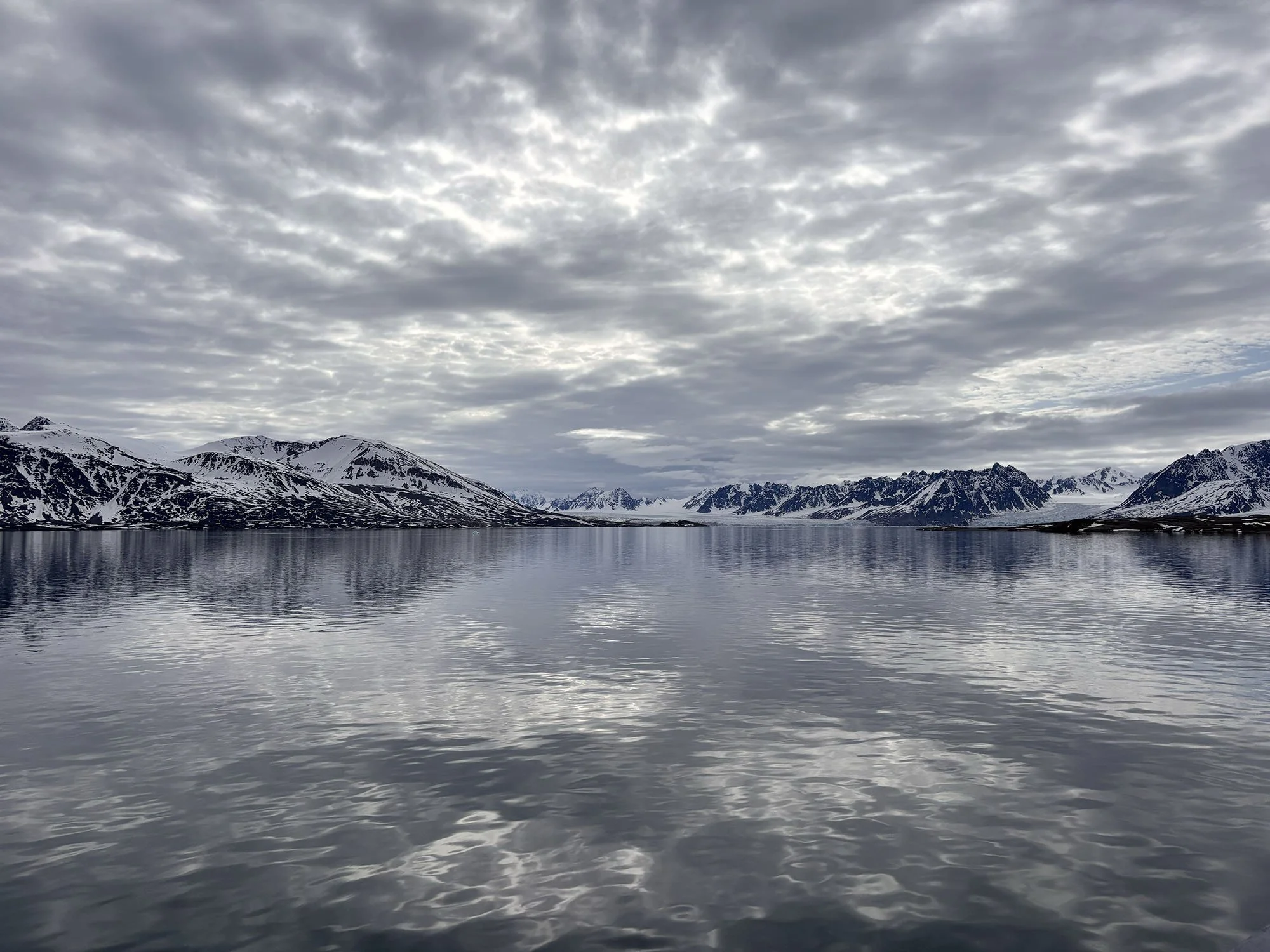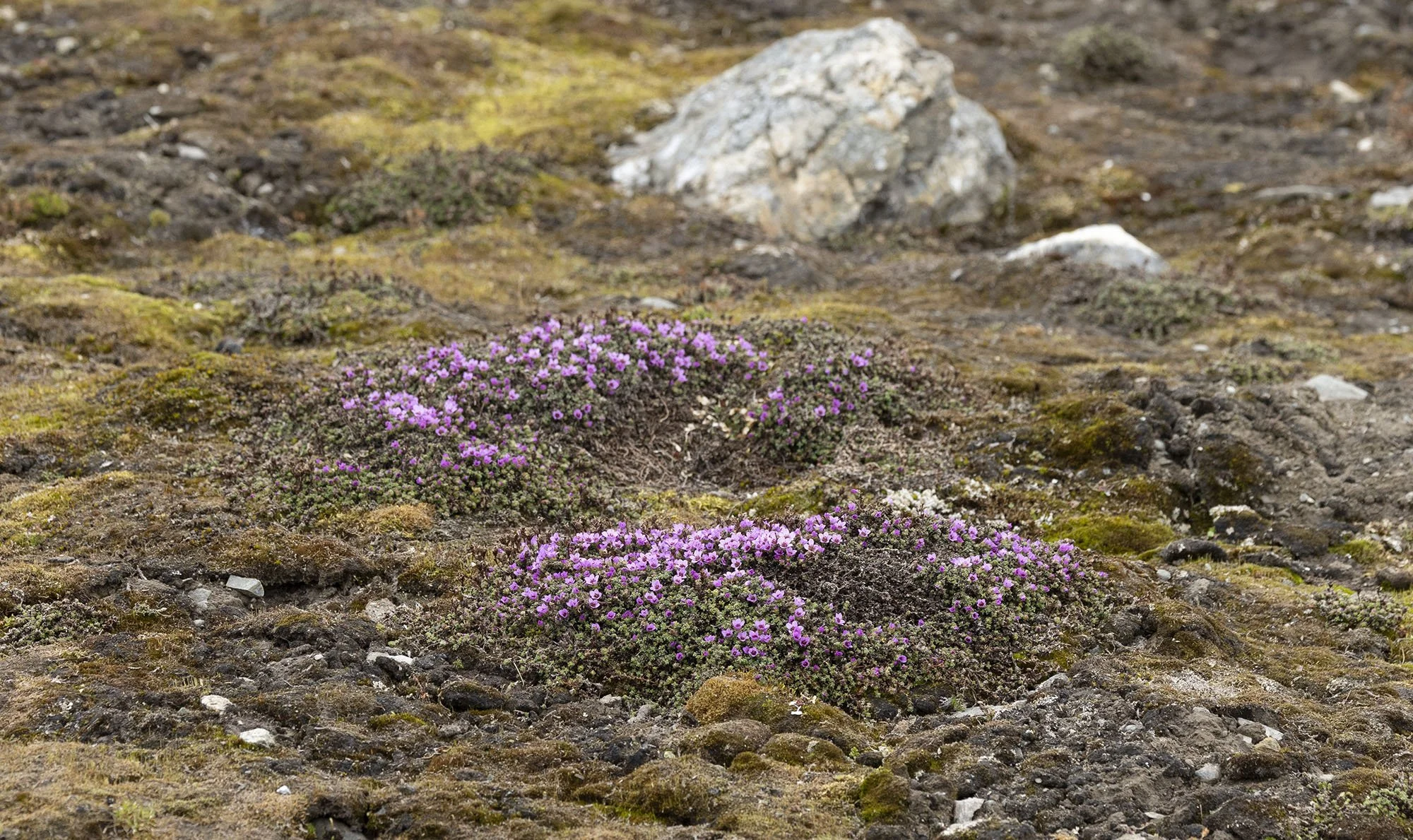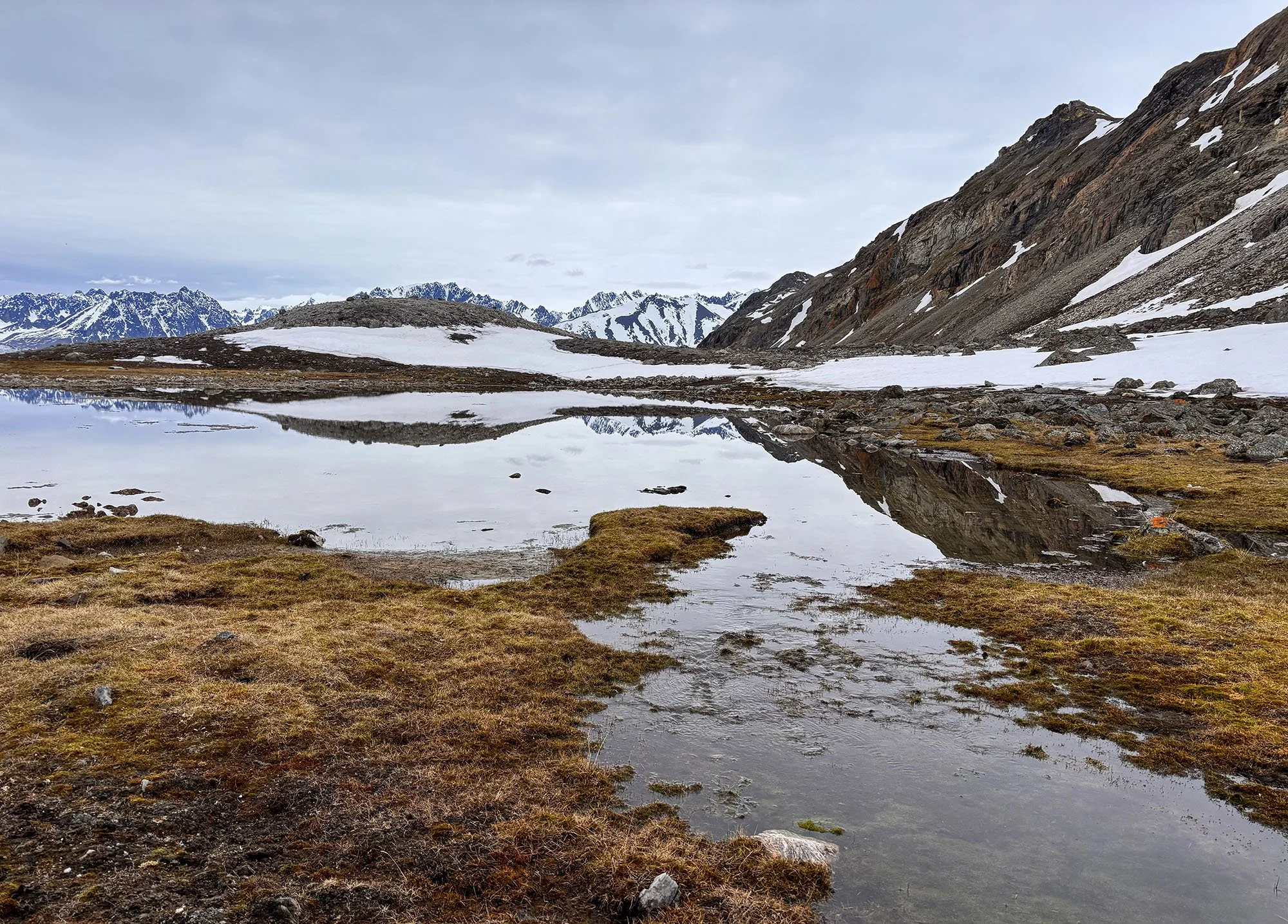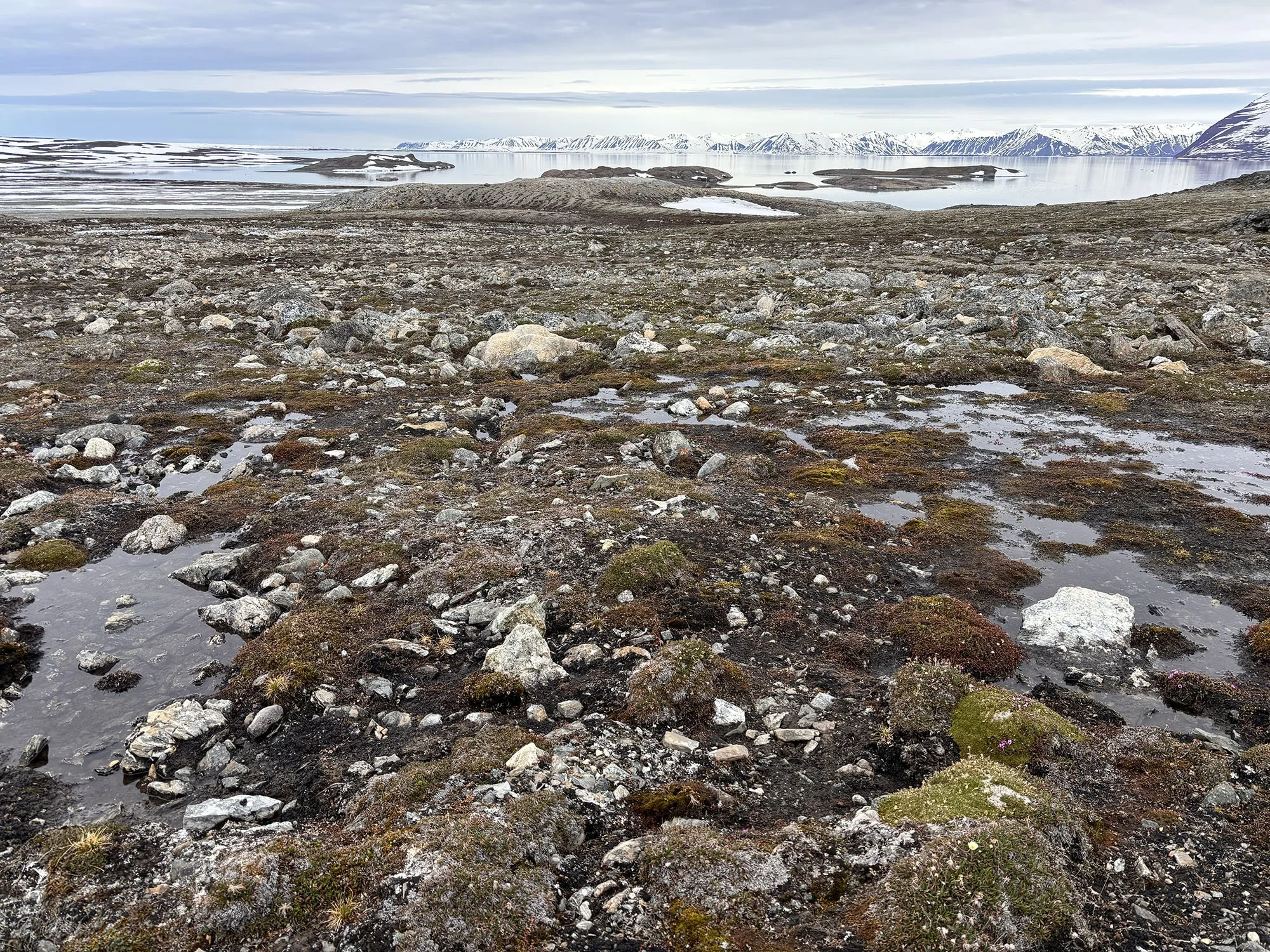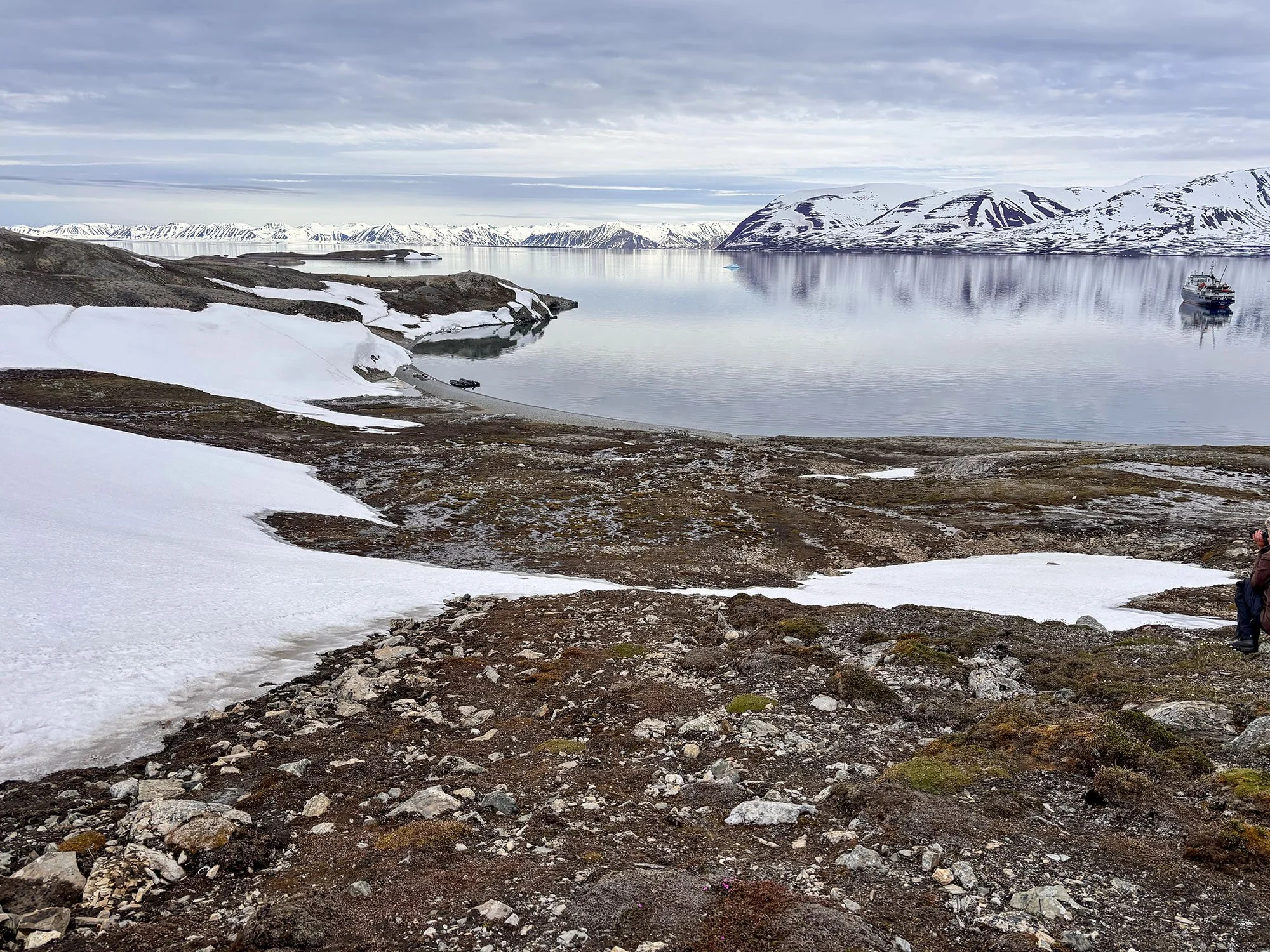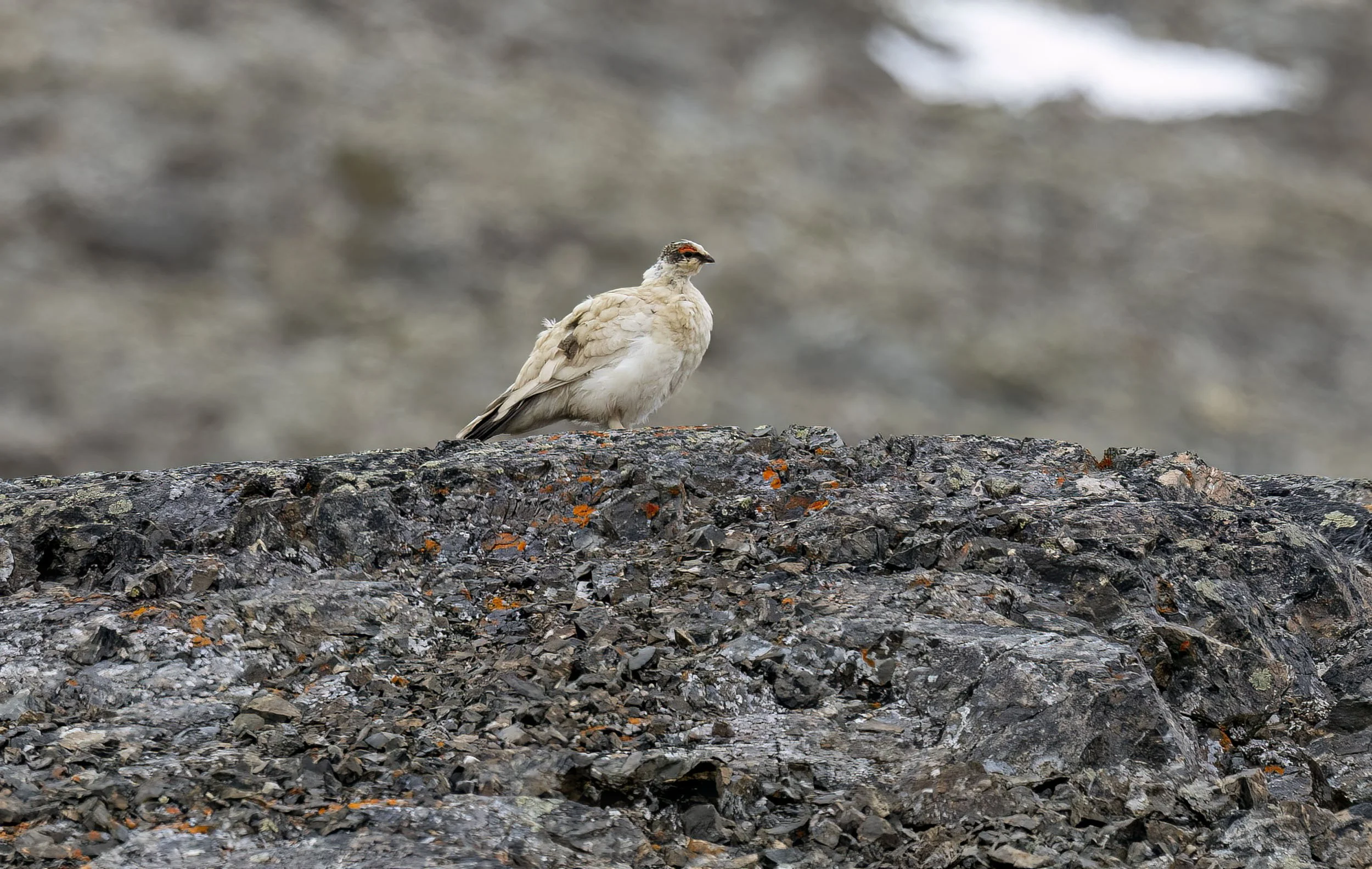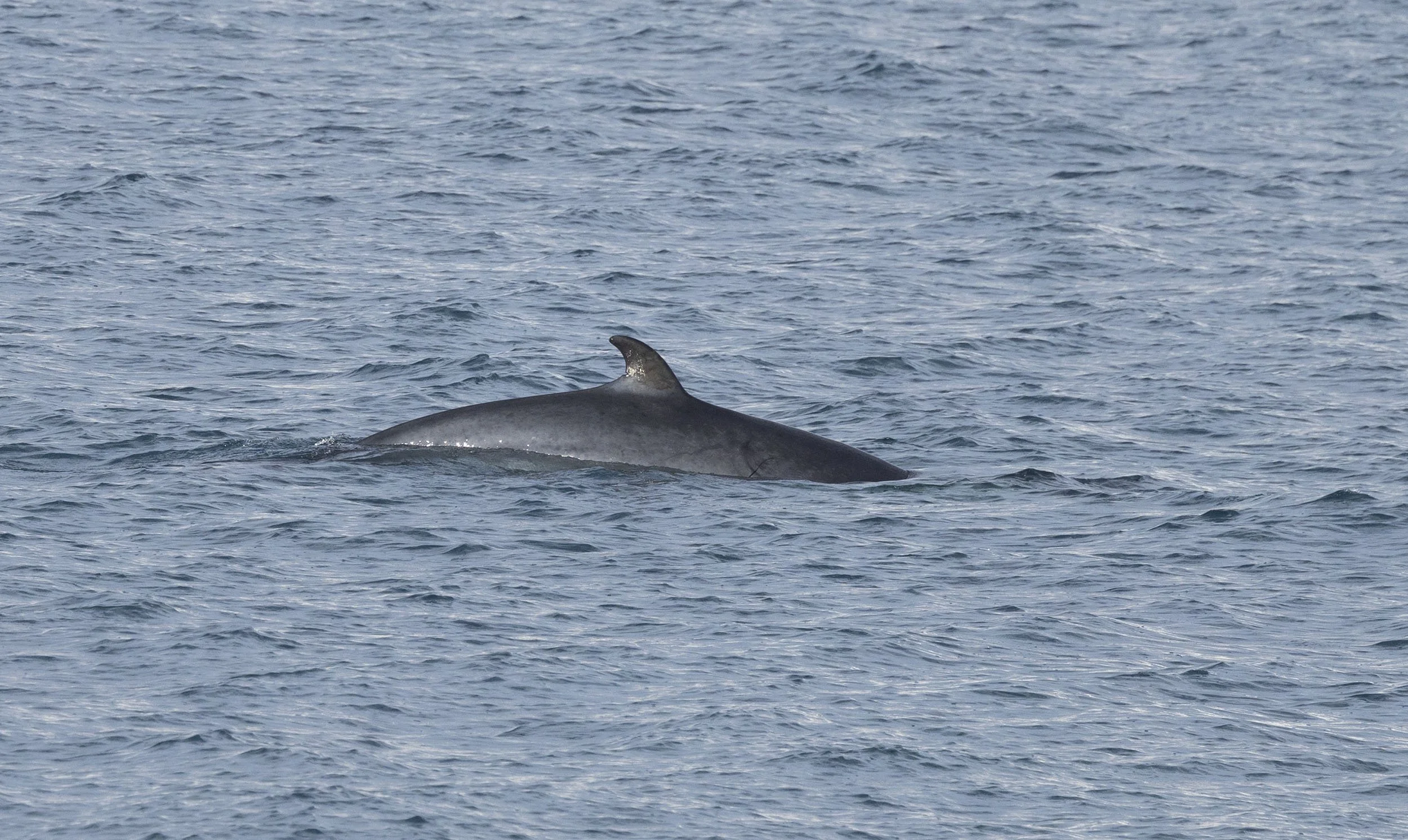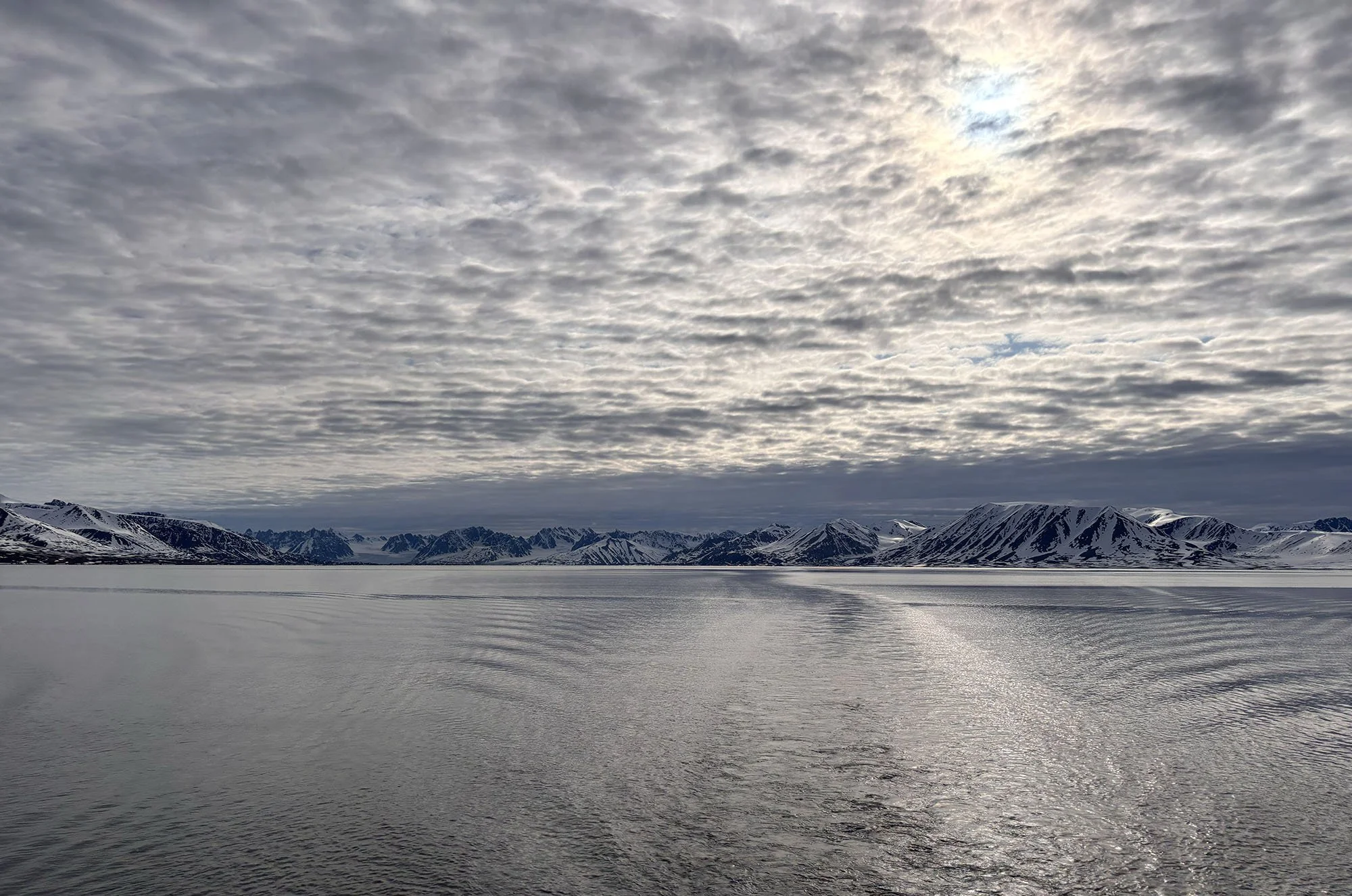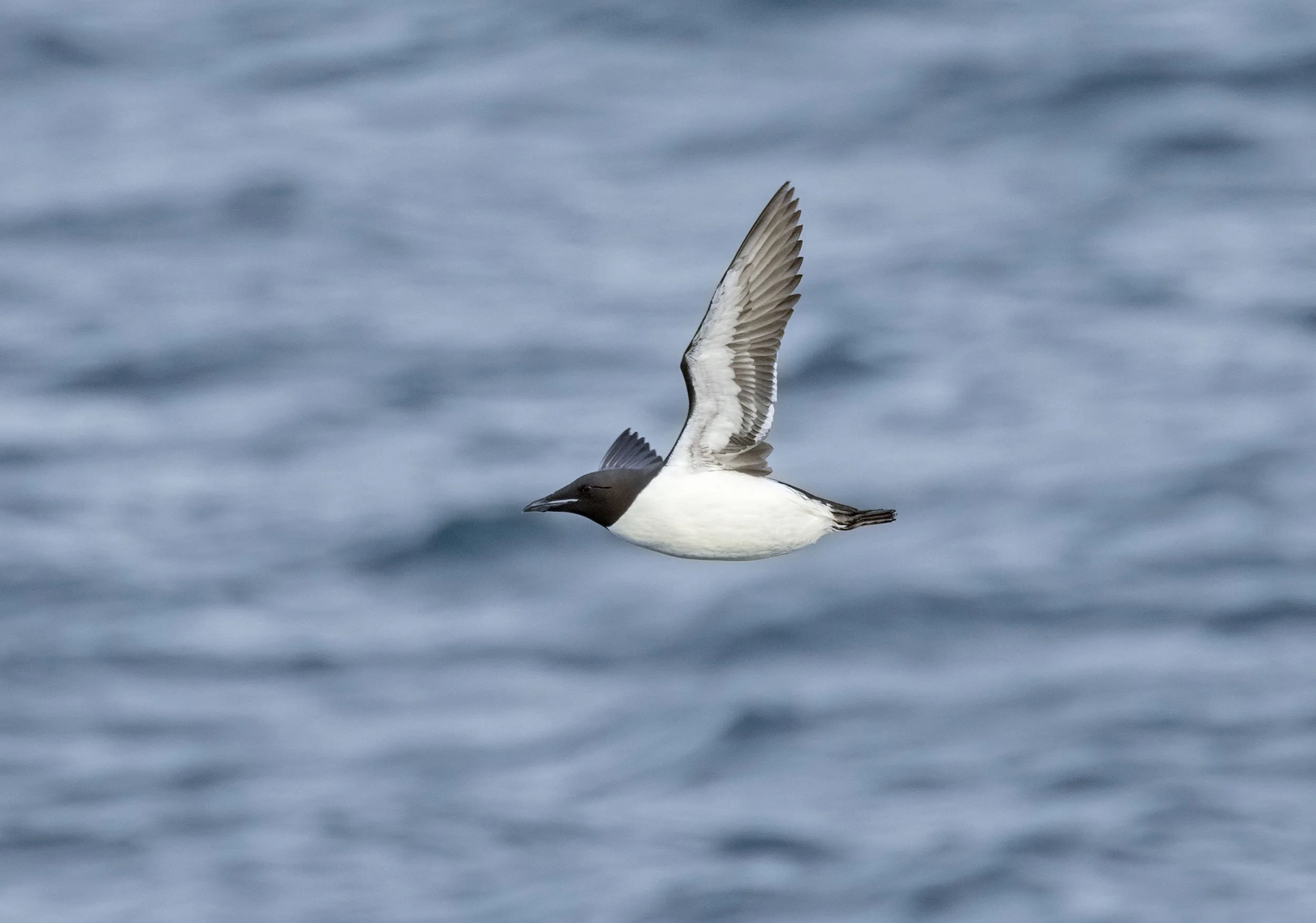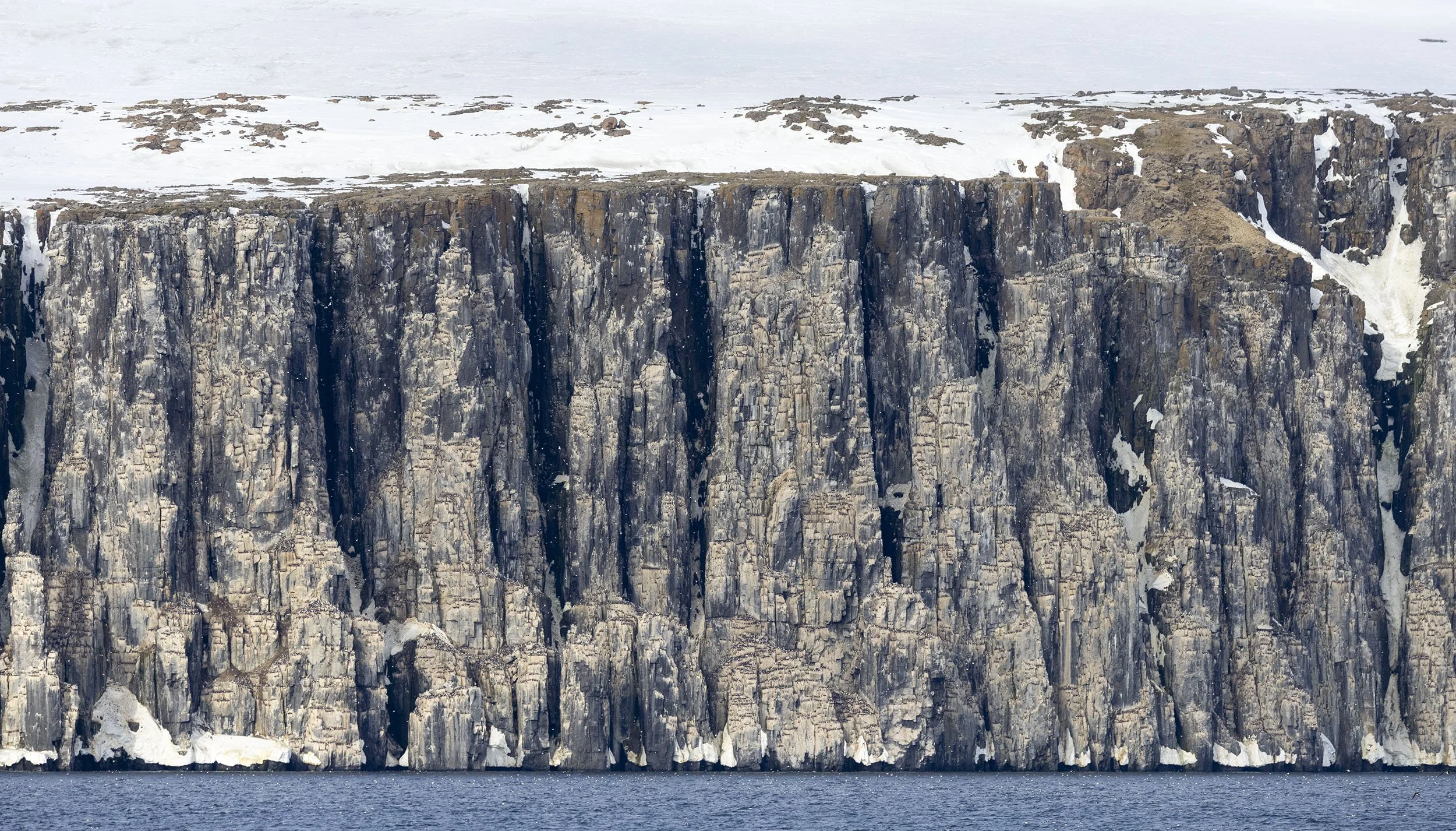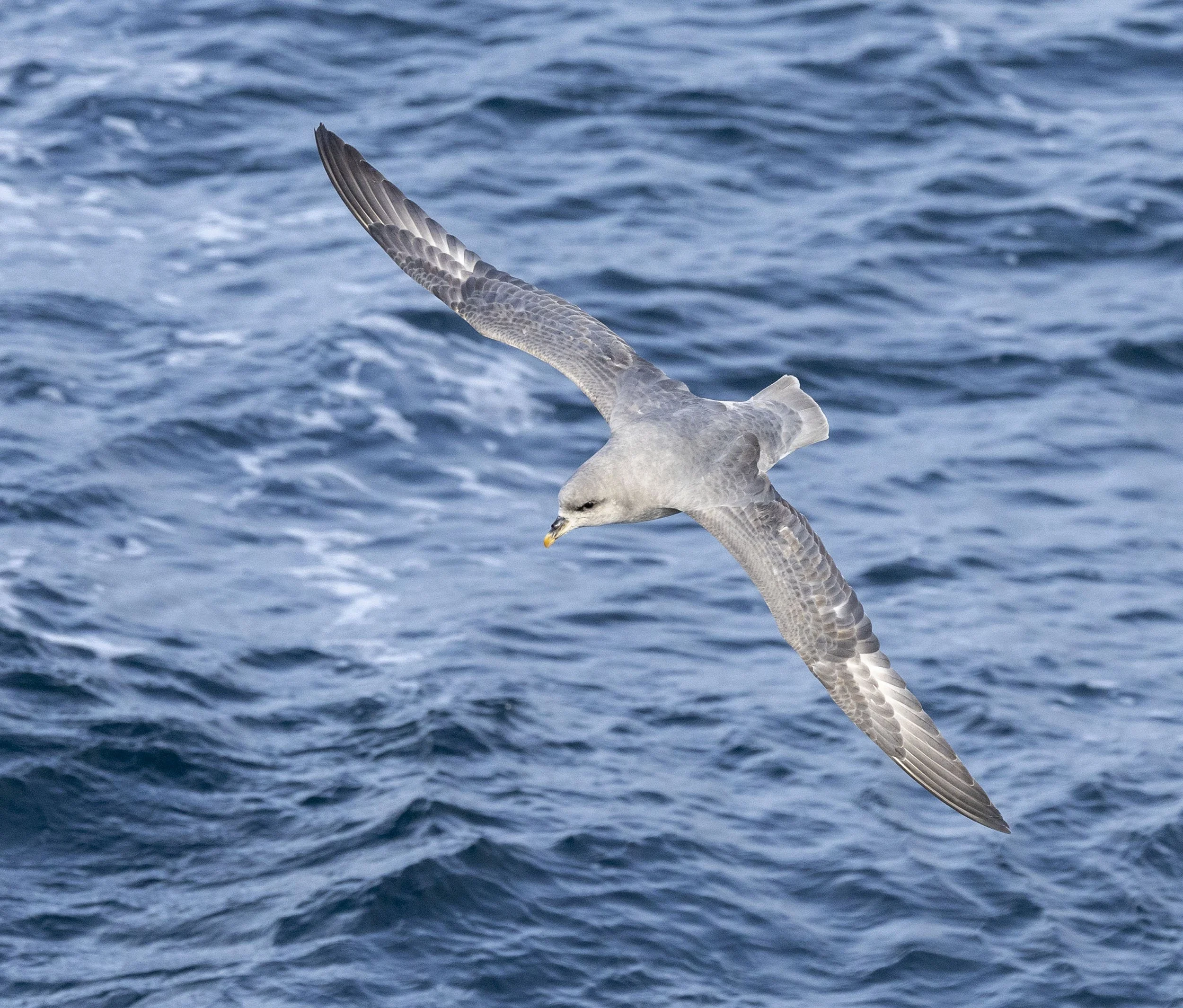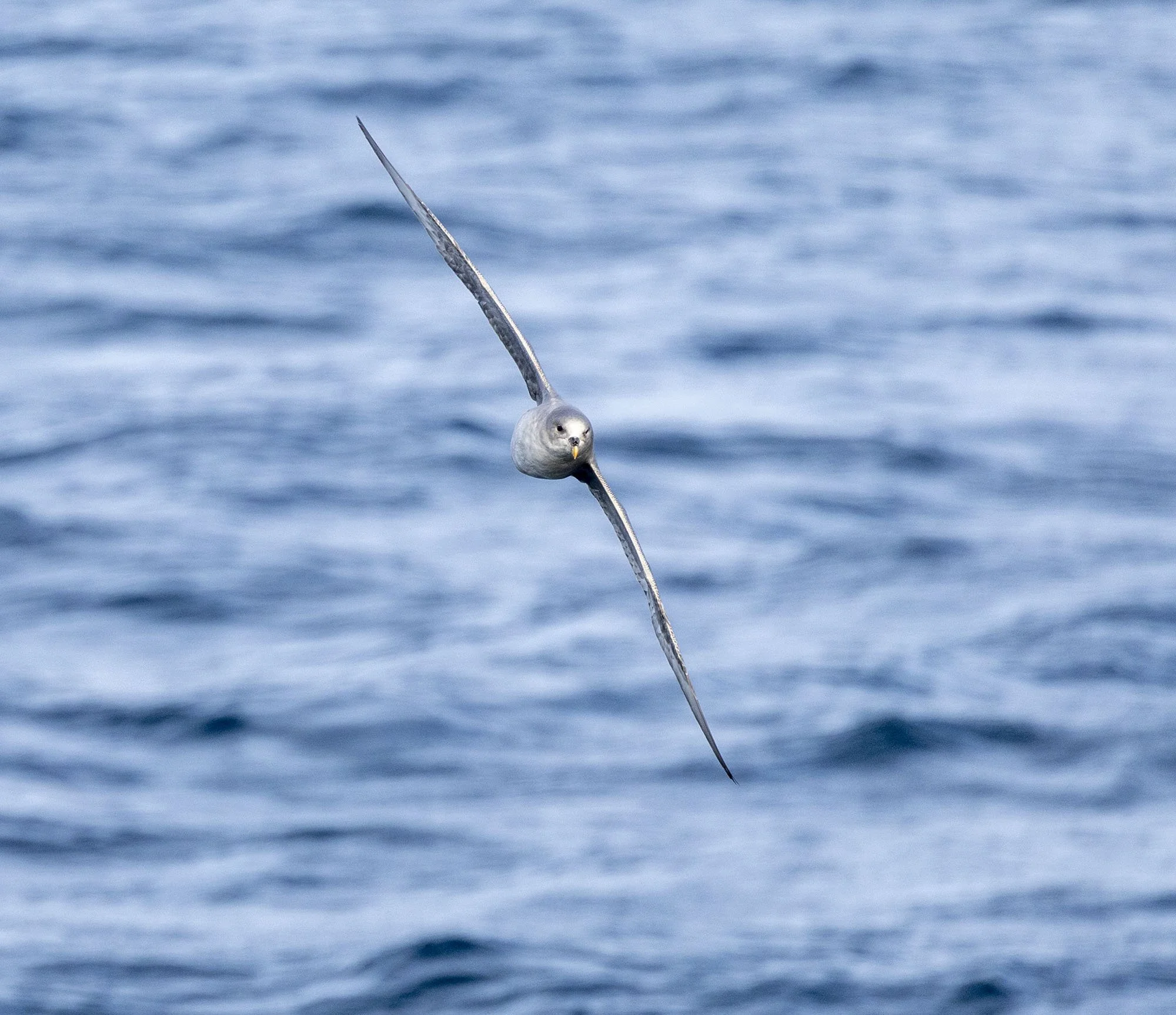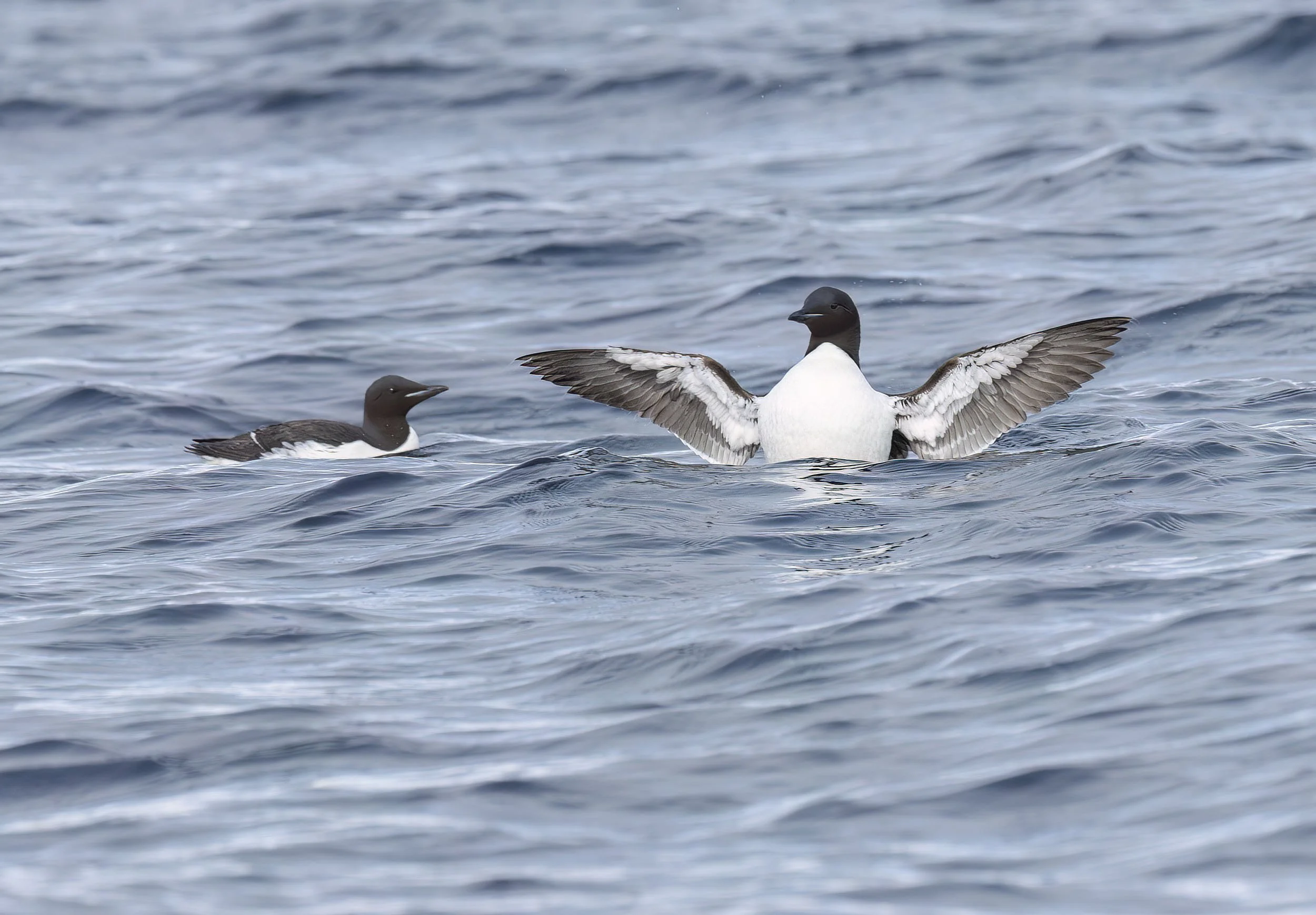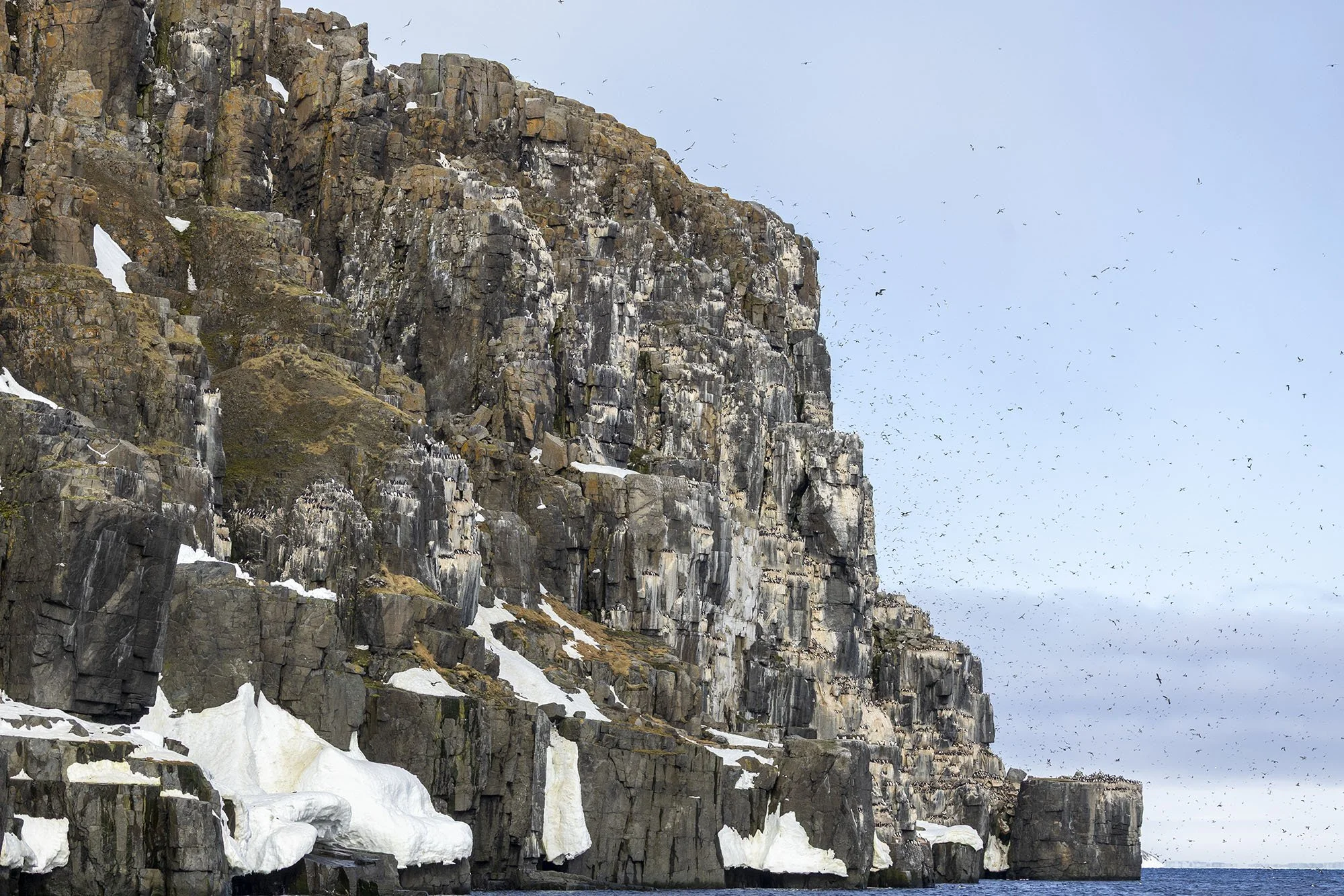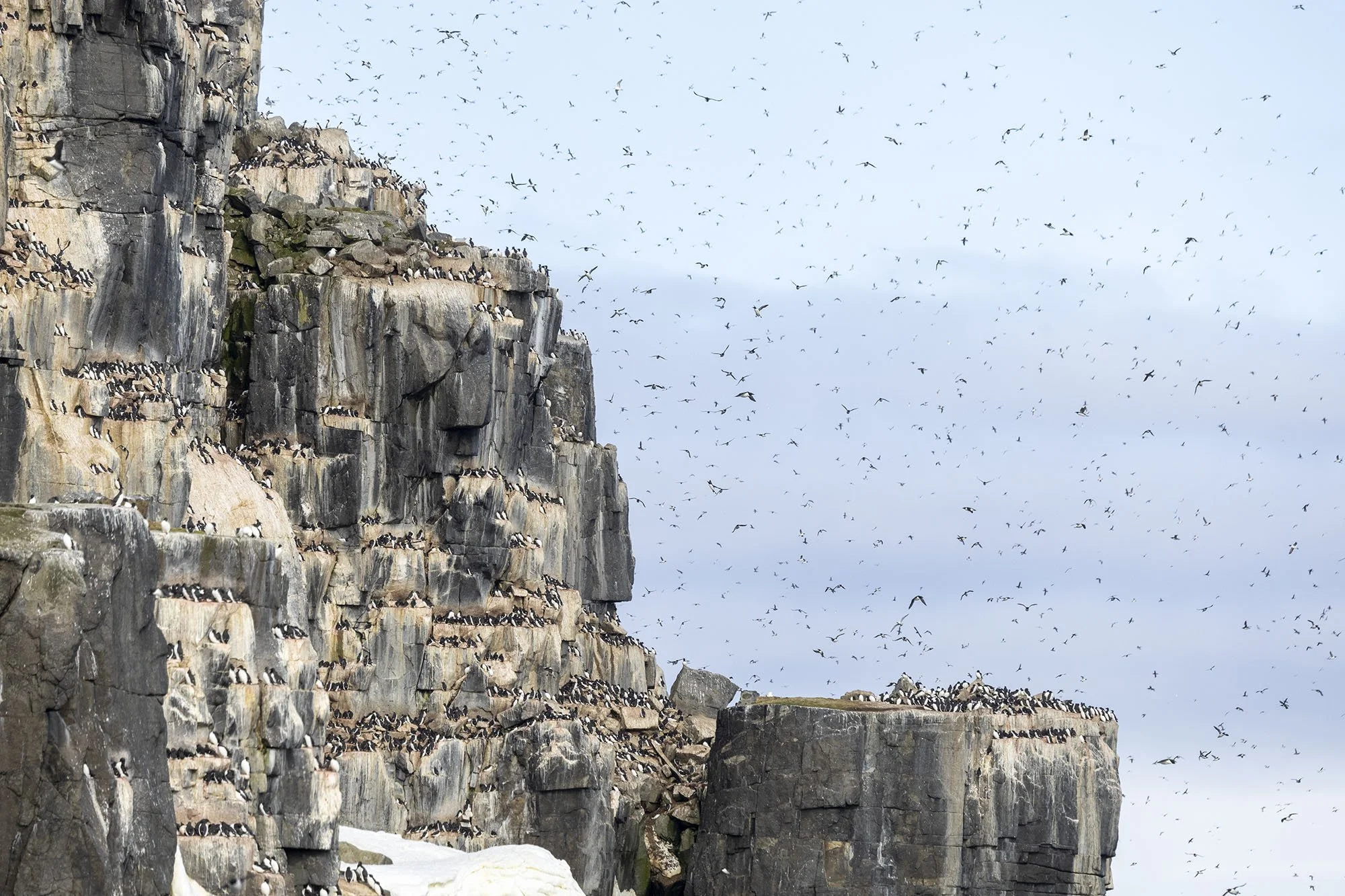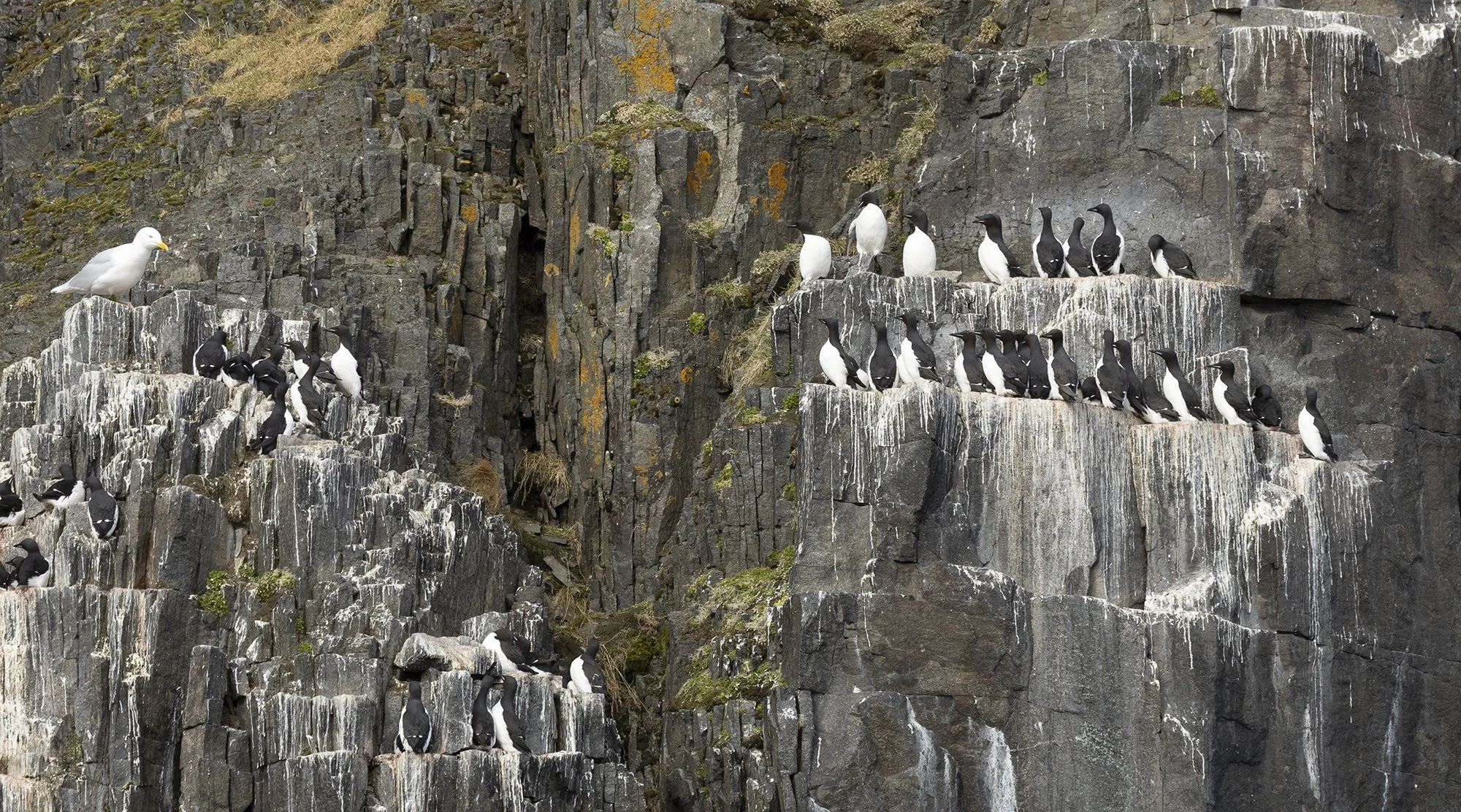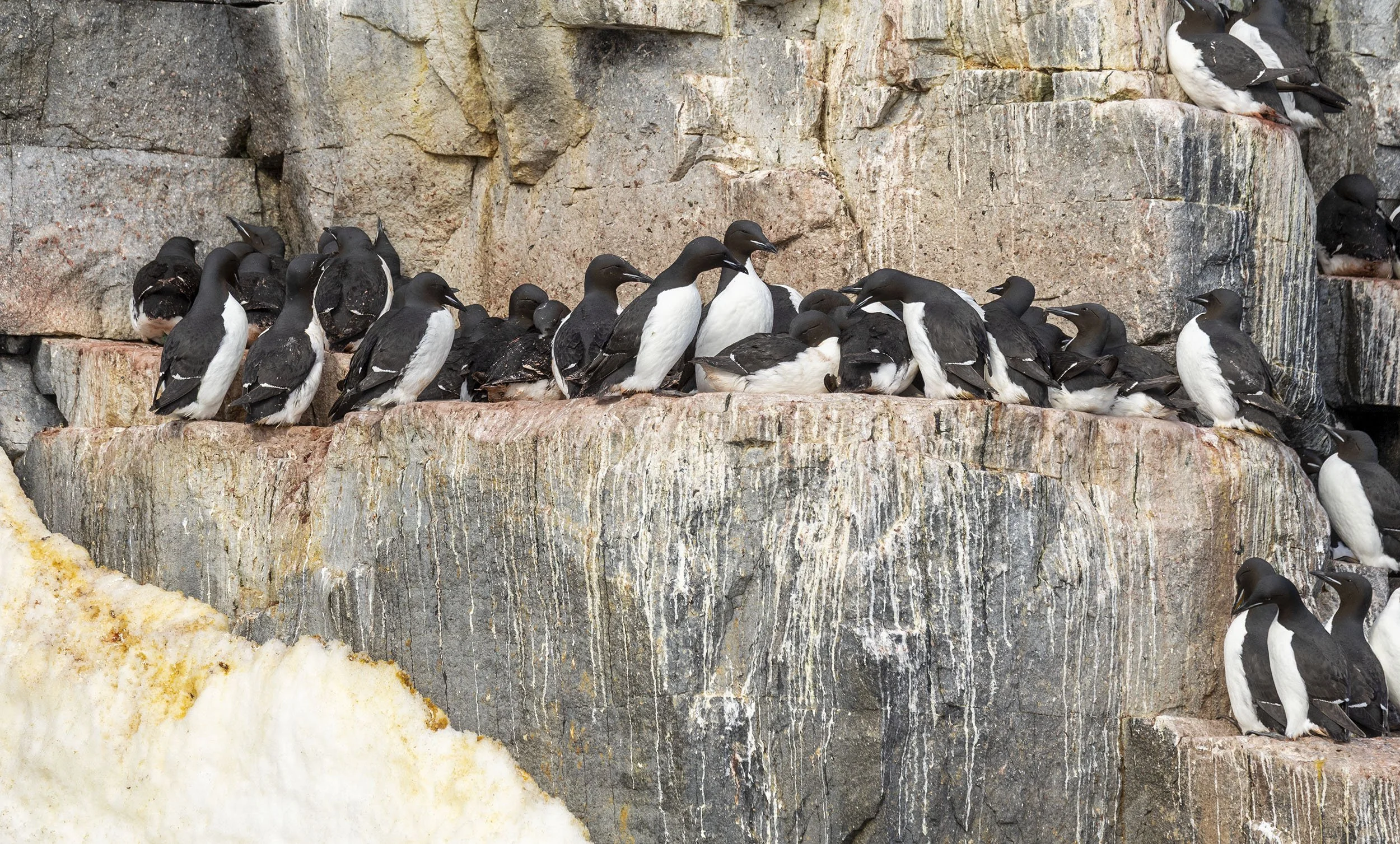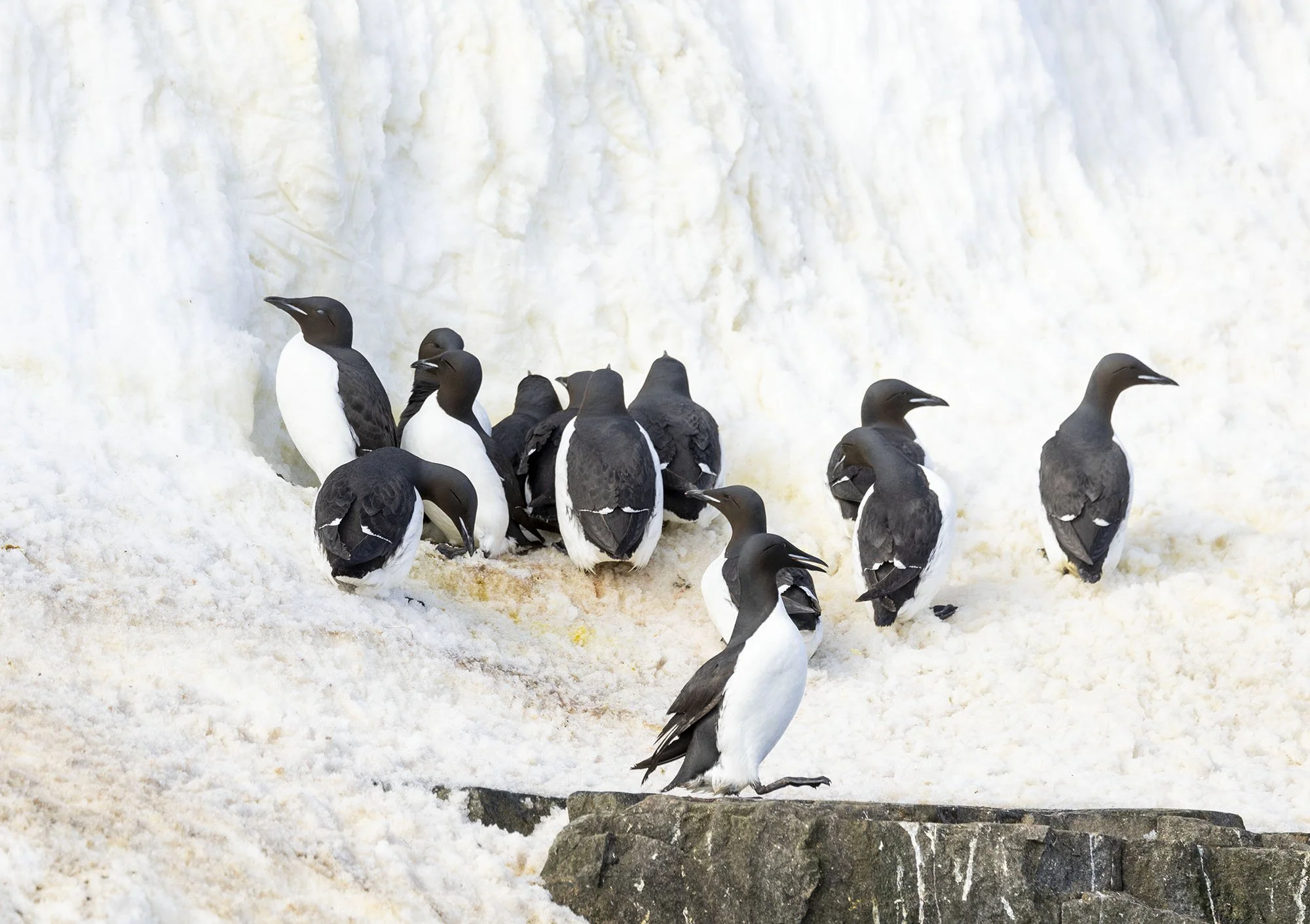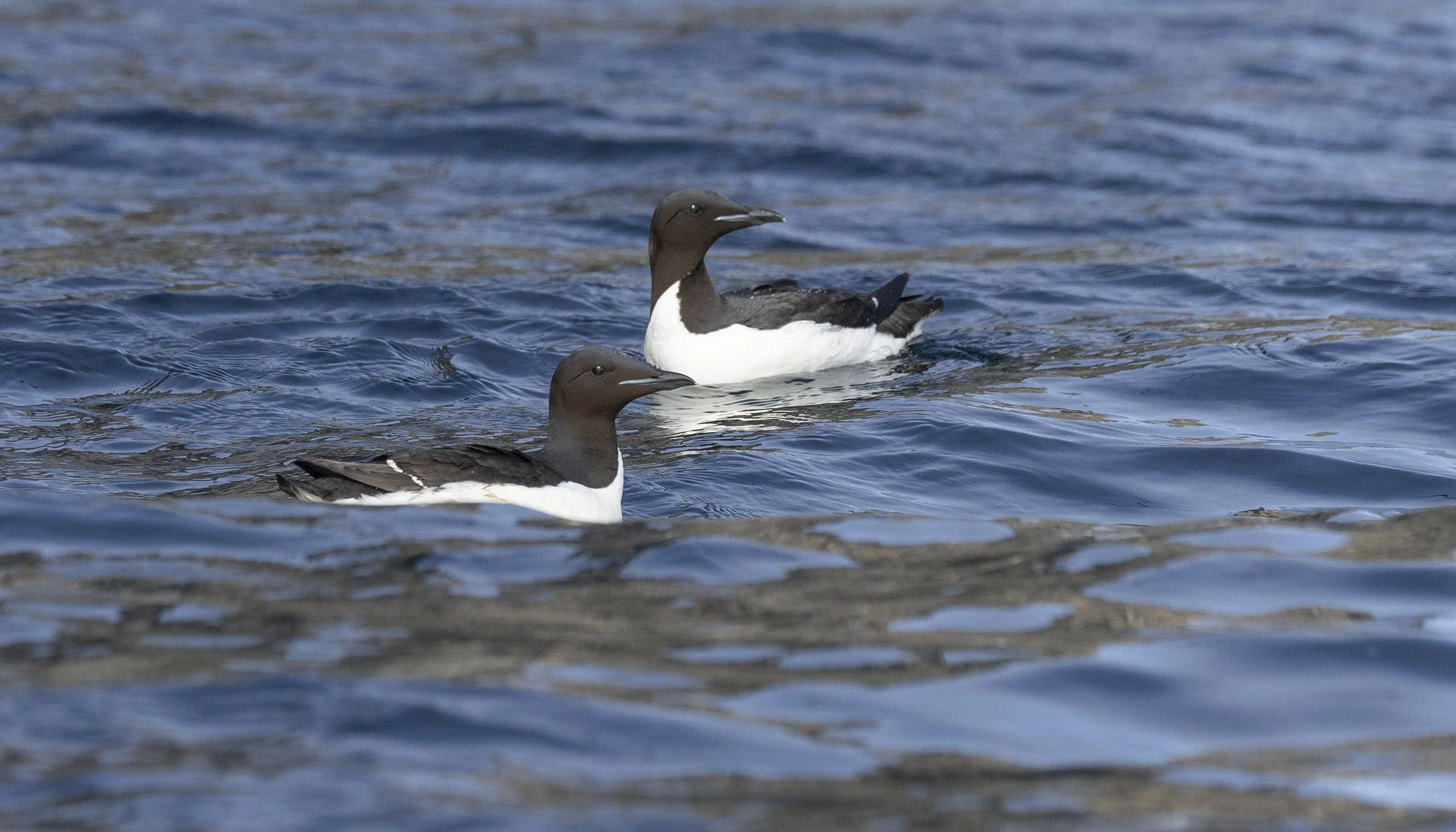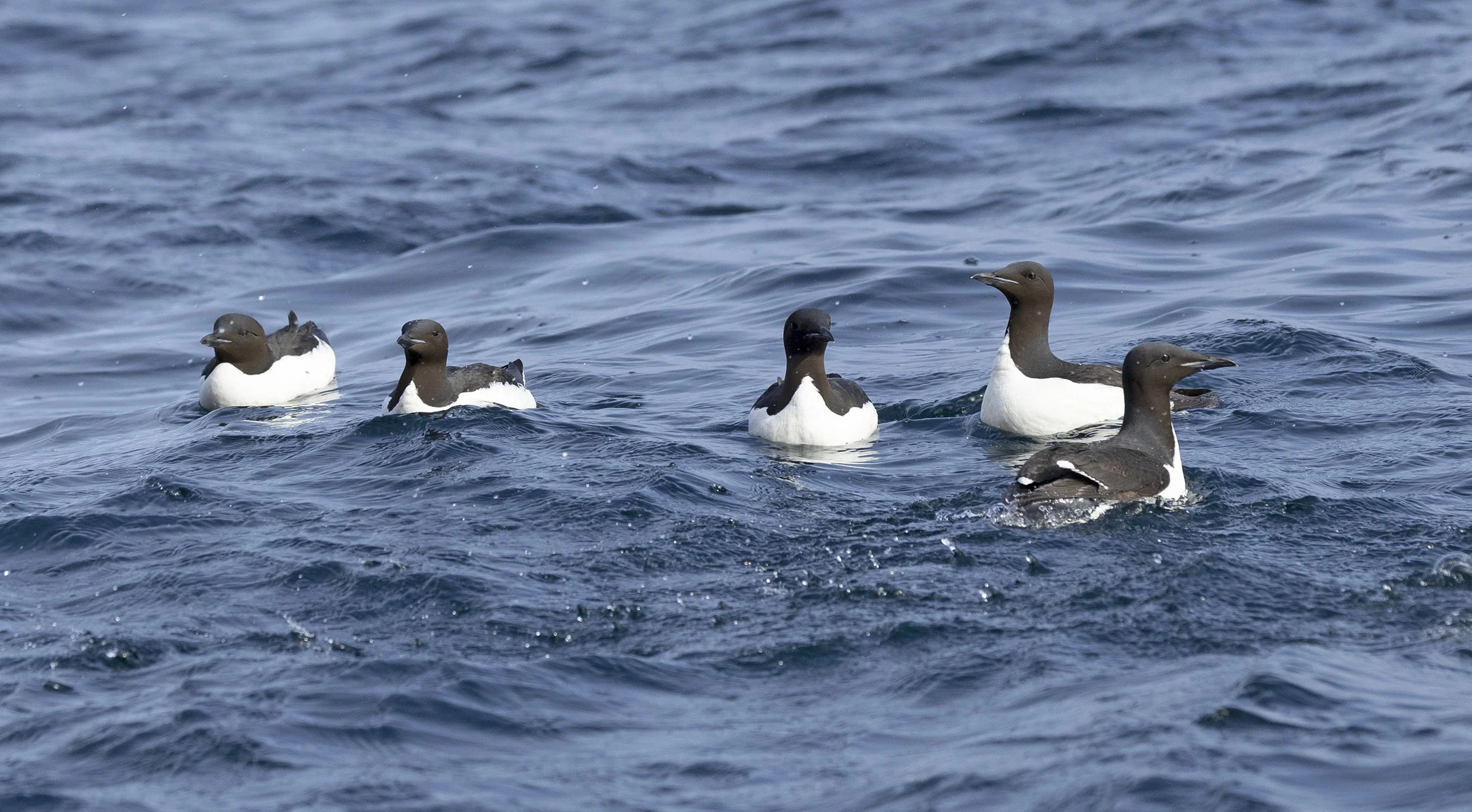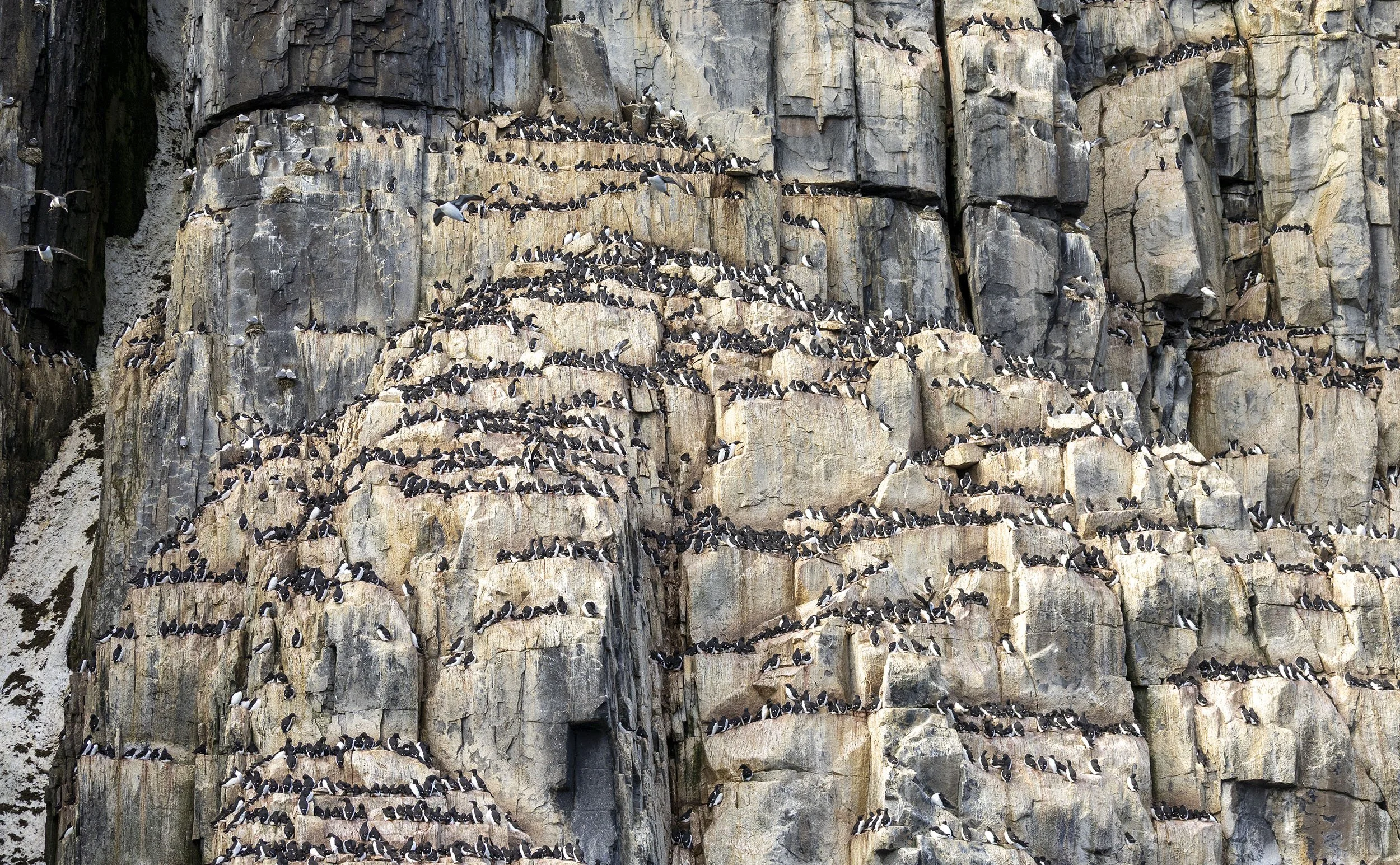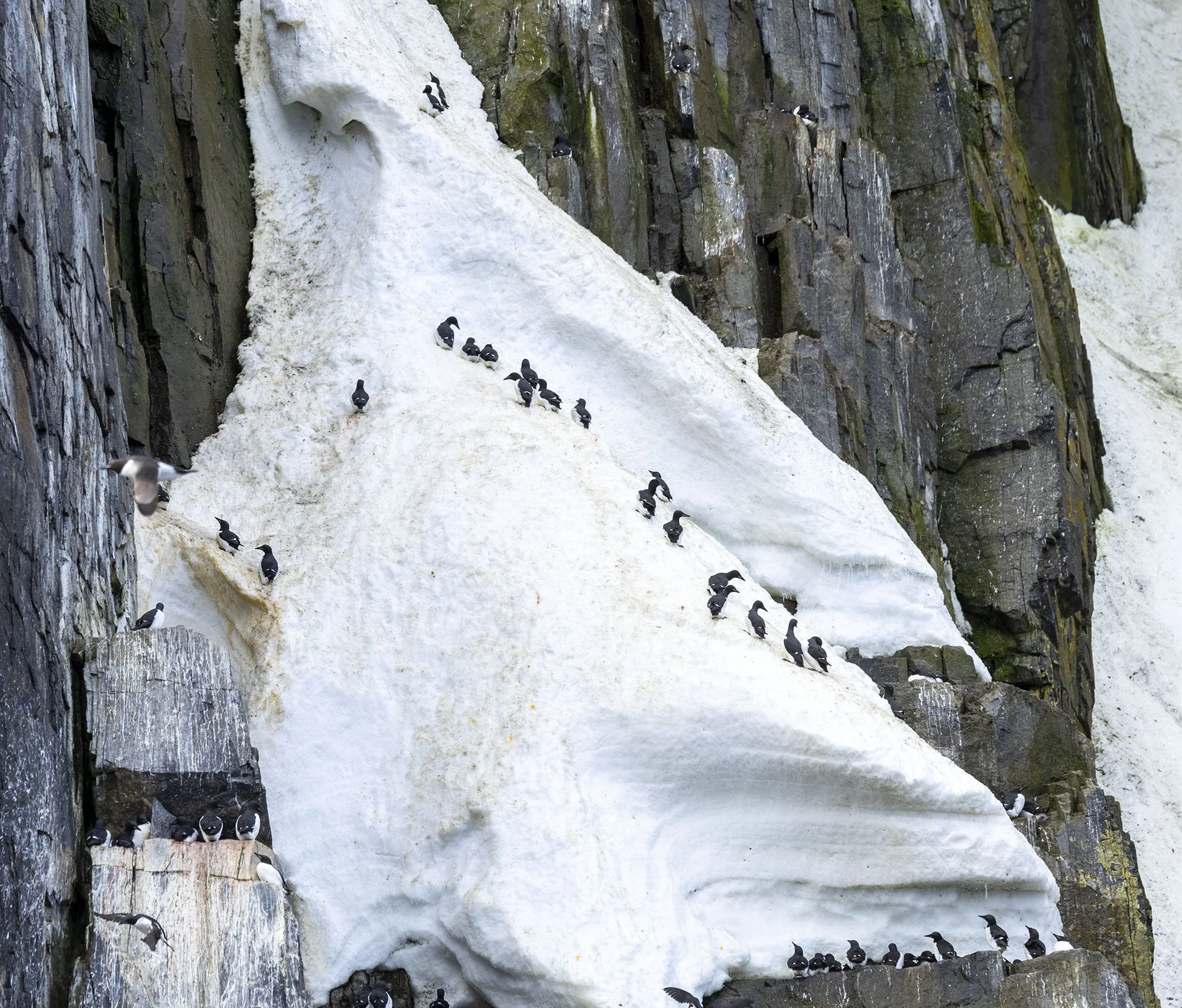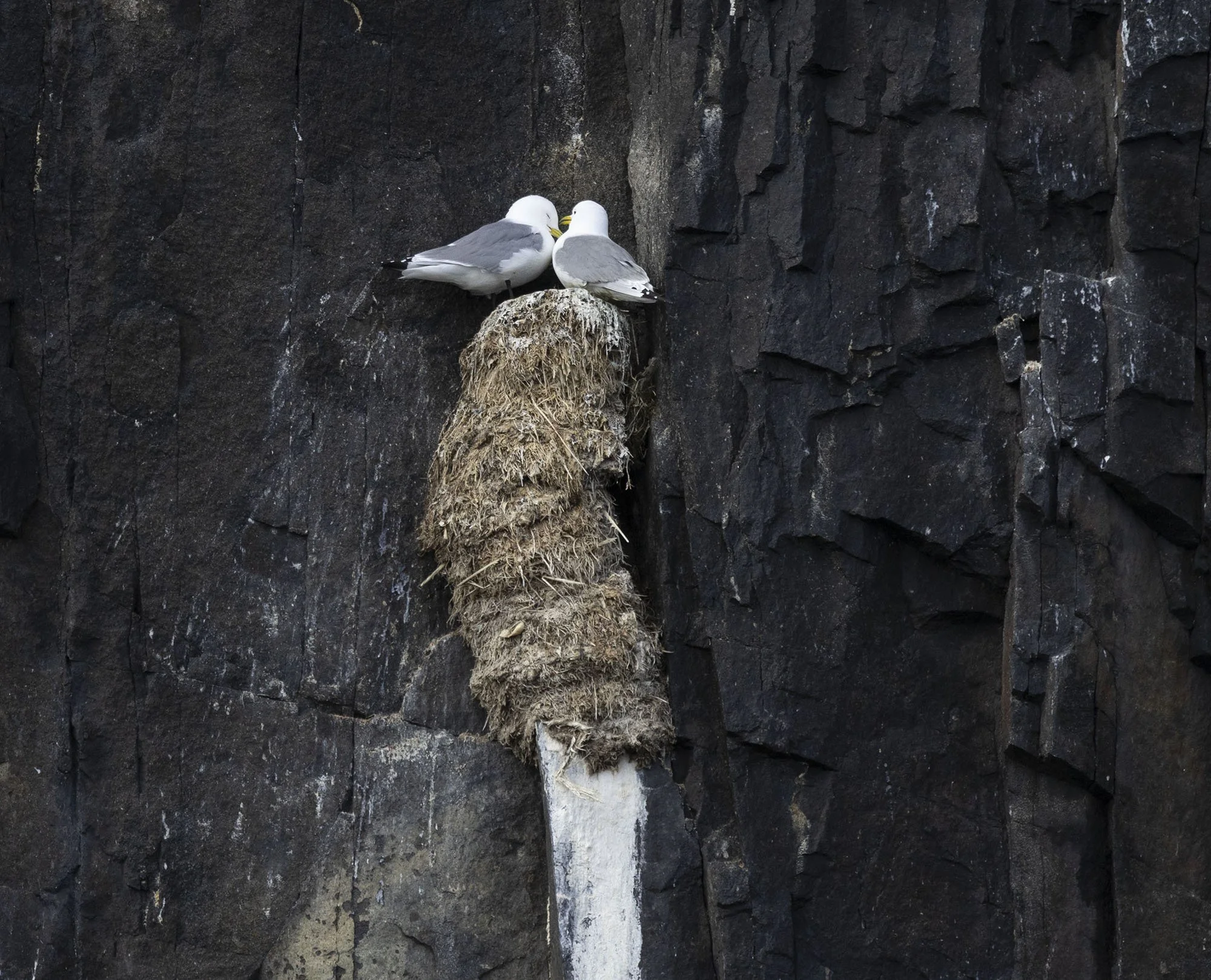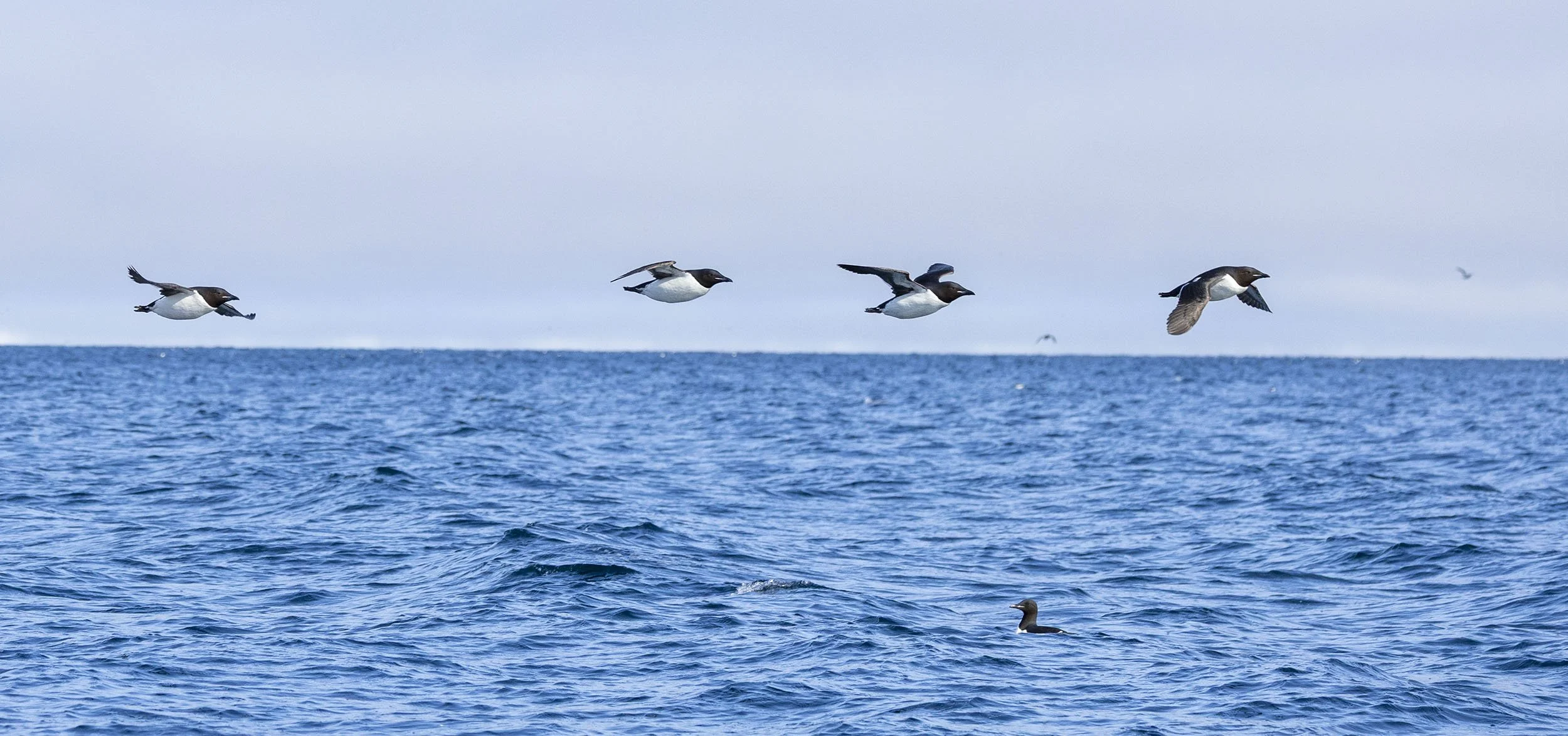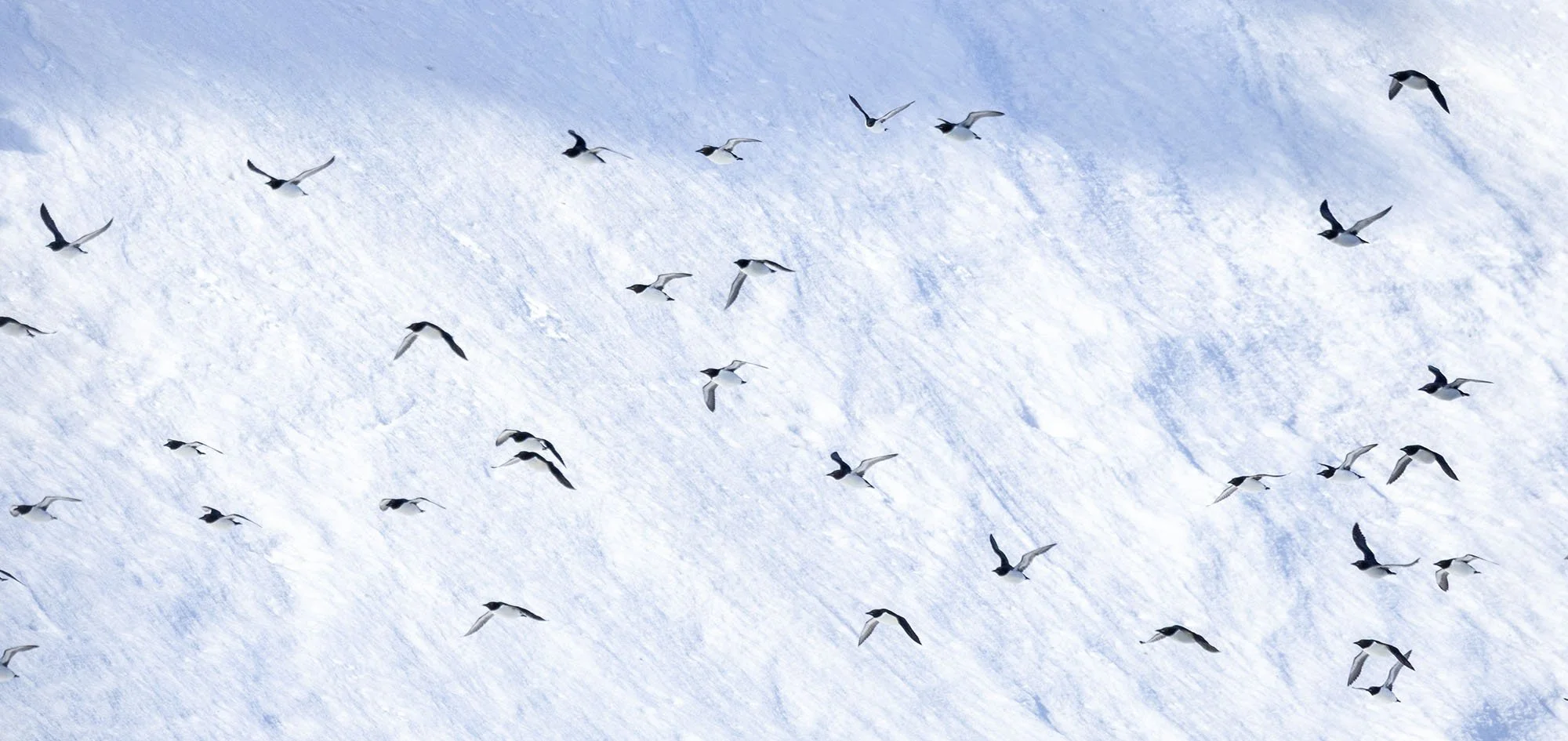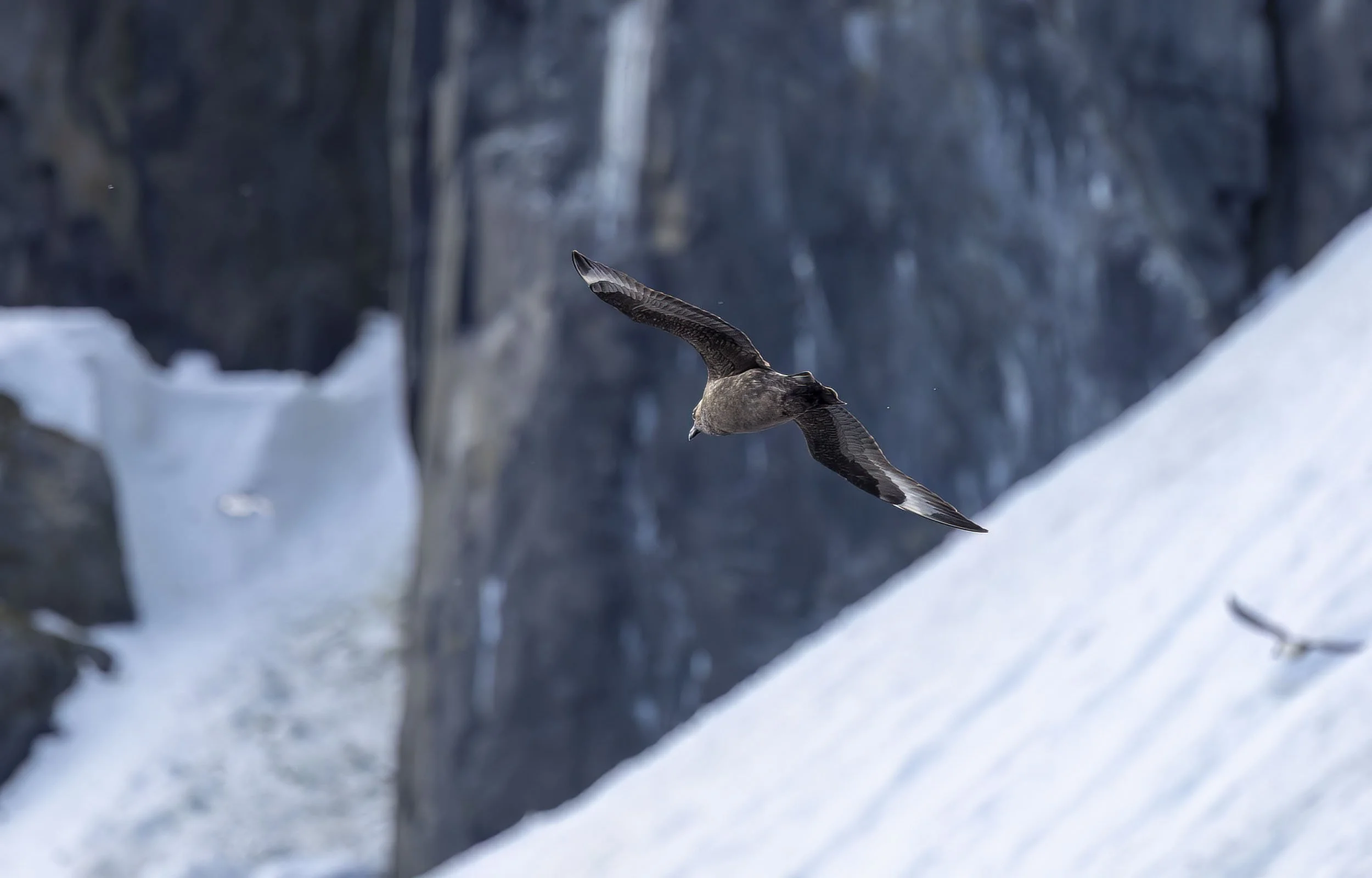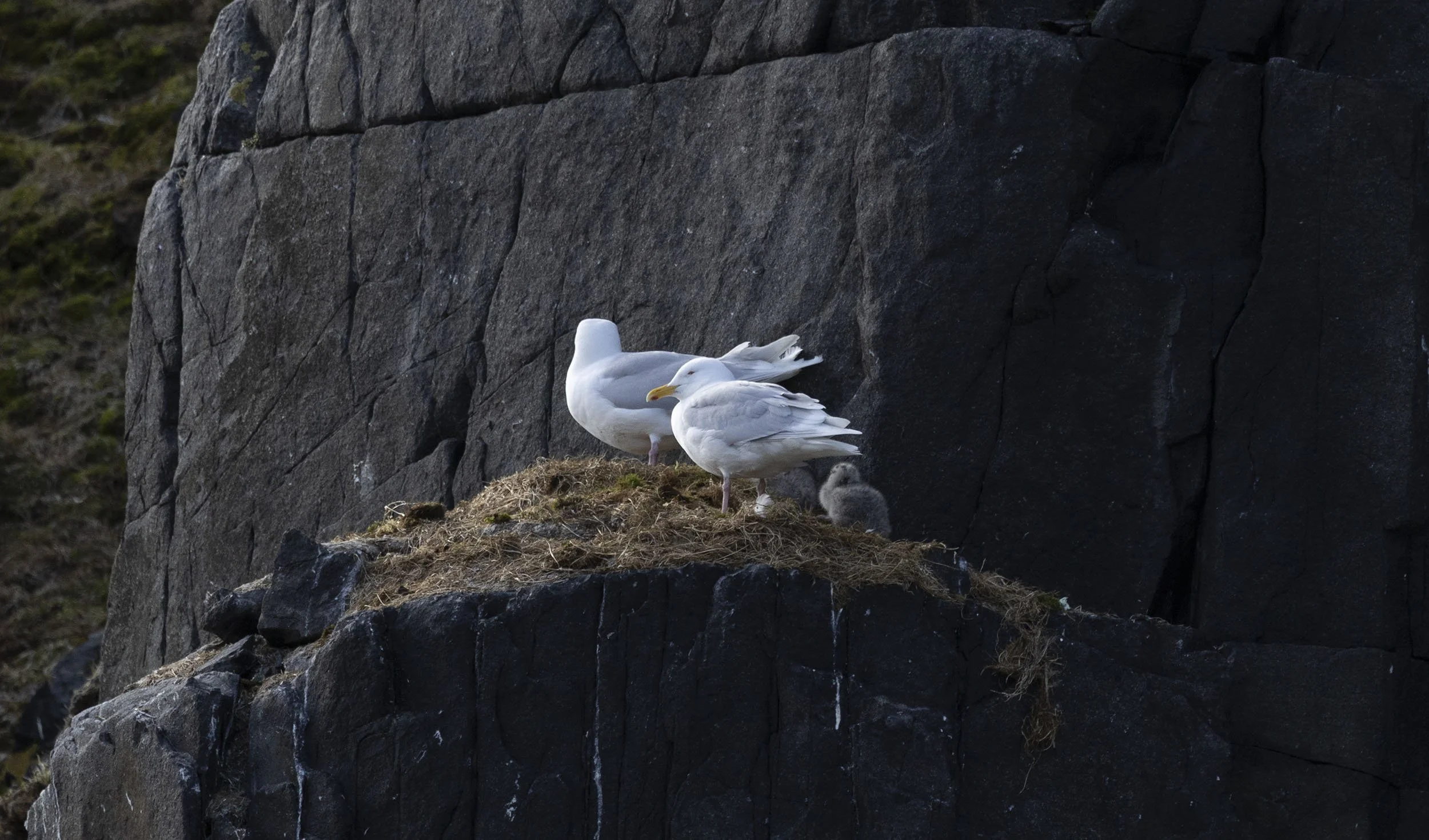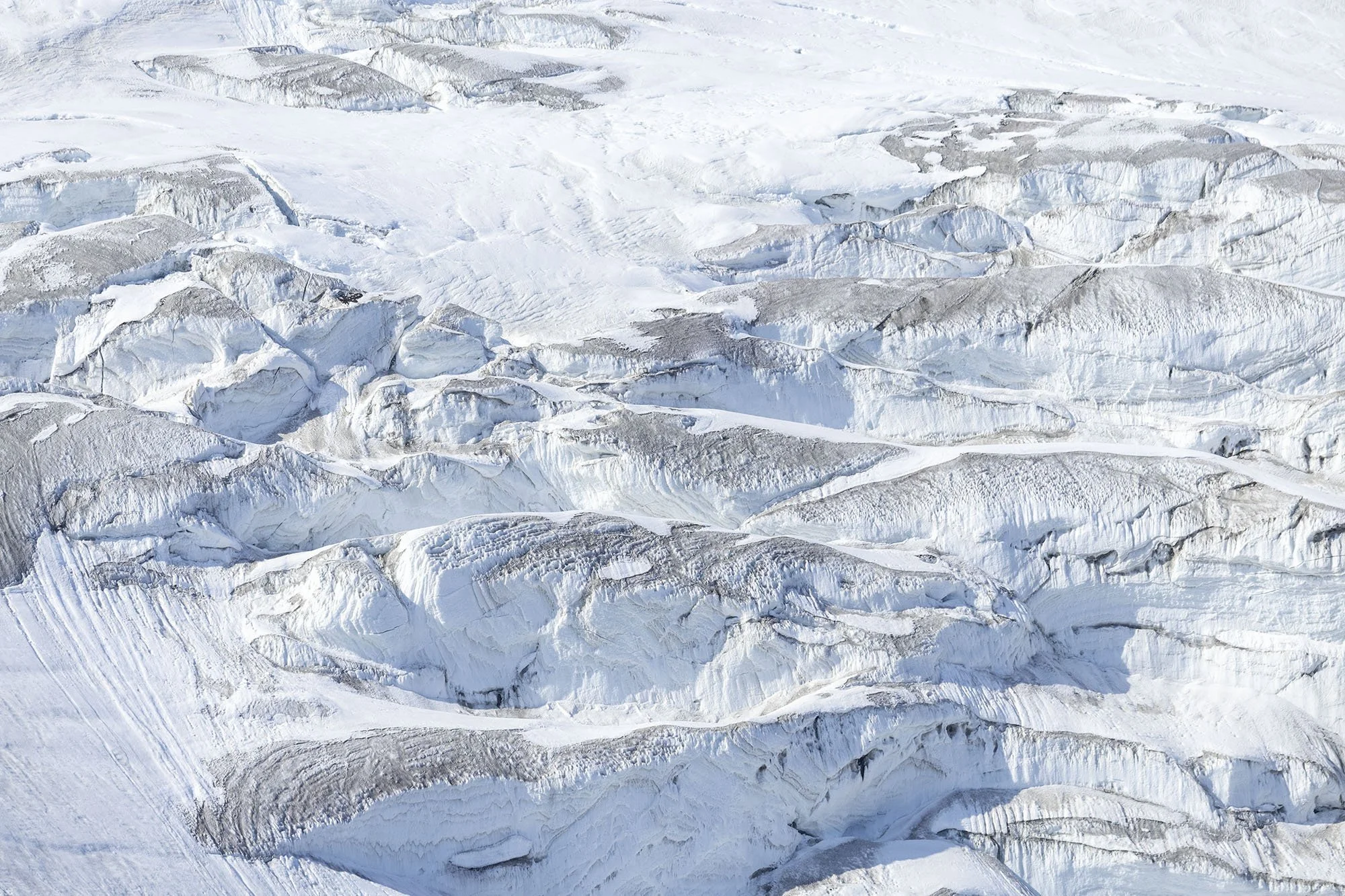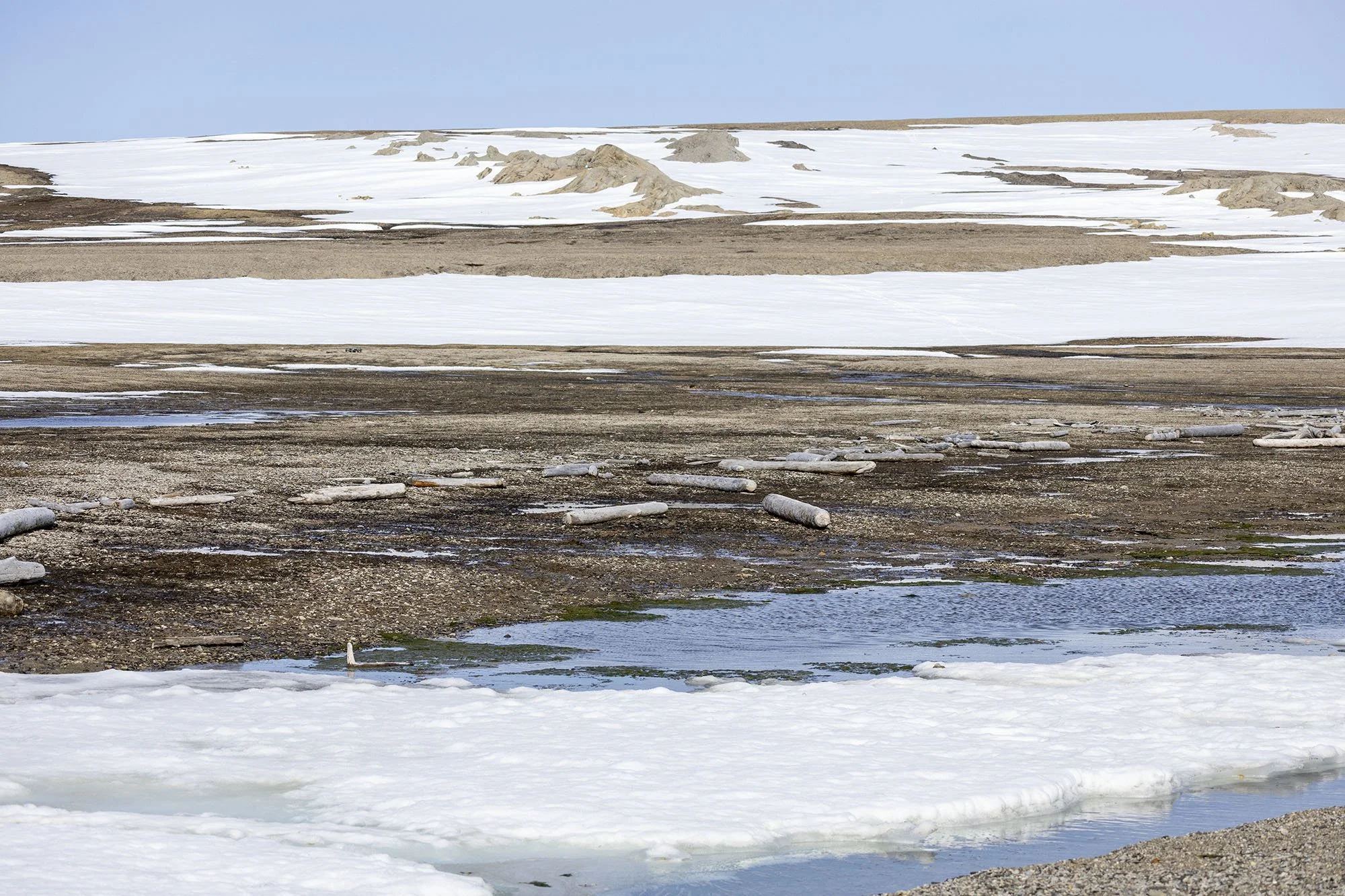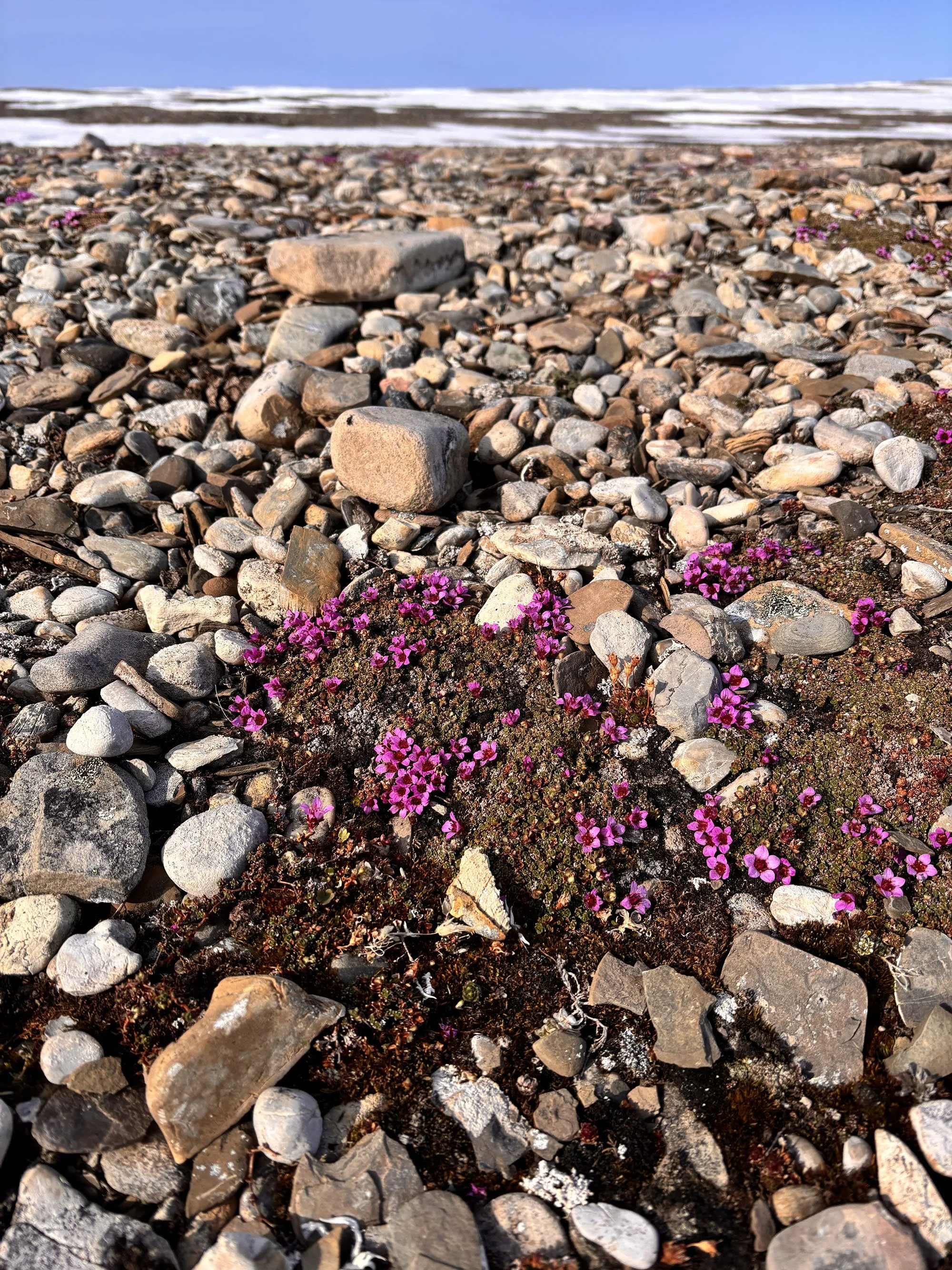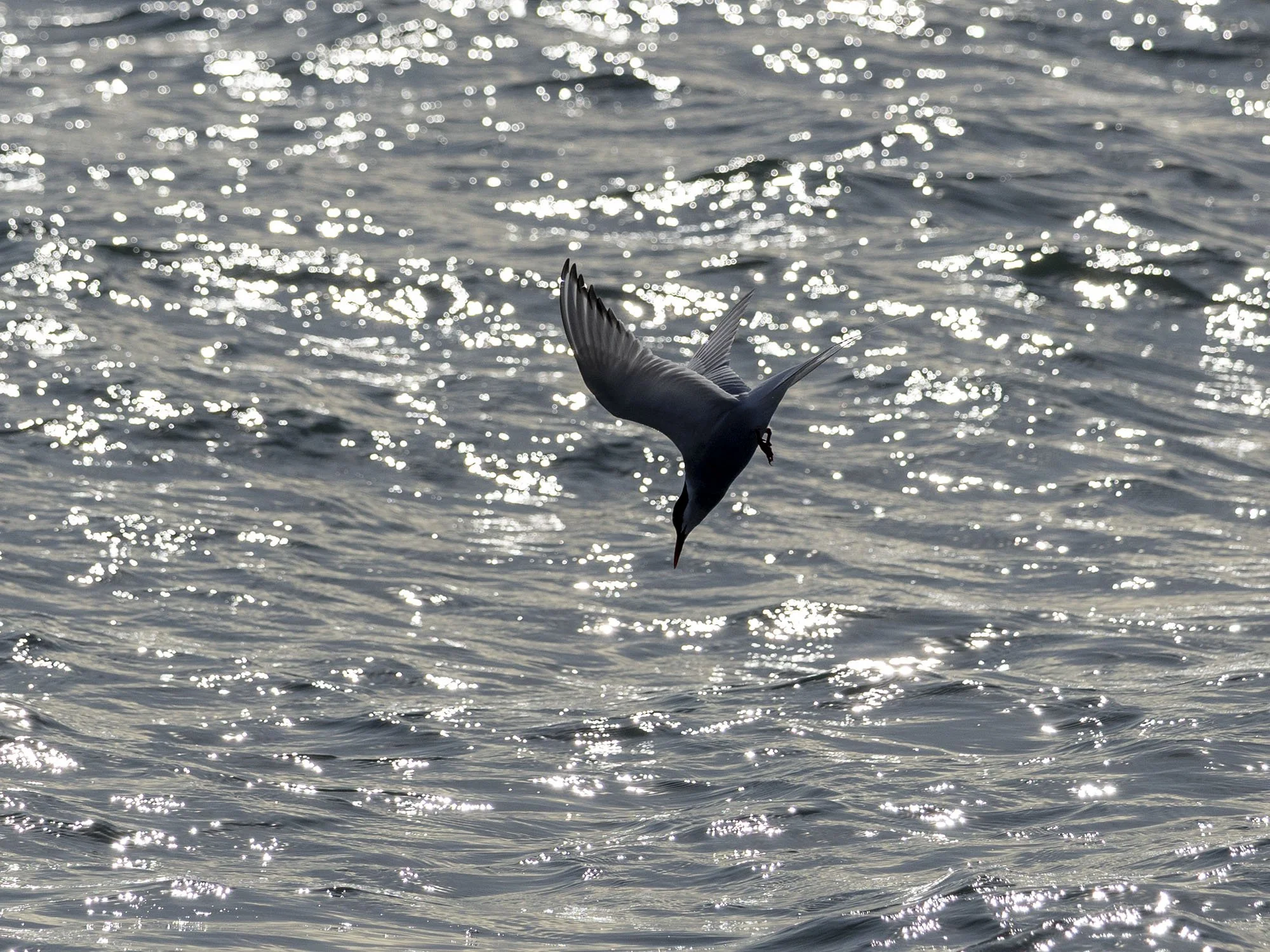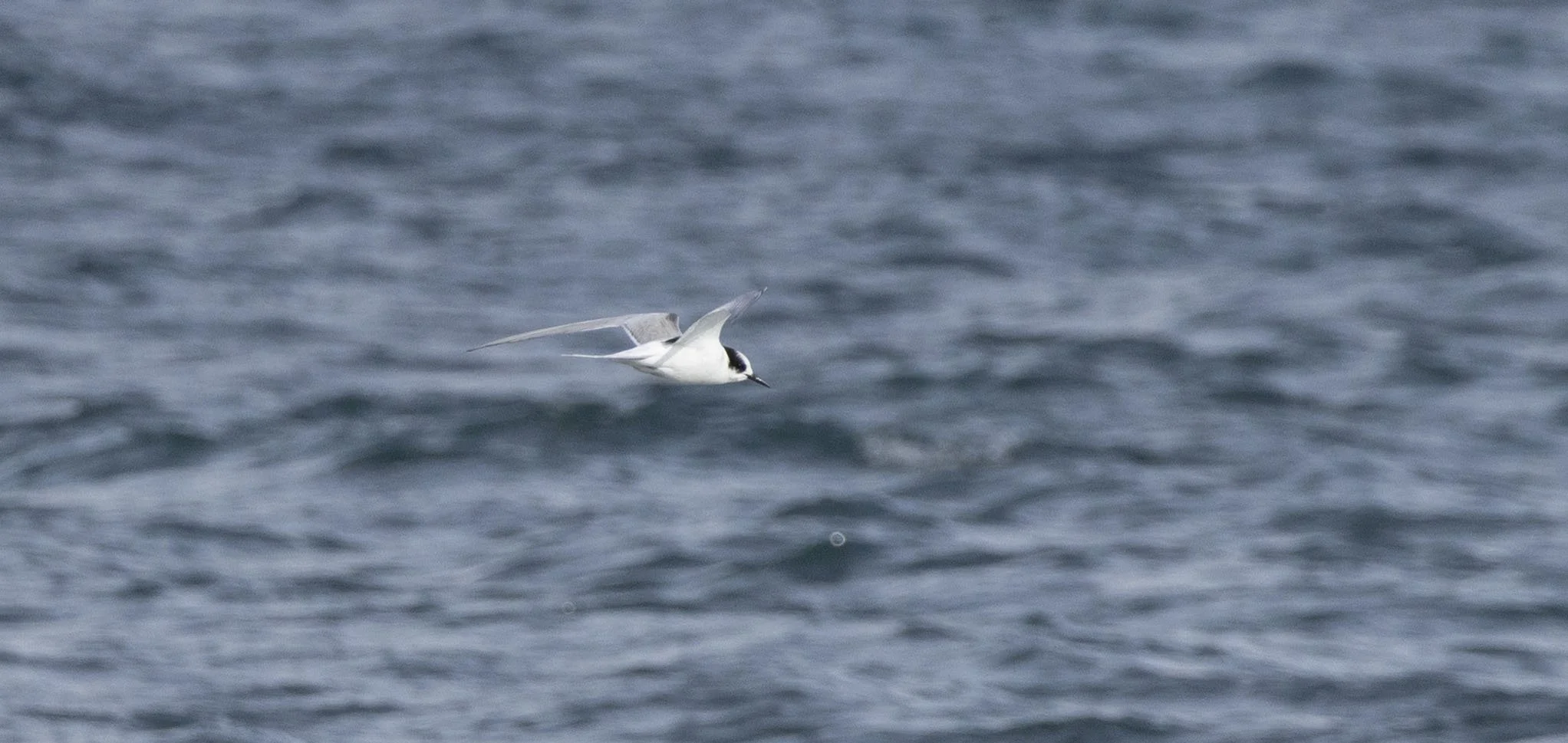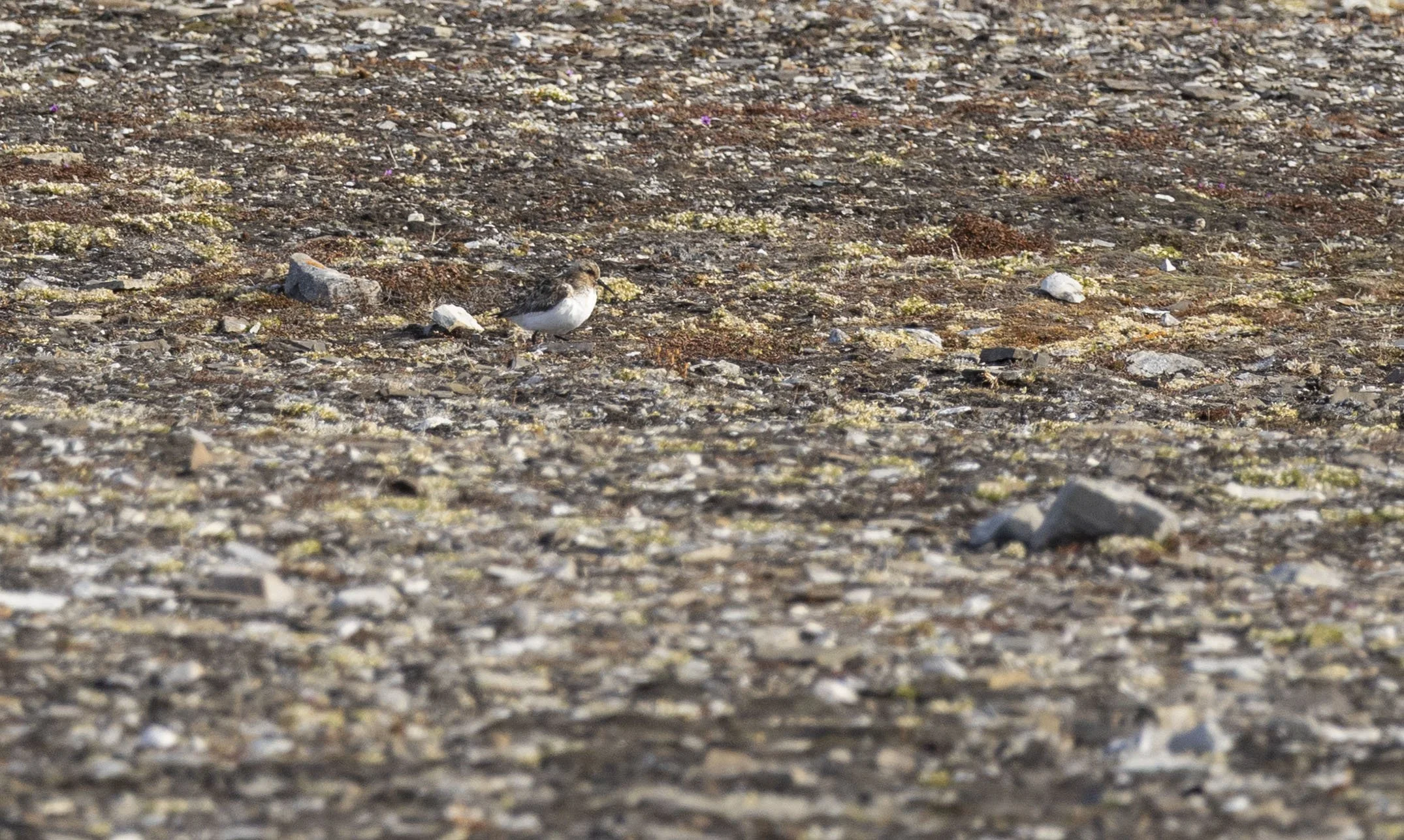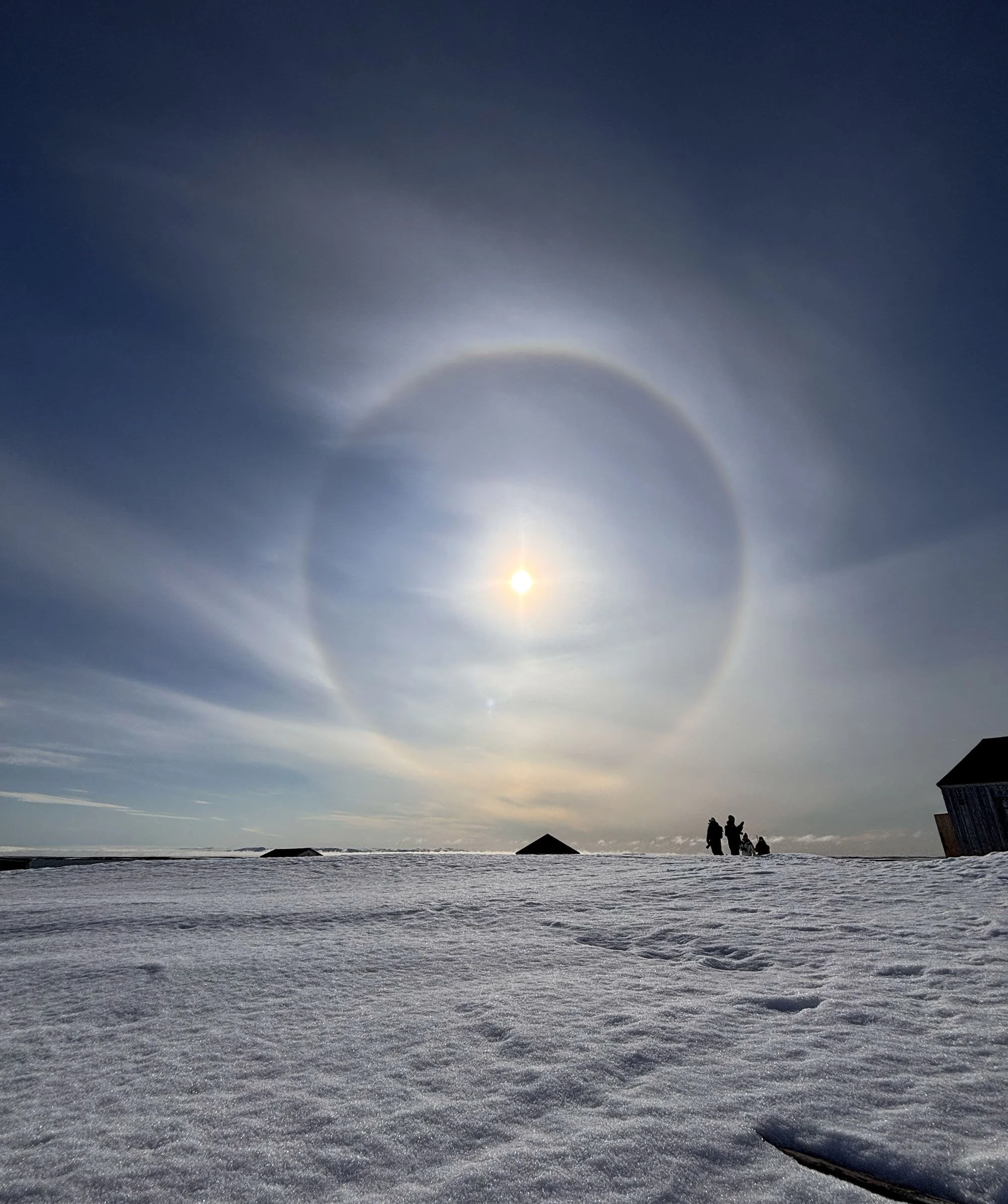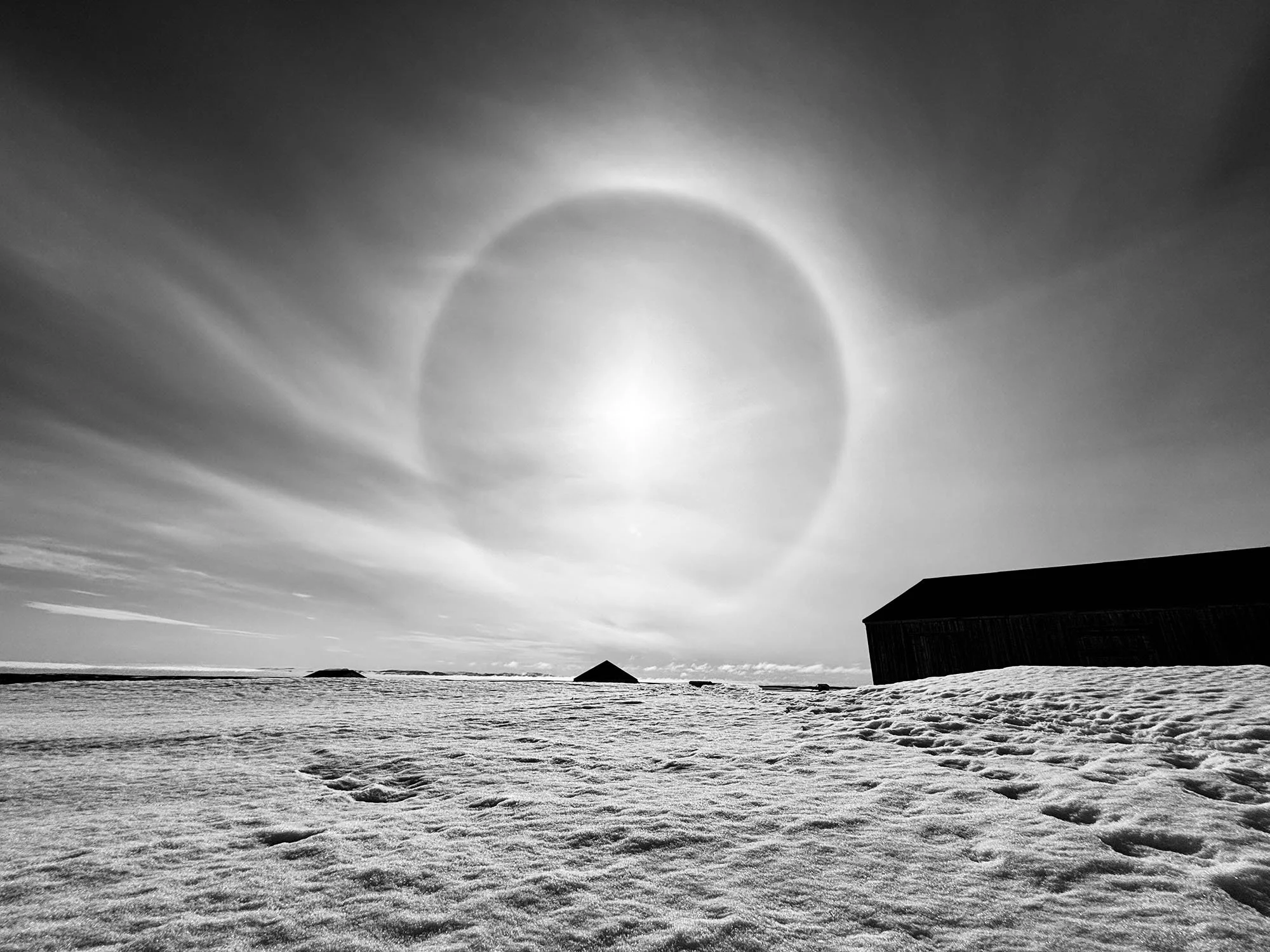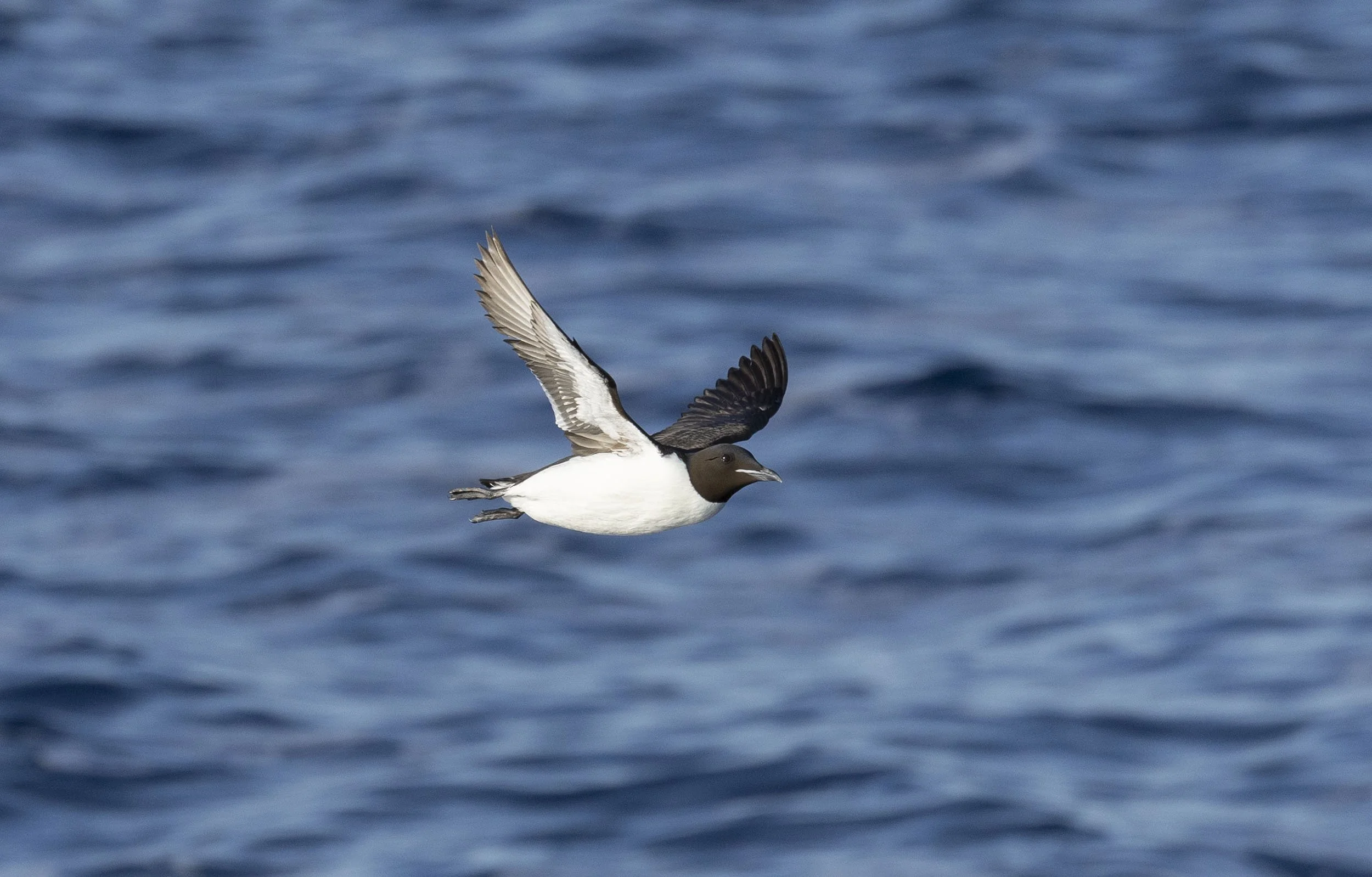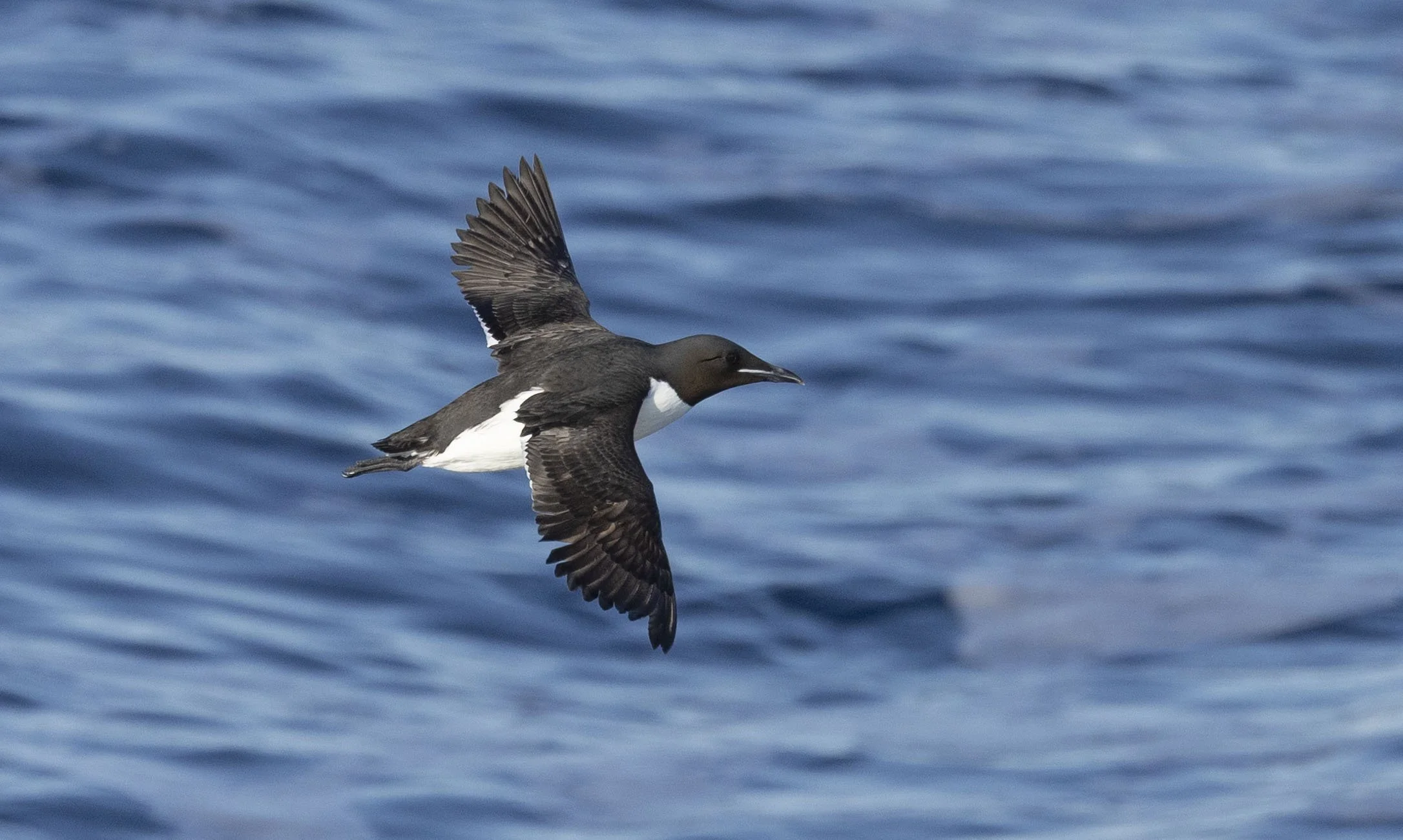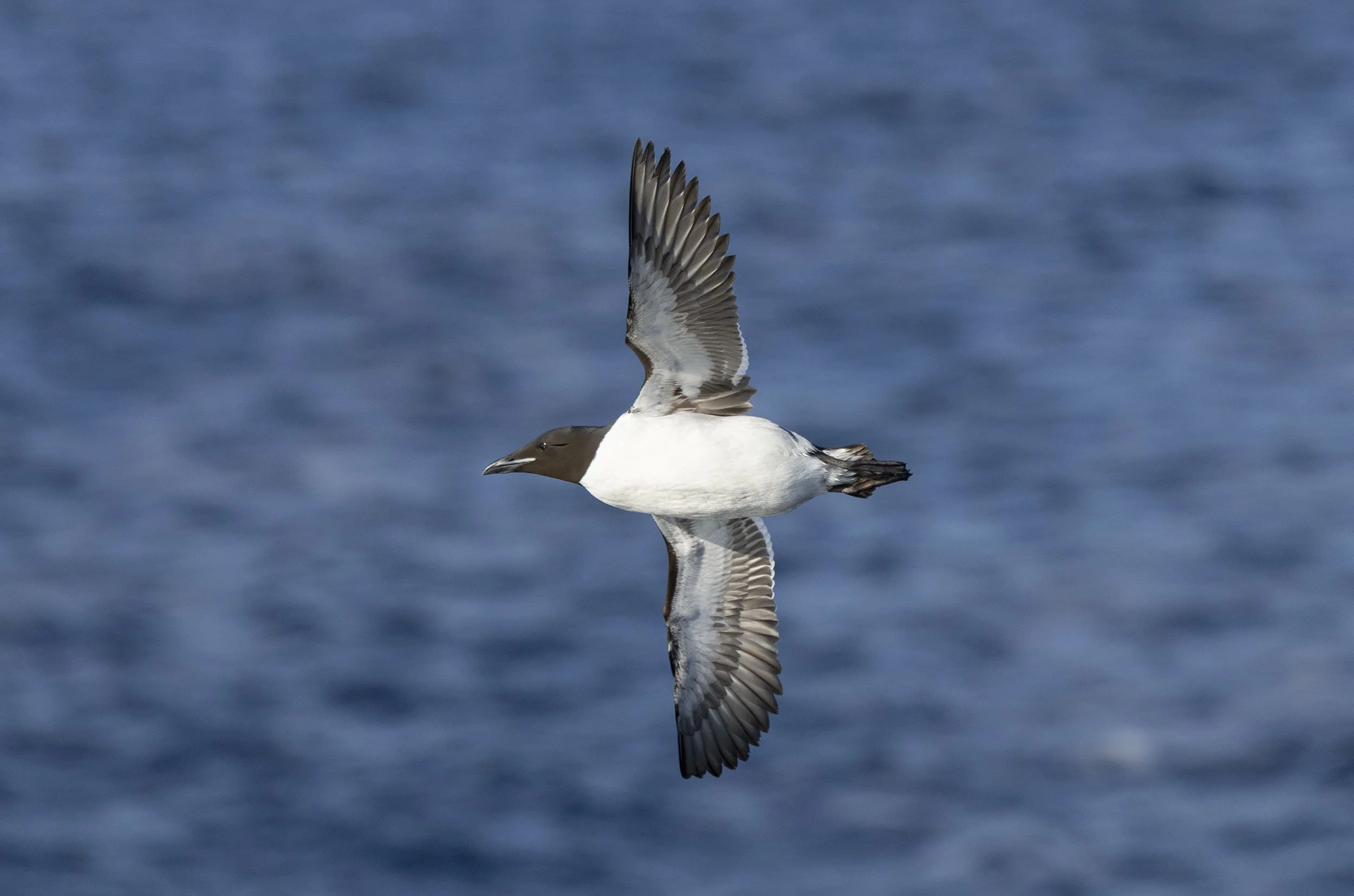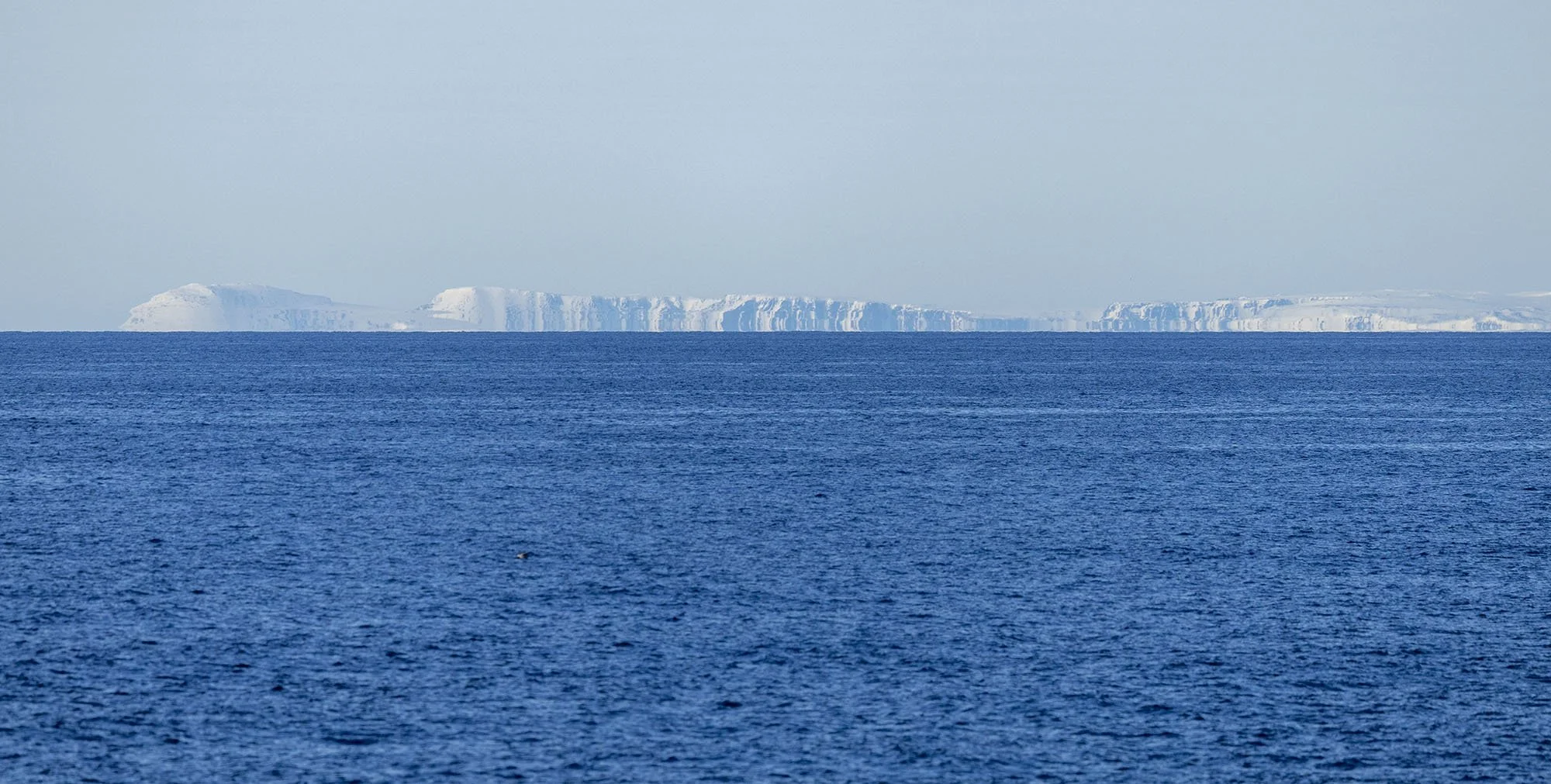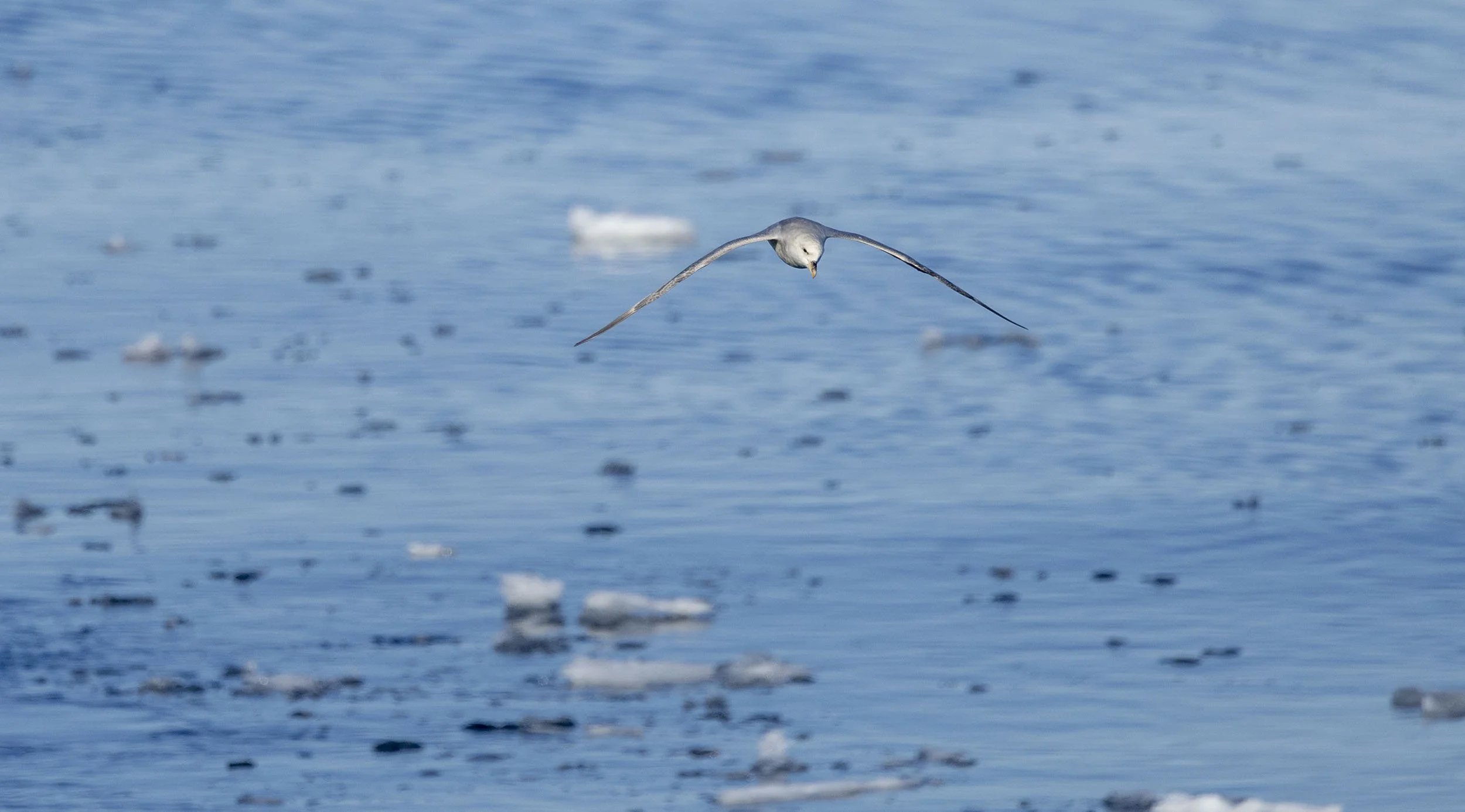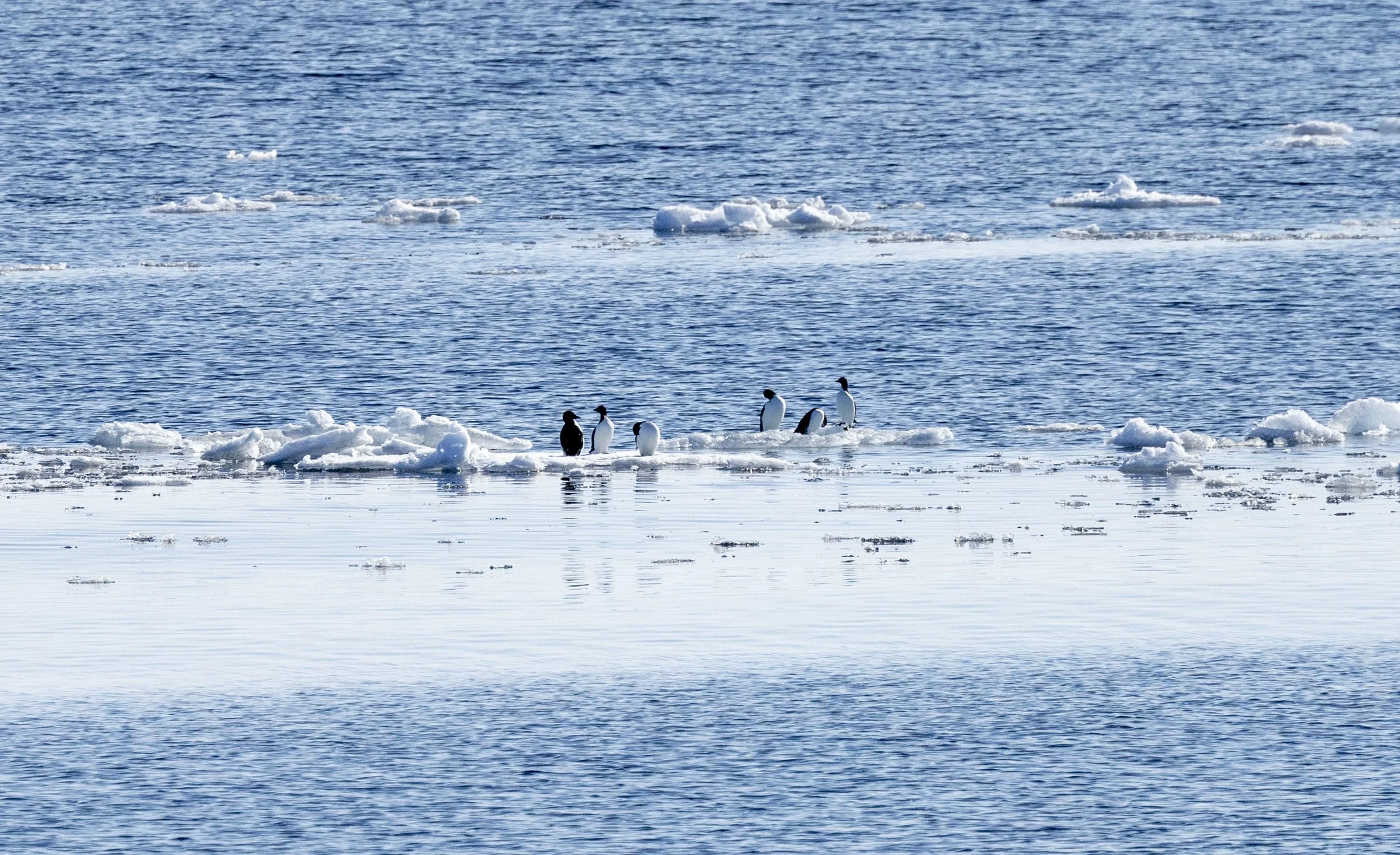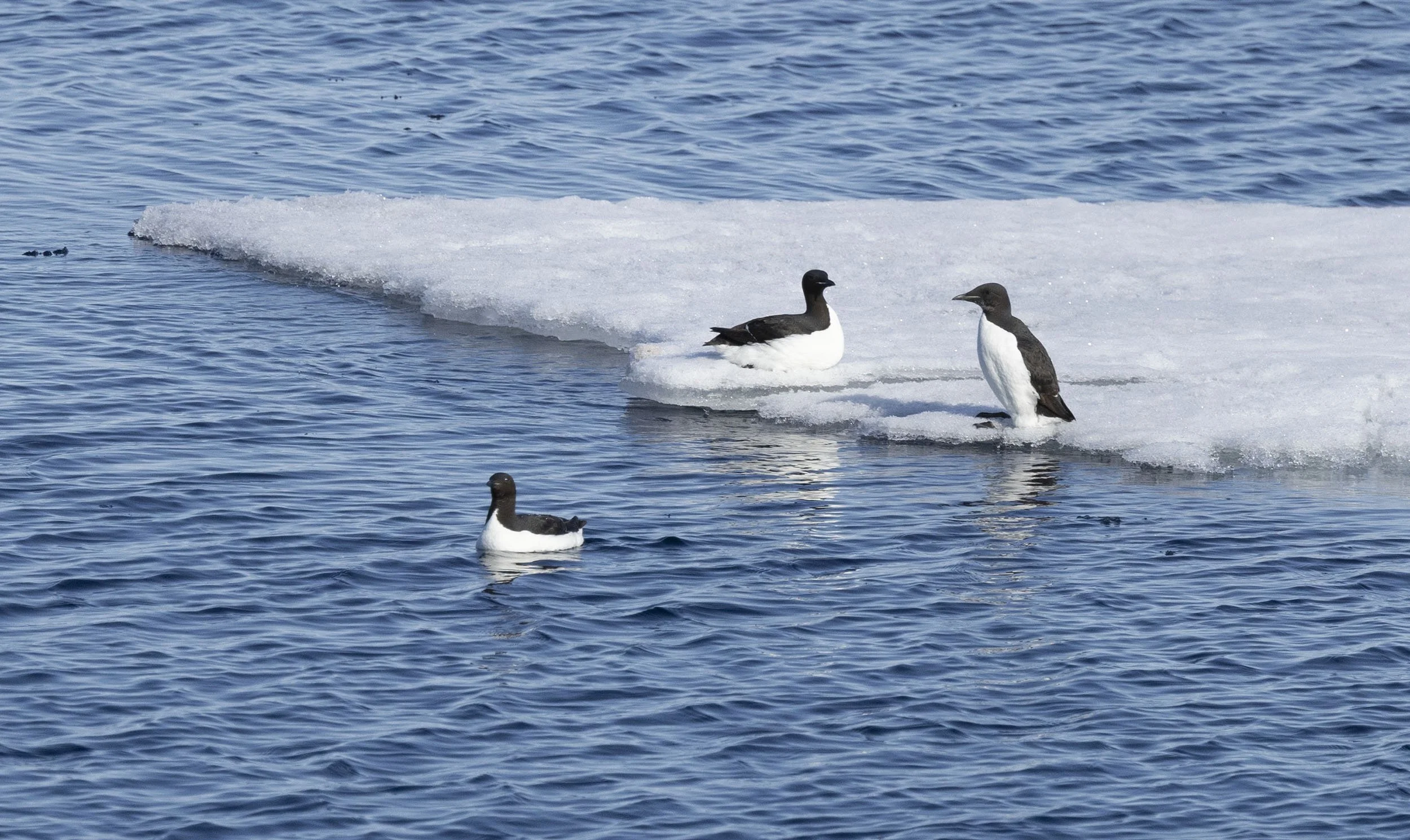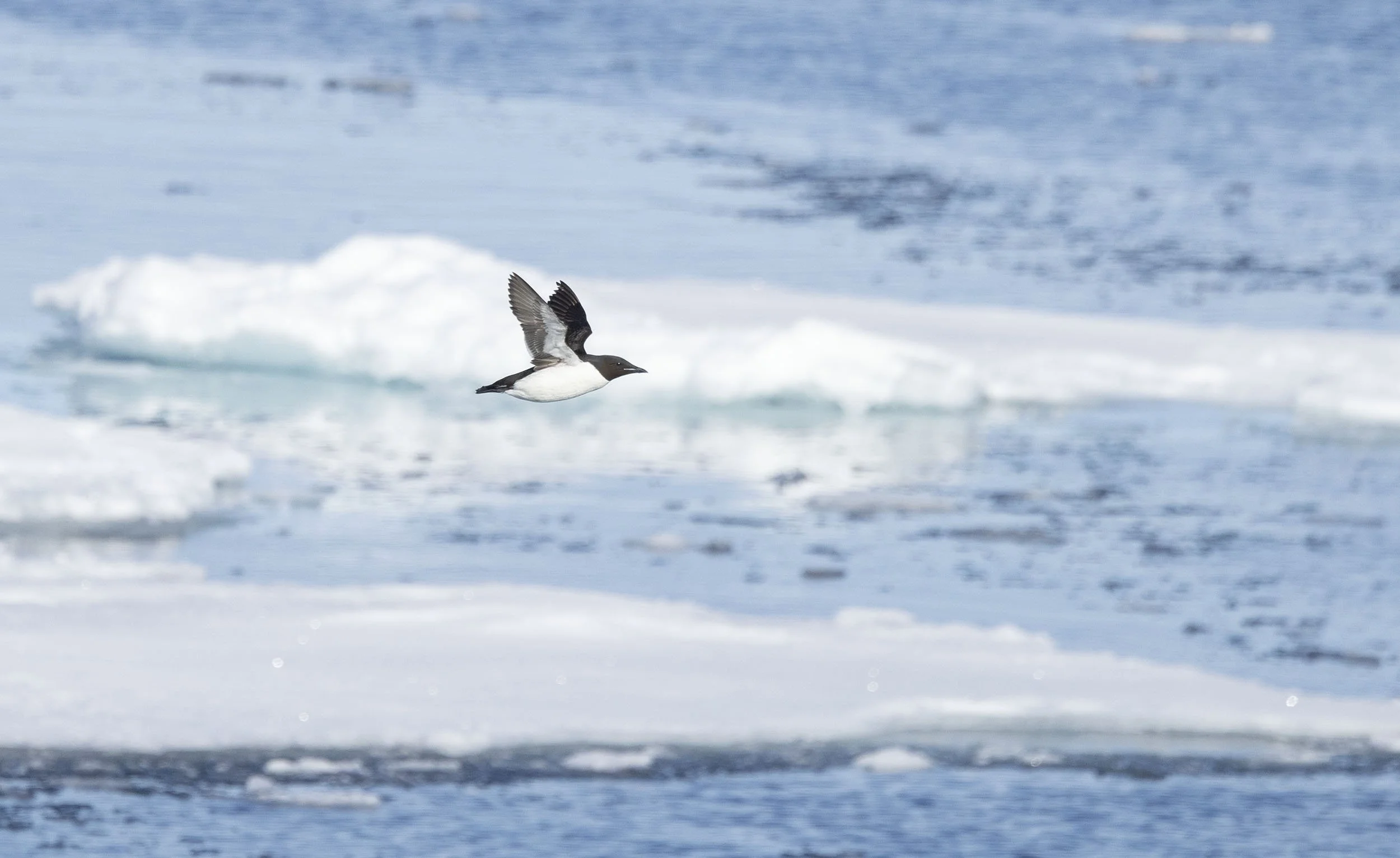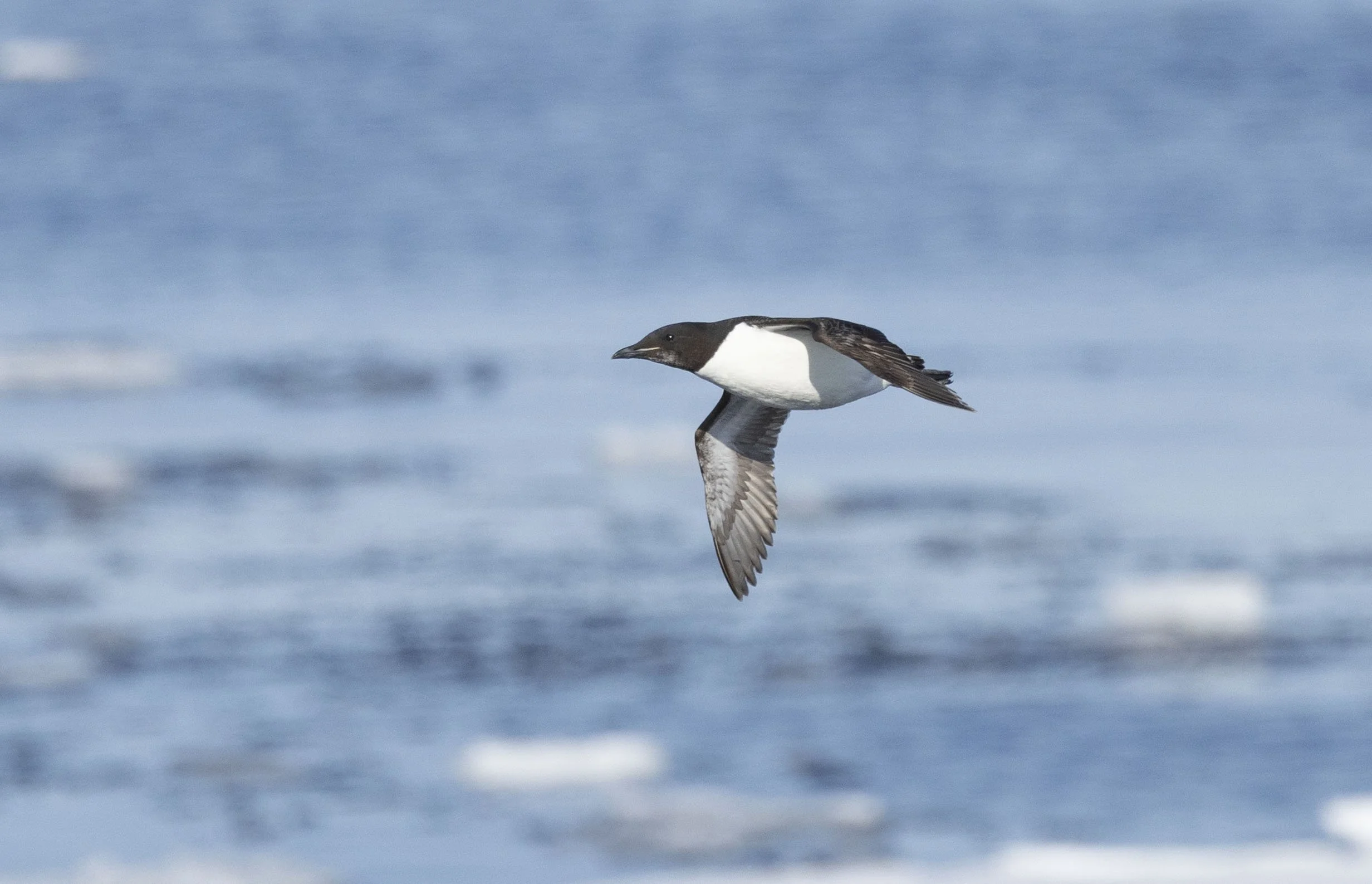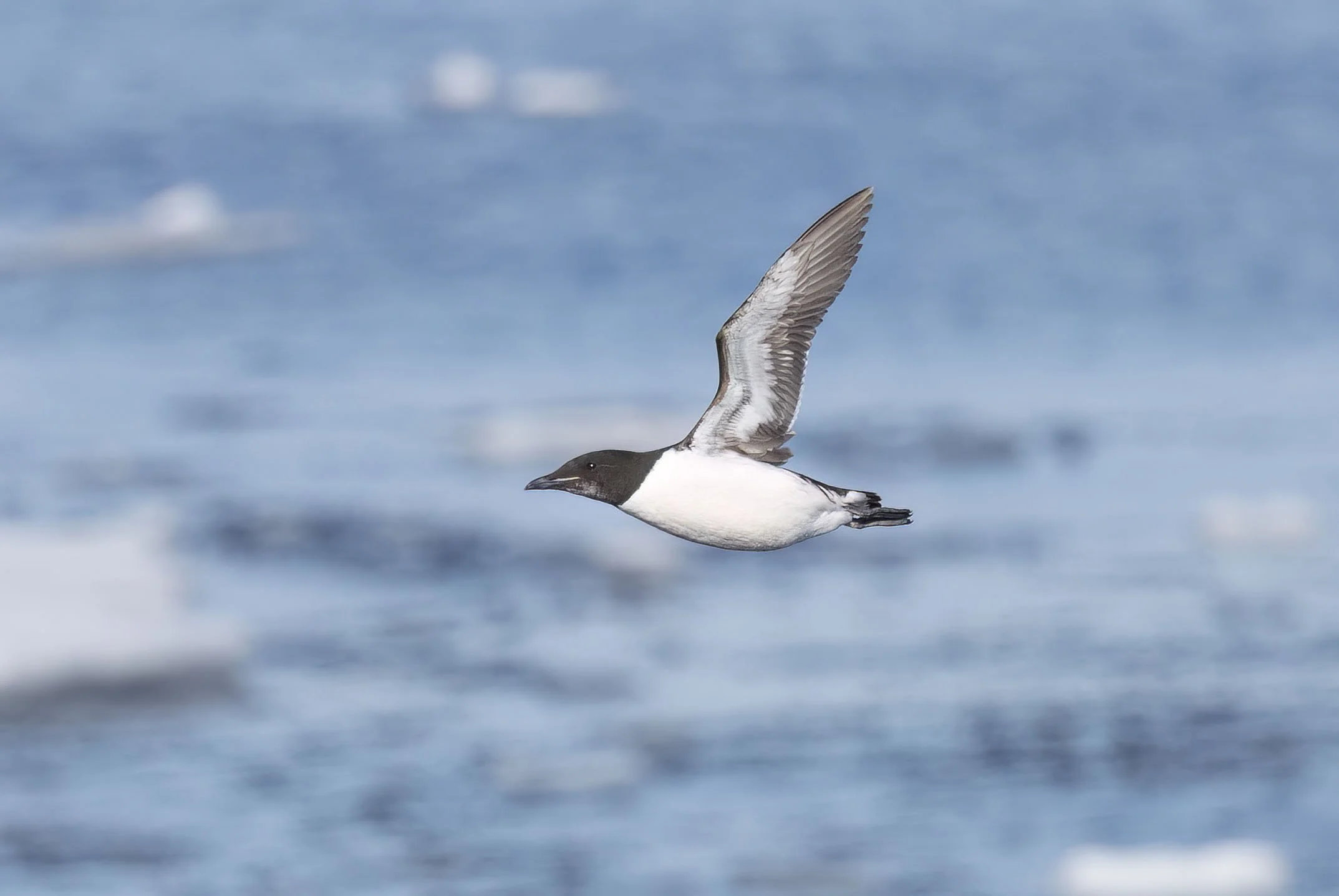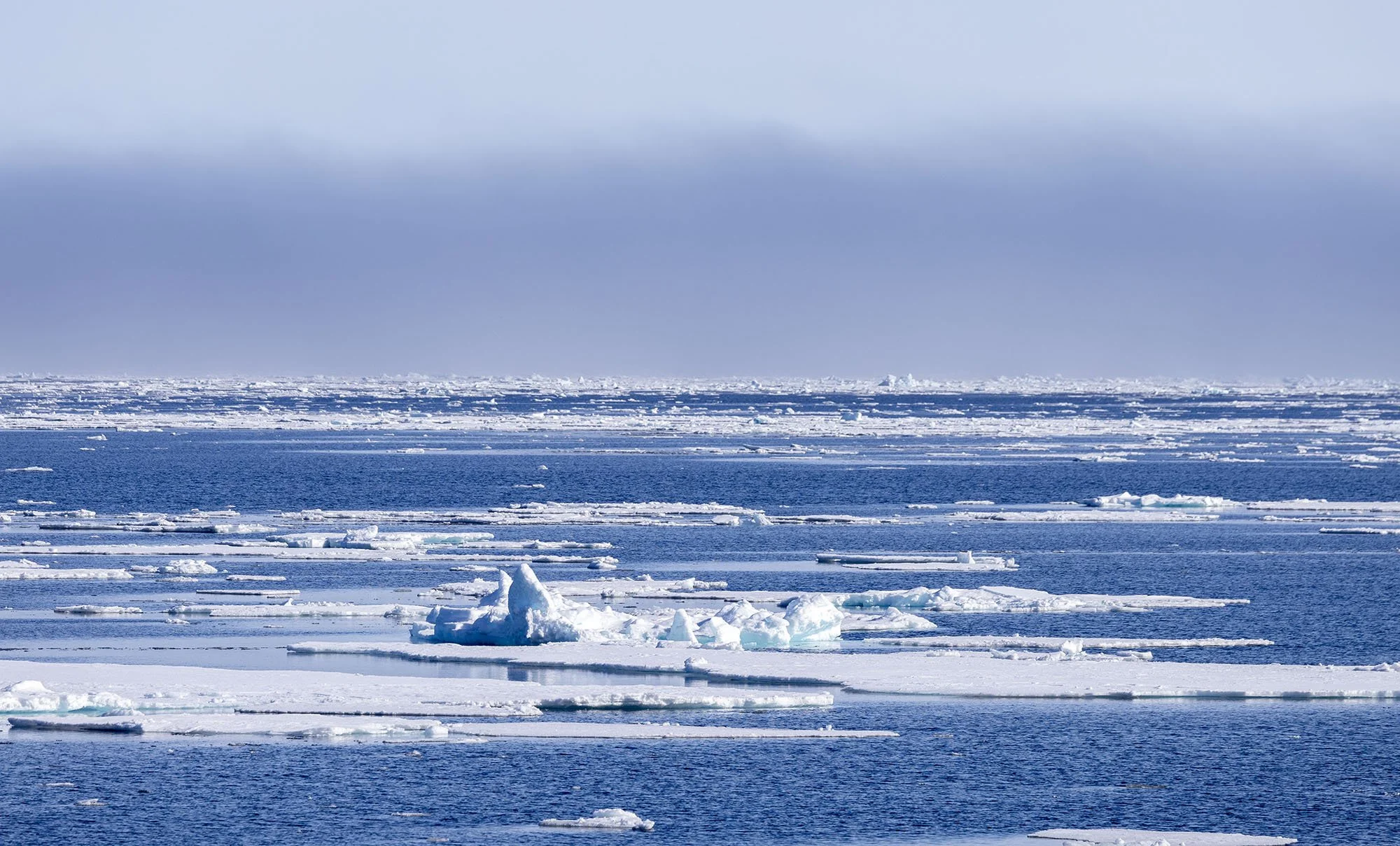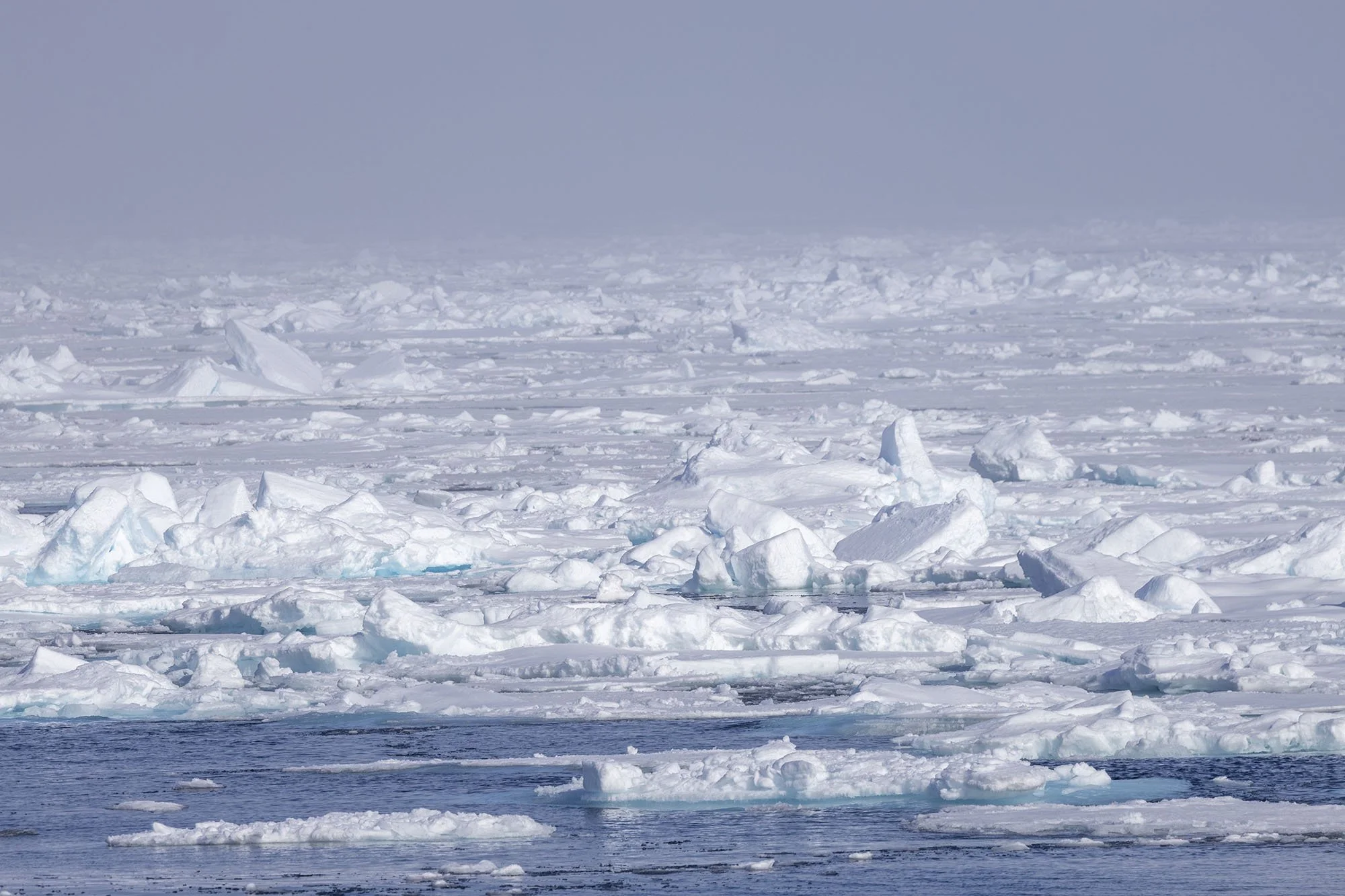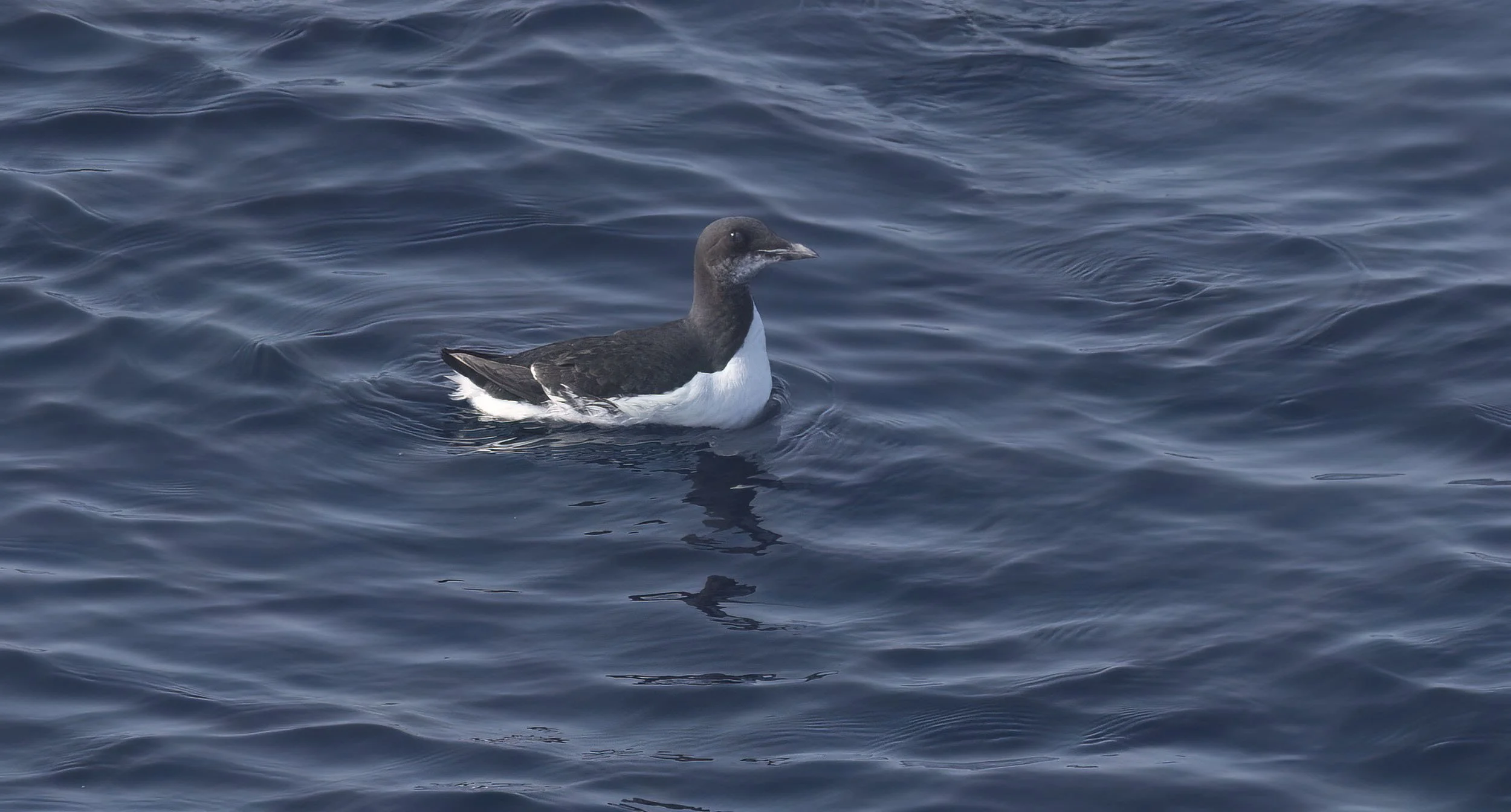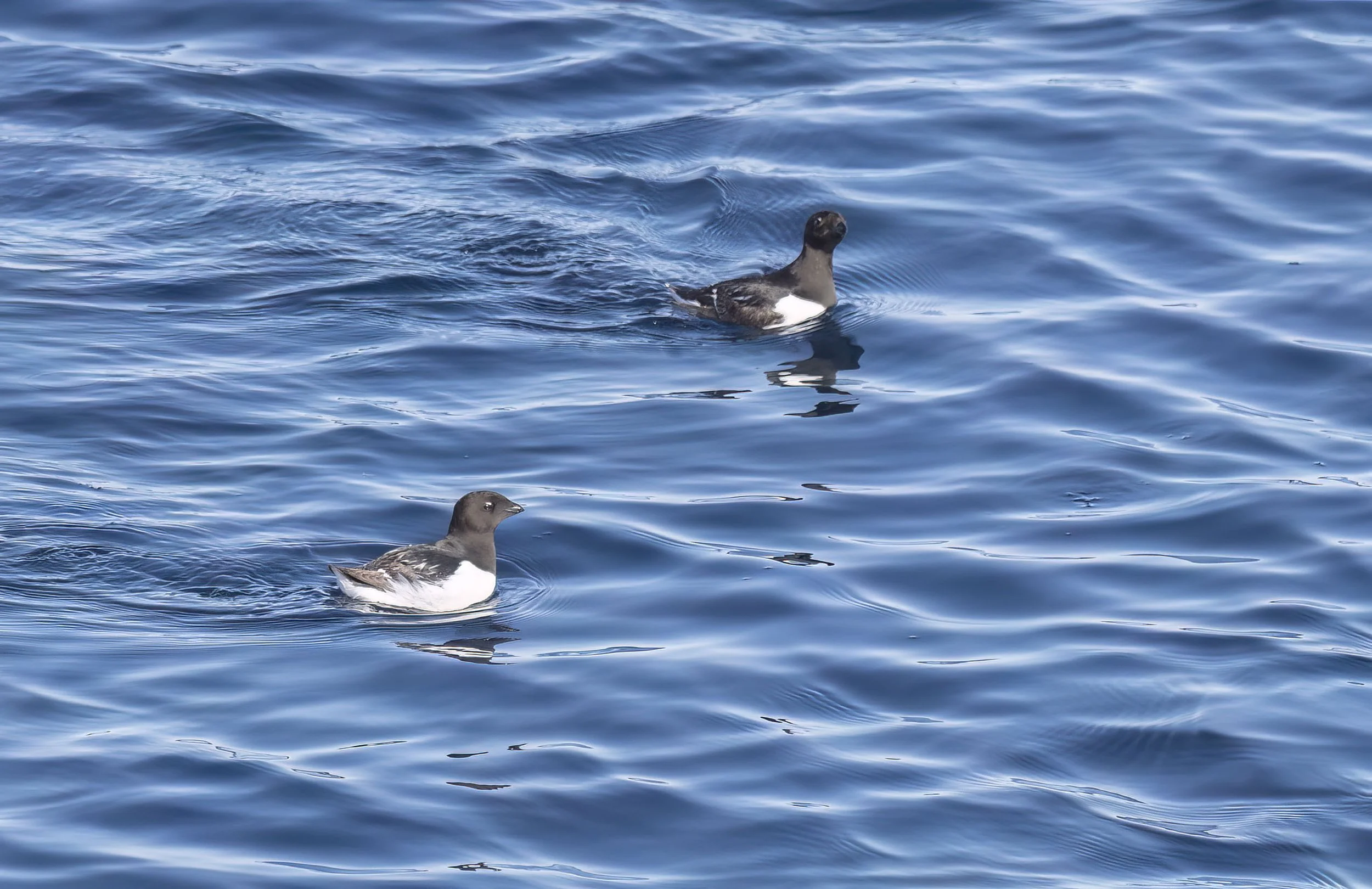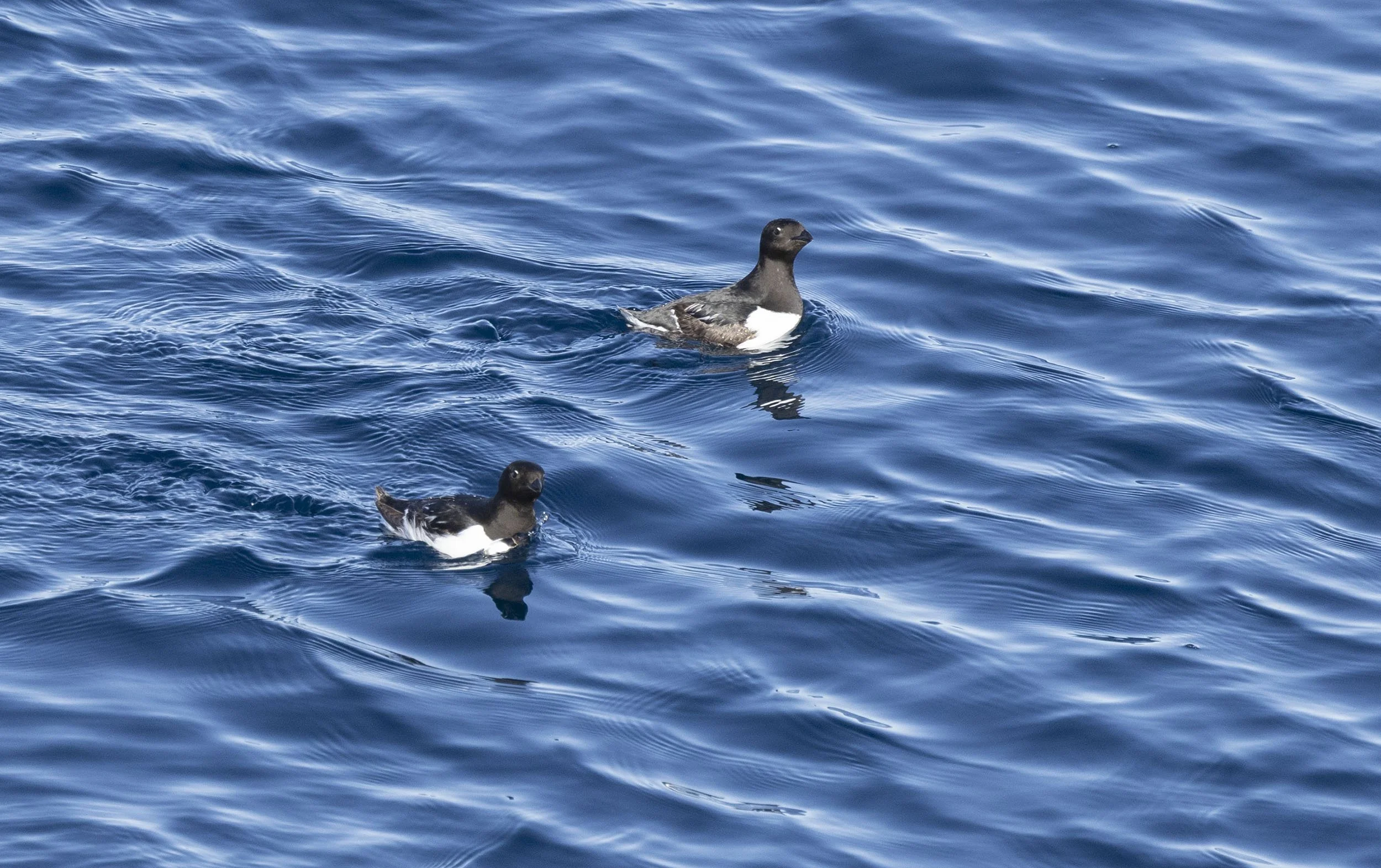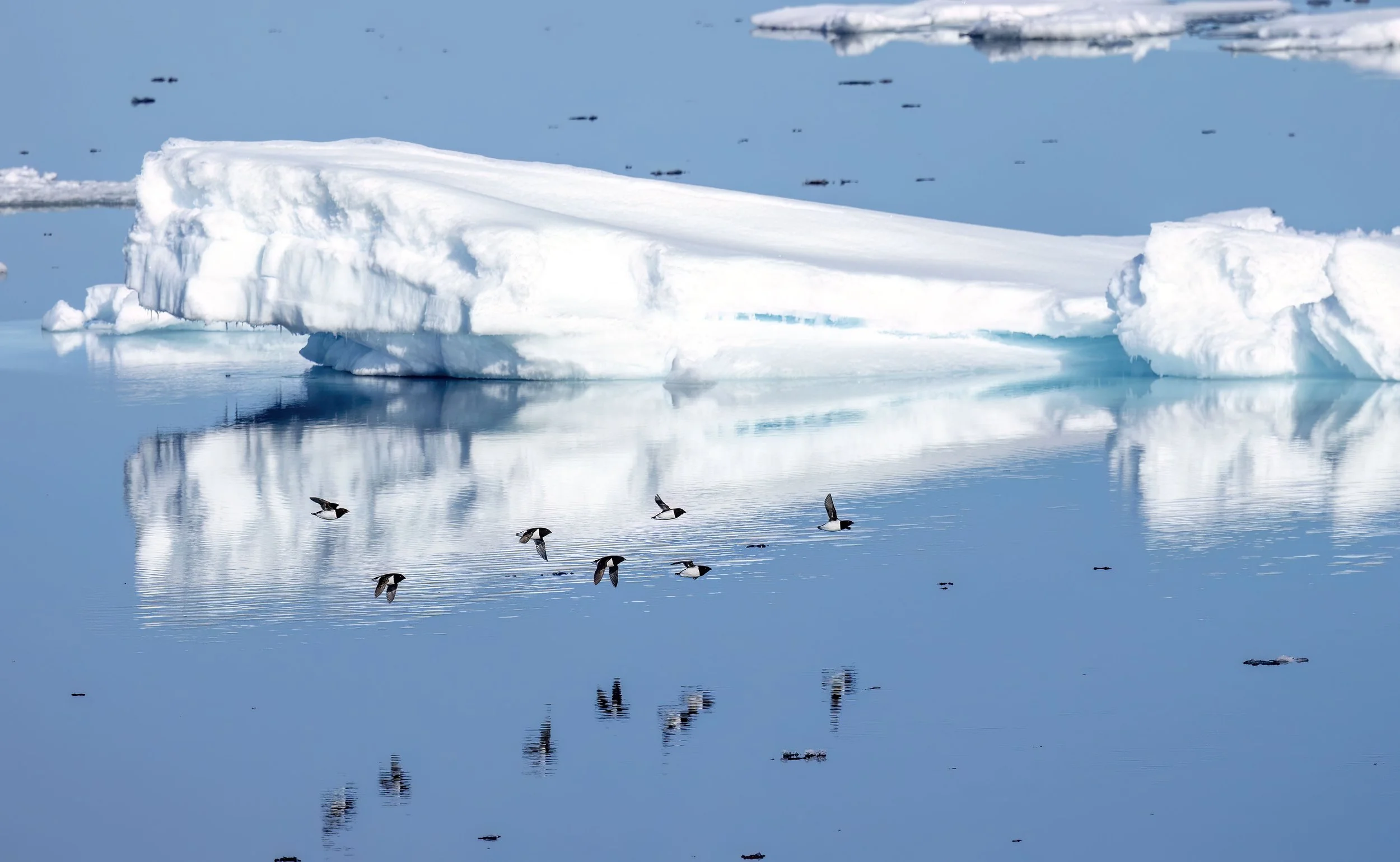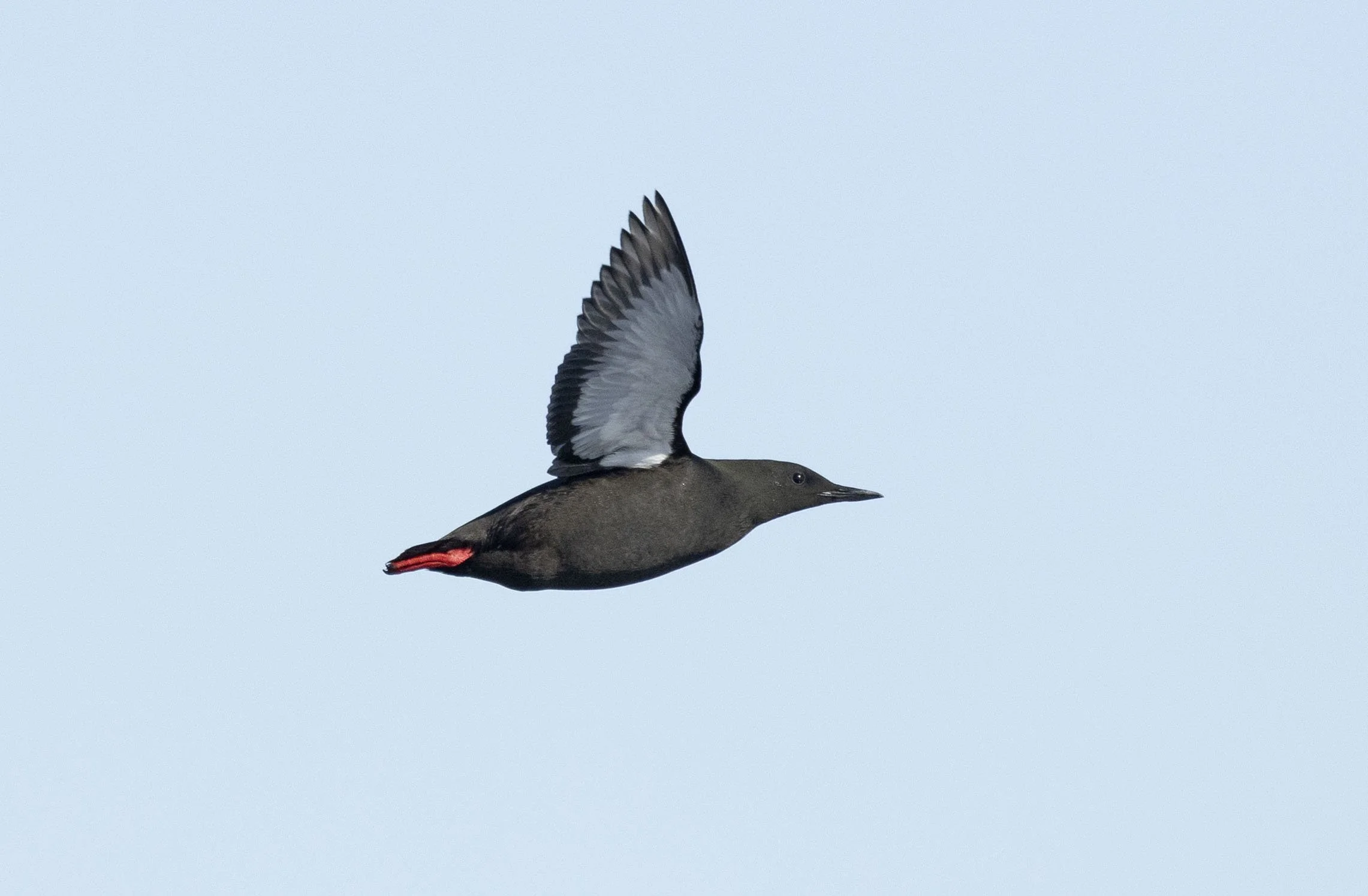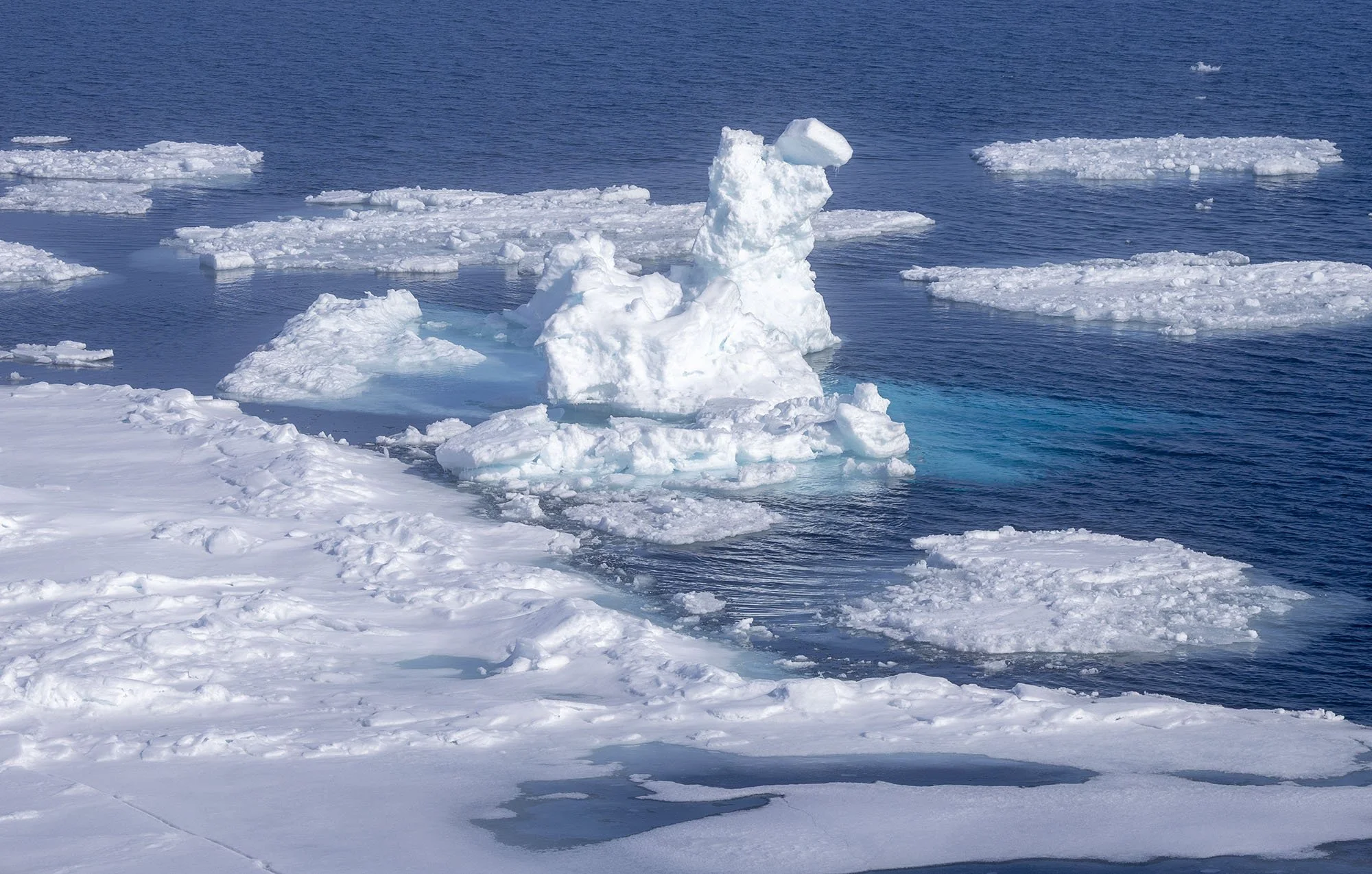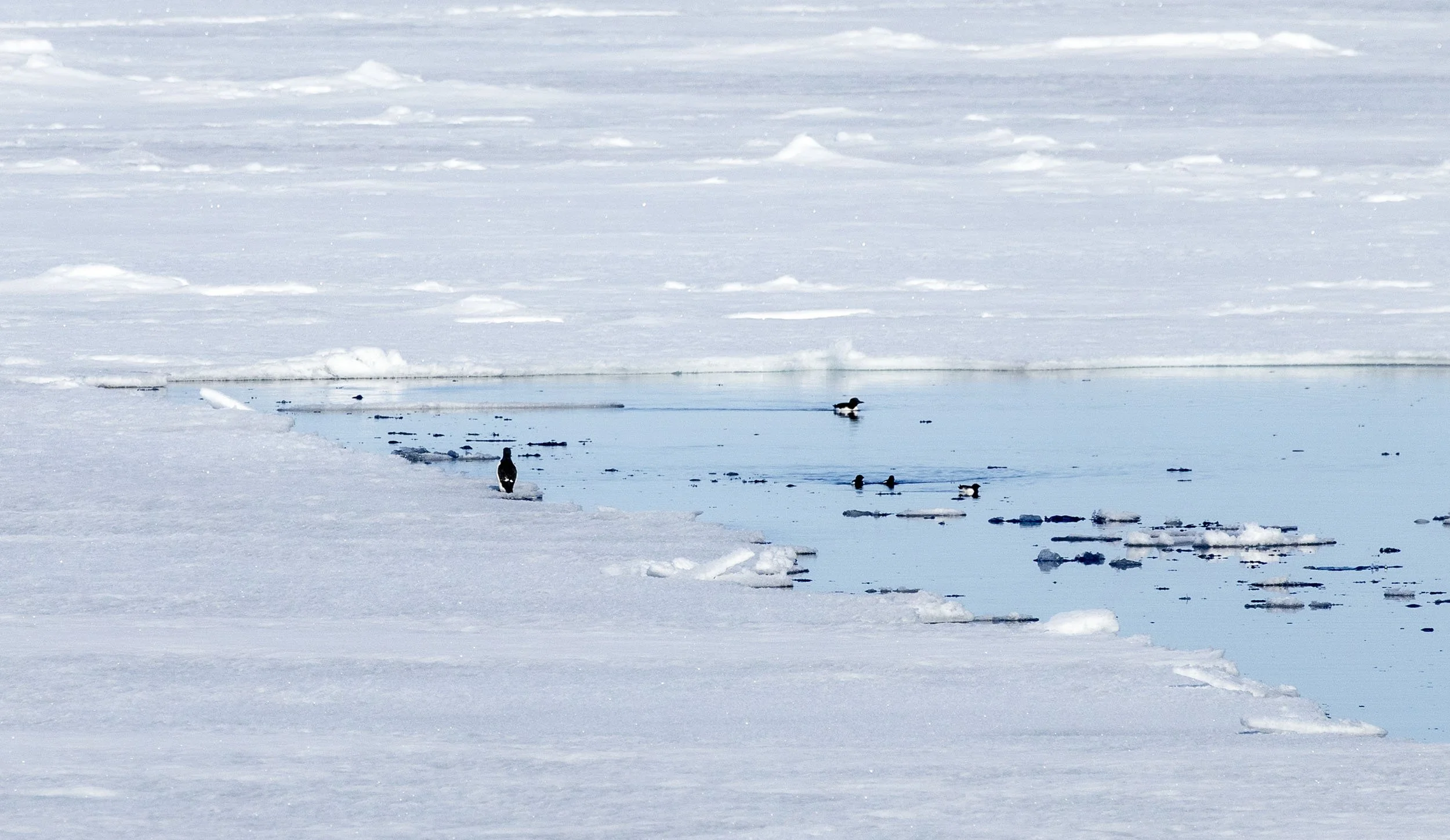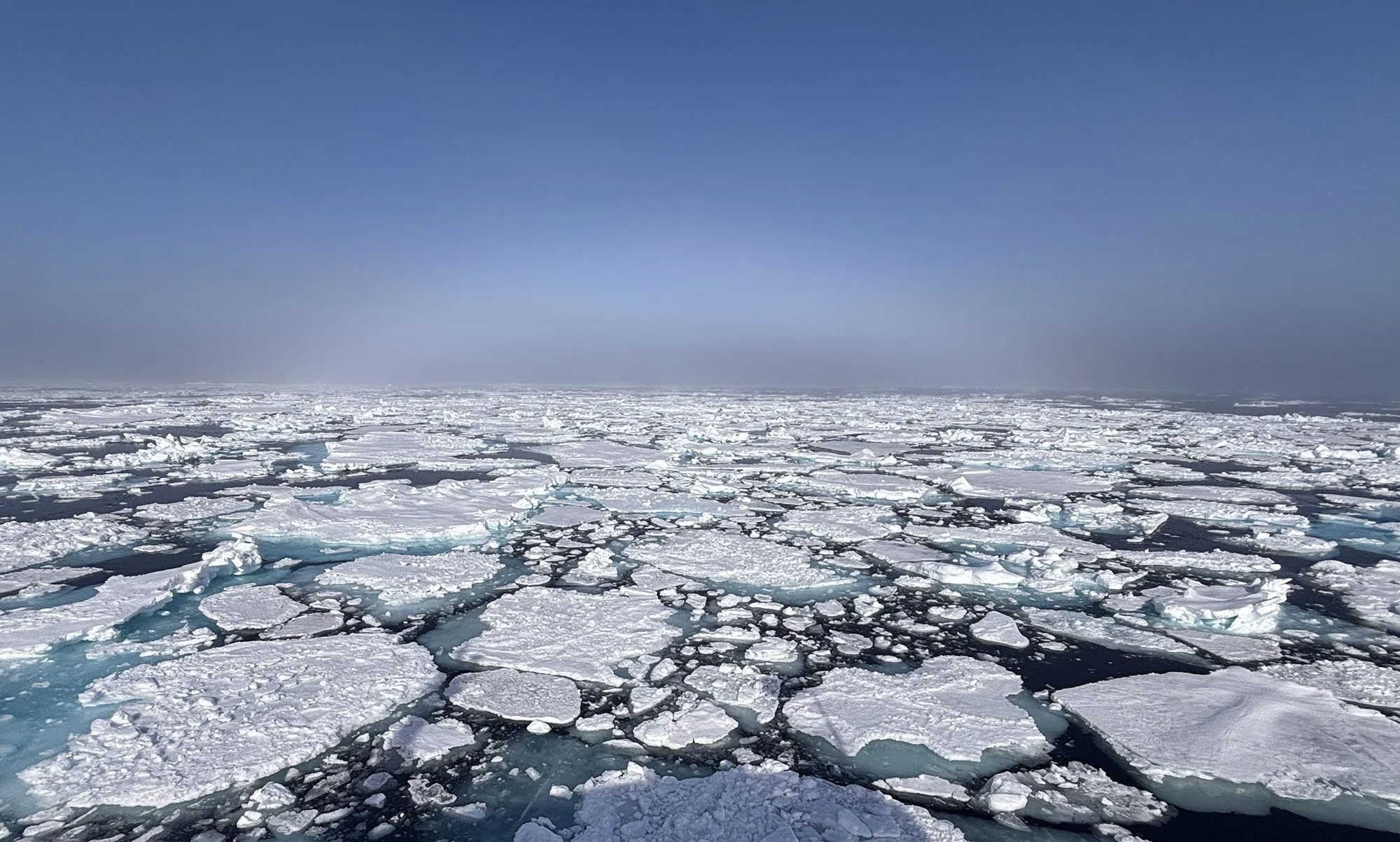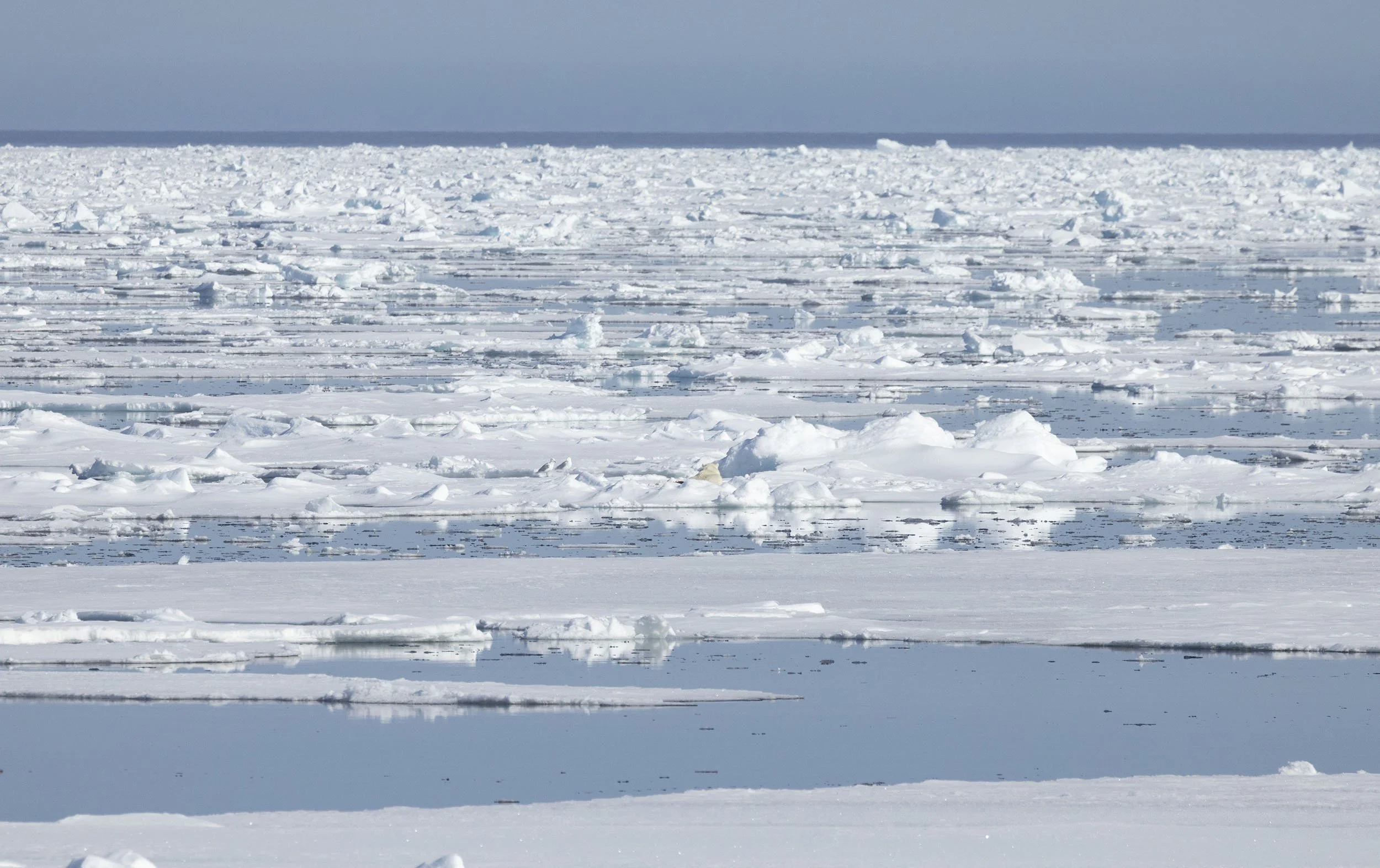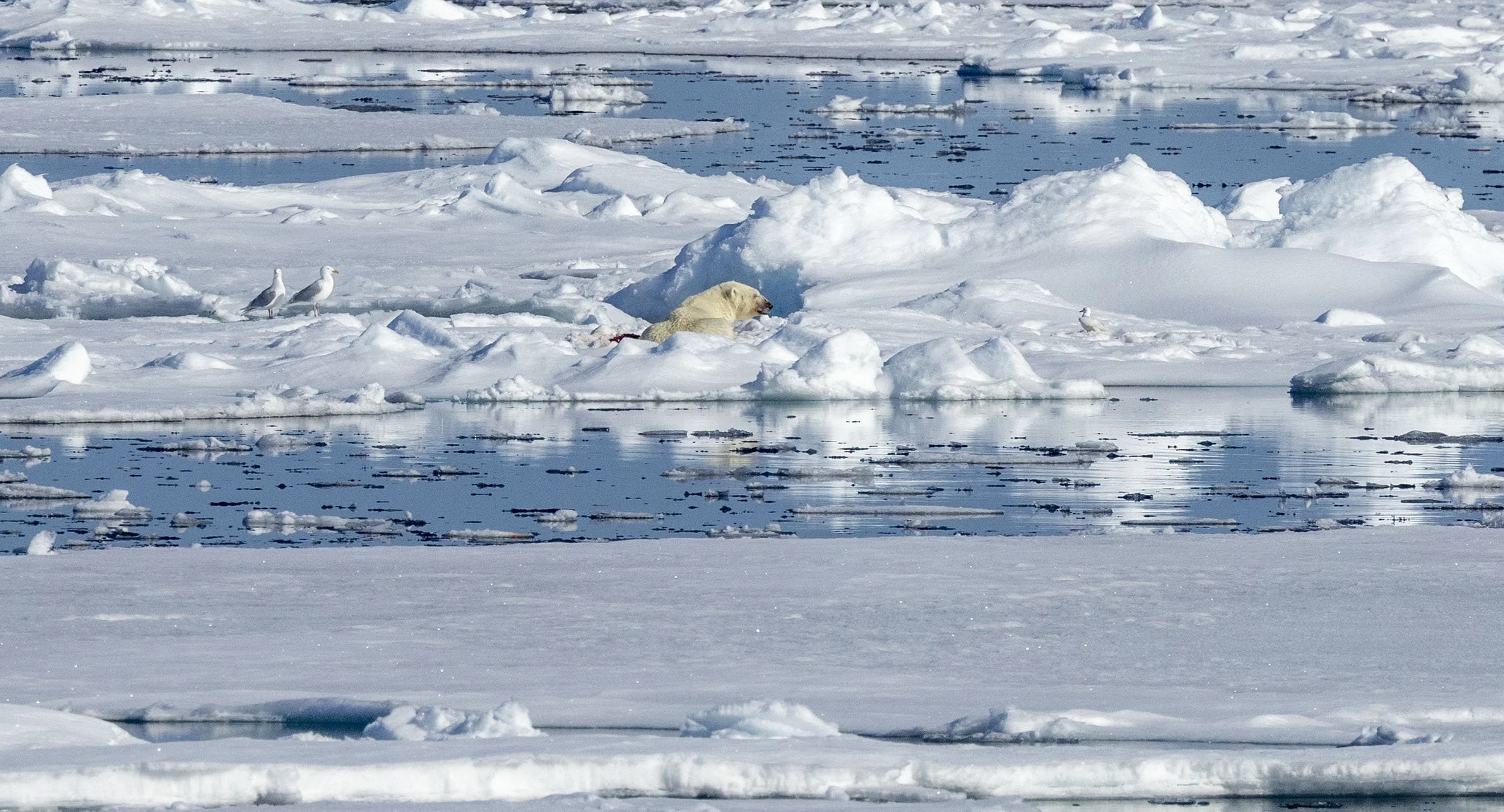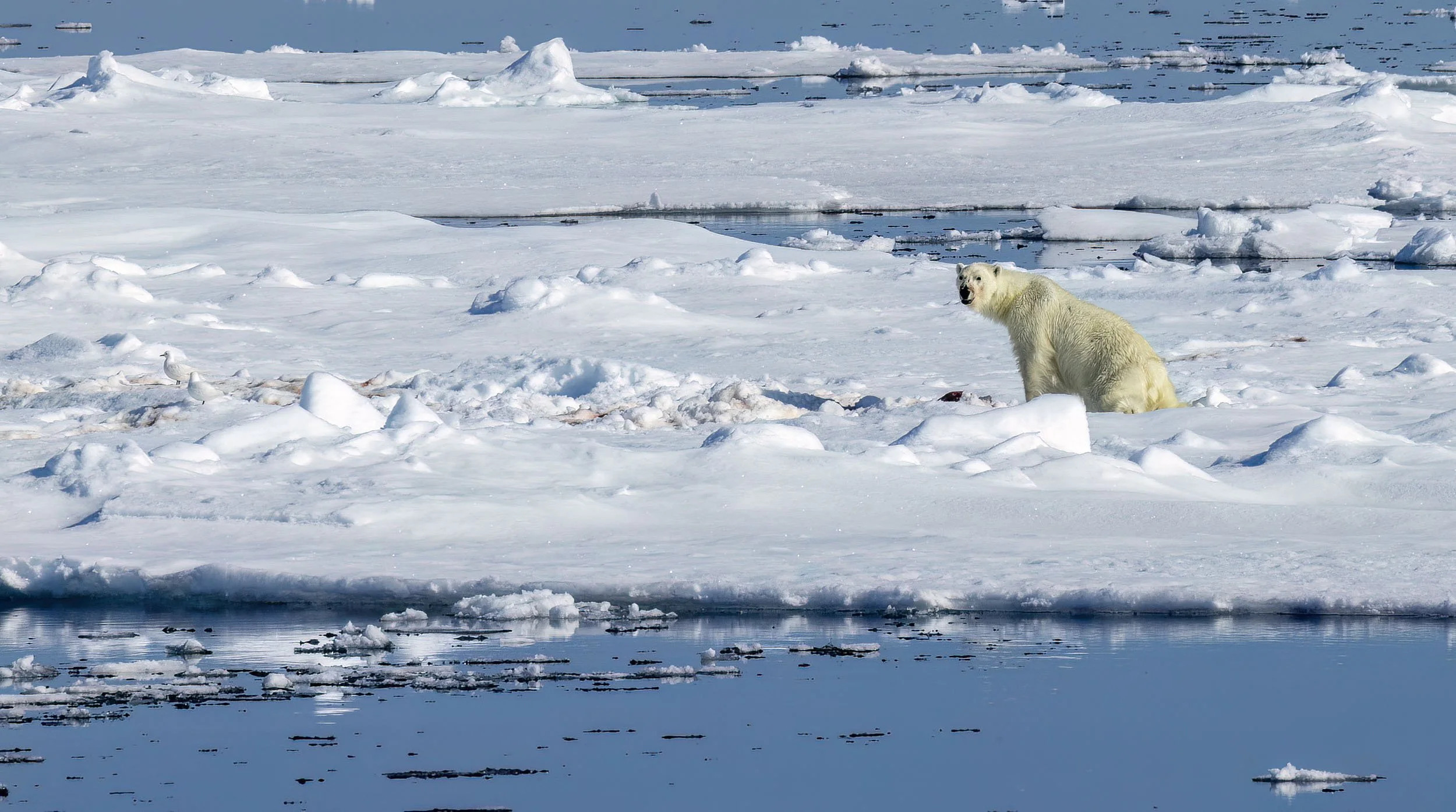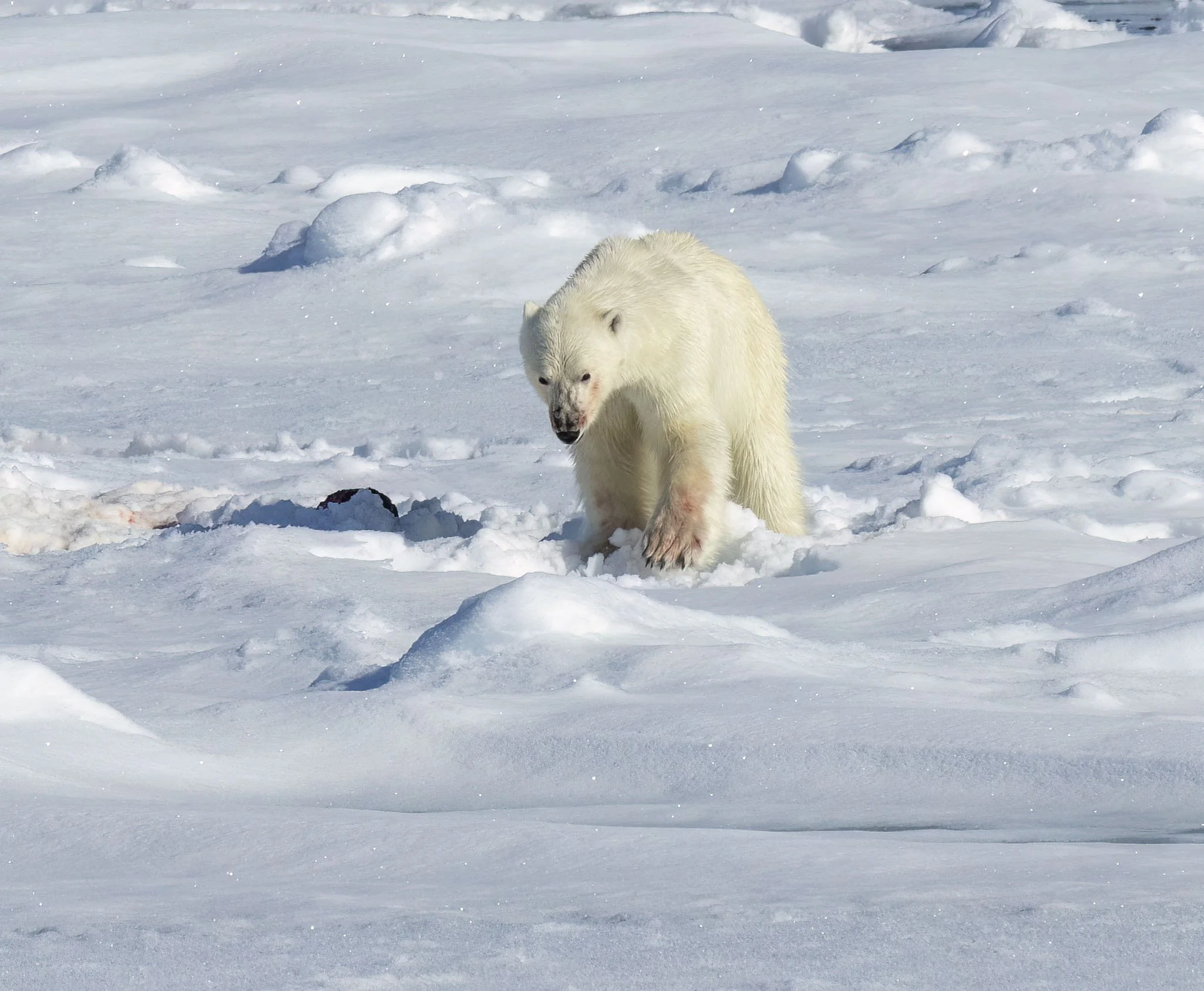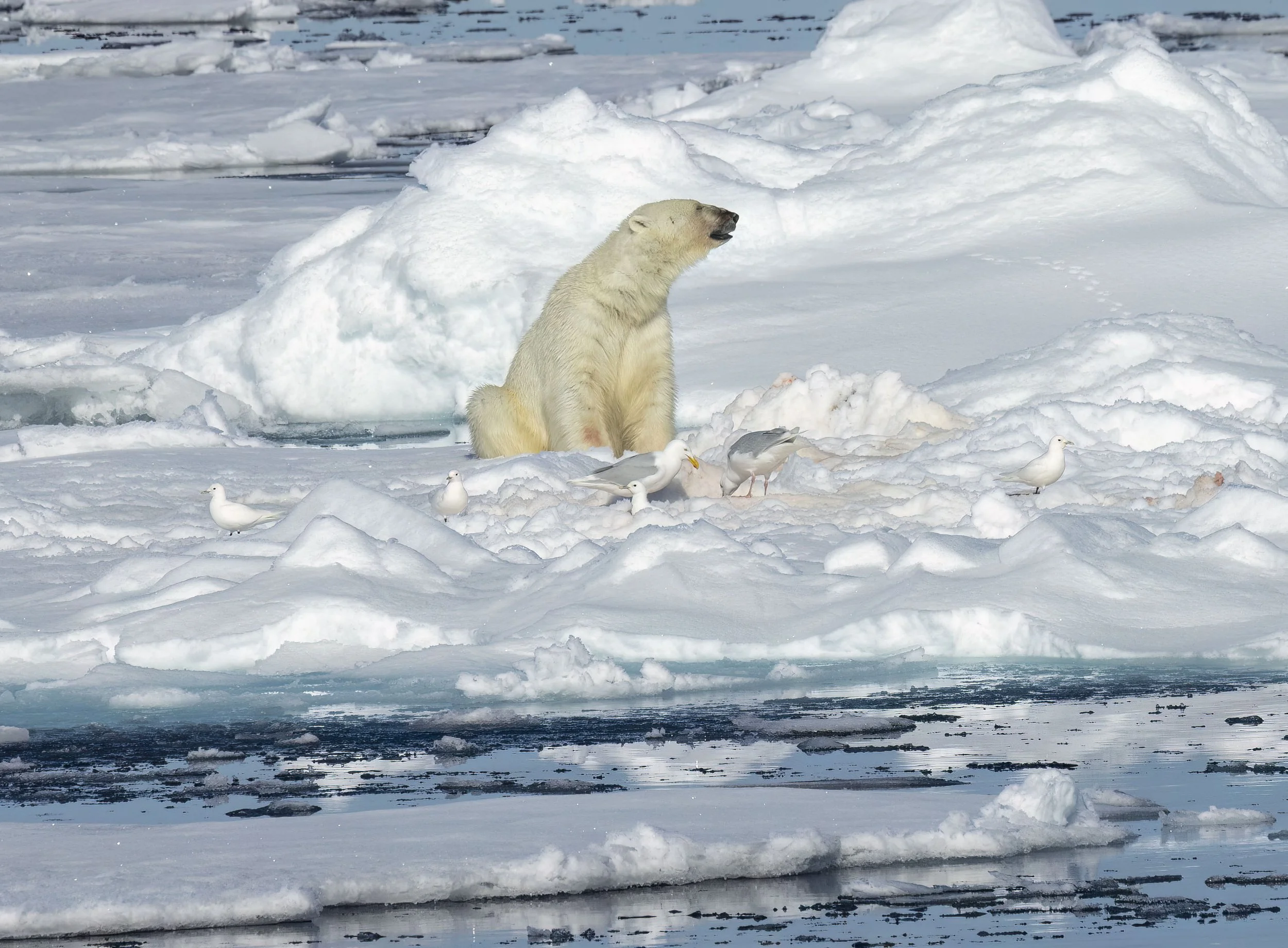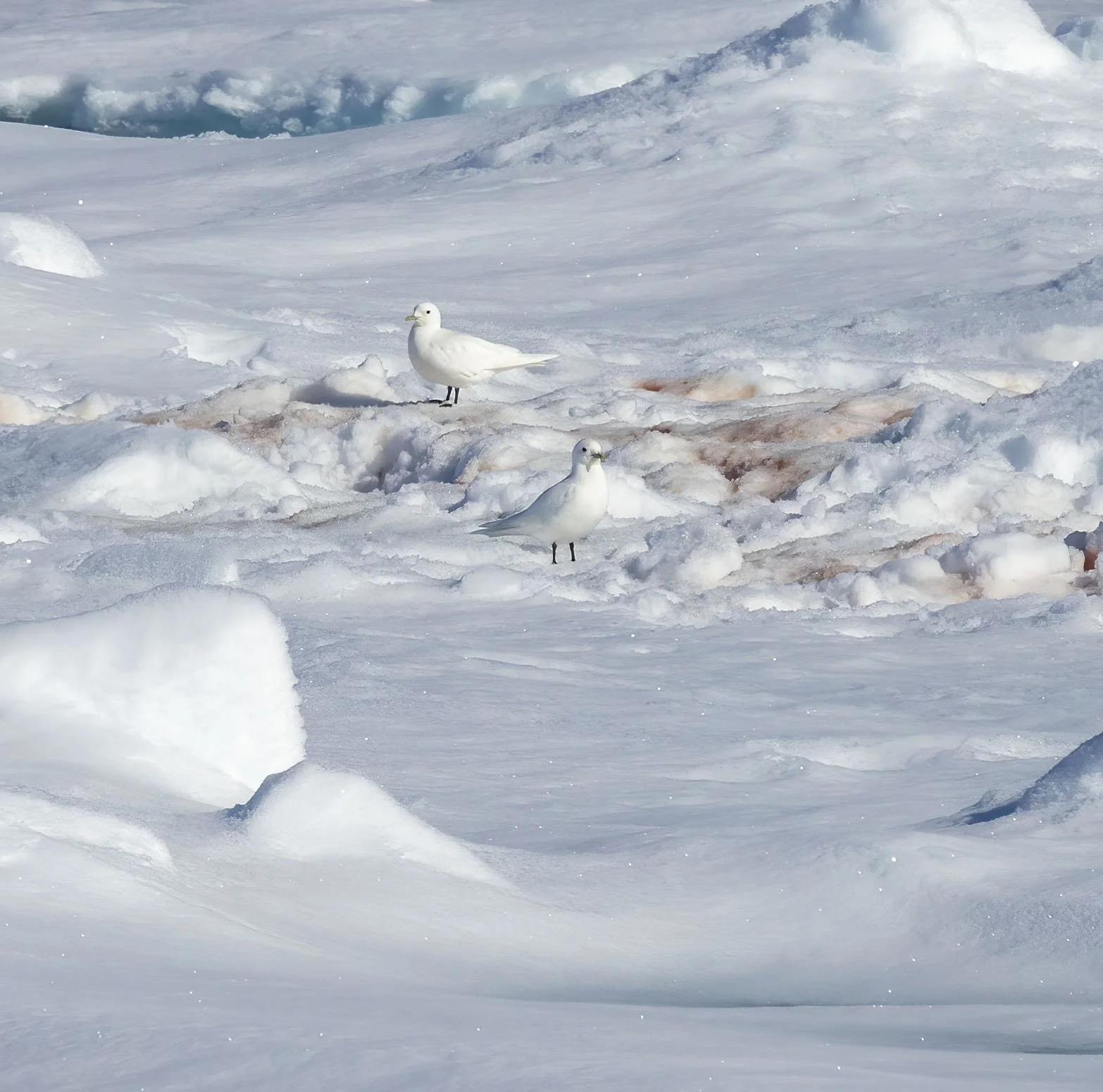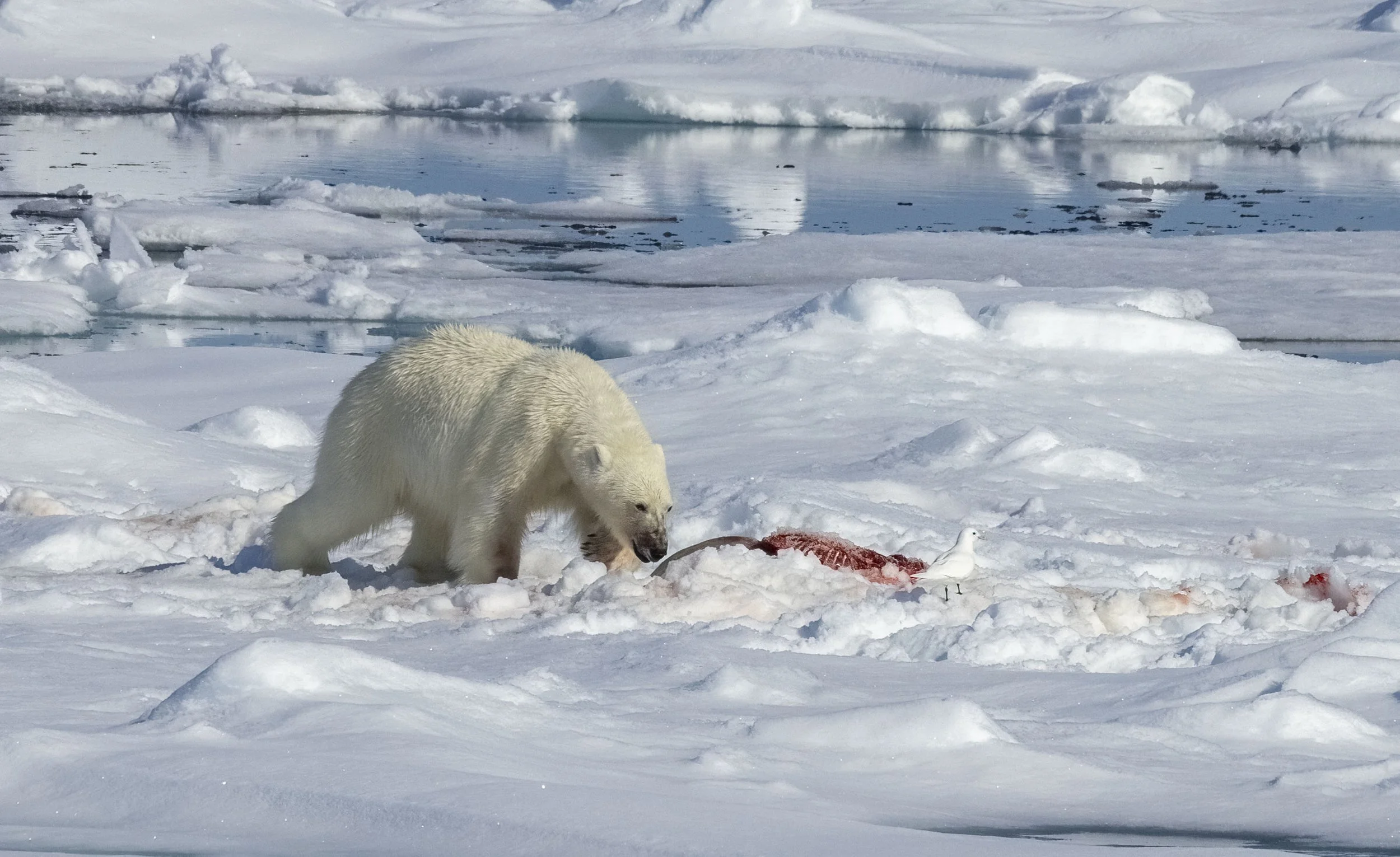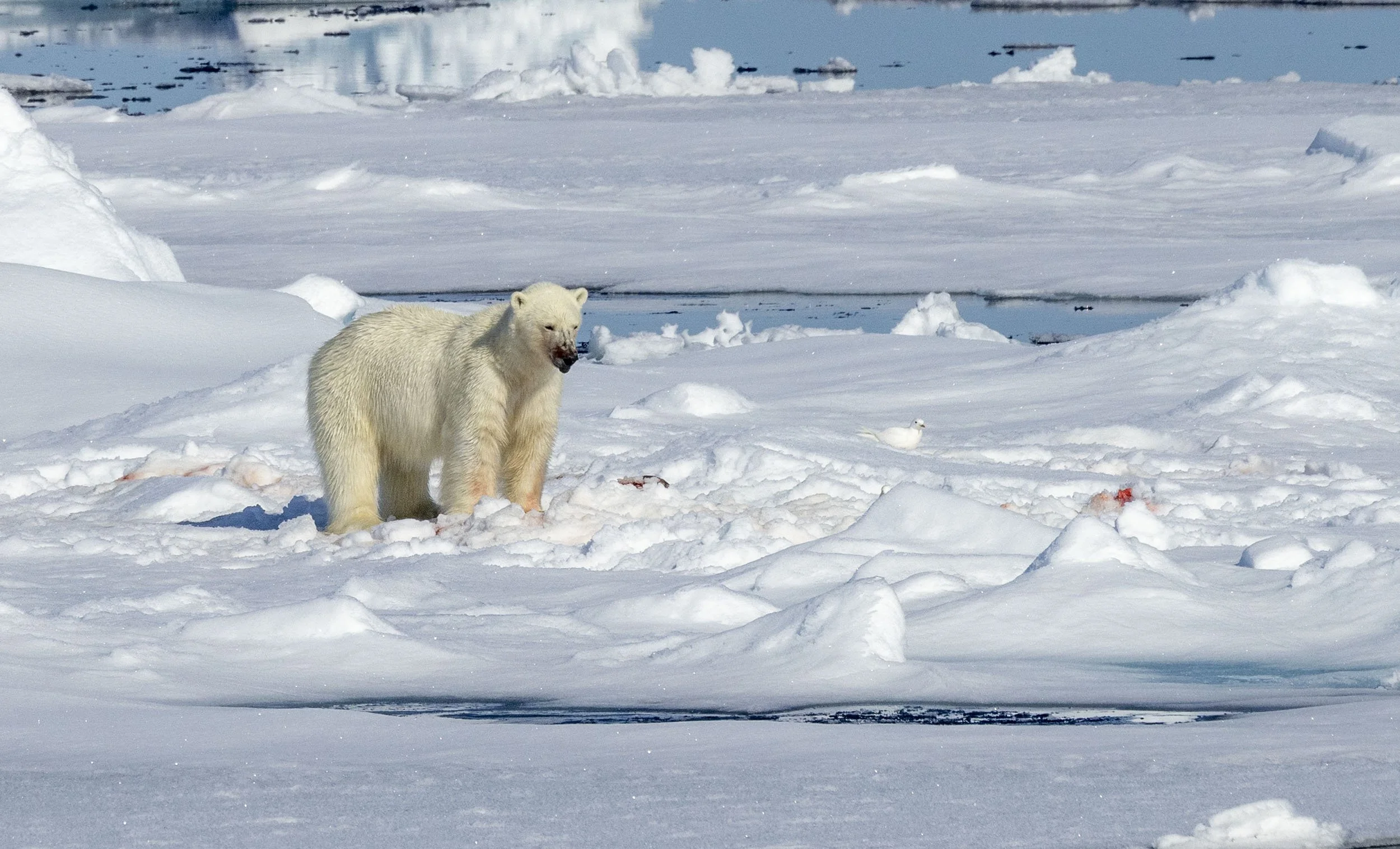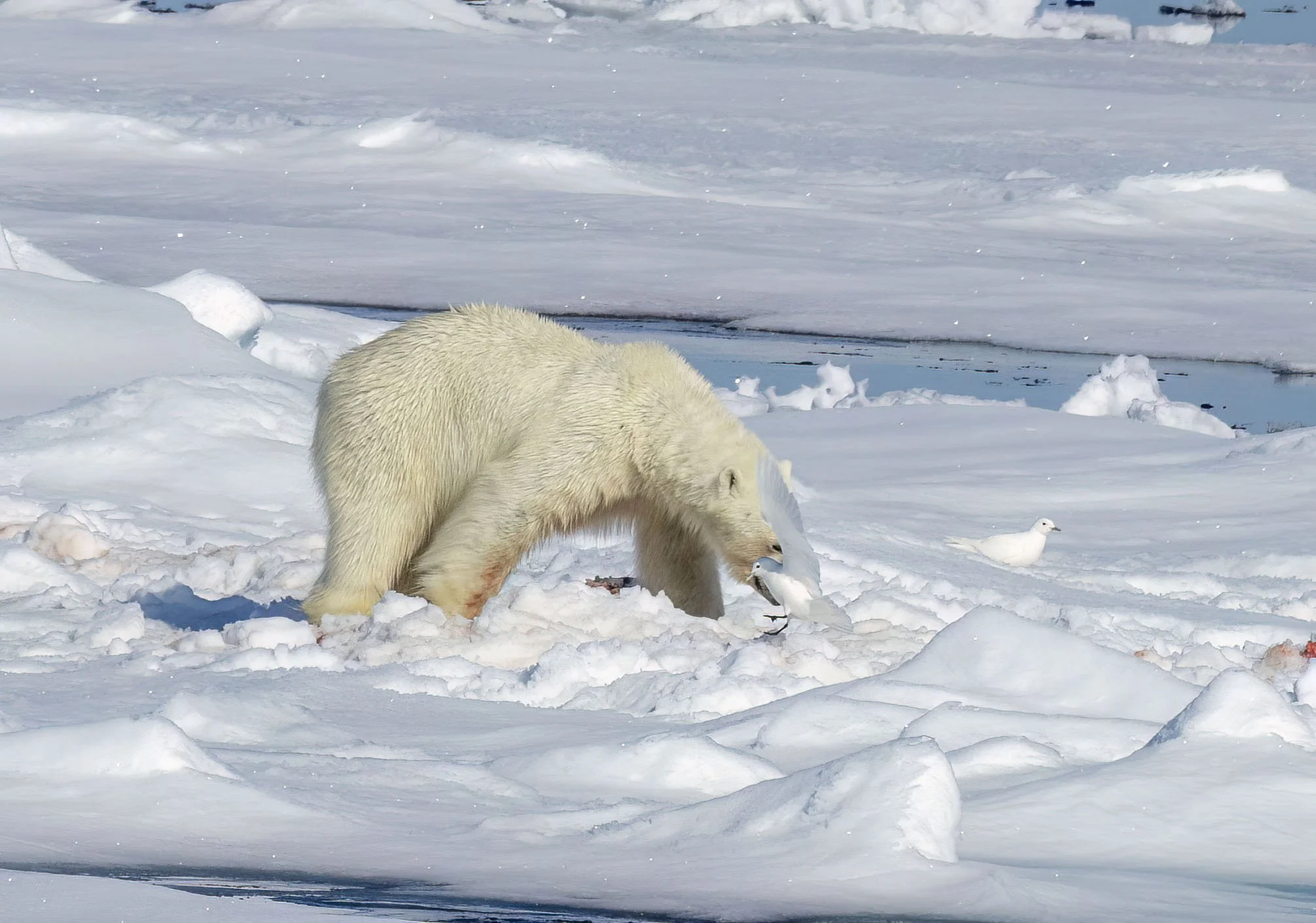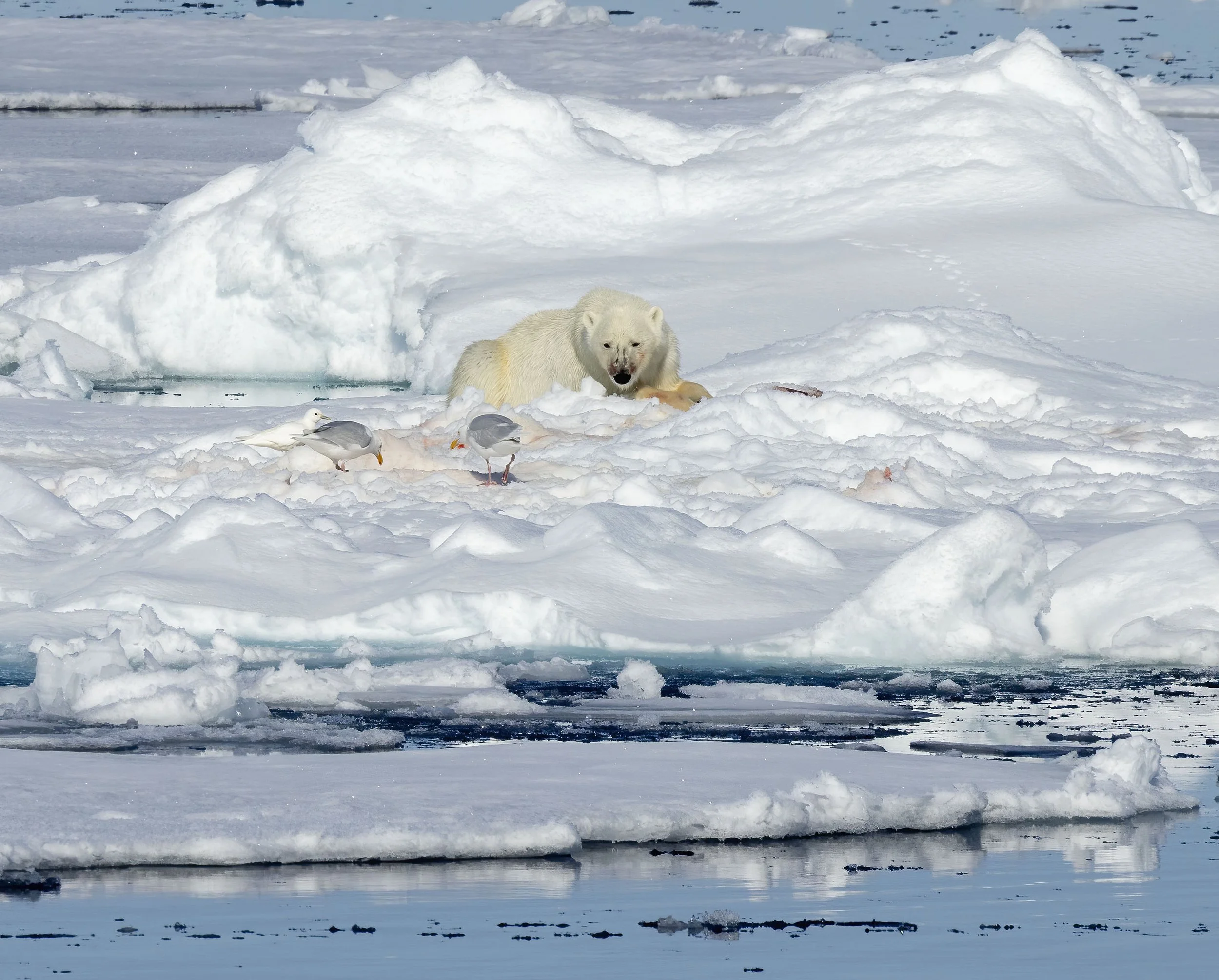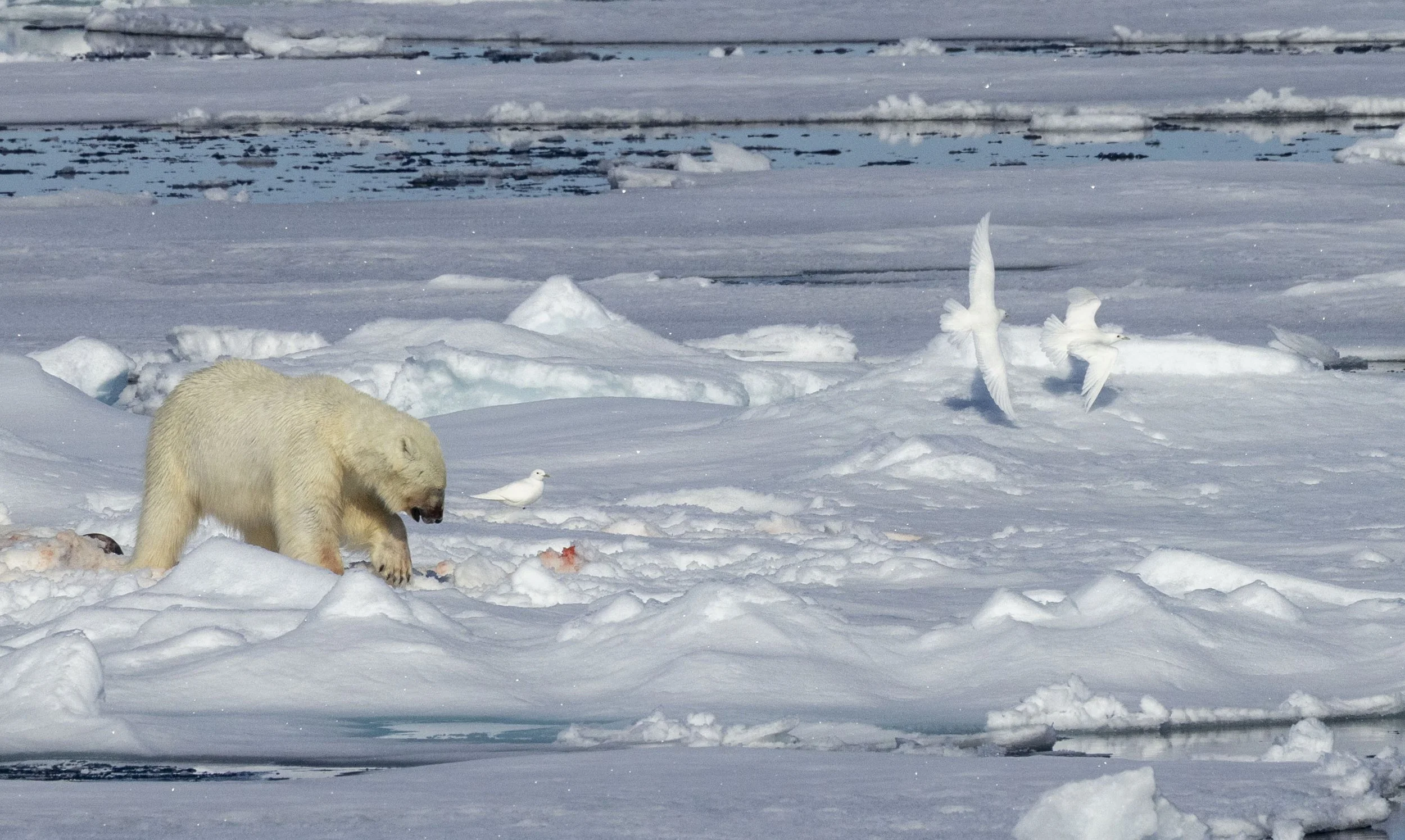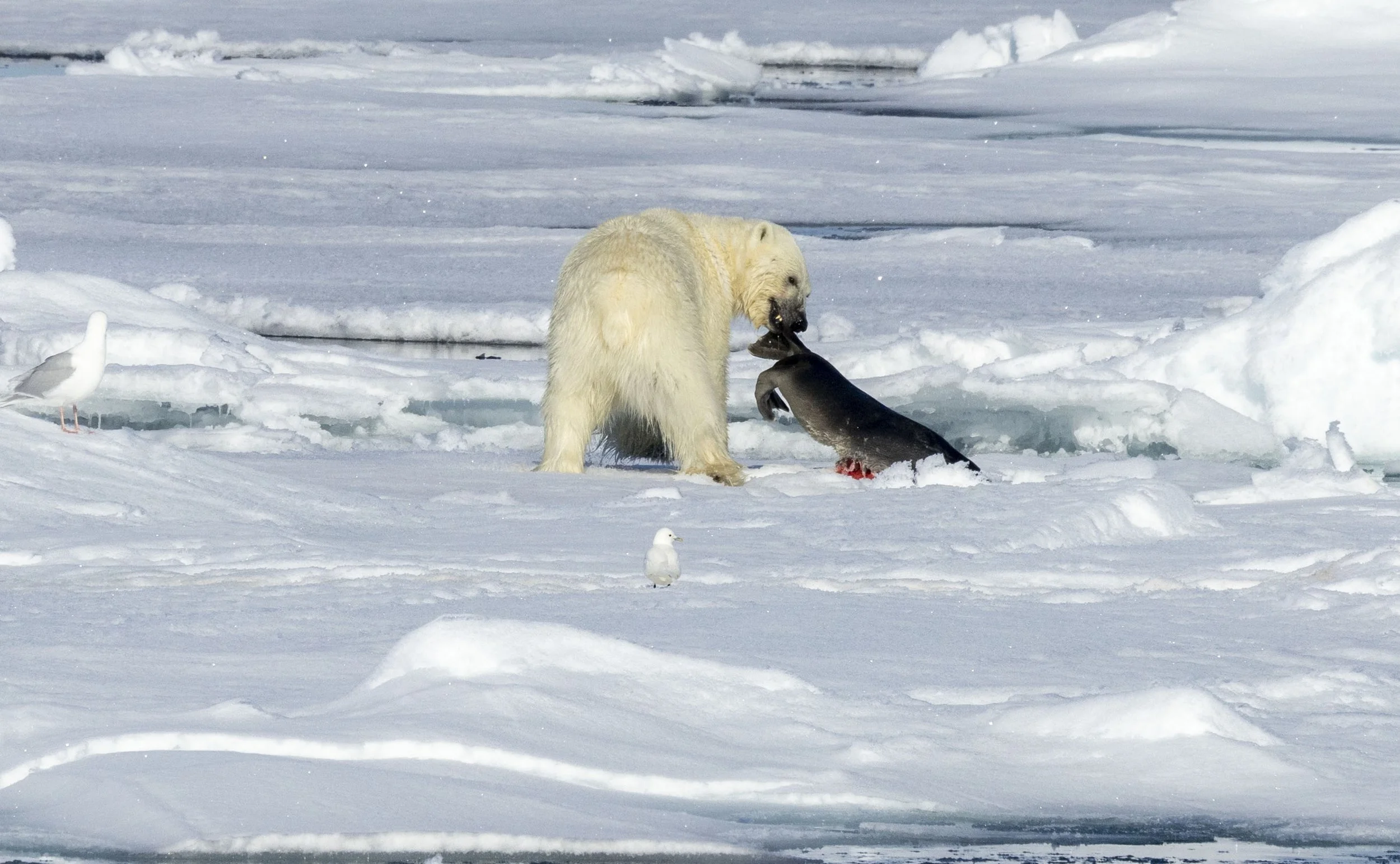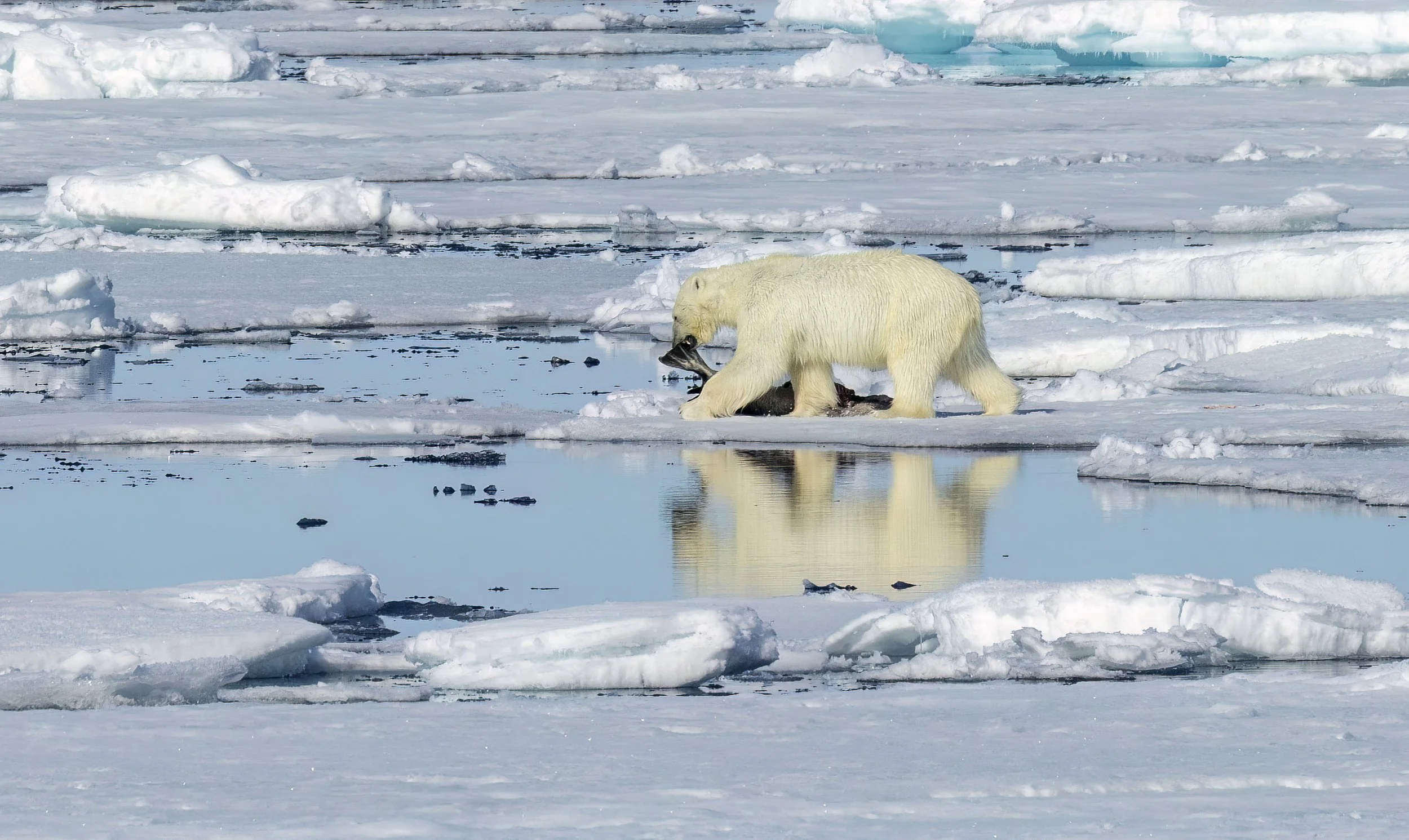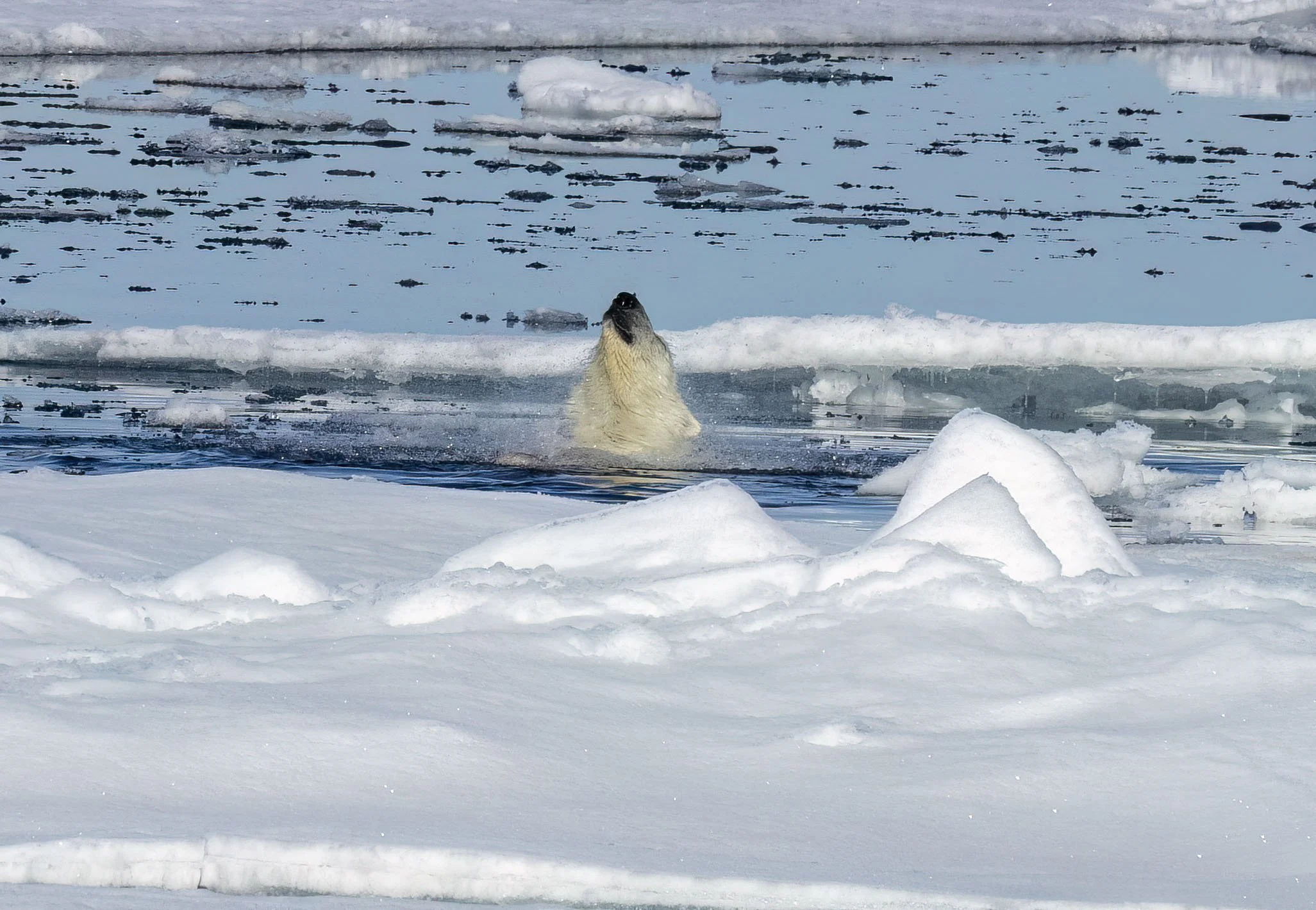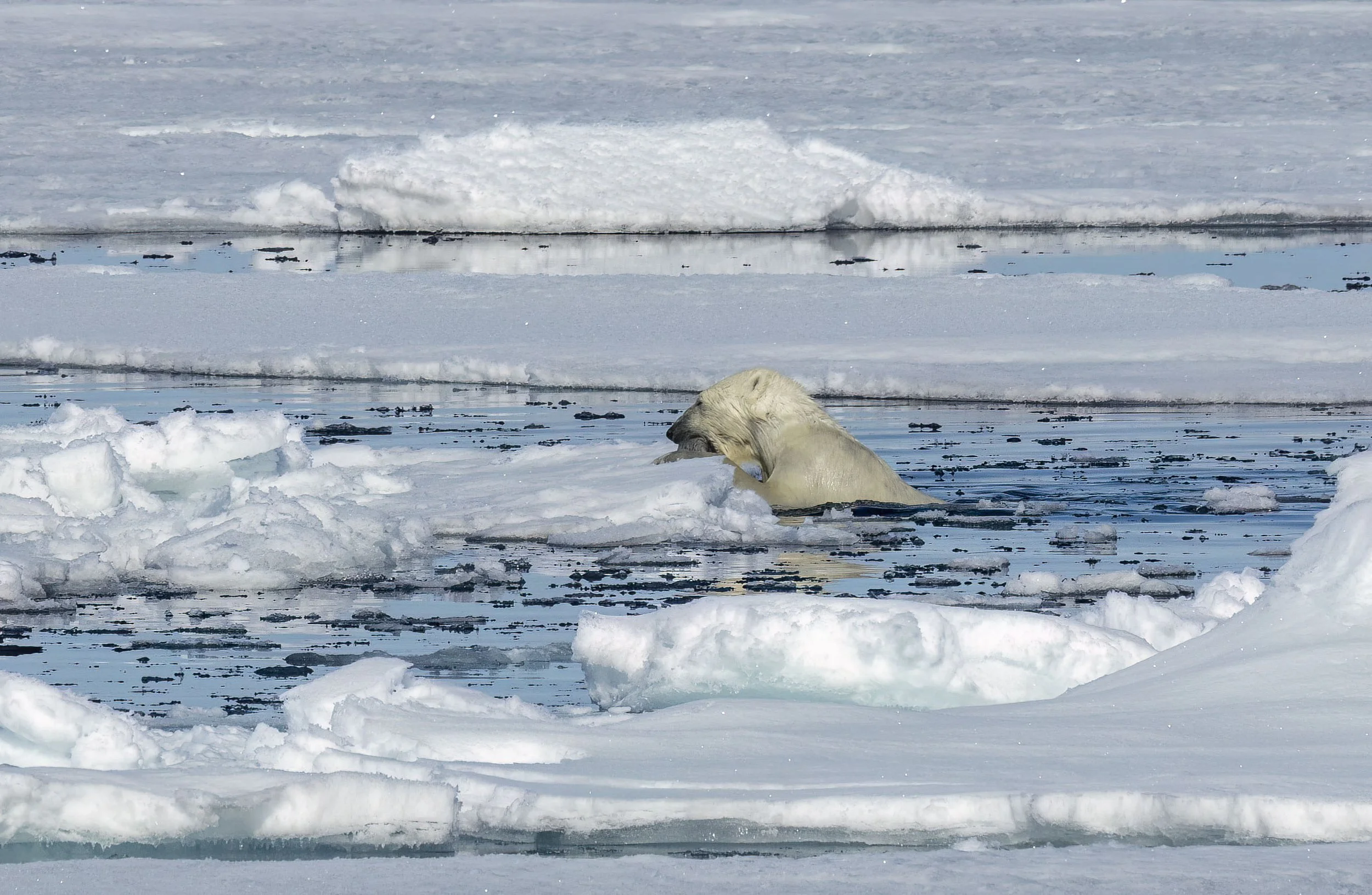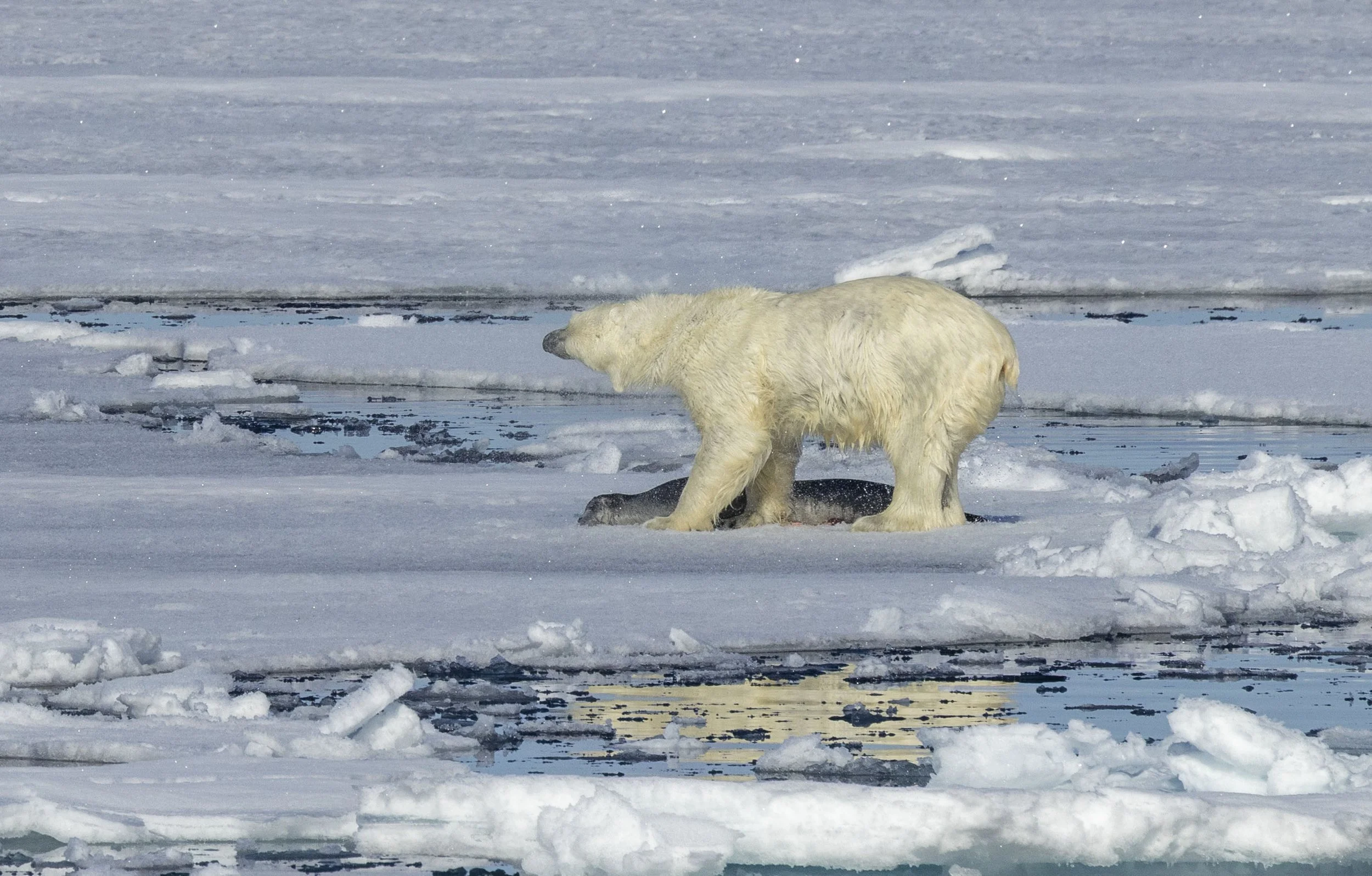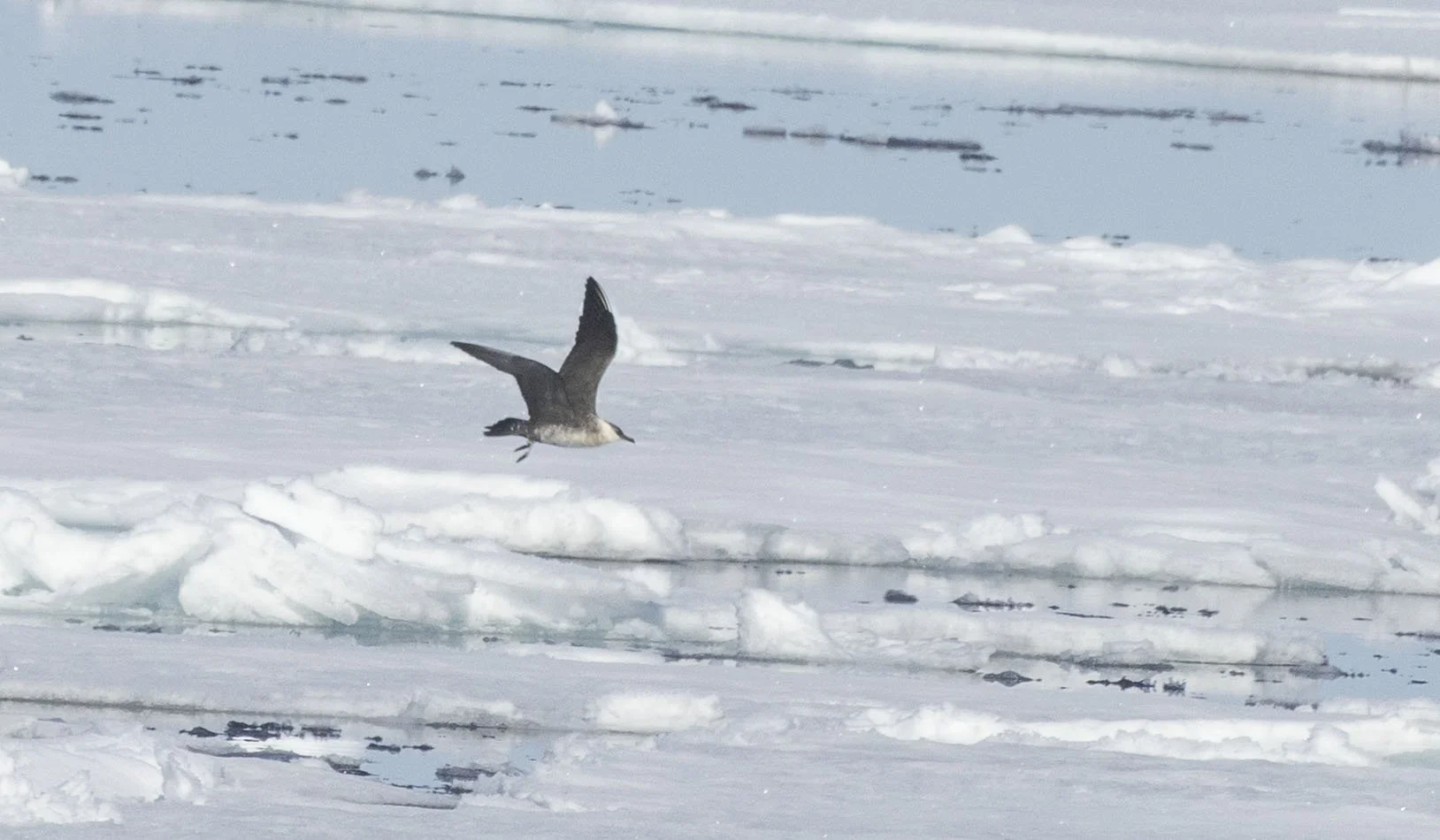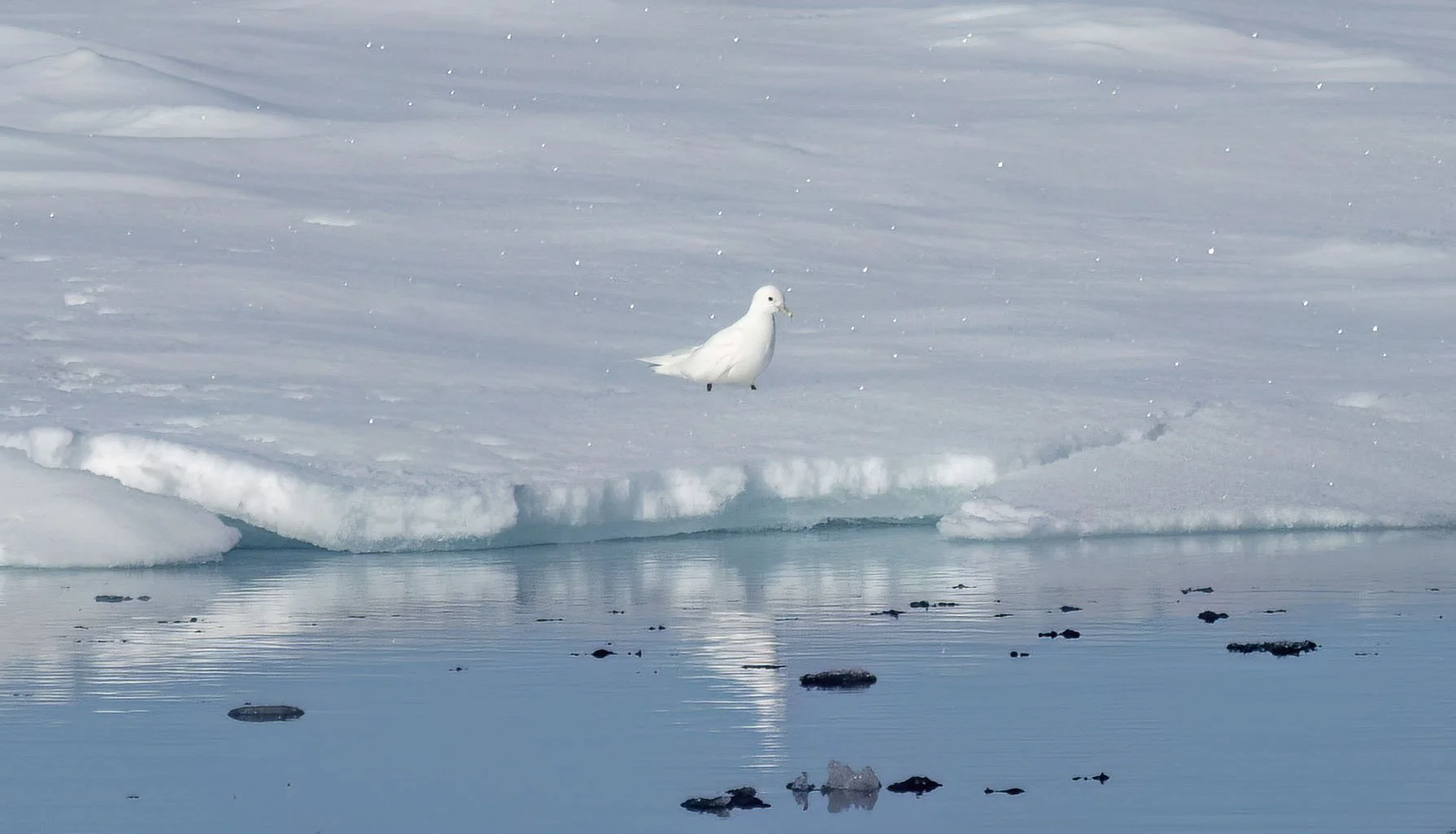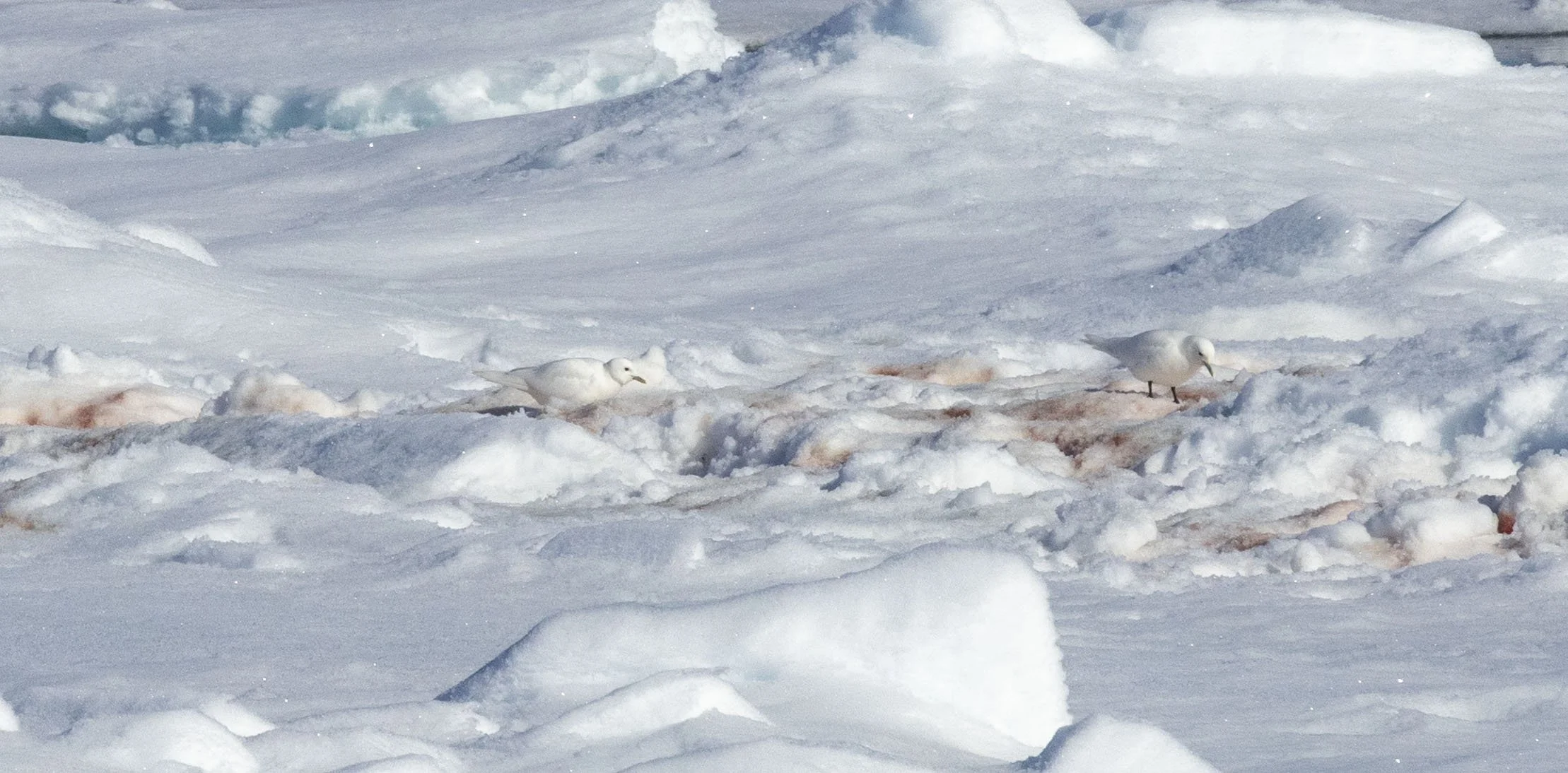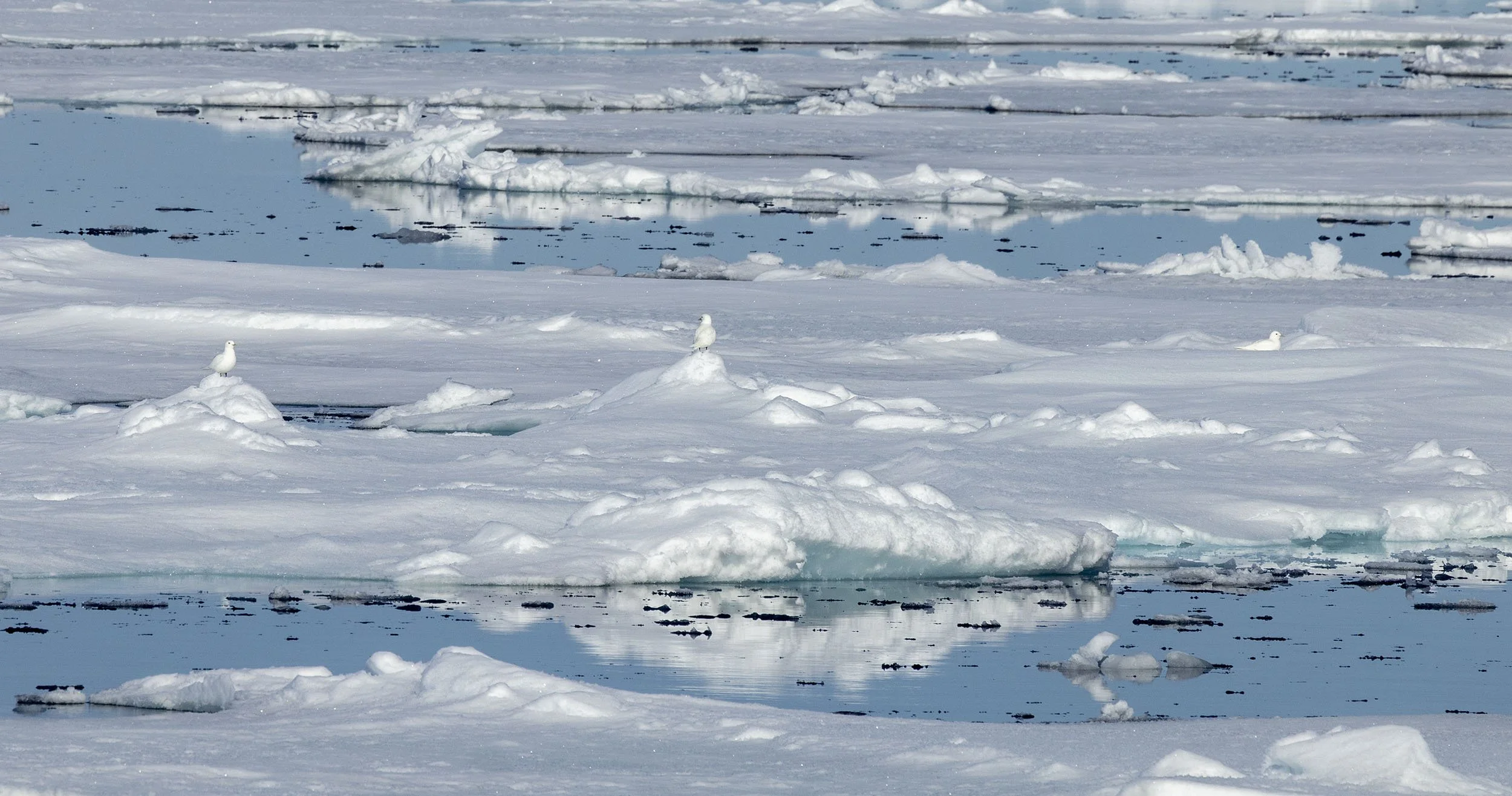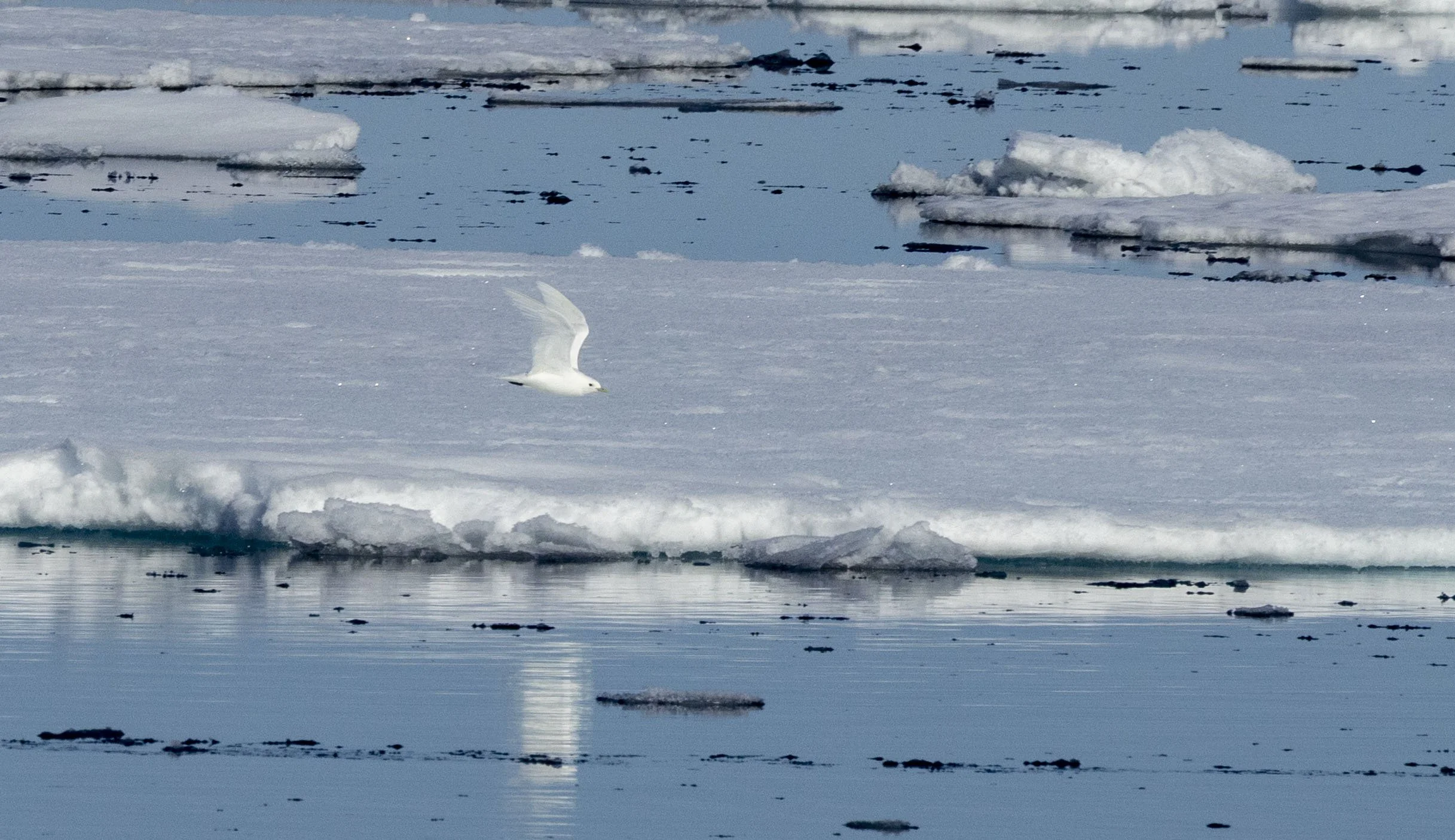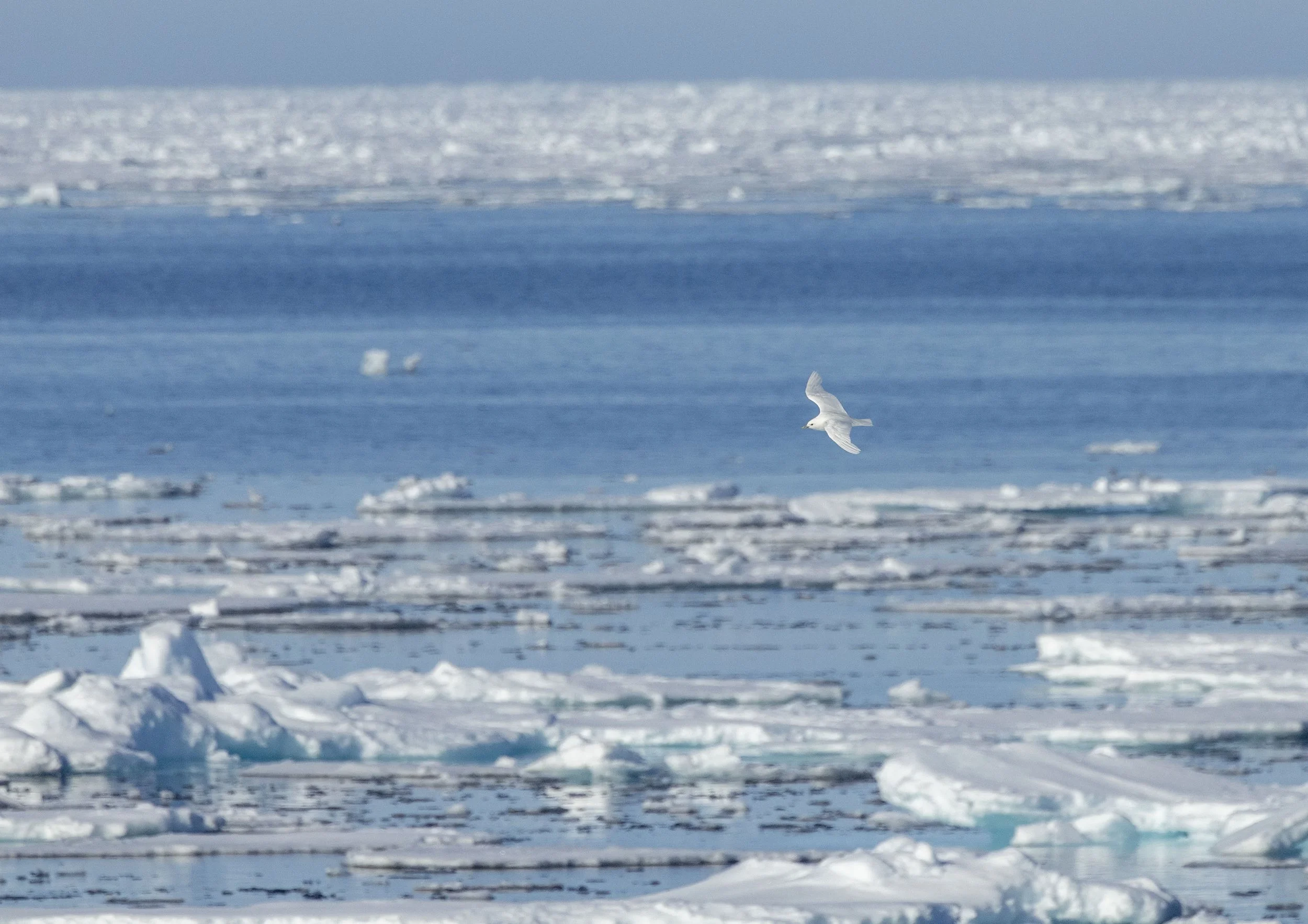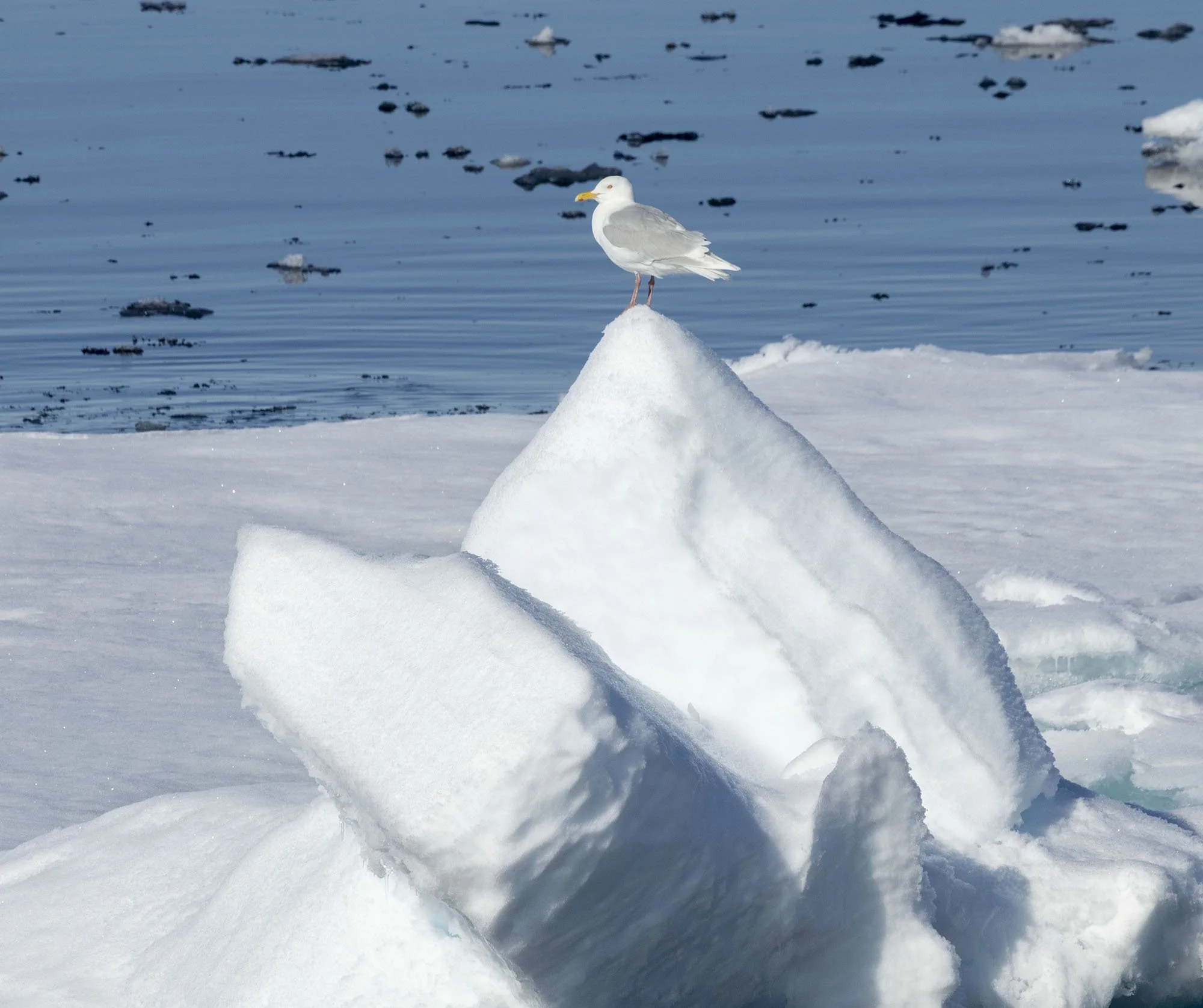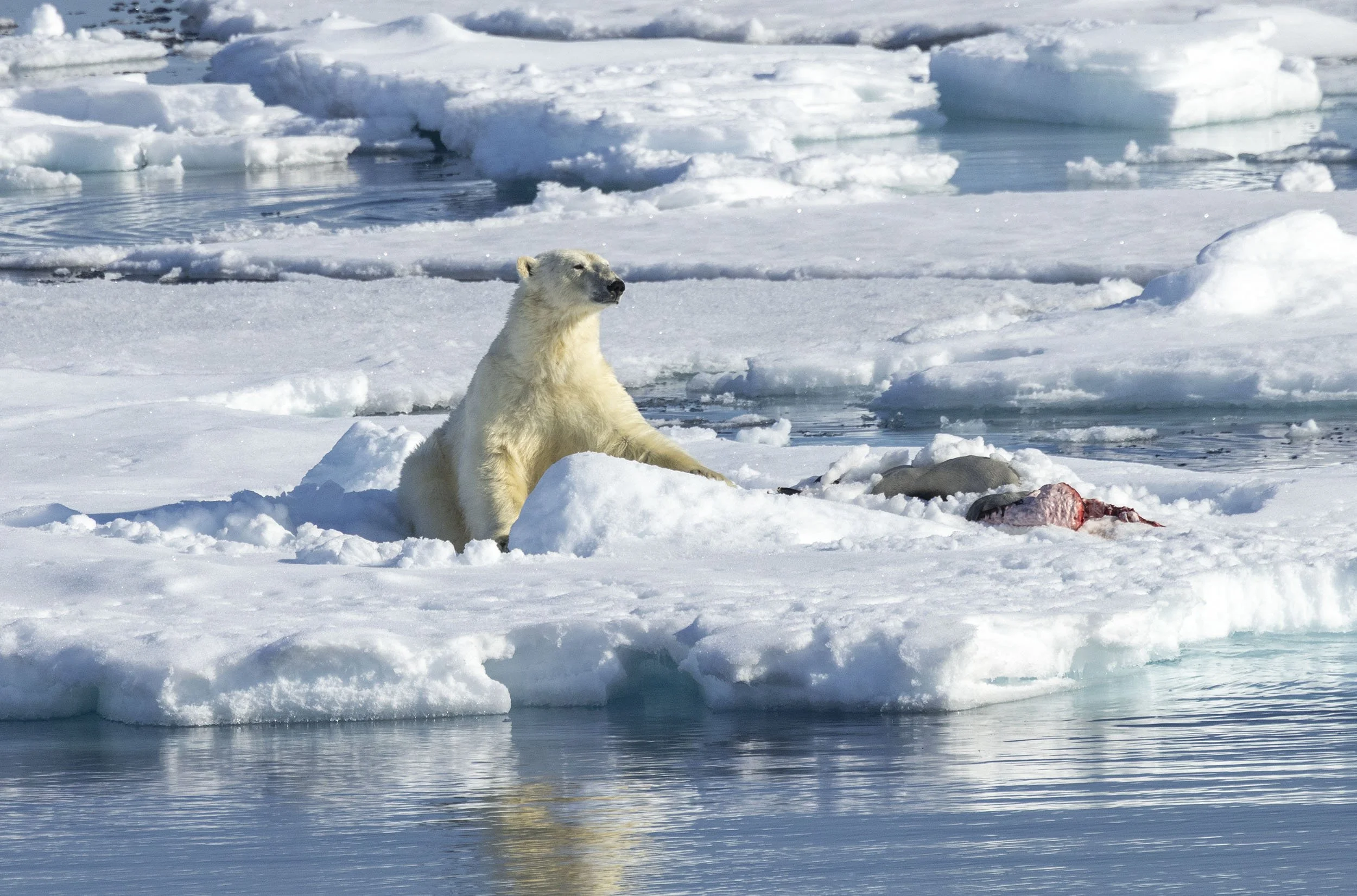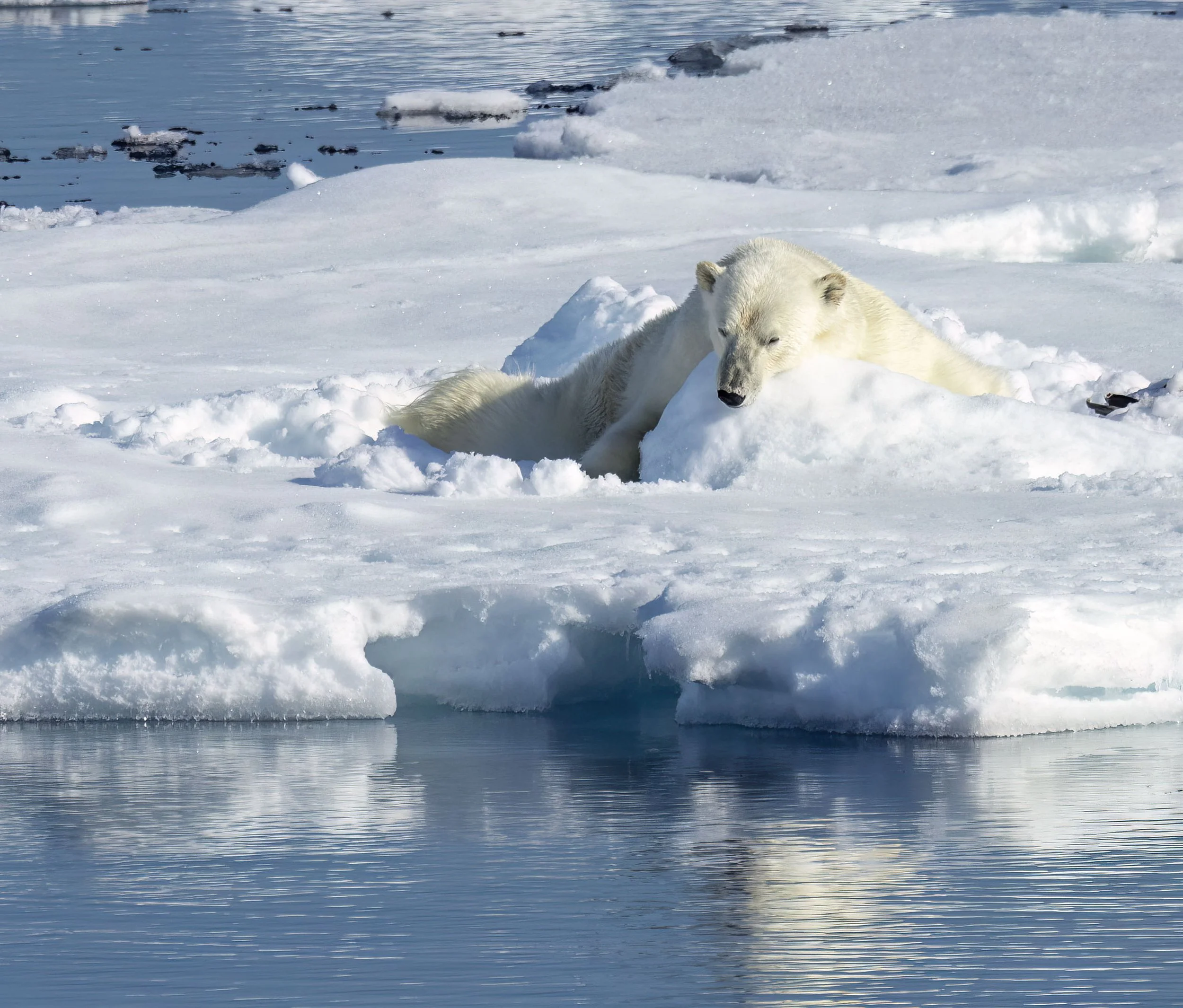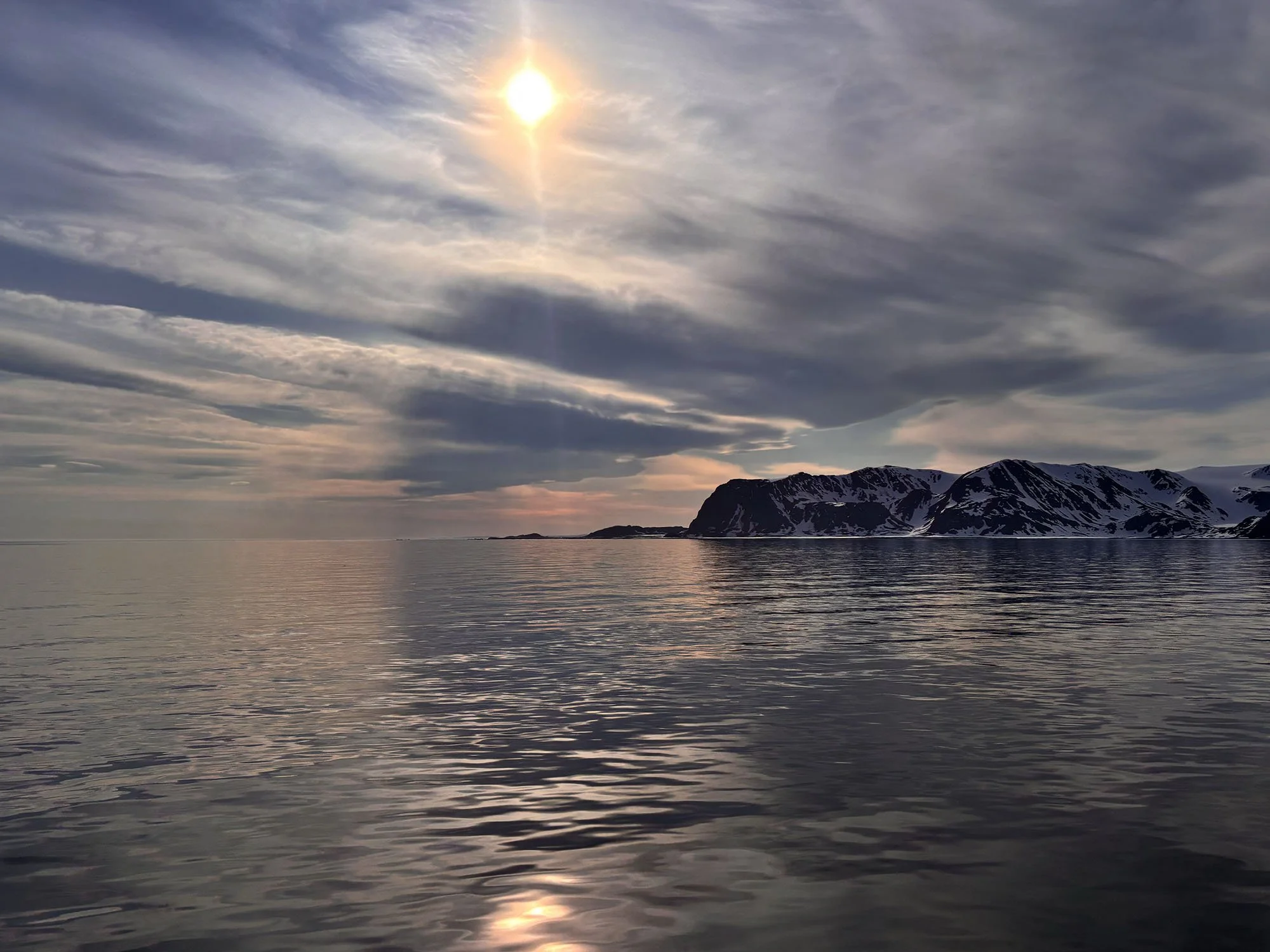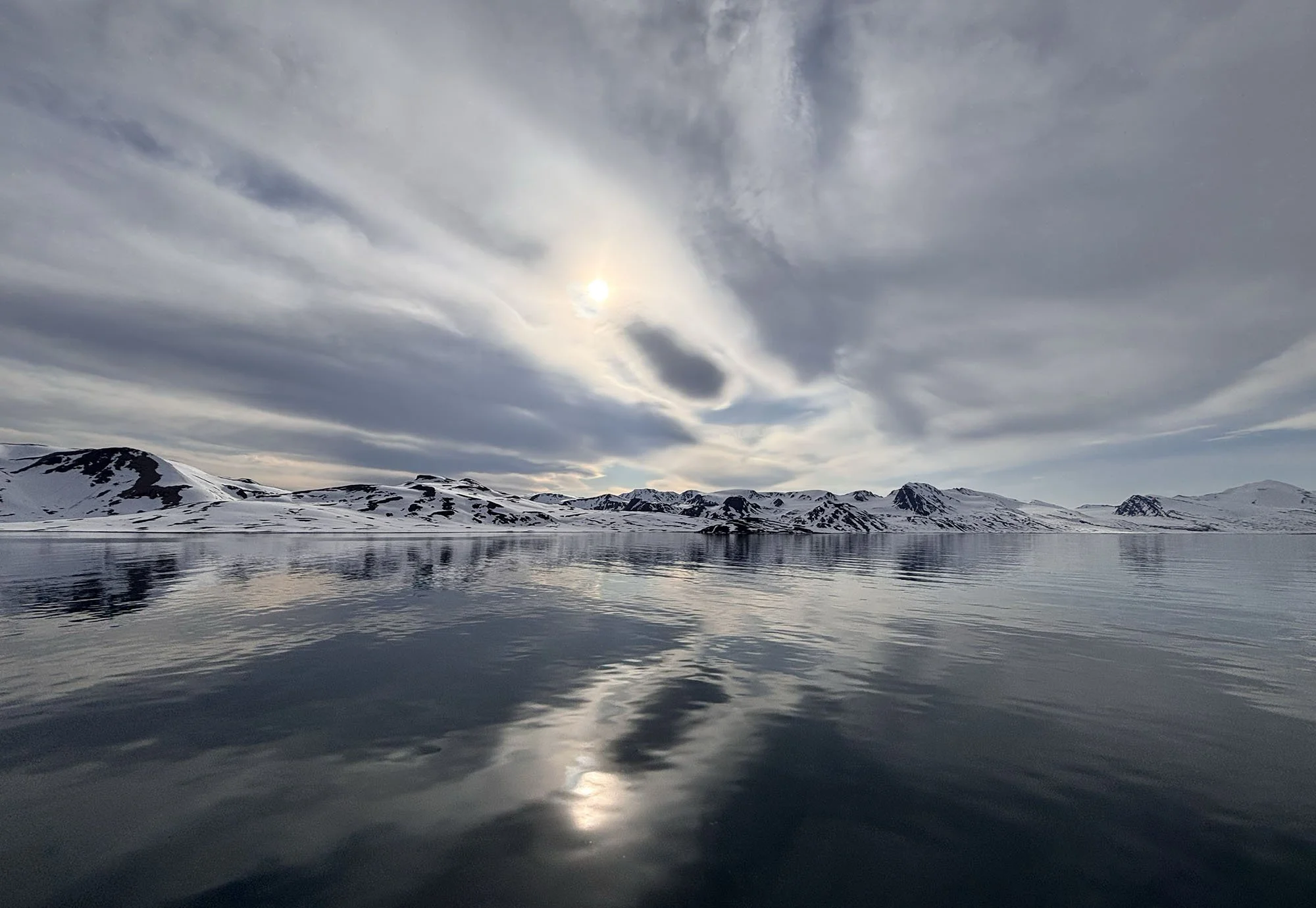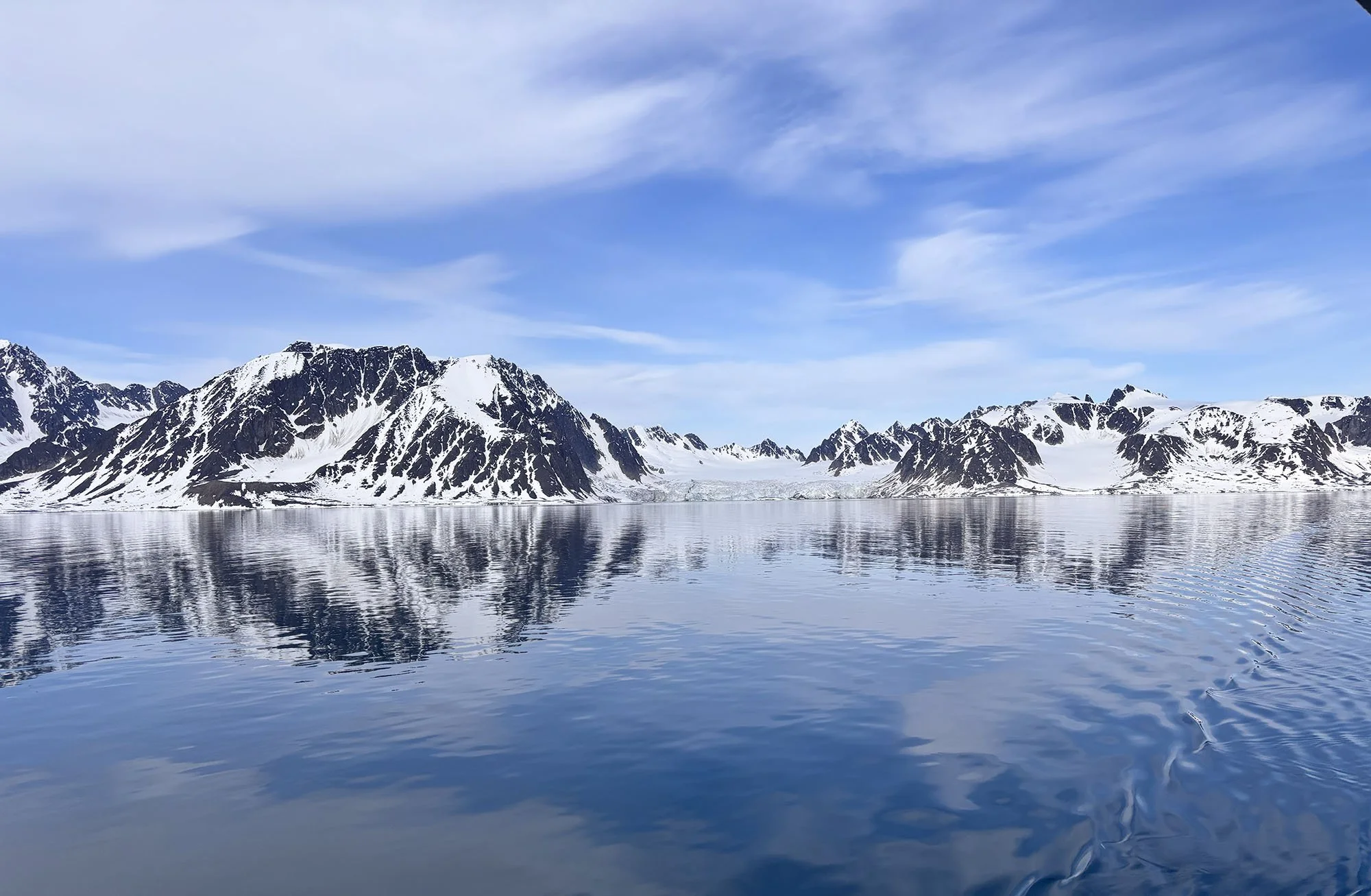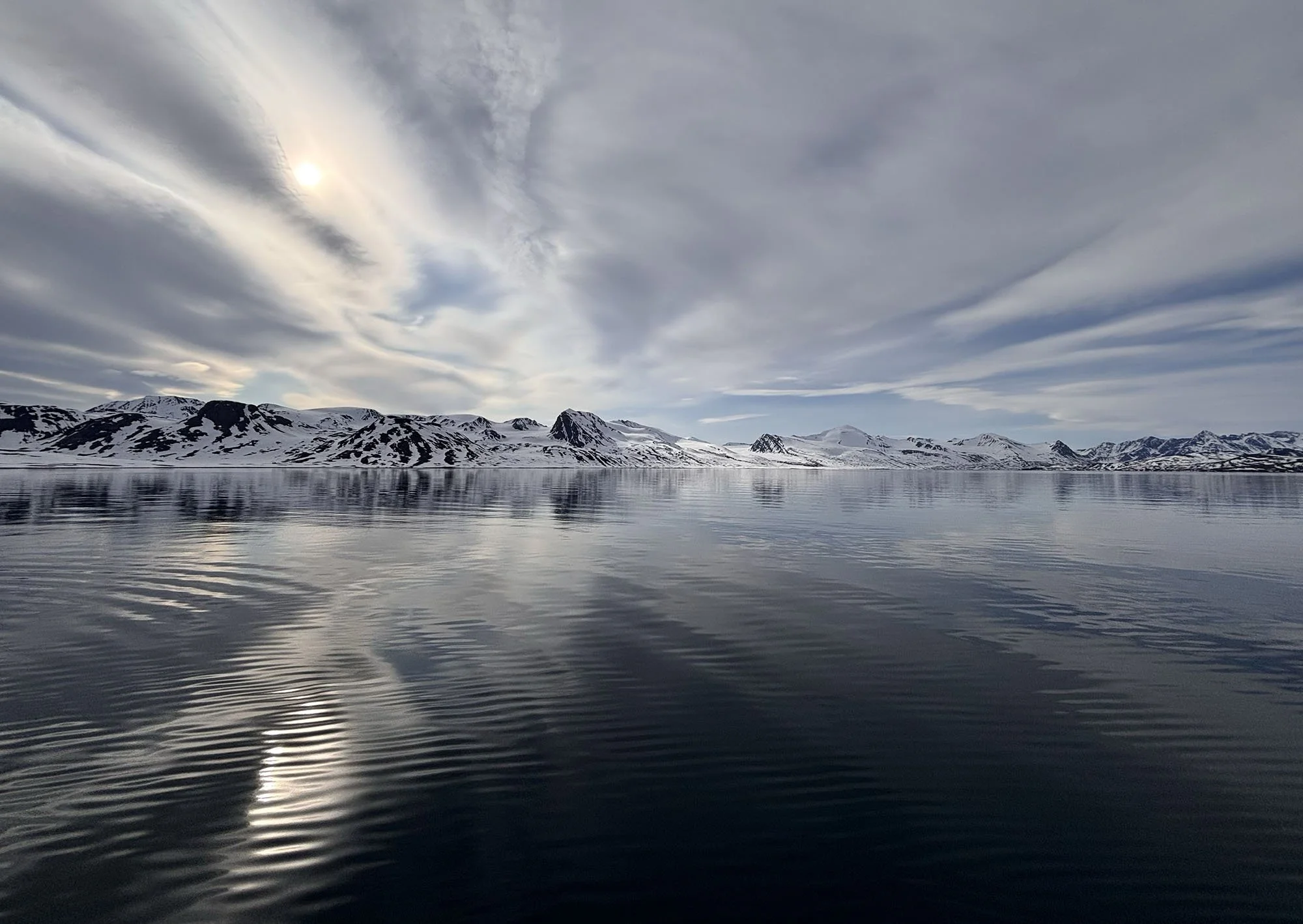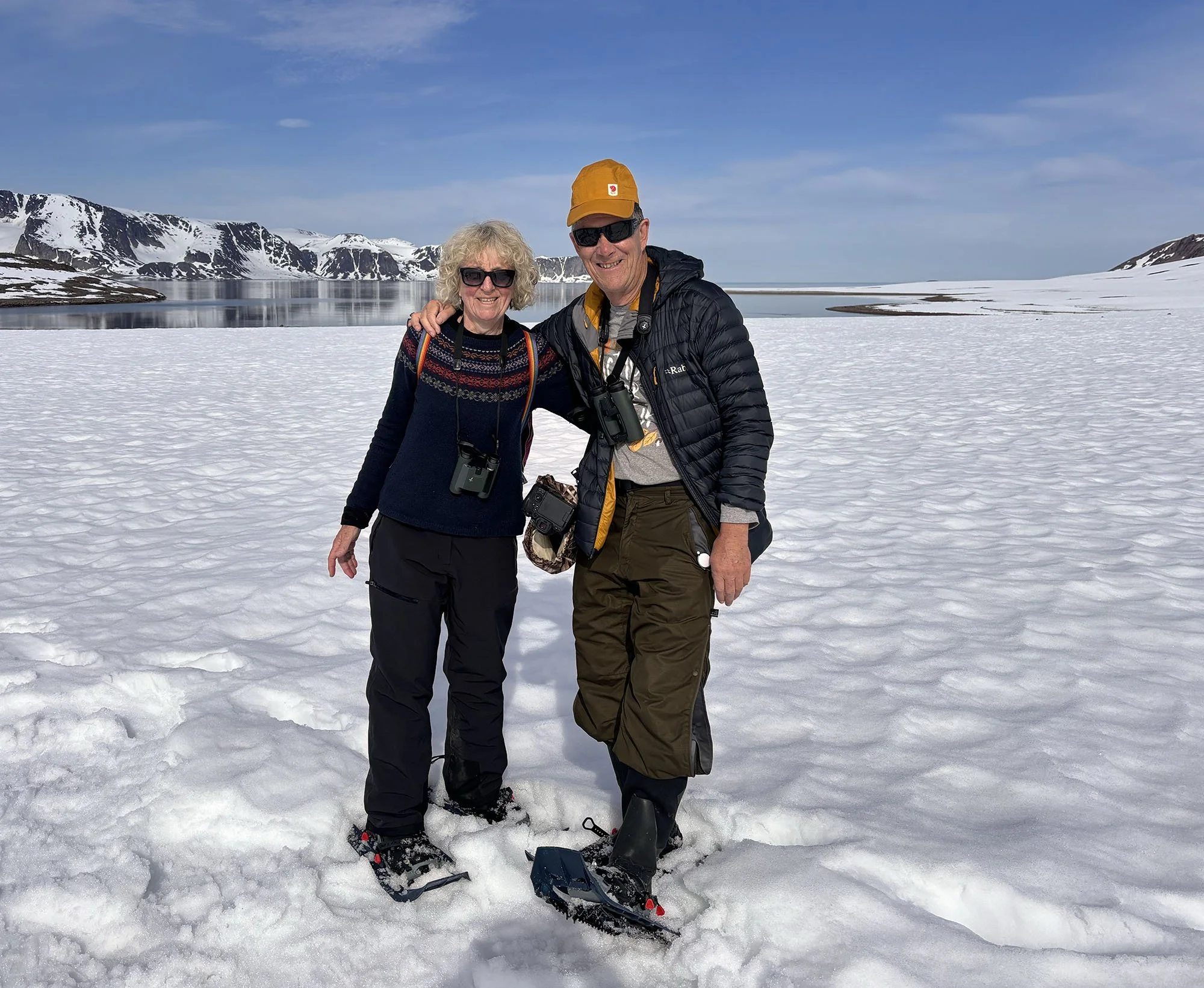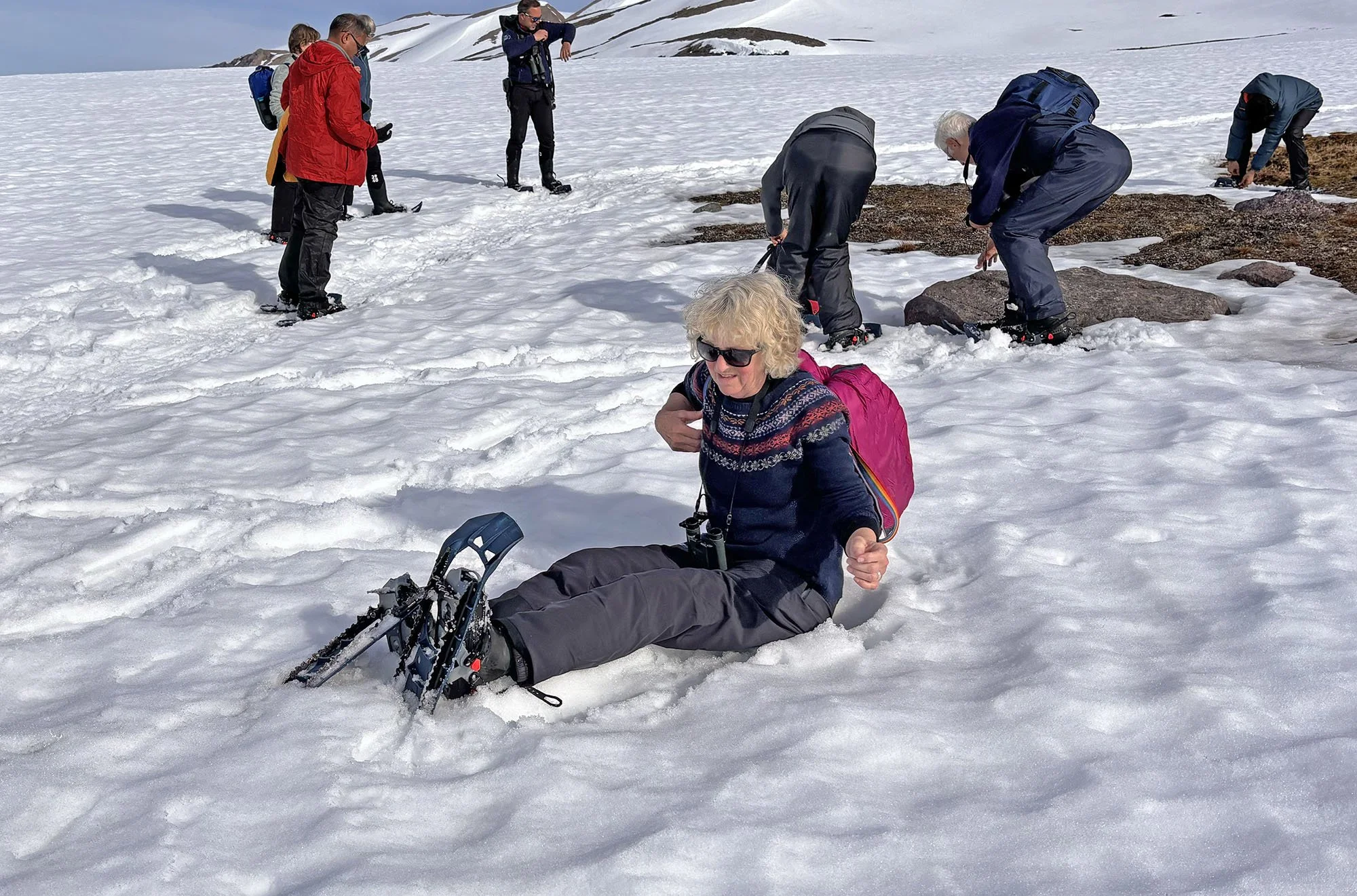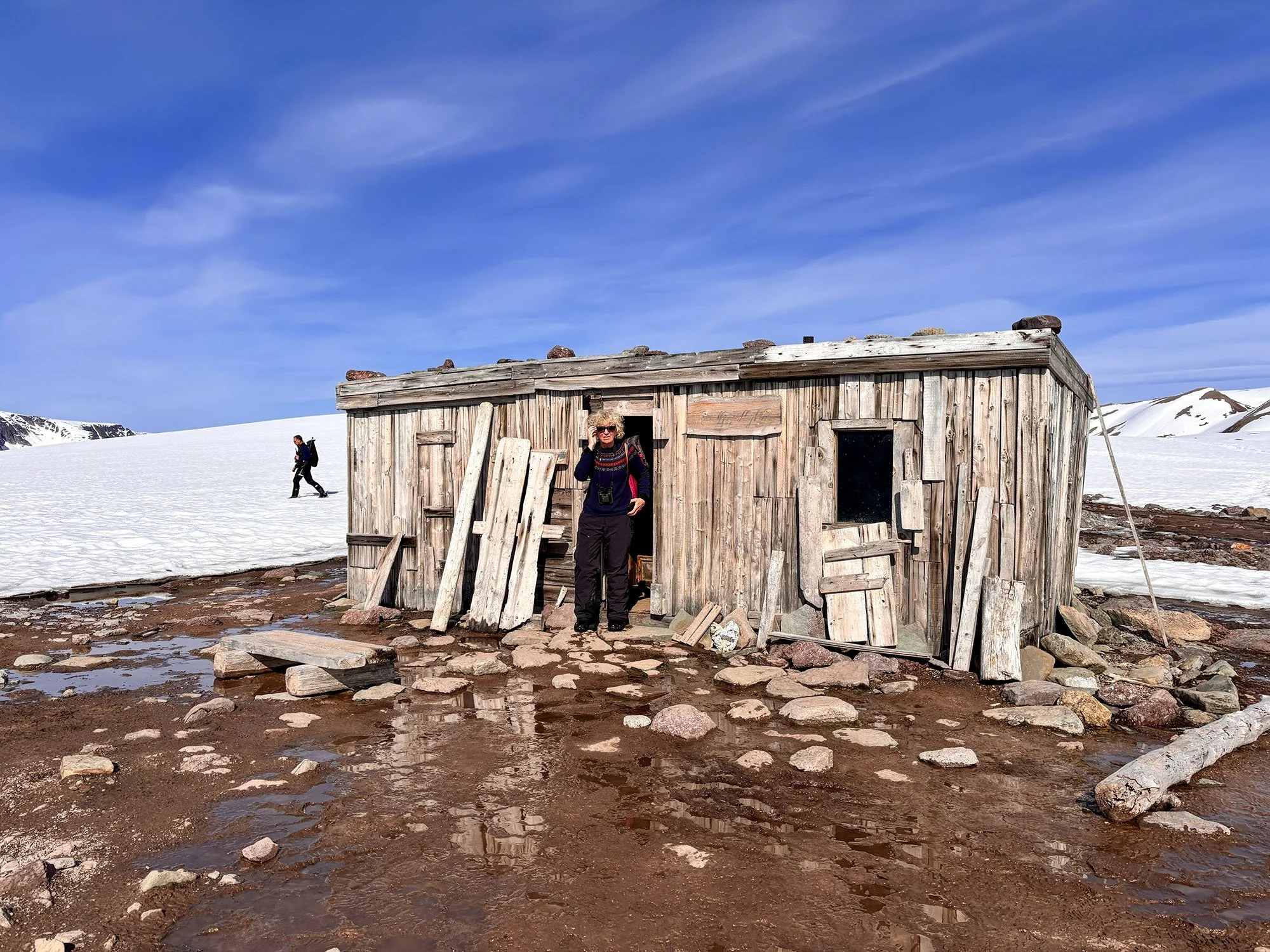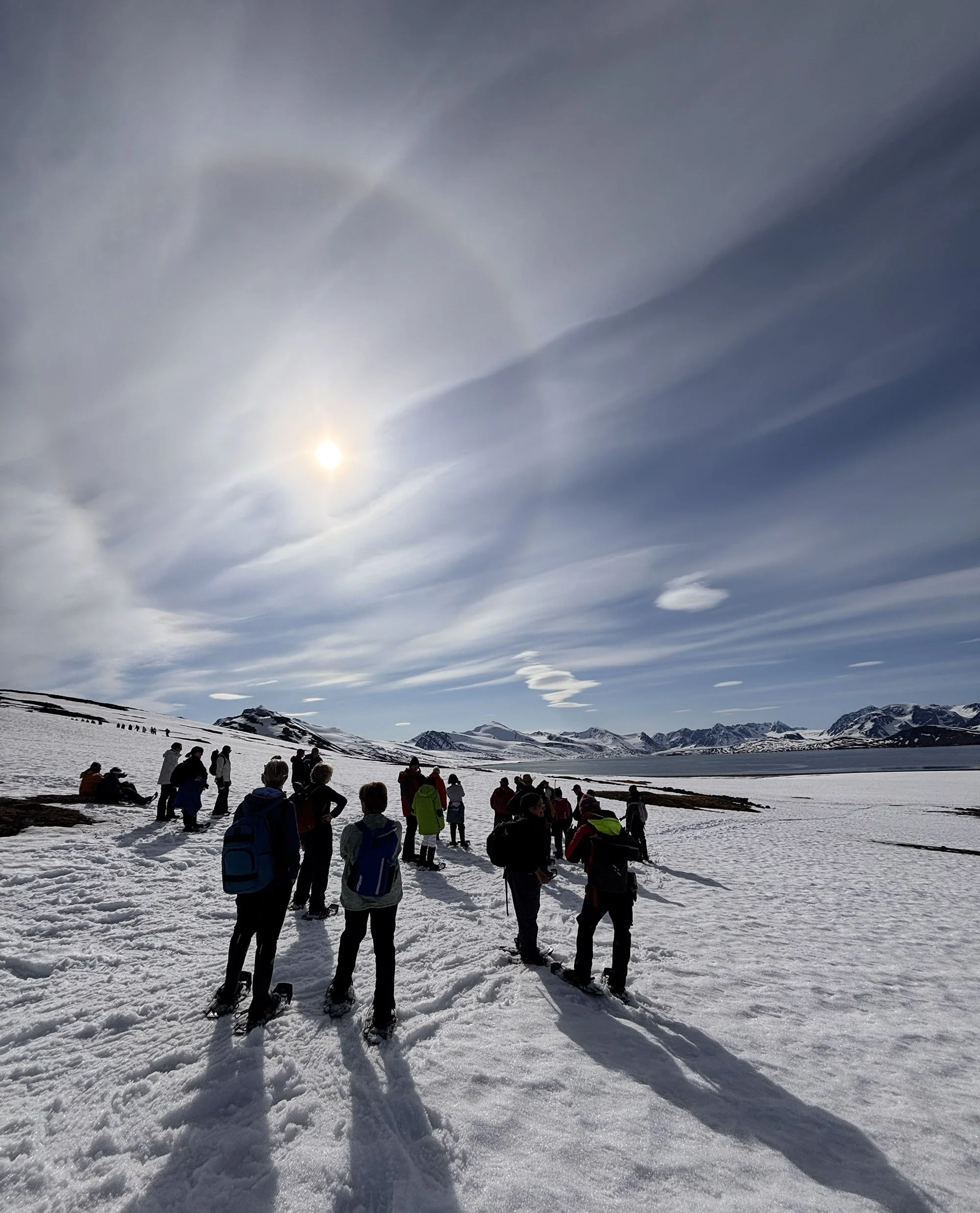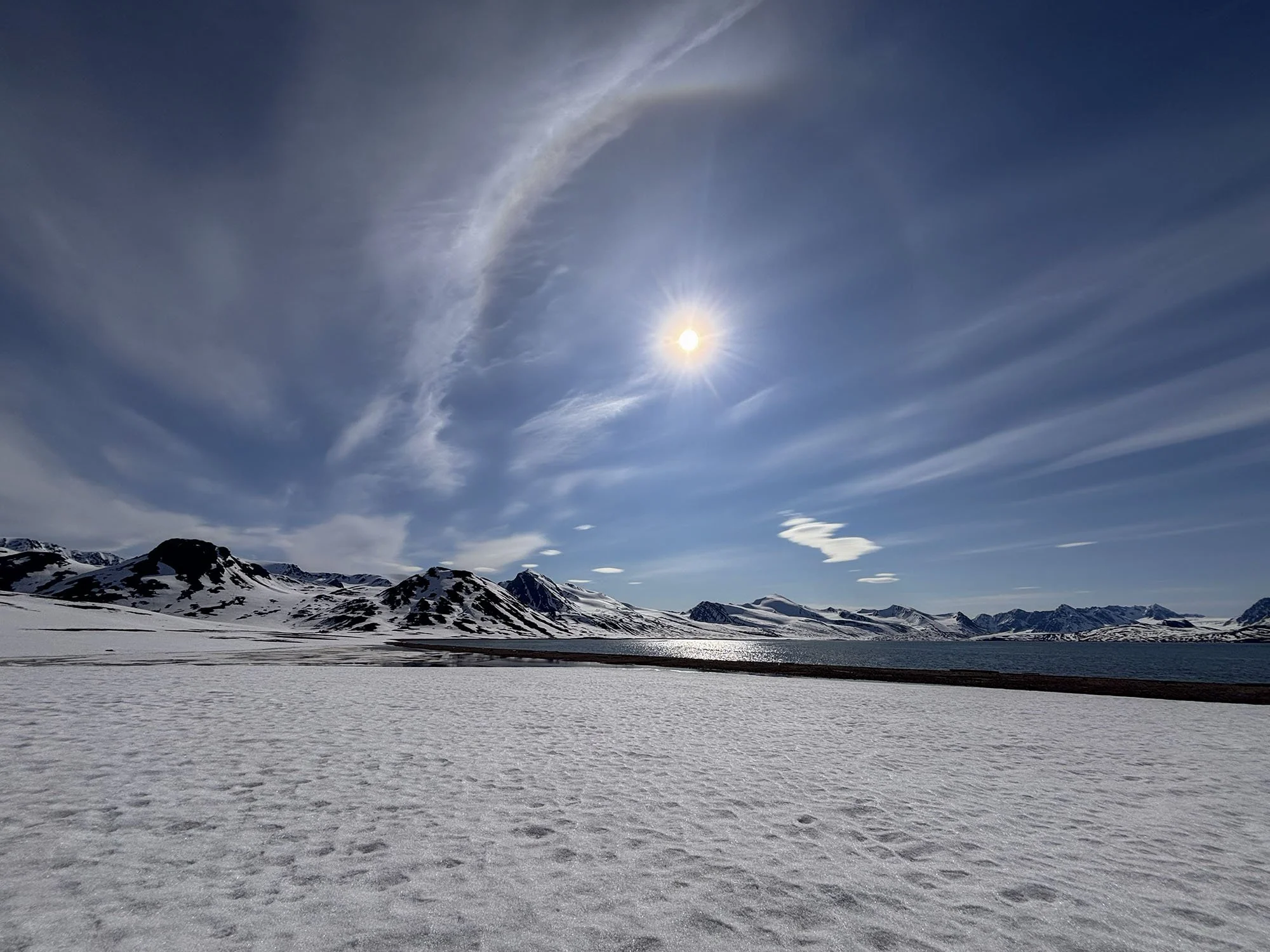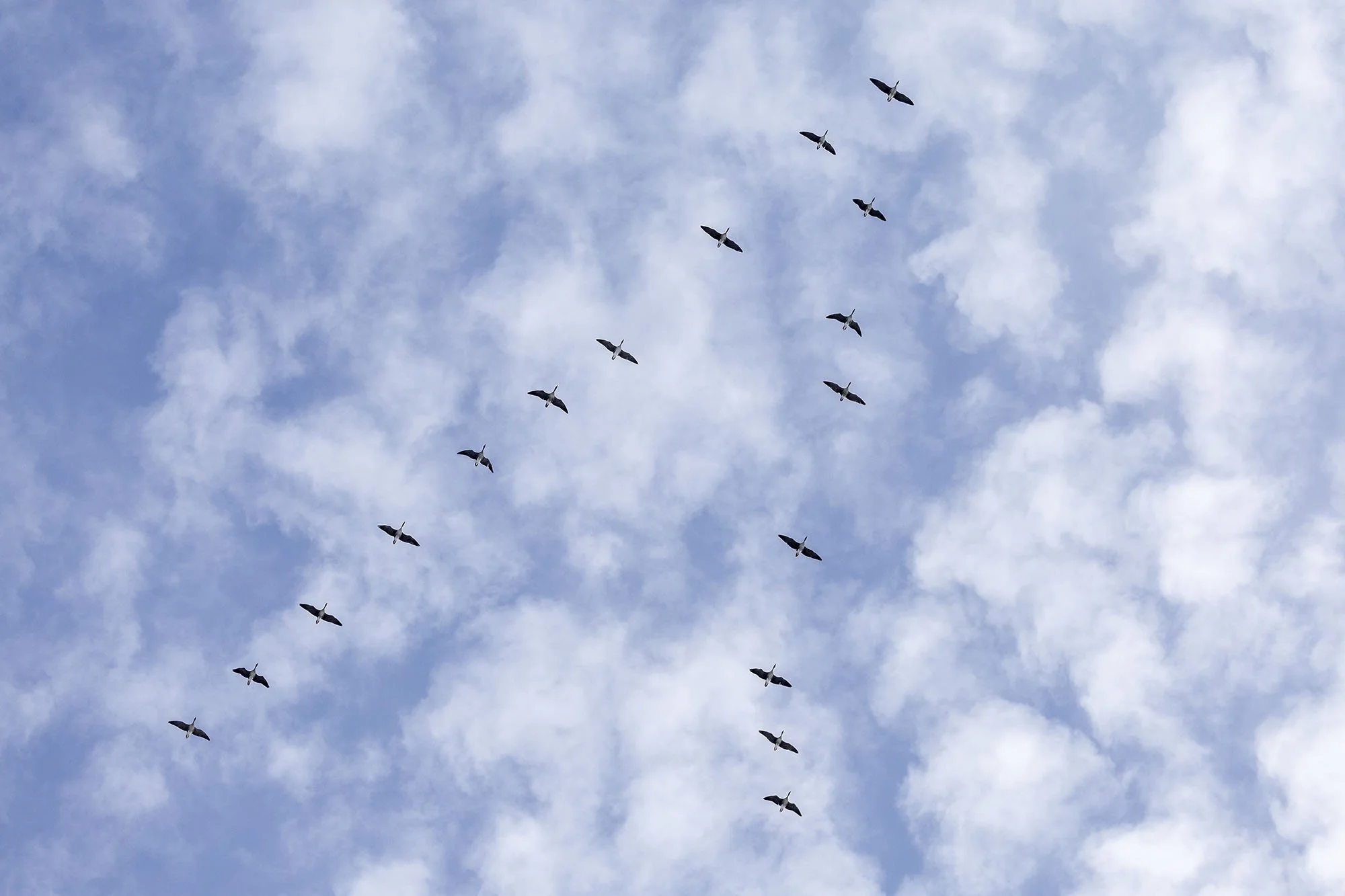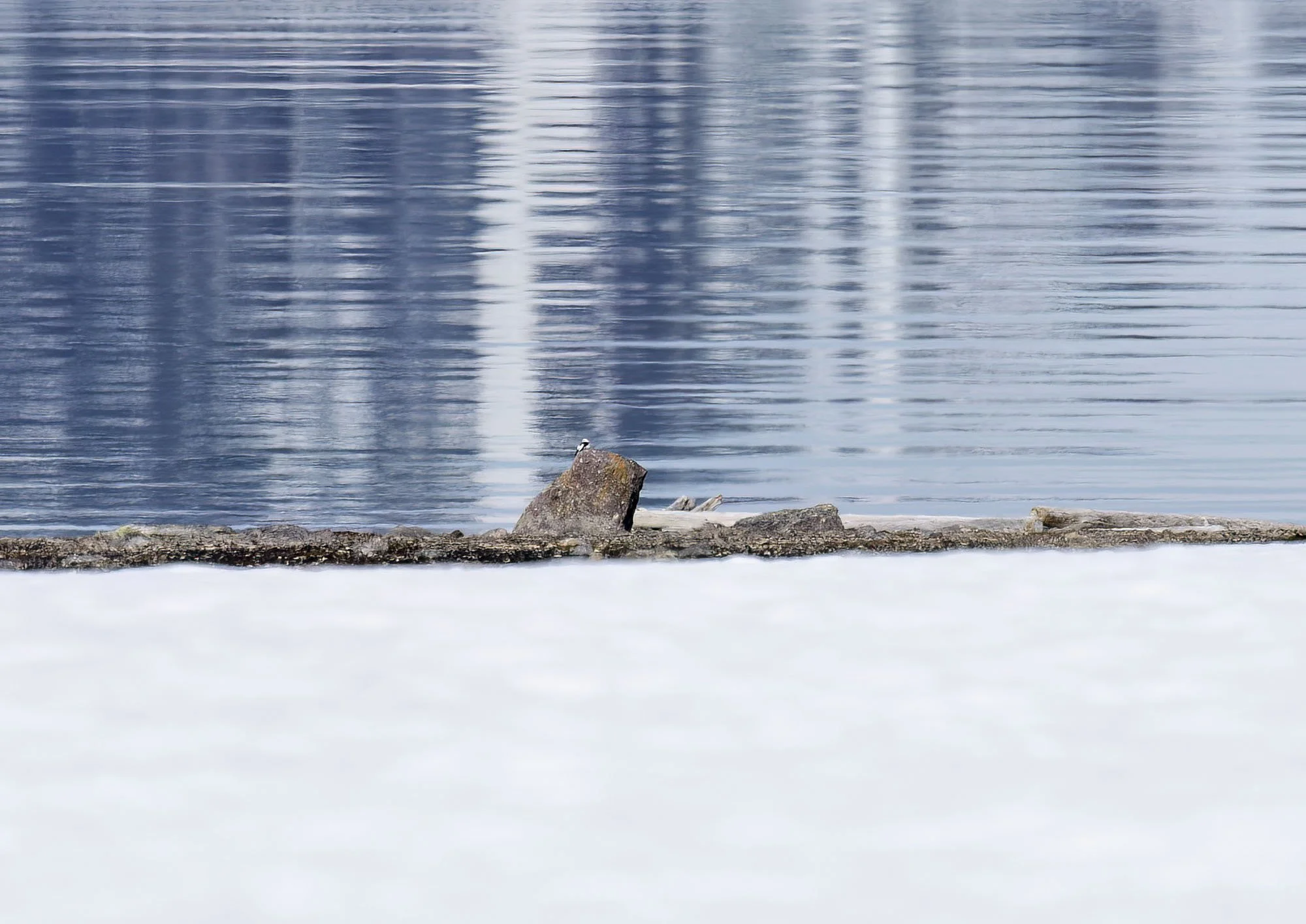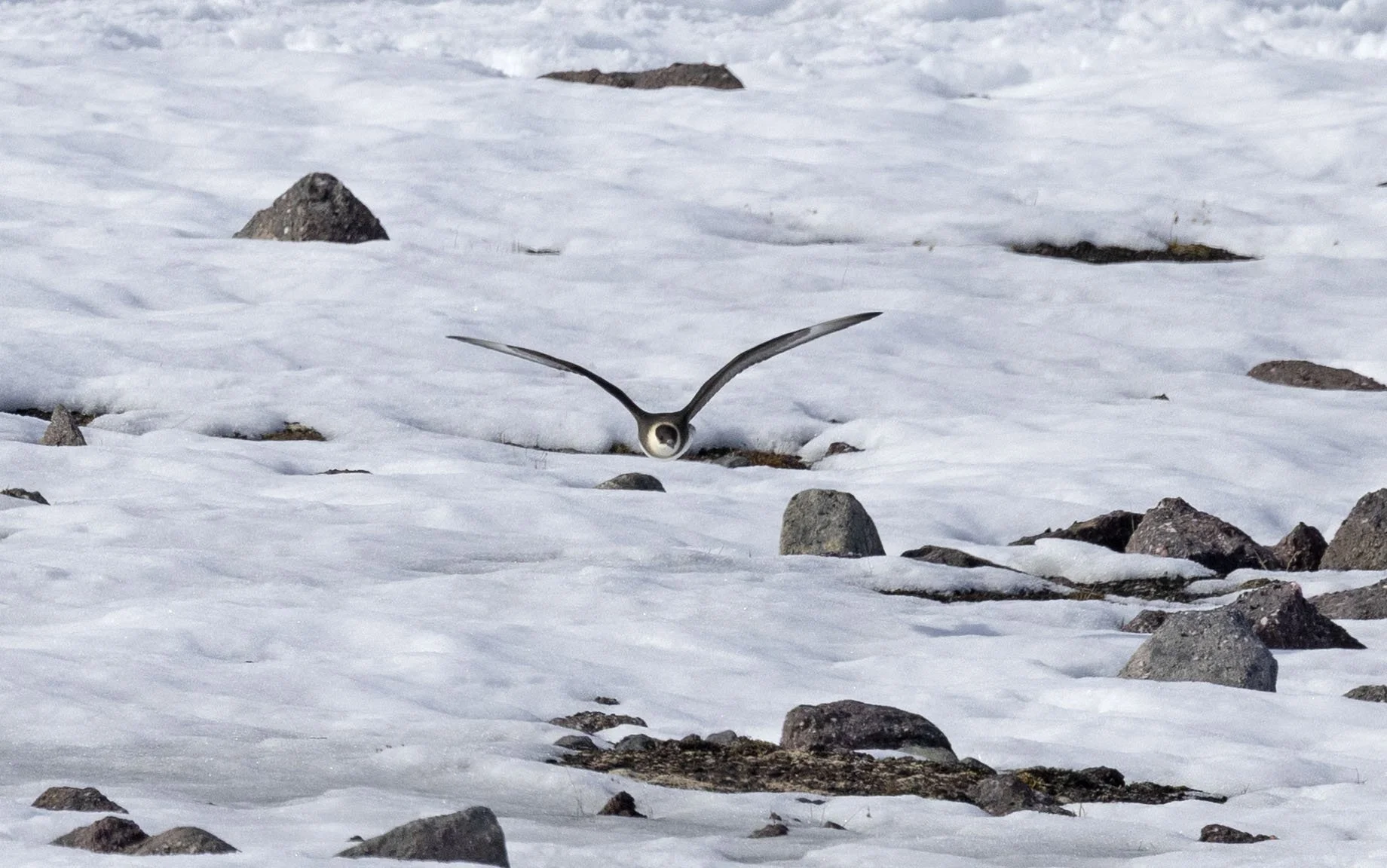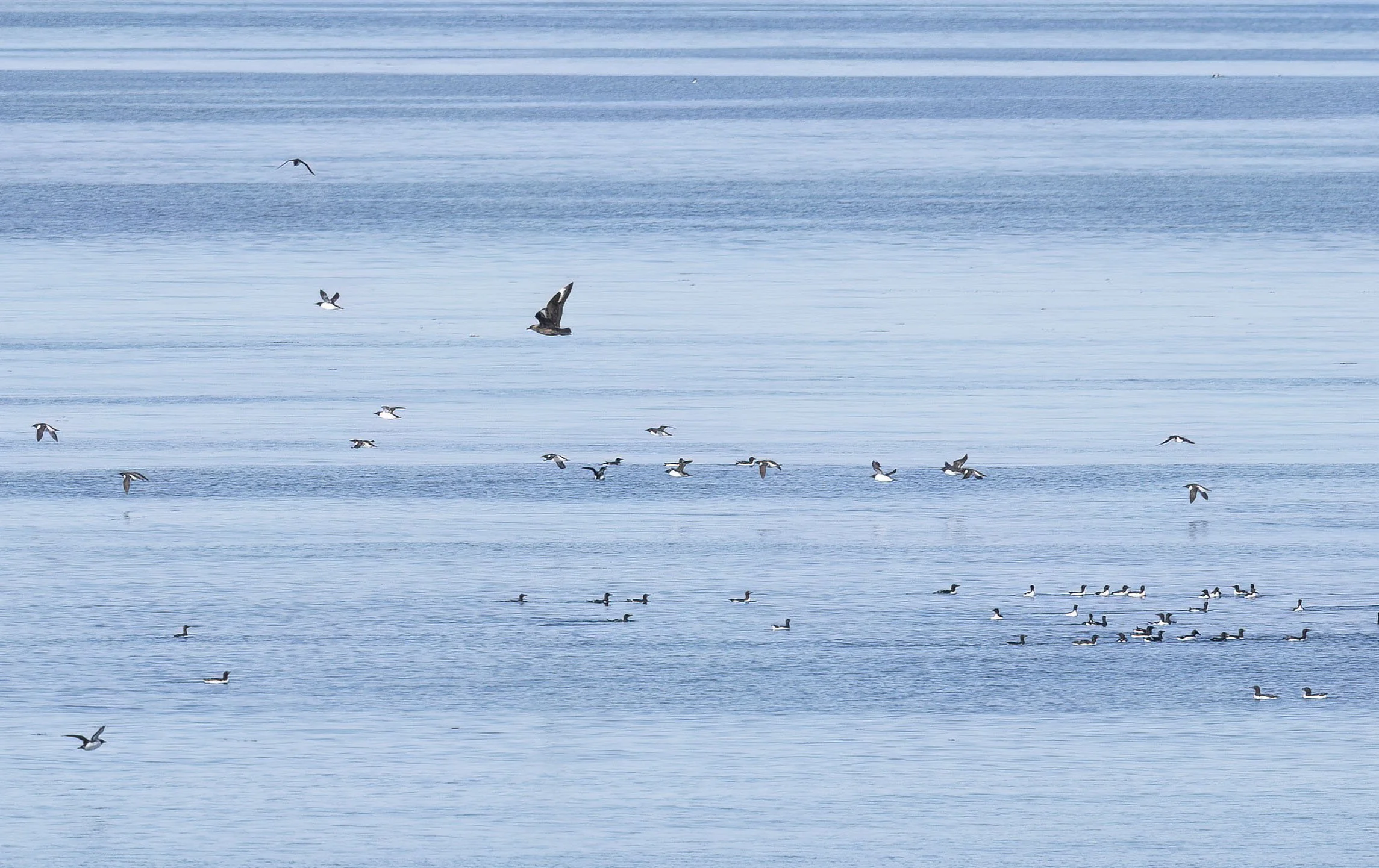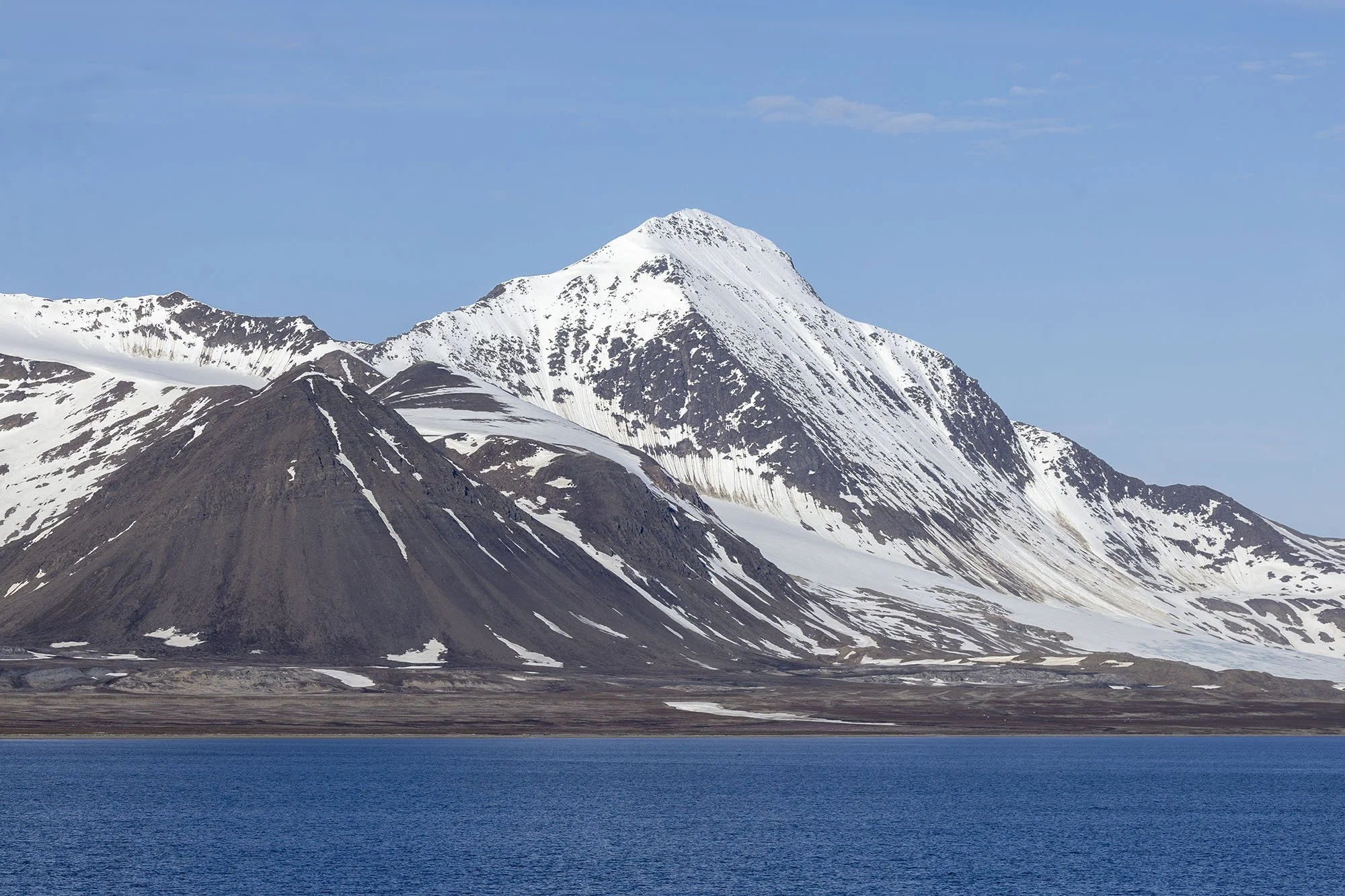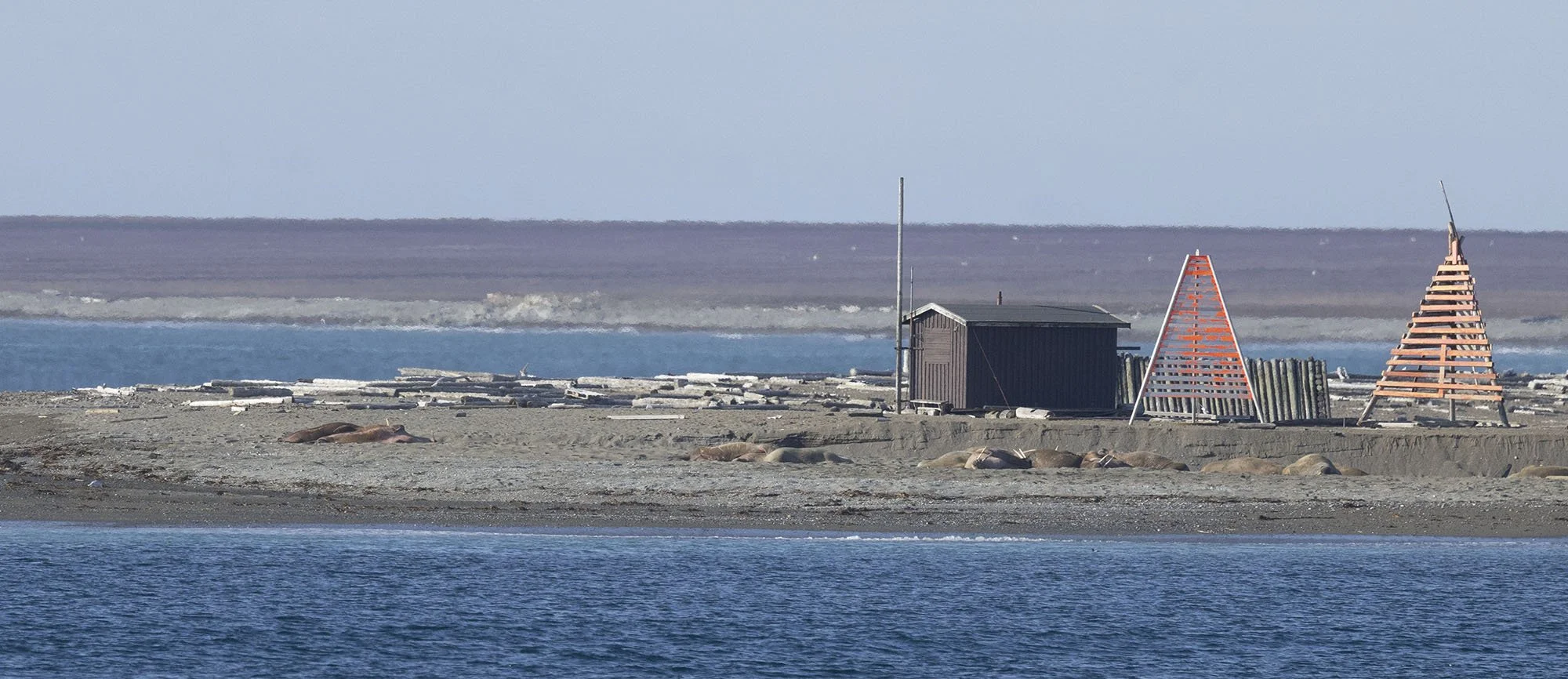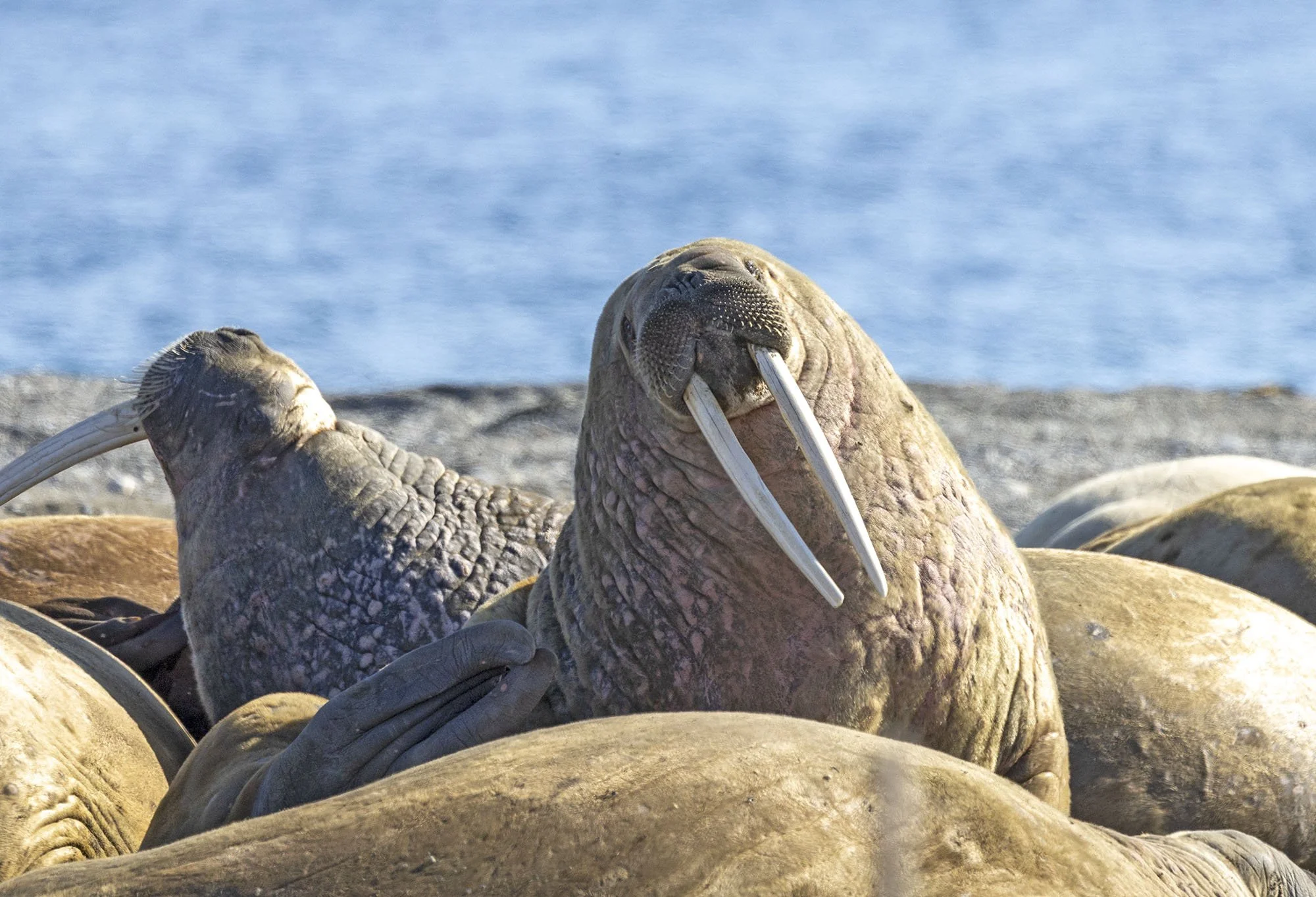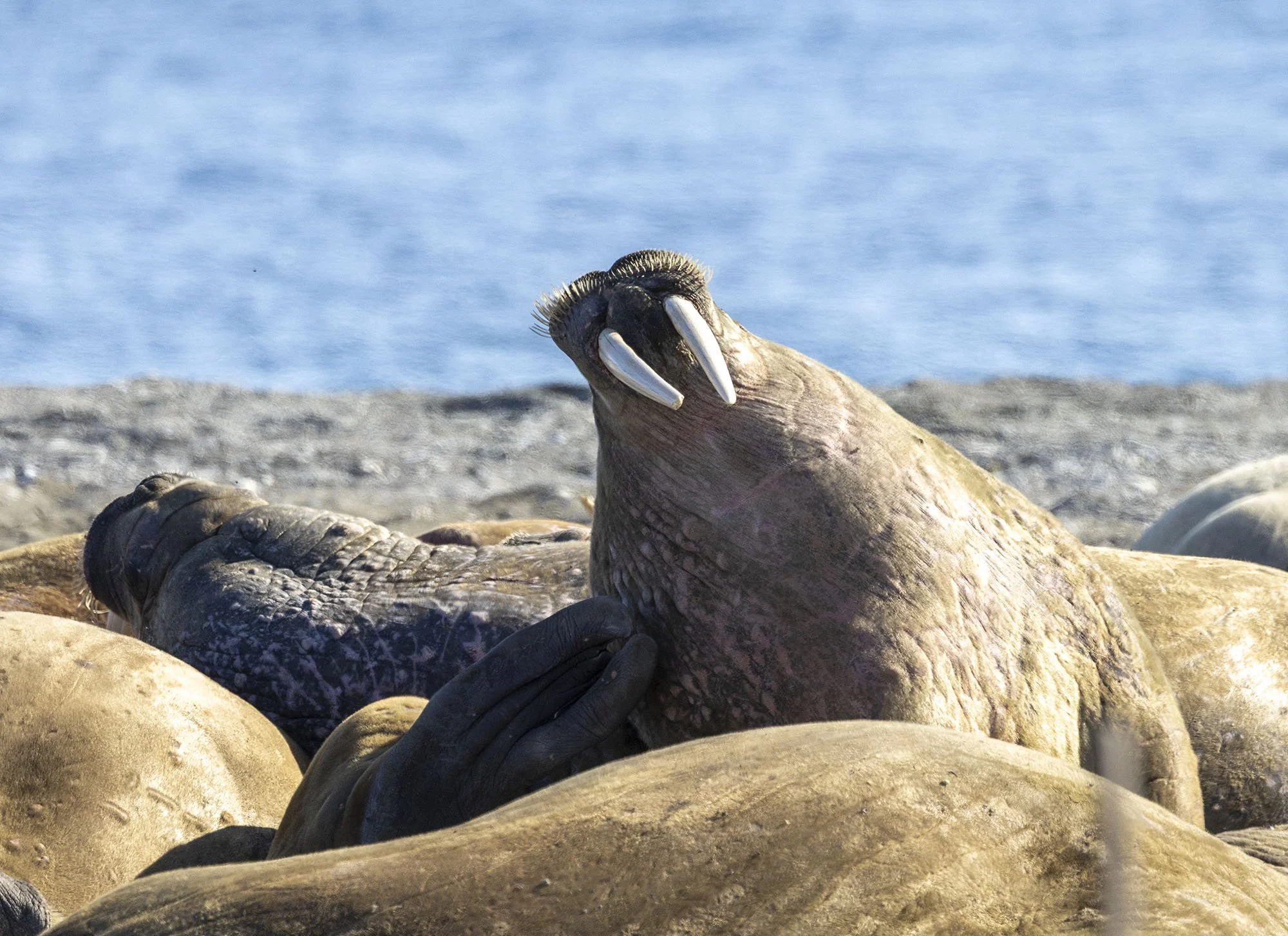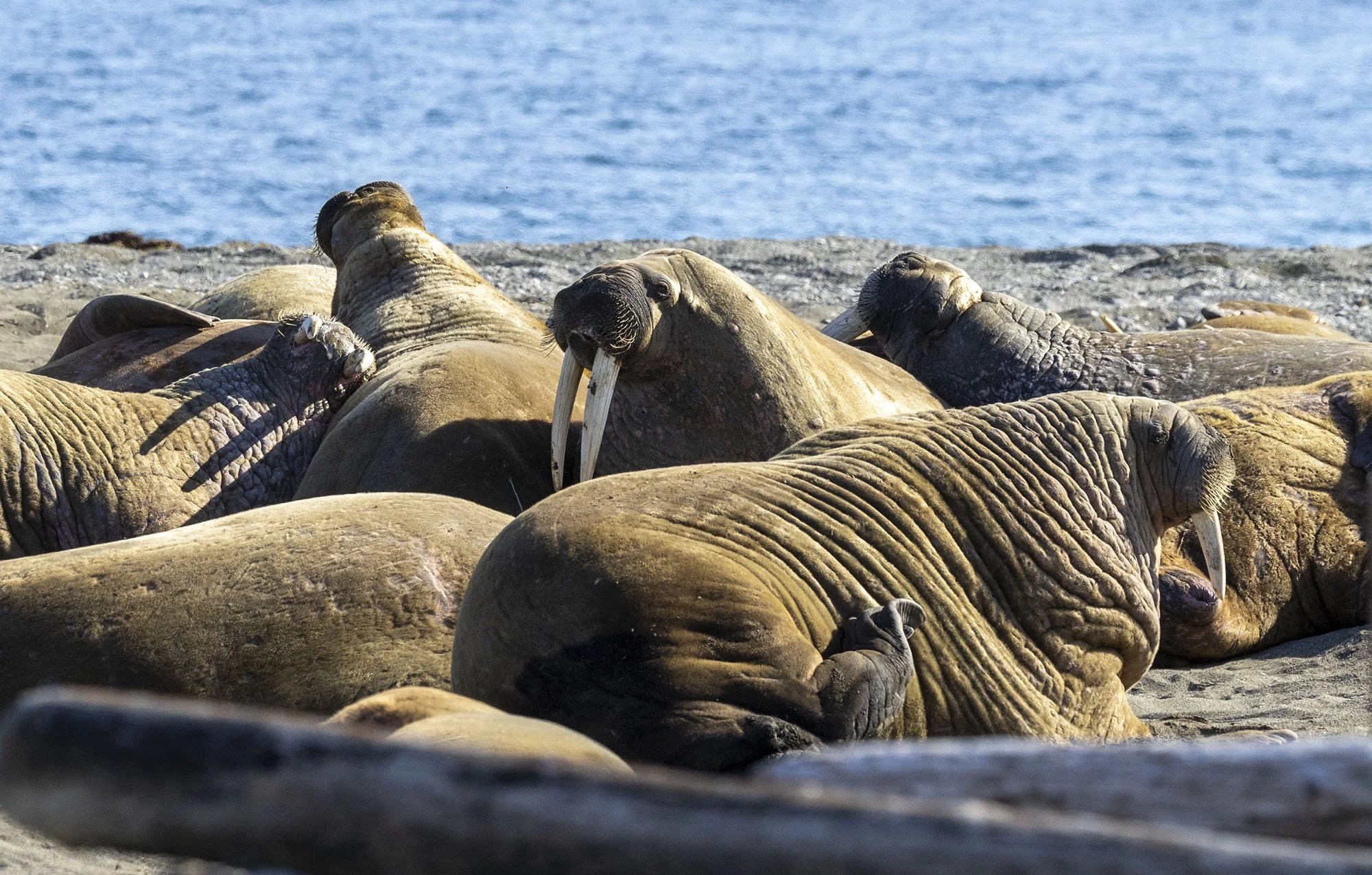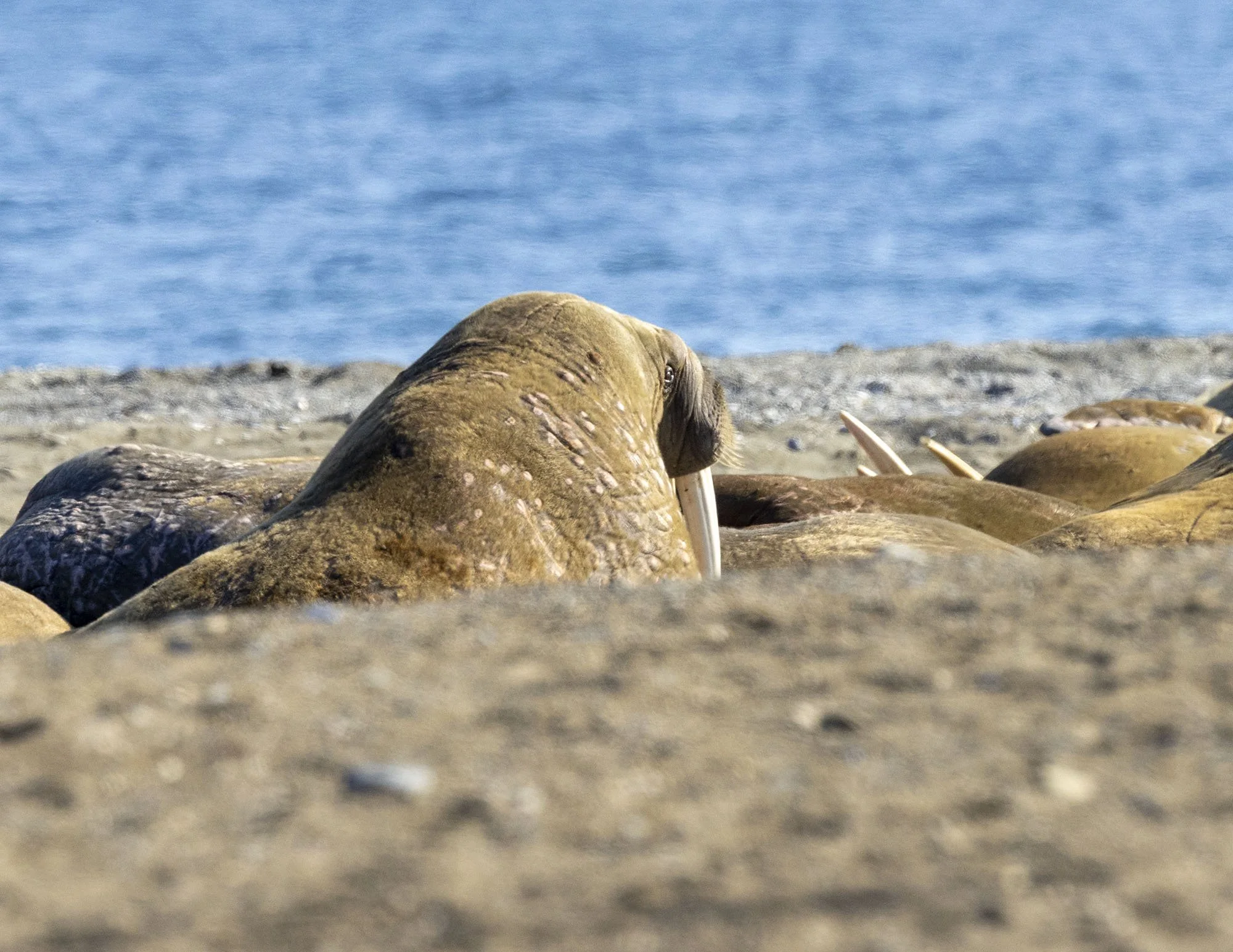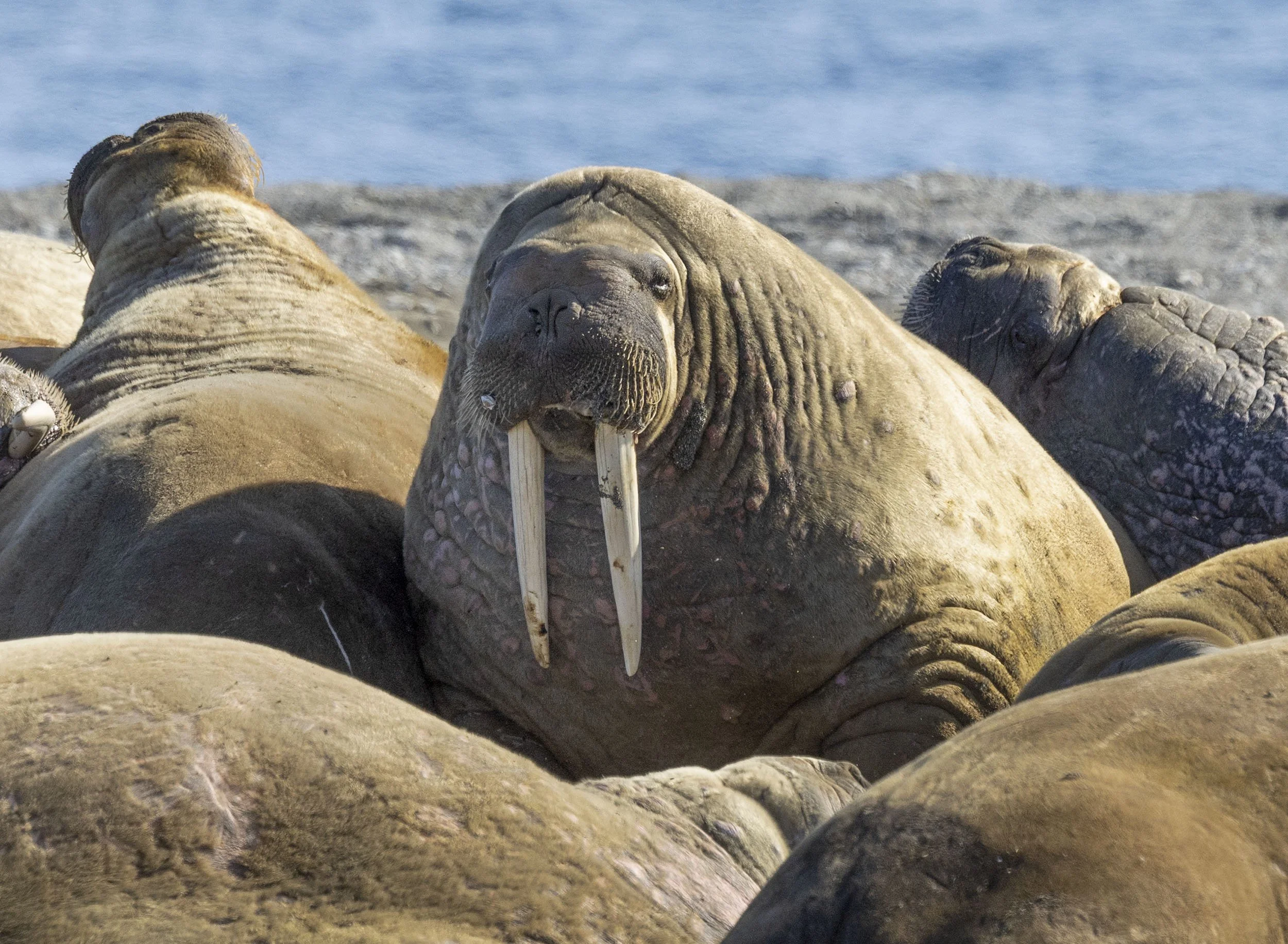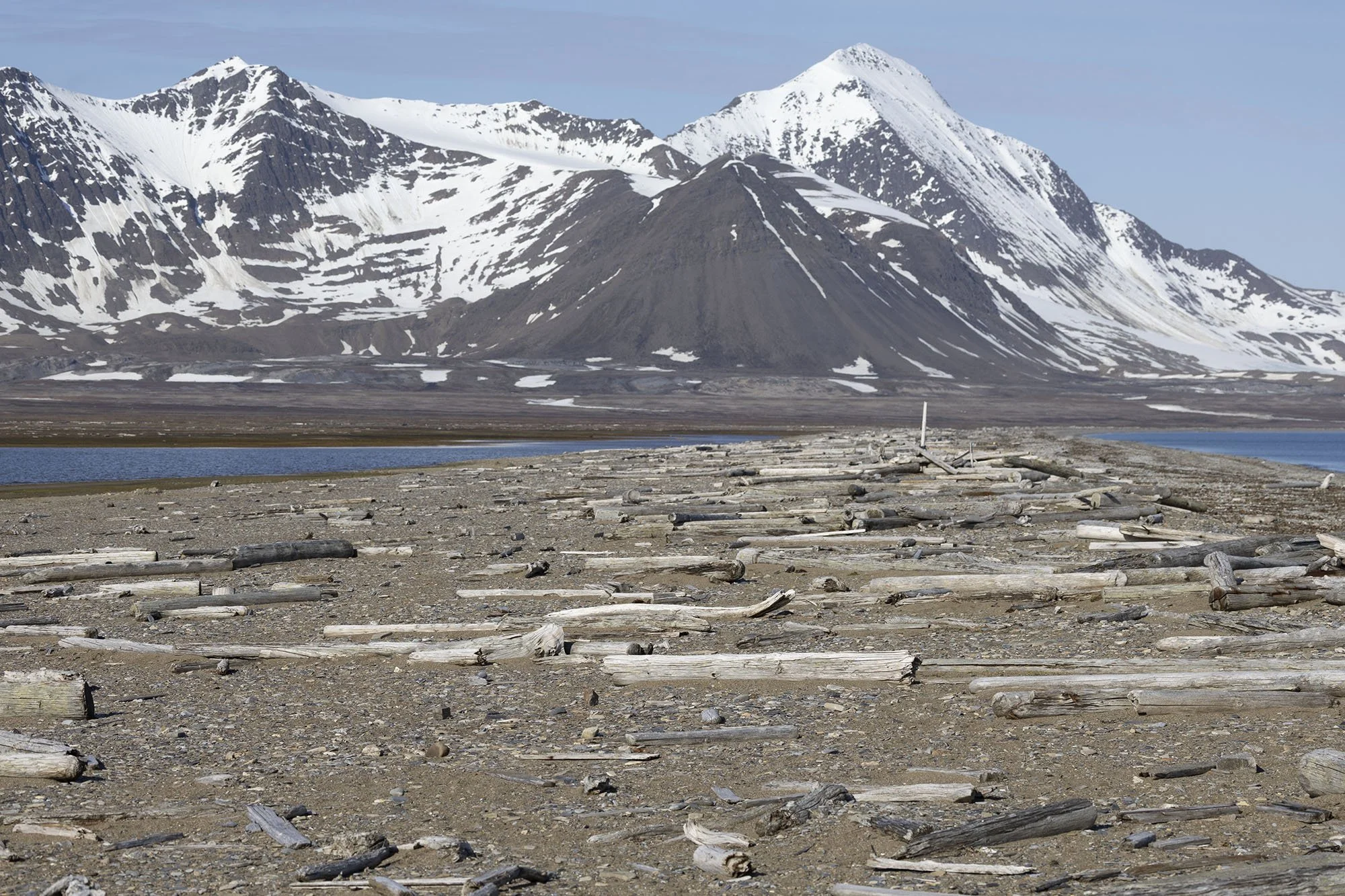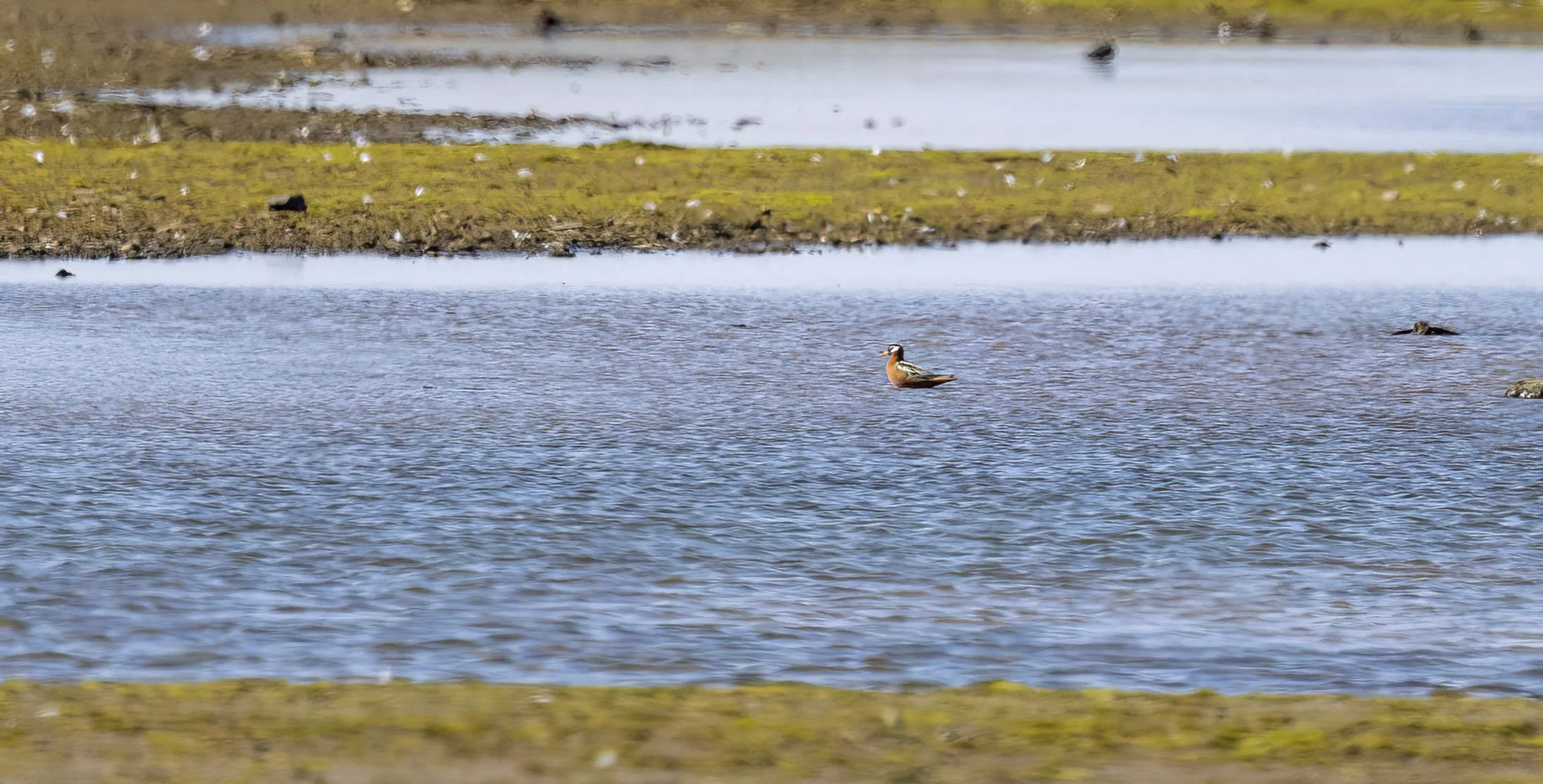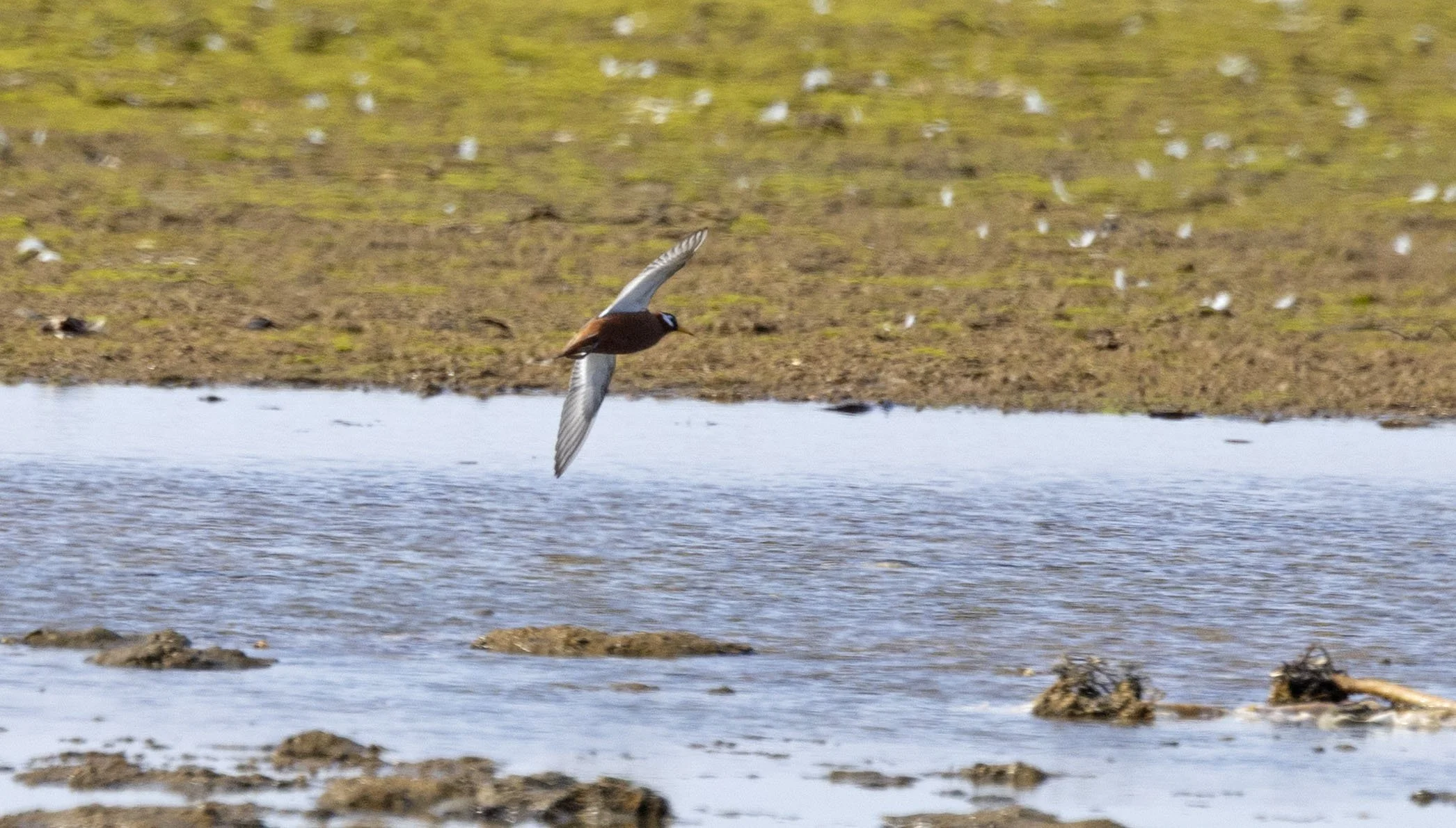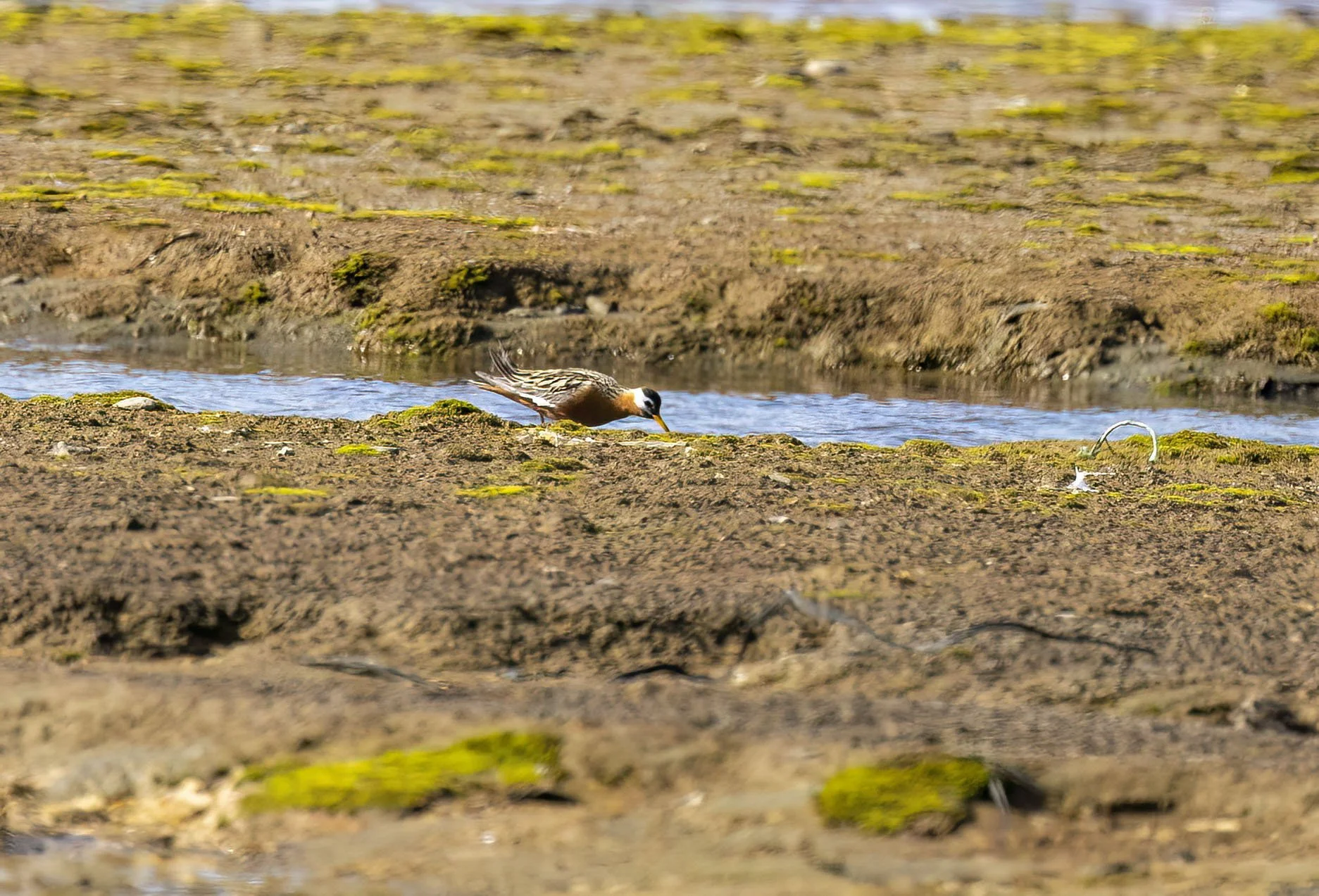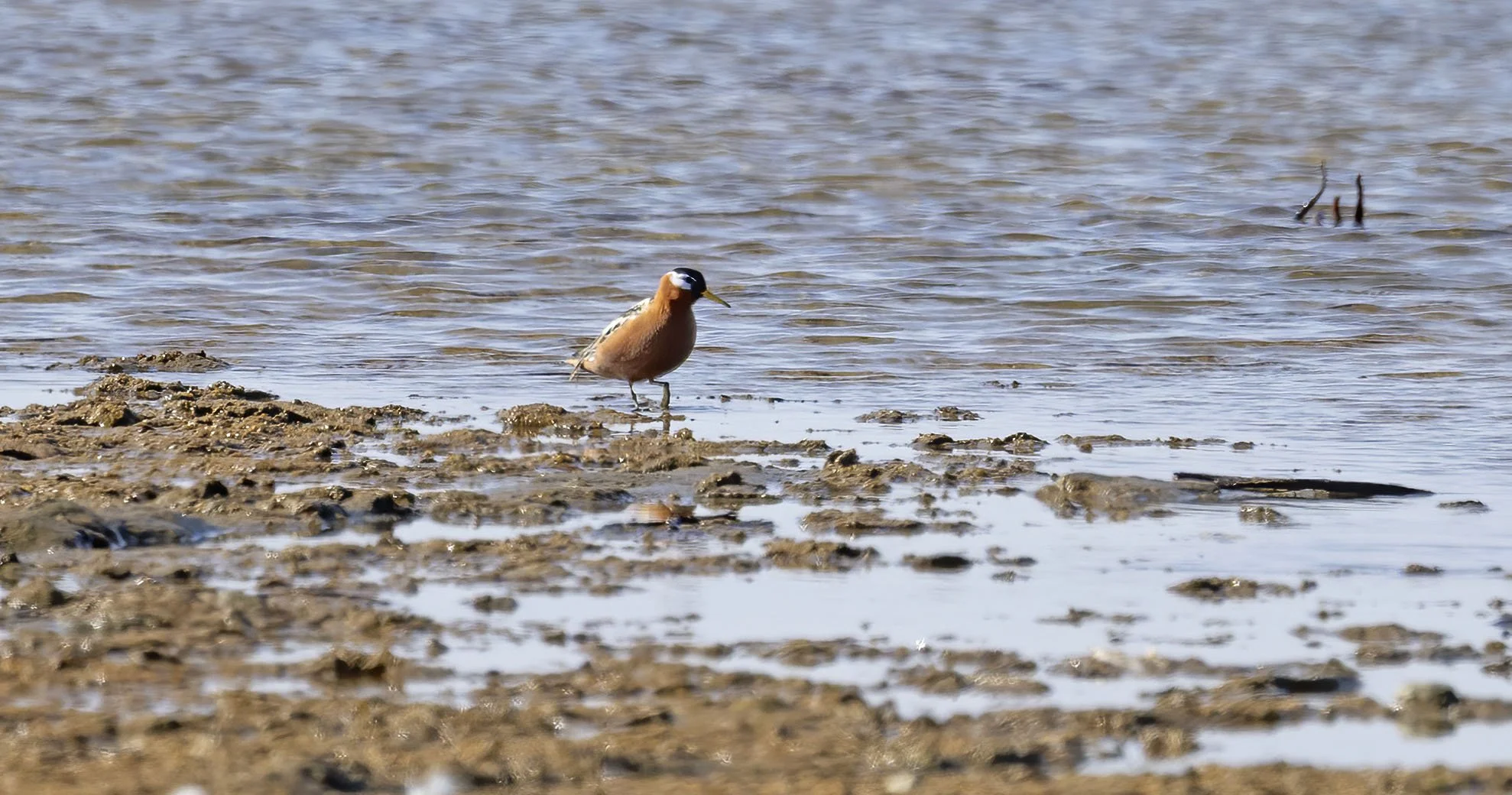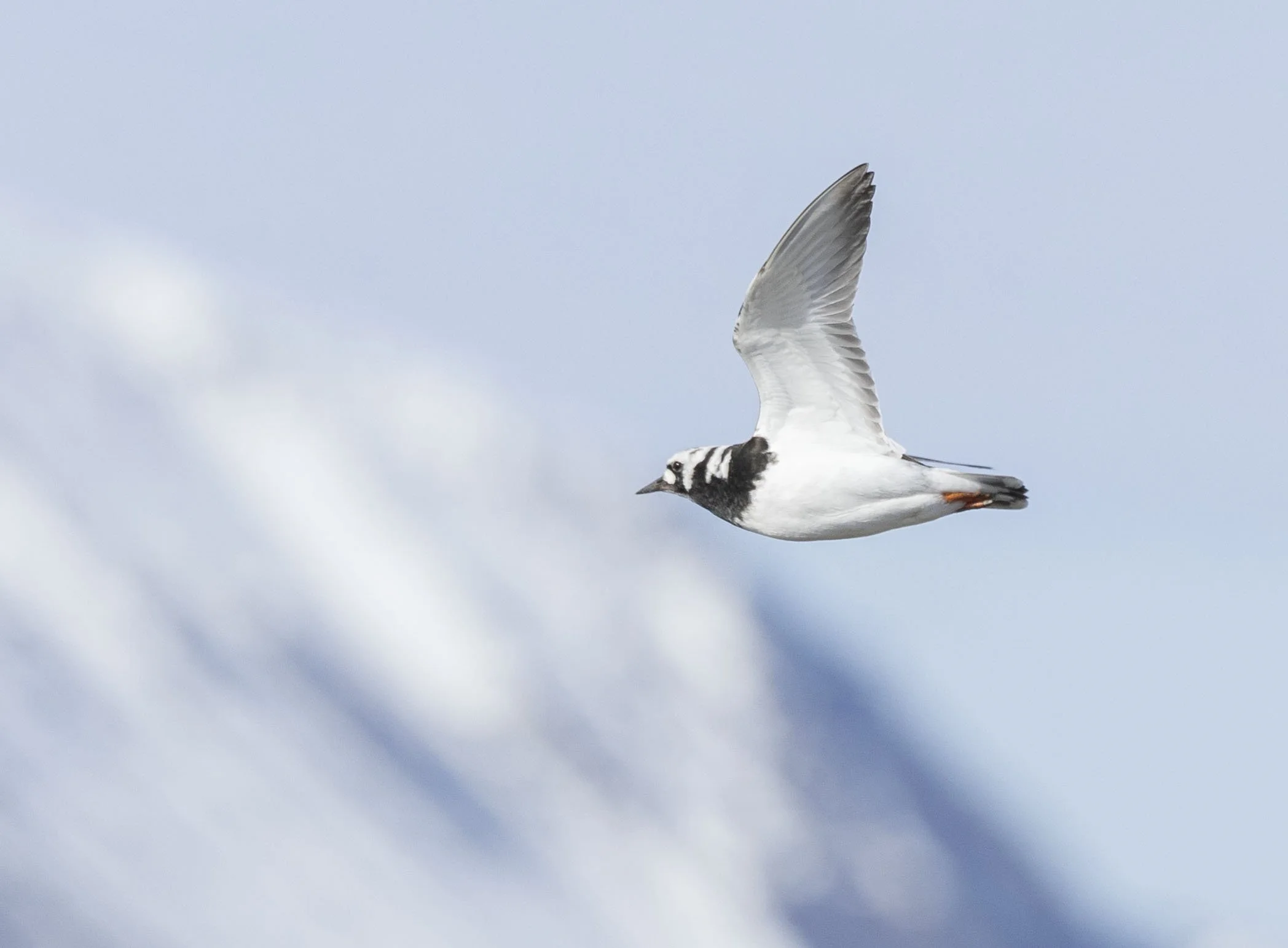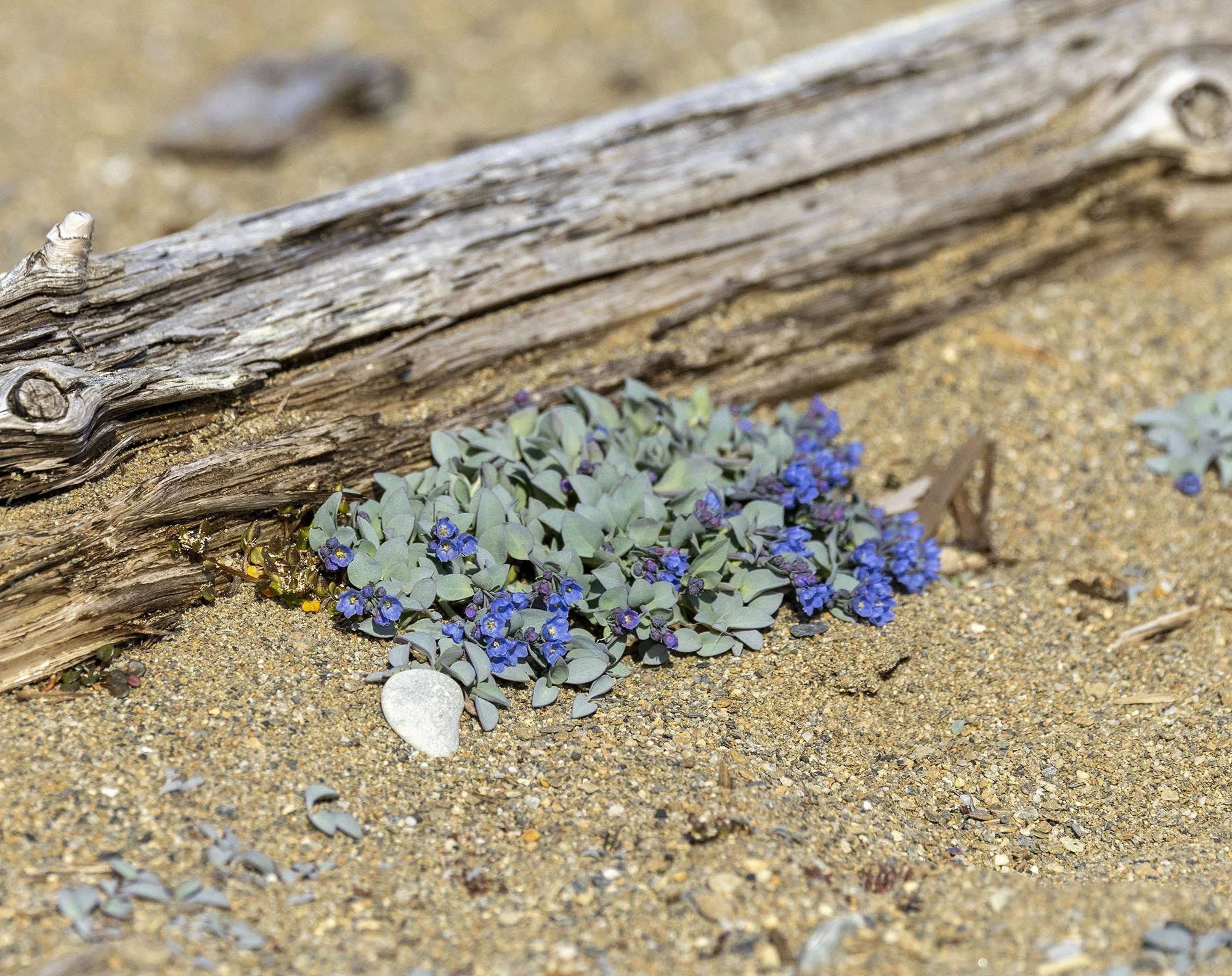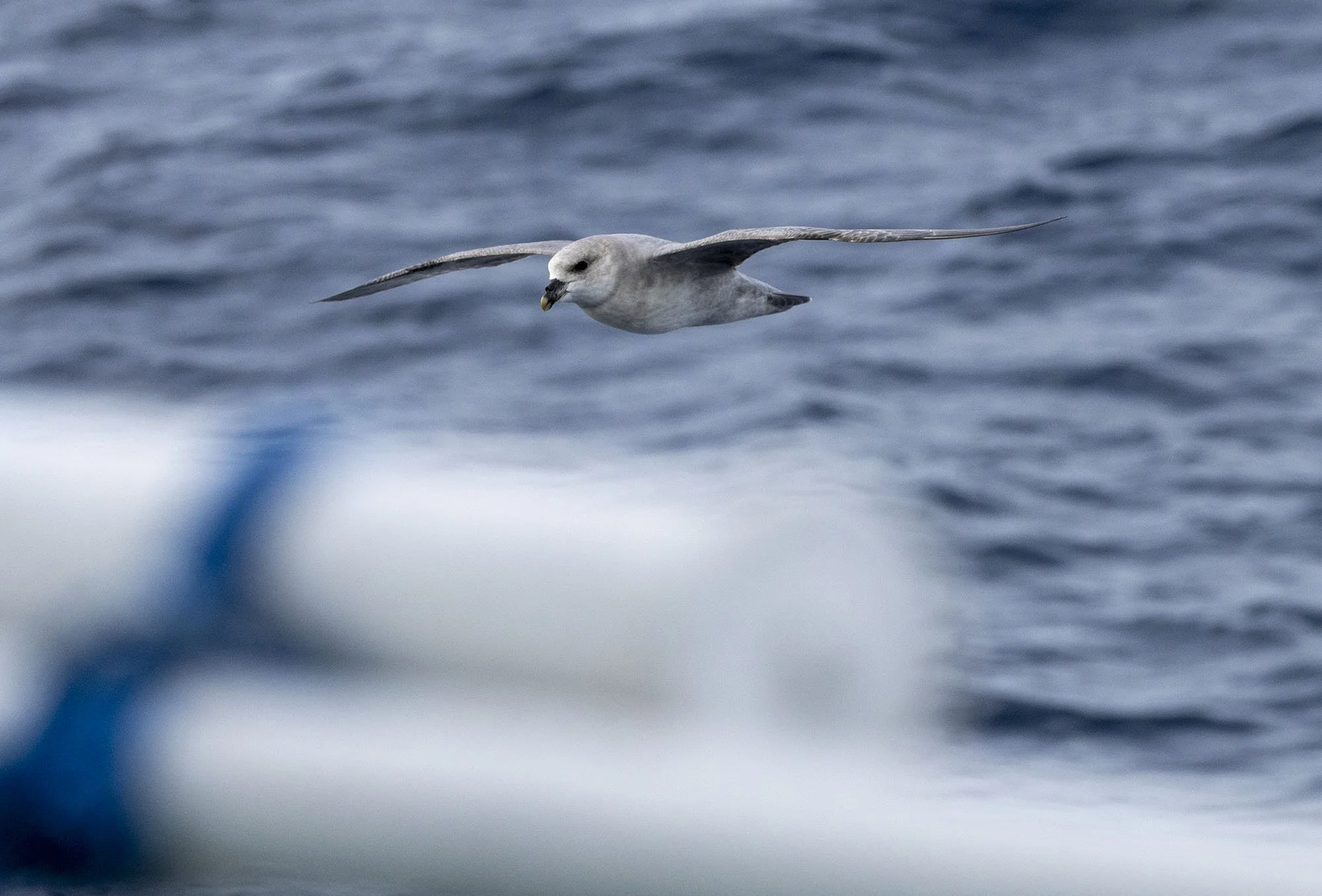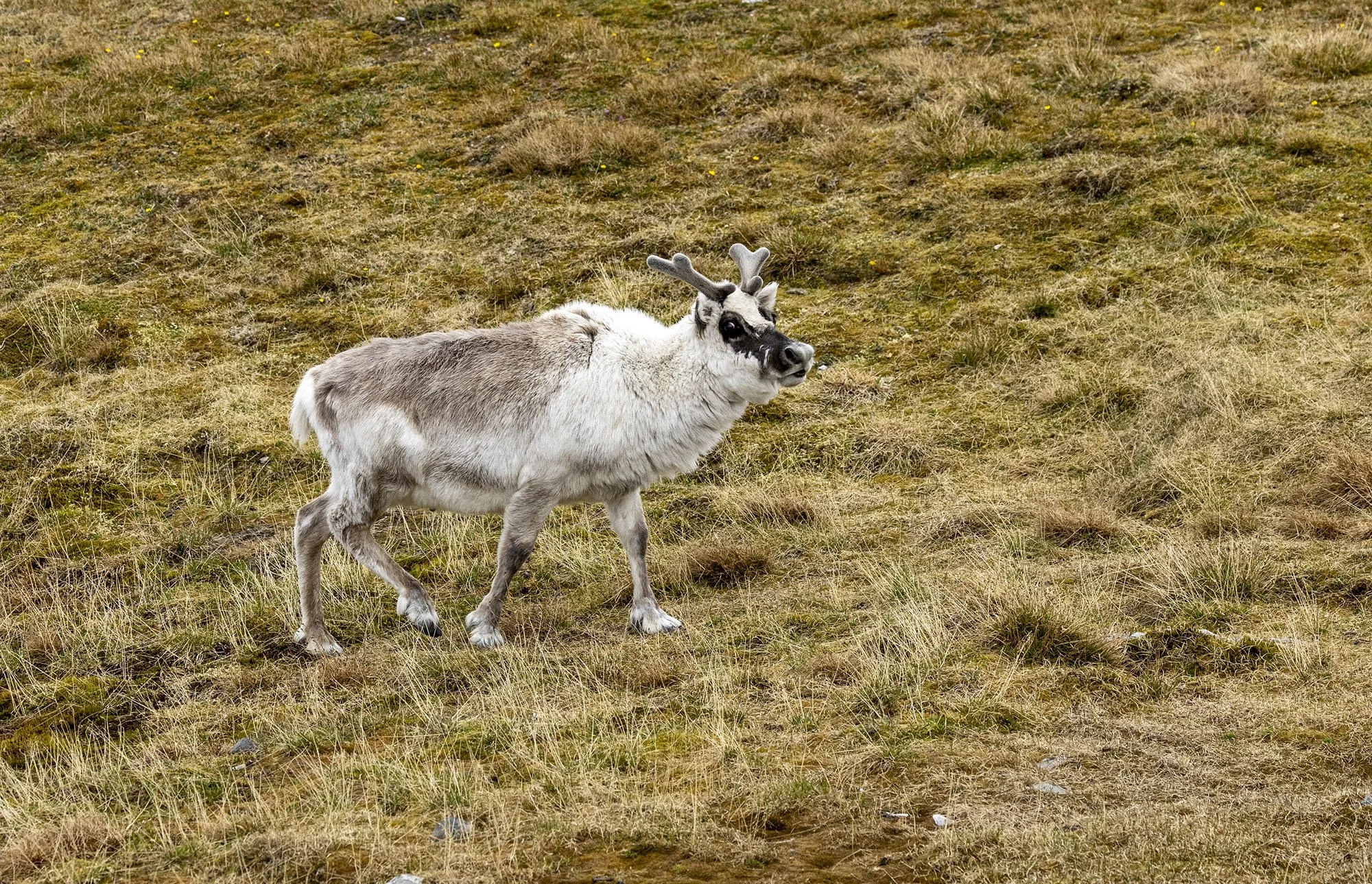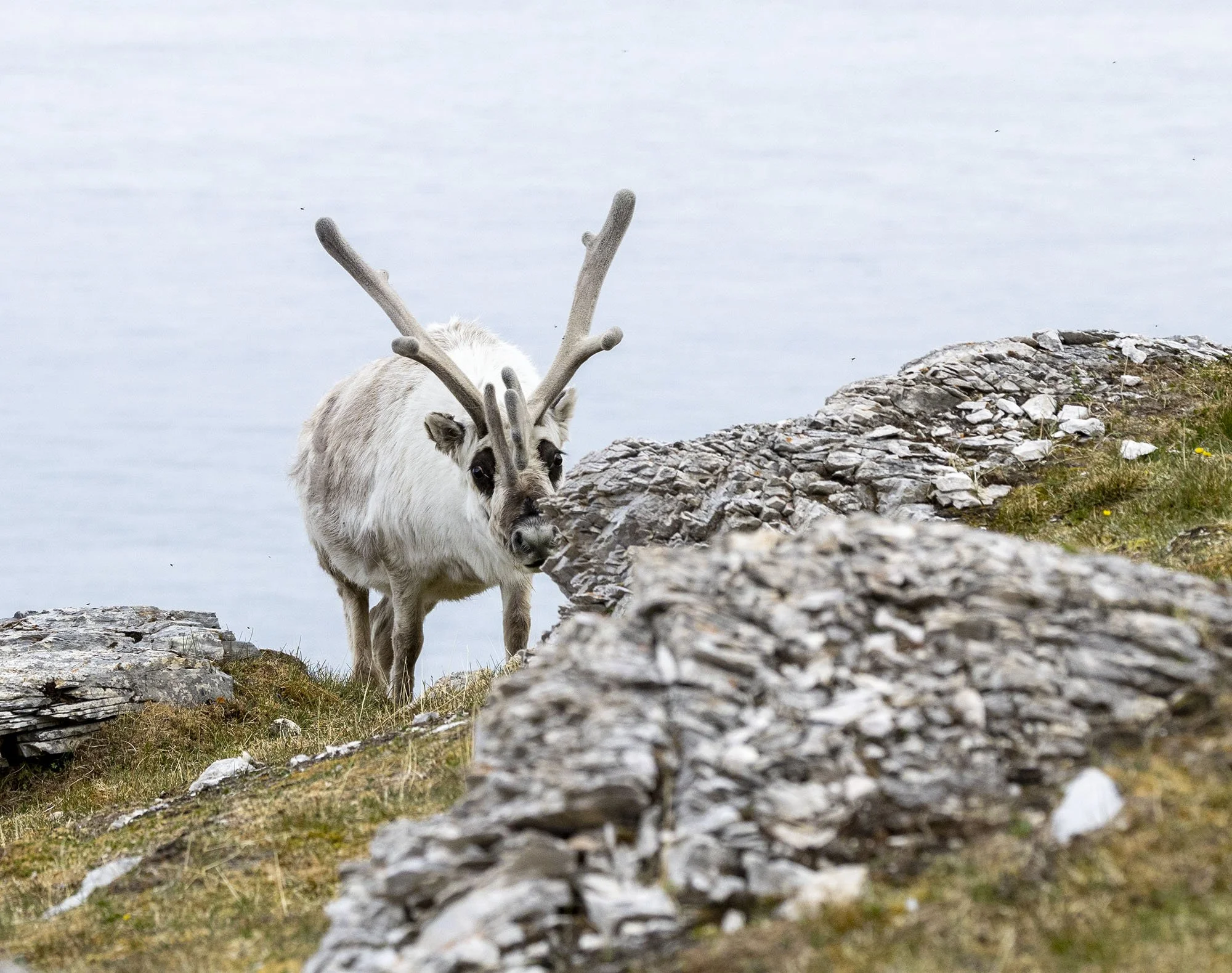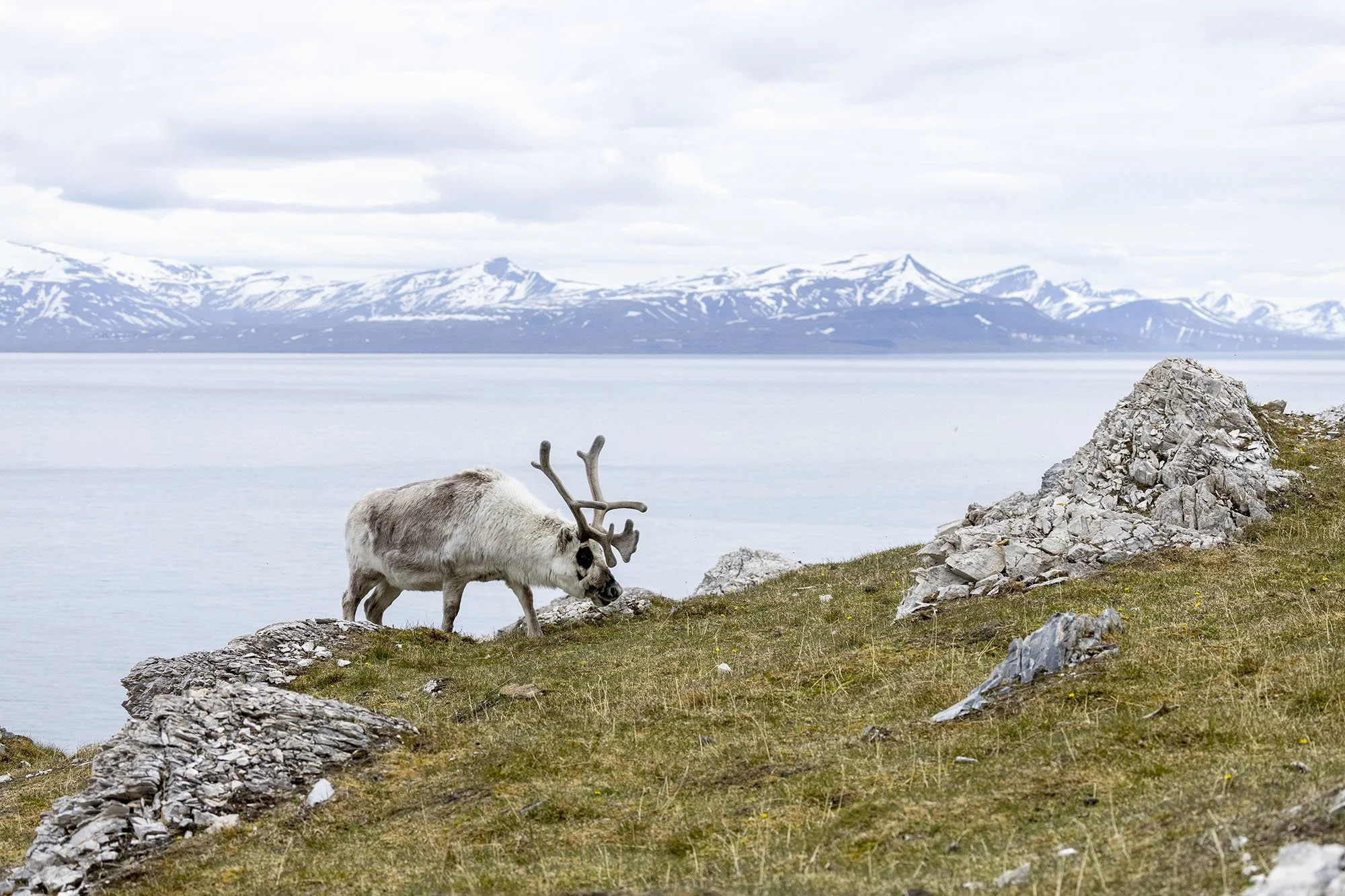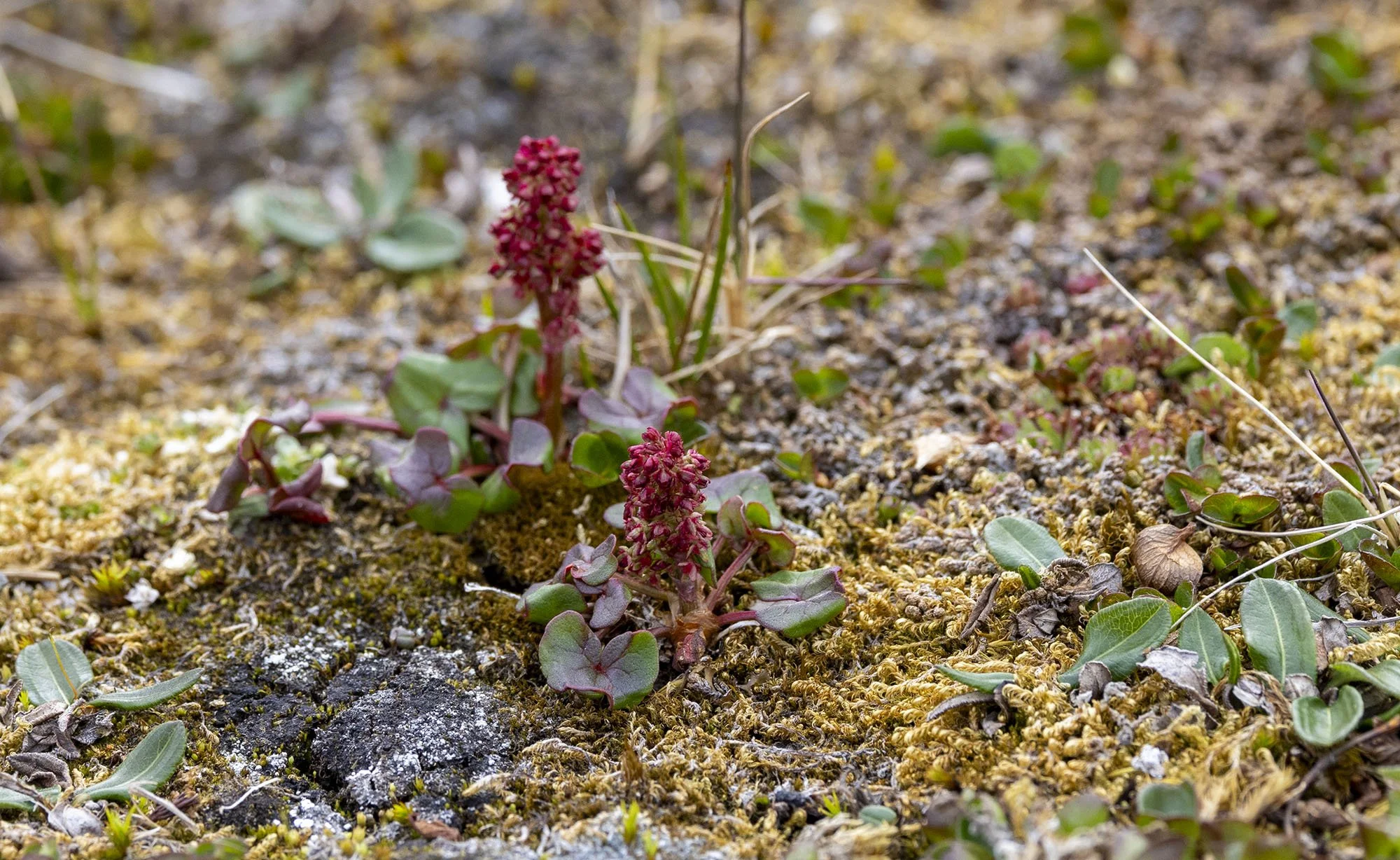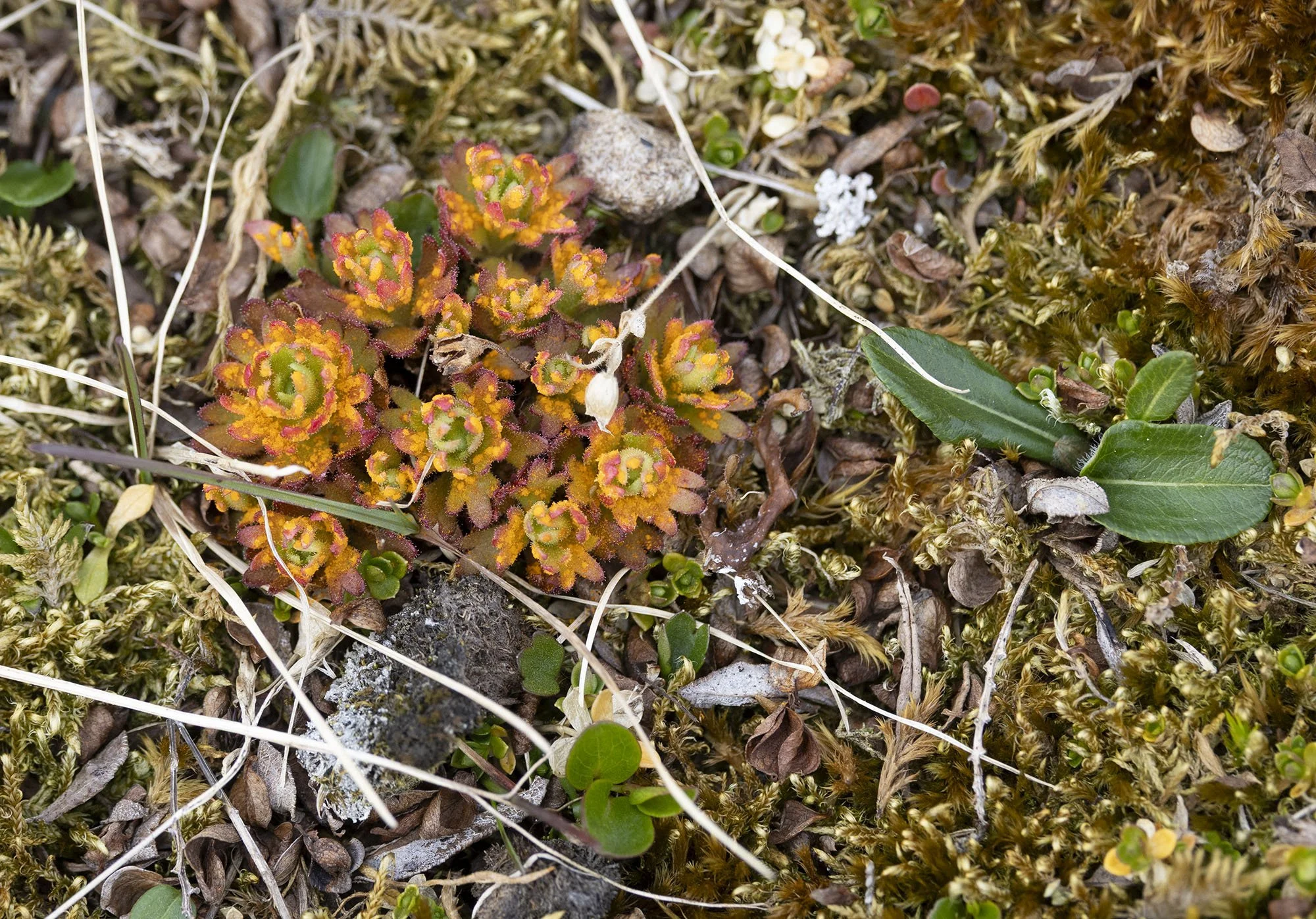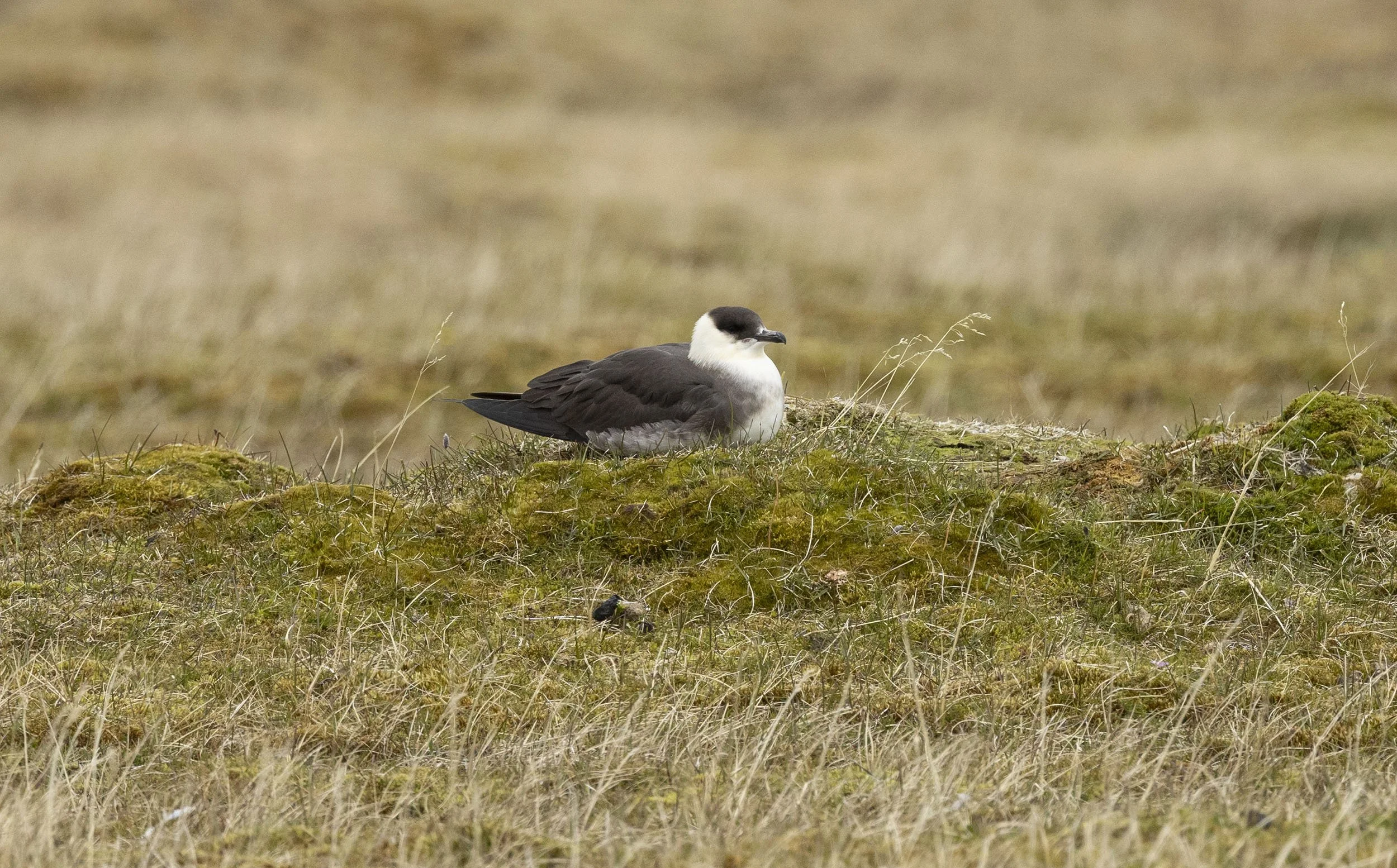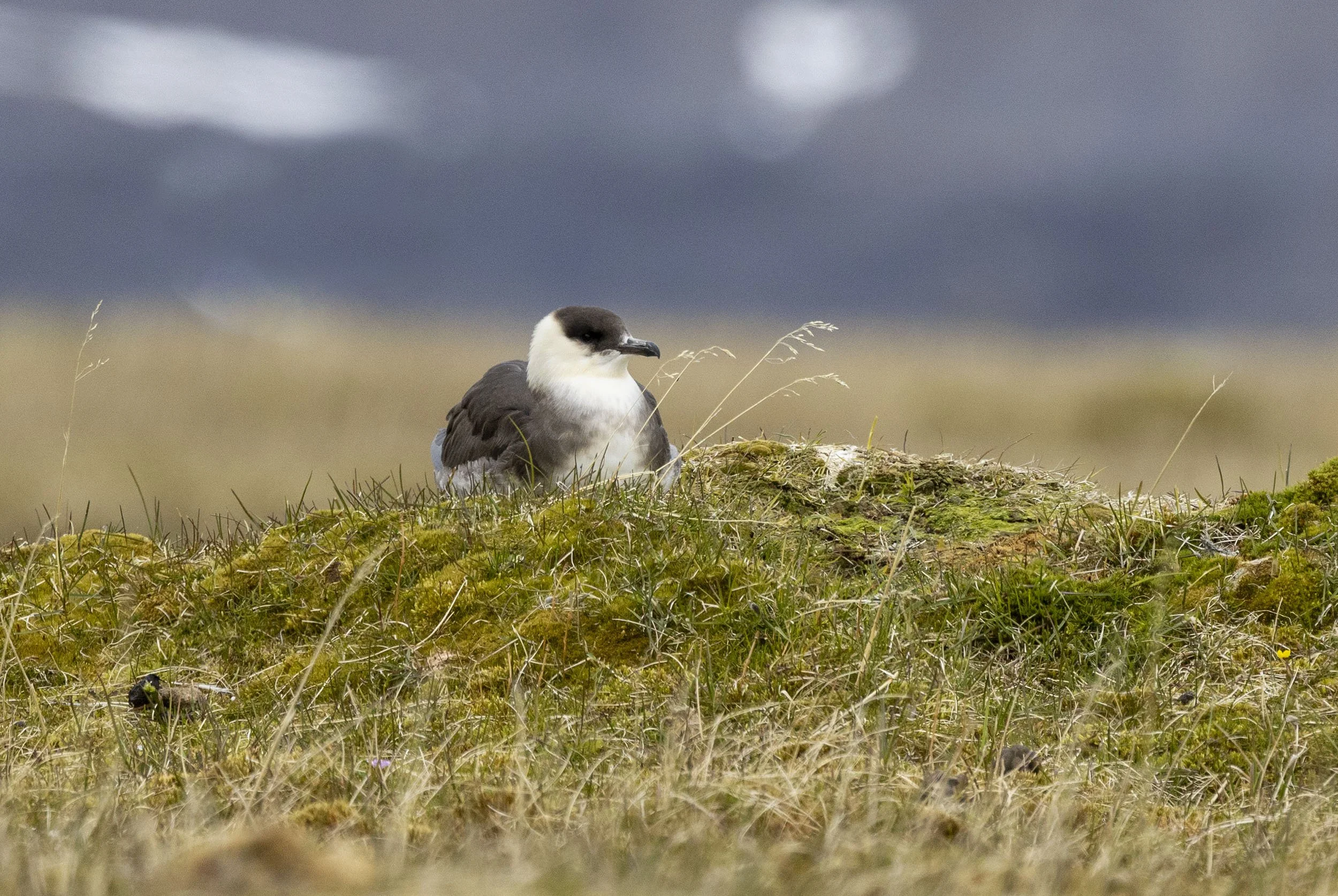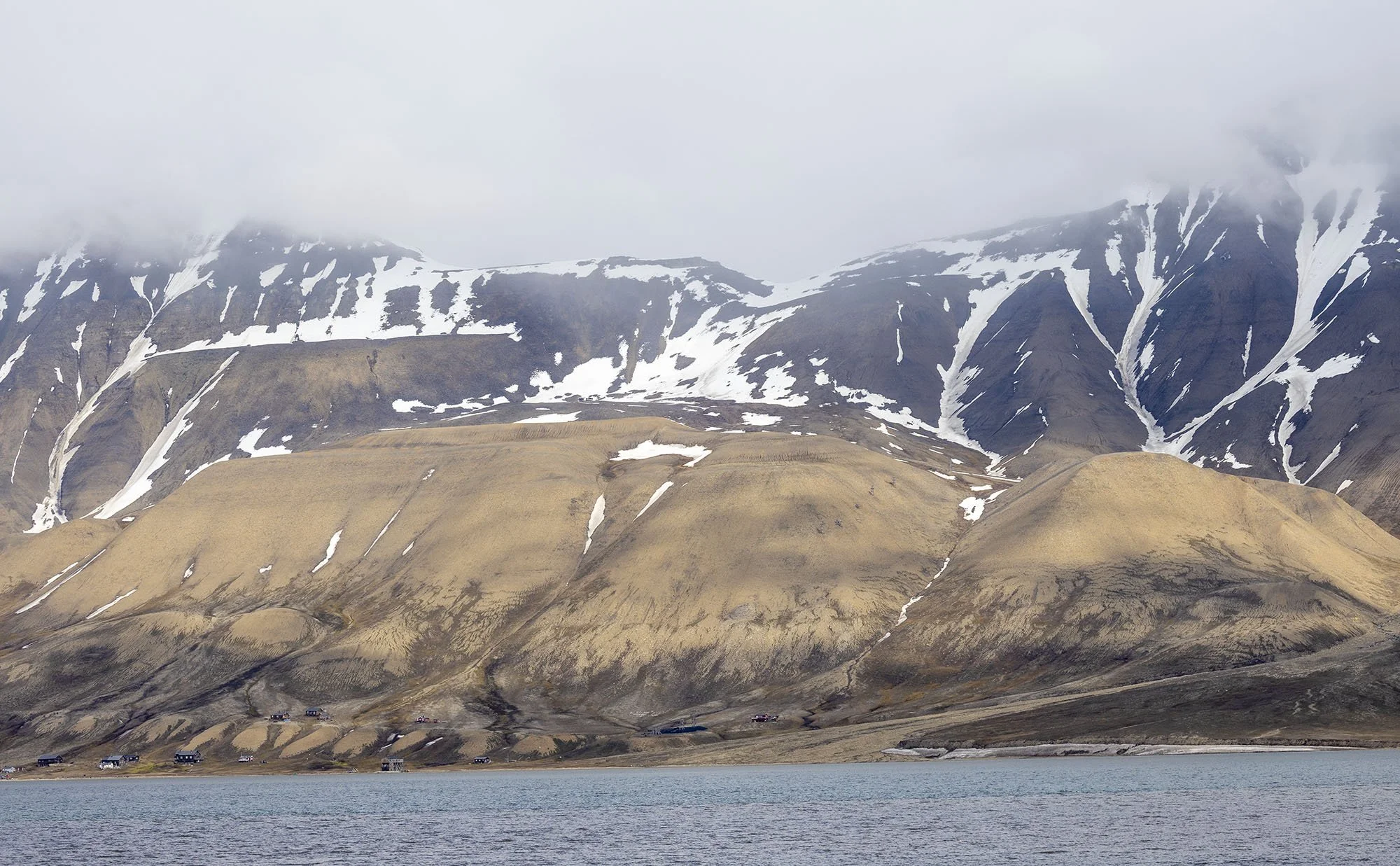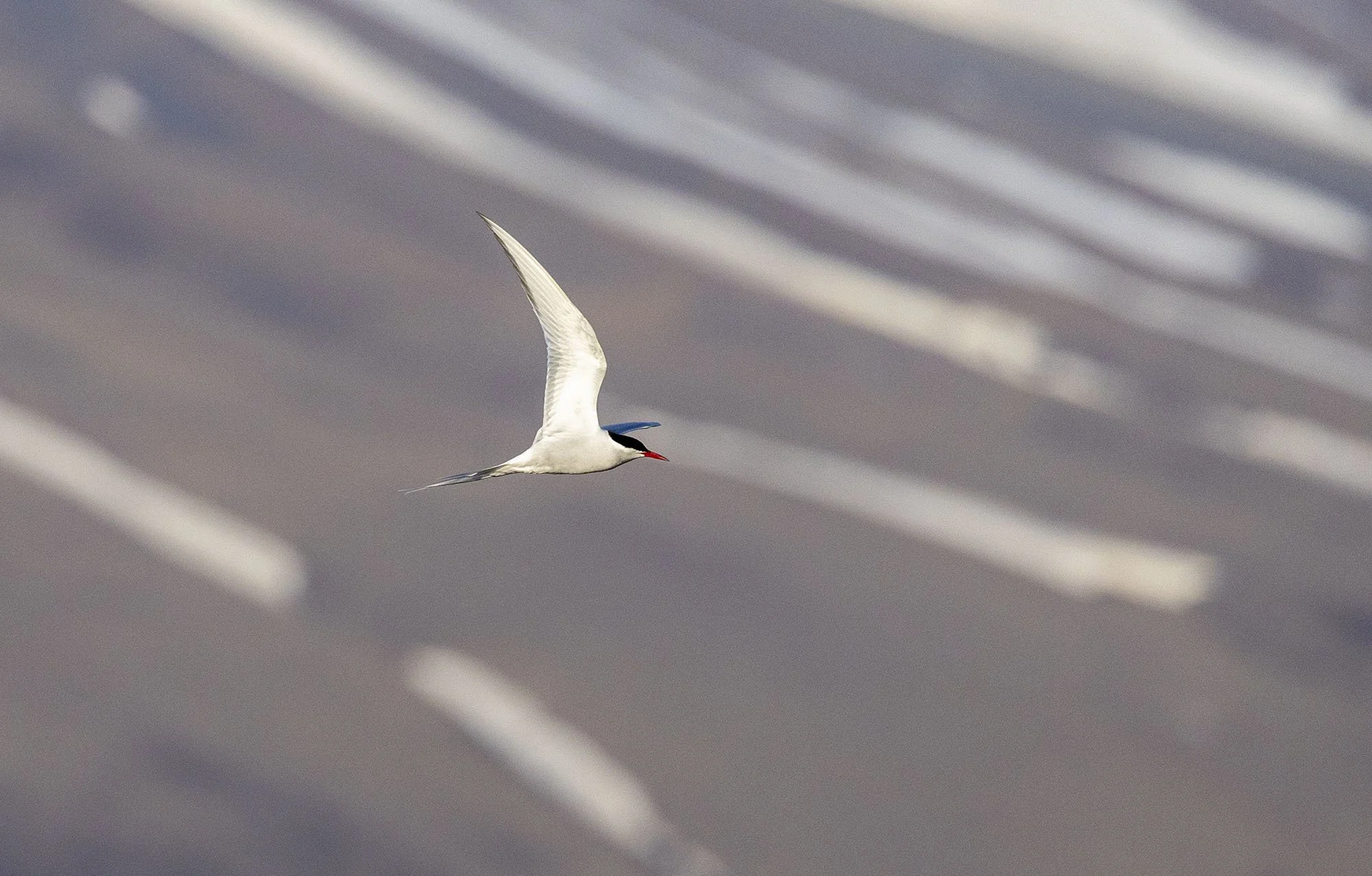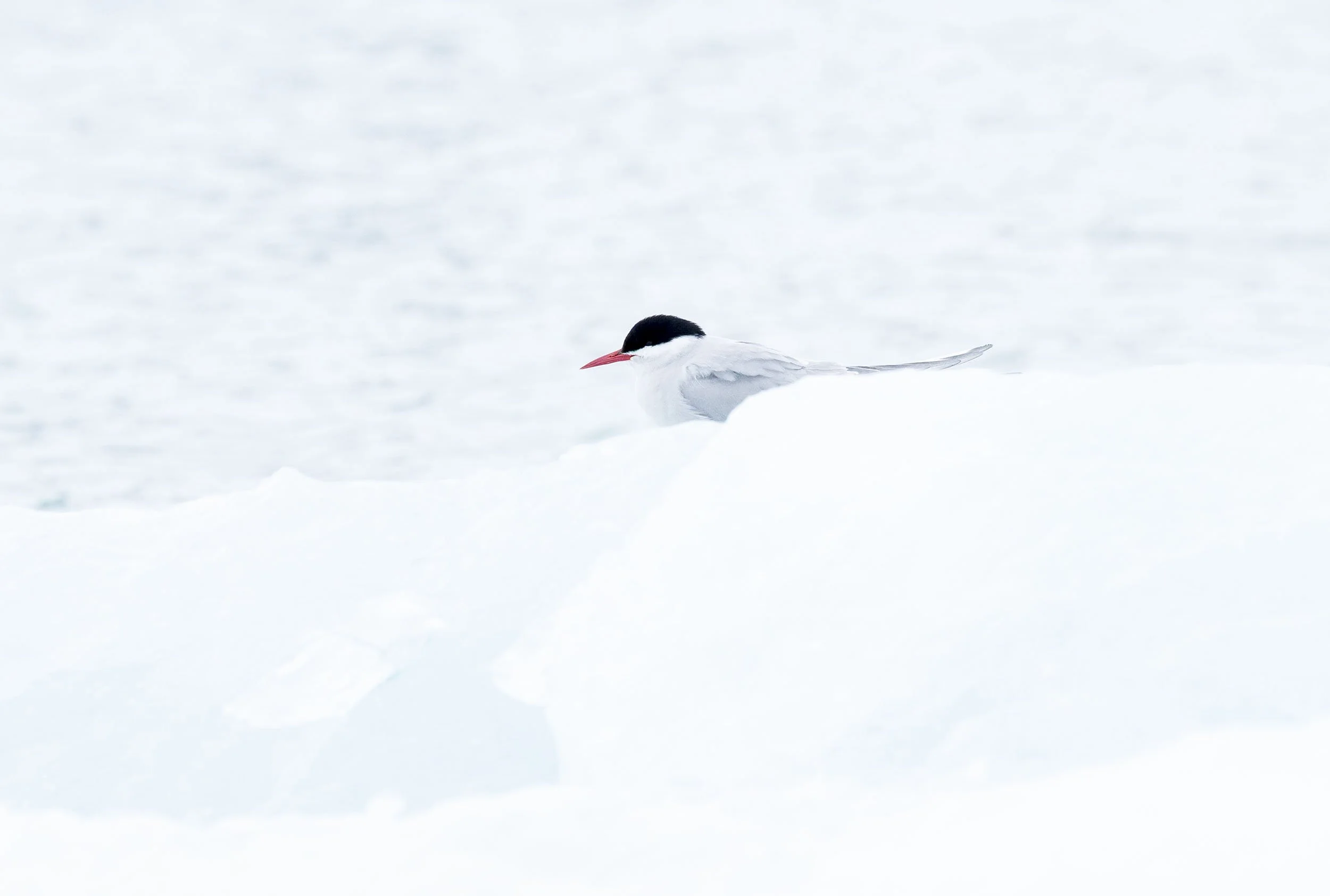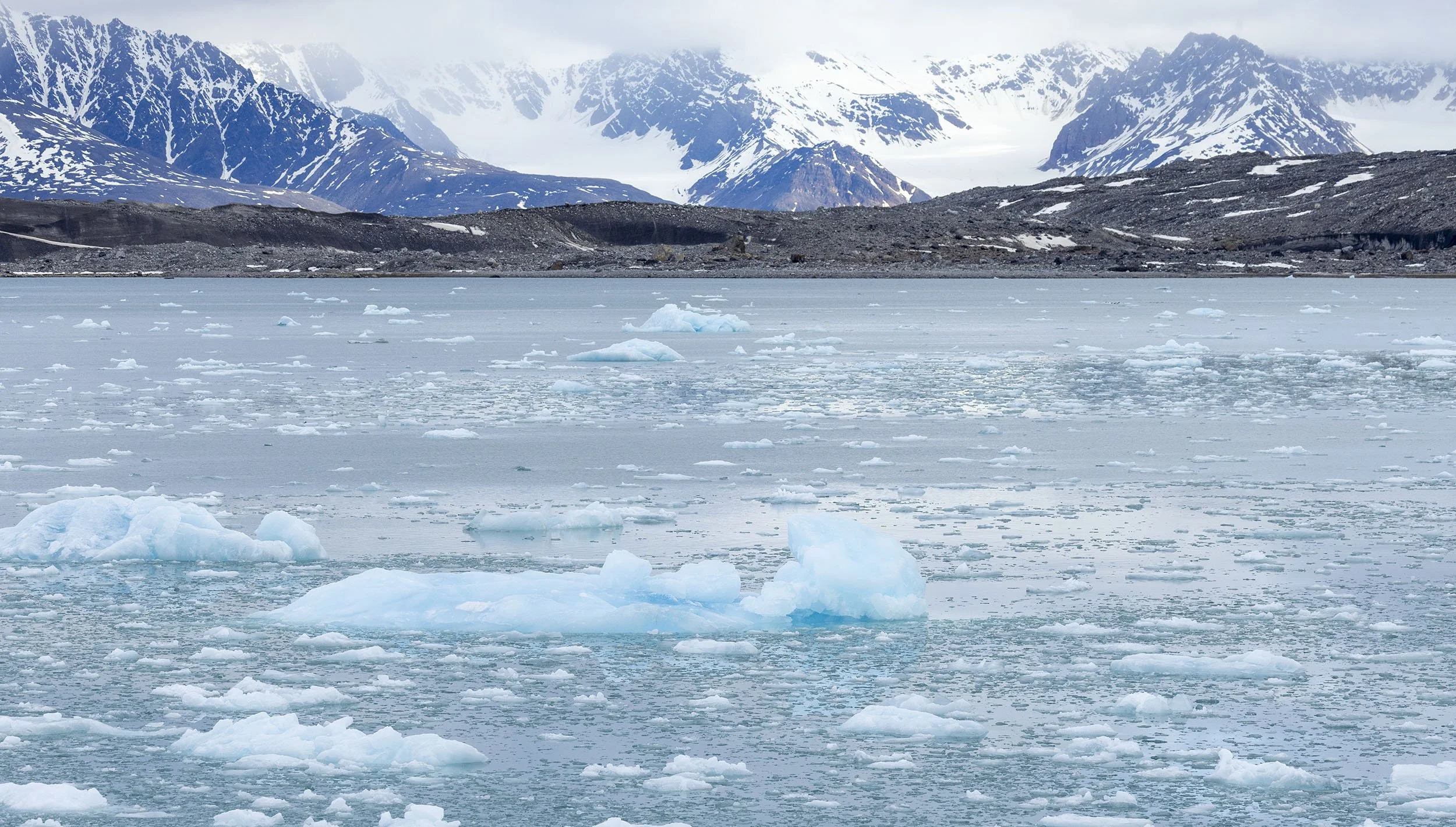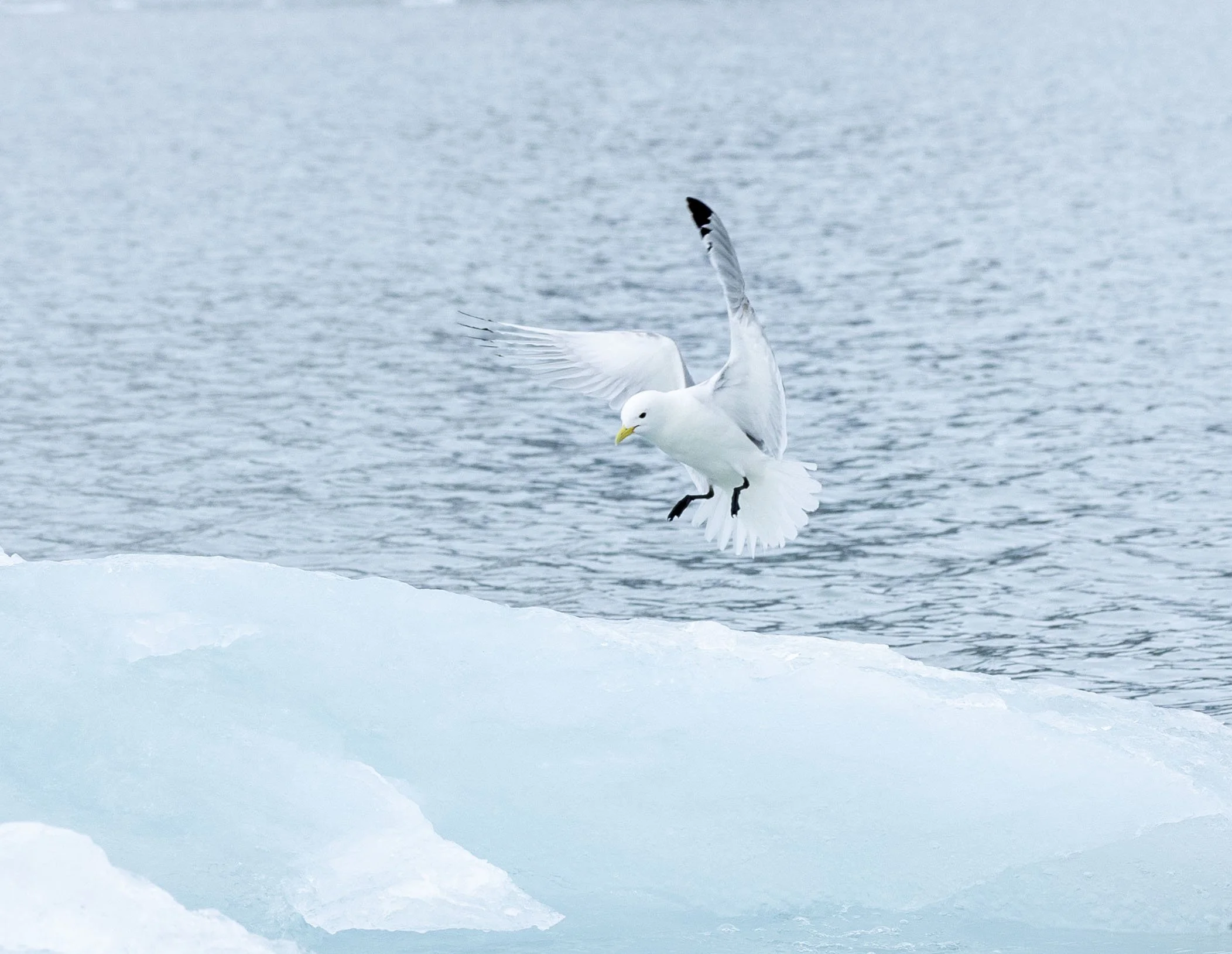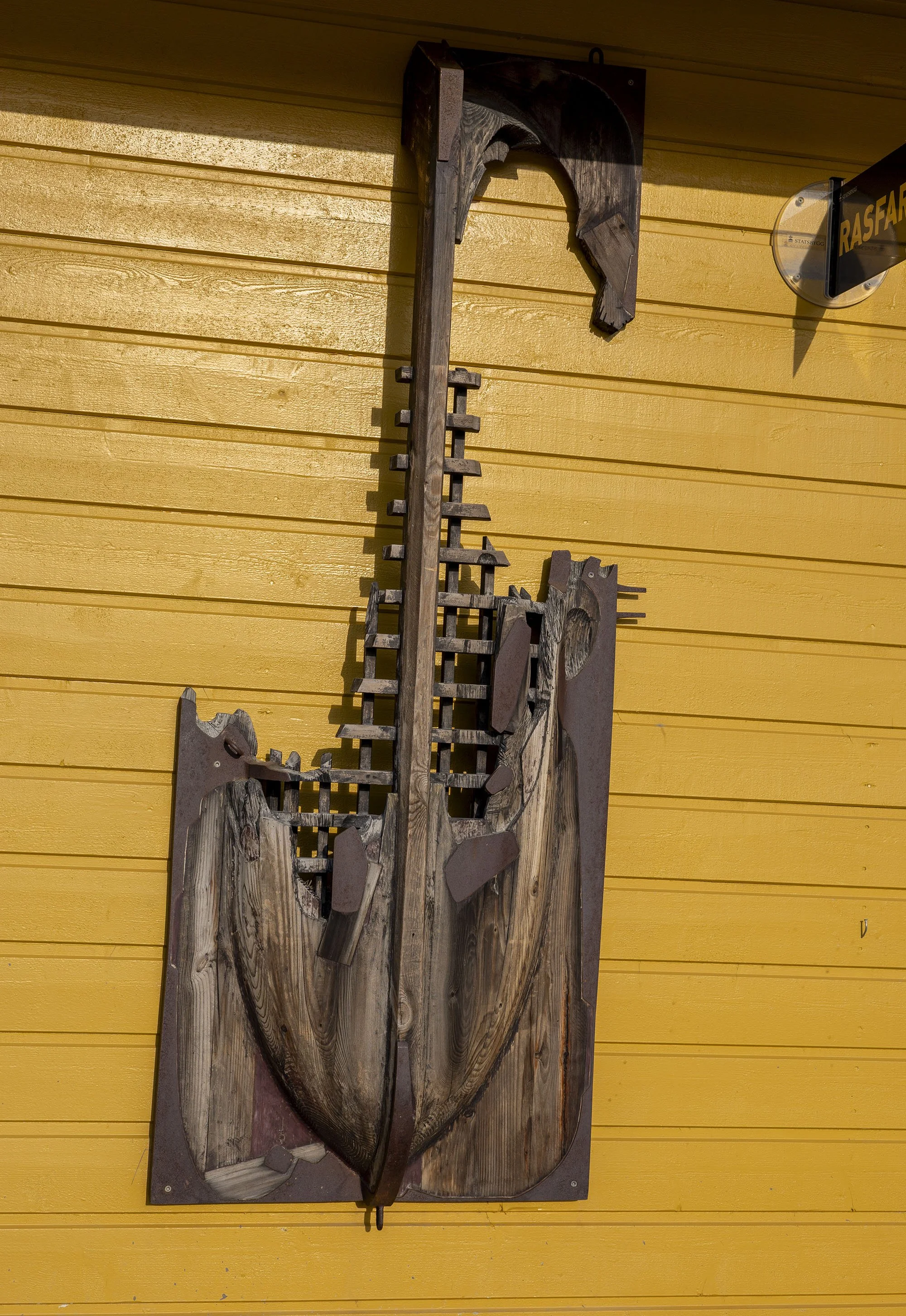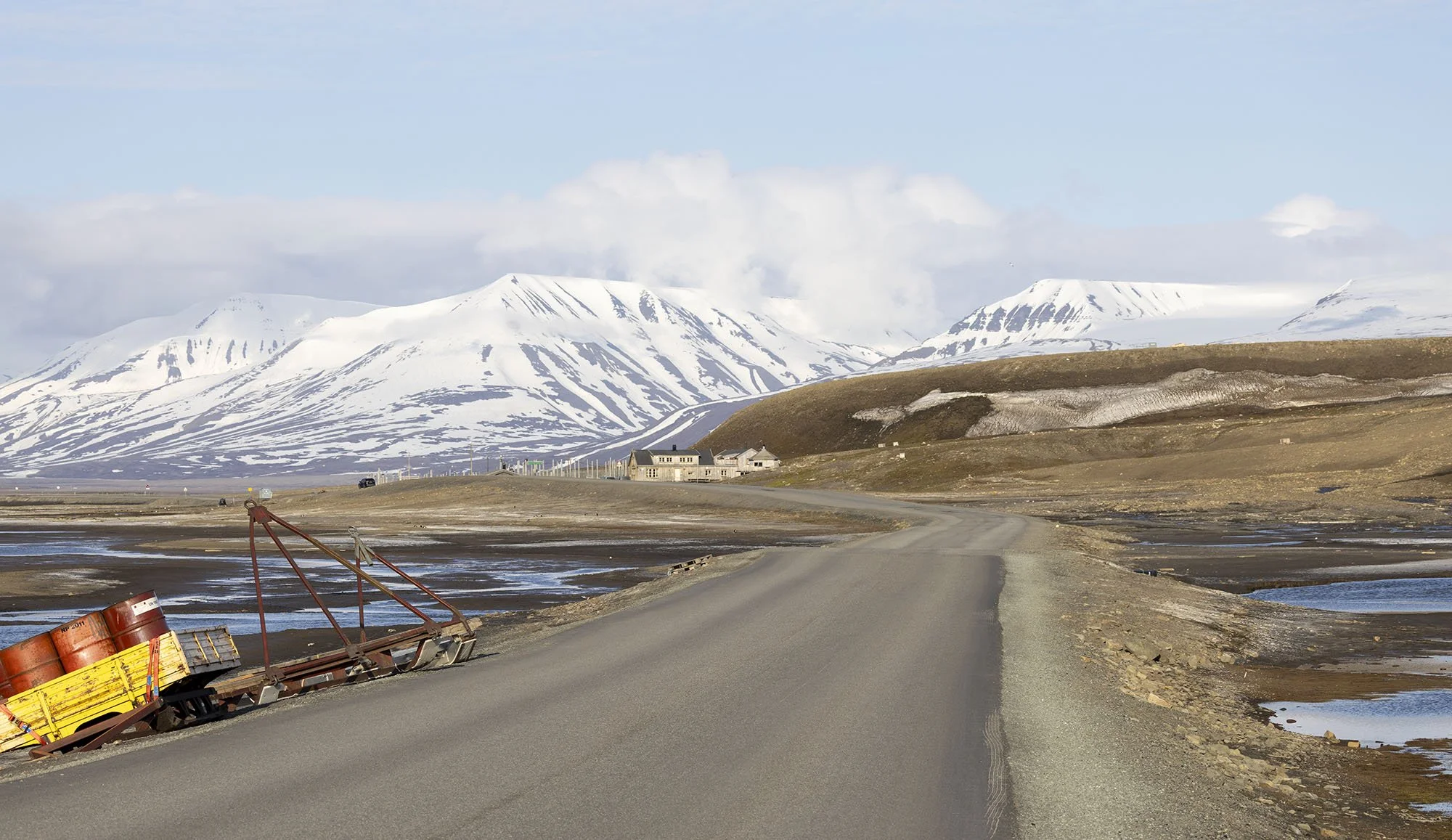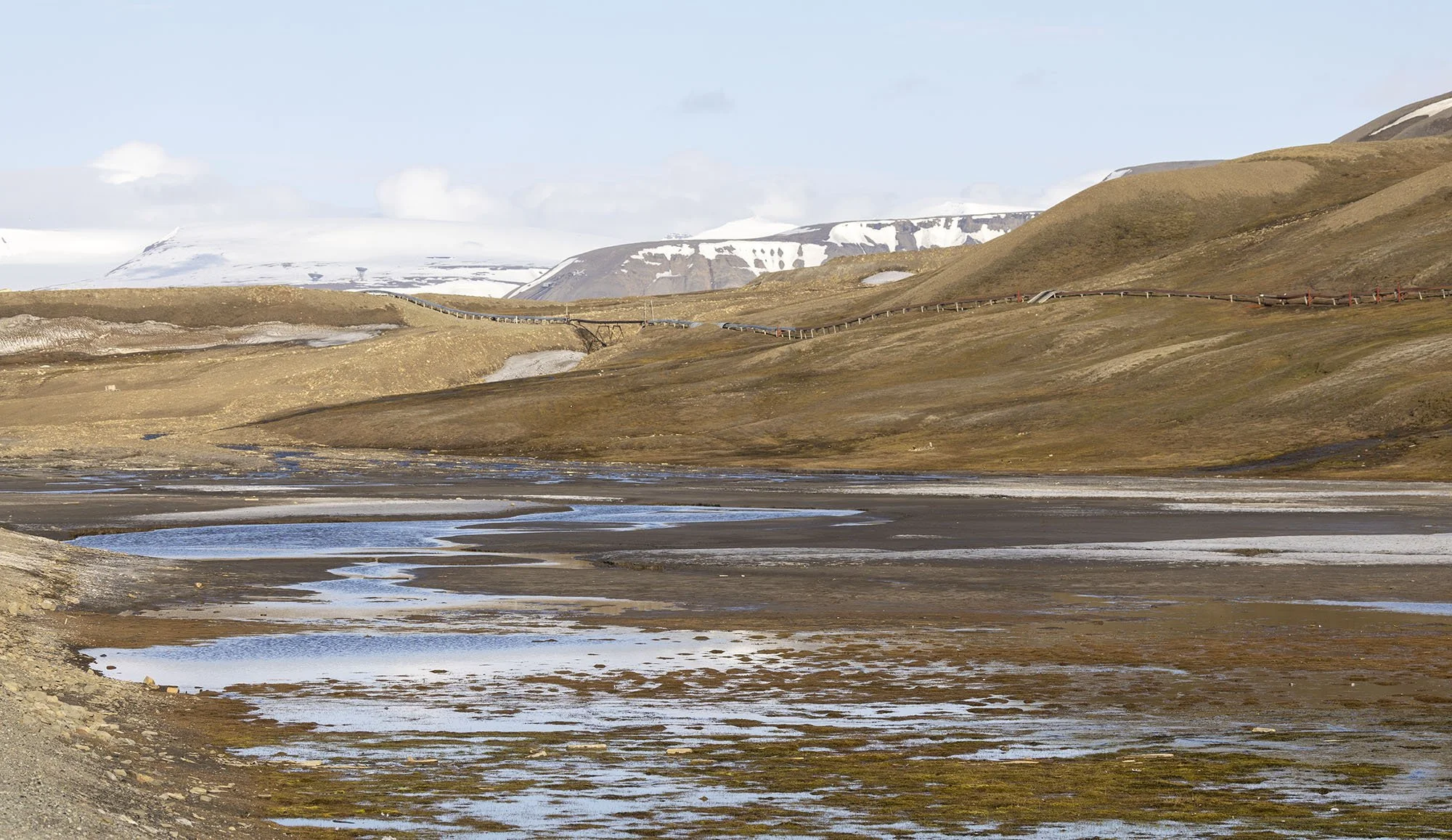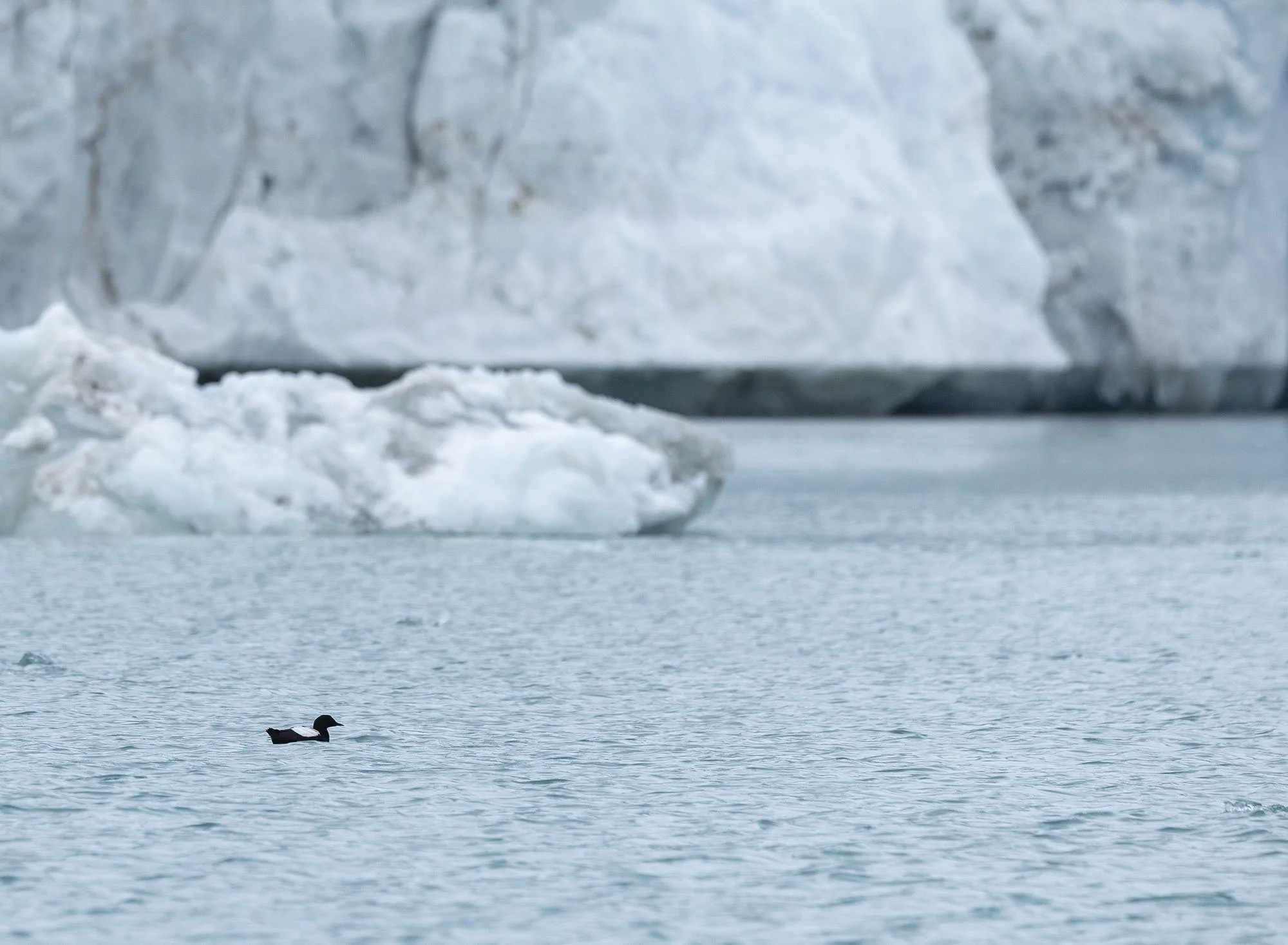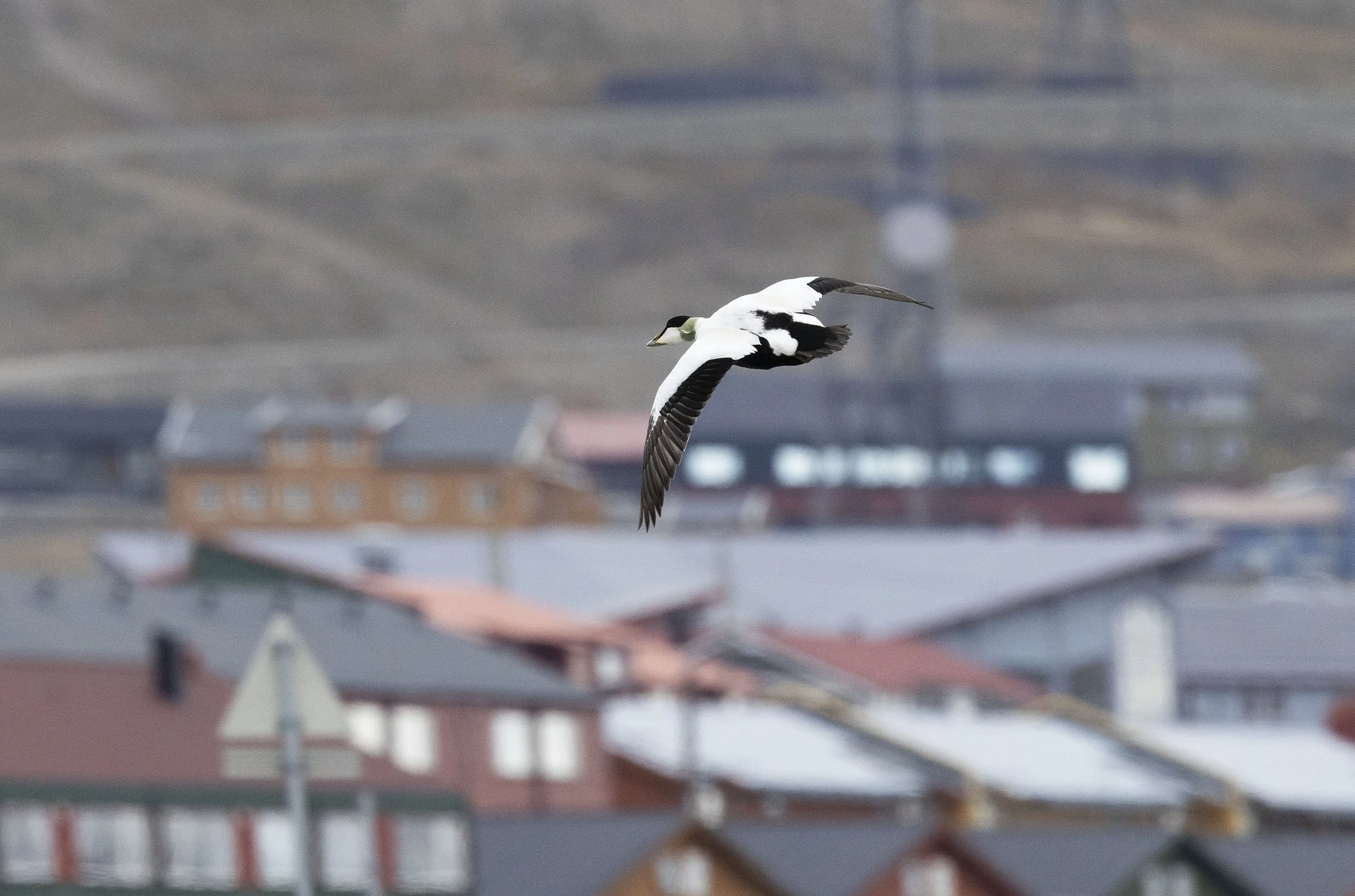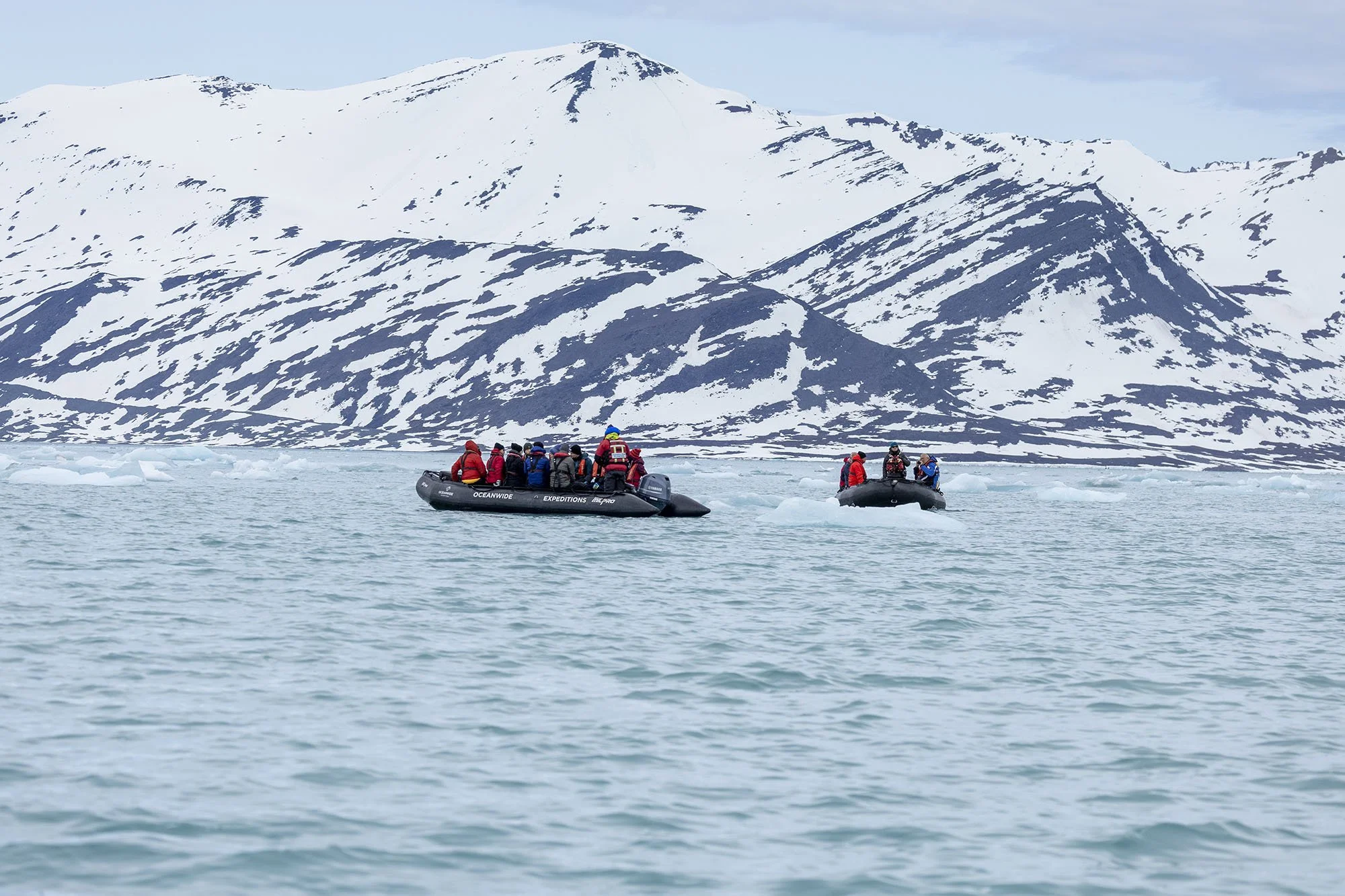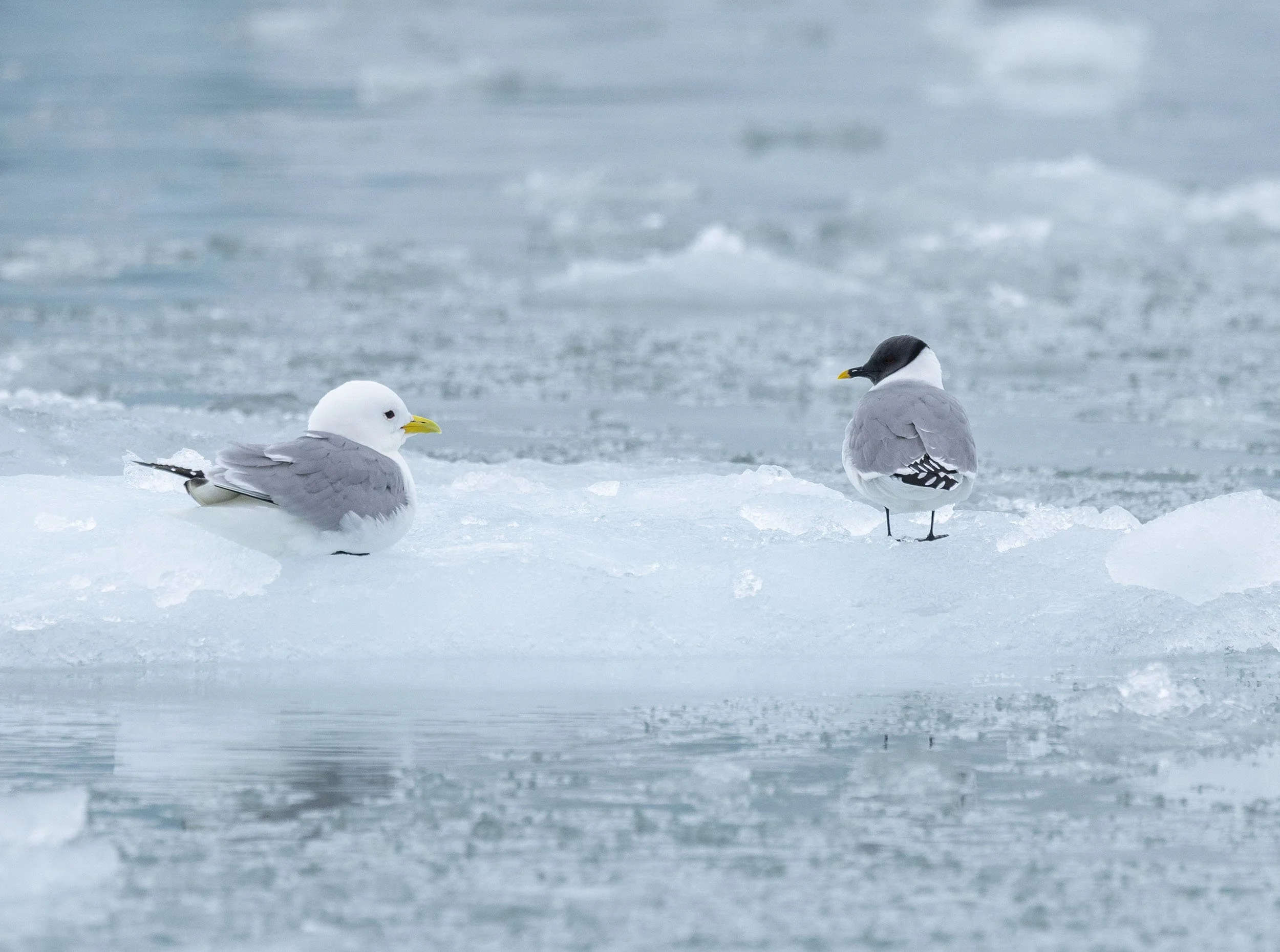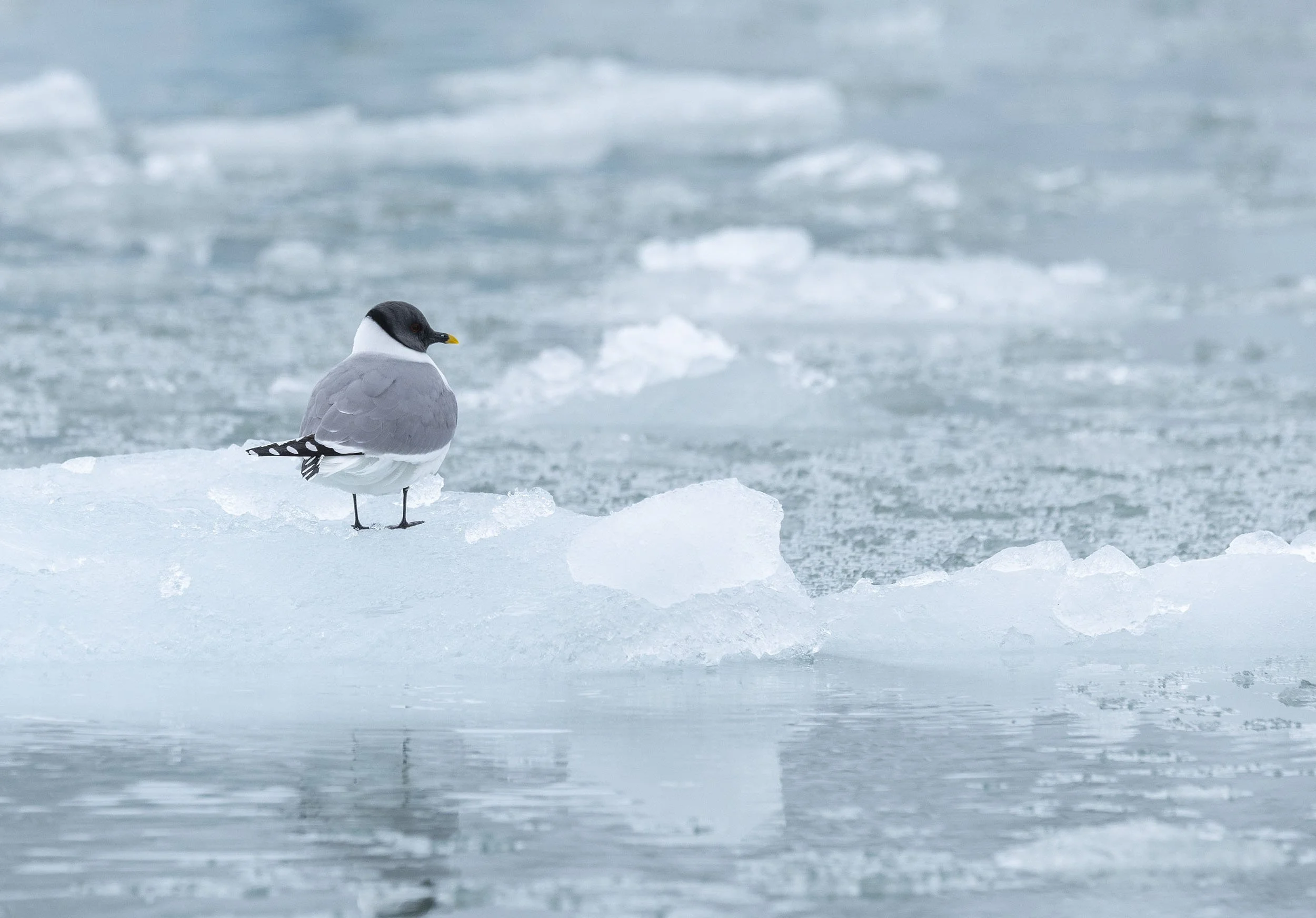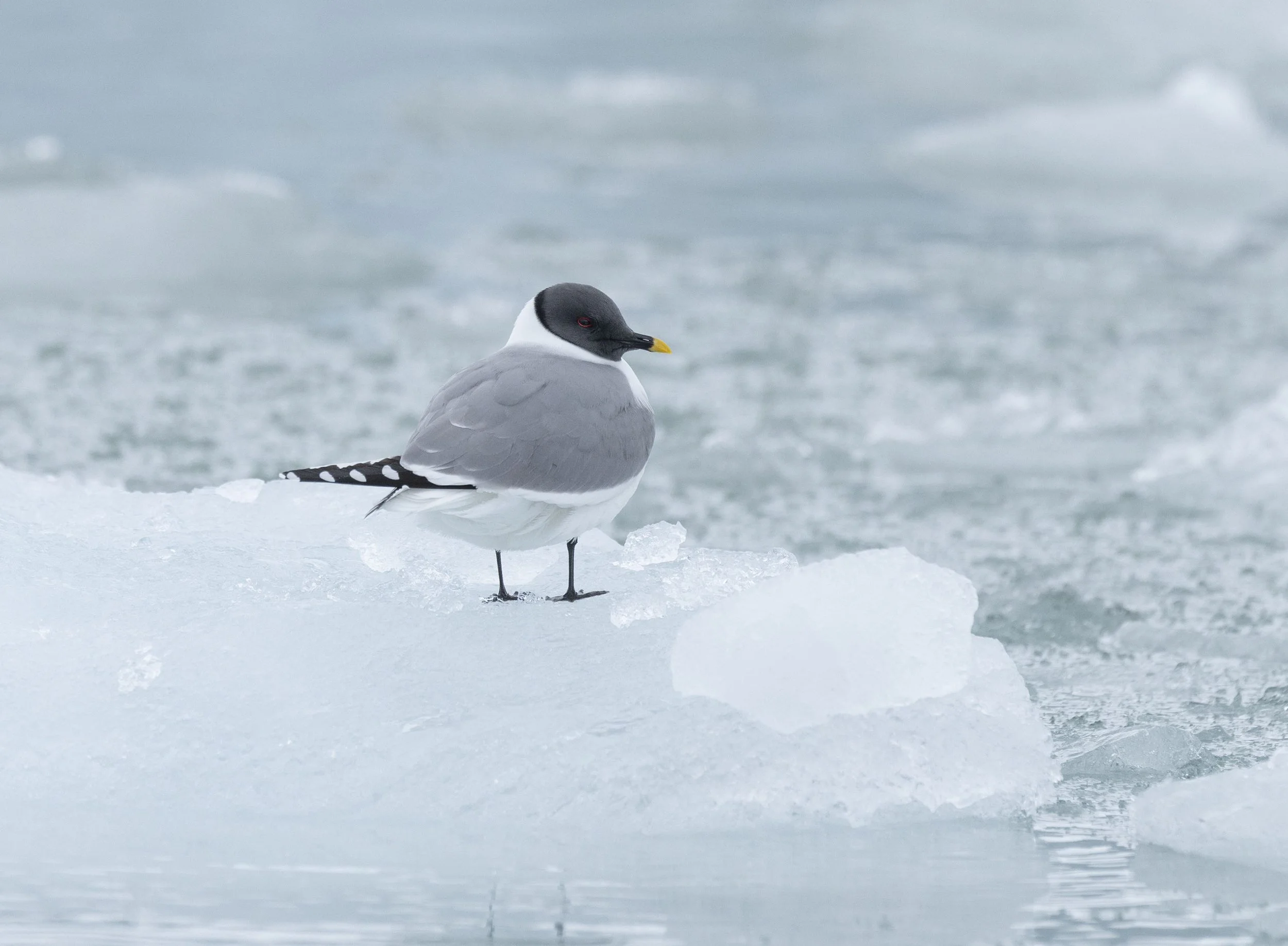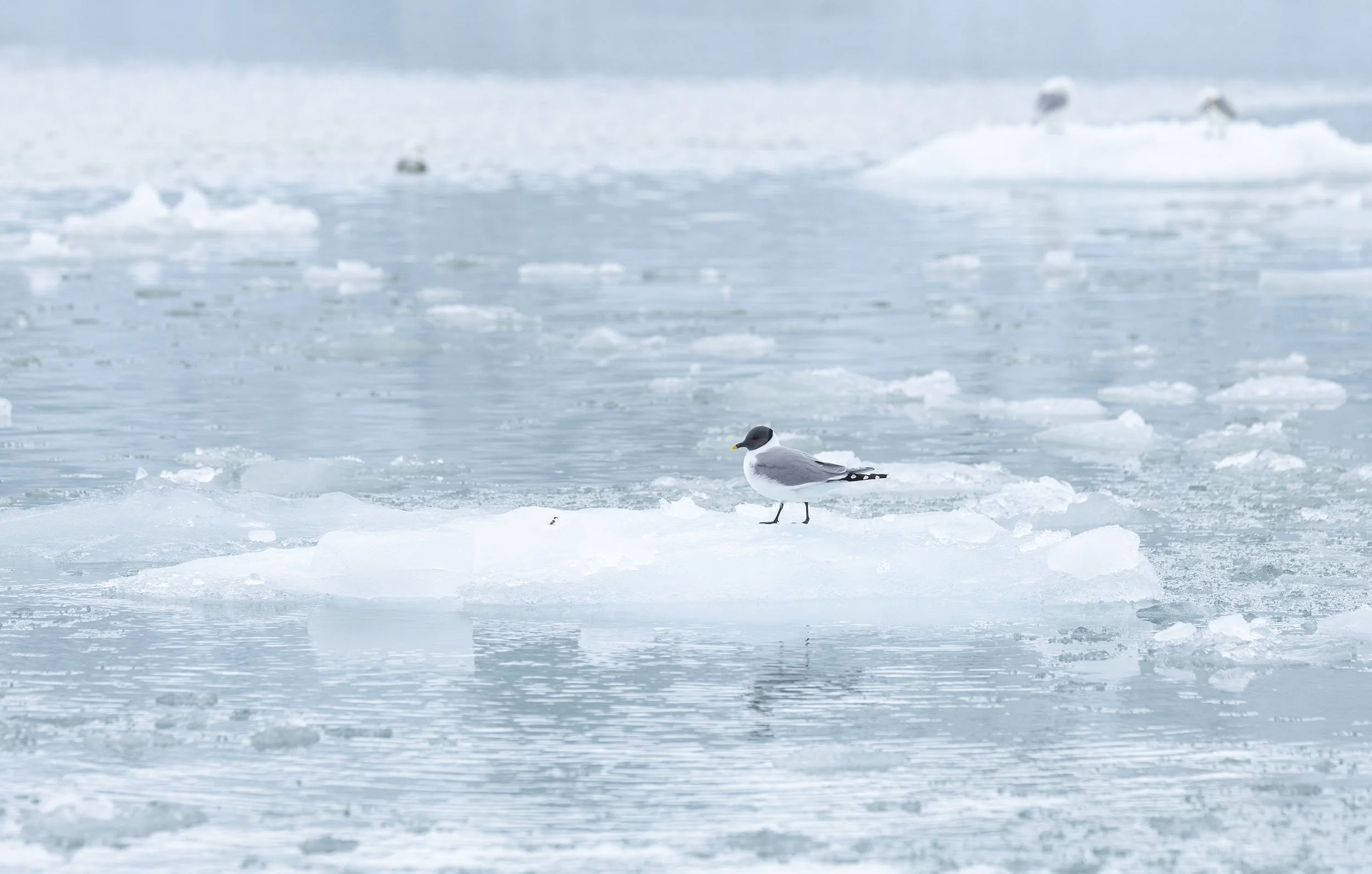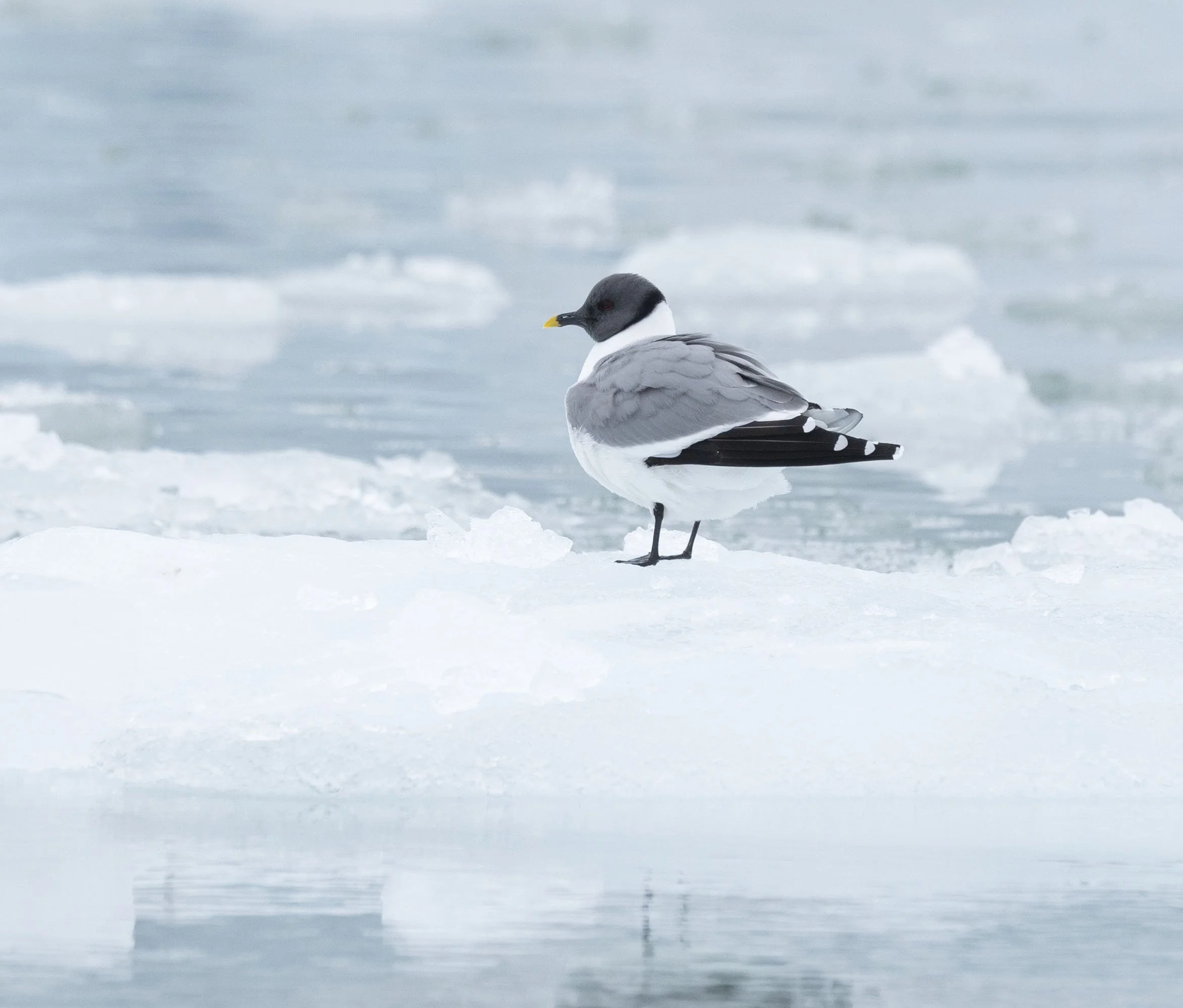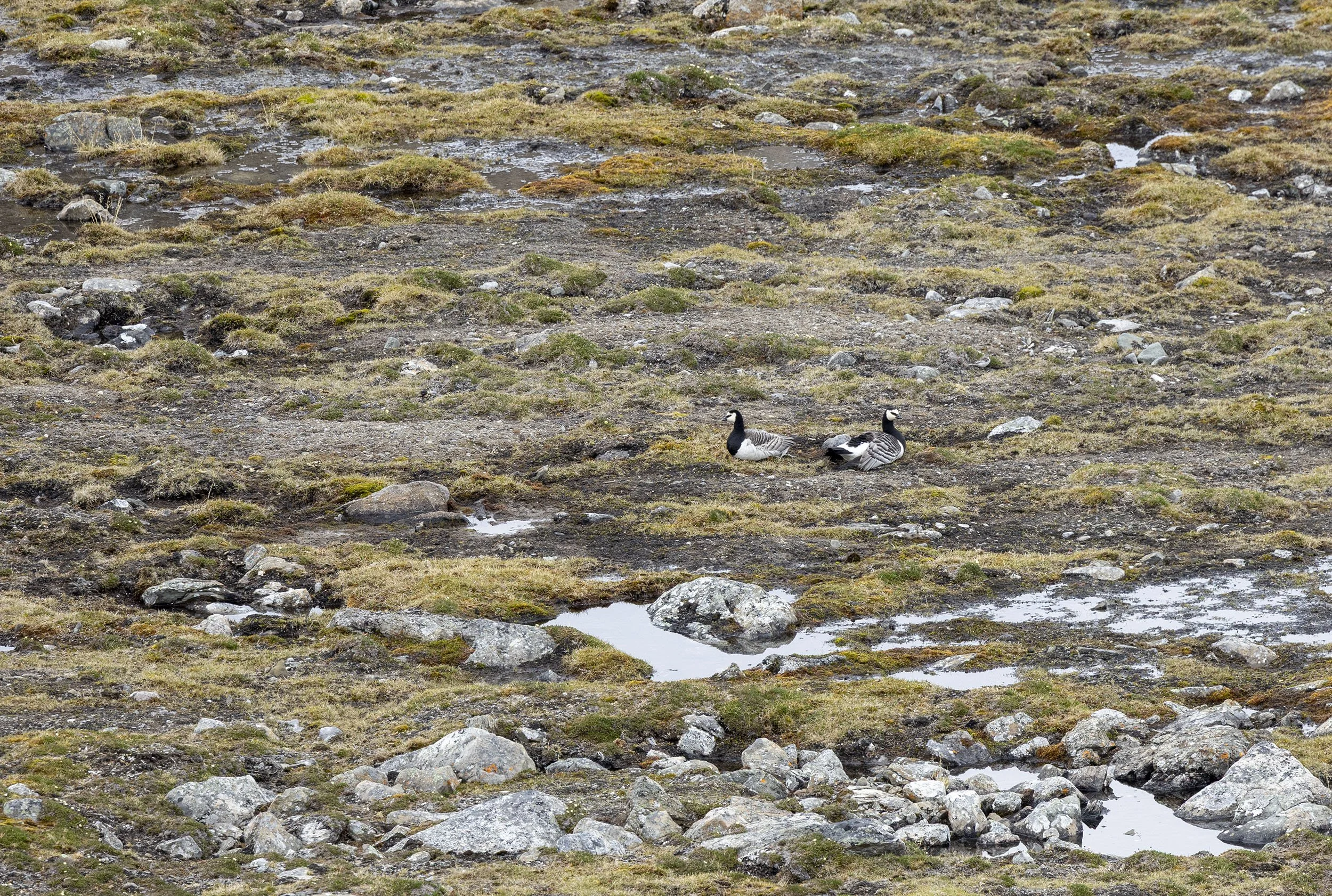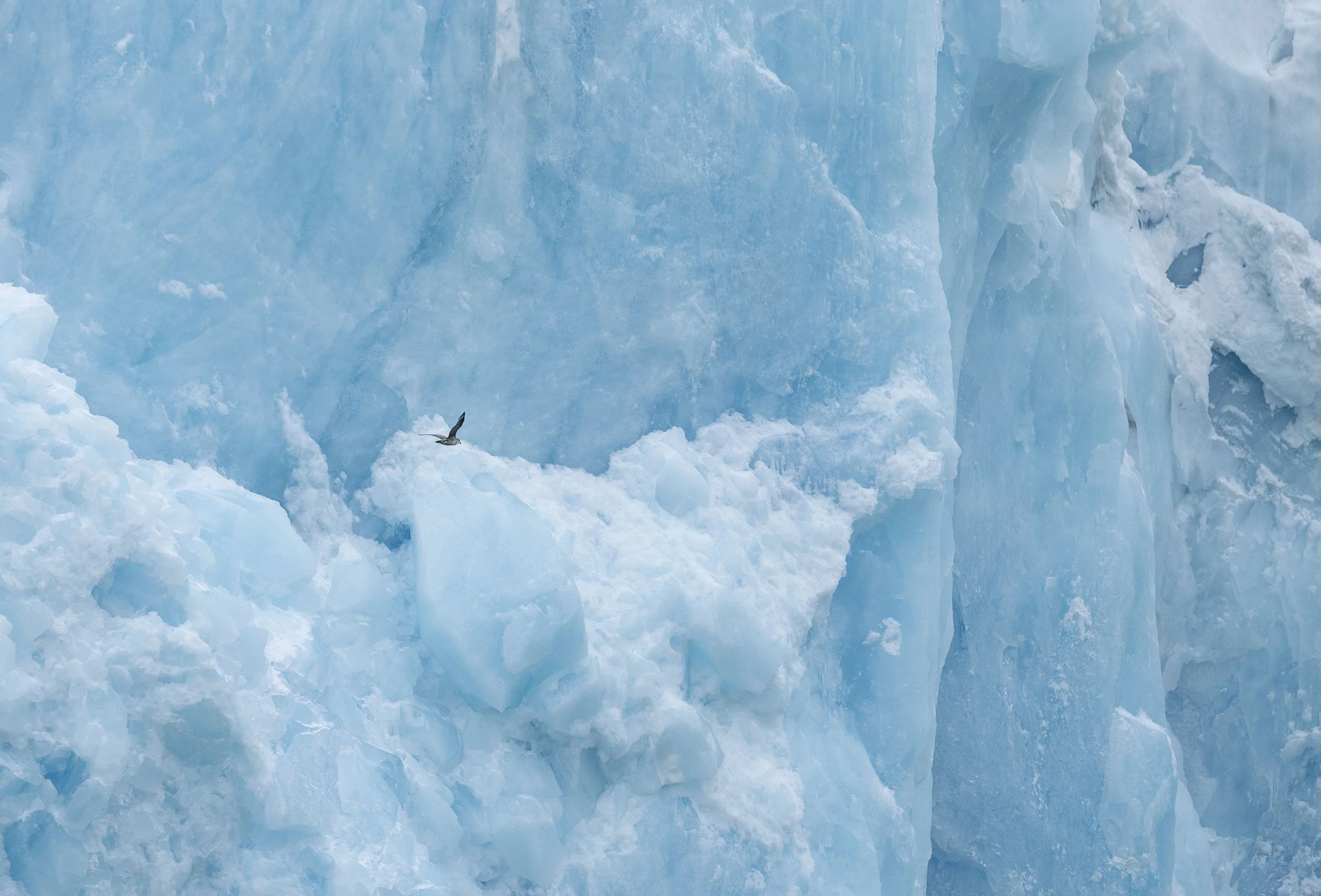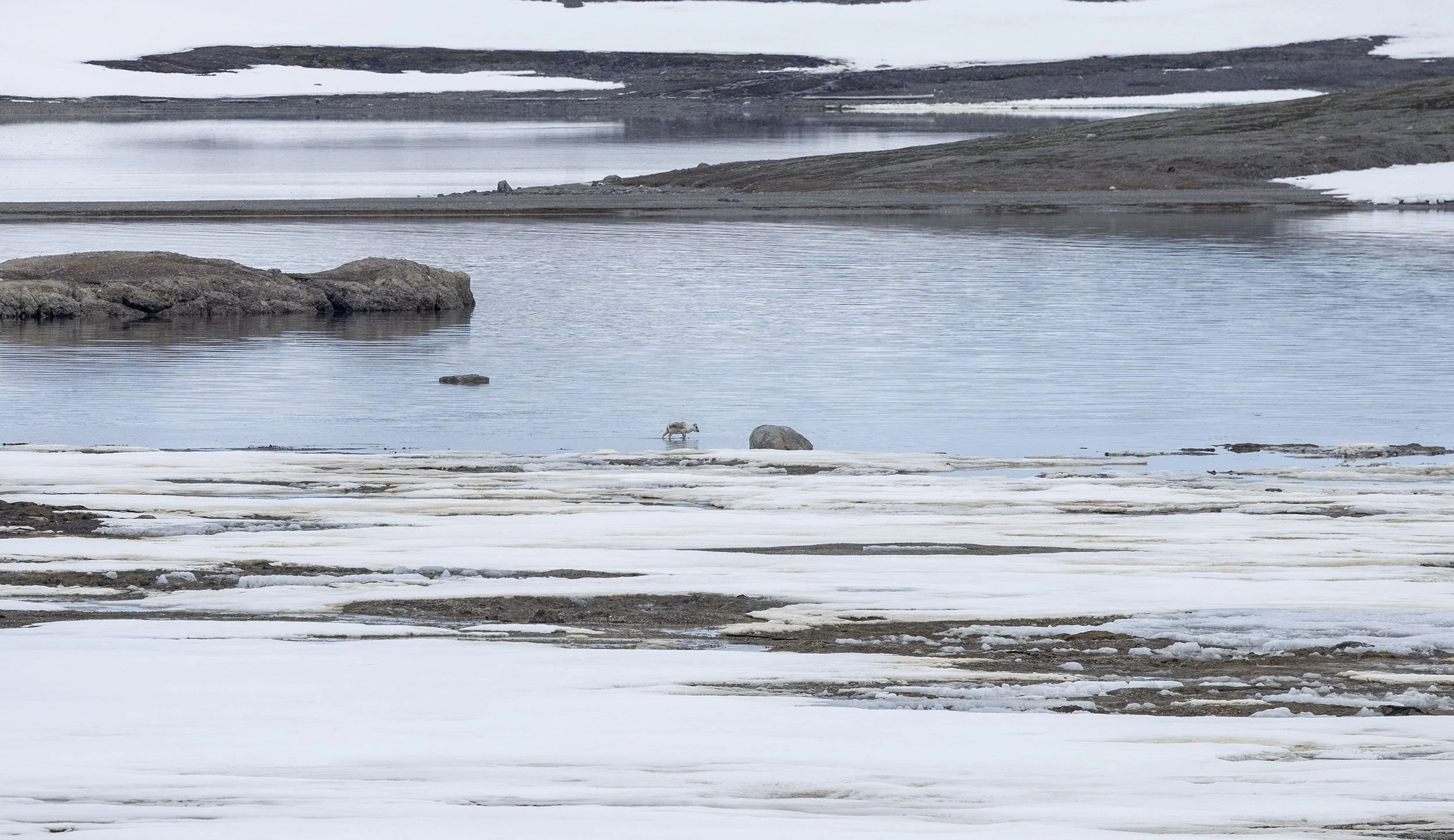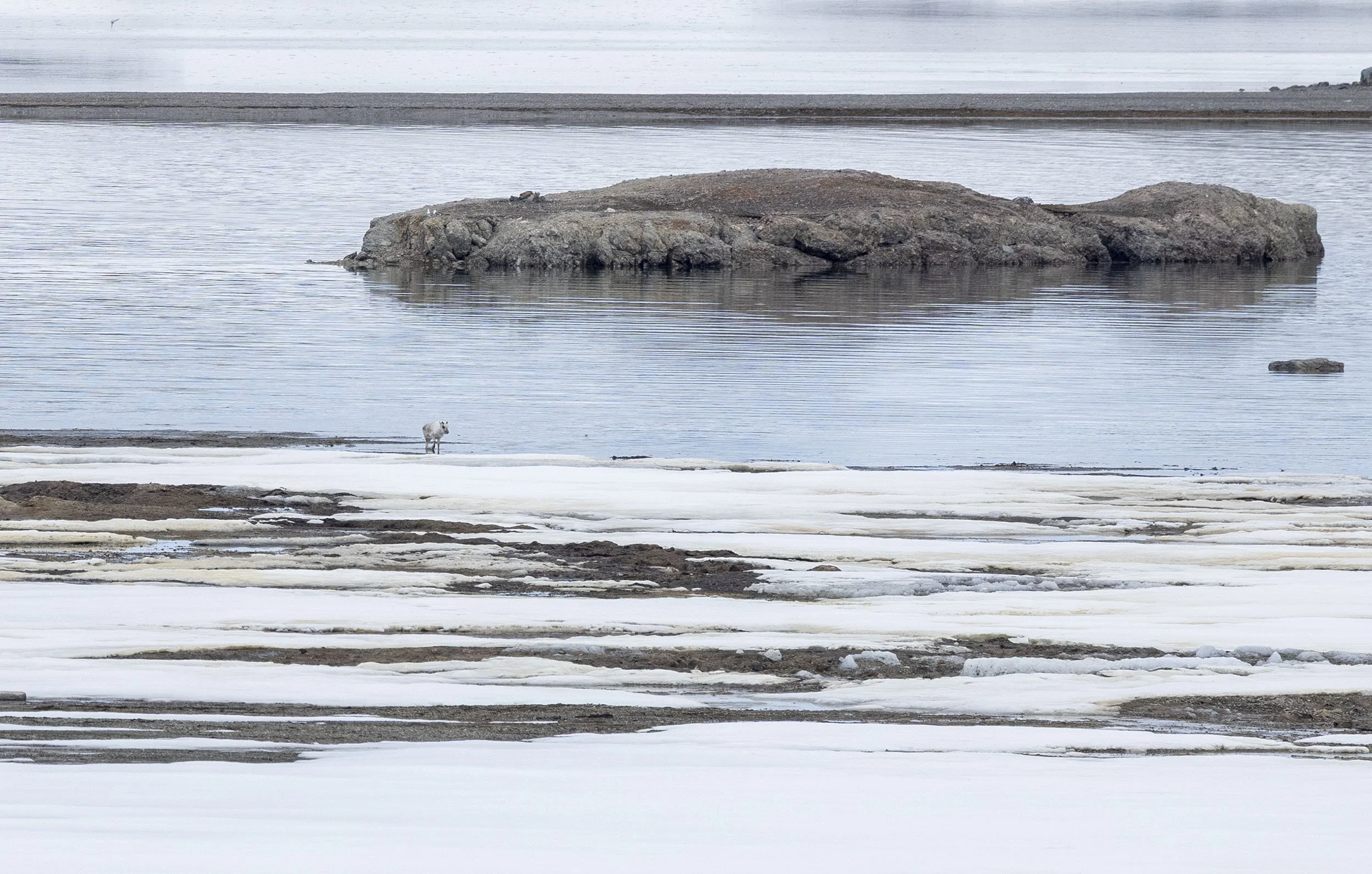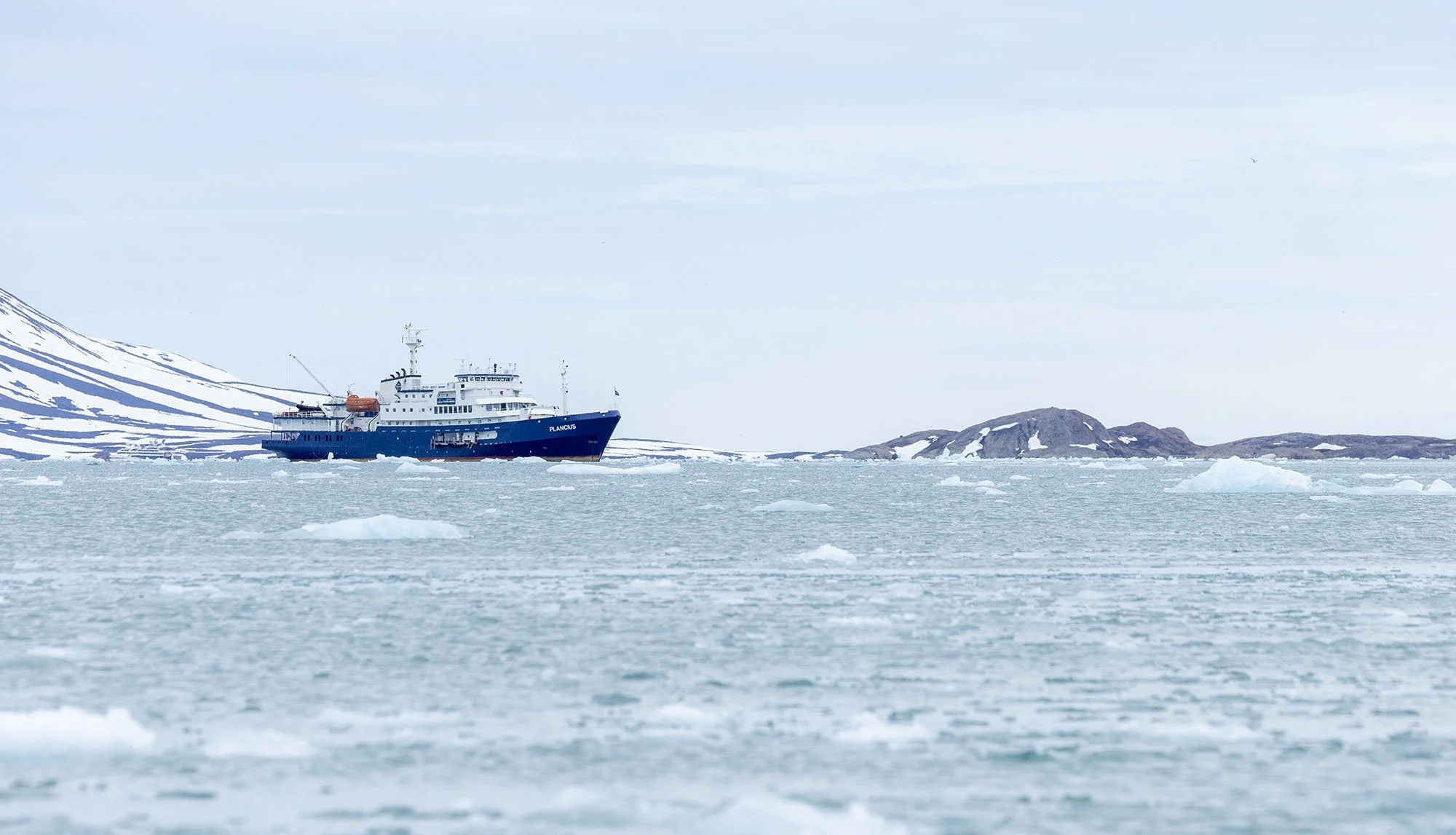Svalbard June 23rd - July 1st 2025
A trip of a lifetime hopefully communicated here with a fraction of the 20,000+ images I took in the eight days but it nearly started with a distaster as the metal connector on my Black Rapid strap actually sheared off on the first morning I was on the deck of the ship and the R6II and 100-500 hit the metal deck with a rather heart wrenching noise. Fortunately when I retrieved them all seemed to function with just the odd dent and even more fortunately I had lost my Black Rapid strap a few weeks previously and bought a new one which I had with me, only to re find the old one at a later date. The story starts here :
Reflected in the most northerly Co-op in the world a feature repeated in the most Northerly Toyota garage and Pub the latter a source of excellent food.
It all started when I was chatting to Roger over a typical Lincolnshire seawatch, not a lot happening and he mentioned a trip to Svalbard that was low in bird diversity but high in Arctic experience and with some very nice birds thrown in plus the chance of the elusive white bear. The price though seemed somewhat beyond our means. Fast forward to January 2025 and thinking about another trip to Cyprus or Canada and the Svalbard idea reappeared. Checking Roger’s source company we came to https://www.aqua-firma.com/ based in Cornwall and highly recommended by Roger. I looked online and casually showed the Svalbard Realm of the Polar Bear cruise to Mrs C who I thoroughly expected to say I am not going on any cruise and it looks cold but to my surprise she said that looks good and even the price tag was met with you only live once. A couple of phone calls later and we are booked on the https://www.aqua-firma.com/experiences/polar-bear-search-north-spitsbergen tour June 24th - July 1st. But then it hit home – boats and me are in general not a pleasant mix but it’s done now and Roger confirms they had no mosquitoes. A bit of research leads me to Stugeron-15 which are duly purchased. AQUA-FIRMA book the necessary flights and hotels and Julia’s brother agrees to a professional taxi service to Heathrow and back.
It occurred to me while swatting that most people actually have no idea where Svalbard (Spitzbergen) is thinking its part of Norway which it is administratively but its nearer Greenland
Coming in to Svalbard on the plane the views were amazing with crystal blue water and lots of snow - the new iPhone 15+ produced some really nice images through the plane window and the whole week it was all I used for landscape shots leaving my 50mm and 24-105 kit lens redundant.
Glacier and landscape from the plane before landing in Longyearbyen
Approaching the airport there was less snow revealing the rugged terrain with stunning geographical features any glaciologist would be proud of
Part of the old mining infrastructure above Longyearbyen
An immediate reminder that you are in the far north outside the airport
The main street of Longyearbyen, well to be fair the only street
At the end of the main street you are out into wet tundra - marsh and the odd sight of skidoos just left all over - the main road, and there is not a lot of it, is mid image with people walking
It is immediately obvious that Barnacle Geese are everywhere feeding and nesting amongst the skidoos right on the edge of town
Barnacle Geese on the marsh on the edge of town taken with the wide angle iPhone
While many of the geese were sitting on nests, built seemingly anywhere, others had broods of small young that were being targeted by Glaucous Gulls
Solway in a few months time
A walk down the only road reveals a lot of breeding Arctic Terns plus Purple Sandpipers displaying everywhere and a few other waders including Dunlin, Tundra Ringed Plovers and one far too distant Grey / Red Phalarope
Not sure if it was thinking of a novel nest site
The light was very variable with low cloud making things a bit flat but when the sun poked through the refection off the snow was amazing
Many Arctic Tern nests were not exactly well hidden
Odd Arctic Skuas were patrolling the edge of the town marsh
In Svalbard terms this Black-headed Gull was probably the rarest bird I saw all week -
Several pairs of Glaucous Gulls and the odd immature were loafing around looking for an easy meal of duckling or gosling
Spot the King Eider - never saw any close in fact only saw a couple of males and female all week
Long-tailed Duck - pairs were only just starting to occupy nesting pools in a late spring thaw
In the afternoon we wandered west to the harbour where there was a small flock of Mandt’s Black Guillemots but the light was a bit dire
We were to see several 100 during the trip and I have a variety of wing patterns
Assume they nest here in the harbour wall
Two birds in dispute
There were some decent creches of Northern Eider ducklings but the concentration by the Husky Dog kennels were getting predated by the Glaucous Gulls
a classic drake Northern Eider borealis
Subtle differences in bill colour between drakes
Getting close to them was not a problem and they often wandered about in the road
The Polar Bear sign is as far as you are allowed to walk without an armed guard but as someone commented what tells the bears they cannot come inside the sign?
A sitting female on her valuable nest
These birds were literally feet from the side of the road
considerable variation in plumage tones amongst the females
a very different world to the nature distanced UK
a nice bright billed drake
In January 2024 a Purple Sandpiper wearing an orange colour ring and a Green tag with the inscription 9LA was wintering on the Lincolnshire coast at Mablethorpe; I noted in this blog post https://www.grahamcatley.com/blog-1/a-rather-special-purple-sandpiper that this was likely the nearest I would come to its ringing place of Longyearbyen Svalbard — well times move on and this year there we were on its breeding grounds watching displaying Purple Sandpipers right on the edge of town all the way up to the highest tundra and most northerly land we visited. I even saw a couple of birds with Orange colour rings and Green Flags from the same scheme including VMC shown here displaying to a female just outside Longyearbyen: it really can be a small world
Male VMC displaying to a female June 23rd 2025
Male Purple Sandpiper in display flight - beautiful song given in flight was a characteristic sound of the marshes and tundra
Human junk was no deterrent to Purple Sandpipers intent on breeding
A rather smart wader in summer plumage
Sharing its habitat with breeding Barnacle Geese
And what a Red Phalarope looks like at a long long range and you cannot get any closer due to the terrain and the bird then flies away! Frustrating
Very much a record shot - still need to go to Alaska
A more obliging Red-throated Diver nesting close to the road but it was impossible to get low angles due to the height of the road and the risk of disturbing the birds
The male Red-throated Diver but in pretty poor light
The only passerine in Svalbard is the Snow Bunting and they occur in most habitats though they are thinly spread - these birds were breeding on the edge of the town with birds singing from the roof tops and performing display flights over the buildings as well as the nearby tundra
A female feeding along the main street just like a House Sparrow in the days of olden Britain
A fine adult male nivalis over the beach
Feeding along the tide wrack just like a winter beach in Lincolnshire
Cracking little bird
It was interesting to see Ringed Plovers in their tundra habitats but none looked like the very small dark backed birds we see occasionally in spring locally so where do those birds breed?
Tundra Ringed Plover amonst the permafrost with an Arctic Tern - two well travelled birds
Day list for June 23rd
Arctic skua 3
King Eider 3
Long tailed Duck 1
Mandts Guillemot 16+
N Fulmar 1
Northern Eider 100+
Glaucous Gull 30+
Snow Bunting 30+
Barnacle Goose 200+
Black headed Gull 1
Purple Sandpiper 50+
Dunlin 8
Ringed Plover 4
Teal 5
Kittiwake 5
Grey Red Phalarope 1
The 24th we had the day up to 16:00 when we were due to board the boat fopr our eight day cruise - so it was more of the same walking up and down the only bit of road and getting some nice food in the hotel and at the Barentz GastroPub - male Snow Bunting in display flight over the Longyearbyen main street
Barnacle Geese with two young and an onlooking Glaucous Gull - image taken with iphone
looking west out of the Fjord Longyearbyen
Mountain Avens just starting to flower on the Longyearbyen tundra
Male Purple Sandpiper VMC was still present and showing his flag a bit better
And A9N - life histories soon
A wider view of the Purple Sandpiper feeding habitat
A newly hatched brood of Barnacles
Different view of the Red-throated Diver
There appeared to be a lot of Barnacles that had either failed early or were yet to start breeding
One more close Purple Sandpiper
Arctic Terns are totally accustomed to humans even nesting next to the road just outside Longyearbyen
Glaucous Gulls the ubiquitous gull species of the trip along with Kittiwake
The view across the fjord from Longyearbyen
The RF 100-500 is a good tool for landscapes as well as the usual tele stuff
In the Arctic the weather can change very quickly so you need layers and waterproofs and to be prepared
A boat looks very small in the vastness of the Arctic
Tuesday, June 24. Longyearbyen, Embarkation
12h00 GPS Position: 78°14.8’N / 014°58.4’E
Wind: W-3 • Sea: Calm • Weather: Overcast • Air: 8°C • Sea: 5°C
at 16:00 we boarded the Plancius our home for the next week and after the usual drills and safety stuff we set sail and started the three meals a day culinary extravaganza! I spent the next few hours on deck photographing distant Little Auks and Brunnich’s Guillemots amd the ever present Blue Fulmars - the auk shots I quickly deleted as things got better later in the trip - overnight we headed west then north to our first stop at Tinayrebukta early on 25th. A calm overnight journey was appreciated.
Trip map
I found the skies, seascapes, landscapes and habitats and the colour of the vistas totally enthralling but hard to capture accurately - these look much better on a computer or ipad screen than on a phone
Blue Fulmar alongside the boat - they were often so close you could virtually touch them
There were many subtle variations in shades
Light made a huge difference to appearances - tried to get some landscape in where possible to put the birds in context
and a bit of a quirky angle
In hindsight I should have tried to get to the Little Auk colony near the airport but thought I would see them on the cliffs from the boat which we did not - so had to make do with flight views and birds swimming near the boat - a first desperate attempt at a passing flock
An early environmental Brunnich’s Guillemot flock from the boat
Note for November on the Lincolnshire coast they are short and fat !!
The scenery started to build as we sailed north
Epic skies and seas are a feature of the far north
Species List June 24th
Longyearbyen
Same but less to previous day
Brunnich’s Guillemot 2 in harbour and out
Puffin 20+
Black Guillemot 5+
Blue Fulmar 30
Little Auk 30+
Kitts
Brunniichs 30+
Wednesday, June 25. Tinayrebukta, Signehamna and Lilliehöökbreen
12h00 GPS Position: 79°12.3’N / 012°02.9’E
Wind: SW-2 • Sea: Smooth • Weather: Overcast • Air: 8°C • Sea: 5°C
A Puffin was sadly not a Tufted
a very small bird from high up on a ship
It was a big Little Auk day with perhaps 500 seen
Something spooked this flock and they split and flew upwards
these were way up not hugging the water like most flocks
I was up on deck at 05:30 with many Little Auks and Brunnich’s Guillemots but in spite of my best efforts at mind over matter the Little Auk flocks remained stubbornly not close enough
This striking presumably 2cy Mandt’s appeared to be intent on landing on the ship - brown flight feathers presumably make it a 2cy bird
The trouble with the Fulmars was they were always there and posing so you felt obliged to aim at them!
A flock of Brunnich’s Guillemots passing by
A few of the Brunnich’s had not aquired full summer head - throat patterns like the left hand bird making them 2cy birds
The browner toned upperparts presumably point to it being a 2cy bird
Love the 100-500 for landscape shots in a big vista
Simplicity in colours
The Plancius under a big cliff
On 25th we had two zodiac landings at Tinayrebukta a bay in Haakon VII Land . It is located at the east side of Möllerfjorden, and is surrounded by the mountains of Fallièresfjella and Generalfjella. The glacier of Tinayrebreen debouches into the bay. The bay is named after French painter Jean Paul Louis Tinayre. Then in the afternoon at Signehamna a natural harbour in Albert I Land located at the western side of Lilliehöökfjorden. We hiked up past some impressive bird cliffs to look at relics from weather station Knospe (1941-1942), then Nussbaum, built by German occupants during World War II.
A Polar Bear lookout was always essential before landing several boat loads of potential breakfast
Beach landings were usually smooth but Muckboots, supplied, were necessary - landscapes were always spectacular
Always pays to be close to the person with the gun
Scenery was awe inspiring
Harbour Seals staking their place on the list
And just to prove they were everywhere a Purple Sandpiper on the rocks but not quite a Rock Sandpiper
Tundra forest Net-leaved Willow the highest trees on Svalbard
Tufted Saxifrage - tundra flowers were just breaking out
White Arctic Mountain Heather - I use the 100-500 as a one lens covers all tasks tool
Some of the treks were testing and we only went in the middle effort group so you do need to be fit to get the best out of the trip - Landing site in the bay below and the Plancius moored in the bay offshore
Our first Svalbard Reindeer
These were on some pretty rugged terrain
Bird cliff with Brunnich’s Guillemots and Kittiwakes
In the late afternoon as we cruised close to the glacier in the boat there were birds on ice that had calved off the glacier front including Arctic Terns -
The size of that large cruise ship puts the glacier in perspective
It was impossible to gauge the scale of the glaciers as you were often miles away and details only became apparent on closer approach
At the glacier edge
We also came across our first Bearded Seals in evocative surroundings
And an unexpected Walrus hauled out on the ice flow
I was trying to put birds in the context of their environment and show how small they are in relation to things such as the glaciers and mountains - a flock of Brunnich’s Guillemots against the snow covered mountainside over a glacier
Two Brunnich’s flying to their colony
A flock of Northern Eiders dwarfed by the lower bit of the glacier front
Northern Eiders again on an ice flow with the front edge of a dirty glacier as backdrop
Mandt’s in the ice
The intricate patterns and colours of the floating ice was staggering and demanded photography
You were constantly left spellbound by the beauty of the place and the quiet only broken by the popping of the air in the ice
Day List for 25th
Little Auk 400+
Mandts 10+
Bearded Seal 3
Brunnichs Guillemot 200+
RT Diver 2
A Skua 1
Reindeer 4
Harbour Seal 4
Walrus 1
Purple Sandpiper 2
Snow Bunting 10+
Kittiwake big colonies
Distant view of the Monacobreen glacier on a glorious morning
26.06.2025 Position: 79°31.4’N / 012°29.6’E Wind: W2 Weather: Overcast Air Temperature: +7
June 26th and we were at Monacobreen a glacier in Haakon VII Land on Spitsbergen, Svalbard. The glacier debouches into Liefdefjorden: We boiarded the zodiacs for a few hours in the morning just slowly moving around the foot of the glacier and marvelling at the huge icebergs, many of them blue, while listening to the popping ice and watching the wealth of feeding birds. A long dark line at the foot of the glacier in the distance transformed into 10’s of 1000 of Kittiwakes with Arctic Terns and a few other birds mixed in. It was a spectacular few hours. It was a beautful sunny day with temperatures up to 8C in the afternoon making it almost hot in the light winds.
Cold start on the zodiac keeping the lens covered in case of wave splash - that was the biggest iceberg in Svalbard for many year apparently
The scale of this blue berg was hard to define but the next shot with a zodiac up close gives an idea
A much smaller chunk of floating ice but big enough - the only sounds you could hear were Kitts, popping and cracking ice and the occasional loud bang from the flexing glacier
a recent calving event
As far as I am aware not one phone or camera went into the Arctic Ocean during the trip!
Approaching the foot of the glacier a dark line where it had been undercut by wave action was transformed with a line of 1000’s of Kittiwakes sitting on the ice and feeding in the melt water - as I say images cannot convey the scale
Kept the ISO fairly high at 1600 as the boat was bobbing a bit and with people moving around and the fact that you are on the side of a zodiac you need a bit of extra speed
A bit better idea of the scale of the glacier the very small white dots at the bottom right are the Kitts
An Arctic Skua sat watching the Kitts - a very small bird in a big vista
Closer to the glacier the Kittiwake flocks were transformed
Floating ice was often adorned with Arctic Terns and Kittiwakes
Arctic Terns were totally unconcerned and often at arms length from the boat
Kittiwake on ice
On a wider scale Kittiwakes were perching all over the glacier edge as well as on the floating ice
The zodiacs spread out around the bay
Kittiwakes in a different world to Bempton
As I was thinking I had got enough Kitts and Arctic Terns we came across this adult Glaucous Gull
It allowed a pretty close approach before moving off
We got closer to the Kittiwakes with slow approach in the rib - the colours were amazing
Looking for new angles
and shades
Birds were completely at ease with highly coloured humans
As we passed a small clump of ice with a Kittiwake on it I suddenly realised that the bird with its back to me had a black head!!!! I quickly but calmly asked Valeria at the helm if we could stop the BOAT!! while blasting a few shots and hoping I had got the exposure right
We were pretty close but the angle wasn’t the best but all credit to Valeria who acted on my requests and managed to manoeuvre the boat into a better position before the Sabine’s flew off to feed with the Kittiwakes - I have seen a few adults in Britain but in this environment it was something else
The lack of full sun meant that contrasts were nicely reduced but bringing out the red eye ring was almost impossible
But just for the record
I kept zooming out to put the bird in its environment conscious of the fact that the other 8 people on the zodiac were not going to want to watch a Sabs Gull all morning!
Valeria was fantastic and did a great job getting us in close without disturbing the bird
After the prolonged show it flew off to join the Kittiwakes feeding in front of the glacier
What a privilege and an amazing encounter one of the highlights of the trip
After the excitement of the Sabine’s it was back to Kitts on ice and crevasses
Kitts over a blue lagoon
A couple of cracking Arctic Skuas flew by
lone Glaucous Gull on top of the glacier
You appreciate how small you are in a big landscape
You do become mesmerised by the colour and patterns of the ice
Back on board, we enjoyed a relaxing lunch as the ship cruised toward our next destination:Texas Bar, a rustic cabin built in 1927 by the legendary trapper Hilmar Nøis. Still used by locals on excursions, the cabin offered a glimpse into life in the Arctic decades ago.
Another tundra hike
Purple Saxifrage on the tundra slopes as we started a brief exploration - A couple of King Eiders and four Arctic Skuas were on the sea and two Minke Whales and a party of 14 Pink-footed Geese added to the short species day list
Hairy Lousewort
And more tundra breaking out from under the snow cover which was extensive and late this spring
Our first Svalbard Ptarmigan - less than pristine
About the best view of a Minke Whale
Another epic evening sky as we set off to our next destination
Day List 26th:
Sabines gull 1
Kittiwakes 6000+
Mandts 20
Glaucous Gull
Arctic skua 4
Ptarmigan 1
Pink footed Geese 14
King Eider Drake and duck
Long tailed Duck 1
Reindeer
Snow Buntings
June 27th:
Alkefjellet, Kinnvika and BBQ Date: 27.06.2025. Position: 79°40.7’N / 018°22.4’E. Wind: SE5. Weather: Overcast. Air Temperature: +5 During the night, we sailed out of Liefdefjorden aboard the Plancius and headed south into Hinlopenstretet—the strait that separates the large island of Spitsbergen from Nordaustlandet (the lands of the northeast). It was the first windy day since we had come aboard, and with temperatures hovering around 0°C, our expedition leader advised us to dress warmly and in multiple layers.
The day started with the usual Little Auks, Brunnich flocks and Flumars from the boat then it was two hours under the bird cliffs thronged with 20,000 pairs of Brunnich’s Guillemots and lots of Kittiwakes with a few Glaucous Gulls and Barnacles Geese
some serious moult on this Blue Fulmar
although it was abit choppy the angles on the Brünnich's Guillemots were much better from the zodiacs
Distant view of the bird cliffs
a slightly paler Blue Fulmar
Back to the job in hand trying to get something different on a black and white auk
Brünnich's Guillemot portrait
The usual din from a seabird colony but amplified and with the addition of snow
Have I seen a Brünnich's Guillemot in Britain? - No why would you unless of course it was in Lincs - a fly by in the autumn would be easily identifiable - I am well genned up and ready
One of several pairs of Glaucous Gulls living with and on the guillemots
Many generations of poo staining
Waiting for the snow to clear from their ledges
The 100-500 lens is ideal for these type of situations, light and easily slung around with the ability to quickly zoom in and out as things occur - I thought about taking the 200-800 but was pleased I didn’t as I would probably have put my back out
The scale was immense
An impressive Kittiwake nest
A Bonxie patrolling the cliffs - or I assume it was a Bonxie didn’t see it that well
Glaucous Gull pair with chicks
Ending the morning with another impressive glacier
That afternoon’s landing was quite different from anything we had experienced so far: Kinnvika, a relatively well-sheltered bay on the northern edge of Murchisonfjord. A Swedish- Finnish expedition built an extensive research station here during the International Geophysical Year (1957–59), including ten buildings—among them, a sauna! There were not many birds with a Sanderling on the newly revealed Tundra being one of only a handful seen but Arctic Terns were already nesting on the beach and a 2cy bird was here on its first journey from pole to pole.
There was still a lot of snow on the ground in a late spring thaw
as soon as the snow cleared the flowers burst into life
arty Arctic Tern while waiting at the landing site
2cy Arctic Tern after its first two pole to pole journeys
a tundra Ringed Plover at home
and a Sanderling blending in
The mountain goats team heading inland
as we landed in the afternoon there were signs of a solar halo but it was a bit vague then
it developed into a full 360 halo and what a place to experience it - images with iphone
converted to black and white
Bird List for the day before the Friday night Barbeque and we set sail for the pack ice
Bonxie 1
Brunnichs 20000
Little Auk 20
Puffin 2
Blue Fulmars
Mandts 10+
Glaucous Gull 30+ one pair with two 10 day old chicks
Sanderling 1
Purple Sandpiper 1
Ringed plover 1
Pink feet 12
Arctic tern 20
Red throated Diver 2
Thanks to the Oceanwide crew for this summary of our day in the Polar region:
Saturday, June 28. Pack Ice day, Looking for Polar Bears 12h00 GPS Position: 81°40.7’N / 020°03.4’E Wind: E-3 • Sea: Calm • Weather: Sunny • Air : 5°C • Sea : 0°C After a wholesome Arctic dinner yesterday evening, we departed the Kinnvika area late in the evening. Our course was set North-North-East, aiming to reach the pack ice in the early hours of this morning. With excellent sailing conditions, we arrived at the ice as planned! Since we had enjoyed our traditional BBQ the evening before—and some of our guests danced well into the night—we allowed ourselves a small luxury: a half-hour sleep-in. Our wake-up call came at 07:30. After breakfast, we began to encounter the first floes of pack ice. Long before this moment, the keen eyes of our watchmen, officers, and staff were already scanning the horizon through binoculars, carefully examining every ice floe. Our mission was clear: to search for polar bears, the solitary kings of the North. Our captain continued heading North-North-East, targeting a small peninsula of ice where according to the latest ice charts—the ice was thick enough to be promising ground for spotting bears. As we advanced northward, the weather began to shift. The early morning brought perfect conditions: limitless visibility, blue skies, and brilliant sunshine. But the farther north we sailed, the more the fog crept in, gradually reducing visibility. Our captain and officers navigated skilfully through alternating banks of fog, offering moments of clarity interspersed with near whiteout conditions. Interestingly, as we headed north, the sun remained mostly behindus. This alignment allowed us to witness a rare optical phenomenon: a fogbow. Unlike a rainbow, which is rich in colour, the fogbow appeared as a faint, ethereal arc caused by the diffraction of sunlight by tiny fog droplets. At times, we could discern a subtle hint of red along its outer edge—a delicate reminder of nature’s artistry.
Around noon, we reached the northernmost point of our voyage: 81˚ 40.914' N, 20˚ 12.796' E. At that moment, we were just 500 nautical miles—or approximately 925 kilometres—from the North Pole.
As usual I was on deck early watching the Blue Fulmars and auks keen to see the first bits of pack ice - a life event
A beautiful pre-breakfast view of a Brünnich's Guillemot
with a bit of rolling shutter - you can just imagine a togger taking a shot of one of these at Bempton some day and posting it as a Guillemot or Razorbill
The light was so good that I just could’t resist another close fly-by shot
my best Brünnich's Guillemot flight shot
I even took my most northerly Puffin shot
With Svalbard disappearing into the distance the pack ice was next
A Blue Fulmar over the blue water and the first signs of pack ice
And then some real pack ice that started us crashing through
there were even arctic penguins stood on the ice flows
Brünnich's Guillemot with a true Arctic backdrop
A 2cy Brünnich's Guillemot over the pack ice - there seemed to be a higher proportion of 2cy birds further north as would be expected further from the breeding colonies
as well as the head pattern a duller tomium stripe
Pack Ice that looked good for a bear but revealed little
Could there be a bear behind that big collection of ice?
a blue and white scene but the fog bank is looming in the distance
You had to do something while scanning for bears
Bad angle but a typical 2cy Brünnich's Guillemot
There were Little Auks feeding this far north but the angle from the boat was even worse on a small bird
An atmospheric flock in front of a small berg
a bit surprising to see Mandt's Black Guillemot this far from land
Three were flying round the boat at one stage
A floating ice sculpture
Little Auks and Brünnich's Guillemot in a lead in the pack ice - I had read books by polar explorers and of course watched so many wildlife documentaries on the Arctic but never imagined I would one day get to see it
Quote from the Oceanwide log with my input
By midday, anticipation among our guests was high. Many hoped to spot a polar bear, but despite the diligent watch and persistent searching, no bears had yet appeared. We went to lunch with the hope that the fog would lift—and our luck would change. Time, however, was not on our side. We knew that our chances would diminish once we left the pack ice and it is fair to say that an air of despondency was creeping over those of us who had been staring through bins for what was now 8 hours in my case with not a lot to show. But finally, just after 15:00, the wait paid off. Philipp, our Expedition Leader, made a brief radio call announcing a sighting ahead of the ship. Moments later, Clara confirmed it: a polar bear was visible in the distance. As we slowly approached, we saw that the bear had a kill. Around it, several scavengers—Glaucous Gulls and Ivory Gulls among them—waited patiently for their share. We observed the bear for a generous amount of time, during which many of our guests were visibly moved, some even with tears of joy. For many, it was their first time seeing a polar bear in the wild. We believe it was a young male.
Fog bow
First view of a wild Polar Bear - no wonder people were struggling to see it
as we gently edged a little closer it eventually raised its head at which point I noticed that there were not only two Glaucous Giulls stood nearby but two Ivory Gulls emerged from behind a lump of ice - this was wildlife watching at a new level - during a chat Steffi had already told me that on the previous trip they had seen only one Ivory Gull and that just flew by so this was already a success
Ivory Gull behind a sleeping giant very full of seal meat - I had already put the 1.4x converter on my 100-500 lens as we could obviously only go so close to the bear so as not to cause disturbance but at this stage he just seemed in need of a Gaviscon
The light was stunning with bright sun and little wind but the heat and ice/snow combined to produce some shimmer - but a lifetime high point
sniffing the air for human scent! interesting fact we were told is that Polar Bears can detect their prey by scent from up to 32kms - just take a moment to digest that fact
Impressive foot size
magical
After a while and a considerable amount of sniffing it started to dig a hole as if it was going to bury the rest of its kill
Two of the Ivory Gulls feeding on seal scraps
Four Ivory Gulls in this one
The Ivory Gulls, peaked at five, always kept a respectful distance but I was surprised at how vocal they were with flying birds calling regularly as they came and went - sadly I didn’t make any sound recordings being consumed by the watching and photography
The bear meanwhile decided against burying the seal there and instead dragged it off over the ice even taking a dip in a lead with it at one point before appearing on the ice where it had a good roll and shake at which point we left it
Two such iconic Arctic species
Serious photobombing
Maybe to a Polar Bear Ivory Gulls are a bit like mosquitoes to us
Competition was intense between the foraging Ivory Gulls
Just like taking your left over Pizza for a walk home
having a swim with the seal carcass
Looks like it was a Bearded Seal
shake and dry
This 3cy Long-tailed Skua came in to investigate the kill but didn’t linger and never came close
the only one of the trip
heavy crop and affected by heat shimmer
The Ivory Gulls were never remotely close of course unlike on Aldeburgh beach but it was the setting that made the observations so special
I took a lot of distant Ivory Gulls and will spend hours looking through them over the winter
Even one on a rotting Donna Nook seal carcass will never compare to this
After this incredible encounter, we changed course and began sailing South-South-West. Many guests gathered in the lounge for a hot drink and to reflect on the experience. Then, around 17:00, Koen made another announcement over the radio: "We have another polar bear." And indeed, he was right. Directly ahead of us, another male bear lay on the ice beside a fresh kill. With perfect lighting and a favourable position, our officers and captain expertly maneuverer the ship for a close—but non-intrusive— approach, offering an unforgettable photo opportunity. This was our second bear of the day.
A Glaucous Gull on an ice perch en route to our second Polar Bear encounter
Some Little Auk reflections
The second bear was clearly very full of seal and spent most of the time either sleeping or yawning
a big yawn
The day list was not a long one but quality over quantity
Little Auk 30+
Brünnich's Guillemot 50+
Mandt's Black Guillemot 40+
Common Eider female
Long-tailed Skua 1 3cy
Ivory Gull 6
Glaucous Gull 10+
POLAR BEAR 2 males
Kittiwake 30+
A pleasing start to June 29th after a rather bumpy few hours overnight on our passage back from the pack ice
Sunday, June 29. Alicehamna and Buchananhalvoya 12h00 GPS Position: 79°44.4’N / 012°10.2’E
Wind: NE-2 • Sea: Rippled • Weather: Sunny • Air : 12°C • T Sea : 5°C
From the deck it was very much more of the same with plenty of flocks of Little Auks and time to add to the data bank of Brünnich's Guillemot ID pointers
On land it was time for some snow shoeing and the “this is us” photo (note put hat on properly before photo)
Julia chilling in the snow on what was a very warm day
checking out our new holiday rental
some nice lenticular clouds
and another impressive halo
Lichen
Reindeer in a big snow field
Flock of Pink-footed Geese still heading north
Snow Bunting
Lenticular build up
Snow shoes were essential
A pair of Arctic Skuas had staked out a breeding territory amongst the snow and took exception to our passage
The light reflected up off the snow was stunning and something you never seem to get in Britain
As we sailed out of the fjord a huge feeding flock of Brünnich's Guillemots with two Minke Whales and lots of other seabirds was being harassed by a Bonxie
Minke Whale and Brünnich's Guillemots
Day List
Little Auk 200+
Brunnichs 1500+
Blue Fulmars
Long tailed Duck 4
Reindeer
Purple Sandpiper 6
Arctic Skua 3 + 6
Bonxie 1
Pink-footed Geese
Minke whale
Snow Bunting
Harbour seal
Mandts 40+
Monday, June 30. Poolepynten and Alkhornet 12h00 GPS Position: 78°19.1’N / 012°24.4’E
Wind: SSE-4 • Sea: Smooth • Weather: Part. Cloudy • Air: 10°C • Sea: 7°C
This morning we woke up once again with clear skies and the sun shining brightly. Yesterday was a wonderful day and today looked just as promising. Today, however we were going to see the big blubbery Walruses! But first things first, breakfast!
Yet another landscape of note
Distant Walrus hauled out on their beach from the boat - note the heat shimmer
Just like Scarborough but a few more of them
Quite enough blubber for one day
Timber from Siberian forests
One of the only two “if onlys” of the trip
As we wandered to the Walrus haul out I saw three Red Phalaropes on. apool but straight into the sun and we couldn’t walk round the other side due to regulations! It was to say the least frustrating seeing them there and not being able to photograph them but thats life
Another day another target
A fly by Turnstone that appears to have a ring on its left leg
Obs Identify says this is Oysterplant
A final Blue Fulmar tubenose shot over the stern
Some up close Svalbard Reindeer
A decent shot with the backdrop
Pale-bellied Brent Goose on the sea as we left
A final cryptic Snow Bunting
Mountain Sorrel
Some beautiful tundra colours highlighted by Tufted Saxifrage
a stunning Arctic Skua a fitting end to an amazing trip
A few more images in a couple of galleries on second or was it fifth edit
















































